You are using an out of date browser. It may not display this or other websites correctly.
You should upgrade or use an alternative browser.
You should upgrade or use an alternative browser.
Reviews by Moonstar
Filters
Show only:
Loading…
Moonstar
100+ Head-Fier
Pros: Impressive Sound Performance (both Wired & Wireless),
Great Tonal Balance,
Very Clean Background (@ Low / Mid & High),
Powerful Output (up to 1100mW @ 32Ω),
Multiple output/input options,
Support for multiple Bluetooth codec’s (including LDAC),
Above average Battery Life (up to 10 hours),
Sleek and Compact design,
Solid Build Quality
Great Tonal Balance,
Very Clean Background (@ Low / Mid & High),
Powerful Output (up to 1100mW @ 32Ω),
Multiple output/input options,
Support for multiple Bluetooth codec’s (including LDAC),
Above average Battery Life (up to 10 hours),
Sleek and Compact design,
Solid Build Quality
Cons: Slightly Hiss @ Super High Gain Mode,
Leather Case is Optional (but, yes it comes with a Silicone Case)
Leather Case is Optional (but, yes it comes with a Silicone Case)
QULOOS MUB1 Portable
USB & Bluetooth DAC/Amplifer Review
Introduction:
Quloos (former QLS HiFi) is a Chinese brand located in ShenZhen, GuangDong, China, which is specialized in design and production of High End Desktop & Portable Audio Players, DAC’s and Amplifiers.
The MUB1 is the companies latest an All-in One portable audio solution in a pocket friendly package. It is a versatile and powerful device that can serve as a portable USB DAC/Amplifier, a High-Definition Bluetooth Player that supports the APTX-HD, APTX, AAC SBC and the Hi-Res LDAC codec. It can be used as a Car or Home audio source and even as a mobile phone charger thanks to its built-in 2500mAh battery.
The MUB1 is equipped with four high-performance 32-Bit DAC chips featuring four units of CS43131 decoding chips and four BUF634 amp chips to achieve balanced headphone amp architecture, with an output power of up to 1110mW @32Ohms. The device features a small OLED screen, has hardware buttons for volume, power and navigation controls, comes with both 3.5mm SE and 4.4mm Balanced and a separate 3.5 optical/SPDIF outputs, which have been integrated in to a CNC Machined Aluminum Alloy Shell with a special anodized surface, and glass panels on the front and rear side.
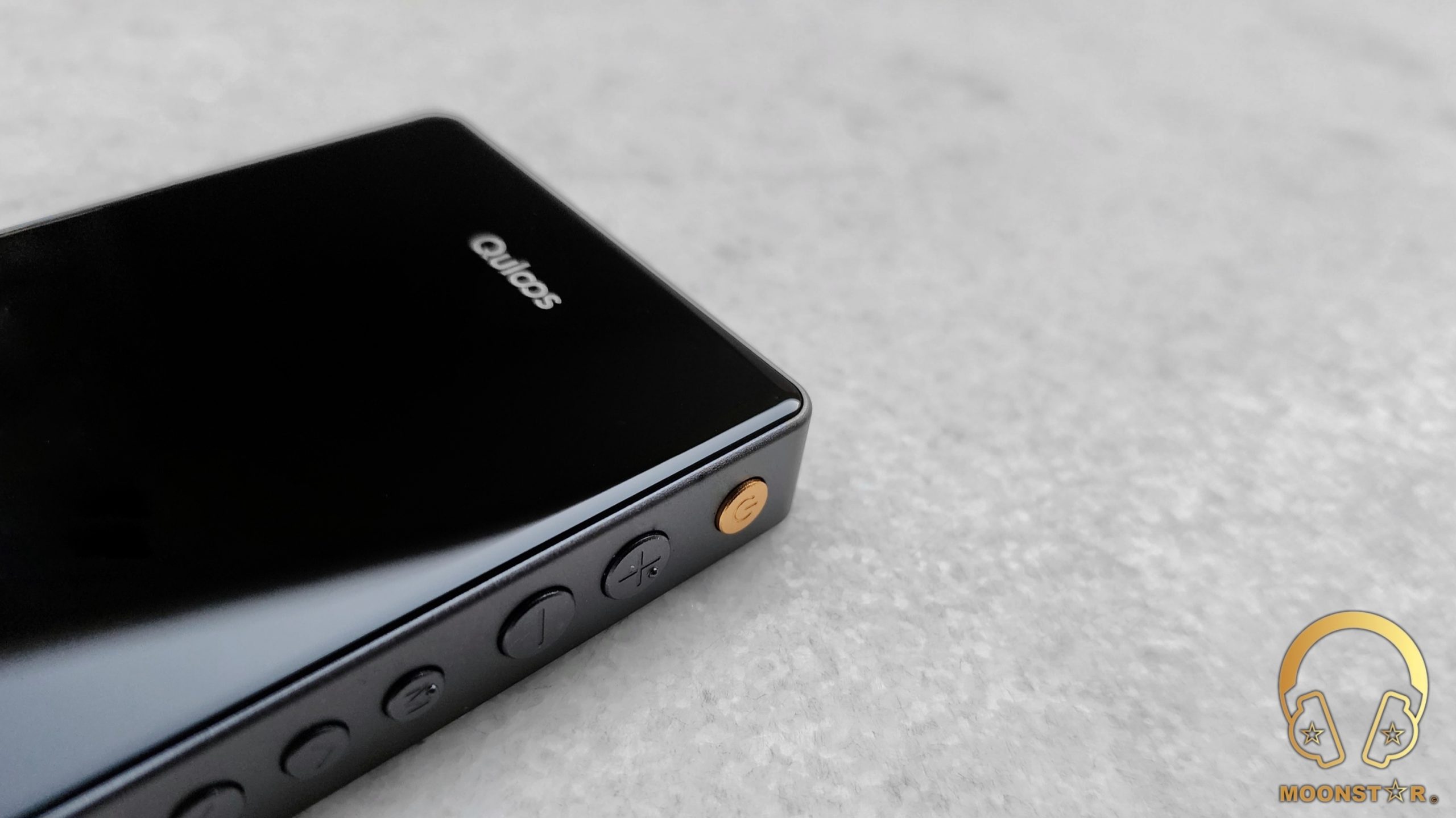
Disclaimer:
I would like to thank Quloos for providing me MUB1 Portable DAC/Amplifier for sample purposes. I am not affiliated with Quloos beyond this review and all these words reflect my true and unaltered opinions about the product.
Price & Availability:
The actual MSRP price of the Quloos QLS MC01 is 499.99 US$. More information can be found under the link below;
Package & Accessories:
The Quloos MUB1 came inside a rectangular black box with some brandings and a product illustration on the top.
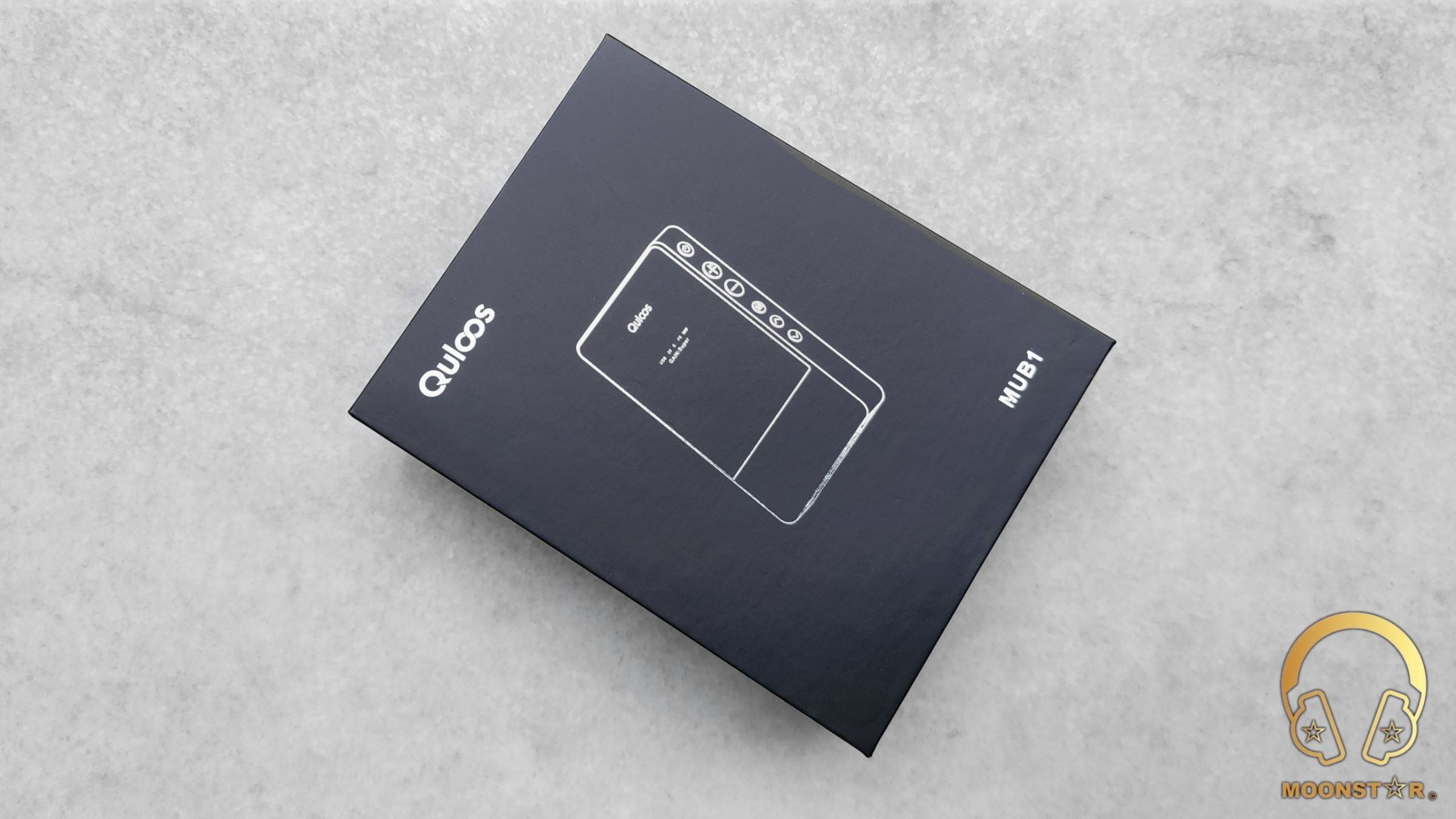
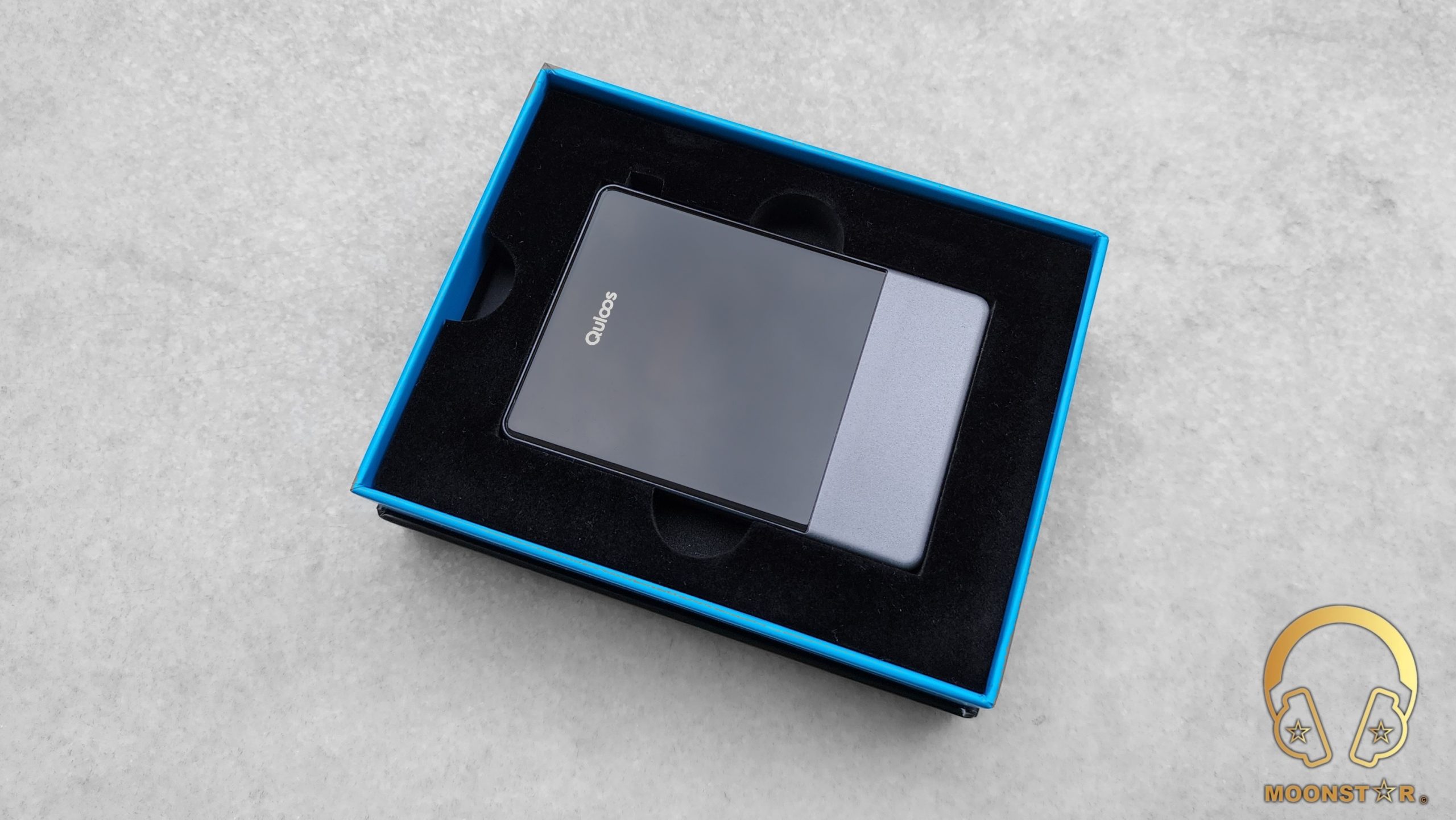
Inside the box of the MUB1 are the following contents:
- 1 x Quloos MUB1 USB DAC/Amplifier
- 1 x USB Type-C to Type-C Cable
- 1 x USB Type-C to Lightning Cable
- 1 x USB Type-C to USB A Adaptor
- 2 x PVC Screen Protector
- 1 x Silicone Case
- 1 X Print Material
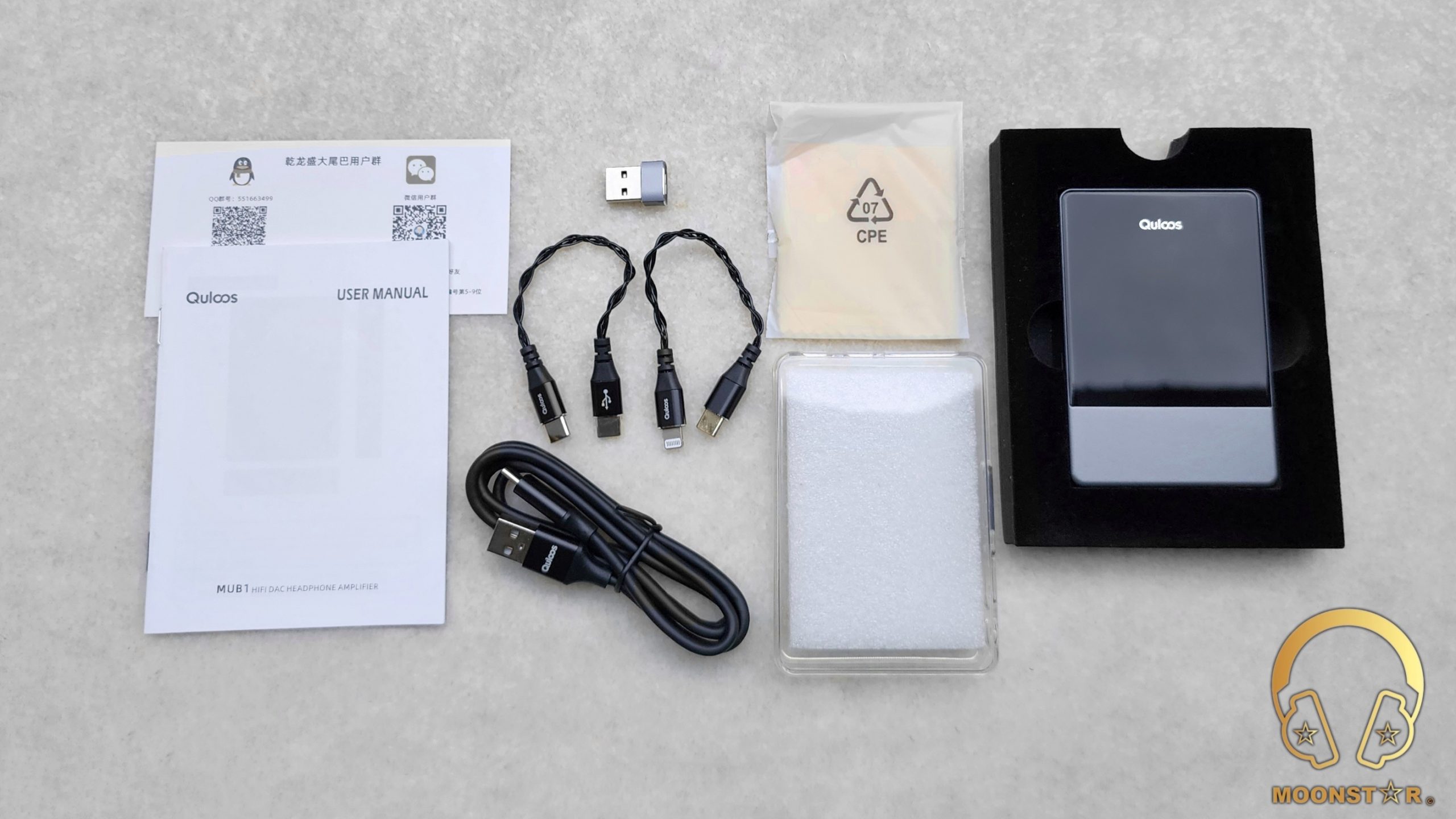
The Quloos MUB1 comes with both a USB Type-C to Type-C and USB Type-C to Lightning low profile cable that do have a nice braided design.
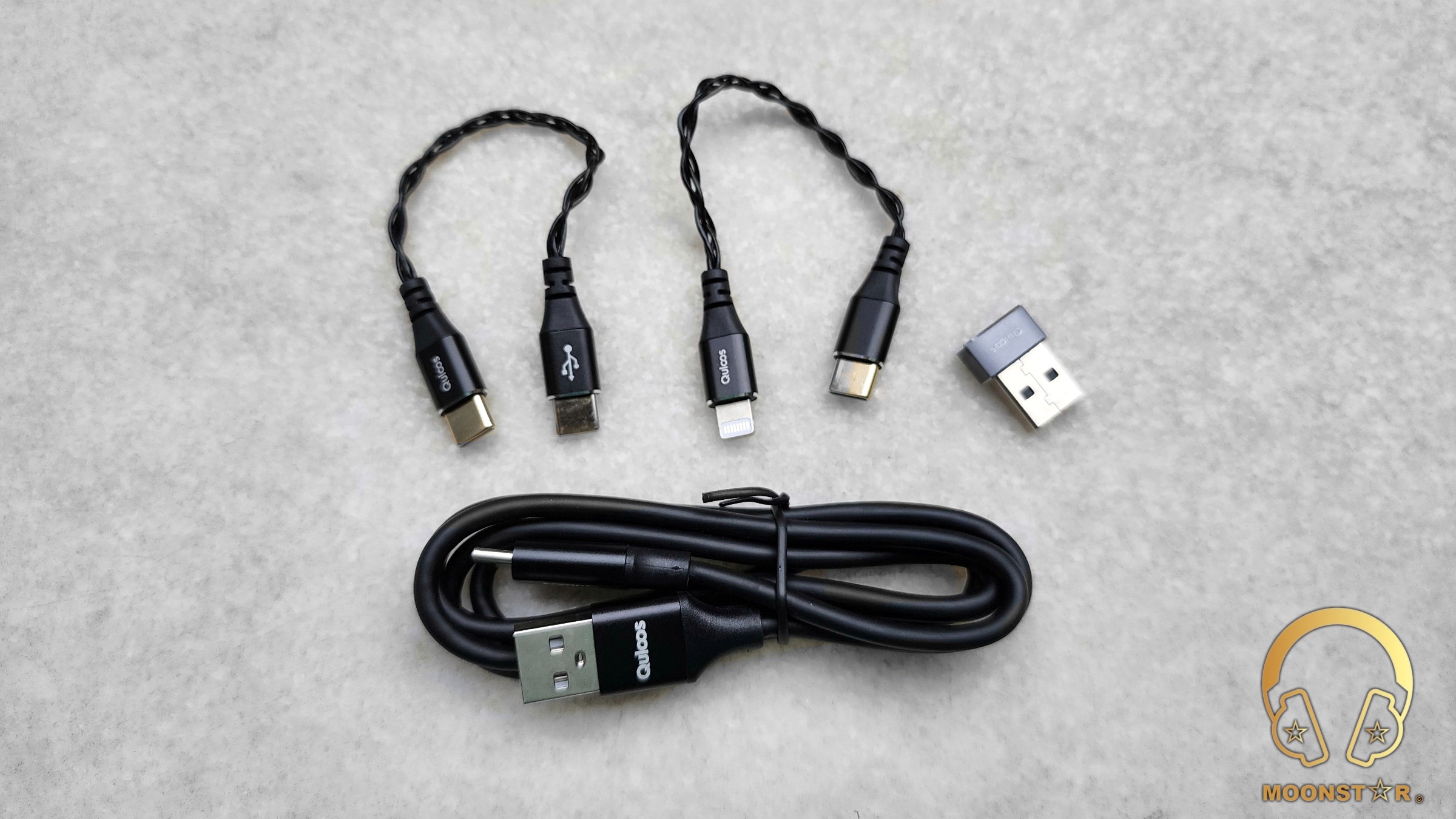
There is also a transparent silicone case that fits perfectly to the MUB1.
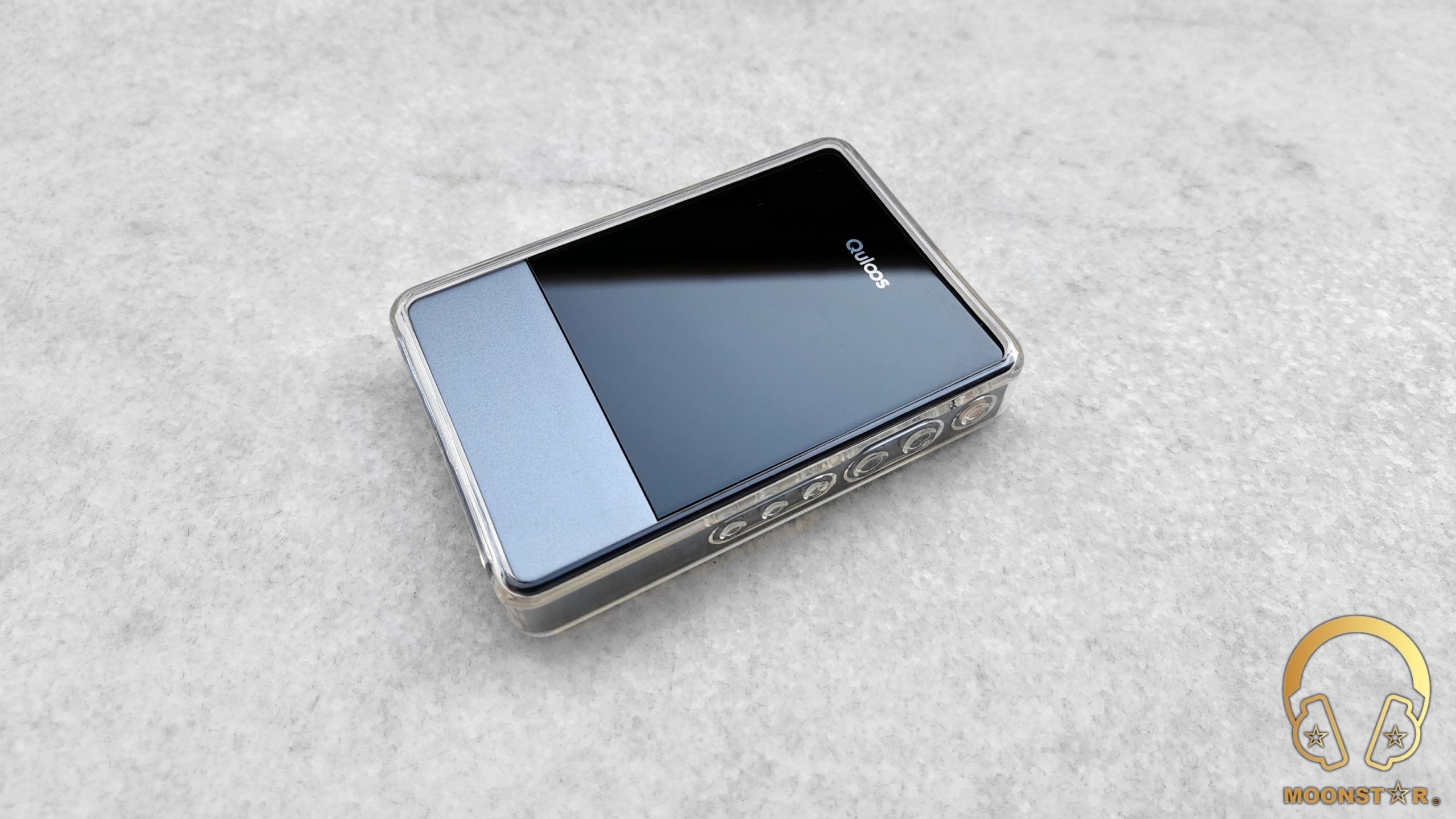
The leather case in the picture below is an optional item that can be purchased separately (Price: 30.00US$).
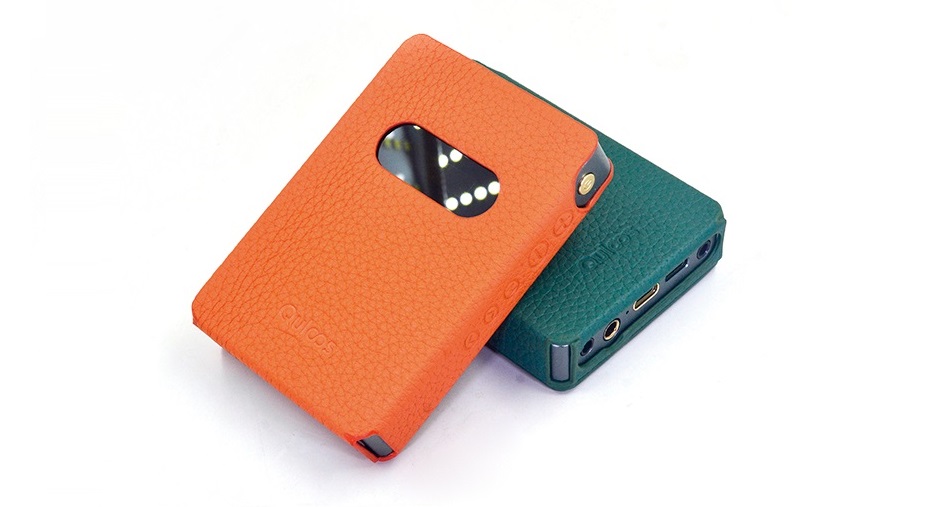
Design & Build Quality:
The Quloos MUB1 is an portable USB DAC/Amplifier with premium look & feel, and pretty pocket friendly from factor with respect of its high output power of up to 1100mW @ 32ohm (4.4mm Balanced output). The device has a 5-Axiss CNC machined aluminum alloy frame with glass panels on the front the rear side.
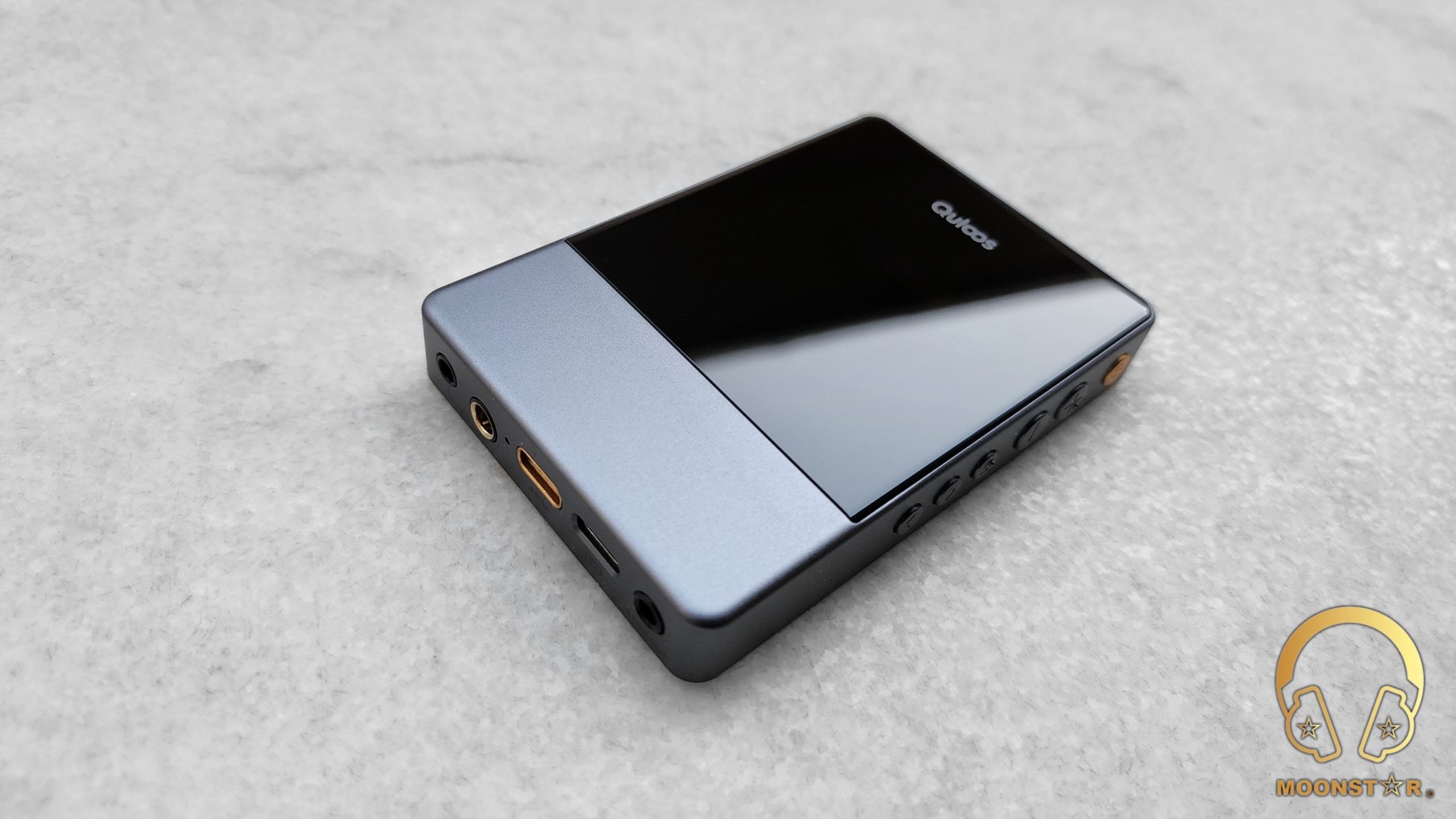
The dimension of the MUB1 is about 96*65*14.5mm (L* W * H) and it weights approx 142g (exclusive low profile cable).
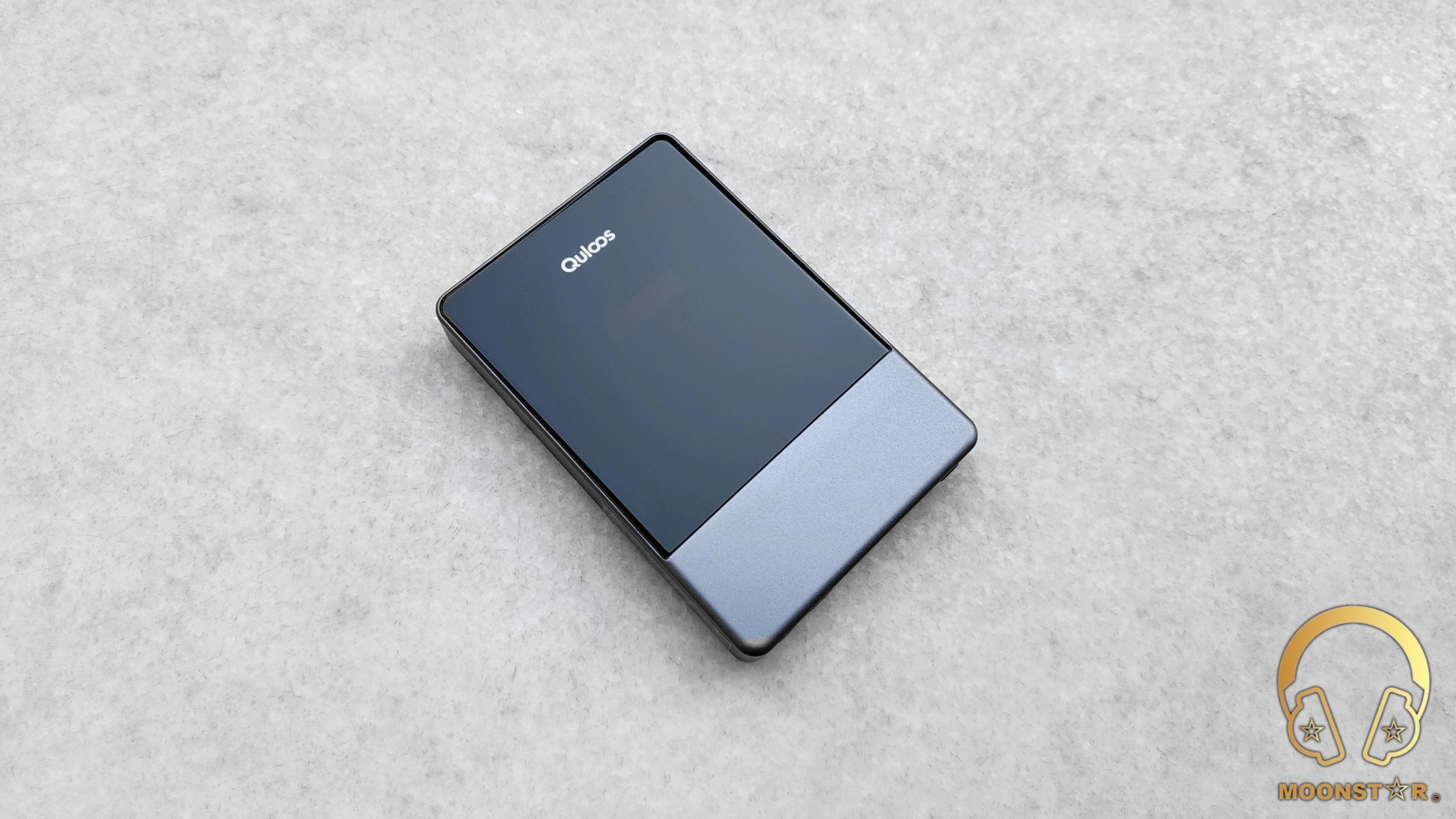
On the front of the device is a glass panel in black color where you can find a small OLED Display with adjustable screen brightens. It gives you quick information about the actual connection mode (USB/Bluetooth), volume, filter, battery and sampling rate of the device. The display gives you also direct access to multiple settings like output and input mode, filters, screen brightness, gain, etc. that you can navigate with the menu and navigation buttons located at the left side of the device surface.
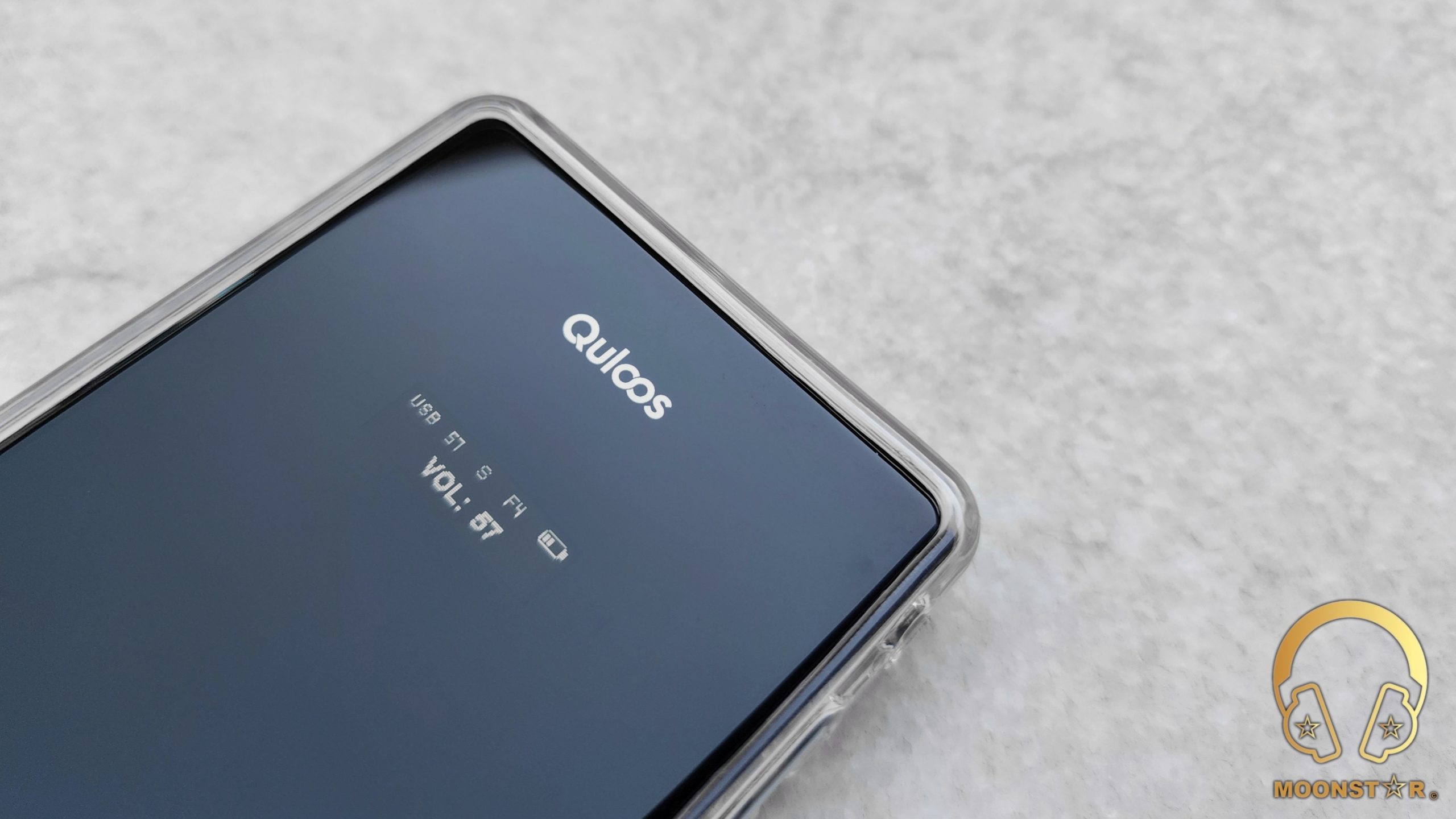
The right surface of the MUB1 is equipped with multiple hardware buttons which are the power button with a nice golden finish, the volume up / volume down, settings (M) and up & down navigation buttons.
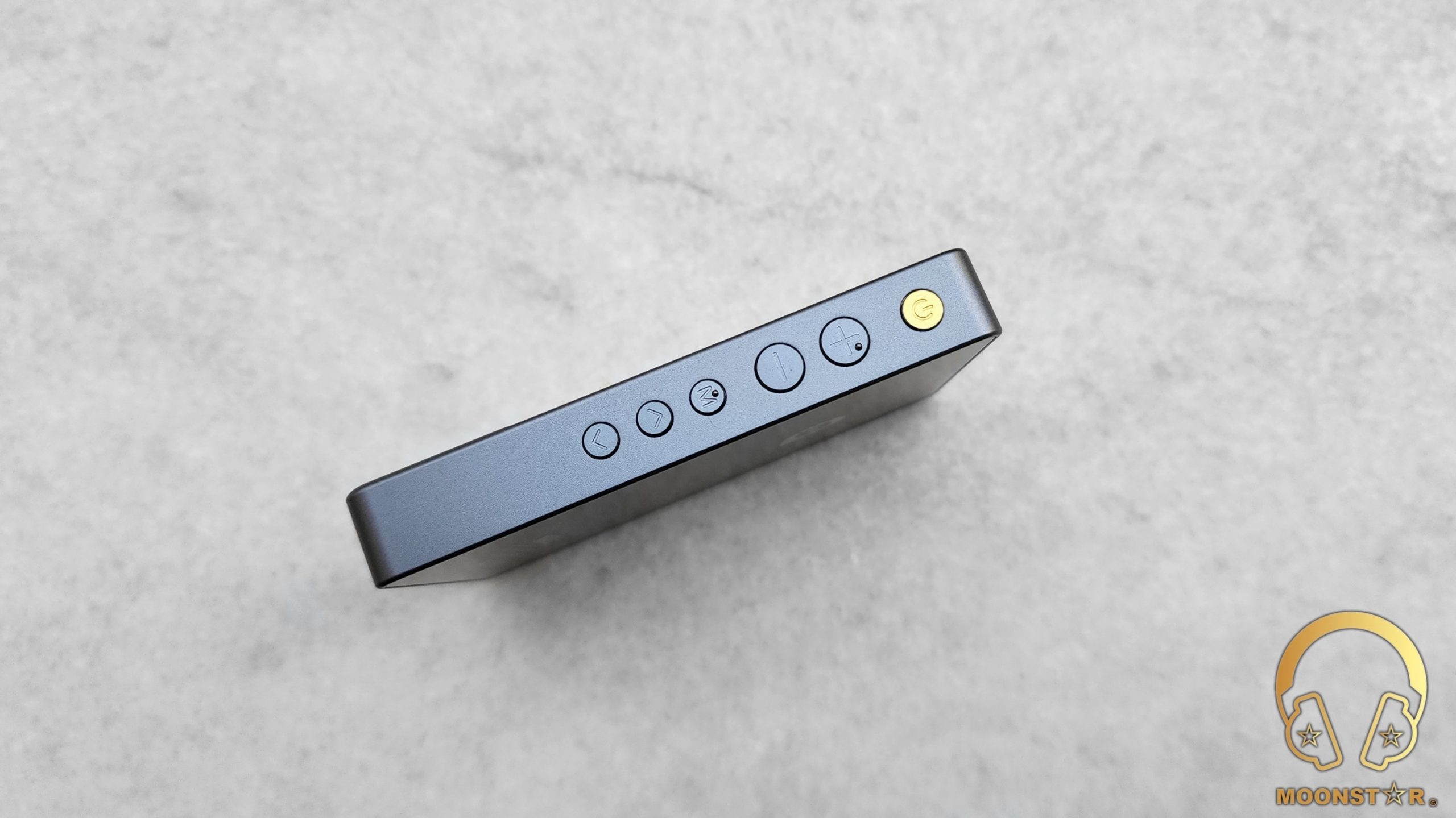
The up and down navigation buttons also serve as next and previous track interface.
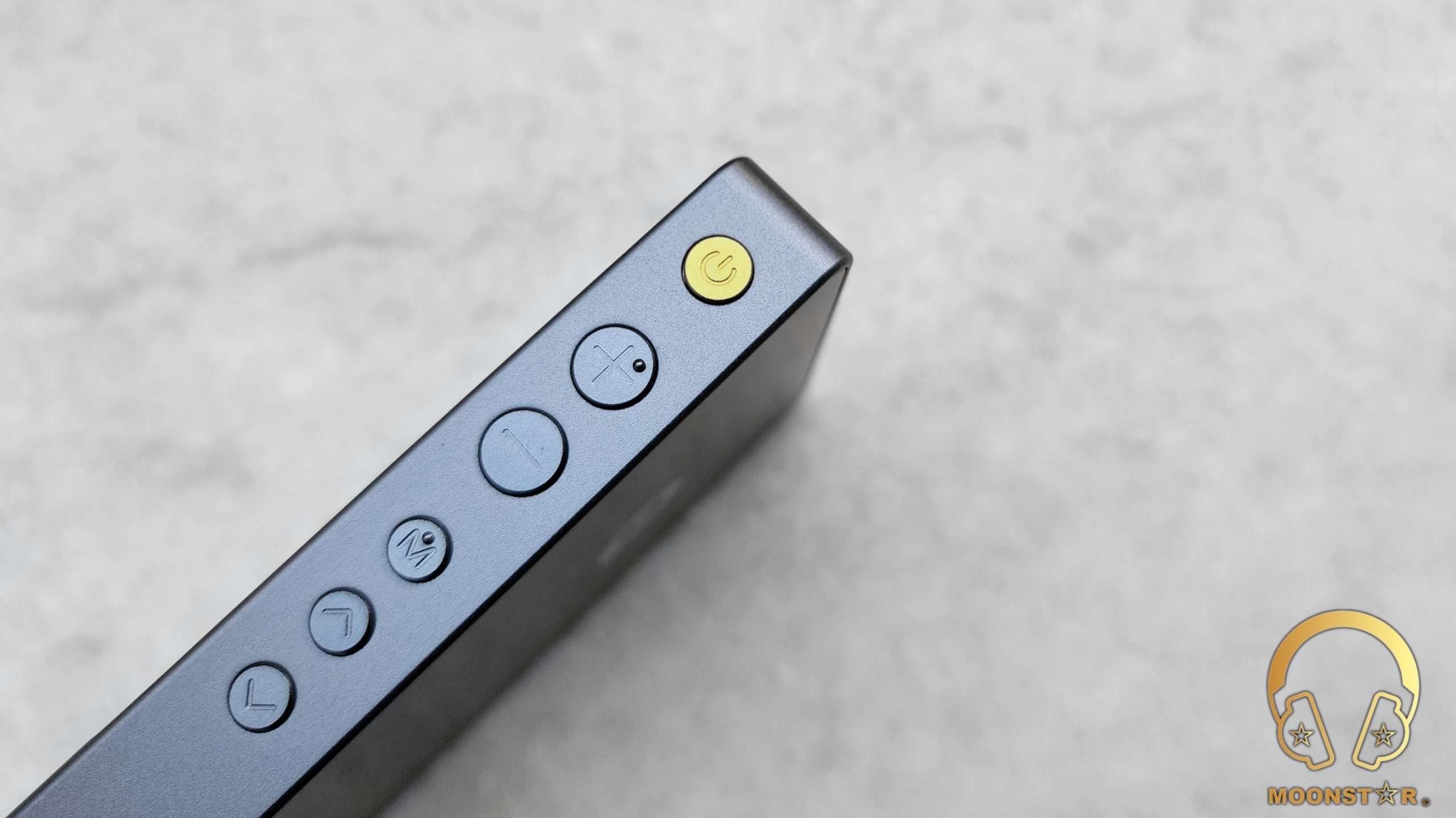
The bottom surface of the MUB1 features a very rich digital and analog connection interface.
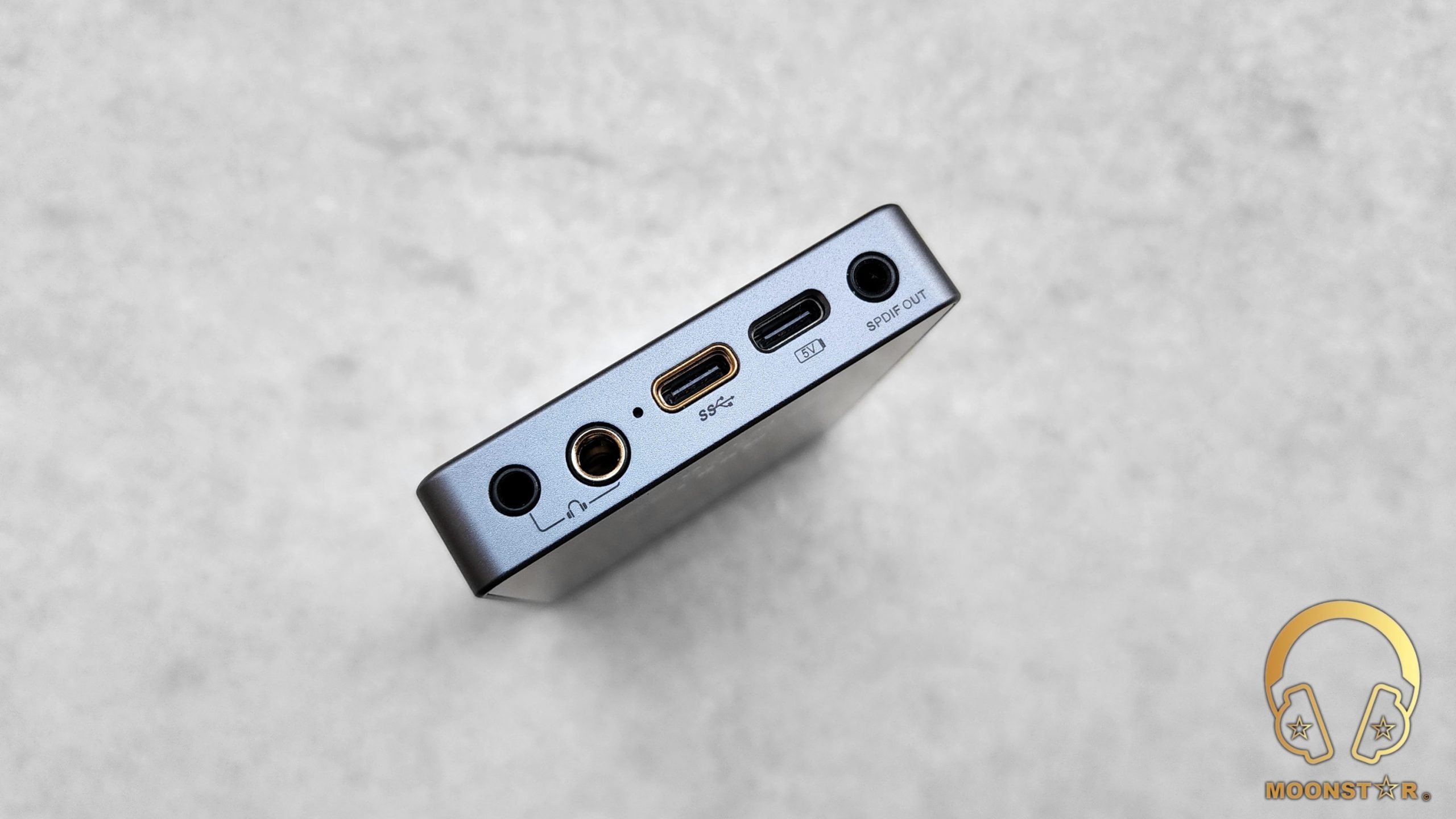
Here is a 3.5mm single ended headphone port that doubles as LO/AUX output port, a 4.4mm balanced headphone port that also works as a balanced LO port, a microphone pickup hole, the USB Type-C Audio & OTG input port, a USB Type-C charging port and a digital audio output port in form of a 3.5mm optical/3.5mm coaxial output interface.
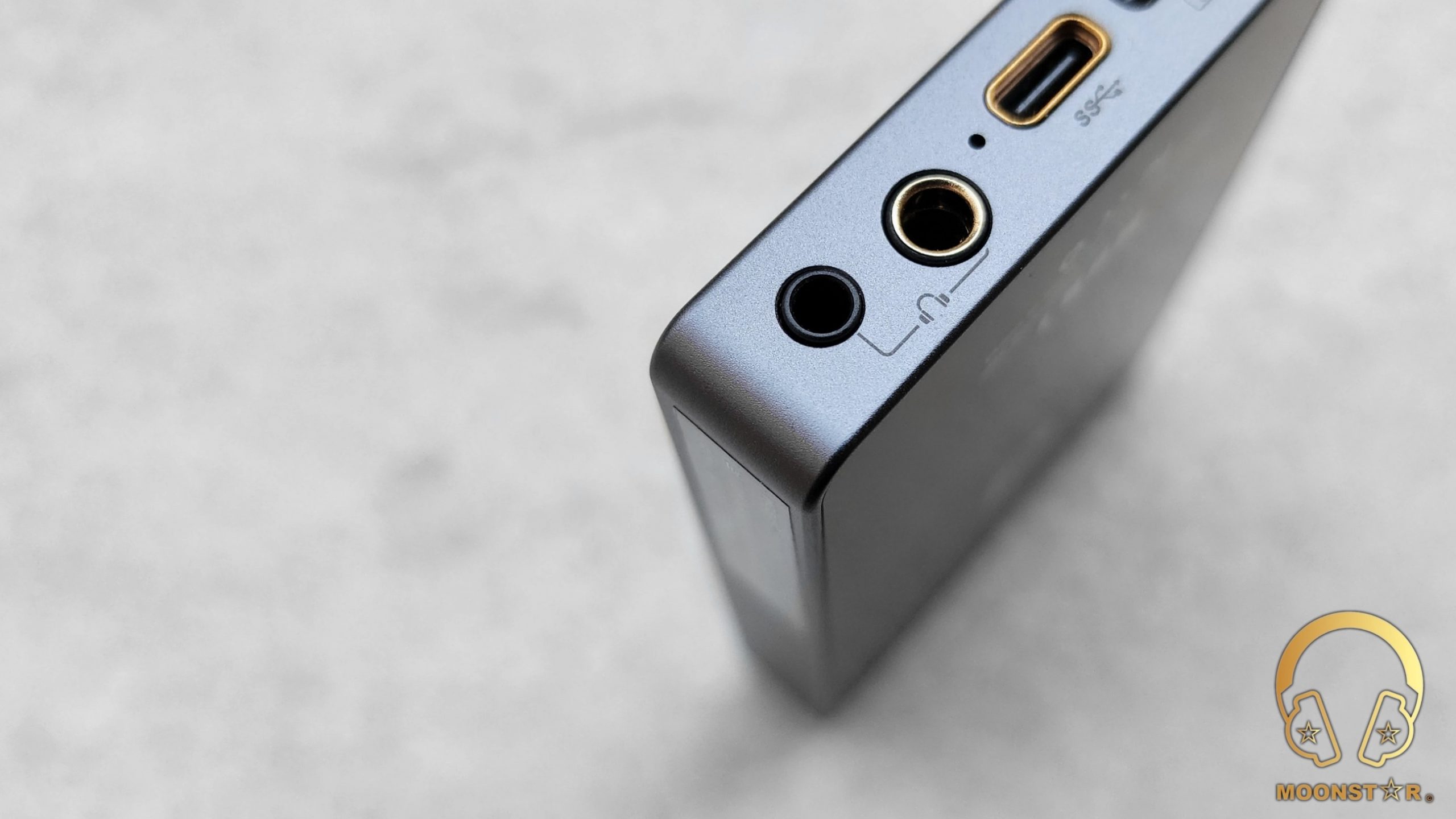
At the rear side of the device is the Quloos brand logo, some product related brandings (model, origin, etc.) and some industrial certifications.
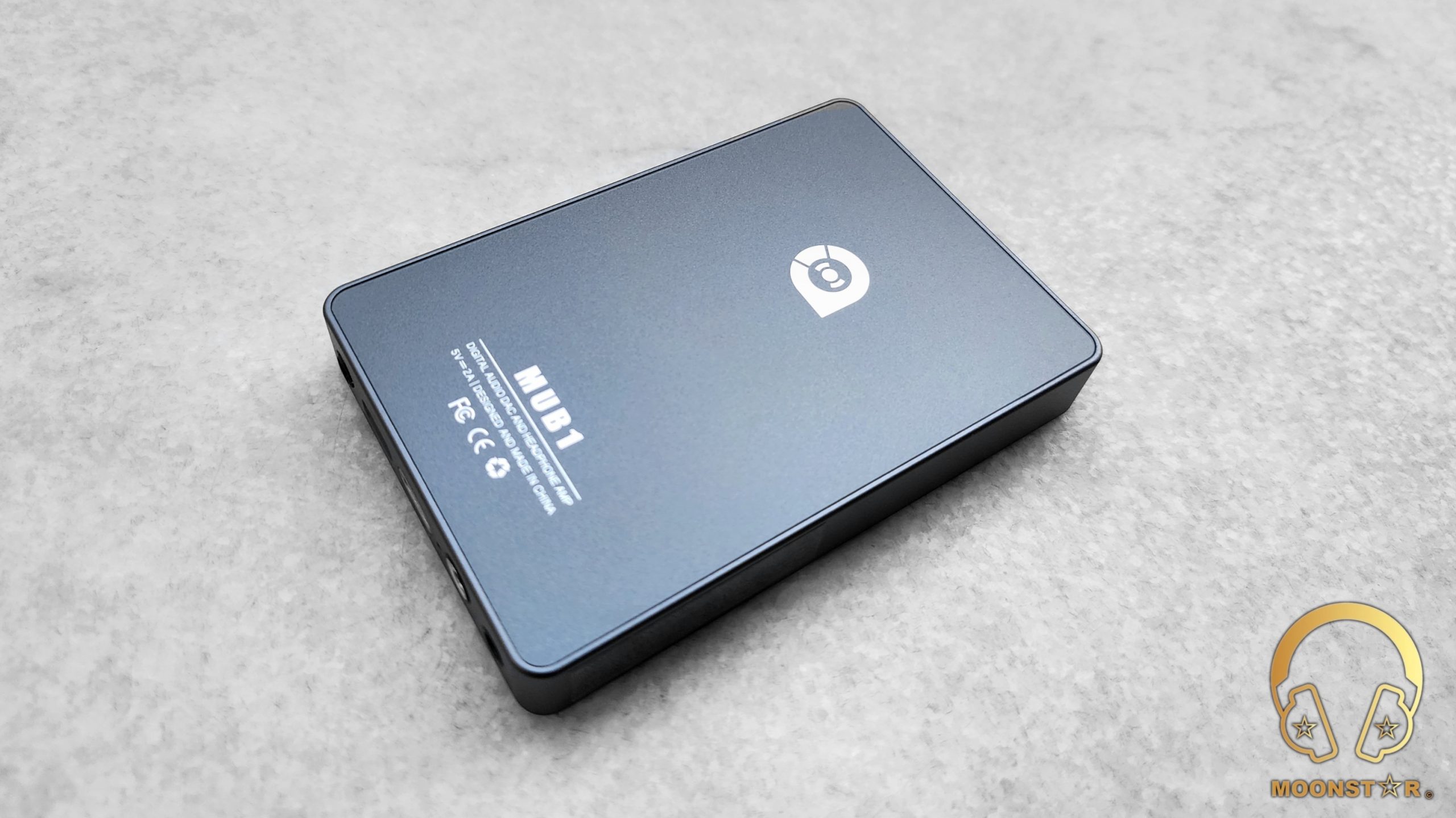
Right below you can find some key interface descriptions for the MUB1.
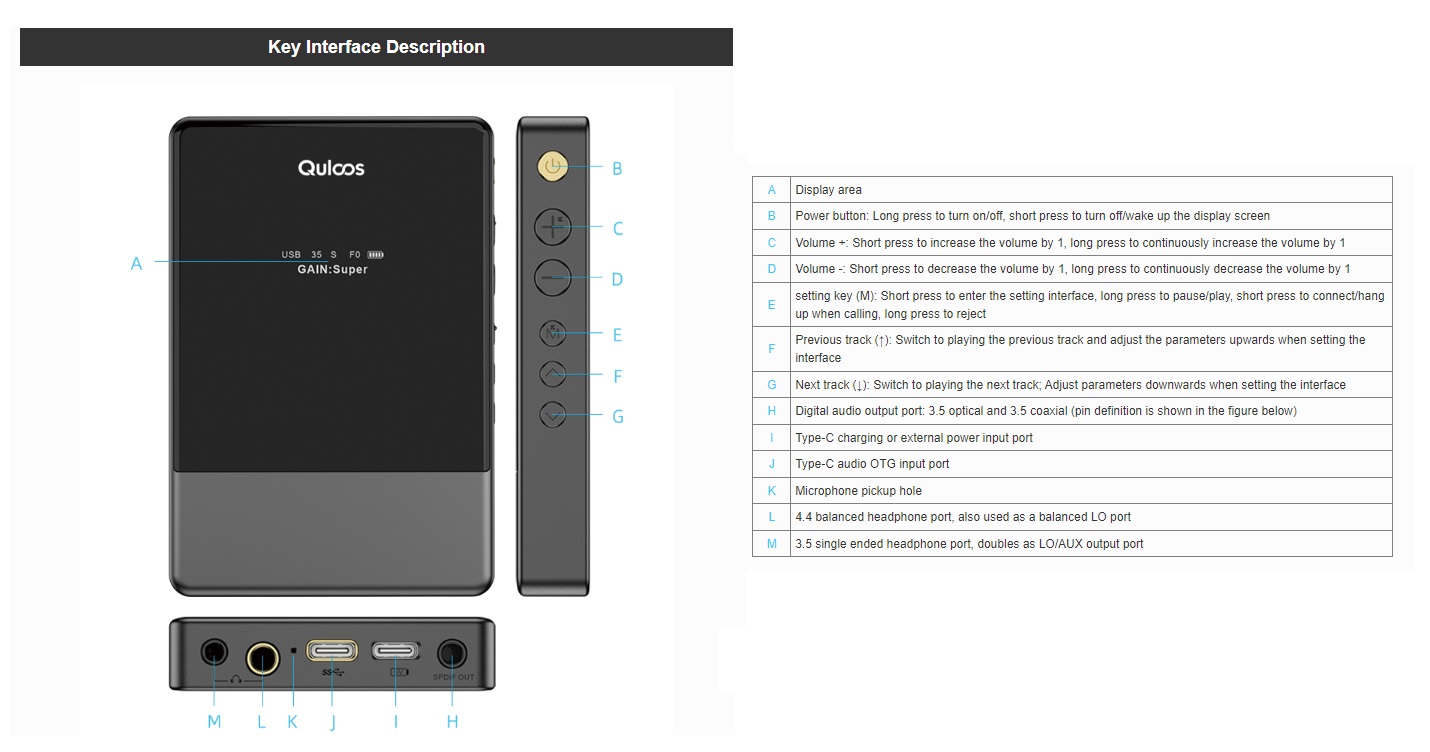
Quloos MUB1 Specifications:
| Item / model | Balance port | Single port |
| Body size | 96*65*14.5mm (L * W * H) | |
| Host weight | 142g | |
| Input interface | Type-C USB data, Type-C USB power supply&charging, wireless Bluetooth | |
| Bluetooth format | Bluetooth 5.0, LDAC, APTX, APTX-HD, ACC, SBC | |
| USB protocol | UAC2.0 protocol / UAC1.0 protocol, supporting Windows, Mac, Android, iOS systems | |
| USB port DSD sampling rate | 2.8224MHz (DSD64), 5.6448MHz (DSD128), 11.2896MHz (DSD256), Native or DoP | |
| USB port PCM sampling rate | 16Bit ~ 32Bit, 44.1kHz ~ 384kHz | |
| Output interface | 3.5 single ended & 4.4 balanced headphones (can be set to Line out/Aux out), 3.5 optical or coaxial SPDIF digital output | |
| Optical/ coaxial output | 16Bit ~ 24Bit, 44.1kHz ~ 192kHz PCM, DoP64 | |
| DAC chip | CS43131 * 4 pieces, QFN large package | |
| OP | Selected 2 OP* pieces with excellent texture and musical appeal | |
| Headphone amplifier chip | BUF634A * 4 | |
| Gain control | Low / Mid / High / Super-High | |
| Volume control | This device has a volume level of 100, which can be independently adjusted from the phone volume | |
| Frequency response | 20Hz ~ 20kHz ±0.5db | |
| THD+N (AES17 (20kHz), A-weighted, unloaded, medium gain) | 0.0001% | 0.00015% |
| SINAD (AES17 (20kHz), unweighted, unloaded, medium gain) | 120db | 116db |
| SNR (A-weighted, medium gain) | 132db | 126db |
| Dynamic range (A-weighted, medium gain) | 132db | 124db |
| Crosstalk (unloaded, medium gain) | -140db | -137db |
| Crosstalk (32Ω, medium gain) | -95db | -73db |
| Output power (THD+N<0.01%, S-gain) | 1100mW + 1100mW @32Ω | 410mW + 410mW @32Ω |
| 250mW + 250mW @300Ω | 65mW + 65mW @300Ω | |
| Noise floor (A-weighted) | 1.2uVrms @G = L | 1.8uVrms @G = L |
| 1.2uVrms @G = M | 1.8uVrms @G = M | |
| 2.5uVrms @G = H | 2.5uVrms @G = H | |
| 8.3uVrms @G = S | 5.8uVrms @G = S | |
| Reference: High sensitivity headphones are also difficult to hear to the noise floor. When QA361 has low gain, the noise floor is 4uV. | ||
| Battery life | 8~10 hours | |
| Charging time | 2~3 hours | |
| Charger | Type-C charger (user provided), DC 5V, ≥2A | |
| External power input | Input from charging port Type-C, DC 5V, ≥2A | |
| Microphone function | Support Bluetooth calls with built-in omnidirectional microphone |
Hardware Features:
The MUB1 is an ultra compact USB & Bluetooth DAC/Amplifier that features some impressive hardware specs. The device is equipped with four high-performance 32-Bit DAC chips featuring four units of CS43131 decoding chips and four BUF634 amp chips to achieve balanced headphone amp architecture, with an output power of up to 1110mW @32Ohms. The MUB1 comes with both 3.5mm SE and 4.4mm Balanced and a separate 3.5mm Optical/SPDIF Digital outputs interface.
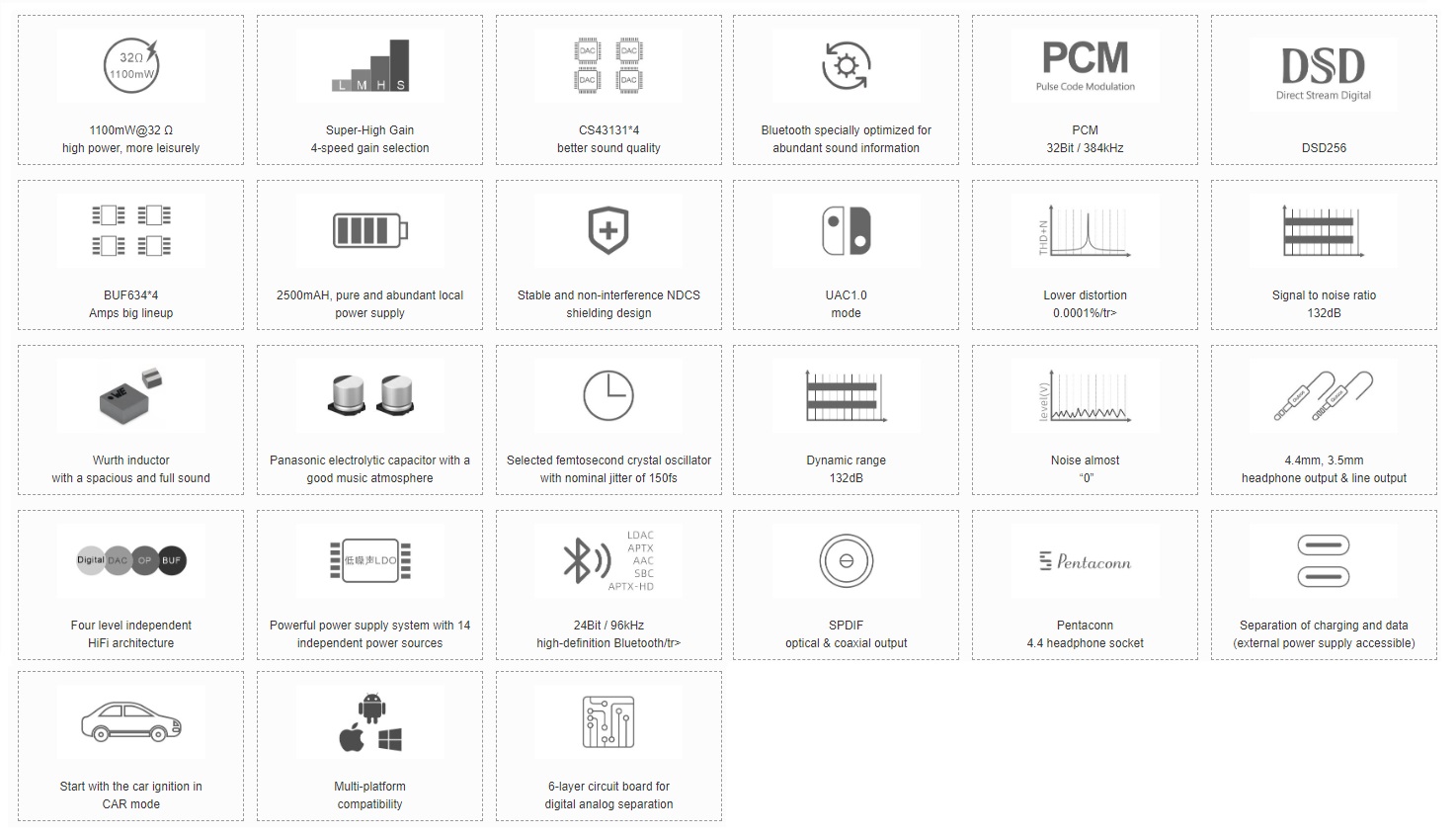
Dual Cirrus Logic CS43131 DAC & Supported Sampling Rates
The Quloos MUB1 is equipped with four high-performance 32-Bit DAC chips featuring four units of CS43131 decoding chips. This 32-Bit Quad-DAC arrangement is able to archive excellent values such like a SNR (Signal to Noise Ratio) of 132dB and THD+N (Total Harmonic Distortion) of just 0.00001% over its 4.4mm Balanced headphone output, which is quite impressive for such a compact portable all-in one solution.The Quad CS43131 inside the MUB1 has the capability to decode Hi-Res audio signals up to 32-Bit/384kHz PCM and Native DSD256.
| DSD Decoding | 2.8224MHz (DSD64), 5.6448MHz (DSD128), 11.2896MHz (DSD256), Native or DoP |
| PCM Decoding | 16 / 24 / 32Bit, 44.1kHz, 48kHz, 88.2kHz, 96kHz, 176.4kHz, 192kHz, 352.8kHz, 384kHz |
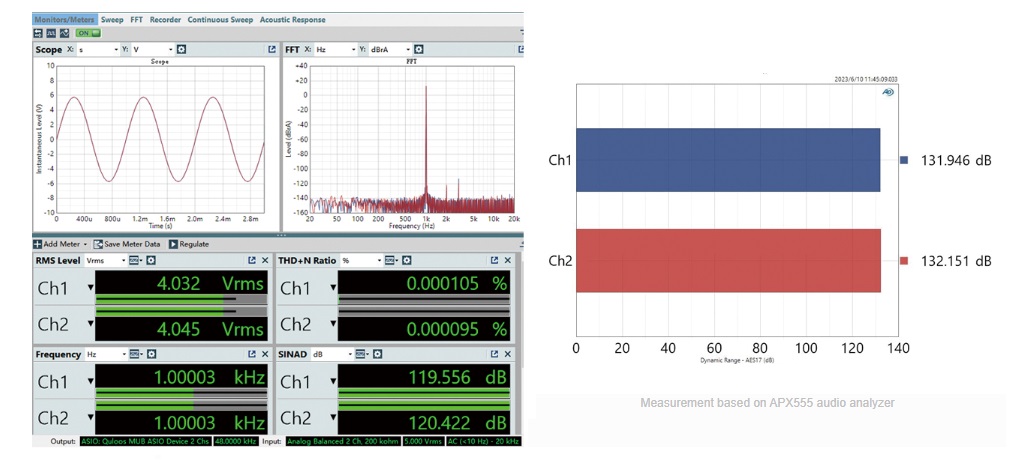
Balanced Circuit & Amplification:
The Quloos MUB1 has a pretty innovative and sophisticated balanced audio circuit design that is equipped with carefully selected audio components such like High-Power Amplification Chips, Panasonic Film Capacitors, Würth inductors, etc. All this components have been integrated in to a 6-layer circuit board for digital analog separation.
Quloos MUB1 comes with both a 3.5mm Single-Ended and 4.4mm Balanced headphone ports with dual output ability. The device is equipped with a specially developed high-power headphone amp section designed with 4x units of BUF634 amp chips, which offers an impressive power output of up to 1100mW @ 32ohm (in Super-High Gain) that was capable properly to drive fairly demanding planar headphones like the HiFiMAN Edition XS and Moondrop PARA.
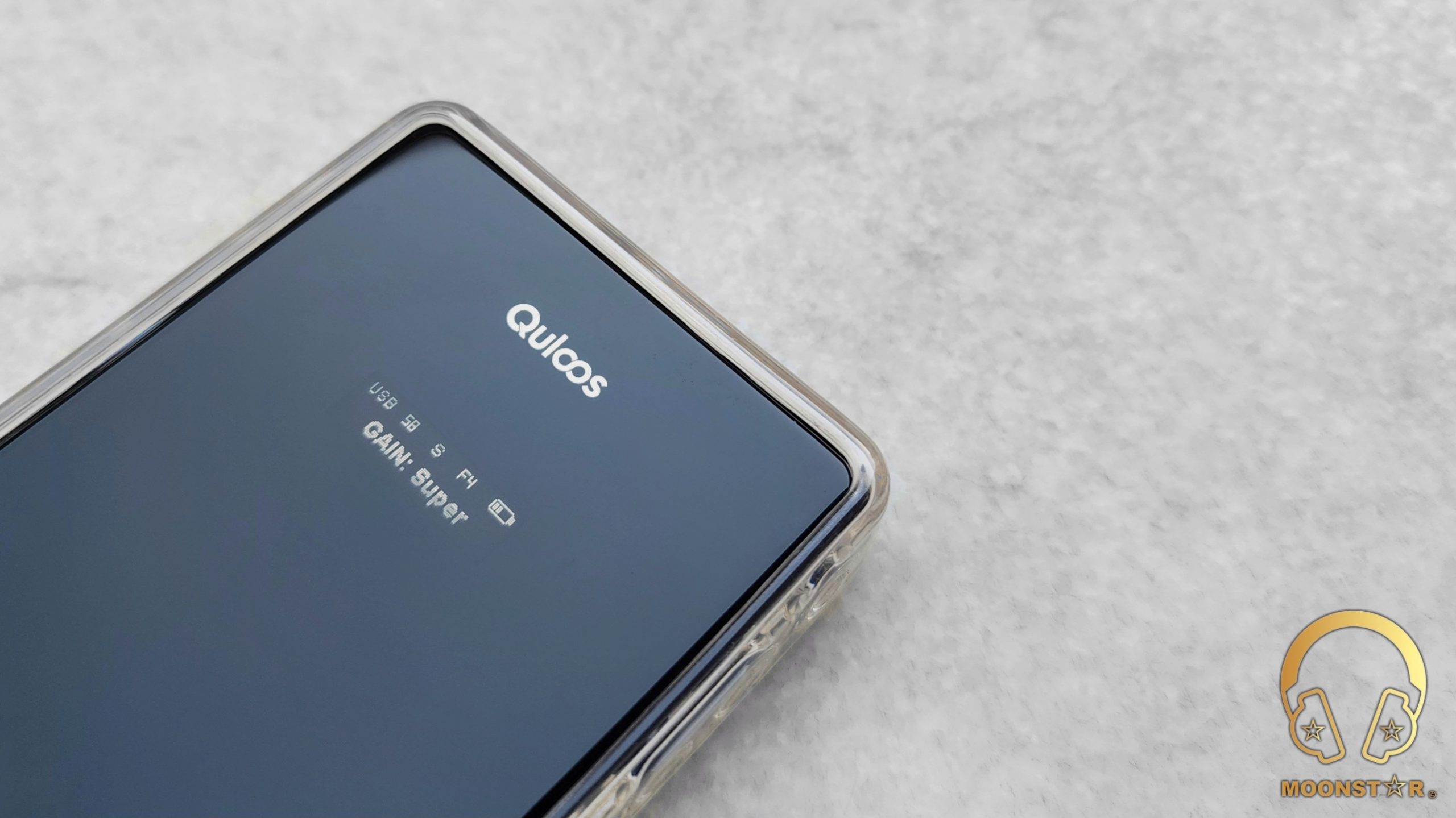
The MUB1 offers 4 Gain modes that are Low, Medium, High and Super-High. Low and Medium are ideal for sensitive IEM, while High and Super-High are suitable for harder to driver earphones and headphones. Very remarkable is the very clean, noise free and almost pitch black background of both the 3.5mm SE and 4.4mm Balanced outputs.
It is also remarkable to mention that the MUB1 didn’t heat up despite it is powerful device with a small size and built-in battery, which makes it comfortable to use in your pocket, even after longer listening periods.
Another feature of the MUB1 is the high-precision “Femtosecond Crystal Oscillators” with only 150fs of nominal jitter.

Compatibility:
The Quloos MUB1 supports multiplatform including Android Smartphone’s/Tablets, iOS devices such like iPhone’s & IPad’s, Computers installed with Mac or Windows and even a Nintendo Switch. Quloos MUB1 works on both USB modes, the UAC 2.0 which is a standard today for most devices, and UAC 1.0 mode commonly used in previous-generation systems or low-power output devices such as Nintendo Switch, etc.
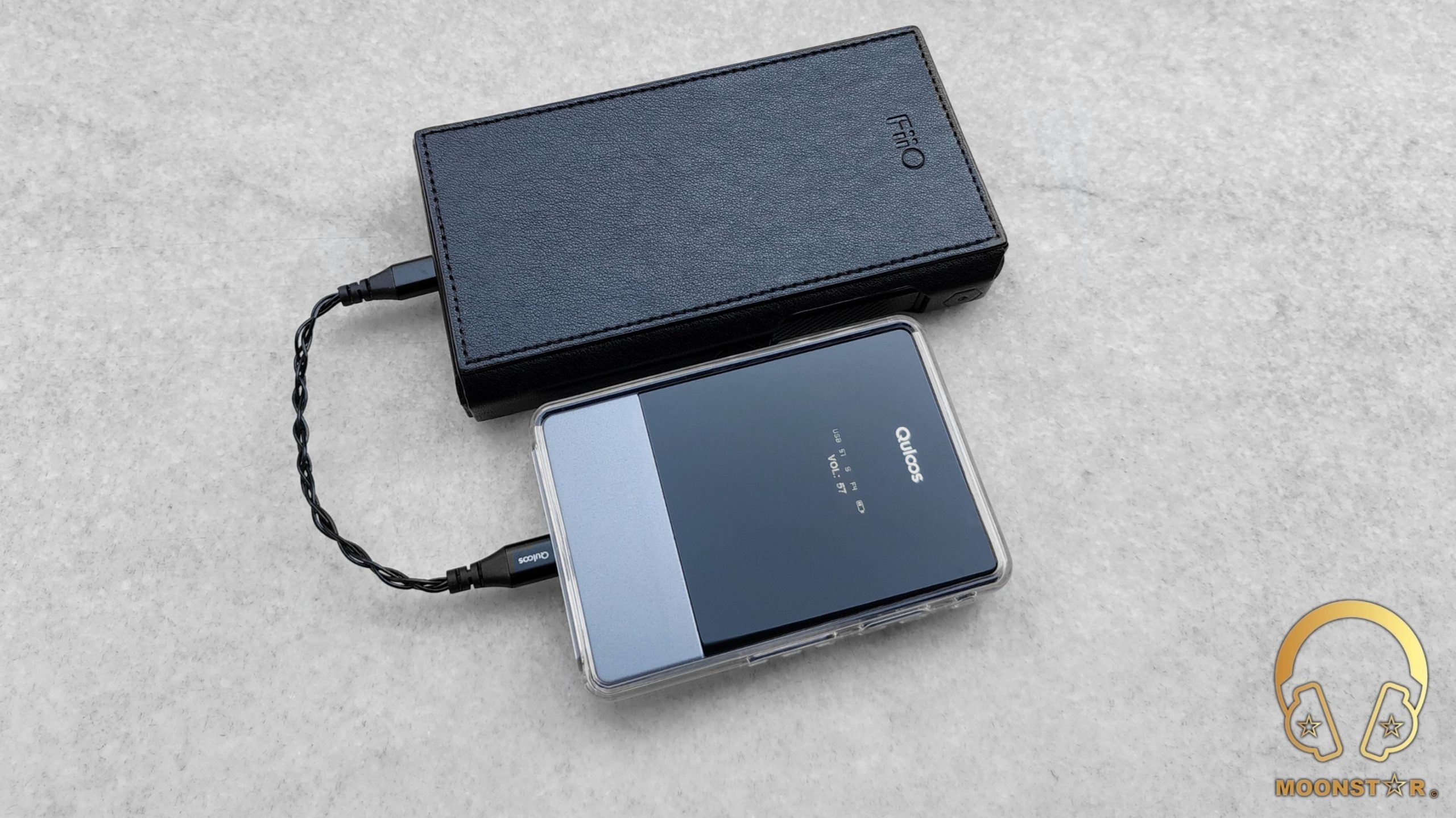
Bluetooth Connectivity:
The Quloos MUB1 can be used as a wireless DAC/Amplifier since it is equipped with a Bluetooth chip and Antenna that supports the V5.0 BT protocol. The MUB1 supports most of the advanced high-resolution wireless codec’s including LDAC, AptX HD, AptX and more traditional formats like AAC and SBC. The sound performance of the MUB1 when connected as a Bluetooth DAC/AMP is pretty decent!
The Quloos MUB1 also has a strong Bluetooth connection that can reach up to approx 10 meters without any problems. The device works well with videos and movies on YouTube, Netflix, Disney+, Amazon Prime, etc., and does not have any noticeable lip-sync delays when I paired it with my Samsung Galaxy TAB S8 Ultra and Samsung Galaxy S22 Ultra. This is because it supports LDAC and AptX-HD codec’s.
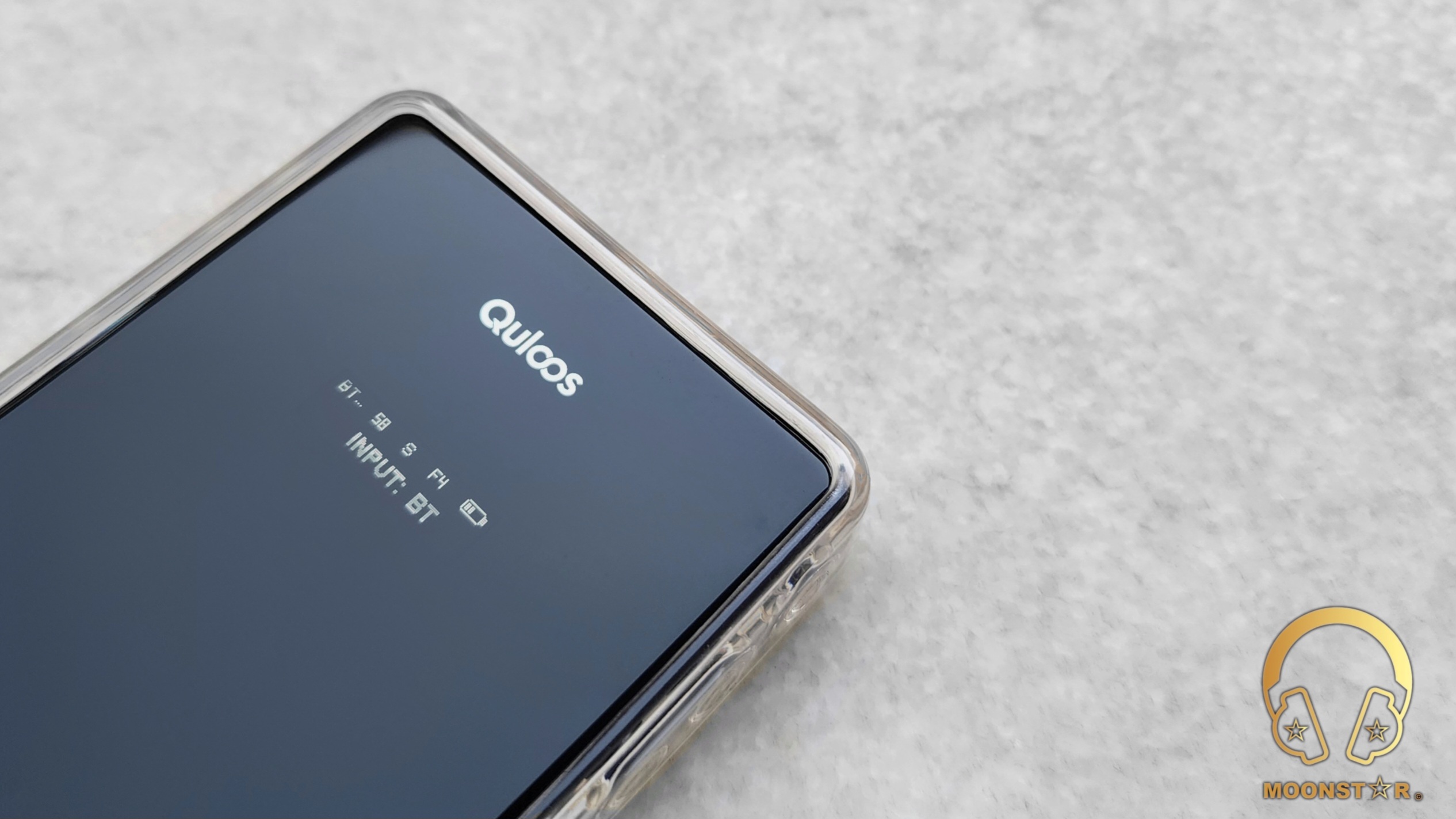
Battery Life & Power Bank Function:
The Quloos MUB1 has a big battery of 2500mAh that can last for 10 hours. This is an above average performance for such a small and powerful device. The MUB1 also has a special feature: it has two USB Type-C ports; one port is for the digital input, and the other port is for charging. You can use this port to charge the MUB1 or you can use it as a power bank to charge your device that is connected to the MUB1.
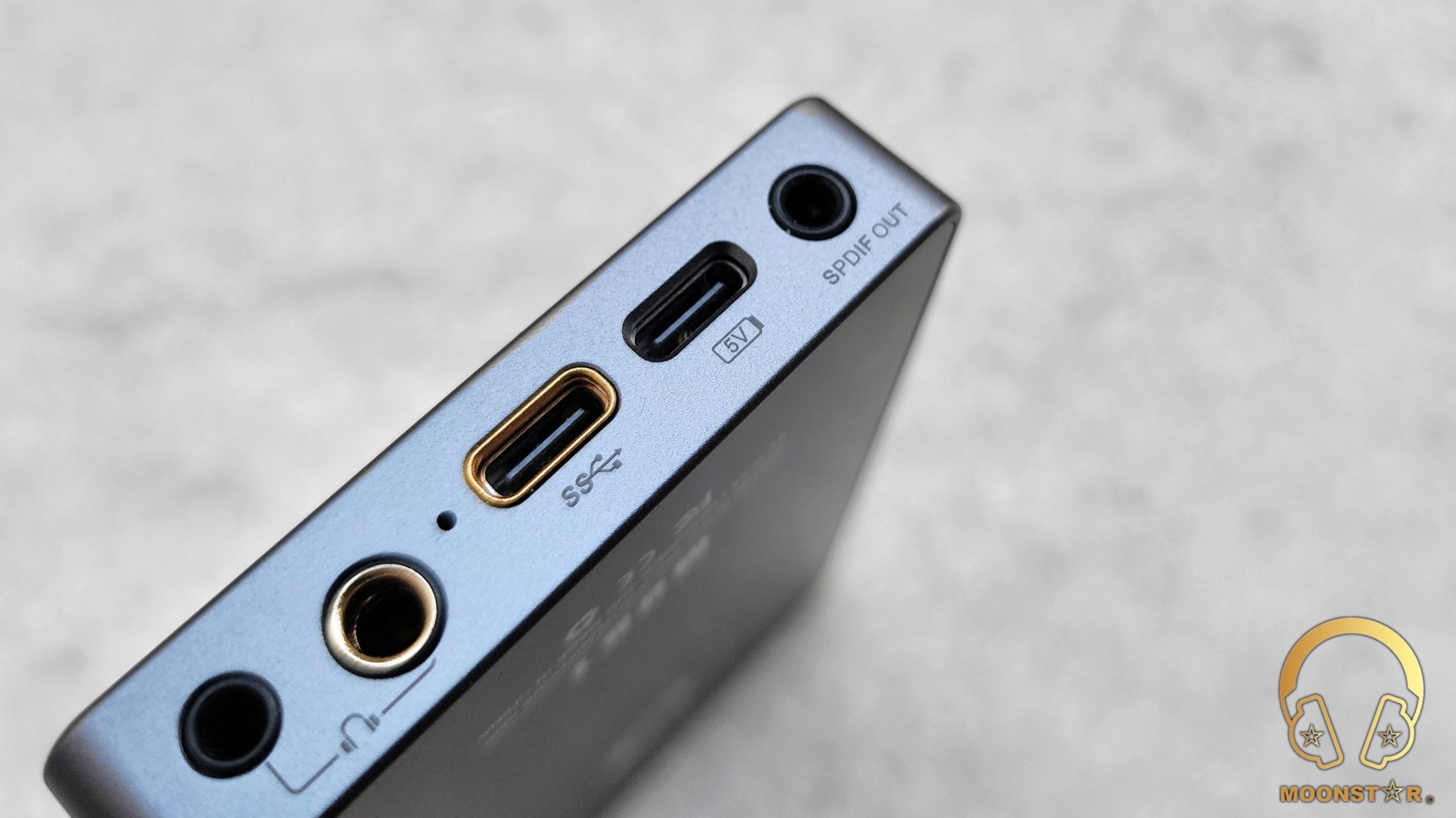
Battery Test Results:
- 5mm Single Ended Output: approx 9.5 – 10 Hours @ High Gain
- 4mm Balanced Output: approx 7.5 – 8 Hours @ High Gain
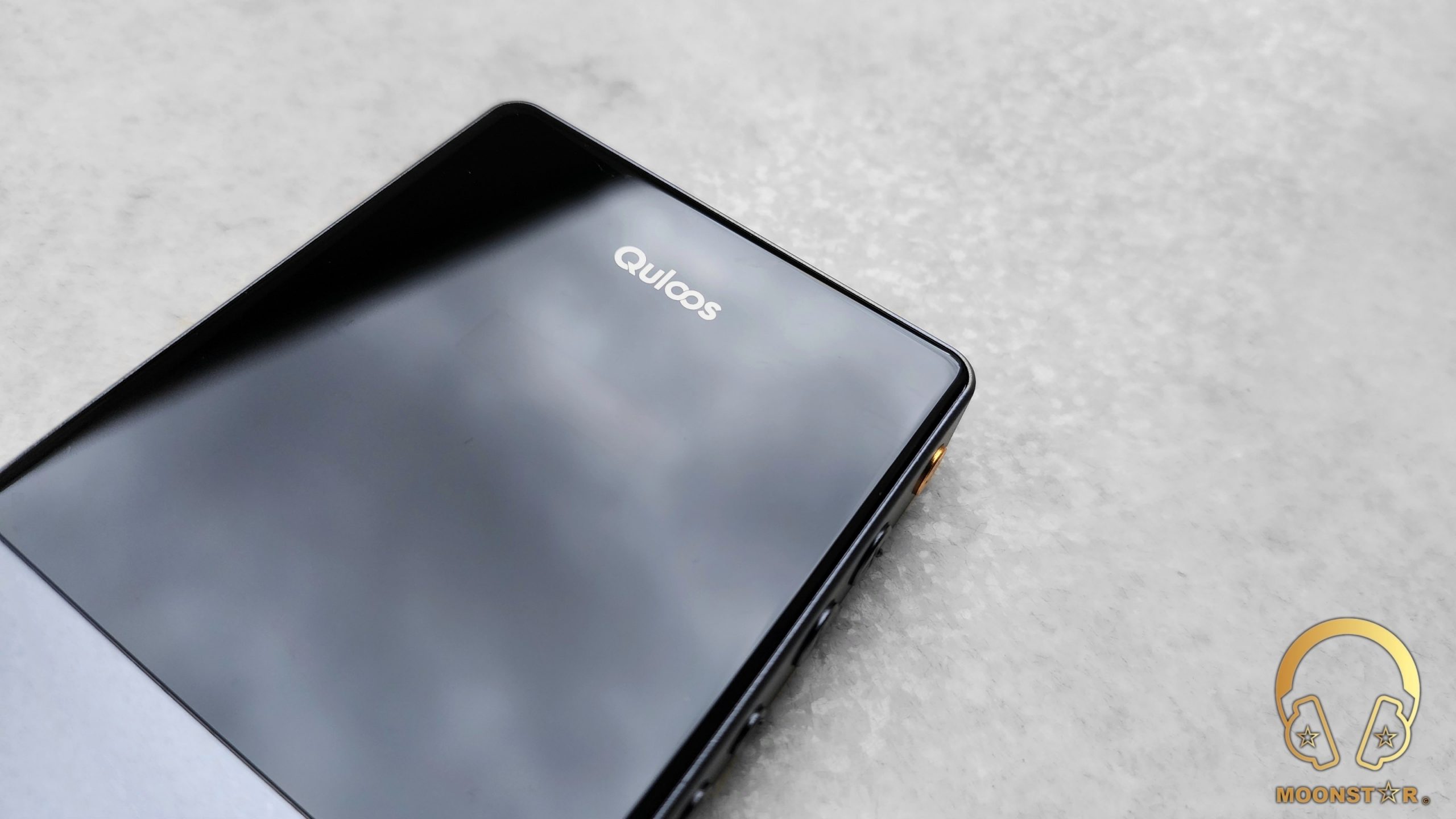
Equipment’s used for this review:
- DAC/AMP’s : Quloos MUB1
- Sources : Samsung Galaxy S22 Ultra, Samsung Tab S8 Ultra, ASUS TUF FX505DU
- IEM’s : Campfire Audio Solaris Horizon, Westone MACH60, Moondrop Blessing 3
- Headphones : HiFiMAN Edition XS, Moondrop PARA
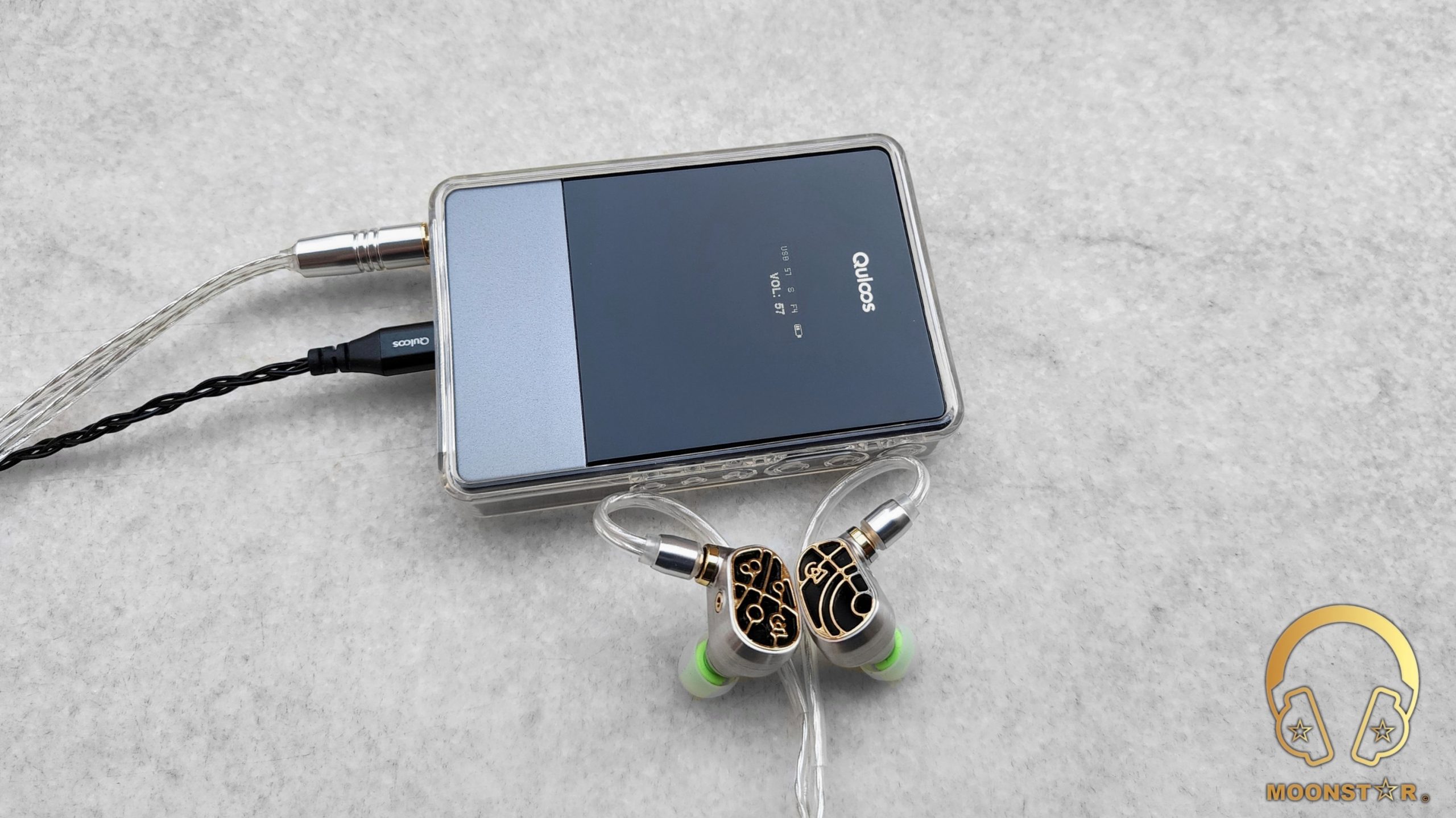
Albums & tracks used for this review:
- Adele – My Little Love (Spotify)
- Randy Crawford – On Day I Will Fly Away (Flac 16bit/44.1kHz)
- Hayley Westenra – Odyssey Album (Dezzer HiFi)
- Dionne Warwick – Walk On By (Flac 16bit/44.1kHz)
- Sarah McLachlan – Angel (Flac 24bit/48kHz)
- Sertap Erener – Aşk (Flac 16bit/44.1kHz)
- Edith Piaf – Non Je Ne Regrette Rien (Flac 16bit/44.1kHz)
- Diana Krall – So Wonderful (DSF)
- Aretha Franklin – I Say A Little Payer (Flac 24bit/96kHz)
- Sonya Yoncheva – (Giuseppe Verdi) II Trovatore, ActI (Flac 24bit/96kHz)
- George Michael – Don’t Let the Sun Go Down on Me (Flac 24bit/192kHz)
- David Bowie – Heroes (Flac 24bit/192kHz)
- Elton John – Rocket Man ((Flac 24bit/96kHz)
- Barry White – Just The Way You Are (Flac 24bit/48kHz)
- Isaac Hayes – Walk On By (Flac 16bit/44.1kHz)
- Sting – Englishman in New York – (Flac 24bit/48kHz)
- Eric Clapton – Wonderful Tonight (Flac 24bit/96kHz)
- B.B. King – Riding With The King (Tidal Hi-Fi)
- Dave Gahan – Kingdom (Tidal Hi-Fi)
- U2 – Sunday Bloody Sunday (Flac 16bit/44.1kHz)
- Bro Safari, UFO! – Drama (Deezer HiFi)
- Armin Van Buuren – Vini Vici (Flac 16bit/44.1kHz)
- Daft Punk – Doin’ it Right (Flac 24bit/96kHz)
- Christian Reindl – Freya (Deezer HiFi)
- Lorde – Royals (Flac 24bit/48kHz)
- Massive Attack – Angel (Flac 24bit/48kHz)
- Toutant – Rebirth (Deezer HiFi)
- Gogo Penguin – Raven (Flac 24bit/192kHz)
- Gogo Penguin – Murmuration (Flac 24bit/192kHz)
- Portishead – It Could Be Sweet (Spotify)
- Max Richter – On the Nature of Daylight (Flac 24bit/96kHz)
- Charly Antolini – Knock Out 2000 Album (Deezer HiFi)
- Ferit Odman – Look, Stop & Listen (Flac 24bit/192kHz)
- Chopin – Nocturn No. 20 In C-Sharp Minor (Flac 16bit/44.1kHz)
- Fazıl Say – Nazım Oratoryosu (Live) (Flac 16bit/44.1kHz)
- Vivaldi – Le QuarttroStagioni “The Four Season” (Deezer HiFi)
- Otto Liebert & Luna Negra – The River (Flac 24bit/192kHz)
- Lunatic Soul – The Passage (Flac 16bit/44.1kHz)
- Deftones – My Own Summer (Shove it) (Flac 16bit/44.1kHz)
- Metallica – Sad but True (Flac 24bit/96kHz)
- Metallica – Master of Puppets (Flac 24bit/96kHz)
- Opeth – Windowpane (Flac 16bit/44.1kHz)
- Megadeth – Sweating Bullets (Tidal Hi-Fi)
- Rush’s – Leave That Thing Alone (Flac 16bit/44.1kHz)
- Slayer – Angel of Death (Spotify)
- Liquid Tension Experiment 2 – Acid Rain (Spotify)
- Yosi Horikawa – Bubbles (Spotify)
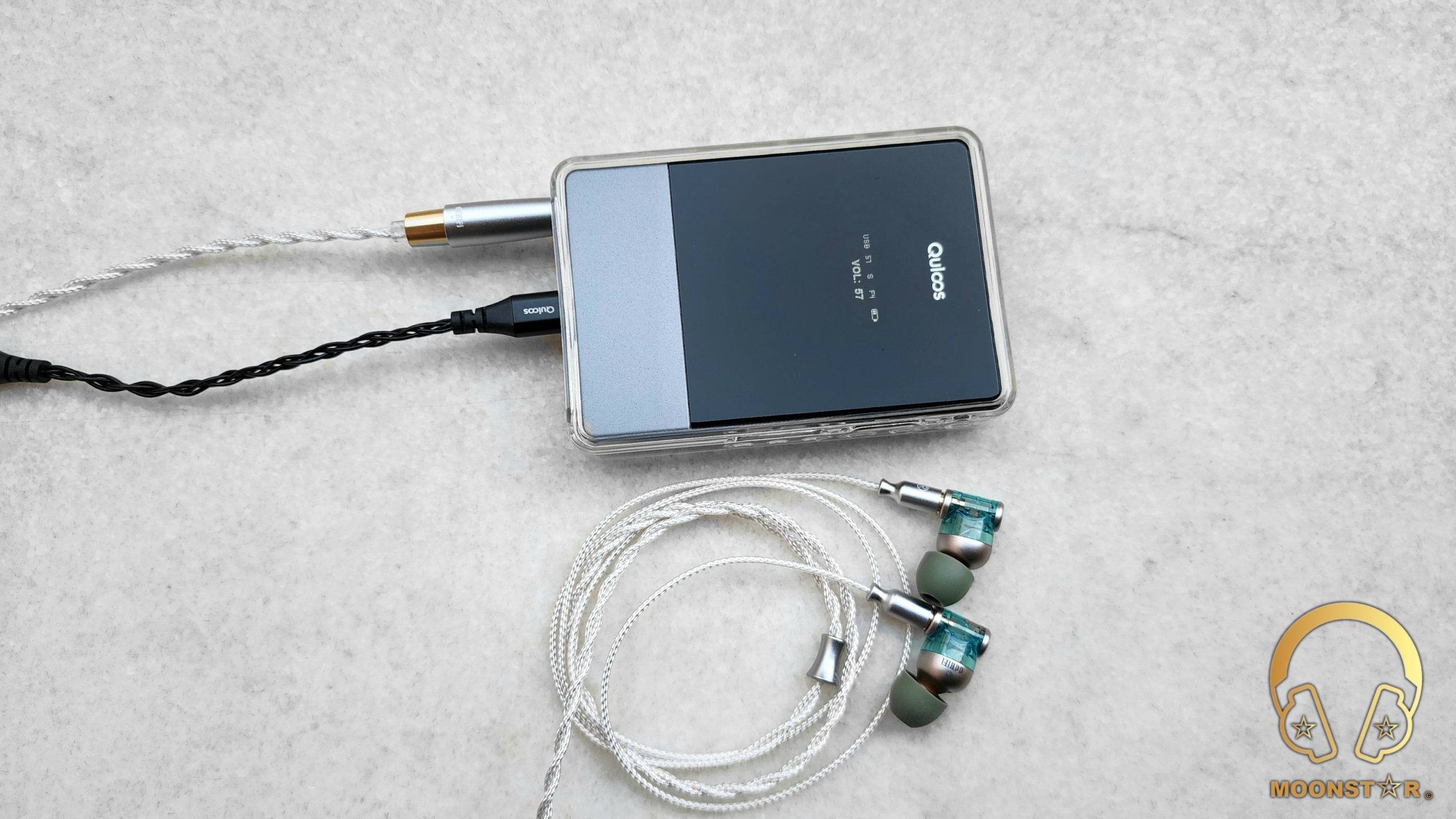
The Sound:
The Quloos MUB1 is a quite powerful portable DAC/Amplifier with small size and compact design, which offers an impressive overall sound performance that was beyond my expectation. The device can handle different genres of music with ease and delivers a balanced and natural sound signature with the IEM’s and Headphones I have tested the device. The MUB1 stands out with its very good tonal balance!
The bass can be described as deep, powerful and well-controlled, giving most music genres a solid foundation and impact. The midrange impressed me with its rich, smooth and pretty detailed character, bringing out the vocals and instruments with accuracy and emotion. The treble range on the other hand is natural and crisp, able to create a good sense of airy and extension, and adding clarity to the music without being harsh or sibilant. The soundstage is presented in a pretty natural and spacious manner that shows a good sense of depth and wideness, especially when you use it in Super-High Gain mode.
I know that this seems quite promising, but the sound & output performance of this pretty small and compact device is simply stunning. It doesn’t give you the feel that you listen to a portable device; it has a unique presentation that is very close to a desktop device. But keep in mind that the MUB1 requires some burn-in to show its best since it is equipped with some electronic compounds that do benefit from these.
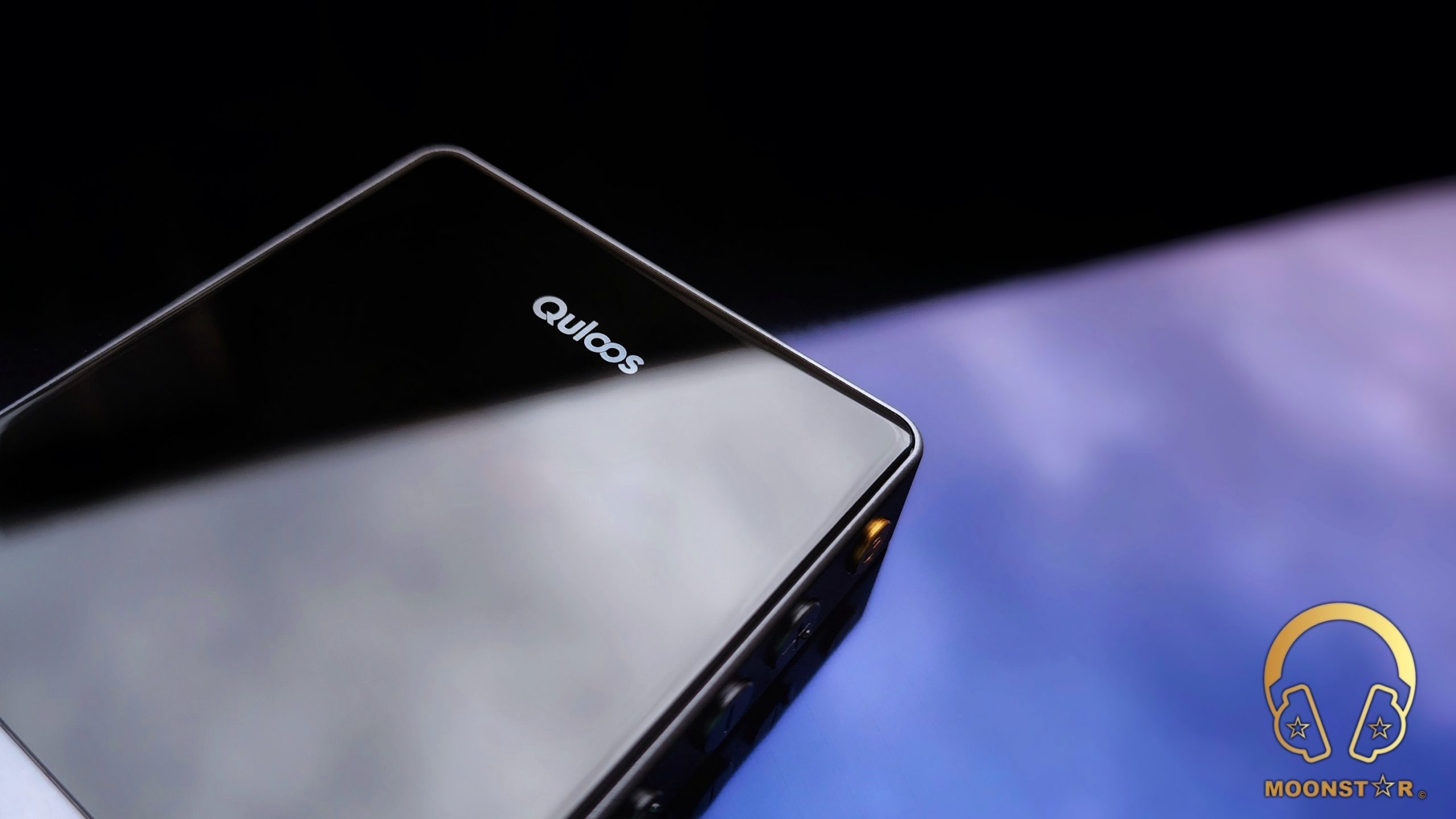
Sound Performance in Bluetooth Mode:
Another surprise for me was the sound performance when I have connected the MUB1 to a Bluetooth source like a Smartphone (Galaxy S22 Ultra) or tablet (Tab S8 Ultra) via LDAC codec. The sound what I do hear is relative close to the to the USB DAC mode. Yes, you will lose some sense of dynamics and some grade of micro details here and there, but what you get it is a pretty impressive type of sonic quality which you most likely won’t reach with other Bluetooth devices, and I’ve tested tons of them.
The Quloos MUB1 review has been written after a burn-in period of approx 120 hours. My sound impressions bellow are based on my experiences with IEM’s like the Campfire Audio Solaris Stellar Horizon, Westone MACH60, Moondrop Blessing 3 and Headphones like the Moondrop PARA and HiFiMAN Editions XS. The device has been used with the stock “NOS (None-Over Sampling)” Digital Filter and at “High Gain” with IEM’s and Super High Gain with Headphones.
Bass:
The Quloos MUB1 impressed me with its pretty natural and rich bass response with top notch level of layering. The subbass region has a natural feeling of depth and rumble when I listen to songs like Christian Reindl’s “Freya”, Massive Attack’s “Angel” or Lorde’s “Royals”, paired with IEM’s like the Campfire Audio Solaris Horizon and Westone MACH 60. Instruments such as bass guitars, electronic synthesizers or percussions are delivered with a good grade of subbass depth and intensity.
The MUB1 impresses with its authoritative midbass presentation, which I noticed right away when I listened to it with the Campfire Audio Solaris Stellar Horizon. This region has a subtle touch of warmth that adds some fullness and musicality to the overall presentation. The MUB1 handles complex bass passages with ease, displaying a high level of texture and control. Songs like Gogo Penguin’s “Raven” and Charly Antolini’s “Knock Out 2000” album sound dynamic and engaging that I have highly enjoyed.
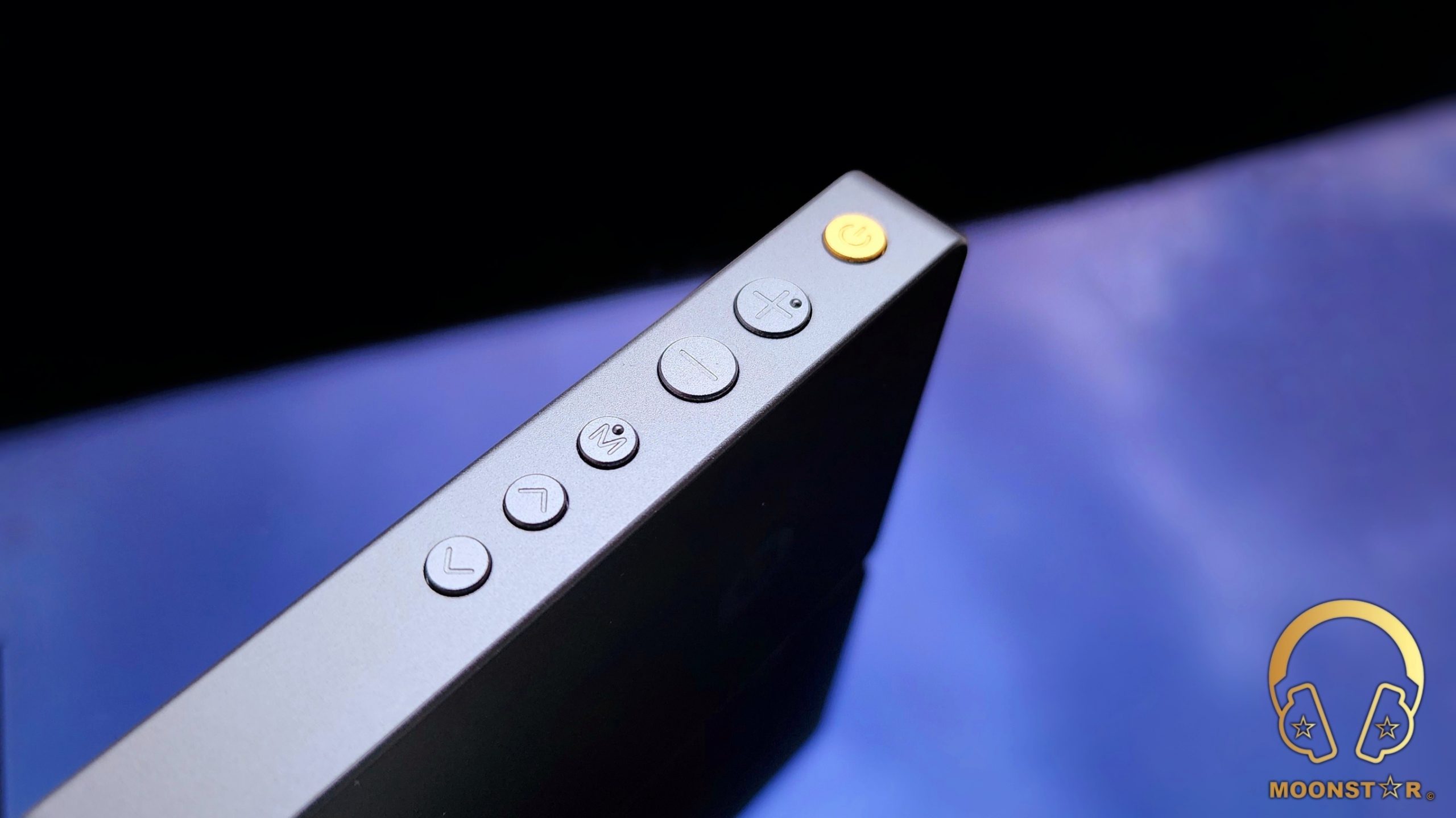
Midrange:
The midrange of the Quloos MUB1 is attracts attention with its pretty realistic and organic timbre both while listen to instruments and vocals. The general presentation of this area is extremely transparent, engaging and revealing. There is a slightly amount of warmth that is not overdone. The lower midrange is able to create a decent sense of fullness that was audible while listen to male and female voices, as well as instruments such like strings, pianos and percussions. Male vocals from Sting to Barry White are shown with pretty natural sense of body and depth in this area.
The Quloos MUB1 delivers a stunning performance in the upper midrange, where it showcases its superb resolution, extension and naturalness. It inherits the same distinctive tuning that I have always admired from previous Quloos devices, such as the QA361 and MC01. The MUB1 strikes a perfect balance in this region, blending a presentation that is neither too analytical nor too analog, but rather captures the essence of both worlds. Female vocals, such as those of Adele, Edith Piaf or Diana Krall, sound enchanting and lively, while instruments are rendered with vibrancy and realism, especially when paired with IEM’s and headphones like the Moondrop Blessing3 and HiFiMAN Edition XS.
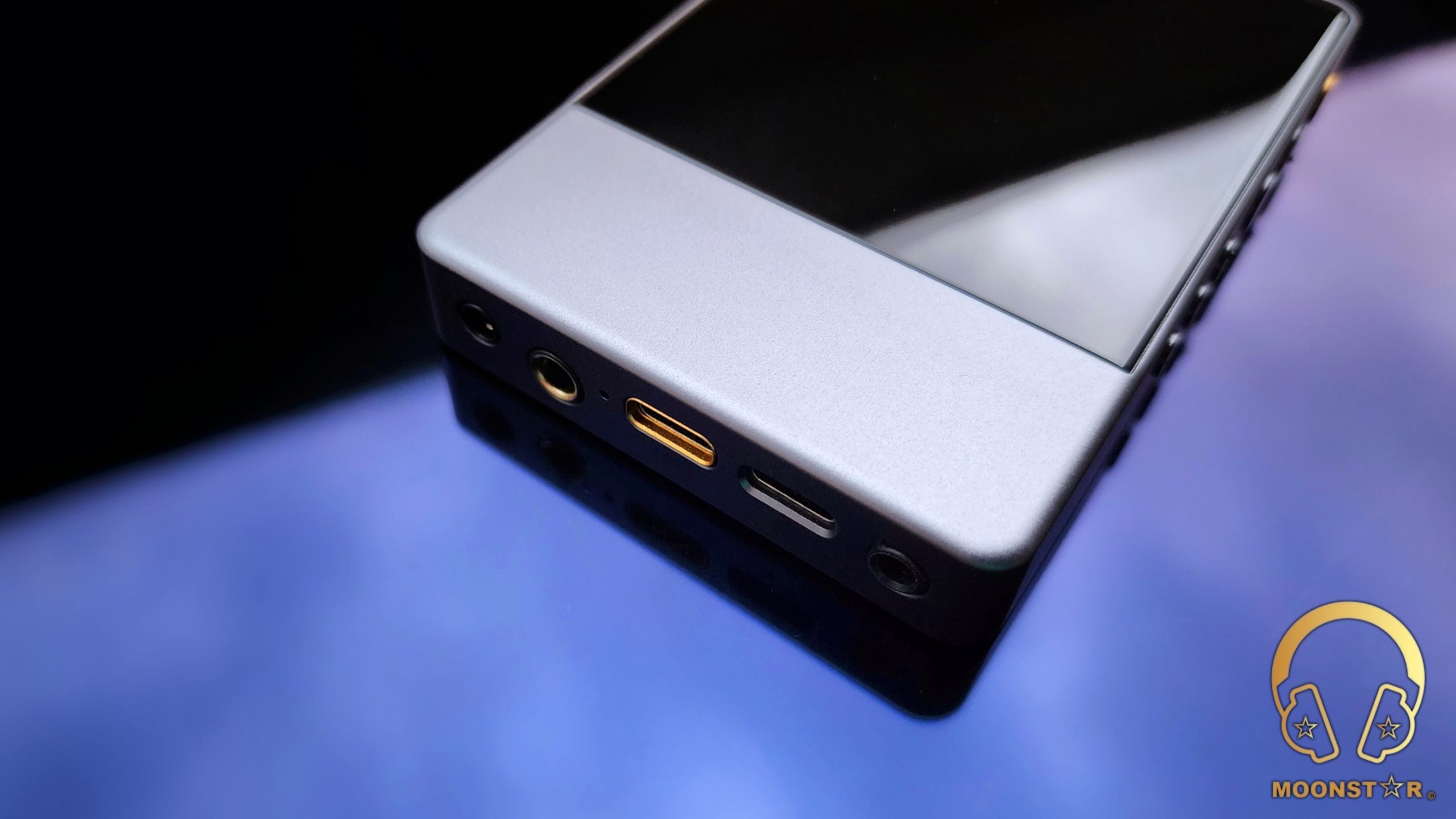
Treble:
The Quloos MUB1 offers a natural and smooth treble performance that has a touch of warmth, adding a pleasant coloration to the sound. The MUB1 has an impressive level of resolution and extension for a device of its size and price range, which is evident with any IEM or headphone that I have paired with it. The MUB1 delivers a clear and refined treble sound that will satisfy audiophiles who appreciate detail and realism.
The lower treble range of the Quloos MUB1 has a good sense of presence and a high level of clarity and definition, which makes string instruments, pianos, and soprano voices sound lively and realistic. The MUB1 handles the lower treble region with finesse and accuracy, avoiding any harshness or congestion that might affect the sound quality. The MUB1 renders the upper treble region with a good amount of airiness and sparkle, without being harsh or sibilant. Instruments like strings and percussions do sound detailed and realistic, while a hint of warmth prevents them from sounding too sharp or thin.
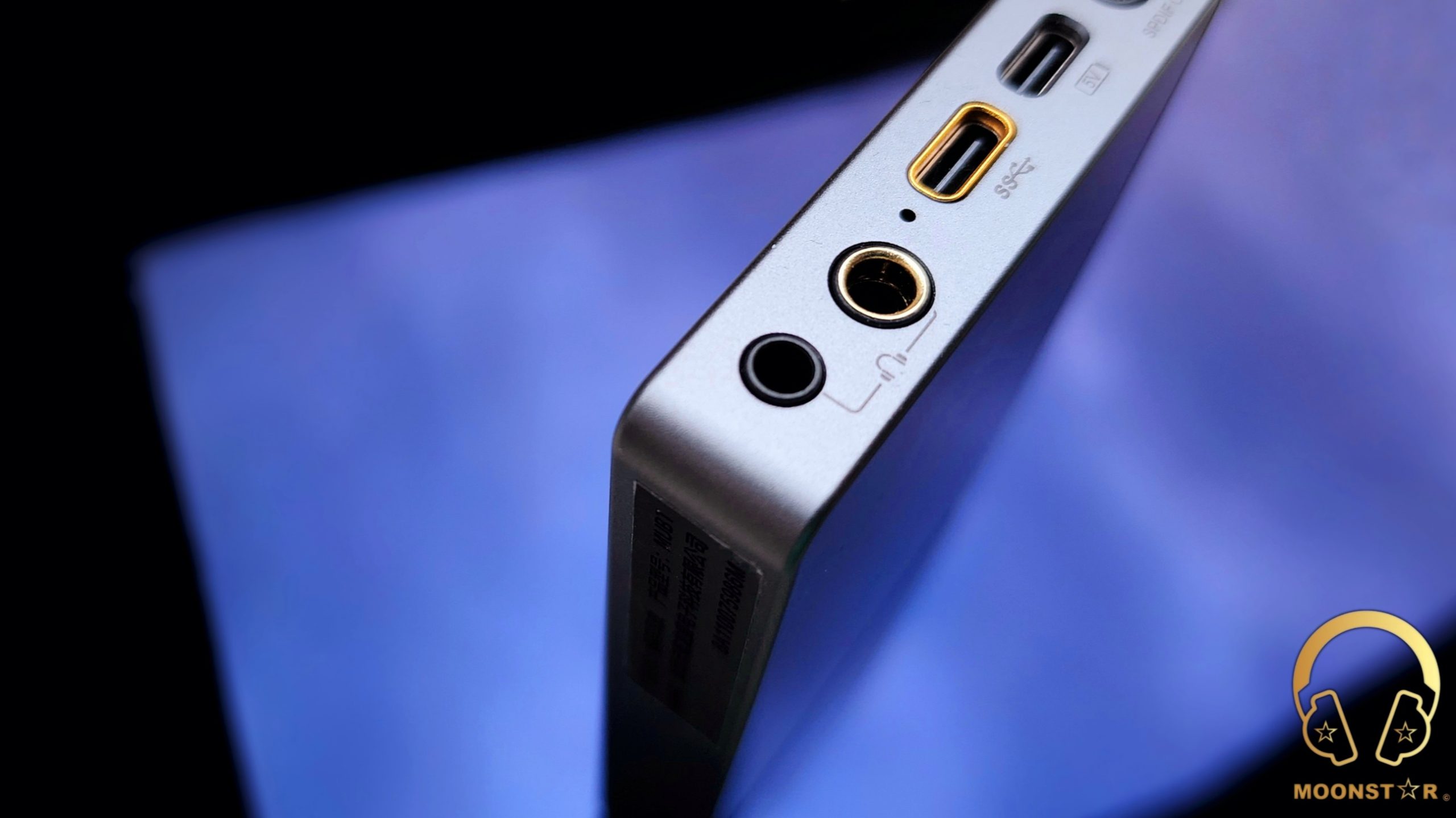
Soundstage & Imaging:
The Quloos MUB1 has a spacious and airy soundstage atmosphere that creates a realistic and immersive listening experience. The background of the device is very dark and clean, which enhances the precision and separation of instruments and vocals. The soundstage of the MUB1 has a good level of depth and wideness that creates a decent sense of spaciousness and dimensionality.
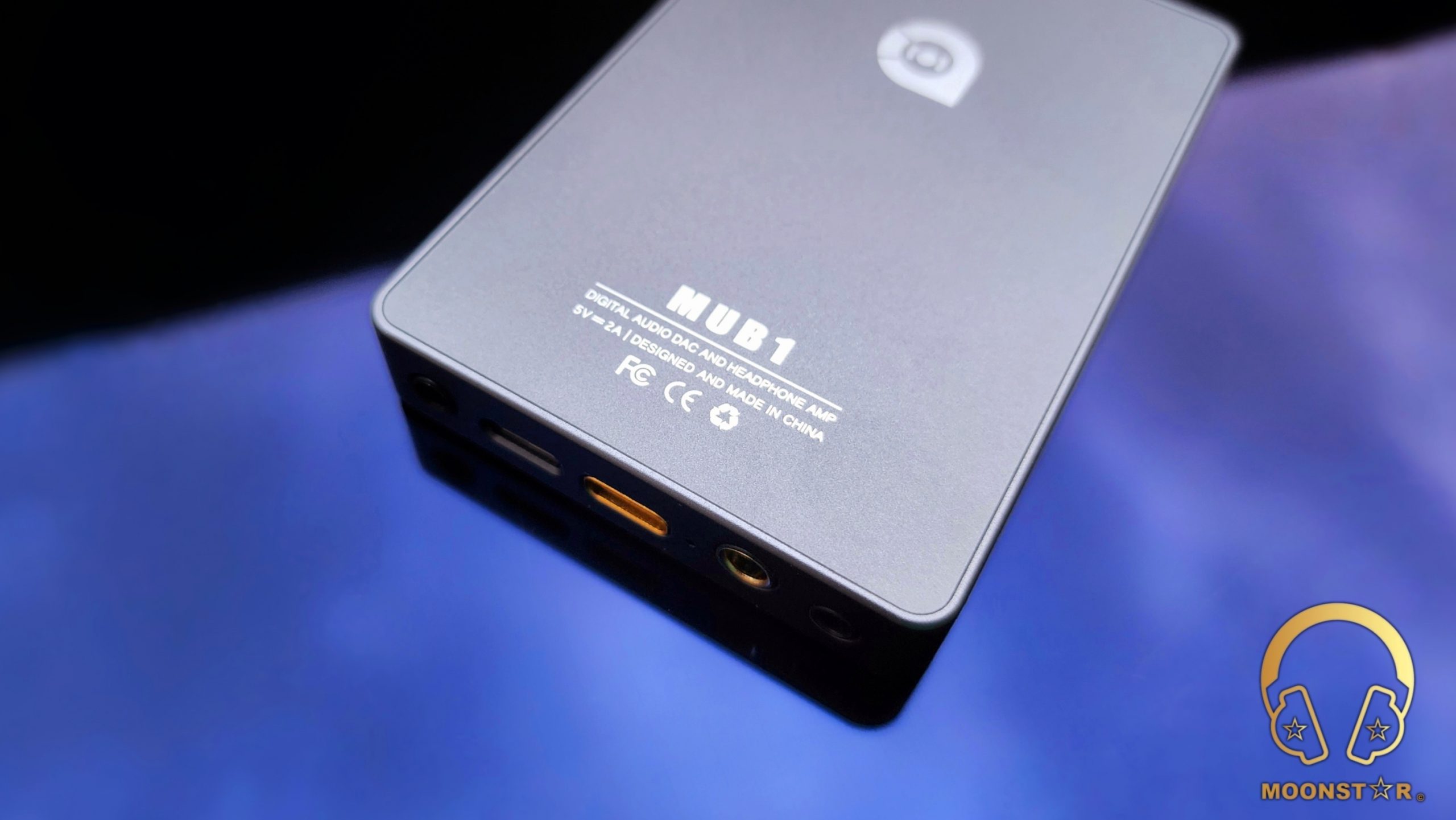
Conclusion:
The Quloos MUB1 is an All-in-One Portable audio solution that delivers a stunning sound performance in both wired and wireless modes. It is equipped with four high-performance DAC chips and four amp chips that can drive various headphones and IEM’s with ease and accuracy. Moreover, it supports multiple Bluetooth codec’s, including the high-resolution LDAC, and has a built-in battery that can even charge your phone if needed. What I also really like is its sleek and compact design, equipped with a small but useful OLED screen and multiple hardware buttons, and output/input options. All this features makes the MUB1 to a versatile and powerful device that can serve as a portable USB DAC/AMP and Bluetooth player that will satisfy the needs of any audiophile who values sound quality, convenience, and functionality.
Thank you for the Read!
Moonstar
100+ Head-Fier
Pros: Musical and Enjoyable Overall Sound Profile,
Fats, Controlled and Punchy Planar Bass Response,
Transparent Midrange Presentation,
Smooth Treble tuning that offers an efficient sense of airiness and sparkle,
Good Built Quality & Ergonomic Monitor Shape,
Decent 4-Core mixed hybrid cable available with 3.5mm SE or 4.4mm Balanced Plug
Fats, Controlled and Punchy Planar Bass Response,
Transparent Midrange Presentation,
Smooth Treble tuning that offers an efficient sense of airiness and sparkle,
Good Built Quality & Ergonomic Monitor Shape,
Decent 4-Core mixed hybrid cable available with 3.5mm SE or 4.4mm Balanced Plug
Cons: Some roll-off around the Mid Treble area,
Lower Midrange is missing some body and depth,
Mediocre Unboxing Experience
Lower Midrange is missing some body and depth,
Mediocre Unboxing Experience
KEFINE Klanar IEM Review
Introduction:
KEFINE is a new brand focusing on portable audio products. The brand name KEFINE (Kəfaɪn) comes from the combination of the founder name Ke (Kə) and the word “Refine”. KEFINE is planning to provide refined audio products for music lovers with affordable price. The first product is a new Planar Driver IEM named Klanar that has been inspired from the word Planar. The Klanar features a 14.5 mm diameter customized Planar Magnetic Driver located inside a 5-Axis CNC machined Aluminum Alloy shell that has a pretty small size and comfortable shape.
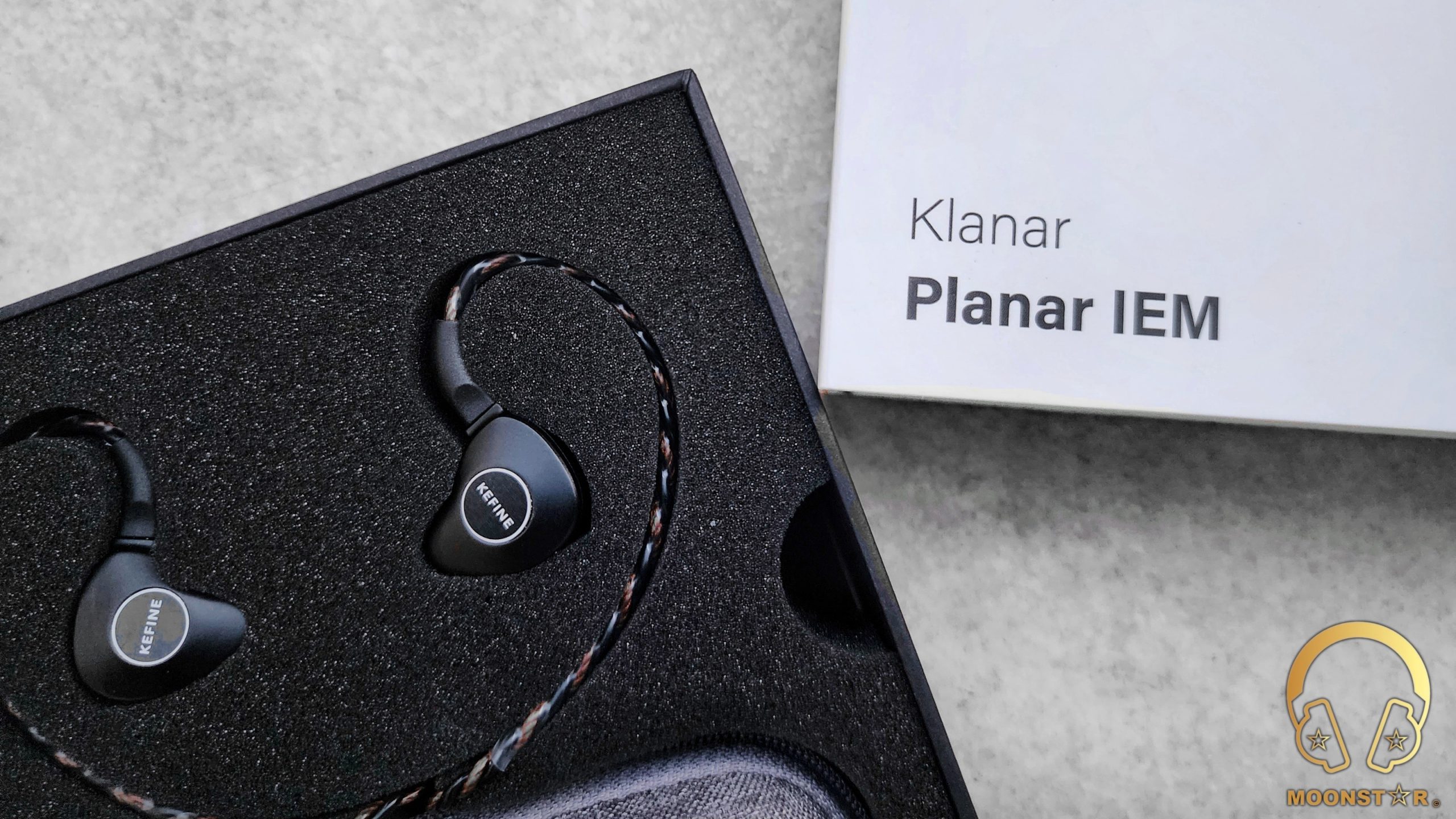
Disclaimer:
I would like to thank KEFINE for providing me the Klanar Planar IEM as review sample. I am not affiliated with KEFINE or any third person beyond this review and all these words reflect my true, unaltered opinions about the product.
Price & Availability:
The actual price for the KEFINE Klanar is $119.00 USD.
Package & Accessories:
The KEFINE Klanar came inside a black box that was wrapped with a white cardboard sleeve that shows illustrations of the IEM and some product related brandings and specs on the top and rear surface.
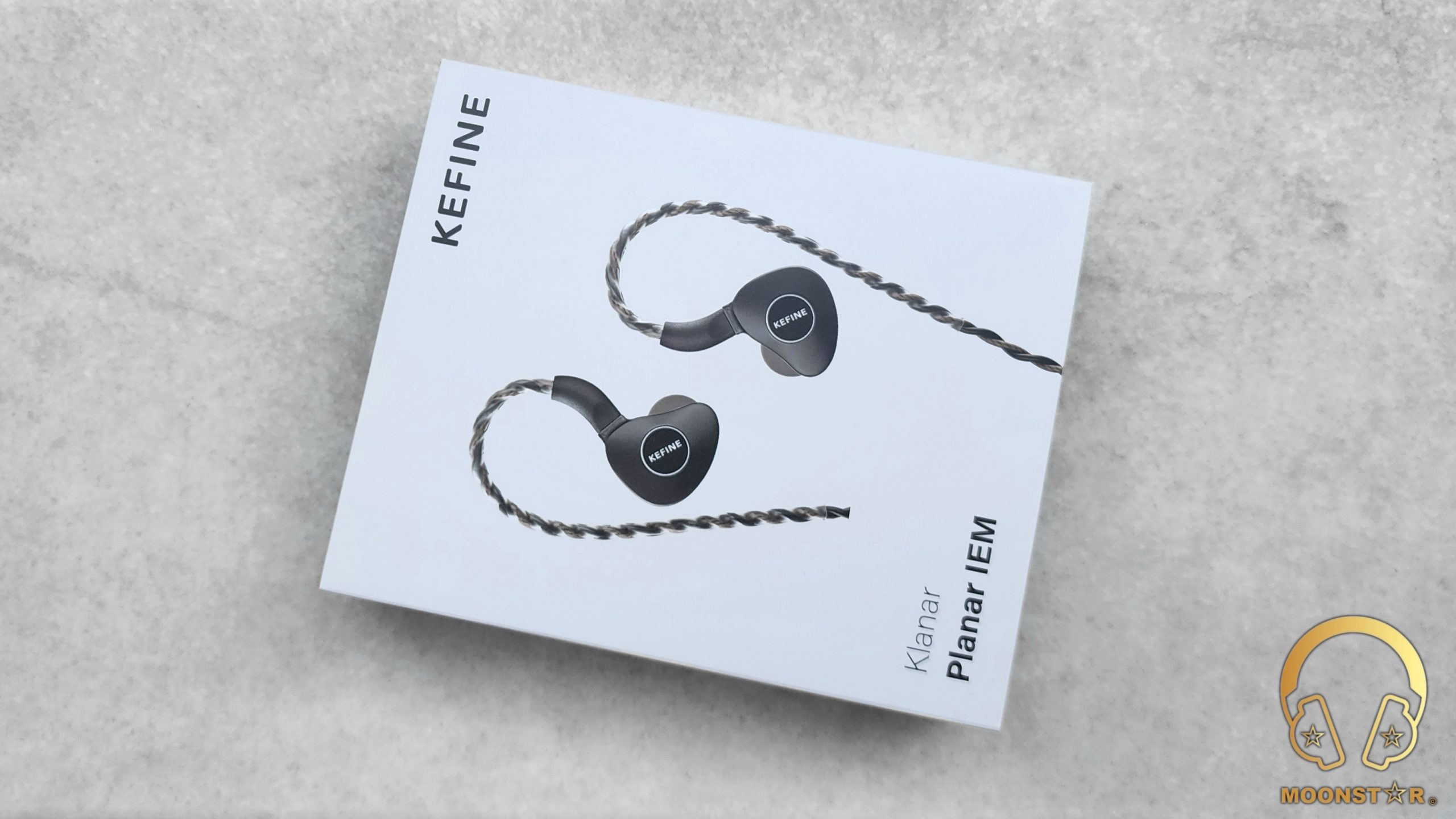
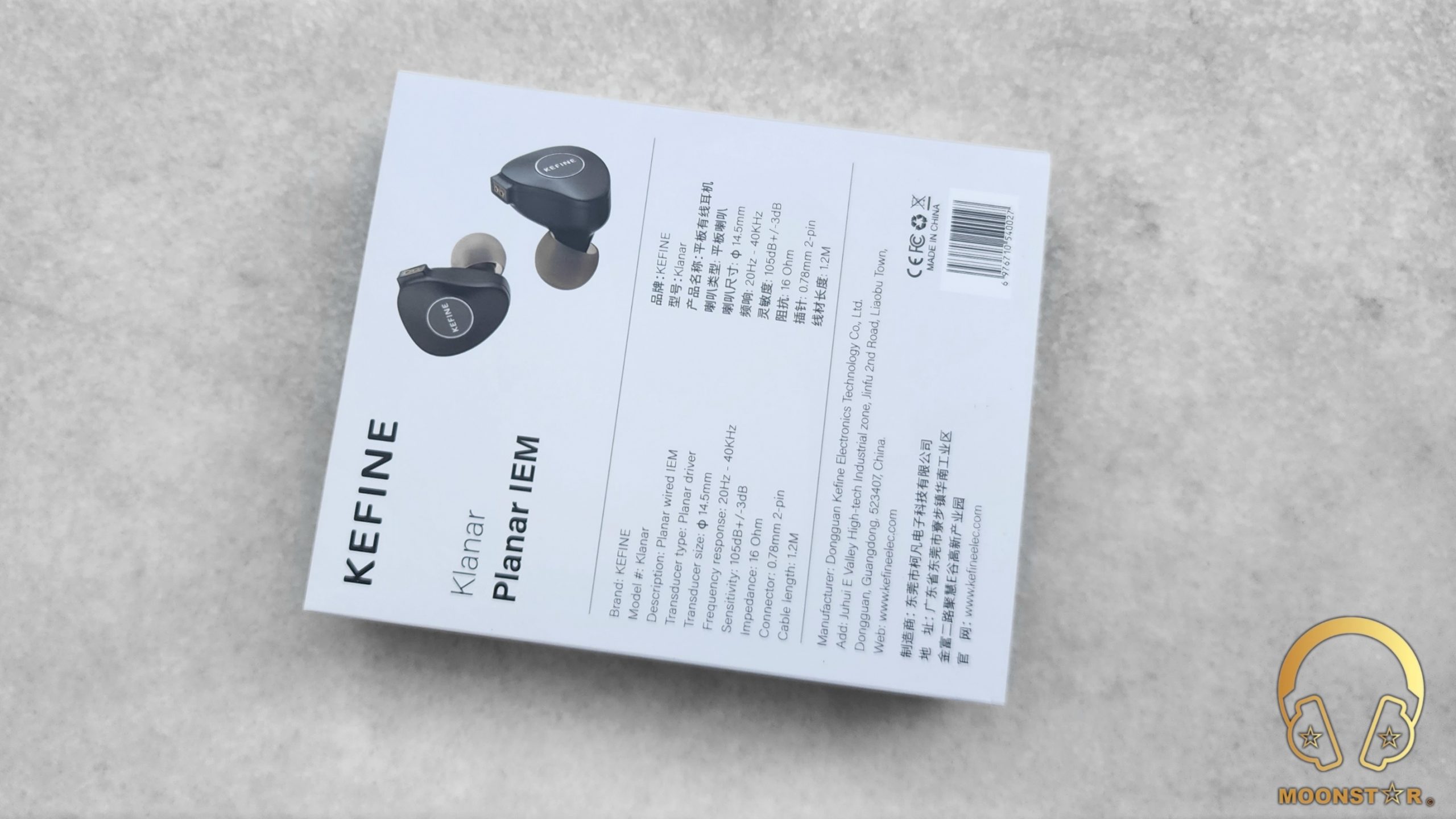
Inside the box are the following items/accessories;
- 1 x KEFINE Klanar Planar Driver In-Ear Monitors
- 1 x 2-Pin Detachable Cable with 3.5mm Headphone Plug
- 3 x pairs of Balanced Silicone Ear Tips (S, M, L)
- 3 x pairs of Bass Enhance Silicone Ear Tips (S, M, L)
- 1 x Zipper Case
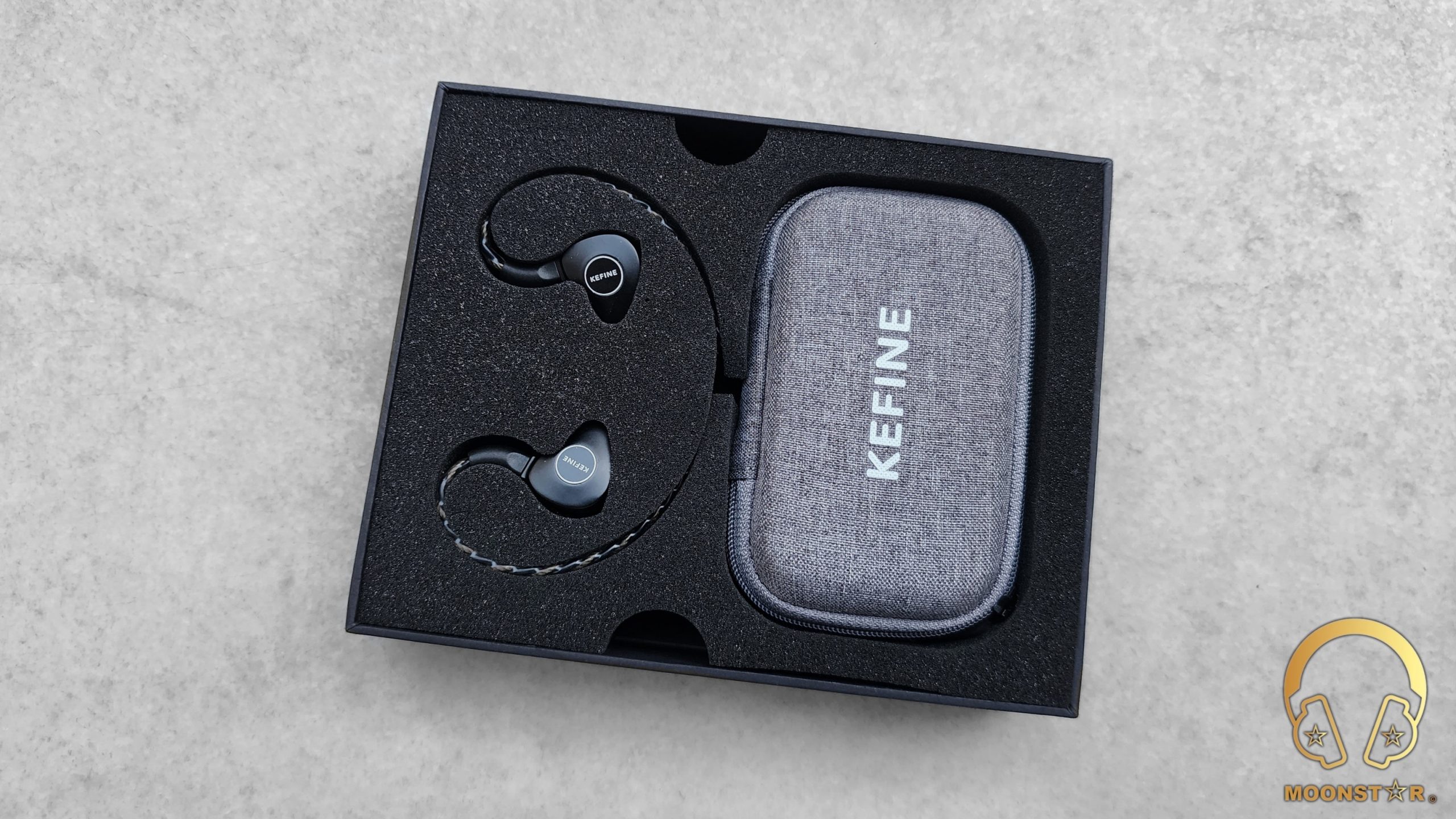
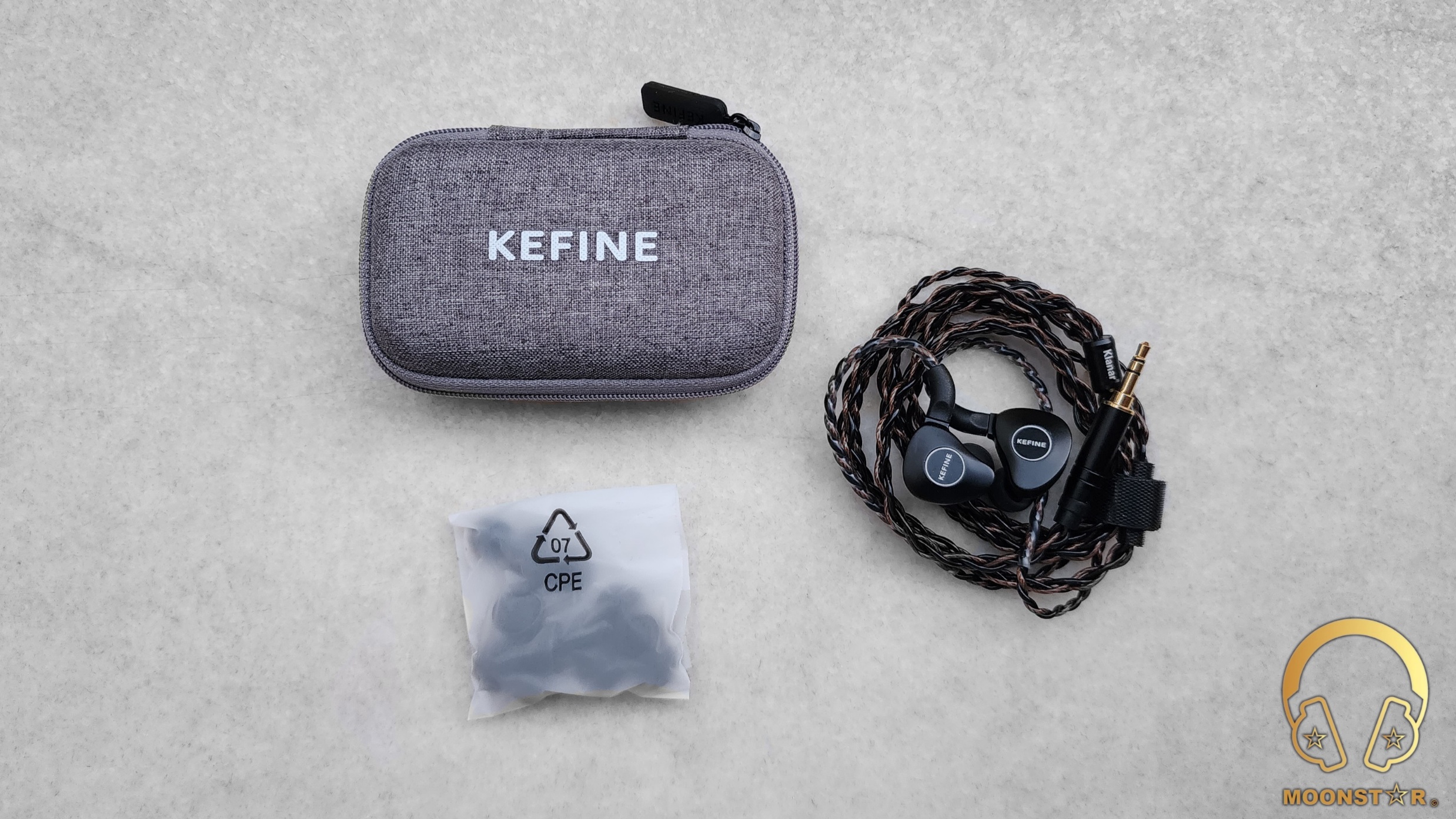
Design & Build Quality:
The KEFINE Klanar has a sturdy monitor housing made of a 5-Axis machined single piece of aluminum alloy with a black anodized finish. The monitor housing is designed to be as small as possible, with a shell wall thickness of only 0.2mm at the thinnest point.
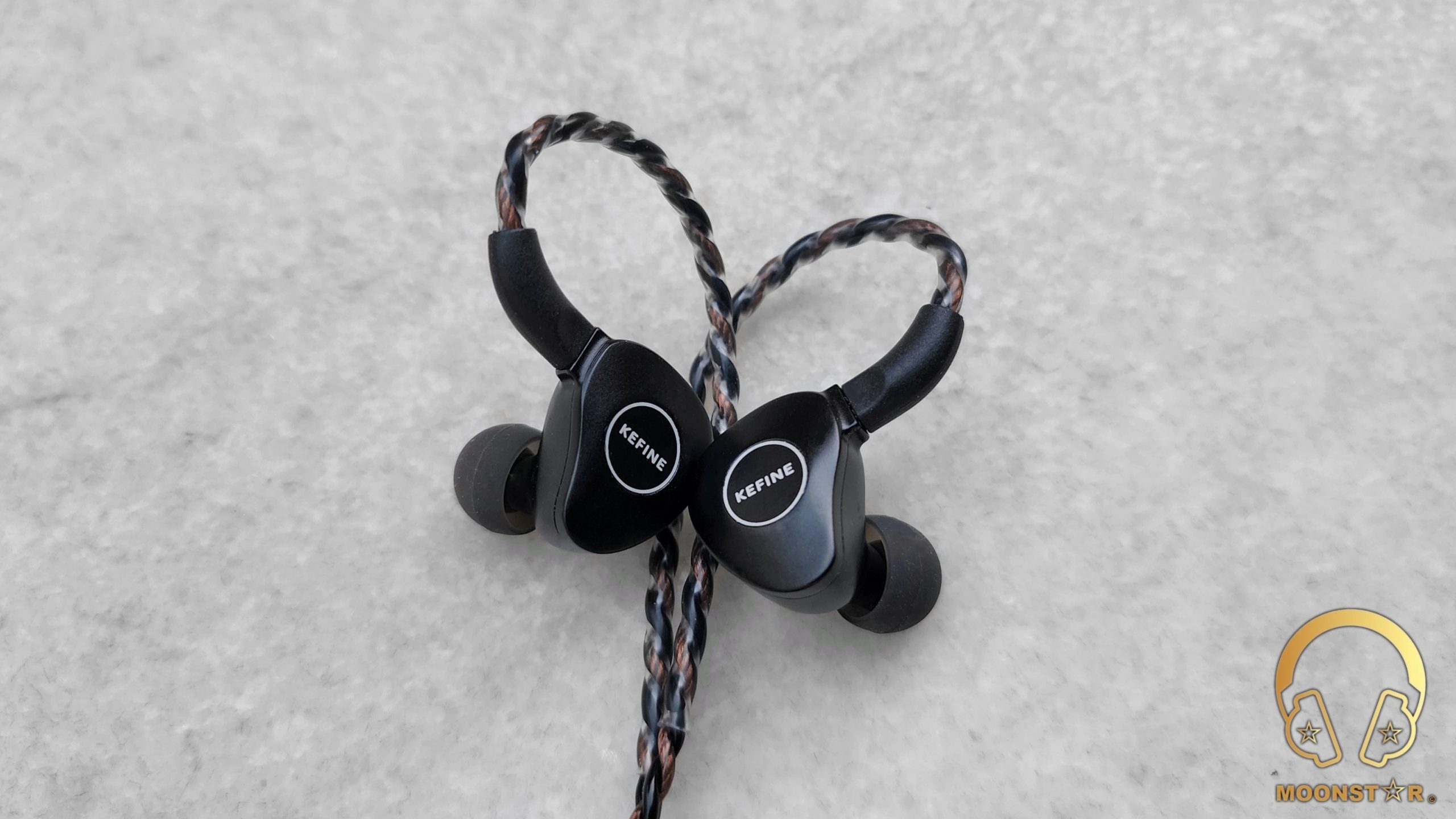
Inside the monitors is a 14.5mm large planar magnetic driver unit with a PET composite diaphragm, N55 magnet and customized driver construction.
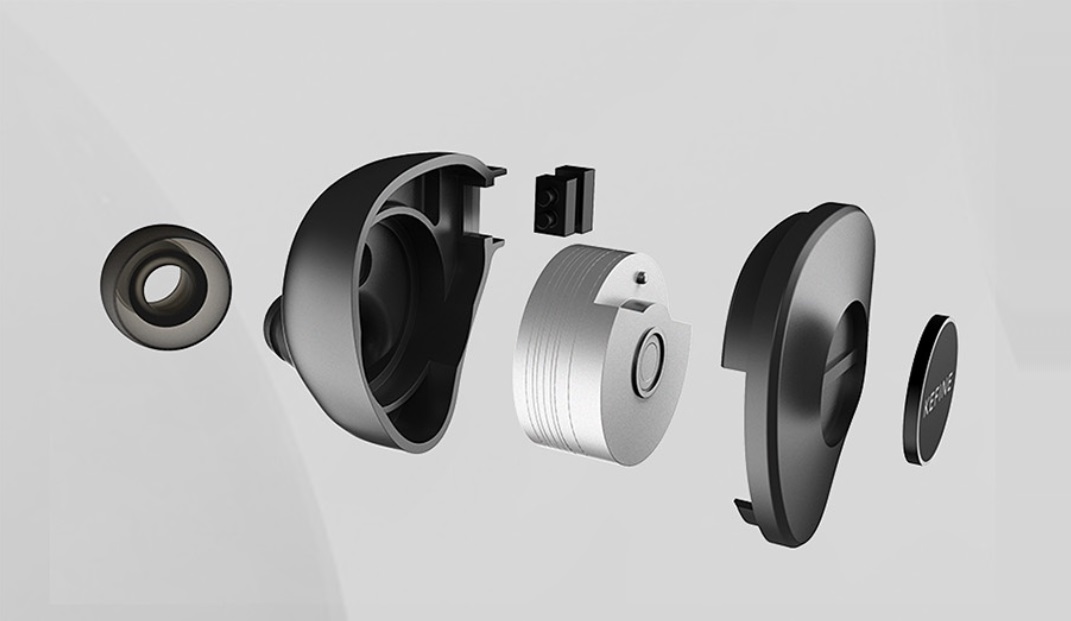
The faceplate has a simple and elegant design, featuring the KEFINE logo in the center of a circular shape.
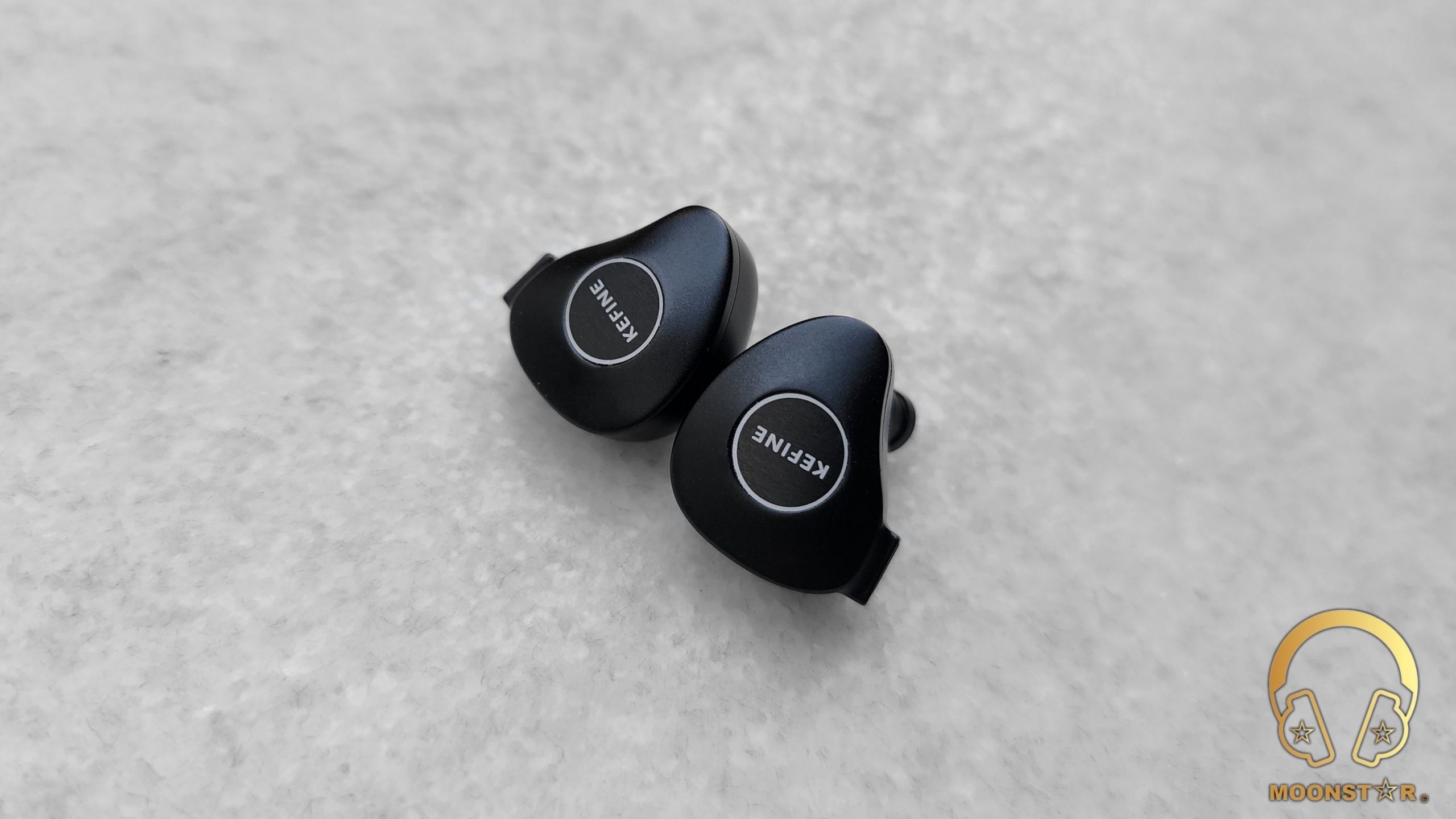
The inner cavity has two openings, the L (left earpiece) / R (right earpiece) makings and the slightly angled sound nozzle. On the top of each nozzle is a metal filter in order to prevent the insertion of unwanted particles such like dust or earwax, which has a nice texture. Here are also a two pressure relief holes.
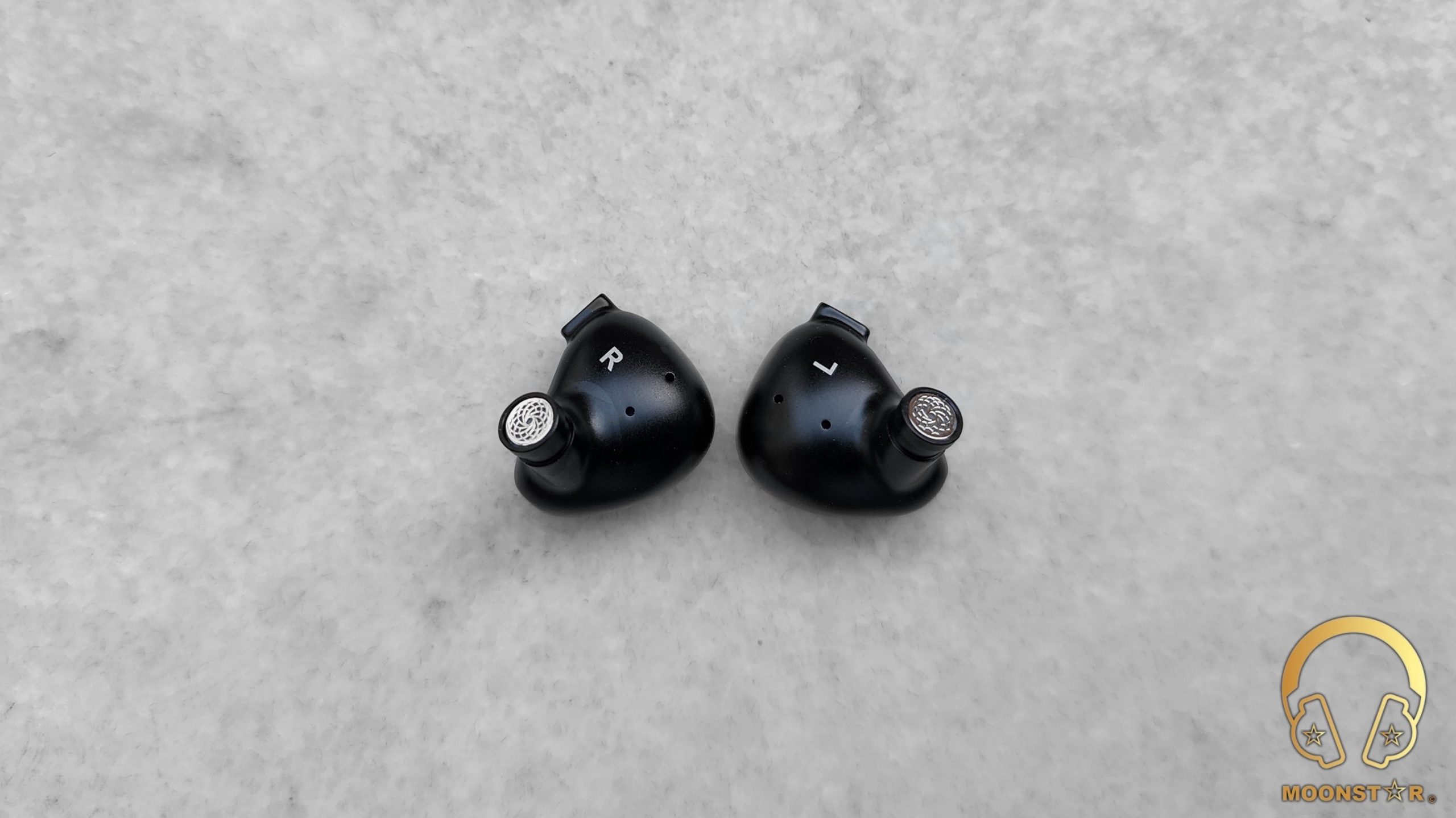
On the top of the monitor shell is the 0.78mm diameter 2-Pin female connector interface that offers a tight connection.

The KEFINE Klanar comes with an innovative 4 core dual-wire cable design combines two distinct components, which is the OFC (Oxygen Free Copper) litz wire with a brown and the silver-plated copper litz wire cable with a black insulation outlay.
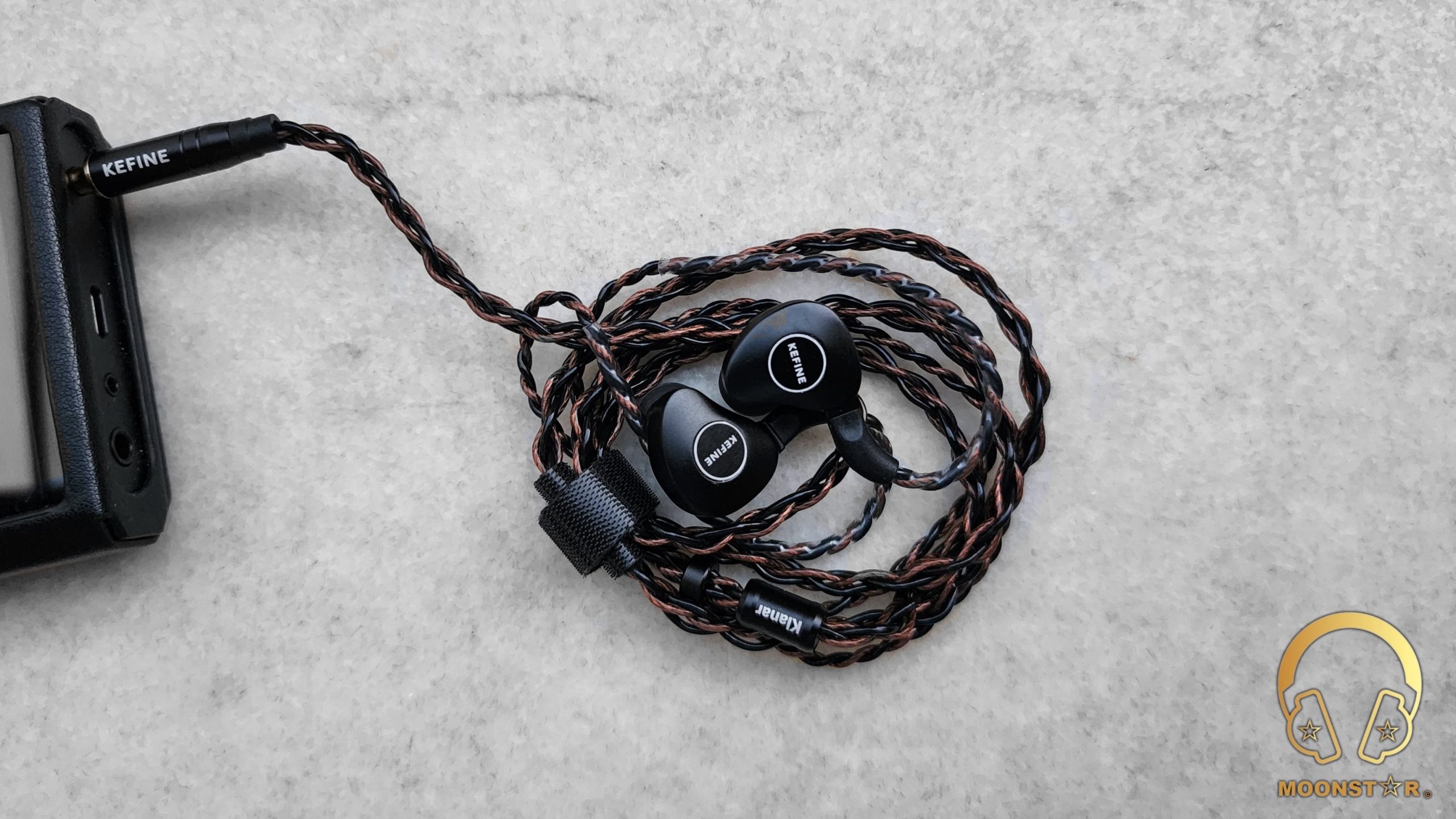
Each core features 54 strands that makes 216 strands in total.

The cable has a braided design and a relative soft TPU insulation that shows a pretty low amount of microphonic effect.
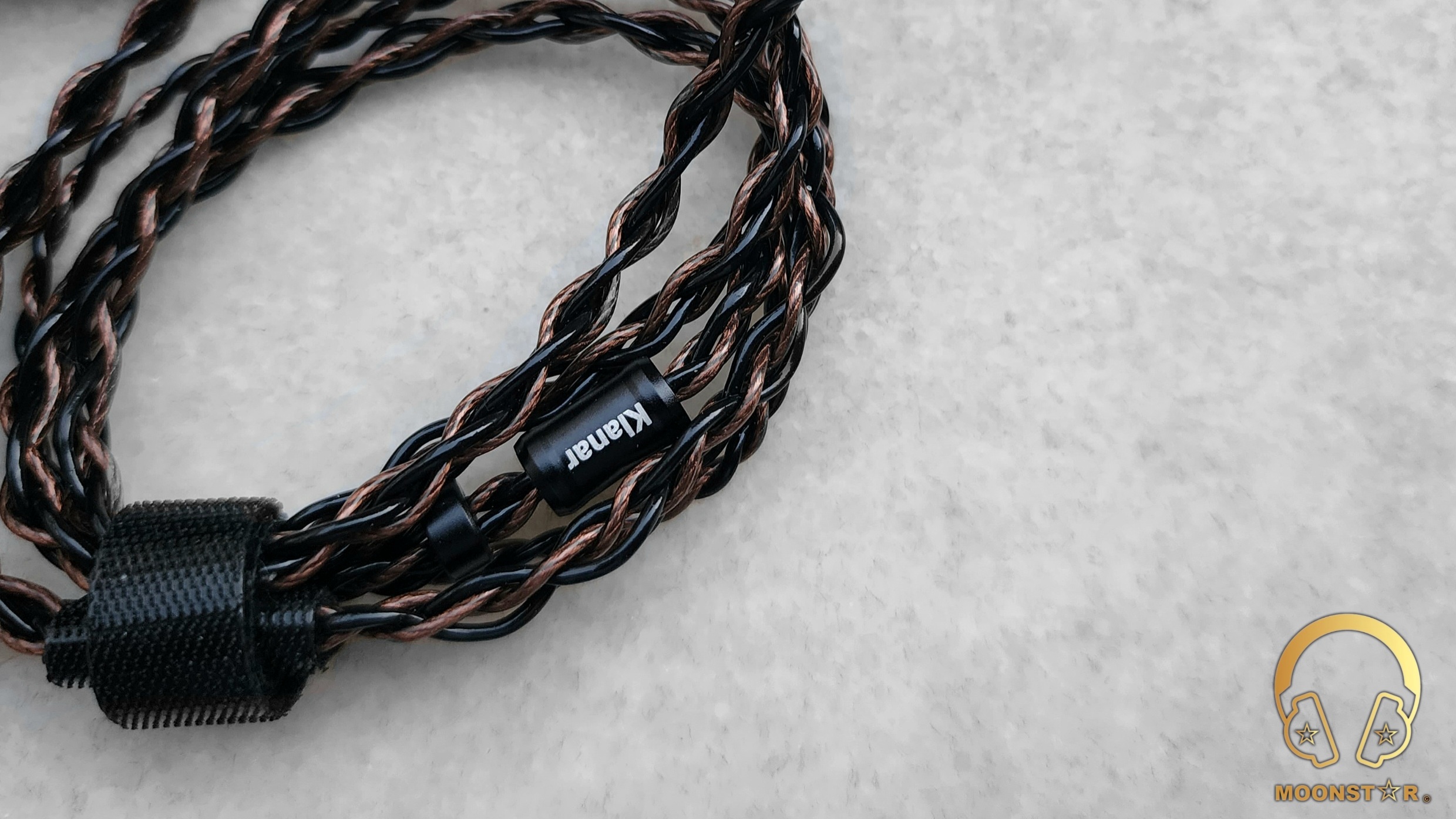
The 2-Pin connectors do have a plastic housing; the L/R markings are not very visible. Near the left and right connectors are heat shrink ear guides for extra comfort on the go.
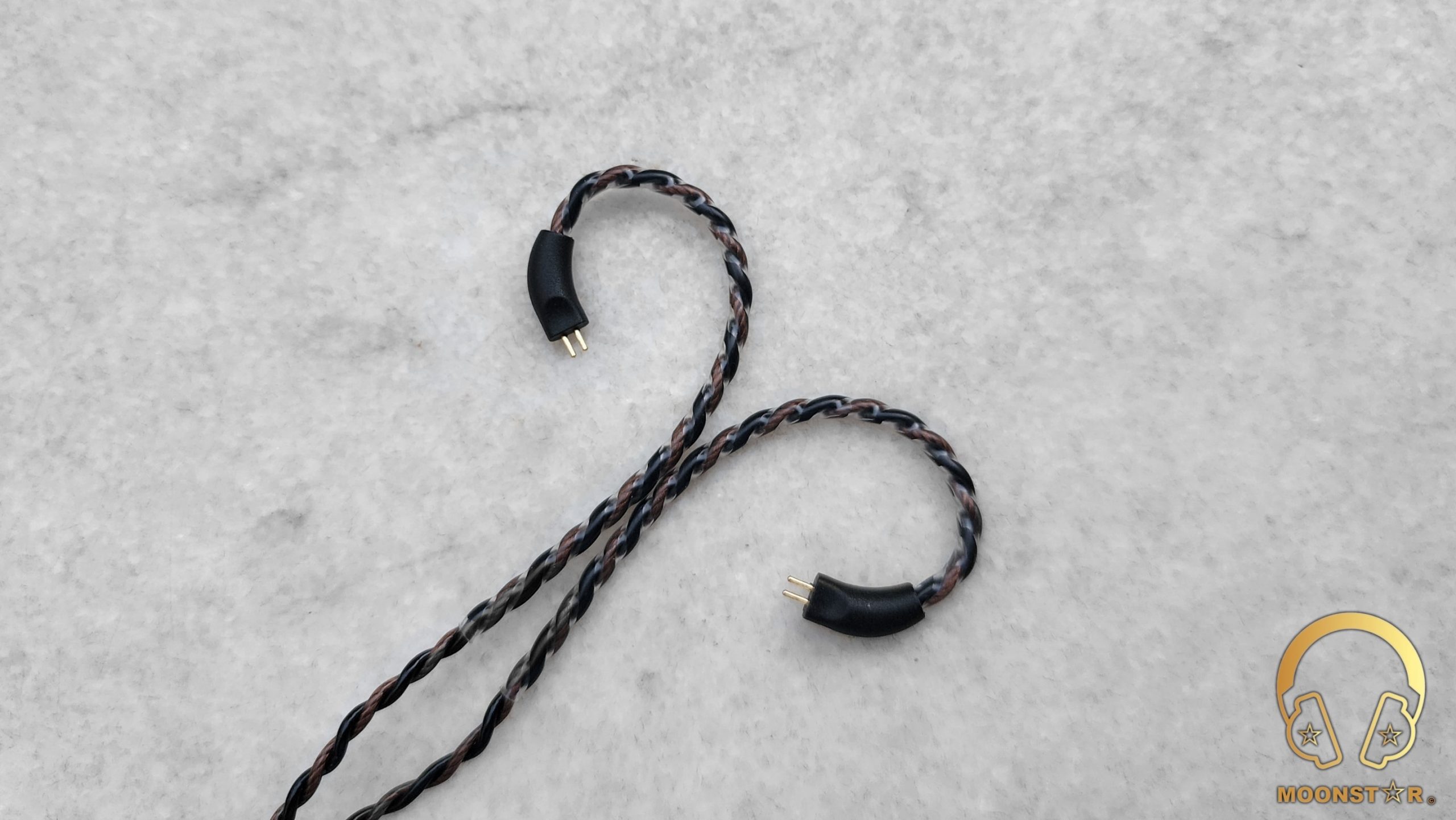
There cable comes with a metal y-splitter & chin slider with a black anodized fisnish, while the y-splitter sports the Klanar branding on its surface.
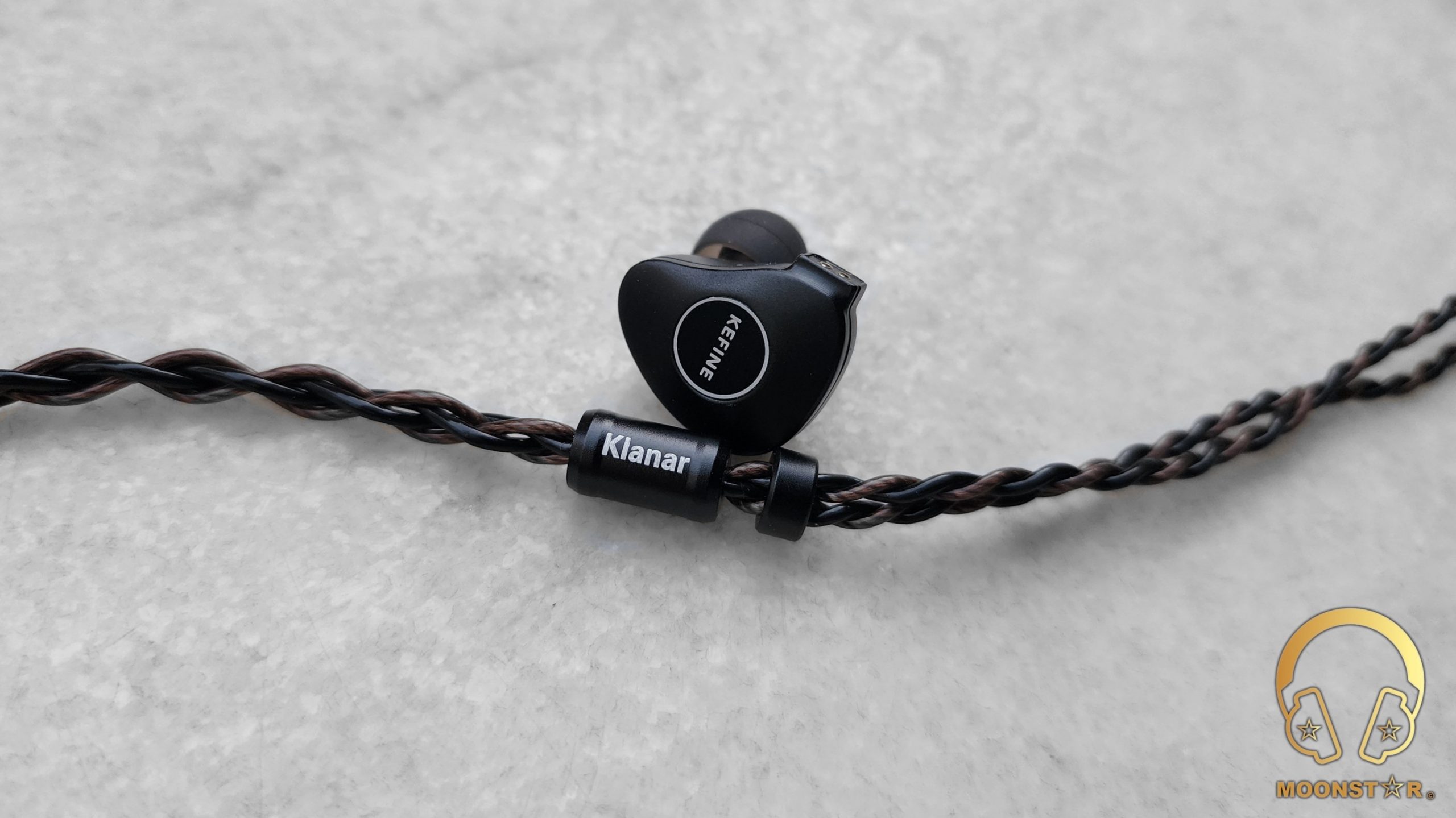
The detachable cable is available in two different headphone plugs terminations, which are the one with a 3.5mm Single Ended interface and the one with a 4.4mm Balanced (TRRRS) plug interface that you can chose when your order the monitors. My review unit came with the 3.5mm Single Ended plug variant that features a straight profiled metal housing with the same black fisnish that has the KEFINE branding.
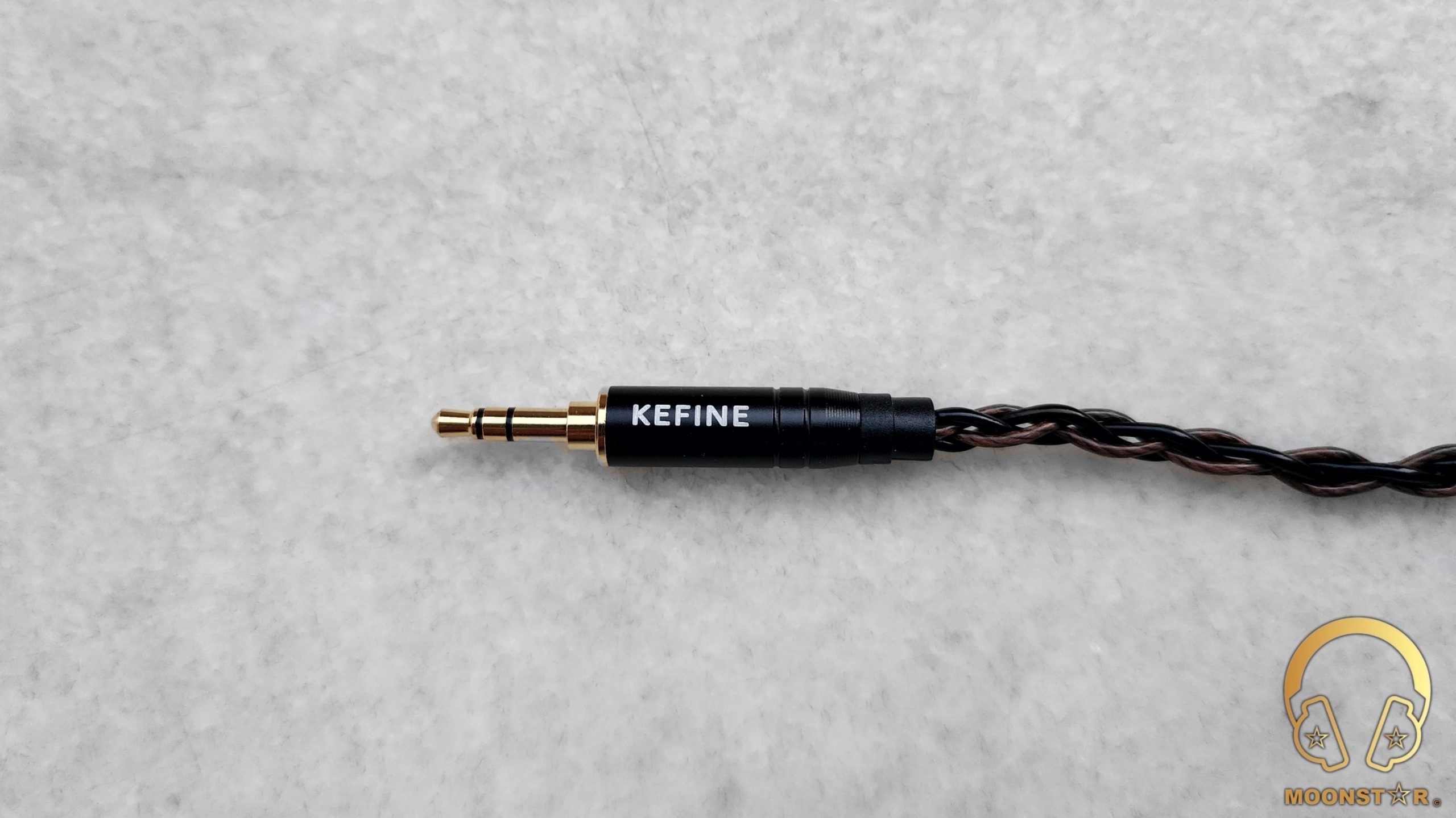
The build quality of both the monitors and the detachable cable is decent!
Comfort & Isolation:
I relay like the monitor shape of the KEFINE Klanar, which fits perfectly to my medium sized ears and it does not hurt my concha even after longer listening periods. The passive noise isolation of the monitors is on an average level that is sufficient suitable for the use in relative noise environments such like a bus or a train.
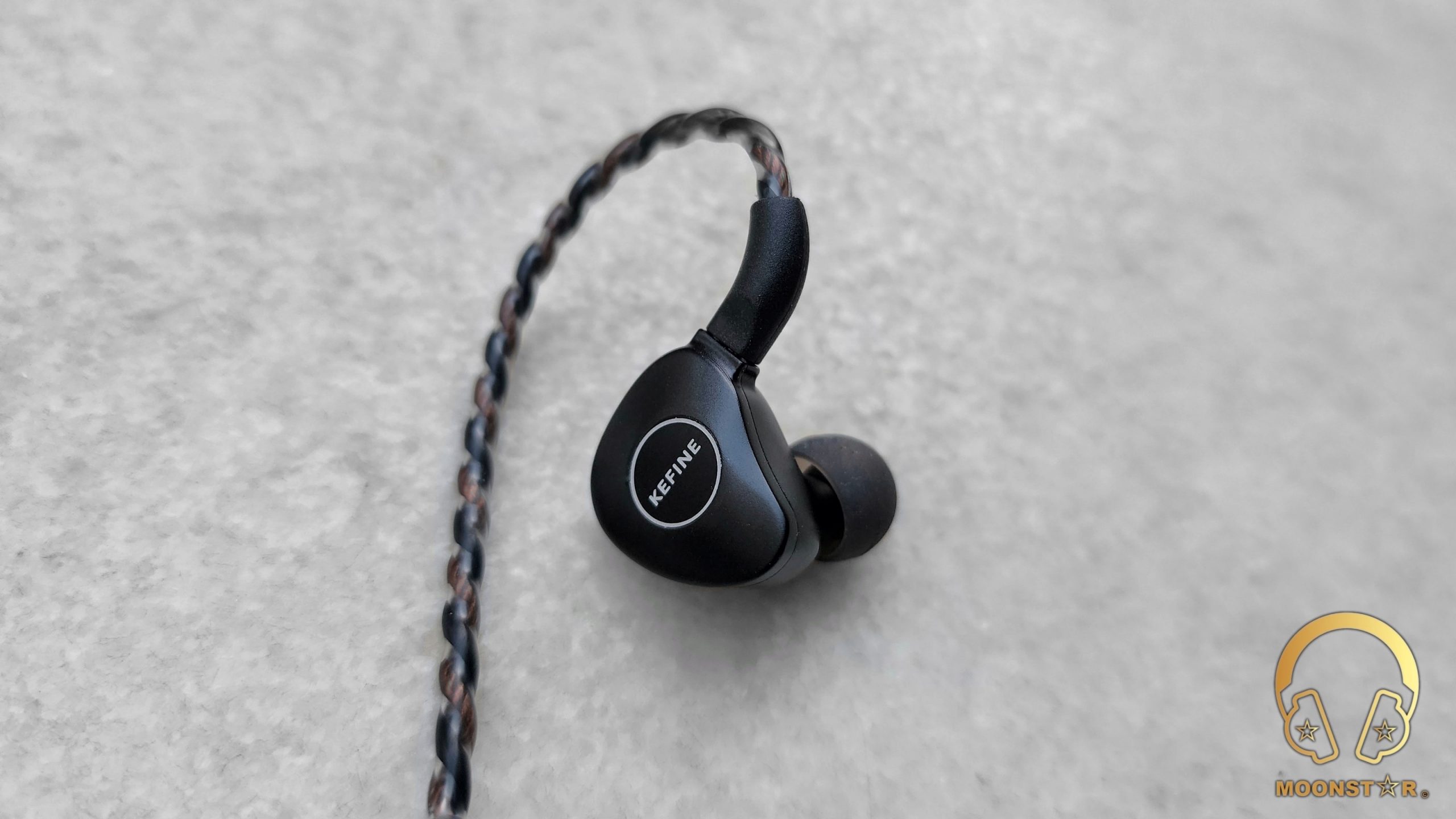
Pairing & Drivability:
The KEFINE Klanar is not a hard to driver Planar IEM despite its relative large 14.5mm diameter Planar Magnetic Driver unit. It has an rated impedance of 16Ω and a sensitivity of approx. 105dB, which makes it compatible with sources like a USB DAC/AMP dongles (FiiO KA1) or smaller sized DAP’s (Hidizs AP80) with limited amplification capabilities. However, I have heard an audible improvement in terms of sound performance when I have hooked the Klanar to a desktop amplifier like the FiiO K9 and Topping DX5 Lite, which showed a better sense dynamics and a more expansive soundstage presentation.
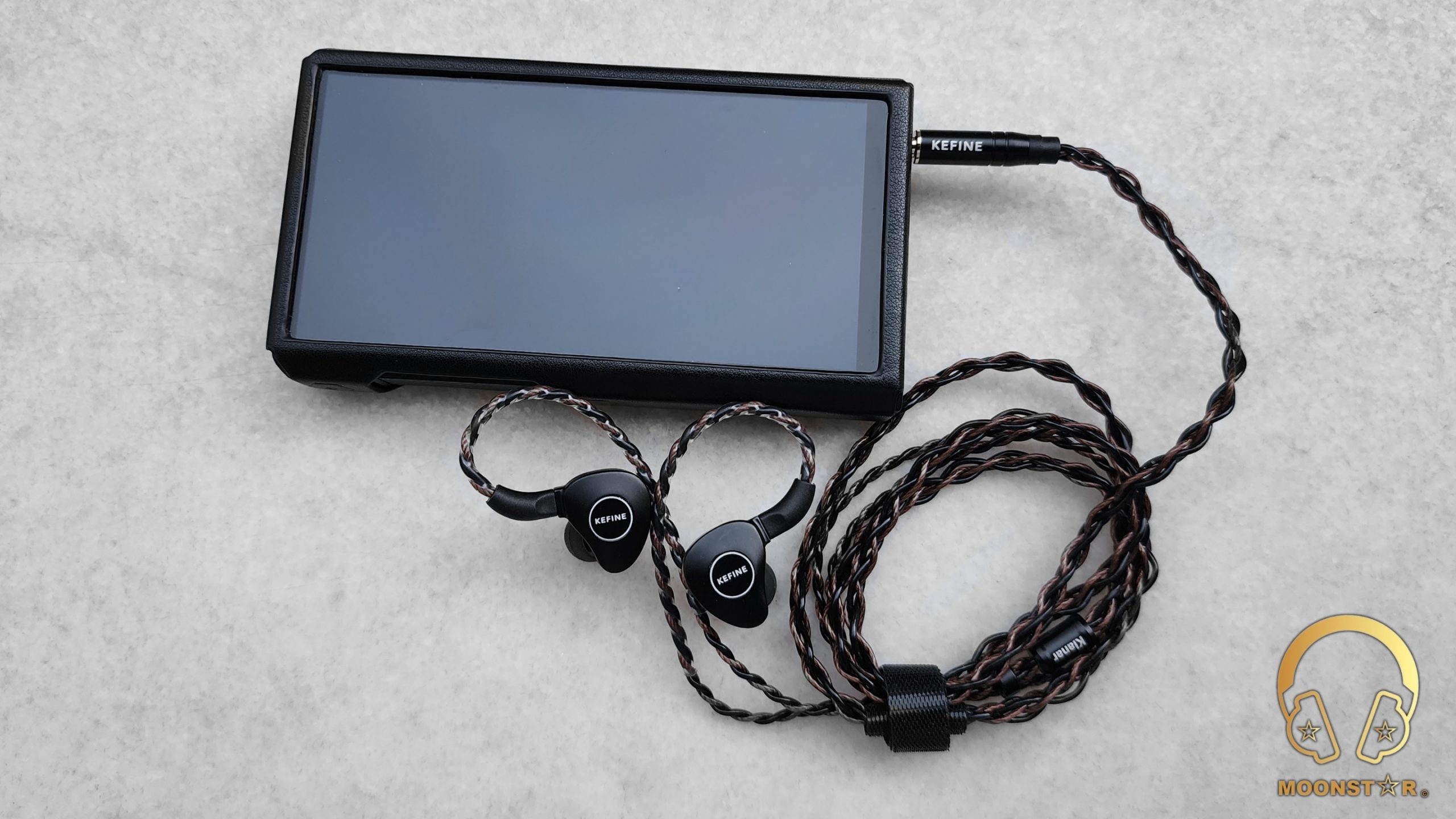
Technical Specifications:
- Model : Klanar
- Driver Unit : 14.5mm dia. Planar Magnetic Driver
- Sensitivity : 105dB +/- 3dB
- Impedance : 16Ω
- Frequency Response : 20 Hz – 40 KHz
- Connector Interface : 0.78mm dia. 2-Pin
- Plug : 3.5mm Single Ended or 4.4mm Balanced
- Cable Length : approx. 120cm
Equipment’s used for this review:
- IEM’s : KEFINE Klanar
- Sources : FiiO M11 Plus, FiiO K9, FiiO KA13, Topping DX5 Lite
Albums & Tracks used for this review:
- Adele – My Little Love (Spotify)
- Randy Crawford – On Day I Will Fly Away (Flac 16bit/44.1kHz)
- Hayley Westenra – Odyssey Album (Dezzer HiFi)
- Dionne Warwick – Walk On By (Flac 16bit/44.1kHz)
- Sarah McLachlan – Angel (Flac 24bit/48kHz)
- Sertap Erener – Aşk (Flac 16bit/44.1kHz)
- Edith Piaf – Non Je Ne Regrette Rien (Flac 16bit/44.1kHz)
- Diana Krall – So Wonderful (DSF)
- Aretha Franklin – I Say A Little Payer (Flac 24bit/96kHz)
- Sonya Yoncheva – (Giuseppe Verdi) II Trovatore, ActI (Flac 24bit/96kHz)
- George Michael – Don’t Let the Sun Go Down on Me (Flac 24bit/192kHz)
- David Bowie – Heroes (Flac 24bit/192kHz)
- Elton John – Rocket Man ((Flac 24bit/96kHz)
- Barry White – Just The Way You Are (Flac 24bit/48kHz)
- Isaac Hayes – Walk On By (Flac 16bit/44.1kHz)
- Sting – Englishman in New York – (Flac 24bit/48kHz)
- Eric Clapton – Wonderful Tonight (Flac 24bit/96kHz)
- B.B. King – Riding With The King (Tidal Hi-Fi)
- Dave Gahan – Kingdom (Tidal Hi-Fi)
- U2 – Sunday Bloody Sunday (Flac 16bit/44.1kHz)
- Billie Eilish – Bad Guy (Deezer HiFi)
- Imagine Dragons – Believer (Deezer HiFi)
- Bro Safari, UFO! – Drama (Deezer HiFi)
- Armin Van Buuren – Vini Vici (Flac 16bit/44.1kHz)
- Daft Punk – Doin’ it Right (Flac 24bit/96kHz)
- Jo Blankenburg – Meraki (Spotify)
- Lorde – Royals (Flac 24bit/48kHz)
- Massive Attack – Angel (Flac 24bit/48kHz)
- Toutant – Rebirth (Deezer HiFi)
- Gogo Penguin – Raven (Flac 24bit/192kHz)
- Gogo Penguin – Murmuration (Flac 24bit/192kHz)
- Portishead – It Could Be Sweet (Spotify)
- Max Richter – On the Nature of Daylight (Flac 24bit/96kHz)
- Charly Antolini – Duwadjuwandadu (Flac 24bit/192kHz)
- Ferit Odman – Look, Stop & Listen (Flac 24bit/192kHz)
- Chopin – Nocturn No. 20 In C-Sharp Minor (Flac 16bit/44.1kHz)
- Fazıl Say – Nazım Oratoryosu (Live) (Flac 16bit/44.1kHz)
- Vivaldi – Le QuarttroStagioni “The Four Season” (Deezer HiFi)
- Otto Liebert & Luna Negra – The River (Flac 24bit/192kHz)
- Lunatic Soul – The Passage (Flac 16bit/44.1kHz)
- Deftones – My Own Summer (Shove it) (Flac 16bit/44.1kHz)
- Metallica – Sad but True (Flac 24bit/96kHz)
- Metallica – Master of Puppets (Flac 24bit/96kHz)
- Opeth – Windowpane (Flac 16bit/44.1kHz)
- Megadeth – Sweating Bullets (Tidal Hi-Fi)
- Rush’s – Leave That Thing Alone (Flac 16bit/44.1kHz)
- Slayer – Angel of Death (Spotify)
- Liquid Tension Experiment 2 – Acid Rain (Spotify)
- Yosi Horikawa – Bubbles (Spotify)
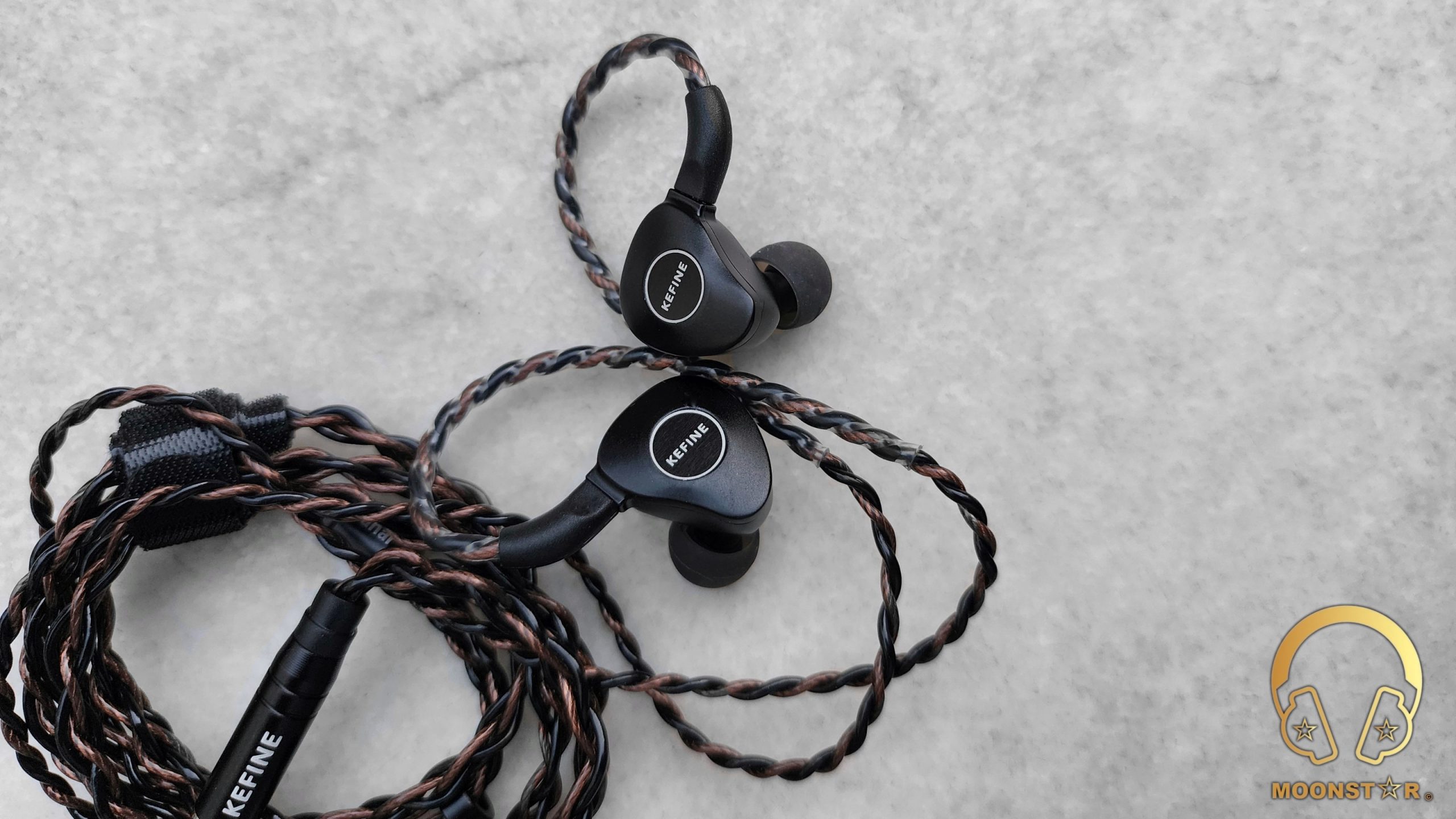
The Sound:
The KEFINE Klanar is an In-Ear Monitor that impresses with its clarity, power and fun tuned sound. It has a warm touch to its tonality that complements its lively and detailed sound profile. The bass is strong and controlled, the midrange is transparent and natural, and the treble range is produced in a smooth and relaxed manner, which avoids any shoutiness even at higher volume levels.
This review has written after a burn-in period of about 60 hours. I have used the stock balanced silicone ear tips and the stock 4core cable that are included inside the package. My sound impressions below are based on my auditions with devices like the FiiO M11 Plus ESS (DAP), FiiO KA13 (USB DAC) and Topping DX5 Lite (Desktop DAC/Amplifier).

Bass / Midrange / Treble / Soundstage & Imaging:
The KEFINE Klanar is a pair of IEMs that delivers a deep and powerful bass response, thanks to its 14.5mm Planar Magnet Driver that enhances the subbass area. The subbass region is one of the strengths of the Klanar, as it provides a satisfying level of depth, authority and extension, while listening to songs like Billie Eilish’s “Bad Guy”, Daft Punk’s “Doin’ it Right” and Imagine Dragons’ “Believer”, which are reproduced with a great sense of punch and rumble.
The midbass region is another aspect where the Klanar excels, as it produces a warm and full sound that complements the subbass region. The midbass region does not exhibit any signs of distortion or bleeding, and handles instruments like bass drums, bass guitars and pianos with ease.
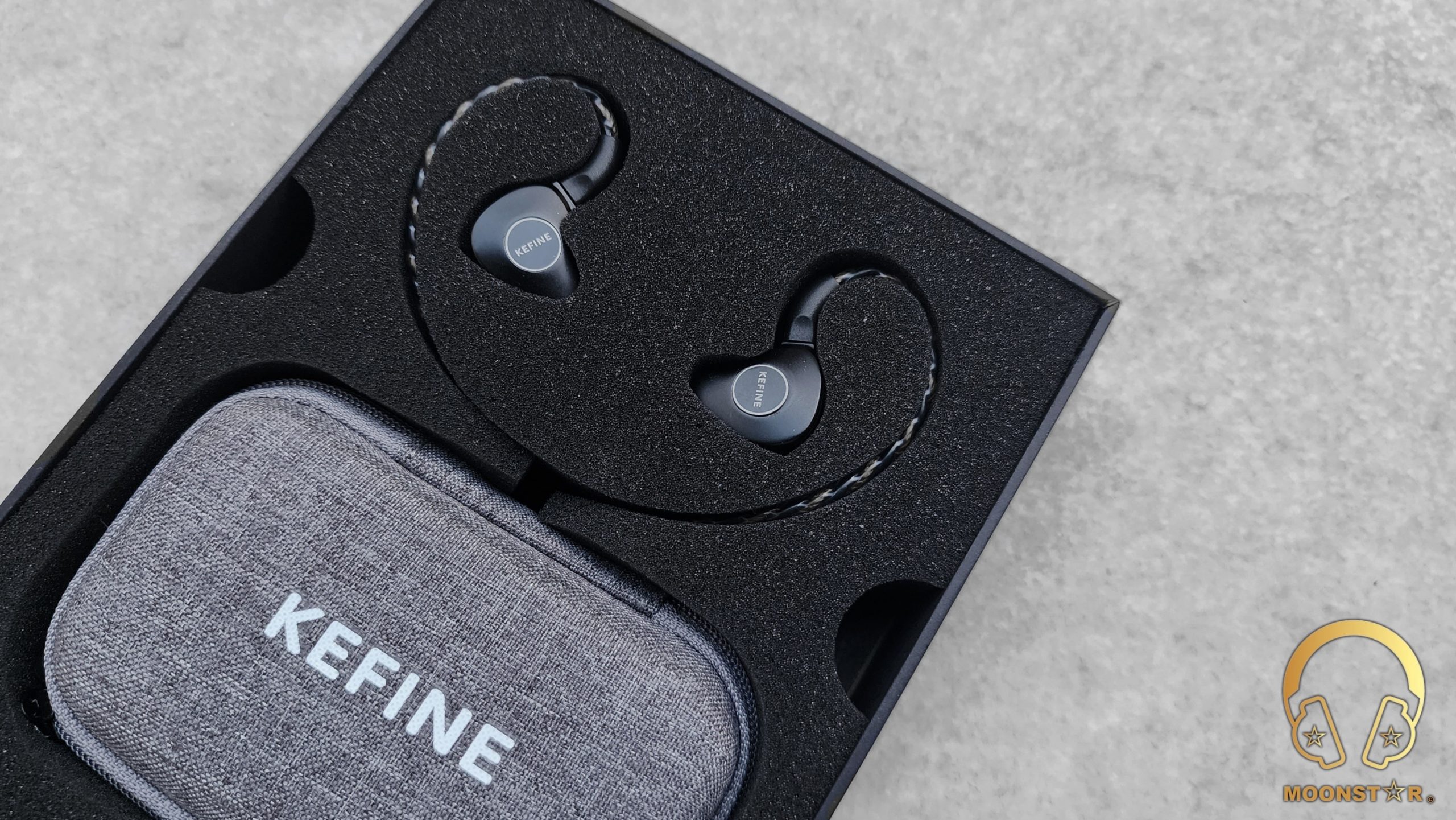
The KEFINE Klanar offers a pretty musical midrange presentation that is produced with a warmish tonality and in a fairly natural and balanced manner. The midrange of the Klanar is not affected by the lower frequency area, which surprised me since the bass is quite pronounced and is rendered with a good level of clarity and resolution, thanks to the well-adjusted upper midrange region.
The lower midrange of the KEFINE Klanar shows a moderate amount of body and depth when I have listen to male voices like Dave Gahan, Sting or Isaac Hayes and to instruments such like a violin and guitar, where I would wish a bit more body/fullness. The upper midrange on the other hand sounds more pronounced and lively compared to the lower midrange area and adds some good level of brightness and sparkle to the sound. Female voices and instruments like flutes, clarinets that have reproduced in a pretty clear and detailed manner and the grade of resolution is quite decent.
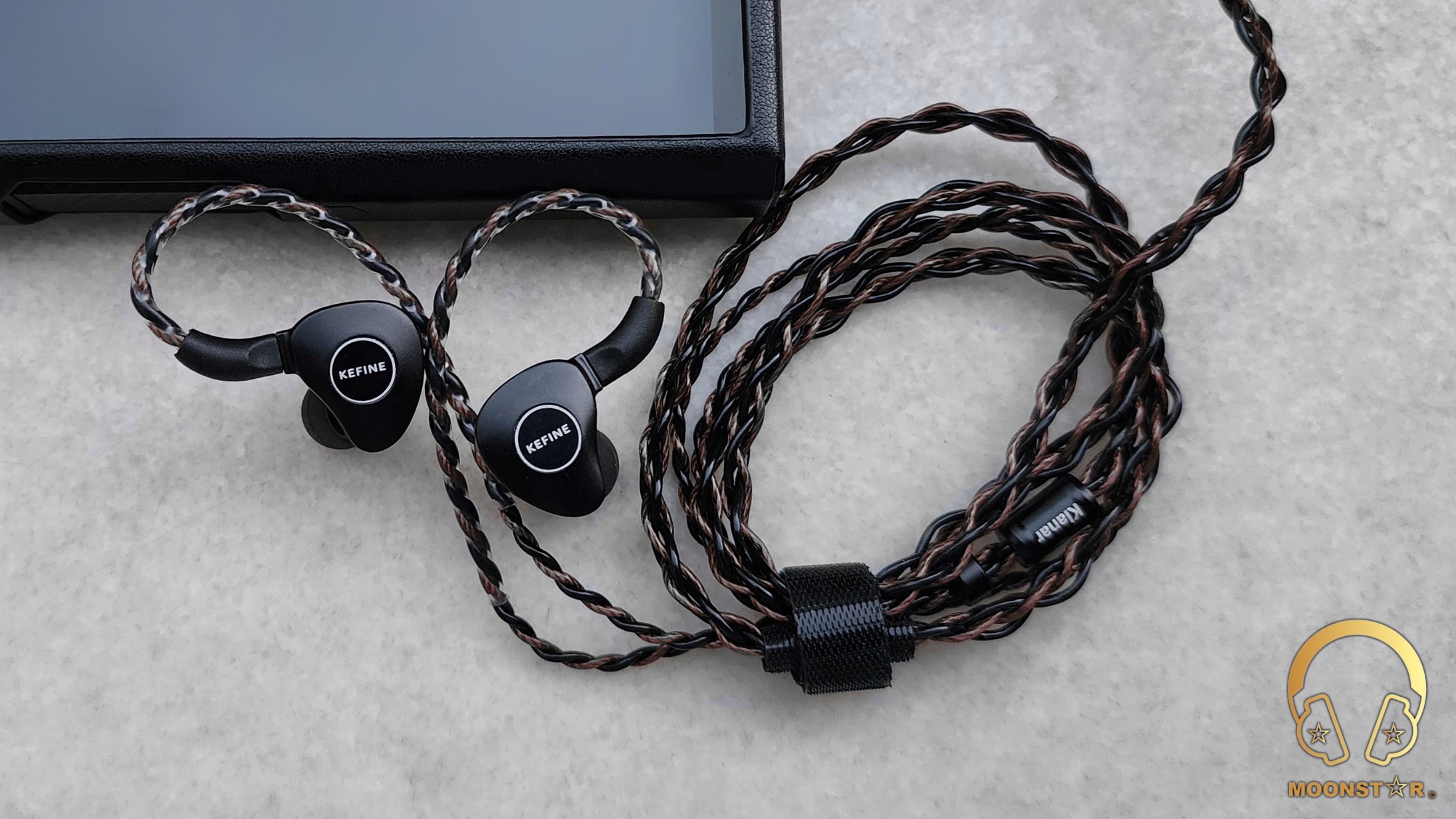
The lower treble region of the KEFINE Klanar is well rounded and is able to enhance the sense of clarity and brightness of this area. Strings, percussion and soprano voices do sound in general crisp and well defined. The lower treble region does not sound harsh or ear piercing, but rather smooth and balanced, which makes it ideal for longer listening periods and enjoyable for a wider variety of genres.
The mid treble region shows an audible roll-off that was audible when I have listen to cymbals and brass instruments. However, it does not make the Klanar do sound too dull and muted in this area. When it comes to the upper treble register, I can say that it adds some good sense of airiness and spaciousness to the sound. The Klanar performs well in this area, as it sounds airy and wide, and does not show any unwanted over sharpness. It is rather smooth and natural in this area, while the extension is a bit short.
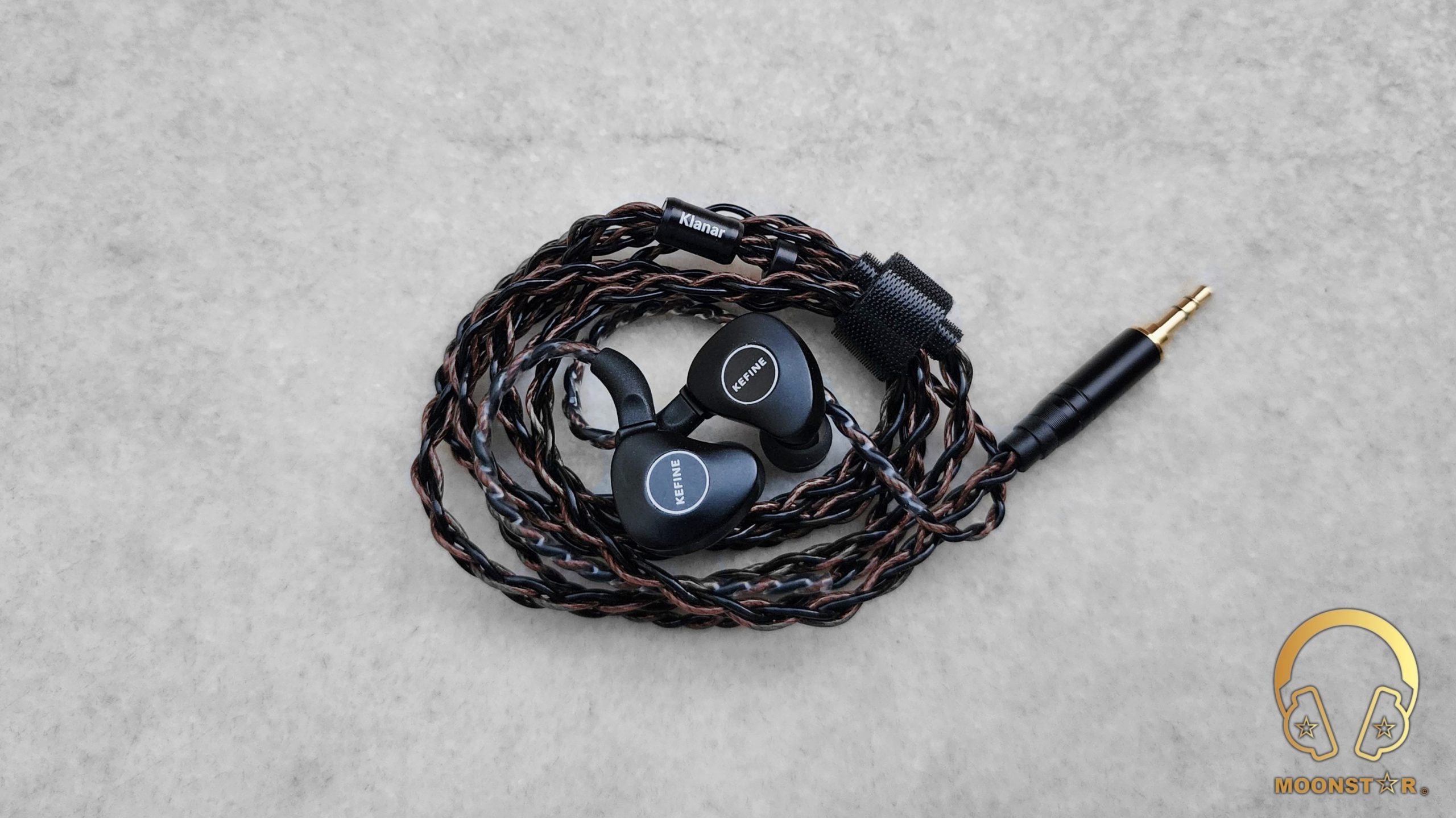
The KEFINE Klanar has a suitable soundstage for a relative precise instrument placement. It offers a pretty airy and spacious soundstage atmosphere, while the sense of depth and wideness of the stage is on a sufficient level for a product at this price level.
Conclusion:
The Klanar is a successful step by KEFINE in to the world of In-Ear Monitors. It has a robust build quality and offers a comfortable wearing experience. This small and compact monitor is equipped with a relative large 14.5mm Planar Magnetic Driver that is able to produce a musical sound experience with its powerful yet controlled bass response, warmish but transparent and clean midrange tuning, and a treble presentation that offers enough airiness and sparkle without to sound muted or shouty in this area.
Thank you for the Read!
Last edited:
RemedyMusic
An enjoyable read. Thanks for the review!
Moonstar
@RemedyMusic Thank you!
Moonstar
100+ Head-Fier
Pros: Versatile Sound Tuning,
Airy & Spacious Atmosphere,
Powerful and Clean Output (AK4332 DAC Chip + QCC 5141 BT SoC),
Very Stabile Connection with Low Latency,
LHDC BT Codec Support,
IPX4,
FiiO APP Control,
Good Value for your Money
Airy & Spacious Atmosphere,
Powerful and Clean Output (AK4332 DAC Chip + QCC 5141 BT SoC),
Very Stabile Connection with Low Latency,
LHDC BT Codec Support,
IPX4,
FiiO APP Control,
Good Value for your Money
Cons: No LDAC support (may come with a further FW update),
No Active Noise Cancellation,
No Touch Controls (a matter of preference)
No Active Noise Cancellation,
No Touch Controls (a matter of preference)
FiiO FW5 TWS IEM Review
Introduction:
FiiO FW5 is the brand new True Wireless (TWS) earphone of the company with a 2BA + 1DD Hybrid Driver configuration that has some pretty interesting features such like an independent AK4332 DAC chipset, Qualcomm QC5141 Bluetooth SoC with LHDC, AptX Adaptive codec support, IPX4 Water Resistance, up to 7hours of battery life and many more.
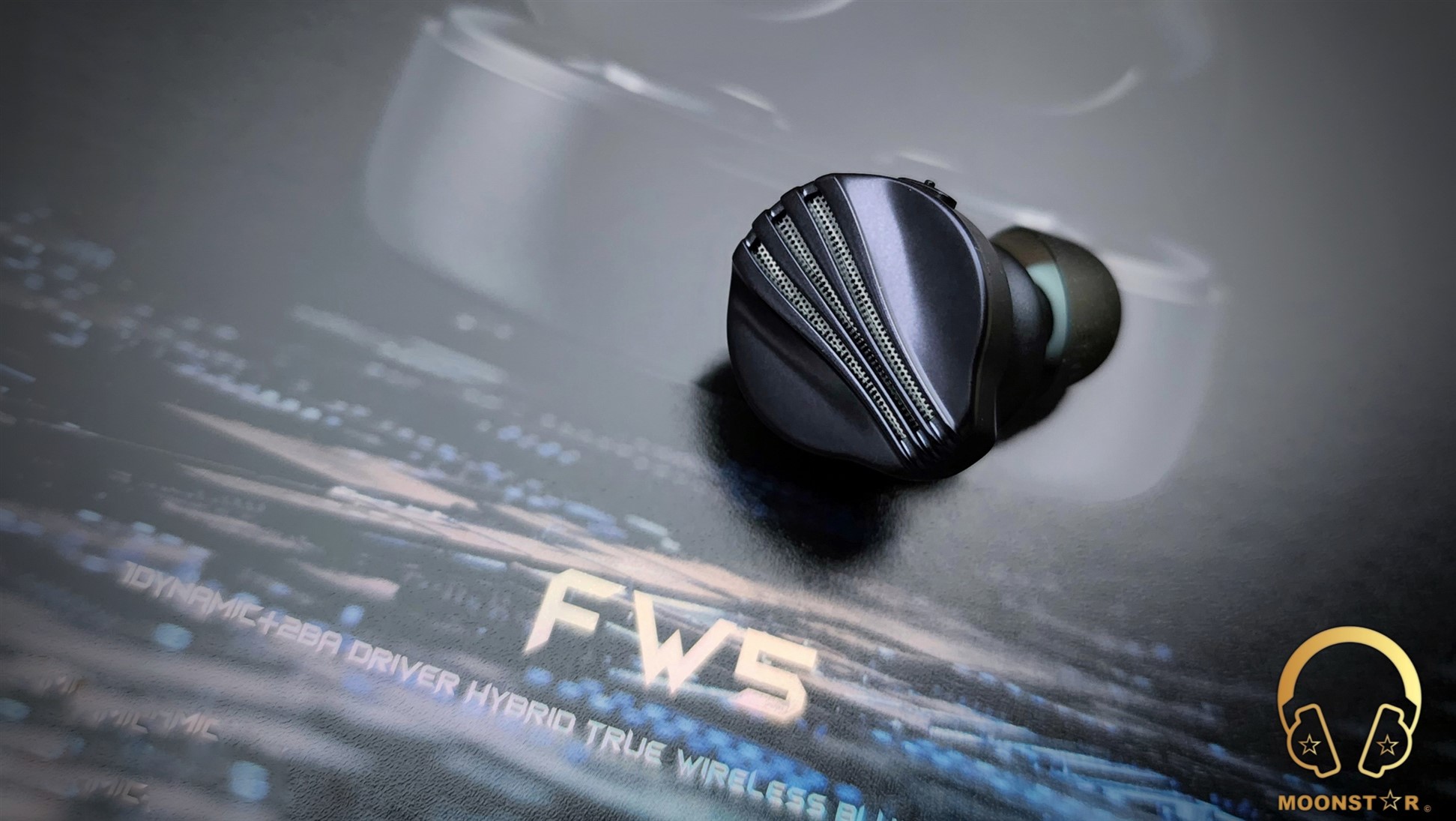
Disclaimer:
I would like to thank FiiO for providing me the FW5 TWS Earphone for review purposes. I am not affiliated with FiiO beyond this review and these words reflect my true and unaltered opinions about the product.
Price & Availability:
The actual price for the FiiO FW5 TWS Earphone is 134.99 US$. More information’s can be found under the link below;
Package & Accessories:
The black rectangular box with the illustration of the FiiO FW5 looks pretty nice. This box reflects the companies new design language for the presentation of their latest products.
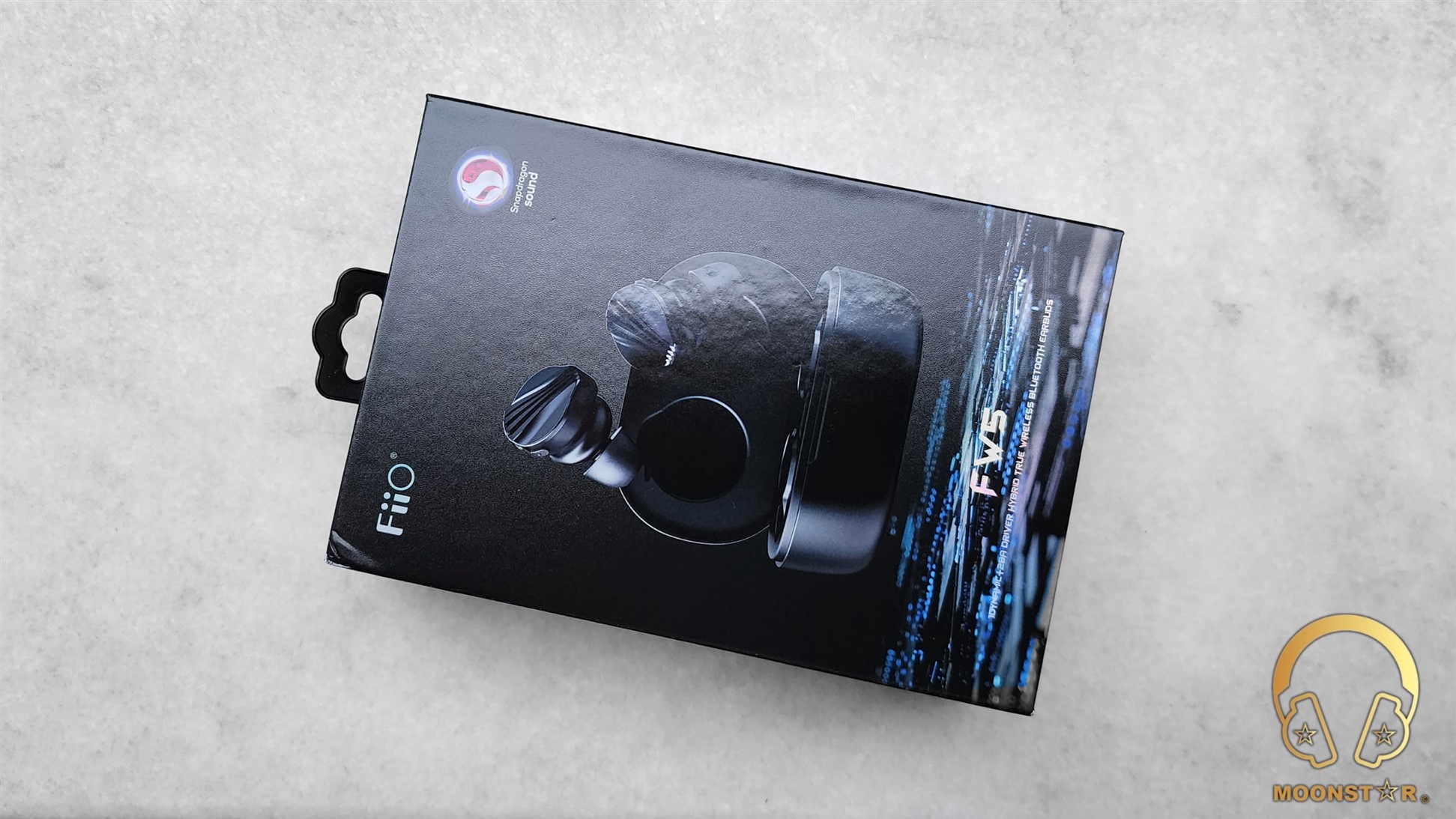
This box contains the following items/accessories;
- 1x pair of FiiO FW5 TWS Earphones
- 1x Charging Case
- 3x pairs of FiiO HS18 Silicone Ear Tips (S/M/L)
- 3x pairs of Balanced Silicone Ear Tips (S/M/L)
- 1x Cleaning Tool
- 1x Cleaning Brush
- 1x USB Type-C Charging Cable
- 1x Print Material (User Manual, Quick Start Guide, Warranty Card)
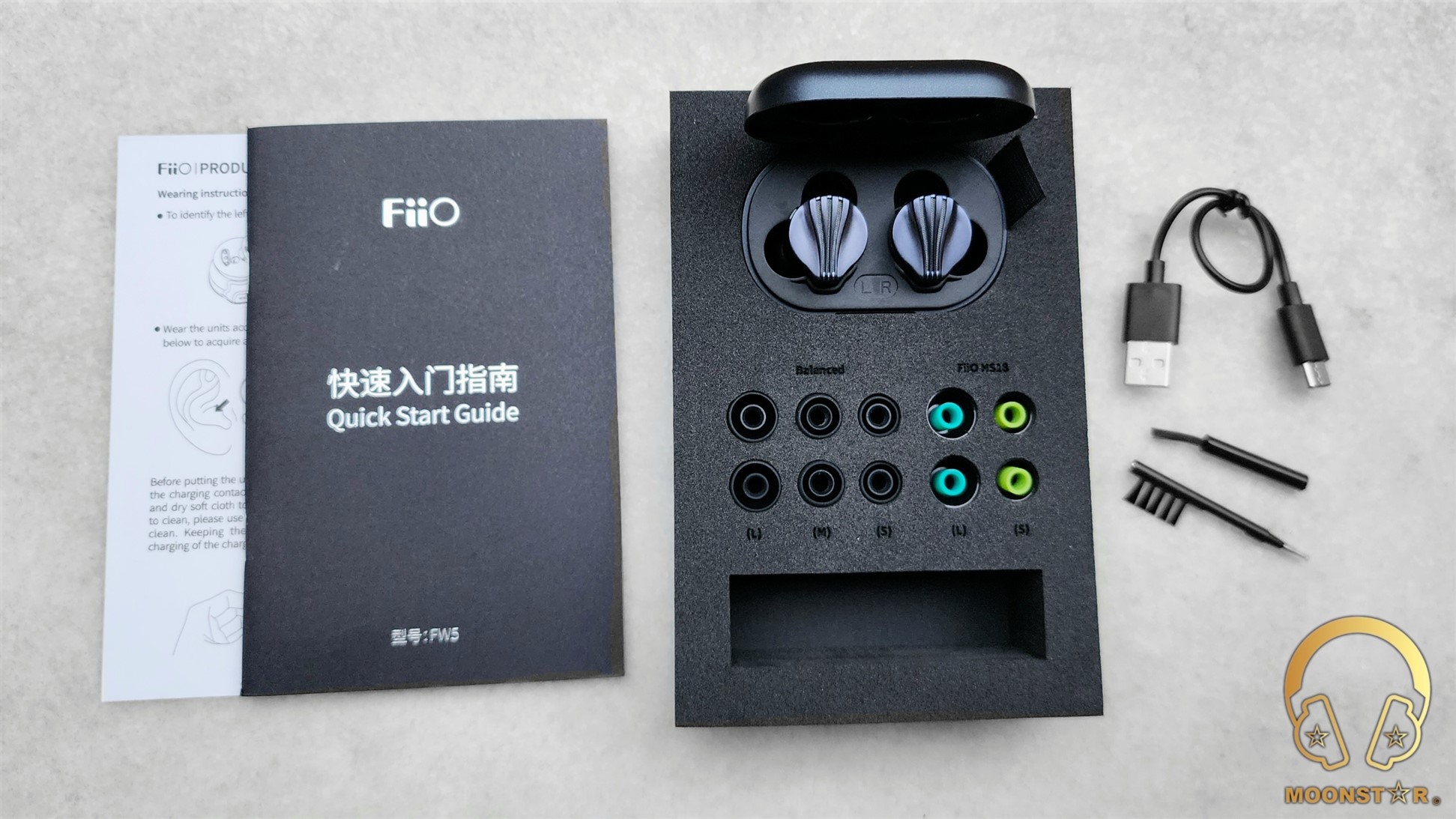

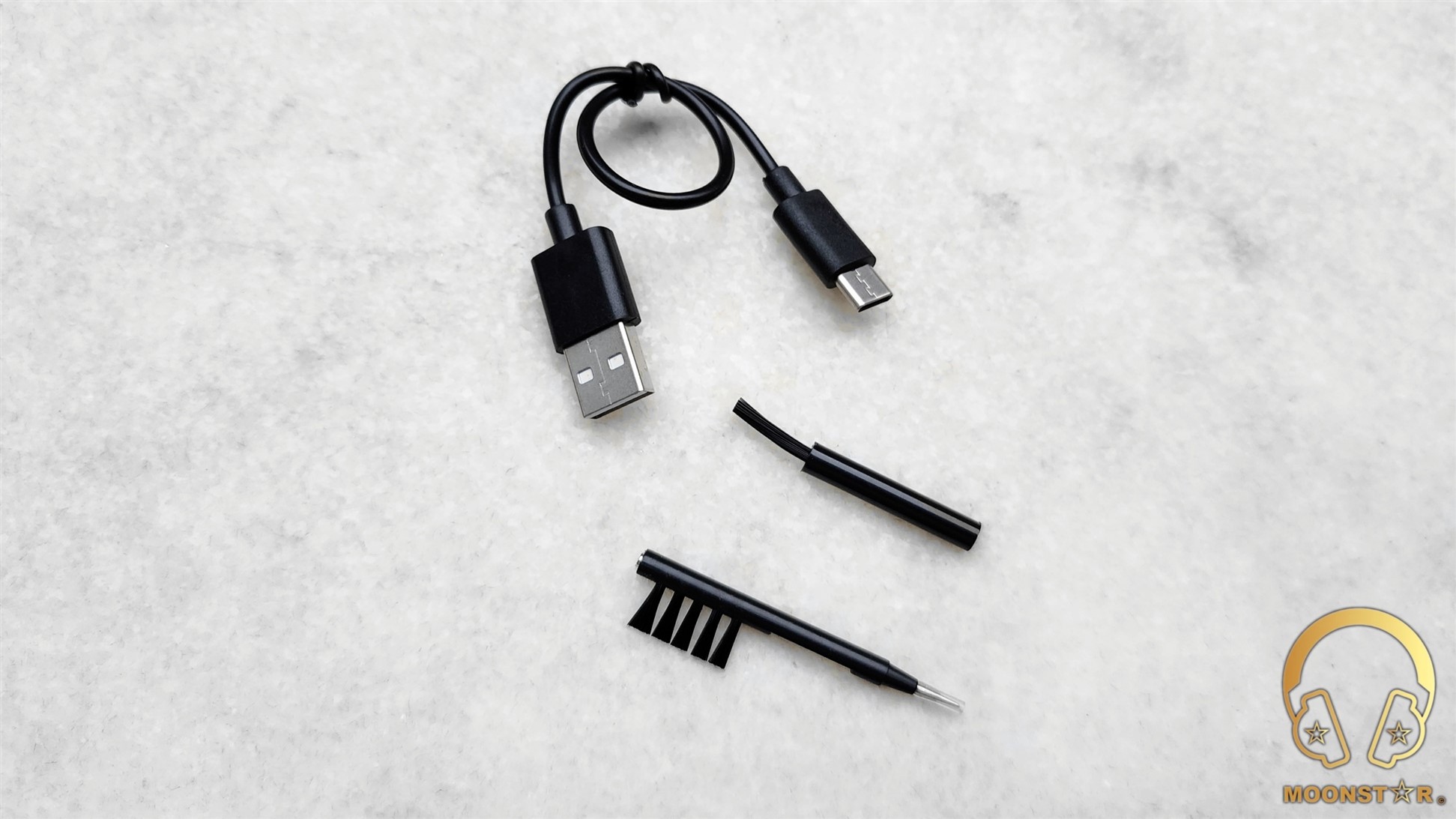
Design & Build Quality:
The FiiO FW5 is a very esthetic looking True Wireless (TWS) earphone that shows an excellent build quality same like all previous products I have tested of the company. Each of the monitor features a Hybrid Driver configuration, which is a combination of 2x Balanced Armature Drivers + 1x 10mm dia. DLC Diaphragm Dynamic Driver with a PU gasket. The 10mm Dynamic Driver is responsible for the Lows and Mids, while the two Knowles BA Drivers are dedicated for the Highs.
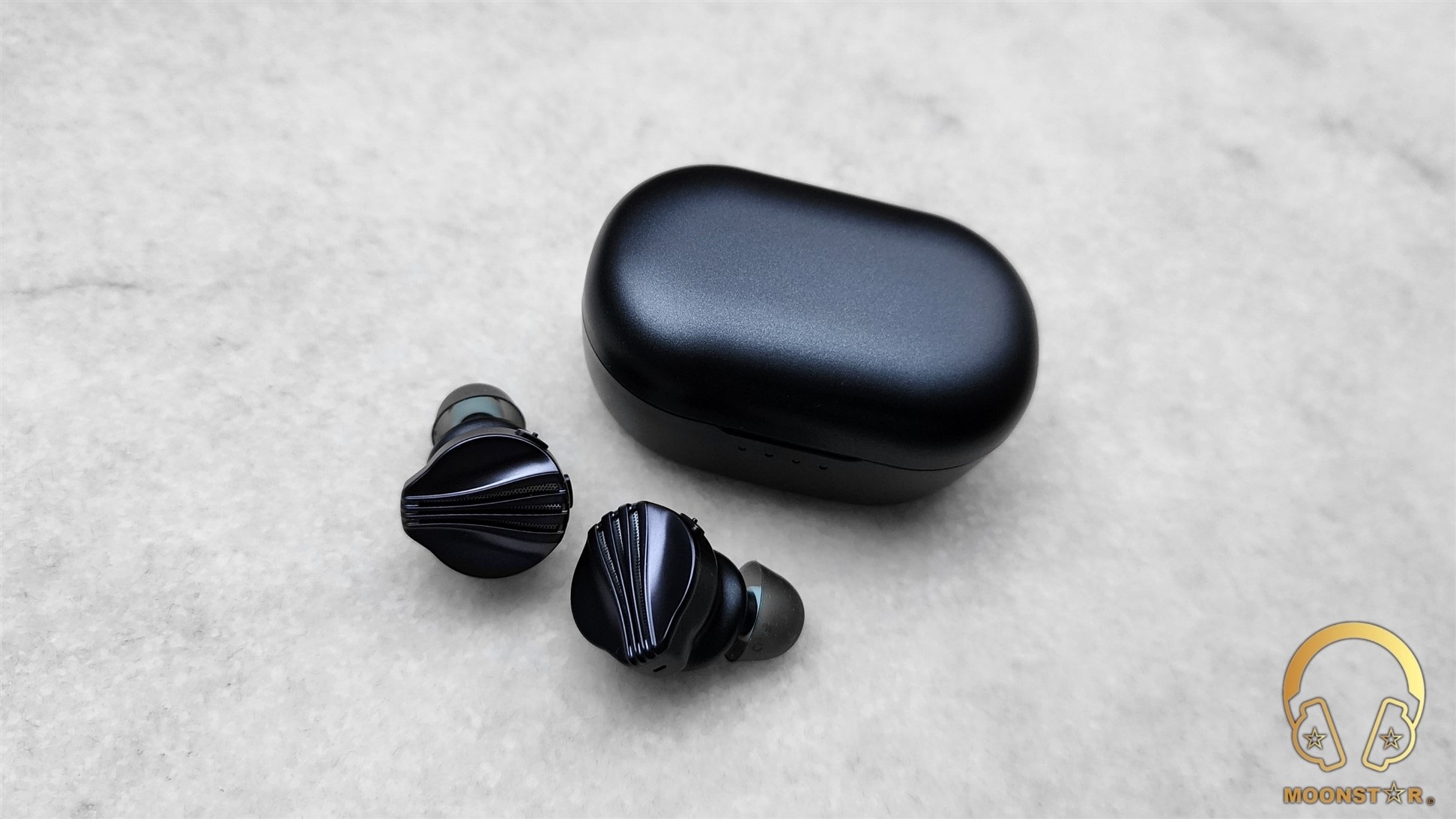
The faceplate has a gorgeous design that looks similar to the one that was found on the FD7 flagship In-Ear Monitor of the company. The rear surface of the faceplate is equipped with multiple components such like an air guiding mesh, followed by a water-resistant sound-permeable cotton part and a FPC antenna.
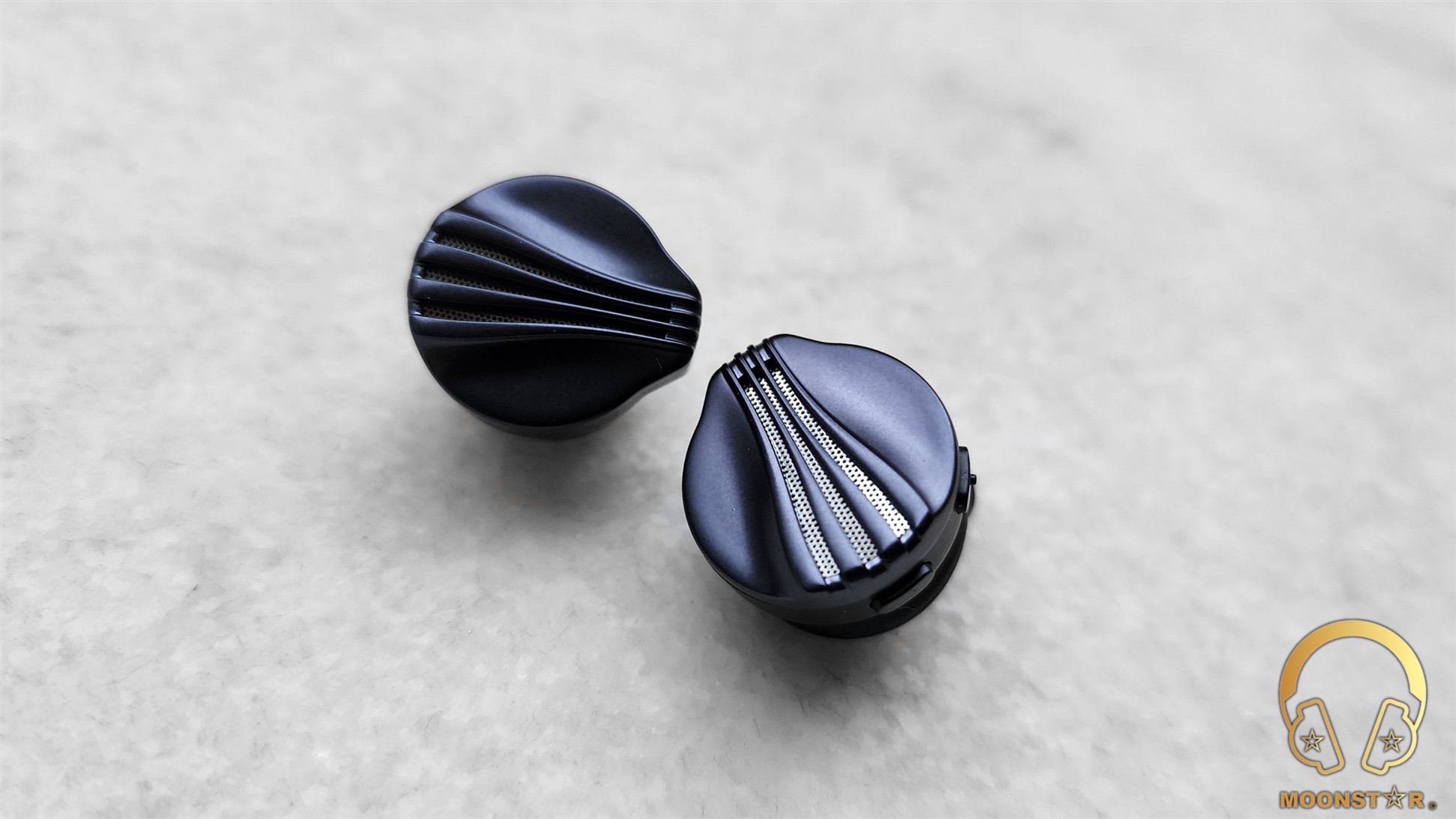
The faceplate with a semi open back design and the has a small LED light status indicator behind it.
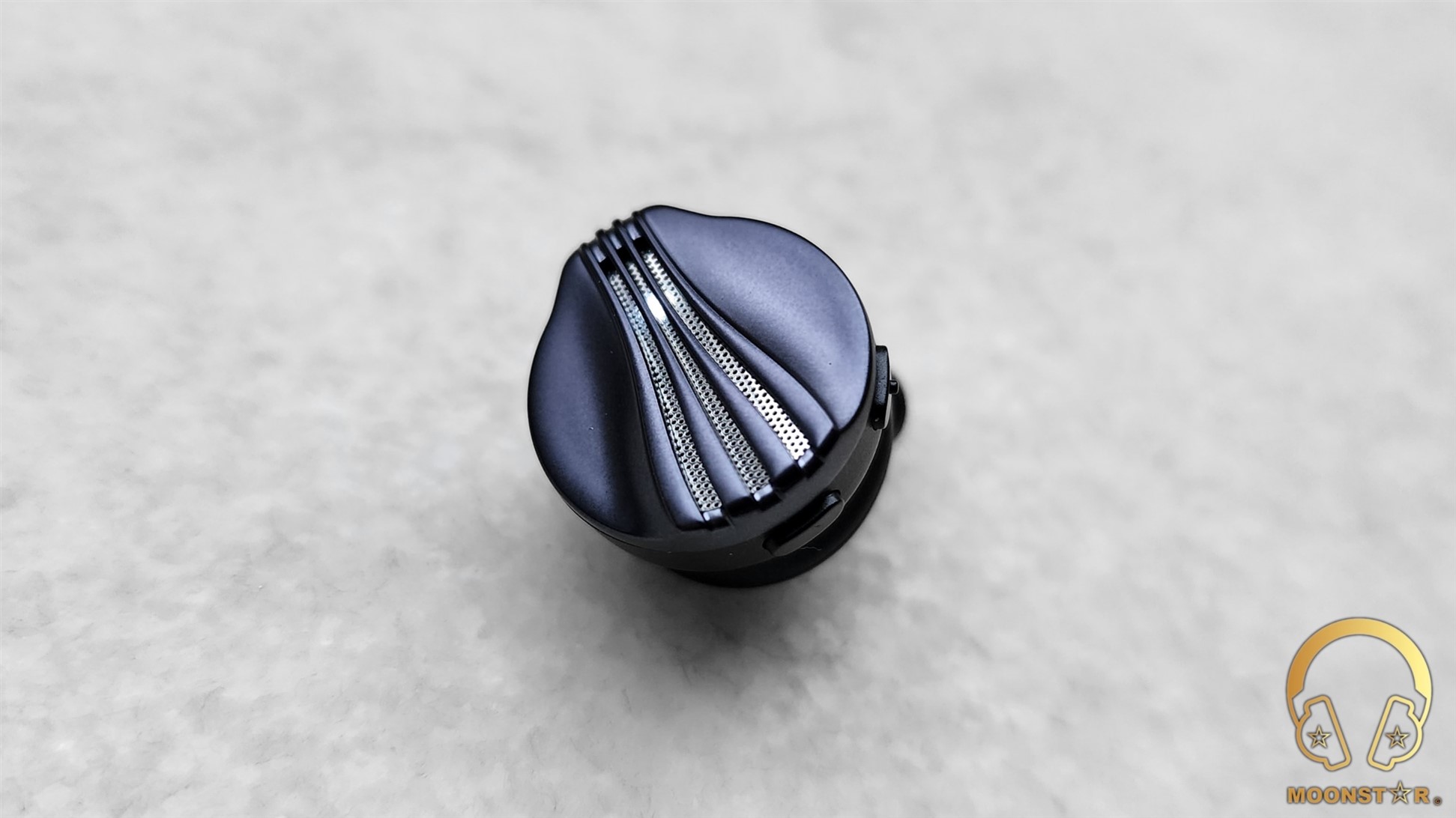
On the top of each ear piece are two multifunctional buttons one for volume, track, reset, etc. while the other button is dedicated for power on/off, activation of voice assistance, call answer, etc.
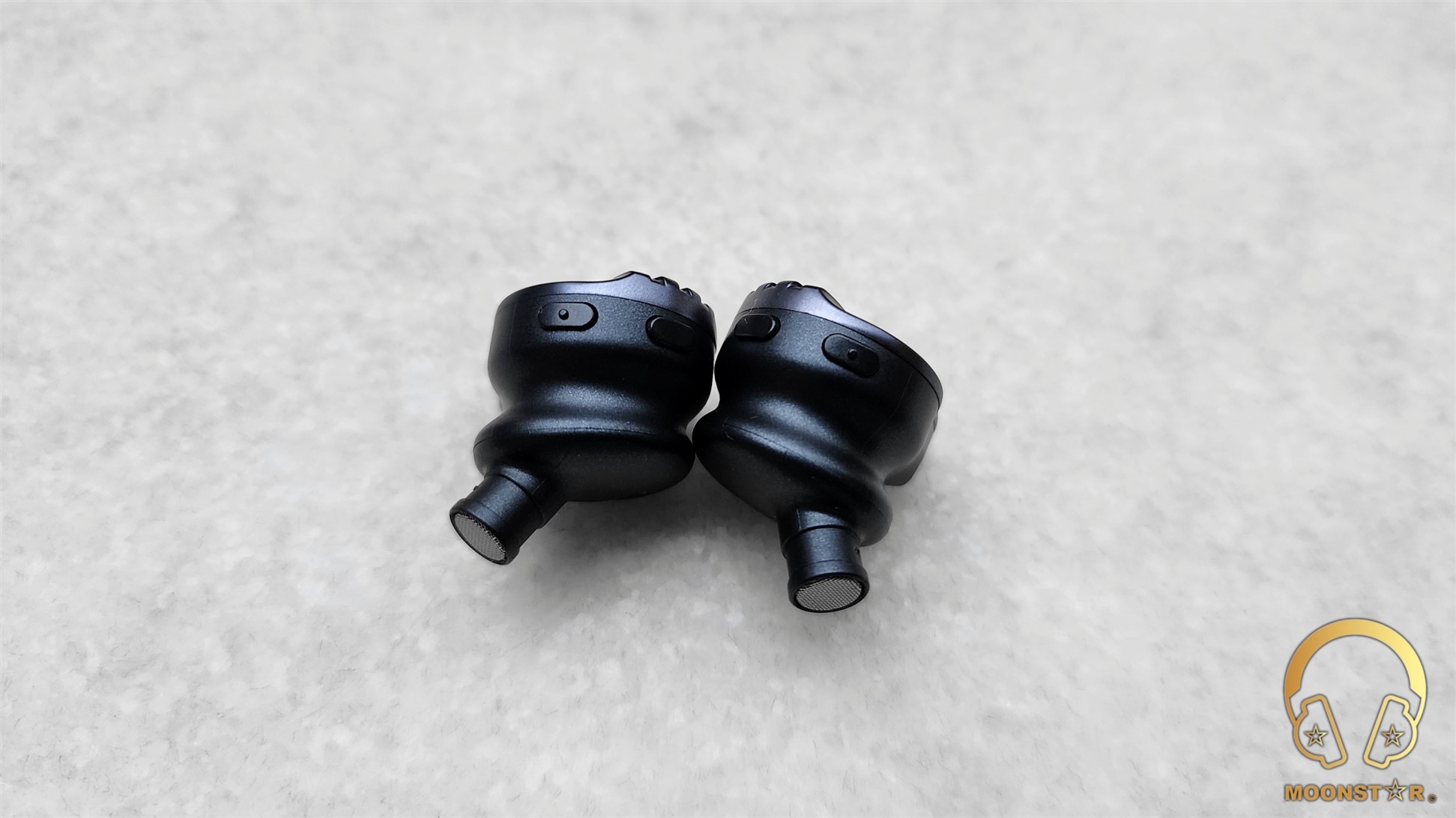
The inner surface of each monitor features a slightly angles sound nozzle with a fine metal mesh on the top.
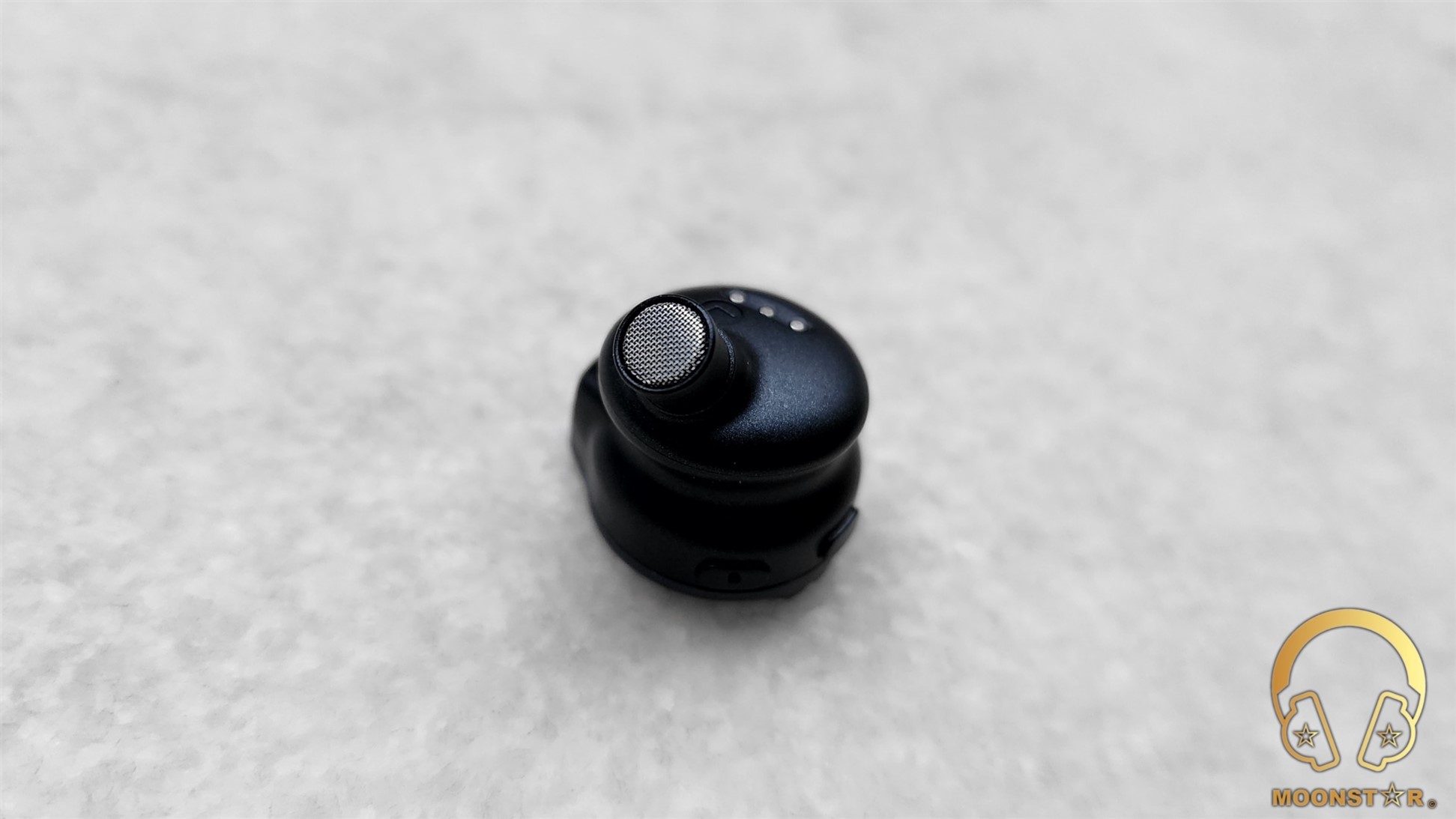
Near the sound nozzle is a small opening dedicated for the 10mm dia. large Dynamic Driver. This opening is equipped with water-resistant sound-permeable cottons to fulfill the IPX4 water resistance. Here area also the L (Left) or R (Right) markings and 3 metal connectors in gold color.
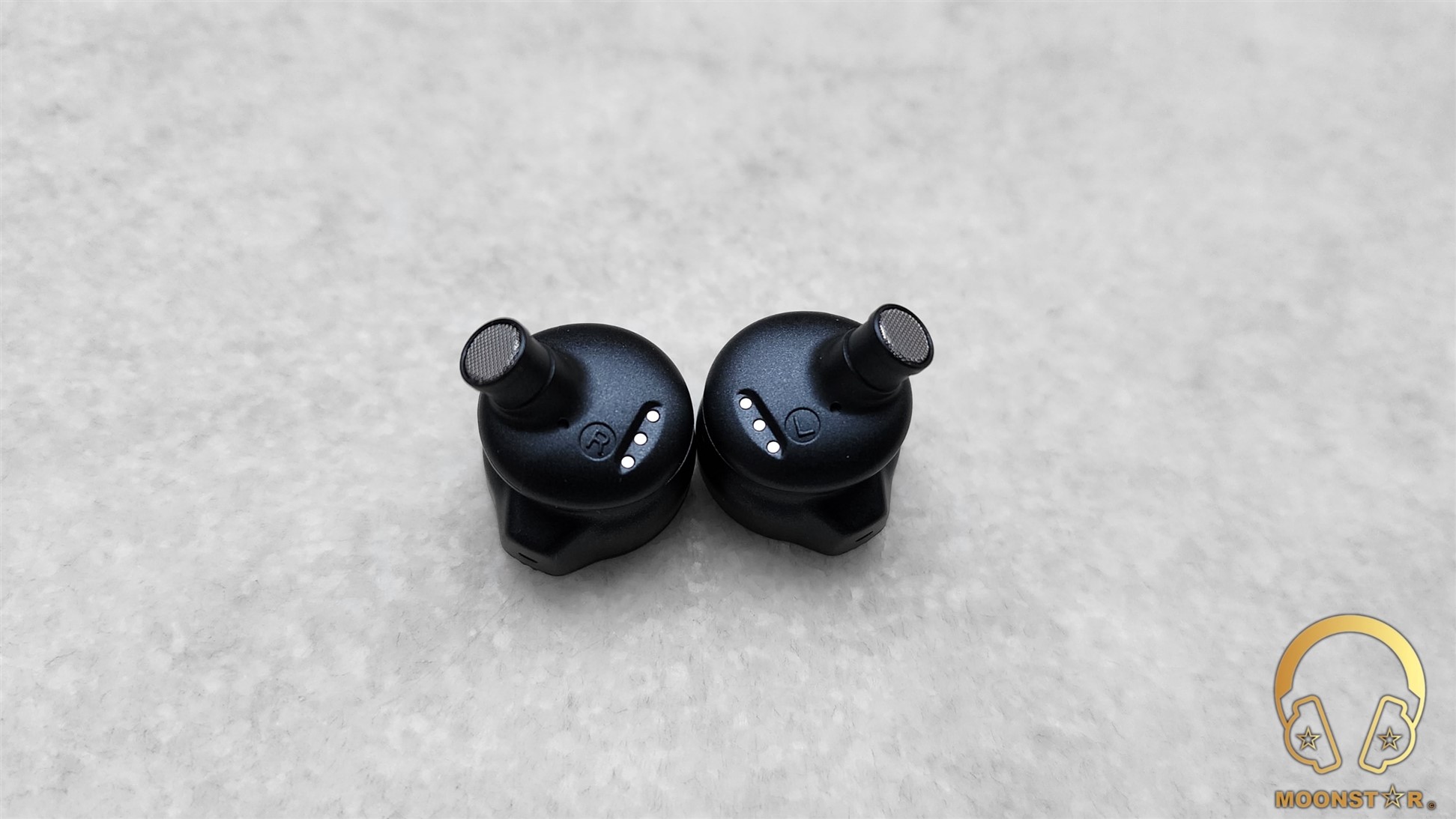
At the bottom and top of each earpiece is a dual microphone setup that features Qualcomm’s latest cVc Noise-Cancelling Microphone Technology.
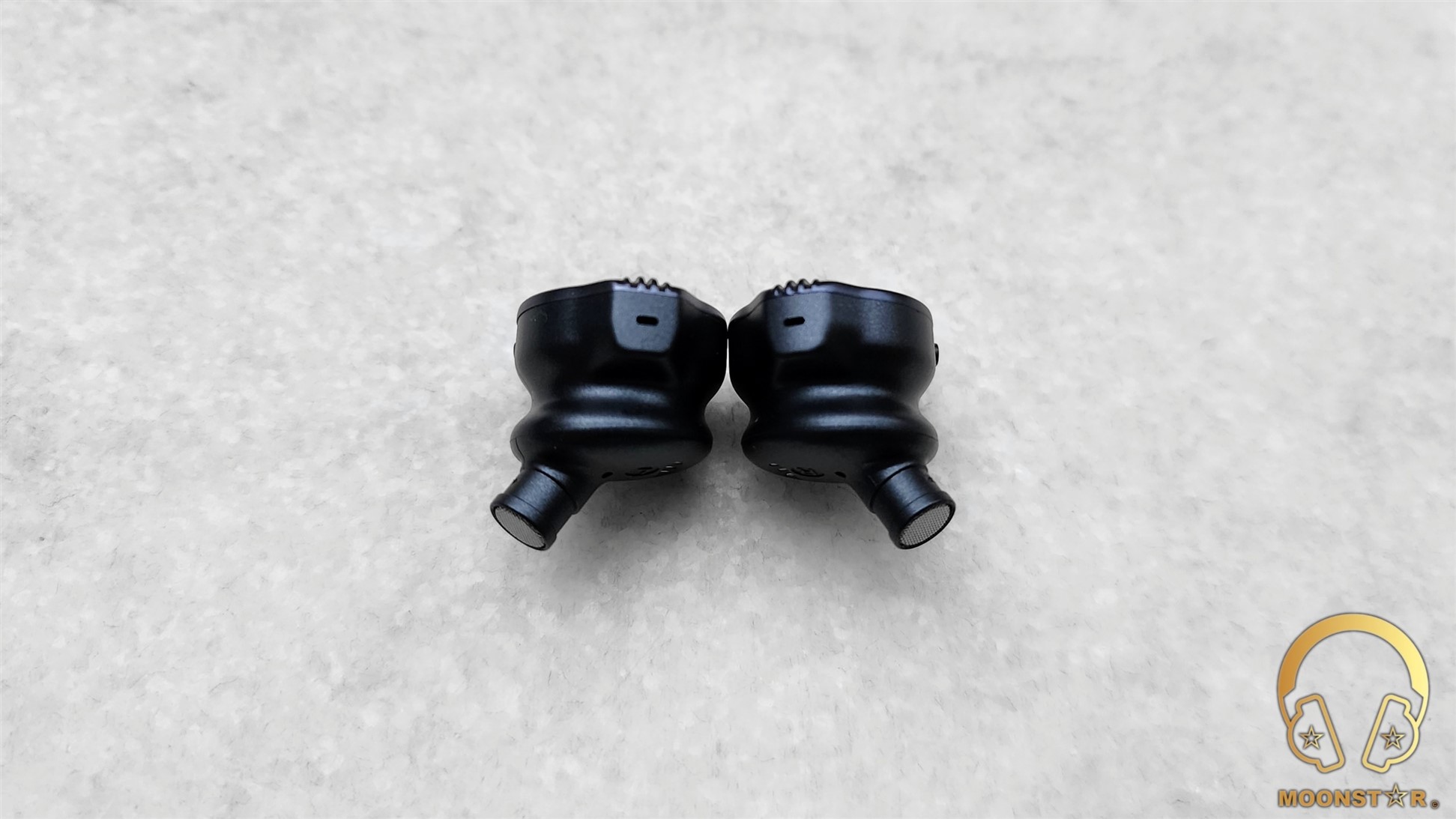
All openings are equipped with waterproof membranes and/or water-resistant sound-permeable cottons in order to fulfill the IPX4 water resistance.
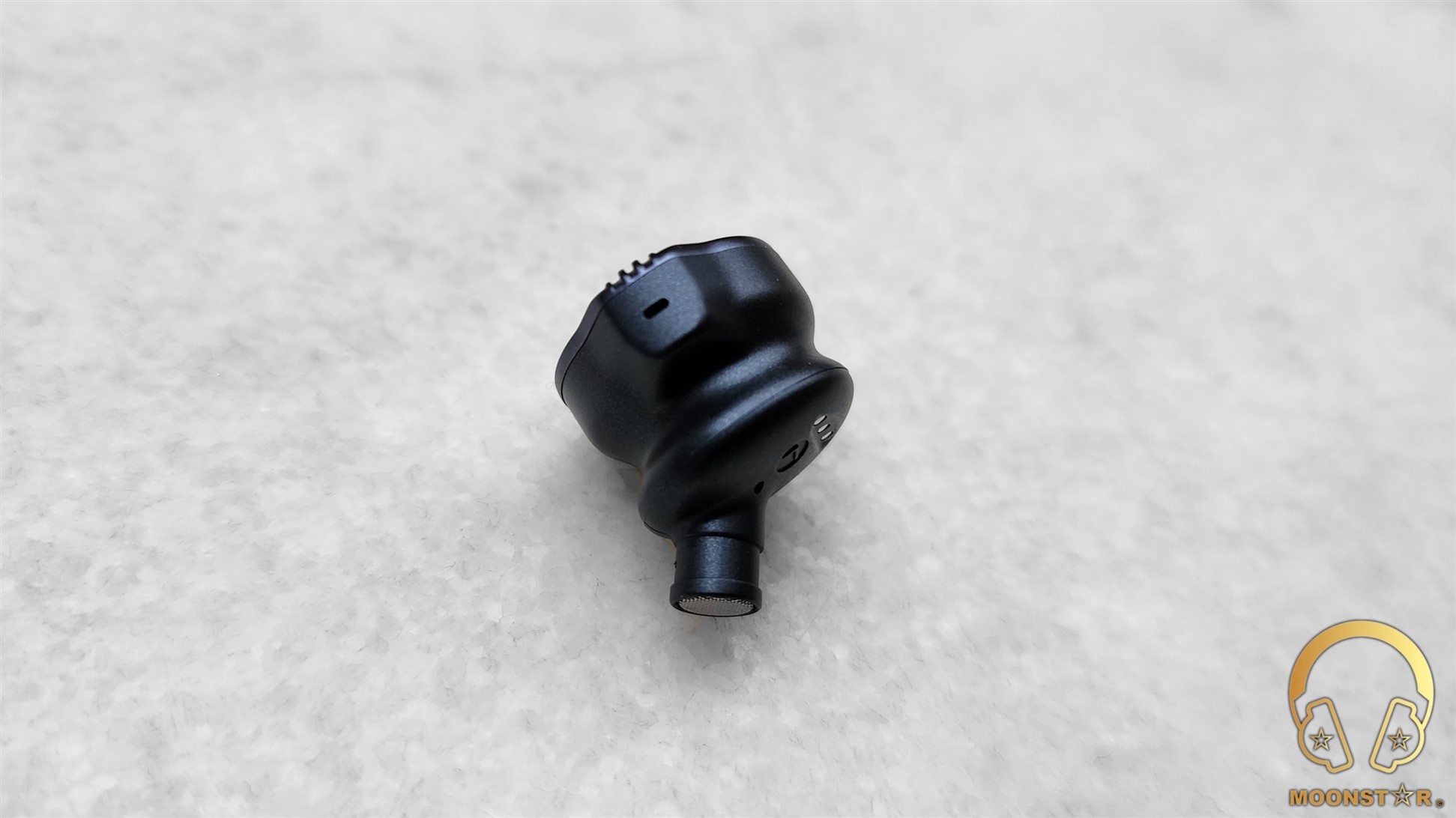
Charging Case & Battery Life:
The FW5 has a quite small battery case made from plastic material in dark grey color that fits easily in to a small pocket, which I really like about it. The case has a rounded shape that is comfortable to hold in my hand.
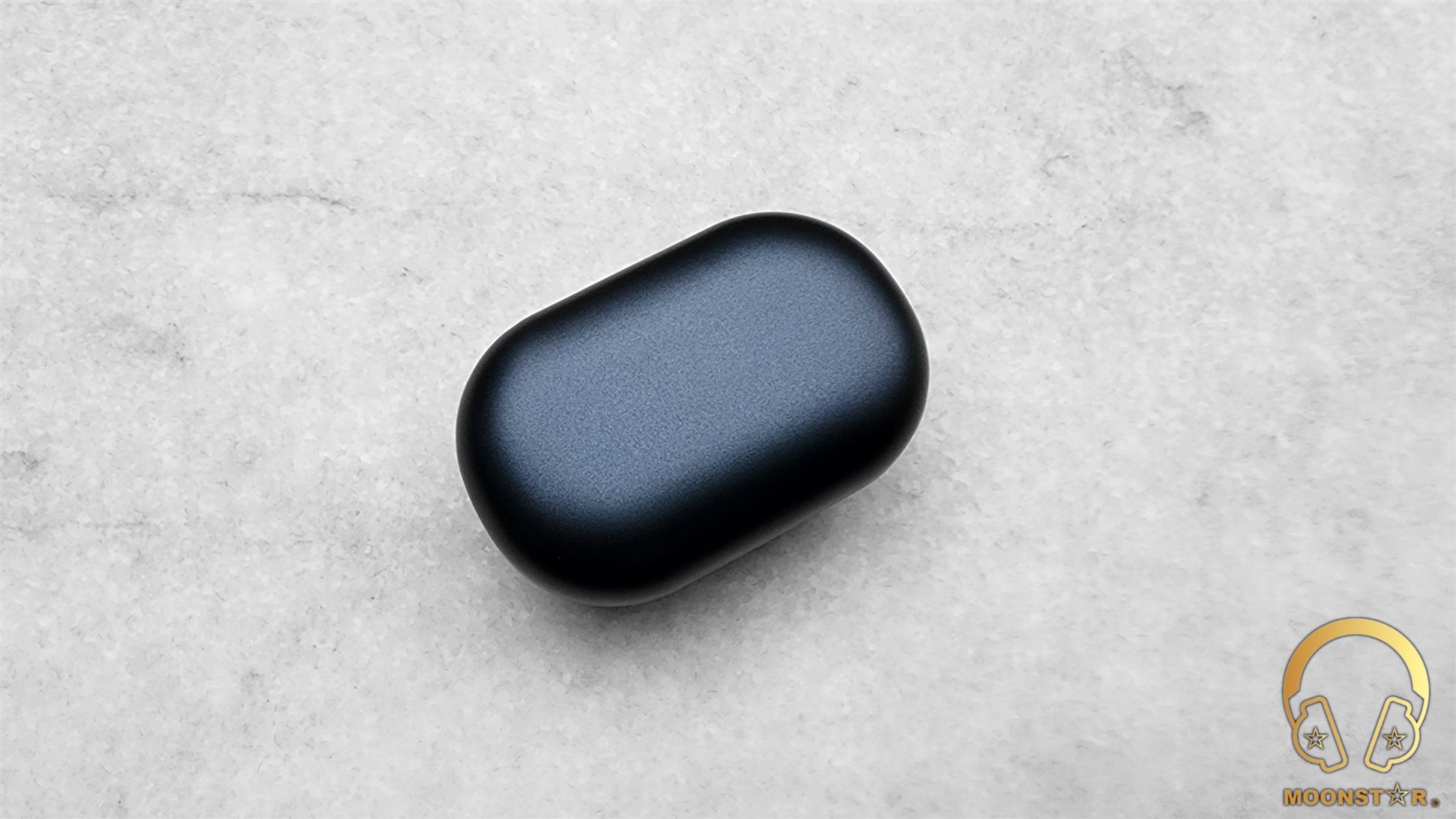
On the front of the charging case are four small LED status indicators and a small recession to open the cover.

The rear surface of the case sports the USB Type-C charging port and the hinge mechanism.

At the bottom of the case are the FiiO logo and some technical specifications and industrial certification about the FW5.
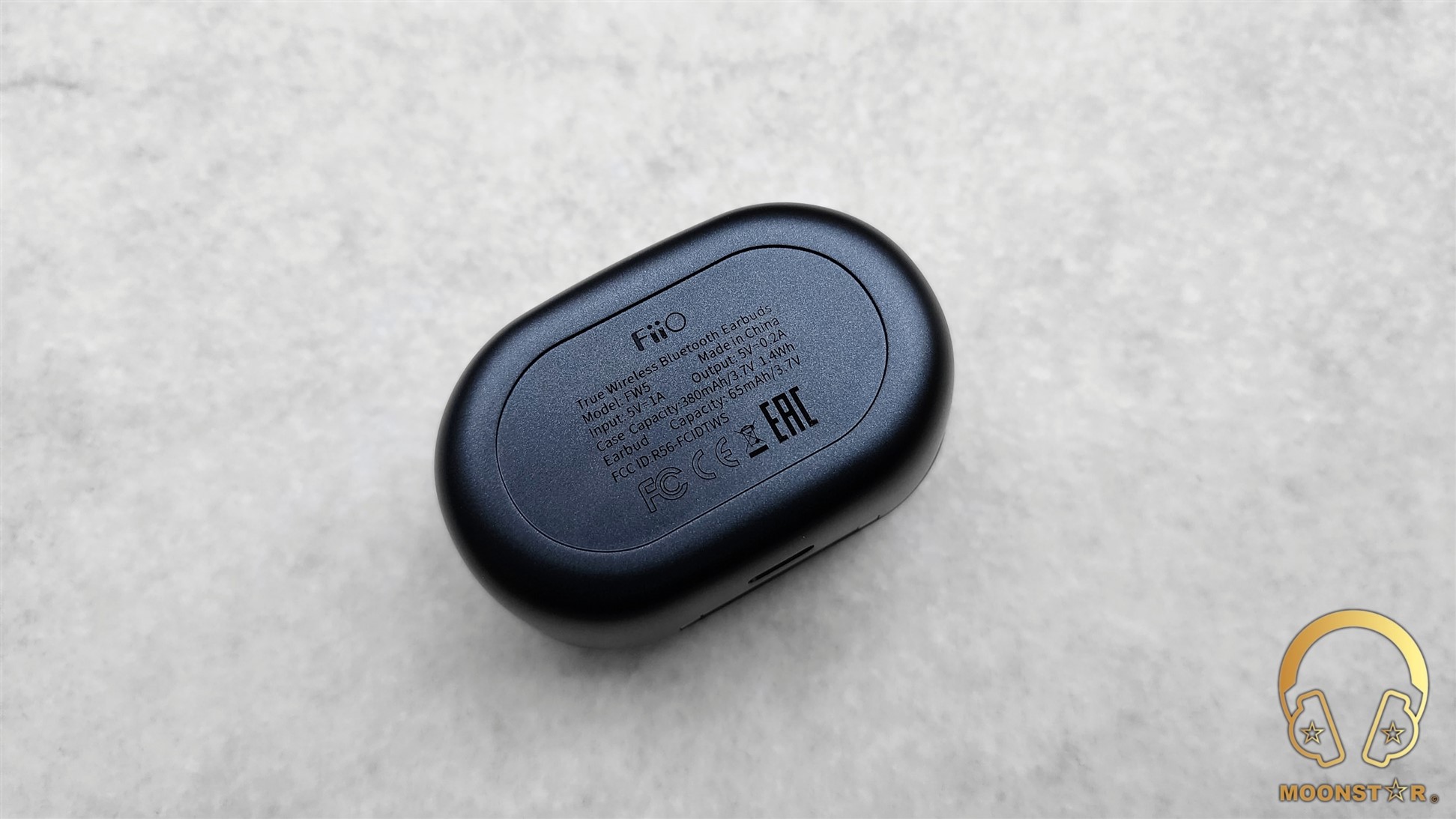
When you open the case you will see the seats, male connectors and L (Left) and R (Right) markings for the TWS monitors.

These seats have a magnetic surface to ensure a tight/save connection for the charging process and to avoid any drop out of the monitors.
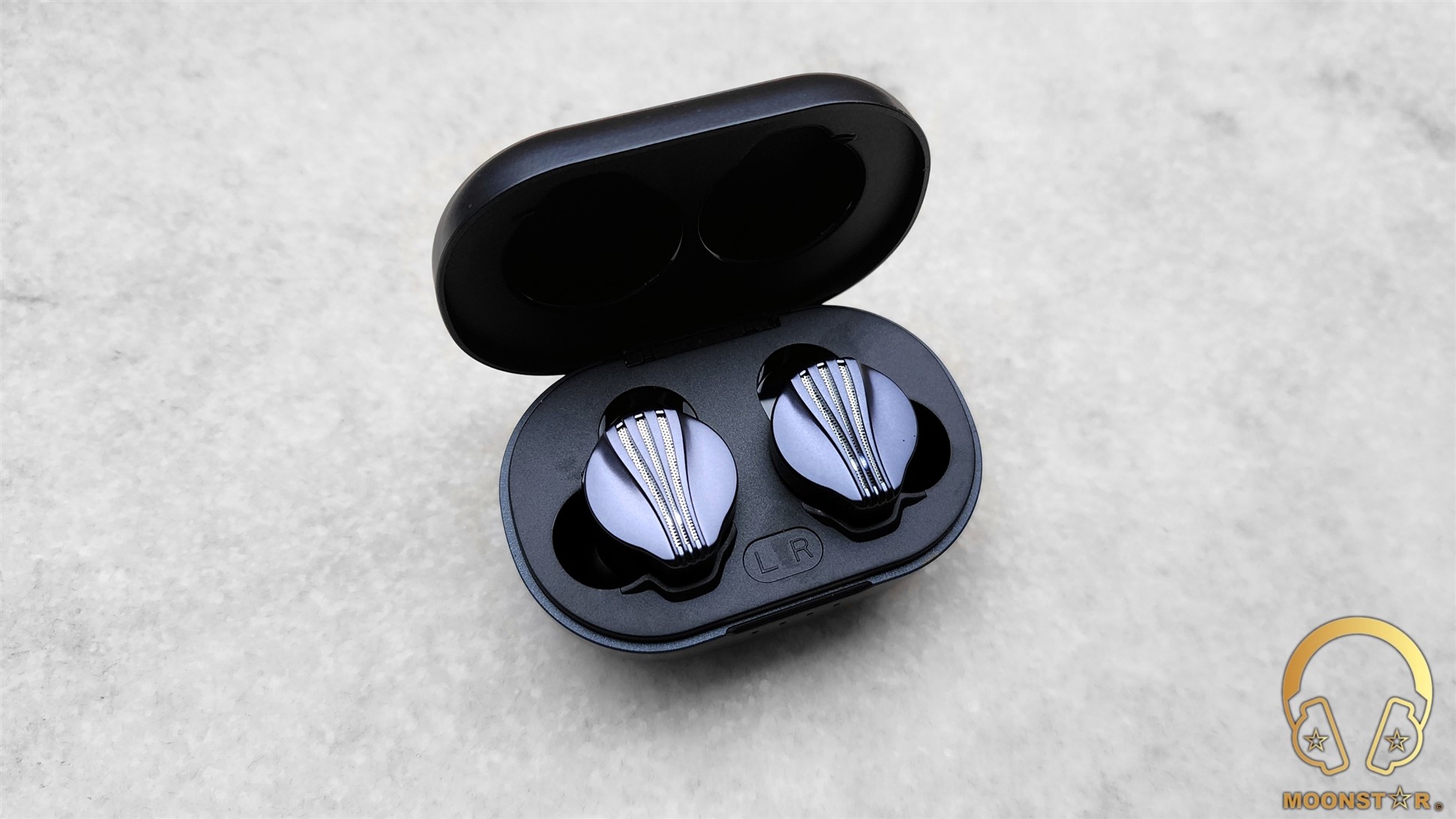
The charging case has battery with a capacity of 380mAh, which means 21+ hours when the when the battery is fully charged. The Charging time for the charging case is approx. 1h40min.
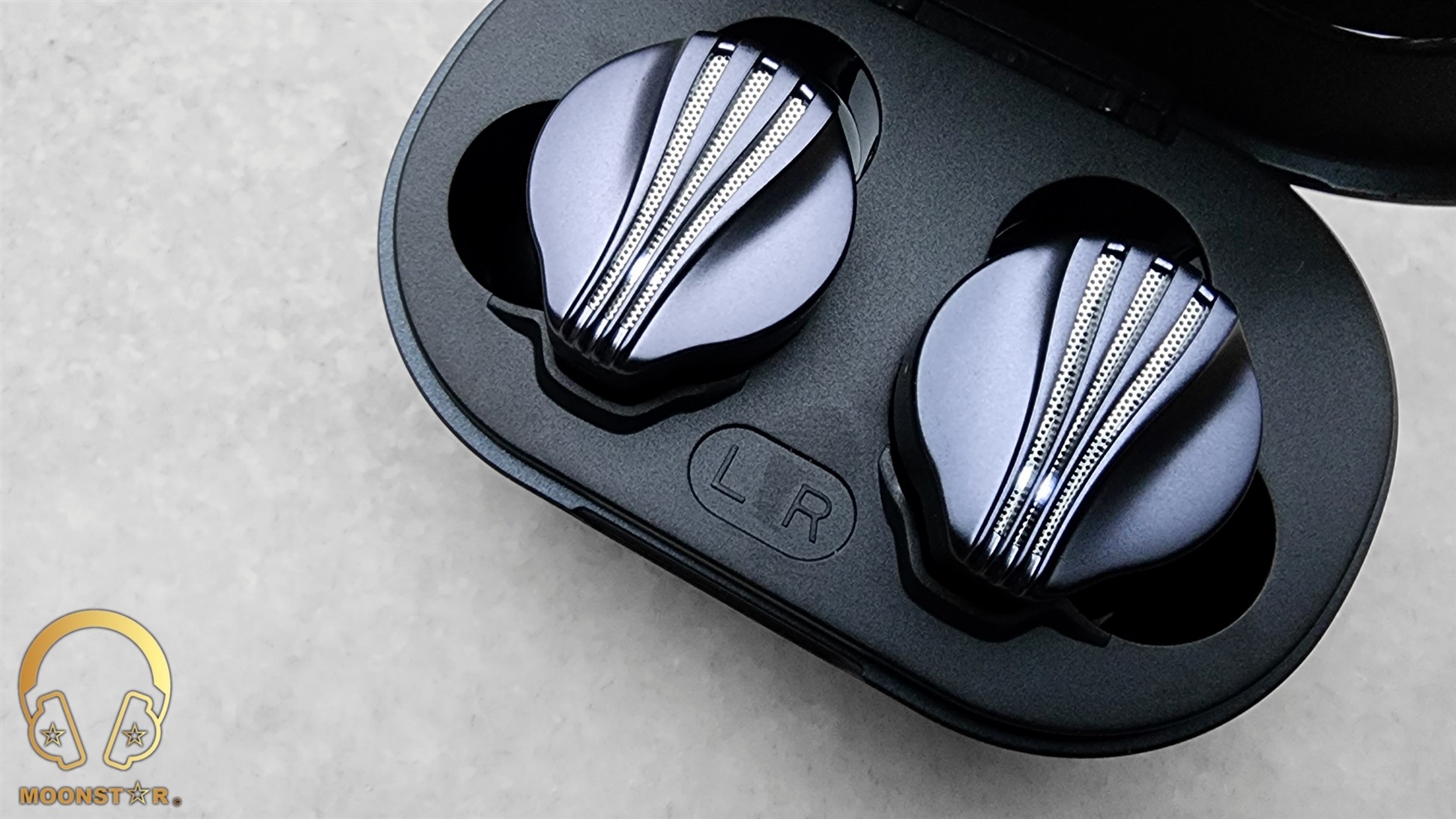
Each monitors is equipped with a 65mAh build in battery that offers continues playback of approx 6.5 – 7 hours, when used with the AAC codec.
Technical Specifications:
- Model : FW5
- Driver Configuration : 2x Knowles RAD BA + 1x 10mm DLC Diaphragm DD
- Frequency response : 20-20kHz
- Sensitivity : 106dB/mW (@ 1 kHz)
- Impedance : 32Ω±20% (@ 1 kHz)
- DAC : AK4332
- DAC Distortion : 0.0016 %.
- DAC Signal to Noise Ratio : 106dB.
- BT SoC : Qualcomm QCC5141
- Bluetooth Version : BT 5.2
- BT Codec’s : SBC/AAC/AptX/AptX Adaptive/LHDC
- Max sampling rate : 96 kHz-24bit
- Supported protocol : A2DP/AVRCP/HFP/HSP
- Transmission distance : approx. 10mt
- Battery Life : about 6.5 – 7 Hours (with AAC Codec)
- Charging Time : approx 1.5 hours (Adapters)
- Waterproof Level : IPX4
- Charging Connector Type : USB Type-C
- Charger dimensions : 68.4*43.9*32.3 mm
- Battery capacity earpiece : 65mAh
- Charger : 380mAh
Pairing, Signal Strength & Call Quality:
The pairing process for the FiiO FW5 is quite easy, just put out the monitors from the charging case and it will automatically go in to pairing mode. Once you have paired FW5 it will automatically connect with the last source.
The operating distance of the FW5 is approx. 10 meters same like many other TWS IEM’s on the market. But what I really like about the FW5 is the very stable connection with the source even if there is a wall.
The FiiO FW5 offers a decent voice transmissions that is fairly clear when paired with my Samsung Galaxy S22 Ultra, thanks to its Dual Microphone setup that supports Qualcomm’s latest cVc Noise-Cancelling Microphone Technology.
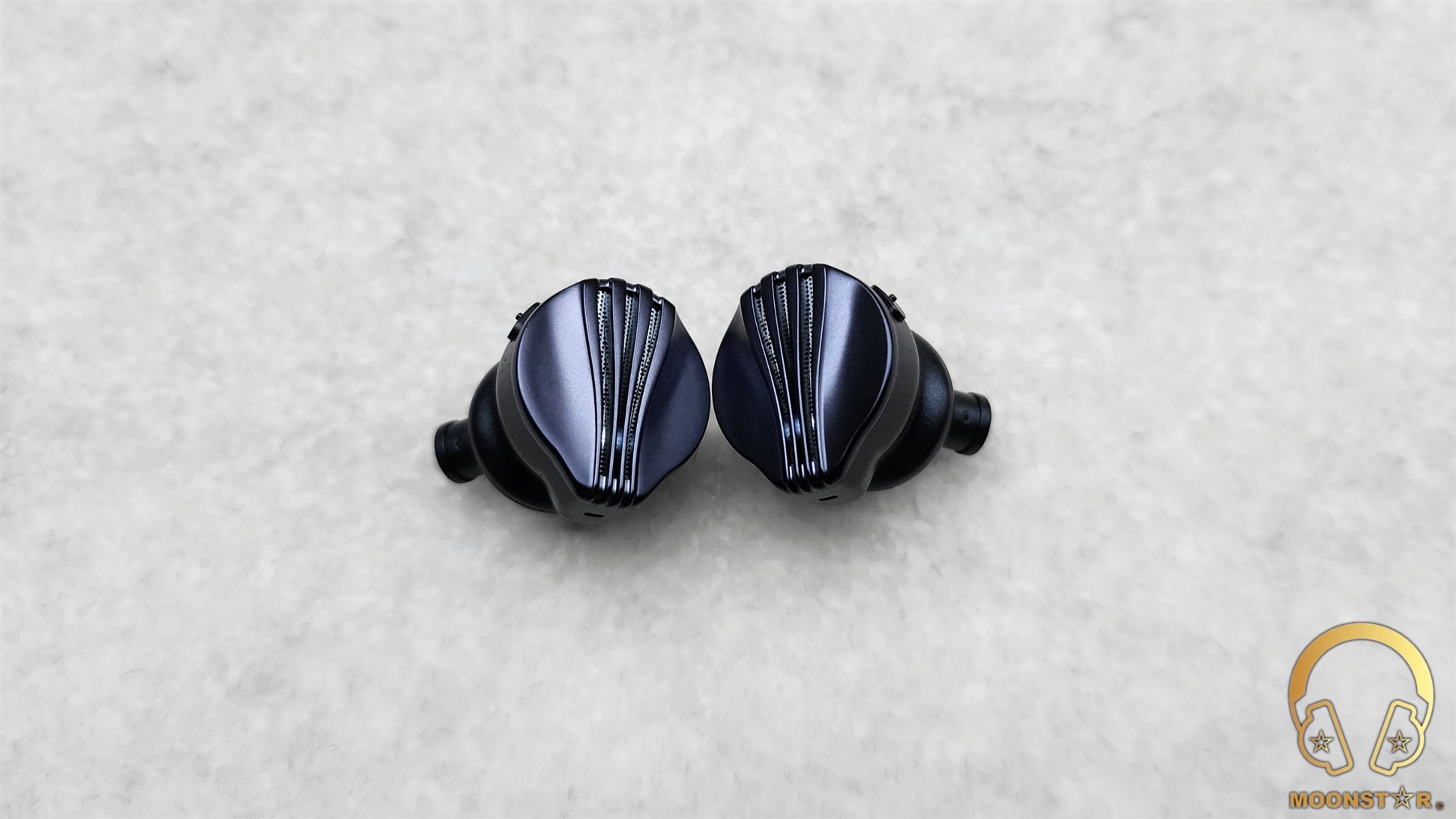
Fit, Comfort & Isolation:
The FiiO FW5 is not the smallest TWS IEM/Earphone due to the 2BA+1DD Hybrid Driver configuration that needs a larger acoustic room. However, the fit is surprisingly good with consideration of its size. The FW5 does not come with Active Noise Cancellation (ANC), while the passive noise isolation is on an sufficient level, efficient enough to use it in relative noisy environments such like a bas us train.
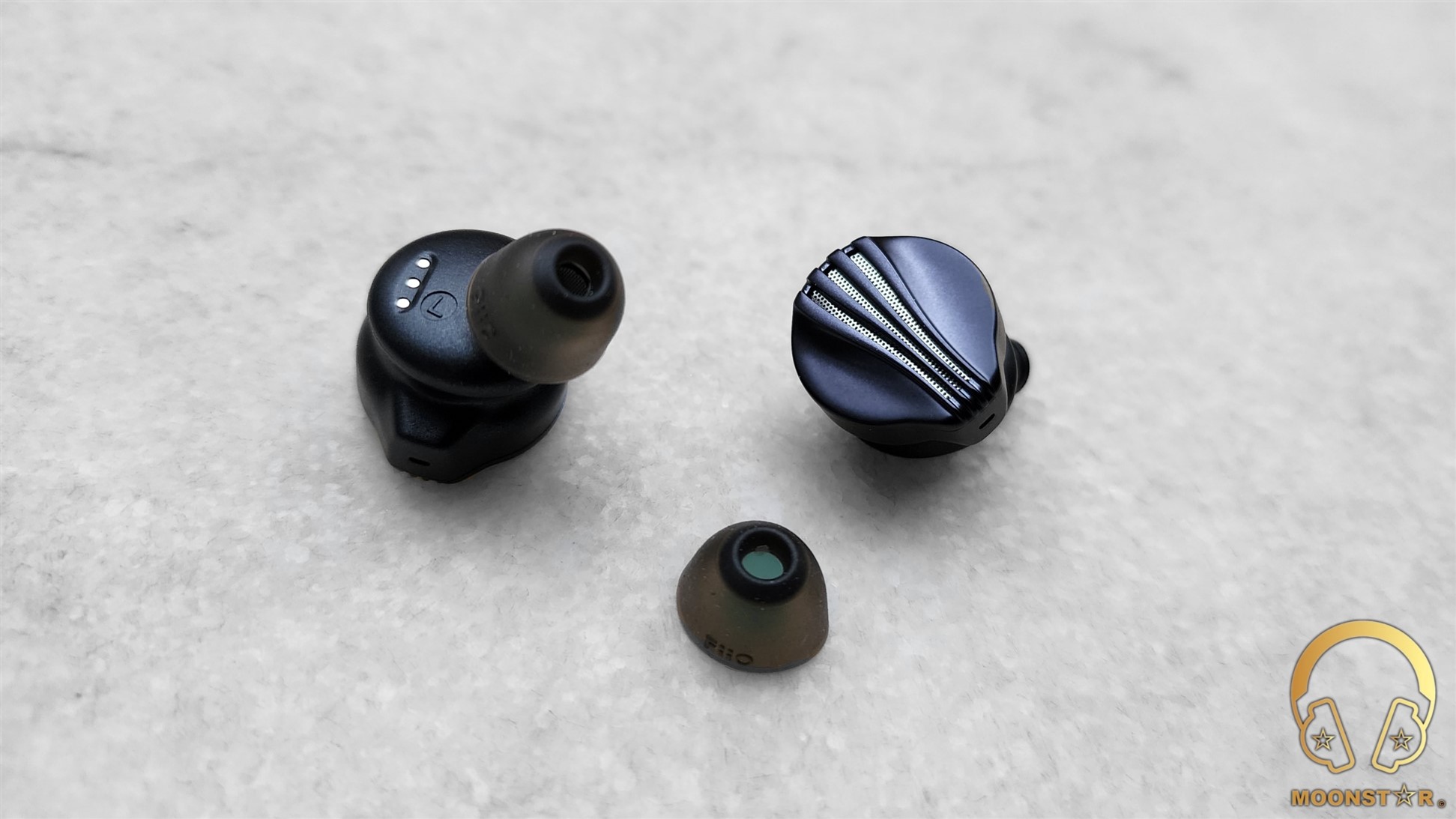
Key Features:
AK4332 Independent DAC Chip:
The FiiO FW5 is equipped with an independent AK4332 DAC (Digital to Analog Converter) chip of the company Asahi Kasei that supports the companies AKM VELVET SOUND Technology. The AK4332 chip achieves a Signal to Noise Ratio (SNR) of up to 106 dB, a distortion of 0.0016% and a Dynamic Range (DNR) of up to 102 dB.
Qualcomm QCC 5141 BT SoC:
FiiO FW5 adopts Qualcomm’s latest QCC5141 Bluetooth signal receiver chip, which brings major performance upgrades over the previous generation CR8675 or QCC3020 SoC in terms of connectivity and stability. The QCC5141 offers a decent Bluetooth audio transmission thanks to its dual-DSP and dual-core architecture. In addition, the FW5 is Snapdragon Sound-certified, which is another major improvement in terms Hi-Res Audio Transmitting.
FiiO Control APP:
The FiiO FW5 has been advertised to be compatible with the FiiO Control APP, which is a pretty useful tool to fine adjust and update Wireless & Wired products of the company. However, the FiiO Control APP couldn’t recognize the FW5, which seems to be added with a future FW update.
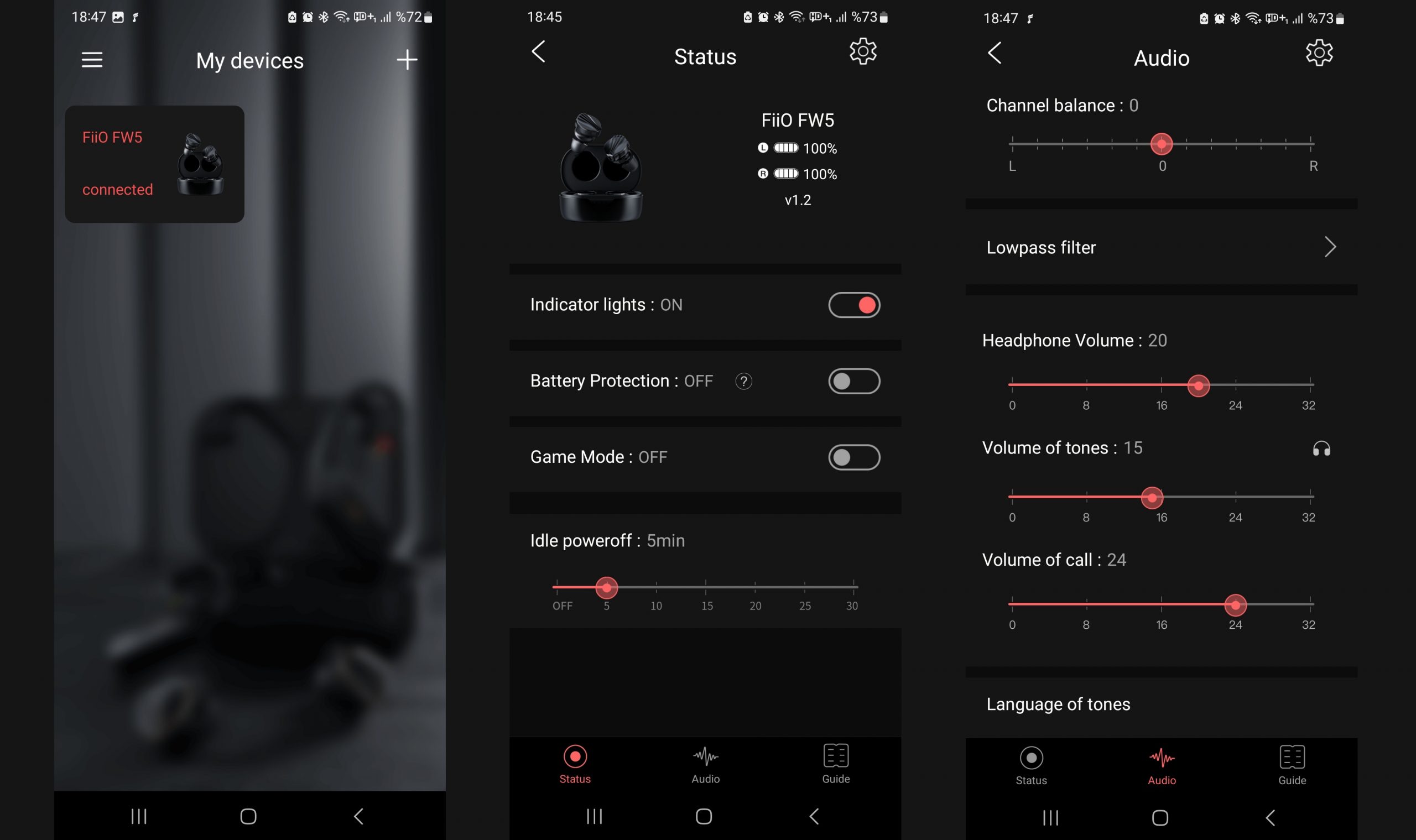
Equipment’s used for this review:
- TWS IEM’s : FiiO FW5
- Paired Sources : FiiO M11 Plus ESS, Samsung Galaxy S22 Ultra
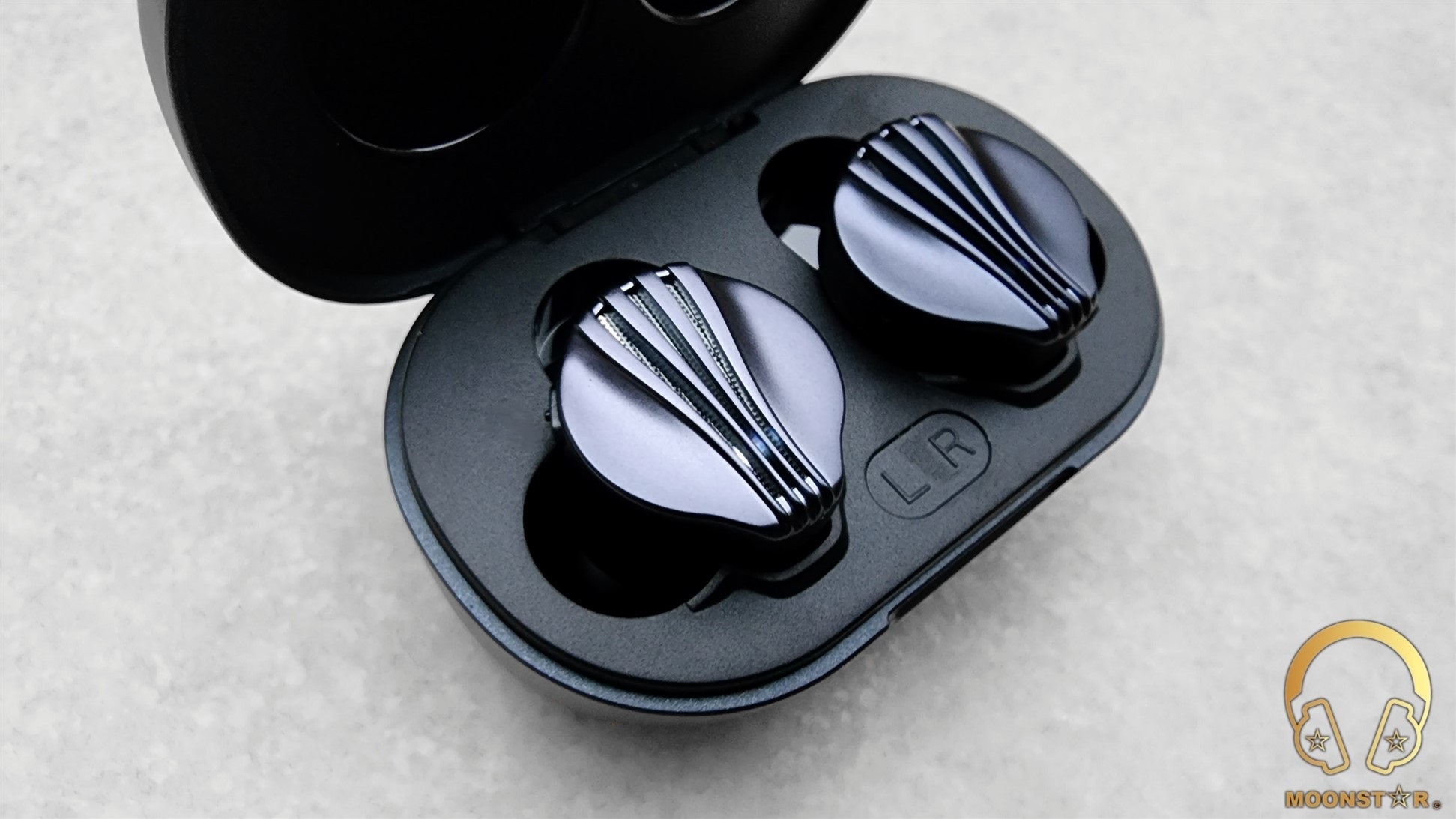
Albums & tracks used for this review:
- Adele – My Little Love
- Randy Crawford – On Day I Will Fly Away
- Aretha Franklin – I Say a Little Prayer
- Hayley Westenra – Odyssey Album
- Dionne Warwick – Walk On By
- Sarah McLachlan – Angel
- Edith Piaf – Non Je Ne Regrette Rien
- Diana Krall – So Wonderful (DSF)
- Dave Gahan – Kingdom
- Sting – Englishman in New York
- Barry White – Just The Way You Are
- Isaac Hayes – Walk On
- Elton John – Rocket Man
- Eric Clapton – Wonderful Tonight
- Sting – Englishman in New York
- Casey Abrams – Robot Lovers
- Fazıl Say – Nazım Oratoryosu (Live)
- Chopin – Nocturn No. 20 In C-Sharp Minor
- Vivaldi – Le QuarttroStagioni “The Four Seasons”
- Otto Liebert & Luna Negra – The River
- Gogo Penguin – Raven
- Lunatic Soul – The Passage
- Metallica – Sad but True
- Megadeth – Sweating Bullets
- Rush’s – Leave That Thing Alone
- Slayer – Angel of Death
- Liquid Tension Experiment 2 – Acid Rain
- Lorde – Royal Massive Attack – Angel
- Toutant – Rebirth
- Really Slow Motion – Deadwood
- Daft Punk (feat. Panda Bear) – Doin’ it Right
- Massive Attack – Angel
- Bear McCreary – Valkyries (Gof of War)
- Muse – The Handler
- Twerl – Lishu
- U2 – Sunday Bloody Sunday
- Yosi Horikawa – Bubbles
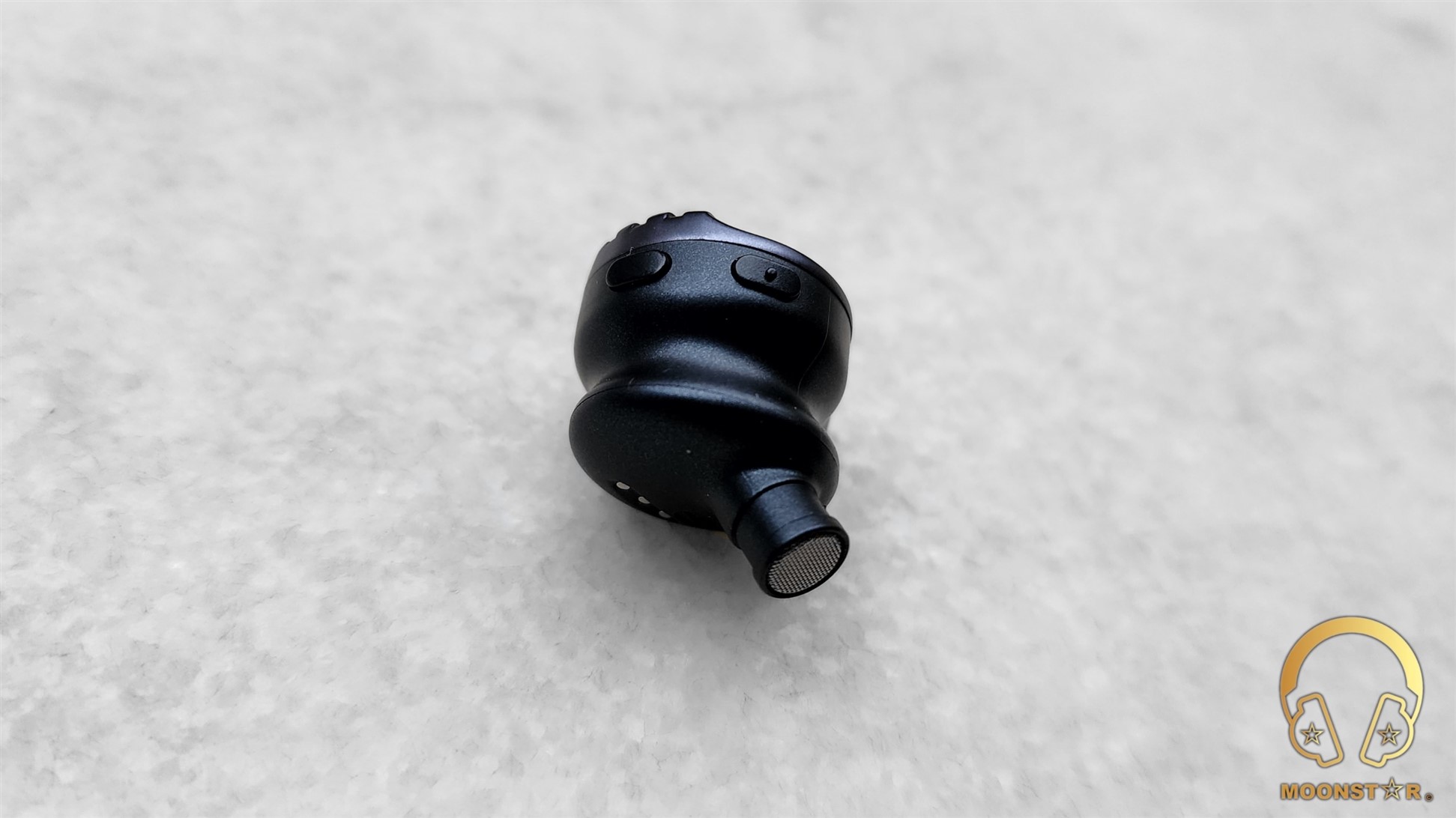
The Sound:
The FiiO FW5 is a pretty spacious sounding TWS Earphone/IEM with a mildly V-shaped sound signature that shows slightly warmer than neutral tonality and relative natural timbre especially for a TWS product while listen to instruments and vocals. The nicely implemented independent AK4332 DAC plays a big roll for the general sound performance of the FW5.
The FiiO FW5 review has been written after a burn-in period of about 50 hours. My sound impressions below are mainly based on pairings with BT sources like the FiiO M11 Plus ESS and Samsung Galaxy S22 Ultra (Snapdragon Version).
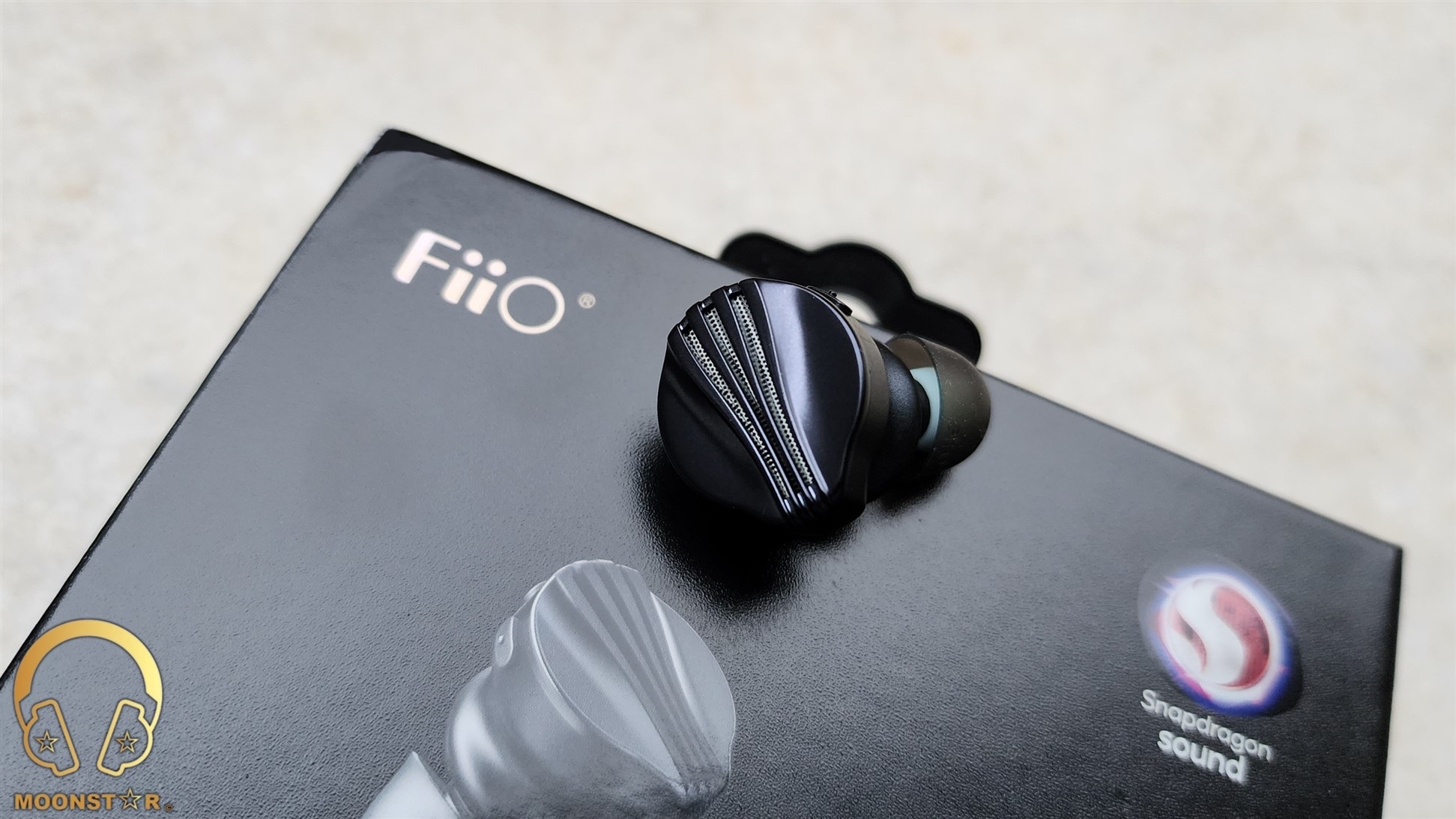
Bass / Midrange / Treble / Soundstage:
The lower frequency response is one of the main highlights of the FW5 that is produced with a pretty capable 10mm DLC Diaphragm Dynamic Driver and shows a pretty entertaining performance with genres like Pop, Hip-Hop, EDM or Trance music. The subbass region has a moderately warm tonality and is able to produce a good level of depth, intensity and rumble that can compete with wired IEM’s, when I have listen to songs like Lorde’s “Royals” and Daft Punk’s “Doin’ it Right”.
The midbass region on the other hand is pronounced but doesn’t show any midbass hump, which could lead to a muddy presentation. The level of clarity, body and impact is excellent for a TWS IEM/Earphone when I listen to instruments such like a bass guitar, cello or kick drum. What I also really like is the sense of authority and speed that can compete with many wired IEM’s at price range between 100 and 200 USD that was pretty audible in complex songs like Gogo Penguin – Raven.
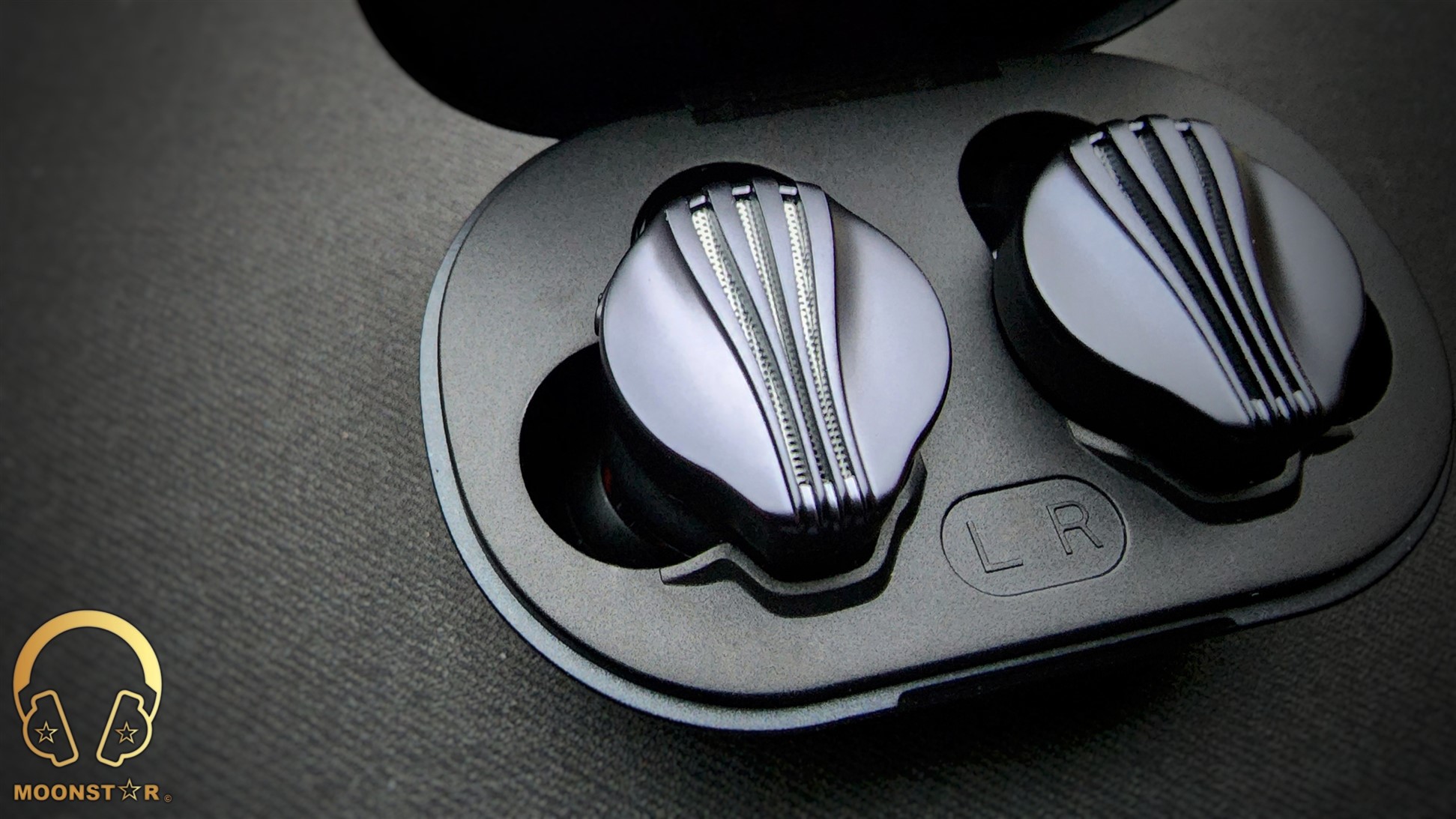
The midrange is slightly recessed compared to the lows and highs due to the mildly V-shaped sound signature, while these tuning creates some headroom/space while listen to songs with a lot of instruments without to make them sound too distant. The general tonality is a bit warmer than neutral and the timbre of both instruments and vocals is pretty natural and rich.
The lower midrange is produced with an adequate grade of depth and fullness, which makes male vocals and instruments like electro guitars, toms or violas are quite enjoyable to listen to. The upper midrange is nicely pronounced but without to sound overly bright or sibilant when I do listen to female voices such like Edith Piaf, Adel or Sertap Erener. Instruments on the other hand are reproduced in general with a good sense of brightness, resolution and extension.
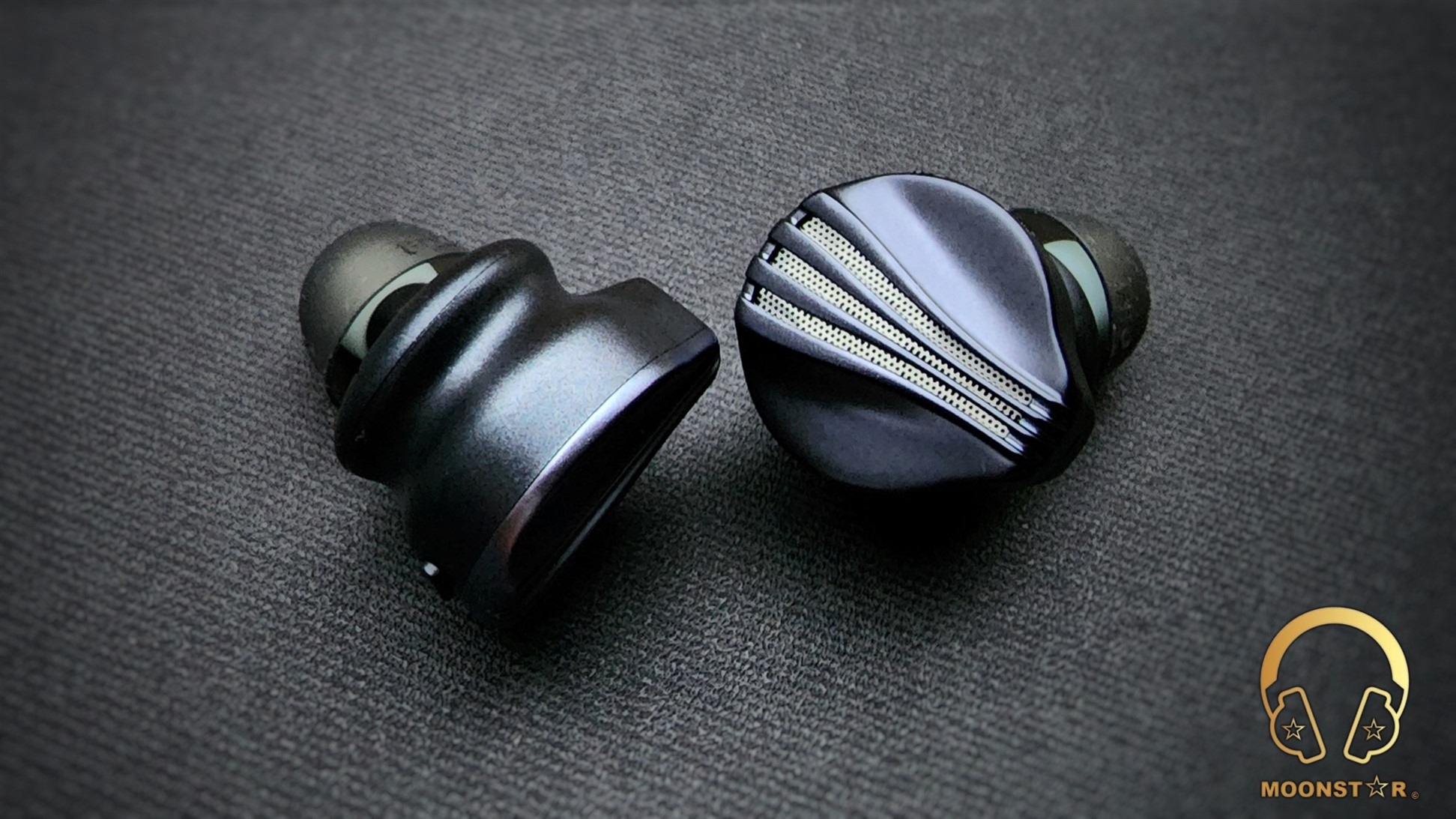
The treble range that is produced with 2 x Knowles RAD Balanced armature drivers, which are located inside the sound nozzle of the FW5, are able to produce a decent sense of clarity, airiness and brilliance, without to create unwanted conditions such like unnaturalness or over-sharpness. The 2x Knowles BA divers do work in a pretty good synergy with the 10mm dia. Dynamic Driver unit.
The lower treble range shows an efficient level of presence so that vocals or instruments such like a violin do have a decent grade of clarity, while kick drums are reproduced with good sense of attack. The upper treble region offers a nice sense of airiness and sparkle, while the extension of instruments such like percussions is on a moderate level.
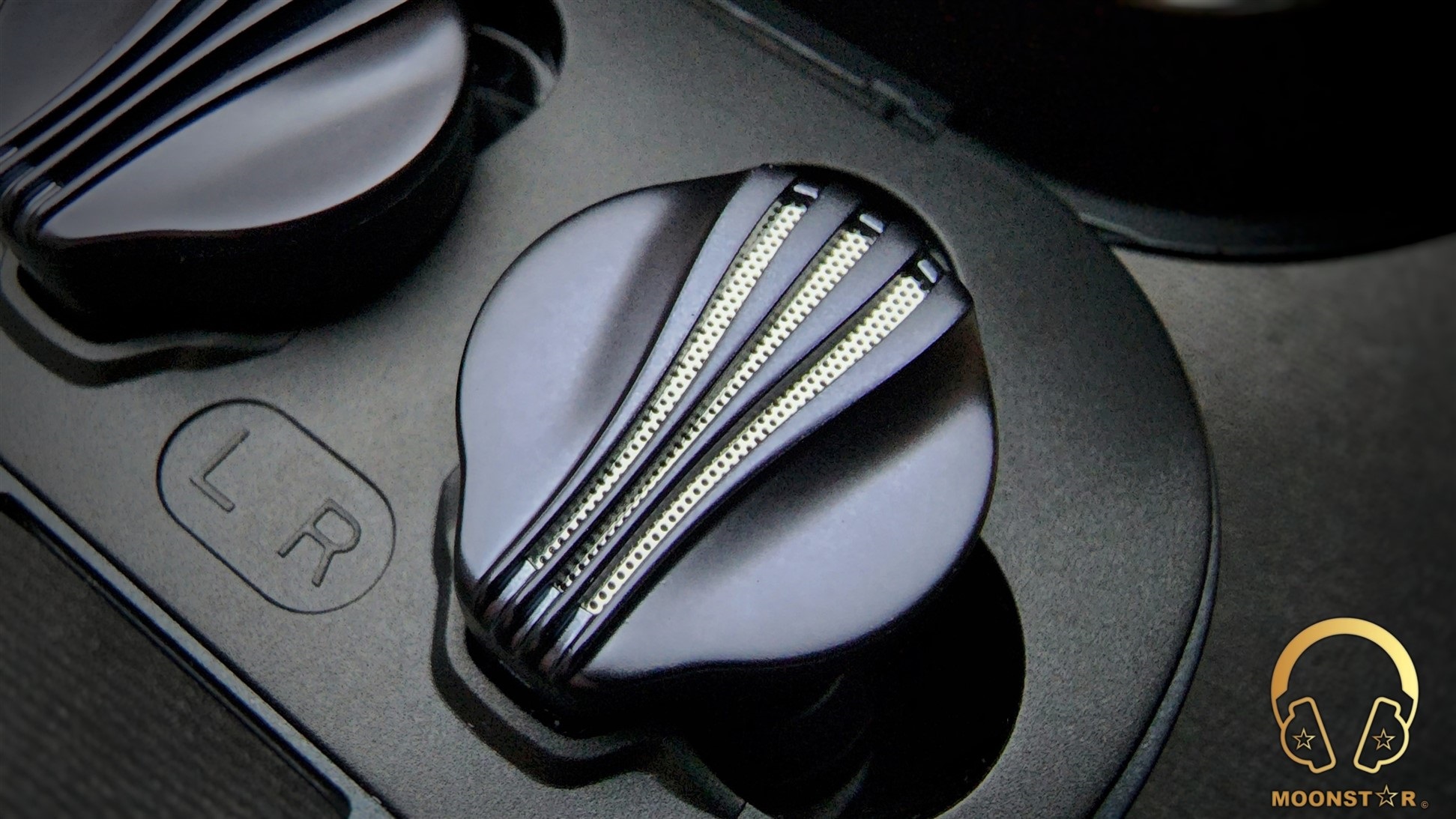
What I really like about the FiiO FW5 is the pretty spacious and airy soundstage atmosphere, which offers a good sense of depth and wideness, especially for a TWS Earphone. The FW5 is also quite successful when it comes to the separation of instruments and vocals.
Conclusion:
The FiiO FW5 is an excellent sounding TWS earphone with a beautiful faceplate design that is equipped with some solid hardware features such like an independent Asahi Kasei AK4332 DAC Chip and Qualcomm’s latest QCC 5141 BT SoC. Moreover, it offers a sound performance that can compete with many wired earphones on the market at the same price range, which impressed me with its nicely tuned mildly v-shaped sound signature and its pretty spacious and airy sound atmosphere.
Thank you for the Read!
Moonstar
@o0genesis0o Thank you!
B
Bay Jingles
Thanks for review. I'm using an iPhone. Do you think I should buy AirPods Pro 2 or FiiO FW5?
Moonstar
@Bay Jingles Thanks! In terms of sound, I definitely think the FW5 is the way to go.
Moonstar
100+ Head-Fier
Pros: Natural, Clean & Dynamic Presentation,
Pairs pretty well with both Sensitive IEM’s & Power Hungry Headphones,
Hardware Features (THX AAA-788+ Amplifier Section, AK4493SEQ, etc.),
Wide variety of Input & Output Options,
Size, Build Quality & RGB Indicator,
Excellent Value for your Money
Pairs pretty well with both Sensitive IEM’s & Power Hungry Headphones,
Hardware Features (THX AAA-788+ Amplifier Section, AK4493SEQ, etc.),
Wide variety of Input & Output Options,
Size, Build Quality & RGB Indicator,
Excellent Value for your Money
Cons: No MQA Decoding,
Wireless Connectivity options (Wi-Fi and/or Bluetooth) would be welcome
Wireless Connectivity options (Wi-Fi and/or Bluetooth) would be welcome
FiiO K7 DAC & Headphone Amplifier Review
Introduction:
The K7 is FiiO’s latest true balanced desktop DAC & Headphone Amplifier that comes with some interesting specs such like a Dual AK4493SEQ DAC Chip setup, 2x THX AAA 788+ amplifiers, XMOS USB receiver and NJU72315+OP Volume chips. Moreover, the device features USB, Optical, Coaxial, RCA inputs and both 6.35mm Single-Ended + 4.4mm Balanced analog output interfaces.
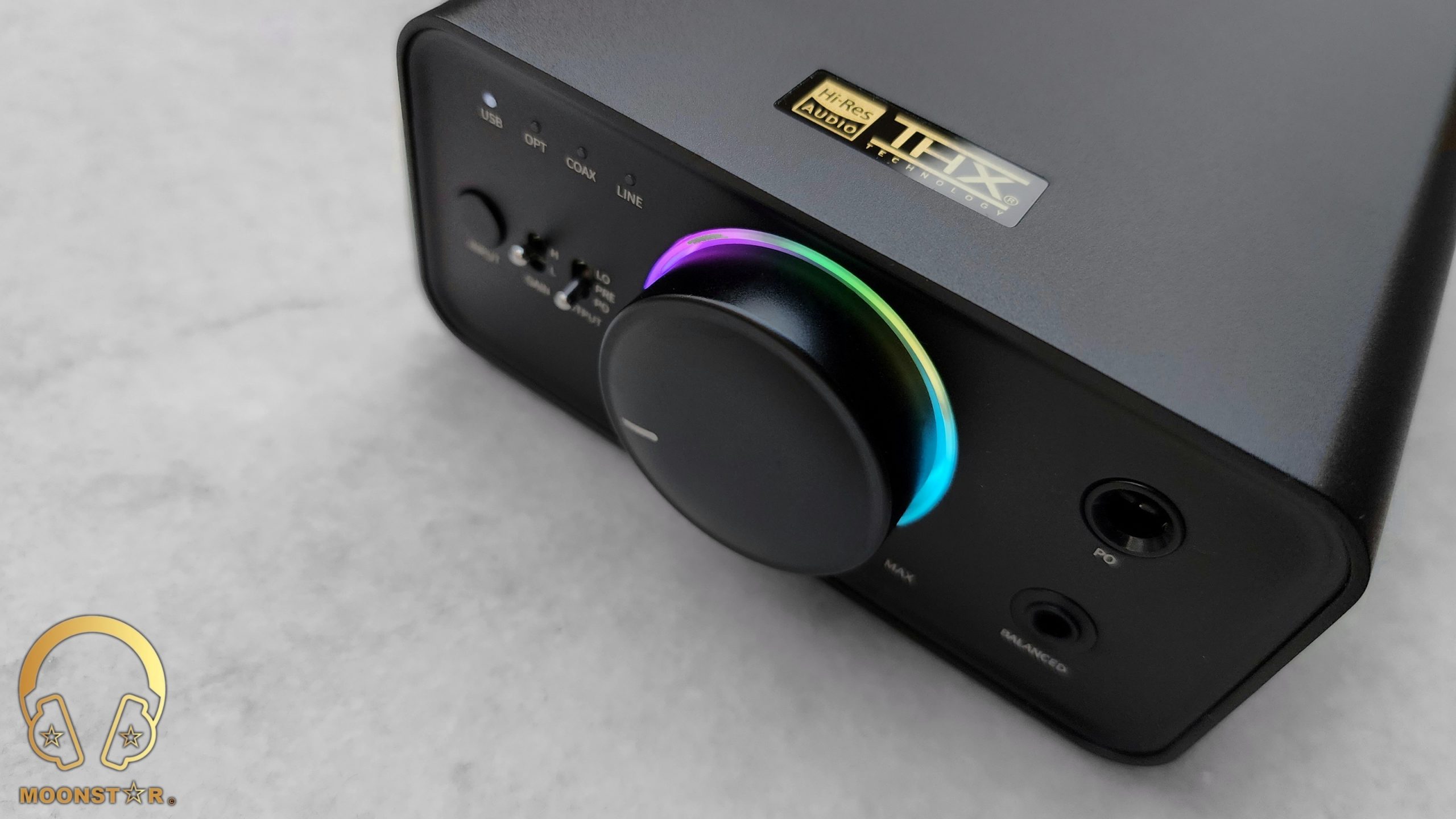
Disclaimer:
I would like to thank FiiO for providing me the K7 DAC & Headphone Amplifier as review sample. I am not affiliated with FiiO beyond this review and these words reflect my true and unaltered, opinions about the product.
Price & Availability:
The FiiO K7 is a quite reasonable priced Headphone DAC/Amplifier that is actually available for 199.99 US$. More information’s can be found under the link below;
Package & Accessories:
The FiiO K7 came inside a square shaped black box that was wrapped with a cardboard sleeve that has a fancy design that sport the illustration and some product related brandings with an iridescent finish on its surface.

The box of the K7 contains the following items:
- 1 x FiiO K7 Desktop Headphone DAC/Amplifier
- 1 x USB-A to USB-B cable
- 1 x Power Cable
- 1 x Power Adapter
- 1 x User Manual & Warranty card
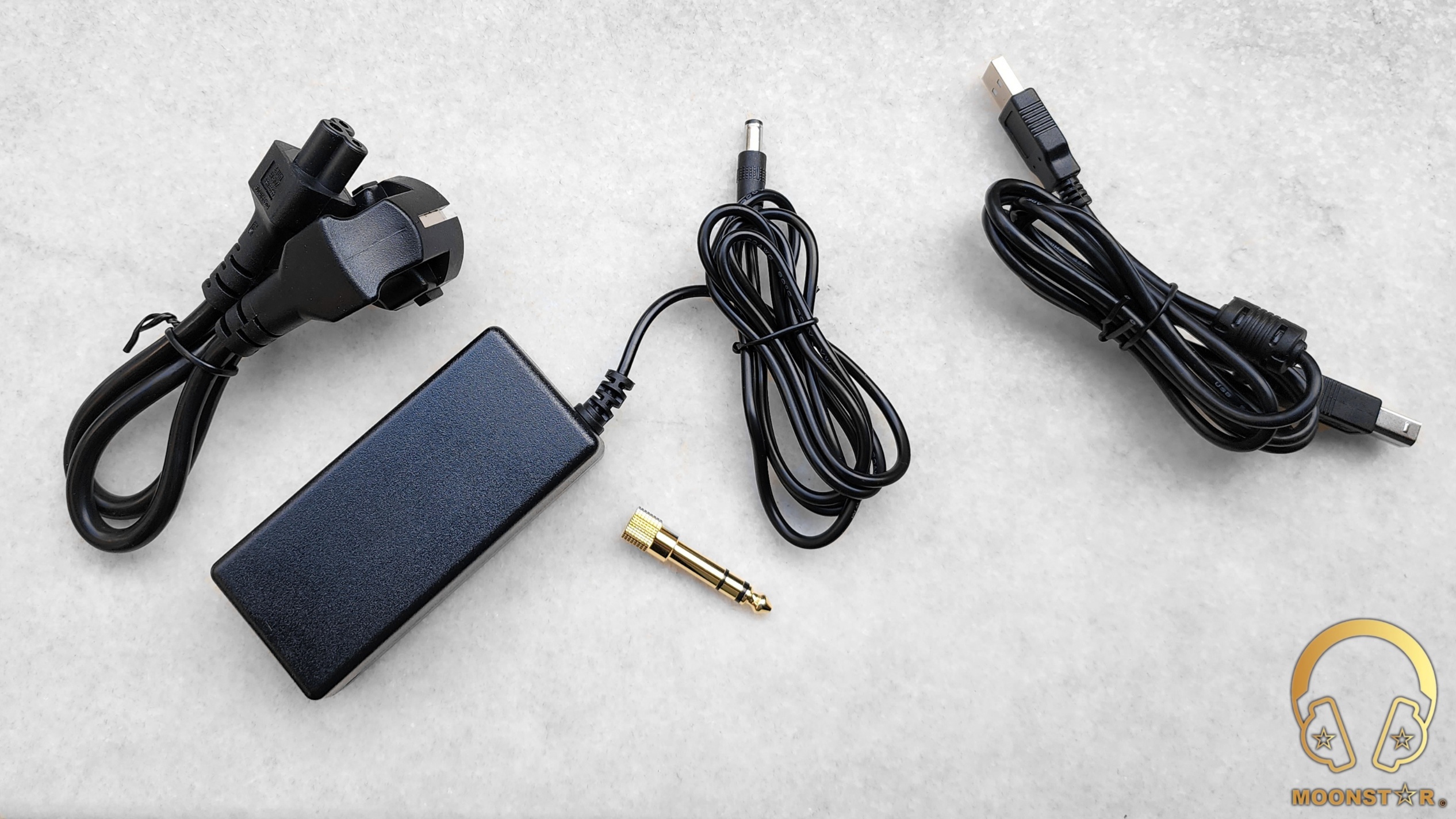
Design & Build Quality:
The FiiO K7 is the company’s latest true balanced desktop type DAC & Headphone Amplifier that features a pretty robust CNC machined Aluminum body with a black finish. The K7 is equipped with multiple input, output and control interfaces that are located on the front and rear side of the device. The device has dimensions of about 120 x 168 x 55mm and weights approx 610grams.
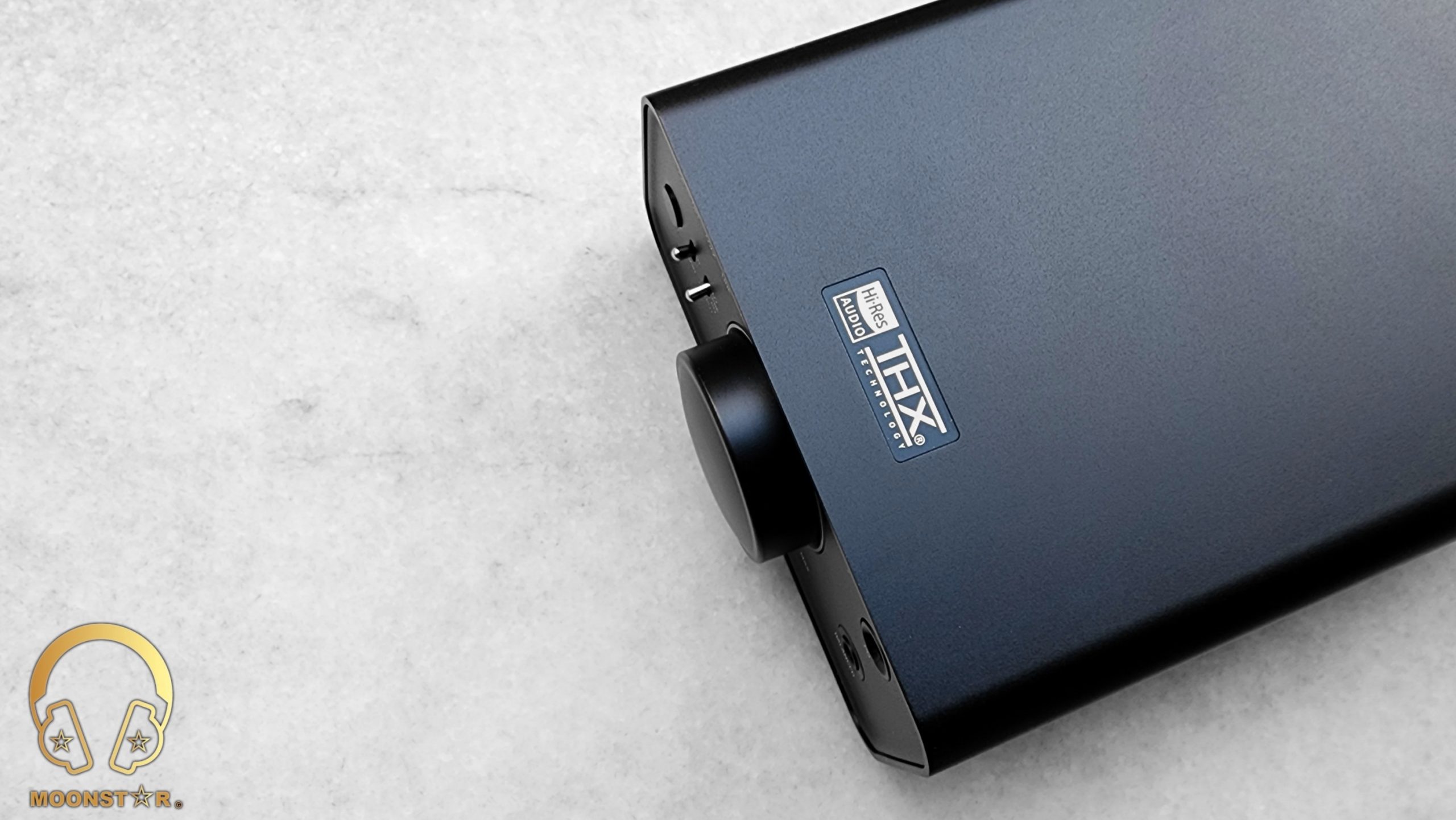
On the top of the device are the FiiO brand logo and a label with the Hi-Res Audio & THX Technology branding.
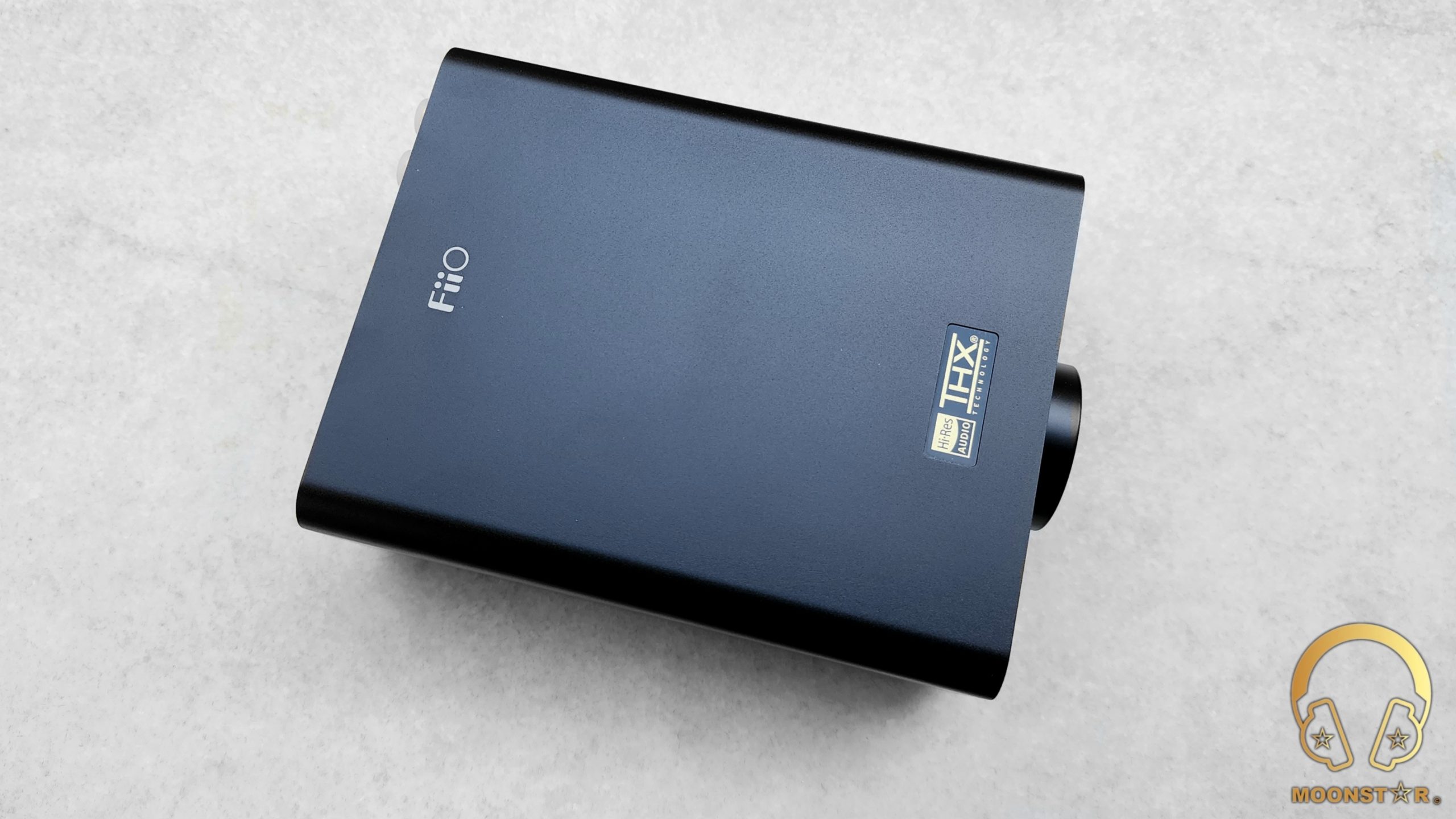
The front panel of the K7 is equipped with the analog outputs and multiple control tools such like buttons, potentiometers and switches.
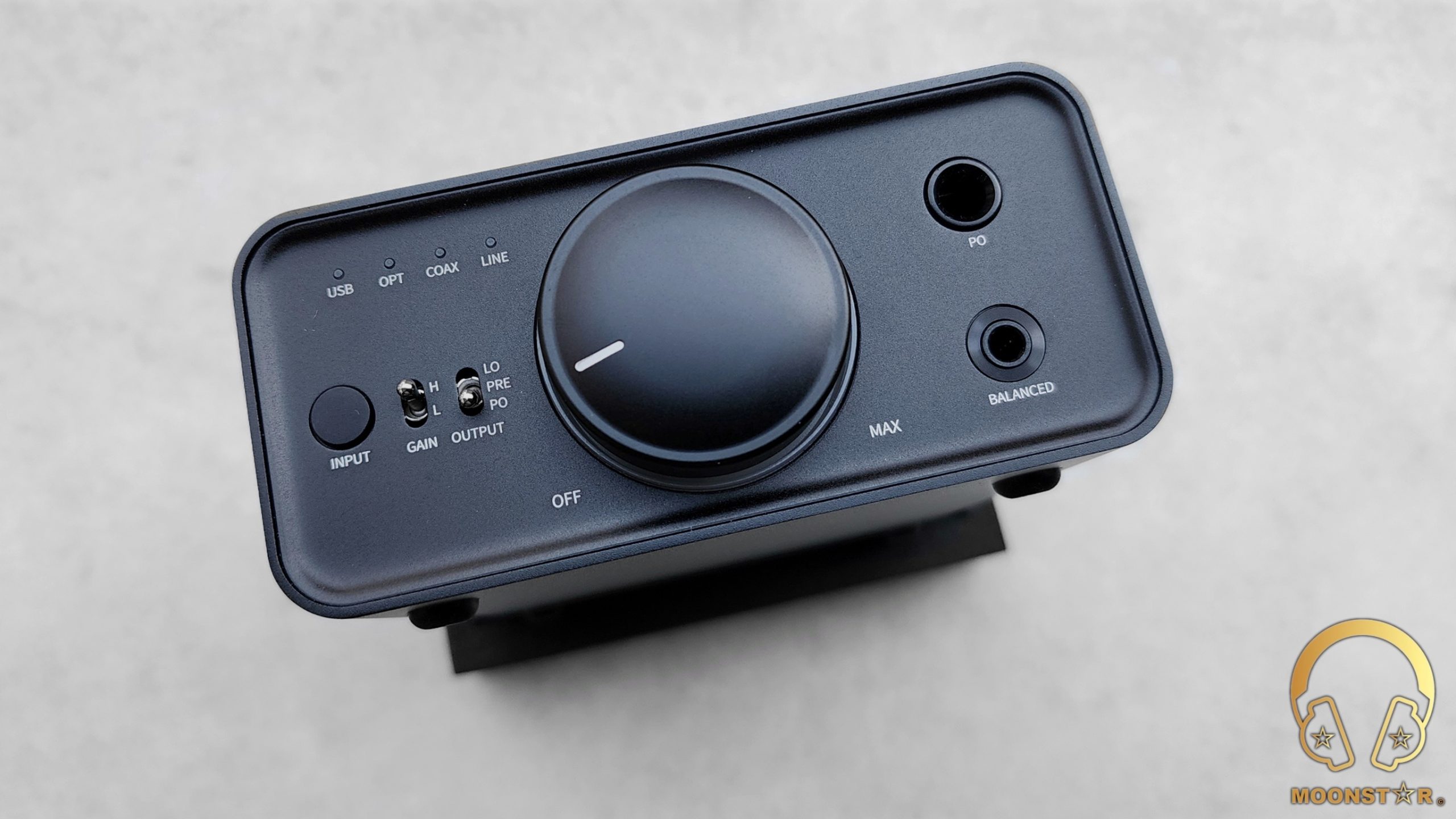
The right side of the front panel features the 6.35mm Single Ended and 4.4mm Balanced headphone outputs.
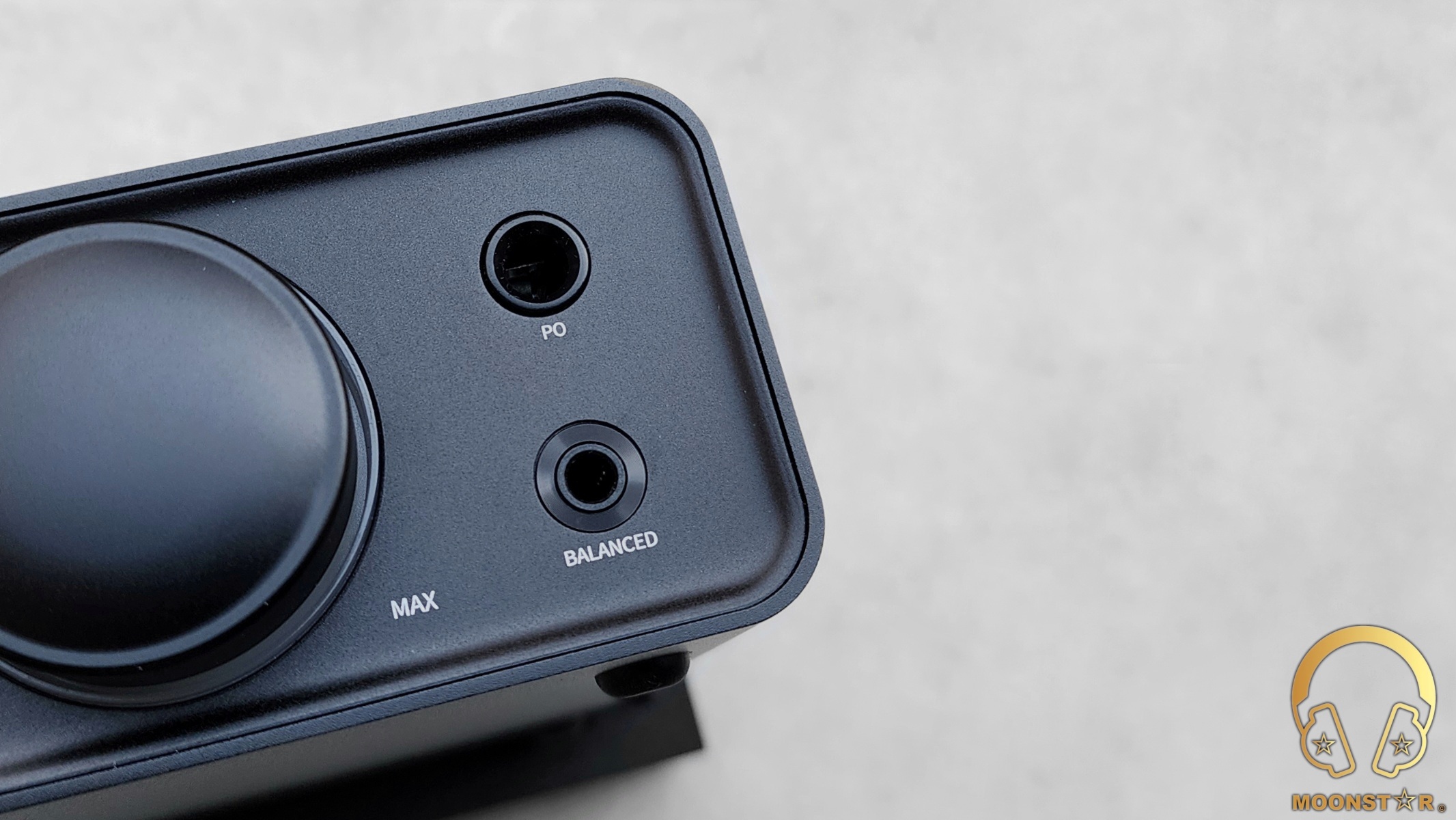
The center of the front panel is equipped with a volume wheel/potentiometer that sports a fancy looking RGB status indicator in form a ring that glows up in various colors depending of the codec and operating status of the device.
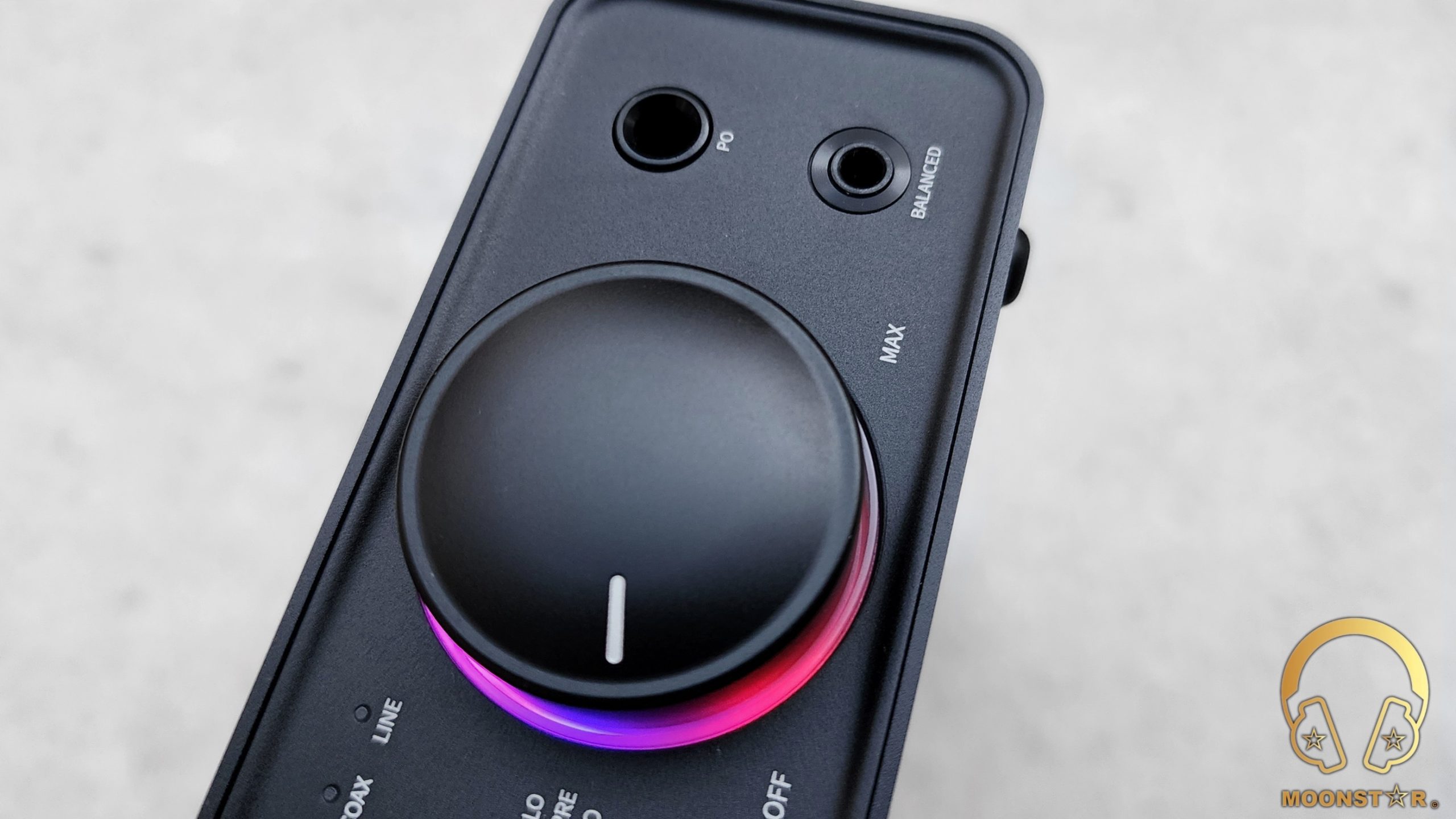
The left side of the front panel sports an input button and 4 LED indicators that give you information about the actual selected source. Moreover, here are two witches one for High/Low gain and one to select the output.
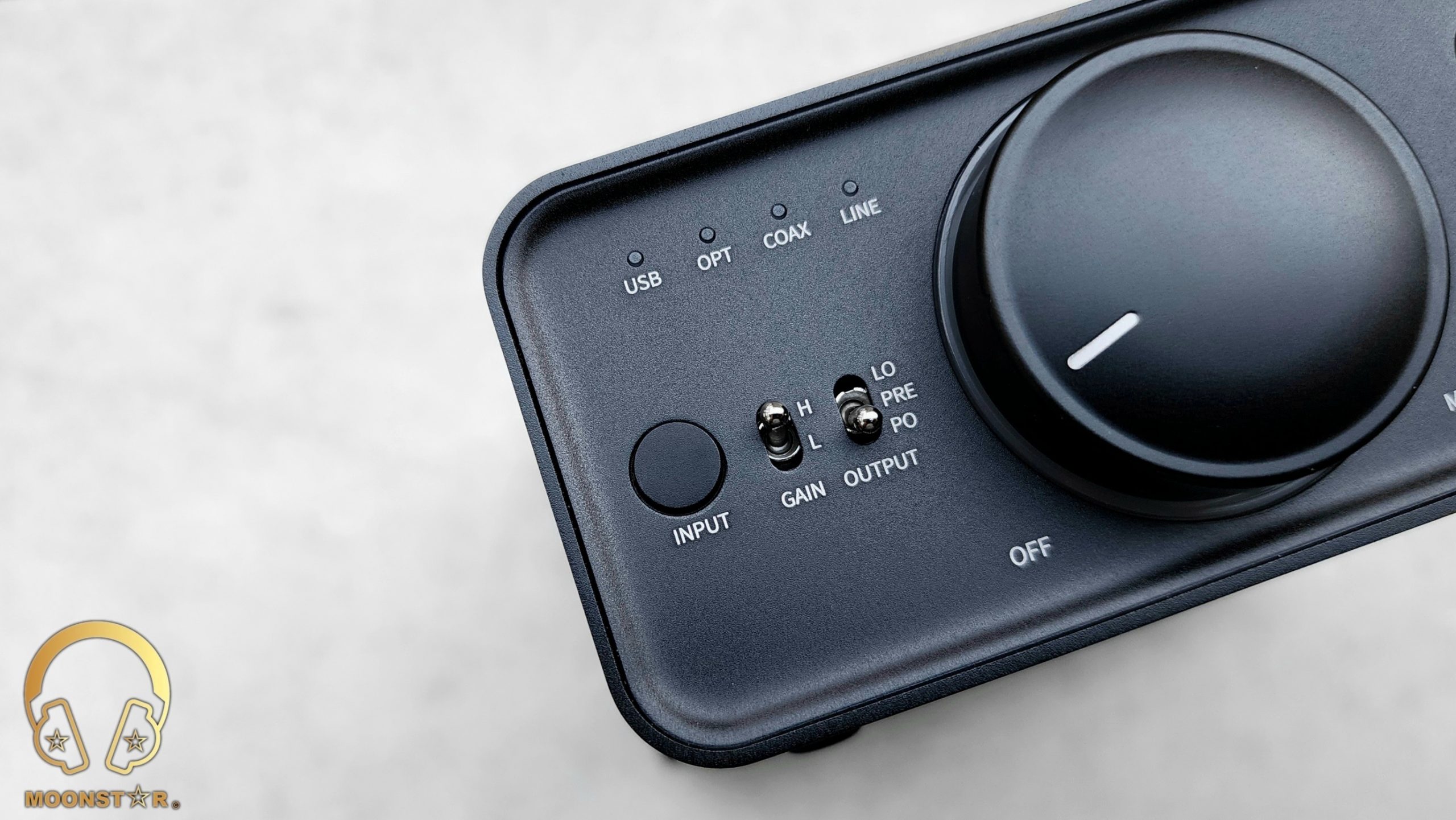
The rear panel of the K7 features a Single Ended Line-In, USB Type-B, Optical (Toslink), Coaxial Inputs and Single-Ended output interface. Here is also the power input of the device.
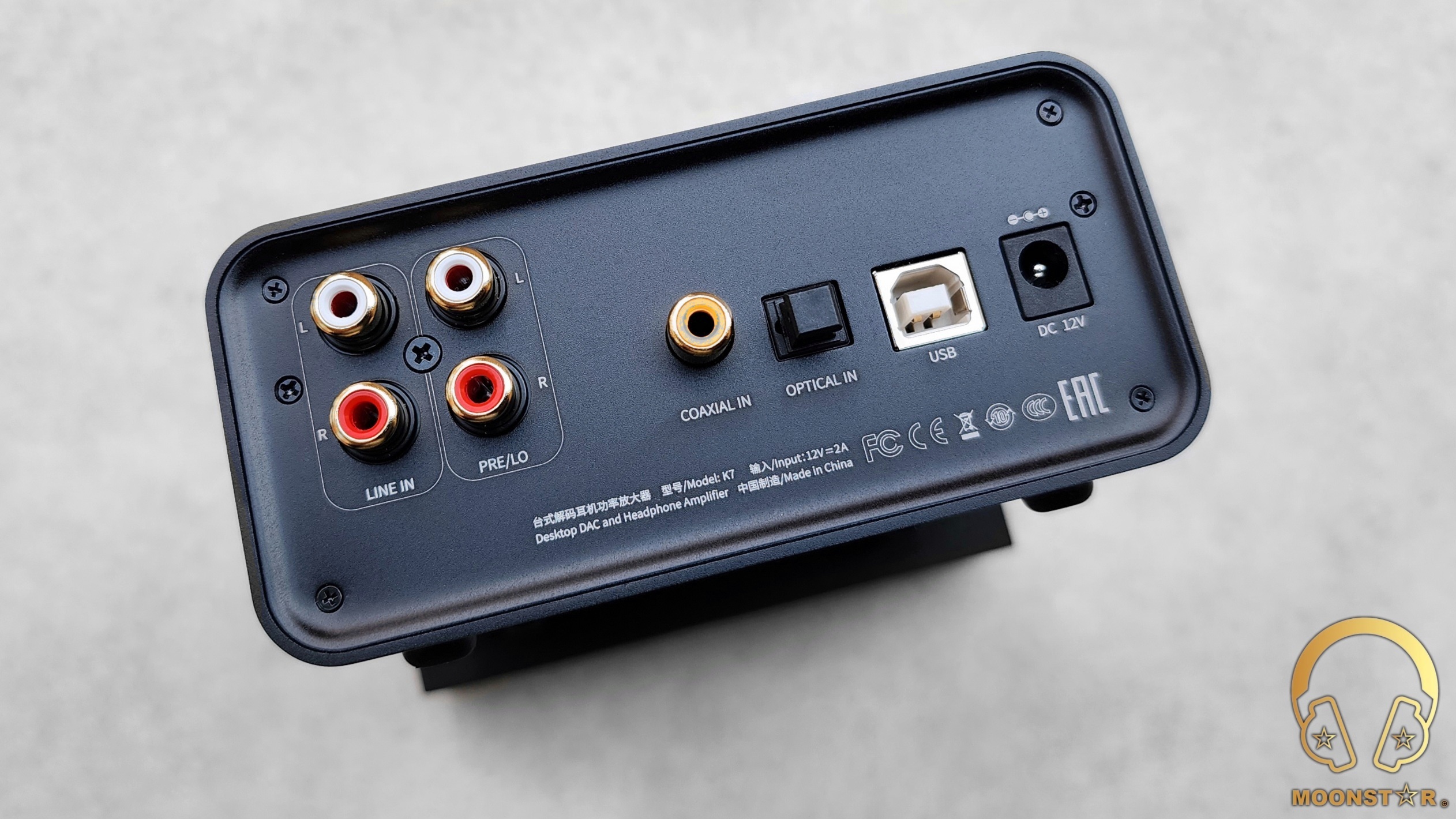
The overall build quality of the K7 meets my expectations from a devices at this price level same like other FiiO products.
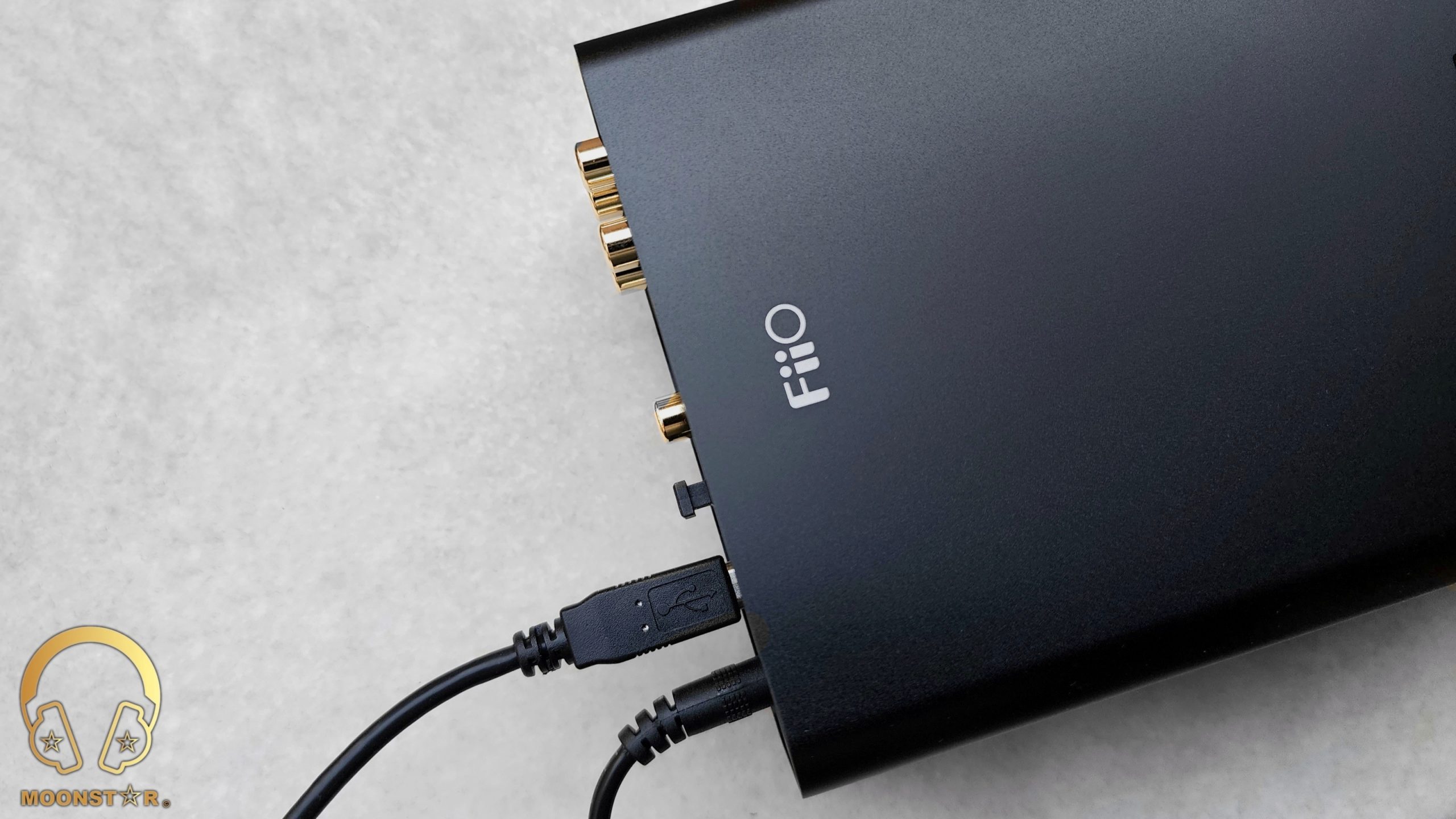
Specifications:
- Model : K7
- DAC : AK4493SEQ x2
- Decoder : XMOS XUF 208
- Amplifier : Dual THX AAA 788+
- Volume Chips : NJU72315+OP
- Outputs : 6.35mm Single-Ended + 4.4mm Balanced
- Inputs : USB, Optical, Coaxial, RCA
- 6.35mm SE Output : up to 1220mW @ 32Ω / 140mW @ 300Ω
- 4.4mm BAL Output : up to 2000mW @ 32Ω / 560mW @ 300Ω
- SNR : >120dB (A-weighted, UAC)
- Noise floor : PO<4.1uV
- THD+N : <0.0003% (1 kHz/32Ω/dbA)
- Output impedance : <1Ω
- Dimensions : 120 x 168 x 55mm
- Weight : 610g
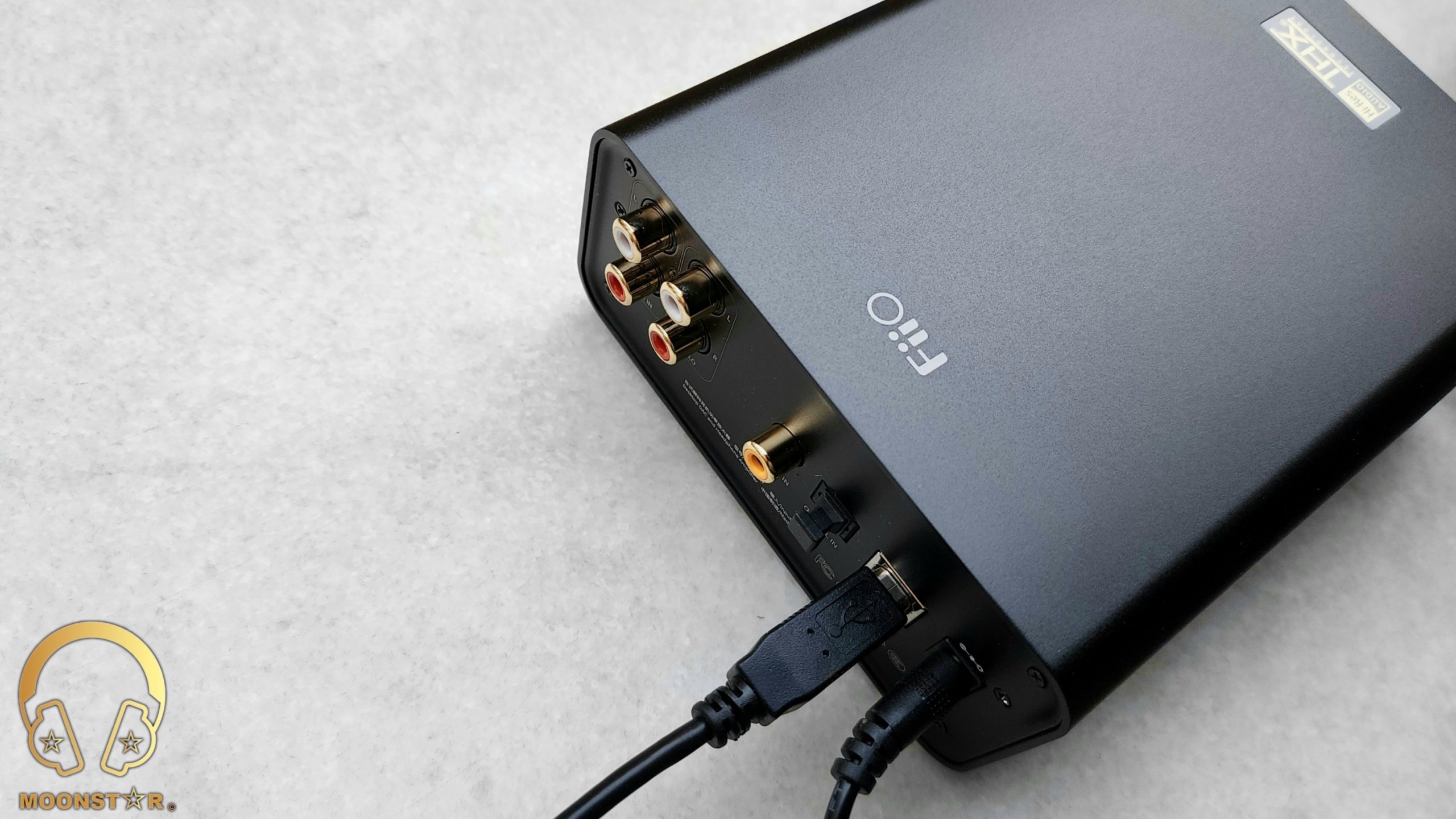
Hardware Features:
The FiiO K7 is a desktop DAC & Headphone Amplifier that features some interesting hardware specs such like a Dual AK4493SEQ DAC Chip setup, 2x THX AAA 788+ amplifiers, XMOS USB receiver and NJU72315+OP Volume chips.
AK4493SEQ DAC Chip:
The FiiO K7 is equipped with 2x AK4493SEQ DAC Chips of the company Ashai Kasei for its true balanced architecture. The AK4493SEQ is a high-performance 32-Bit Digital to Analog converter designed for audiophile-grade applications such as Digital Music players, Portable and Desktop type DAC’s and DAC/Amplifiers.
The AK4493SEQ inside the K7 offers a SNR (Signal to Noise Ratio) value of 120dB (A-weighted, UAC) and THD+N <0.0003% (1 kHz/32Ω/dbA).
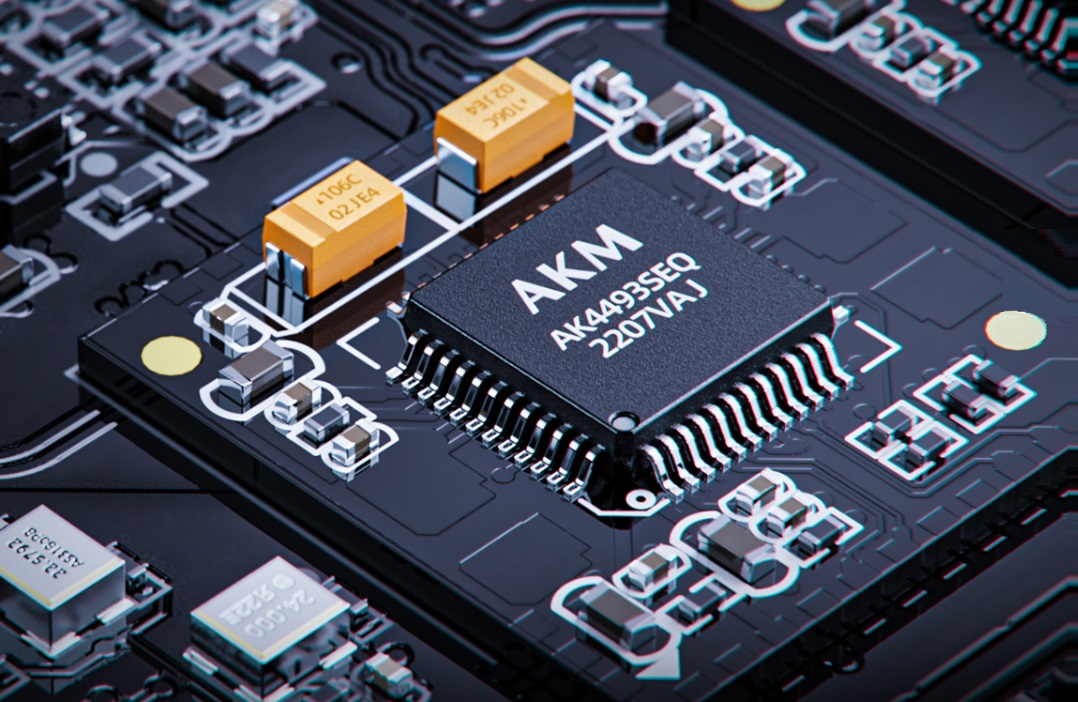
Analog Outputs & Amplification (2x THX AAA 788+):
The FiiO K7 is a quite powerful amplifier with a true balanced architecture, which means that each channel is driven independently. The K7 is equipped with both a 6.35mm Single-Ended and 4.4mm Balanced 3.5mm Single Ended (TRS) and 4.4mm Balanced (TRRRS) balanced outputs.
Another remarkable feature of the K7 is its THX AAA™ “Achromatic Audio Amplifier” design that was used to create a clean and powerful analog output. The K7 is able to create up to 1220mW per channel @ 32ohm over the 6.35mm Single-Ended output, while the 4.4mm Balanced out is even more powerful with up to 2000mW @ 32Ω and 560mW @ 300Ω, all with just 1% distortion, which is quite impressive.
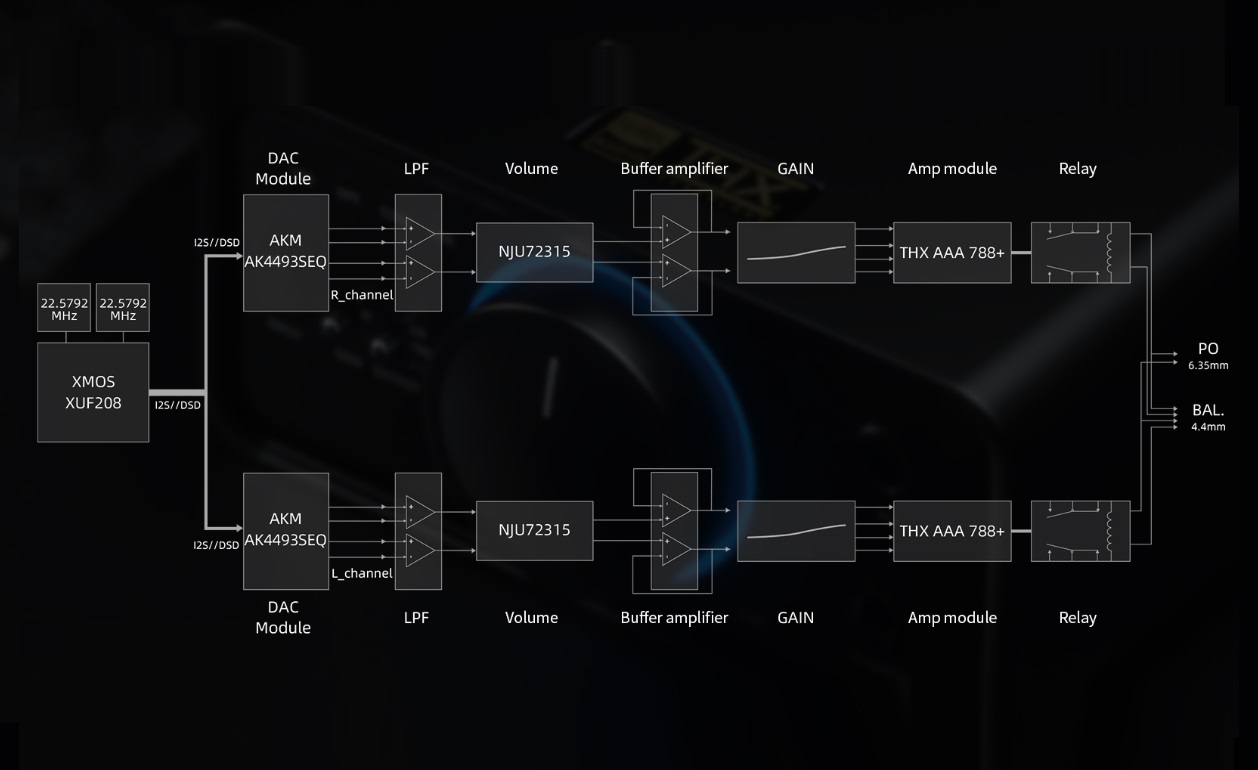
Here are some detailed Audio Parameters:
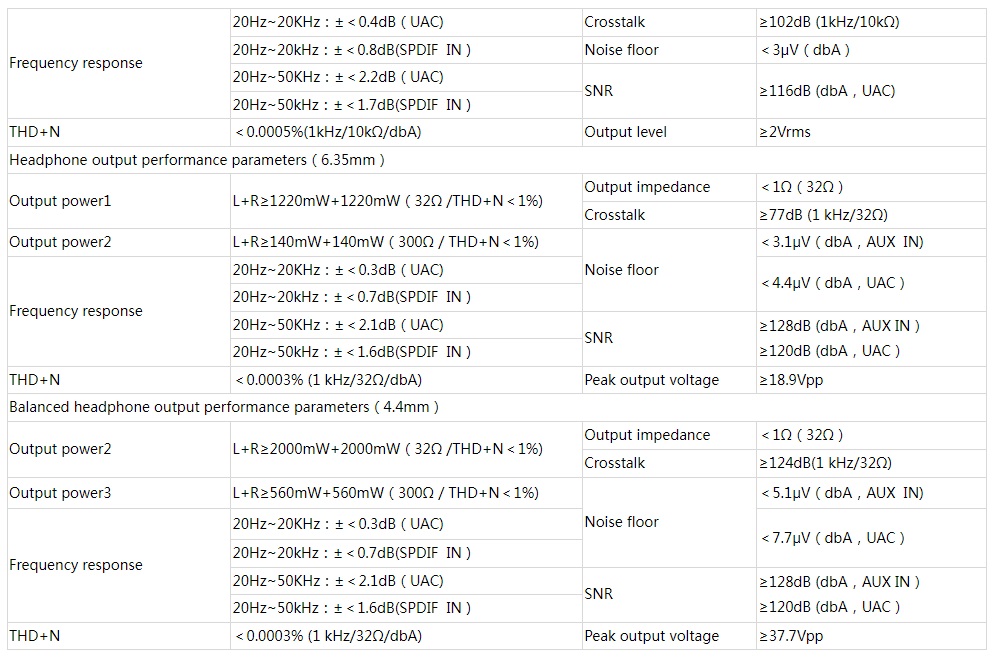
XMOS XU208 for Native DSD:
The FiiO New K7 is equipped with the XMOS XUF208 decoder chip that uses dual clock management in order to handle various music formats. XUF208 USB chip handles up to 384kHz-32bit PCM and Native DSD decoding up to DSD256 in USB DAC Mode.
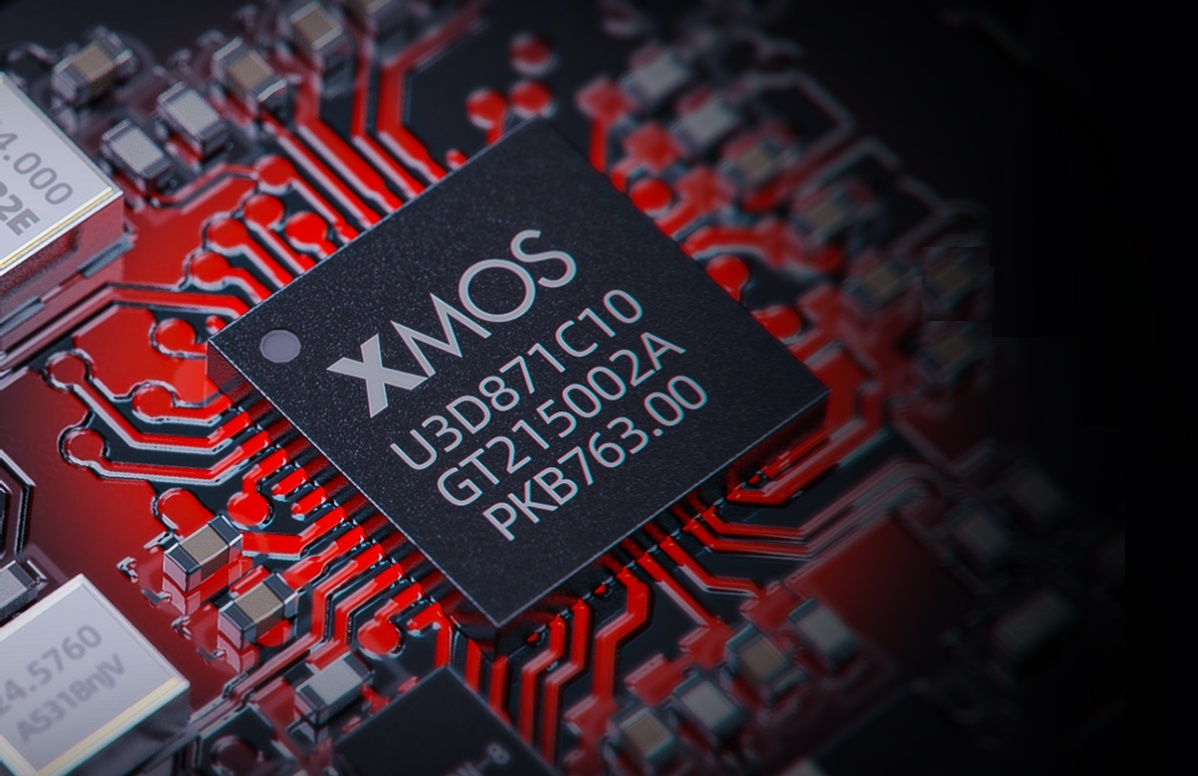
The RGB LED Indicator that surrounds the Potentiometer shows up the following sampling rates:
- Blue : 44.1KHz/48KHz
- Yellow :88.2/96/176.4/192/352.8/384KHz
- Green :DSD64/128/256

Low-Noise Power Supply:
The K7 features a power design consisting of multiple independent stages, with a voltage of each stage being regulated by low-noise LDO’s. Feeding this power design is an external 12V switching power supply.
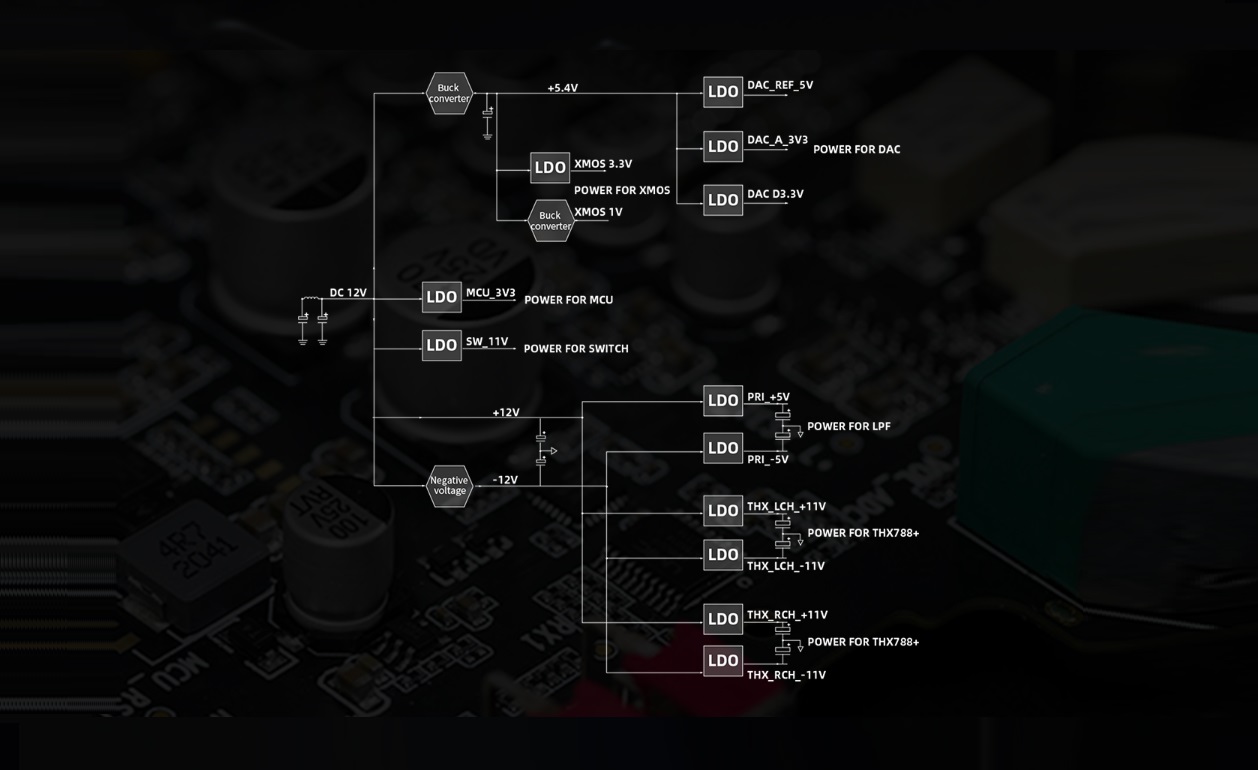
Equipment’s used for this review:
- DAC/Amplifier’s : FiiO K7
- Sources : ASUS TUF FX504GD
- IEM’s : FiiO FH9, FiiO FH7S, Meze Audio RAI Penta
- Headphones : HiFiMAN Sundara Closed-Back, HiFiMAN Edition XS
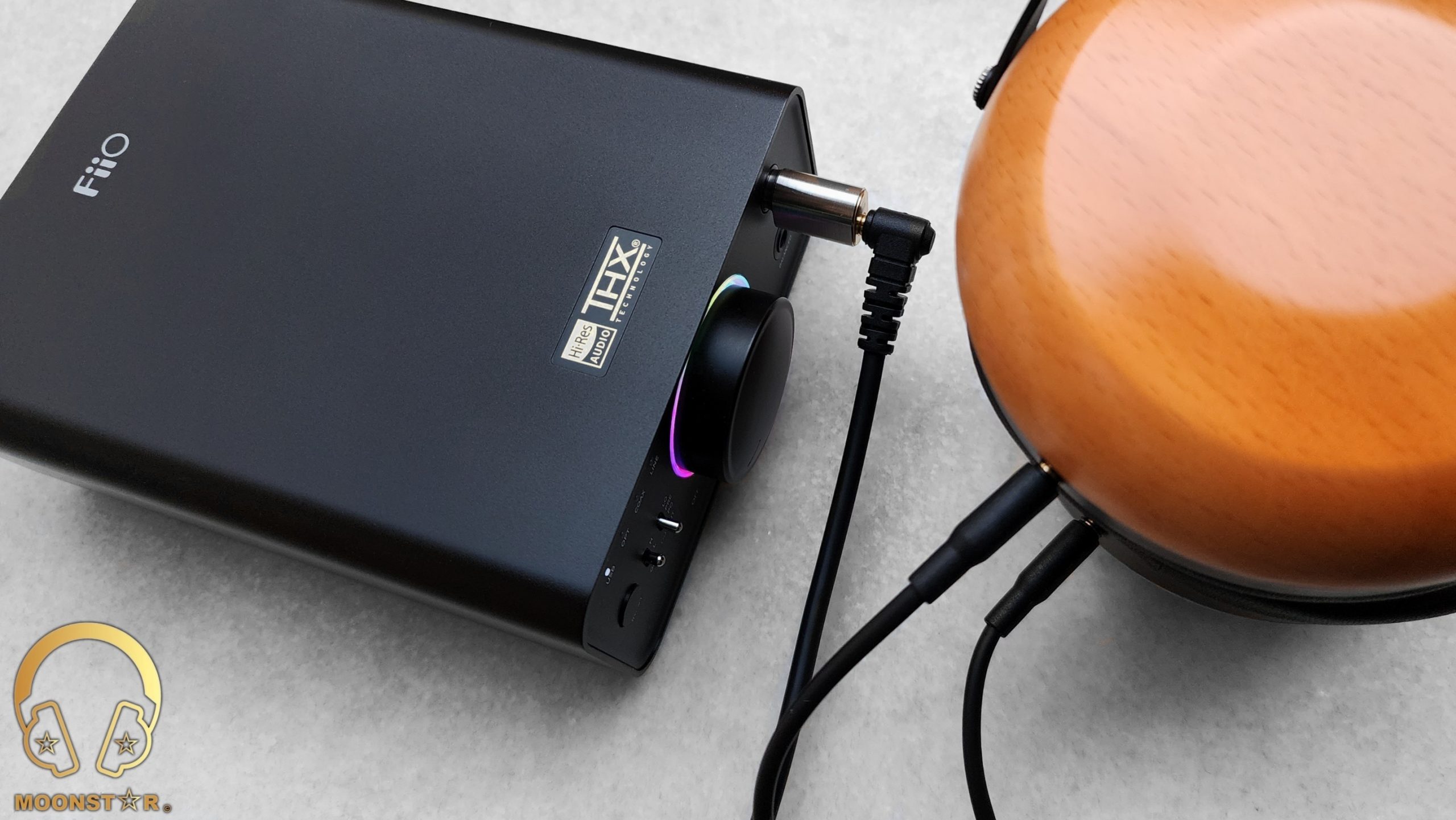
Albums & tracks used for this review:
- Adele – My Little Love (Dezzer HiFi)
- Randy Crawford – On Day I Will Fly Away (Flac 16bit/44.1kHz)
- Hayley Westenra – Odyssey Album (Dezzer HiFi)
- Dionne Warwick – Walk On By (Flac 16bit/44.1kHz)
- Sarah McLachlan – Angel (Flac 24bit/48kHz)
- Sertap Erener – Aşk (Flac 16bit/44.1kHz)
- Edith Piaf – Non Je Ne Regrette Rien (Flac 16bit/44.1kHz)
- Diana Krall – So Wonderful (DSF)
- Aretha Franklin – I Say A Little Payer (Flac 24bit/96kHz)
- Sonya Yoncheva – (Giuseppe Verdi) II Trovatore, ActI (Flac 24bit/96kHz)
- George Michael – Don’t Let the Sun Go Down on Me (Flac 24bit/192kHz)
- David Bowie – Heroes (Flac 24bit/192kHz)
- Elton John – Rocket Man ((Flac 24bit/96kHz)
- Barry White – Just The Way You Are (Flac 24bit/48kHz)
- Isaac Hayes – Walk On By (Flac 16bit/44.1kHz)
- Sting – Englishman in New York – (Flac 24bit/48kHz)
- Eric Clapton – Wonderful Tonight (Flac 24bit/96kHz)
- B. King – Riding With The King (Tidal Hi-Fi)
- Dave Gahan – Kingdom (Tidal Hi-Fi)
- U2 – Sunday Bloody Sunday (Flac 16bit/44.1kHz)
- Bro Safari, UFO! – Drama (Deezer HiFi)
- Armin Van Buuren – Vini Vici (Flac 16bit/44.1kHz)
- Daft Punk – Doin’ it Right (Flac 24bit/96kHz)
- Jo Blankenburg – Meraki (Spotify)
- Lorde – Royals (Flac 24bit/48kHz)
- Massive Attack – Angel (Flac 24bit/48kHz)
- Toutant – Rebirth (Deezer HiFi)
- Gogo Penguin – Raven (Flac 24bit/192kHz)
- Gogo Penguin – Murmuration (Flac 24bit/192kHz)
- Portishead – It Could Be Sweet (Spotify)
- Max Richter – On the Nature of Daylight (Flac 24bit/96kHz)
- Charly Antolini – Duwadjuwandadu (Flac 24bit/192kHz)
- Ferit Odman – Look, Stop & Listen (Flac 24bit/192kHz)
- Chopin – Nocturn No. 20 In C-Sharp Minor (Flac 16bit/44.1kHz)
- Fazıl Say – Nazım Oratoryosu (Live) (Flac 16bit/44.1kHz)
- Vivaldi – Le QuarttroStagioni “The Four Season” (Deezer HiFi)
- Otto Liebert & Luna Negra – The River (Flac 24bit/192kHz)
- Lunatic Soul – The Passage (Flac 16bit/44.1kHz)
- Deftones – My Own Summer (Shove it) (Flac 16bit/44.1kHz)
- Metallica – Sad but True (Flac 24bit/96kHz)
- Metallica – Master of Puppets (Flac 24bit/96kHz)
- Opeth – Windowpane (Flac 16bit/44.1kHz)
- Megadeth – Sweating Bullets (Tidal Hi-Fi)
- Rush’s – Leave That Thing Alone (Flac 16bit/44.1kHz)
- Slayer – Angel of Death (Spotify)
- Liquid Tension Experiment 2 – Acid Rain (Spotify)
- Yosi Horikawa – Bubbles (Spotify)
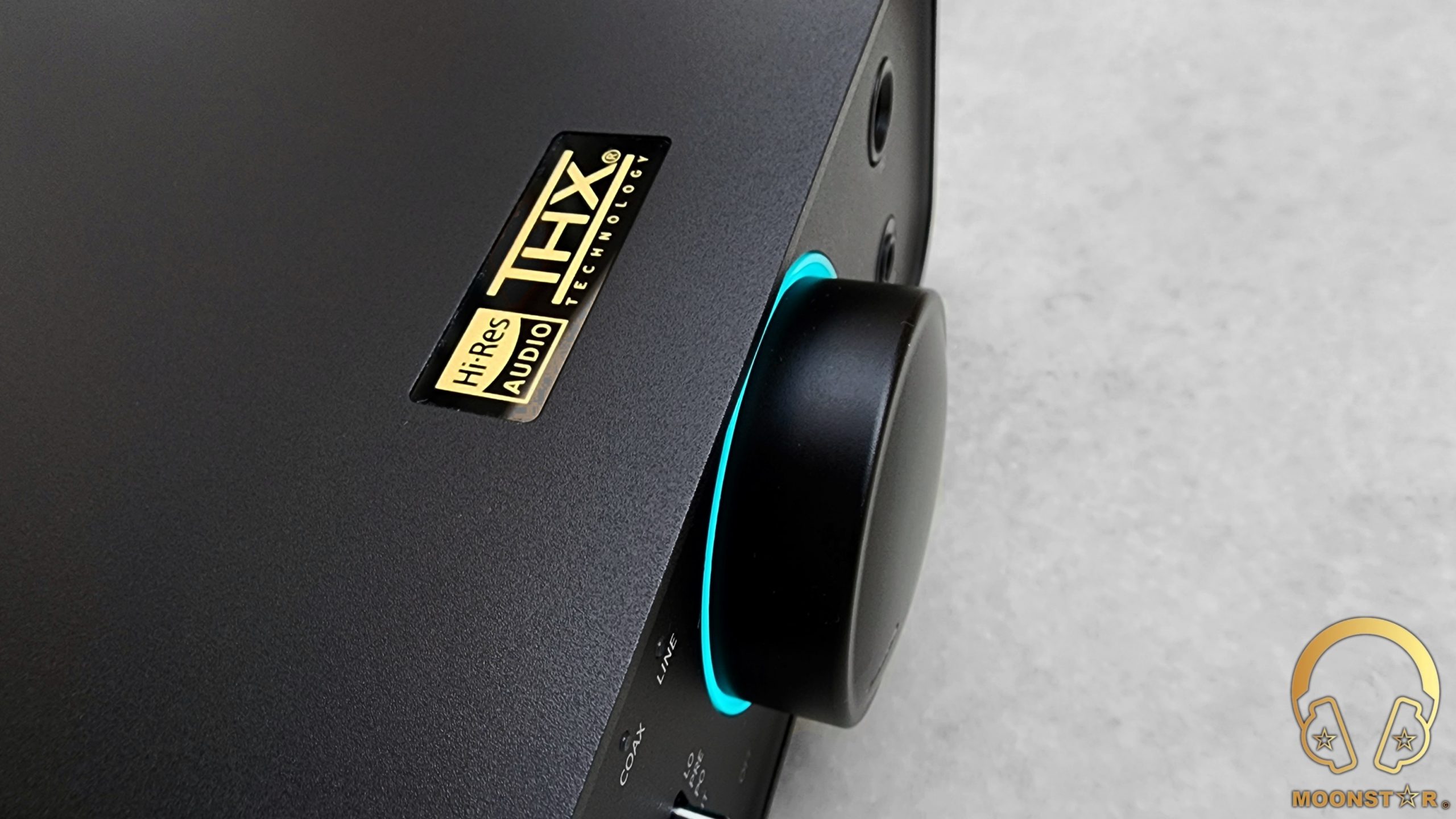
The Sound:
The FiiO K7 is a highly versatile and powerful DAC & Amplifier solution that impressed me with its very clean and natural presentation, that shows just the right amount of coloration in order to create a pretty musical and to avoid a to sterile overall sound presentation. The K7 is a pretty detailed and natural sounding source with decent sense of technicality and dynamics for its price that works great with both power hungry full sized Headphones and pretty sensitive In-Ear Monitors.
This review has been written after a burn-in period of around 100 – 110 hours. My sound experience below are mainly based on my impressions over the 4.4mm Balanced output paired with In-Ear Monitors such like the FiiO FH9, FH7S and Headphones like the HiFiMAN Sundara and SIVGA Oriole.
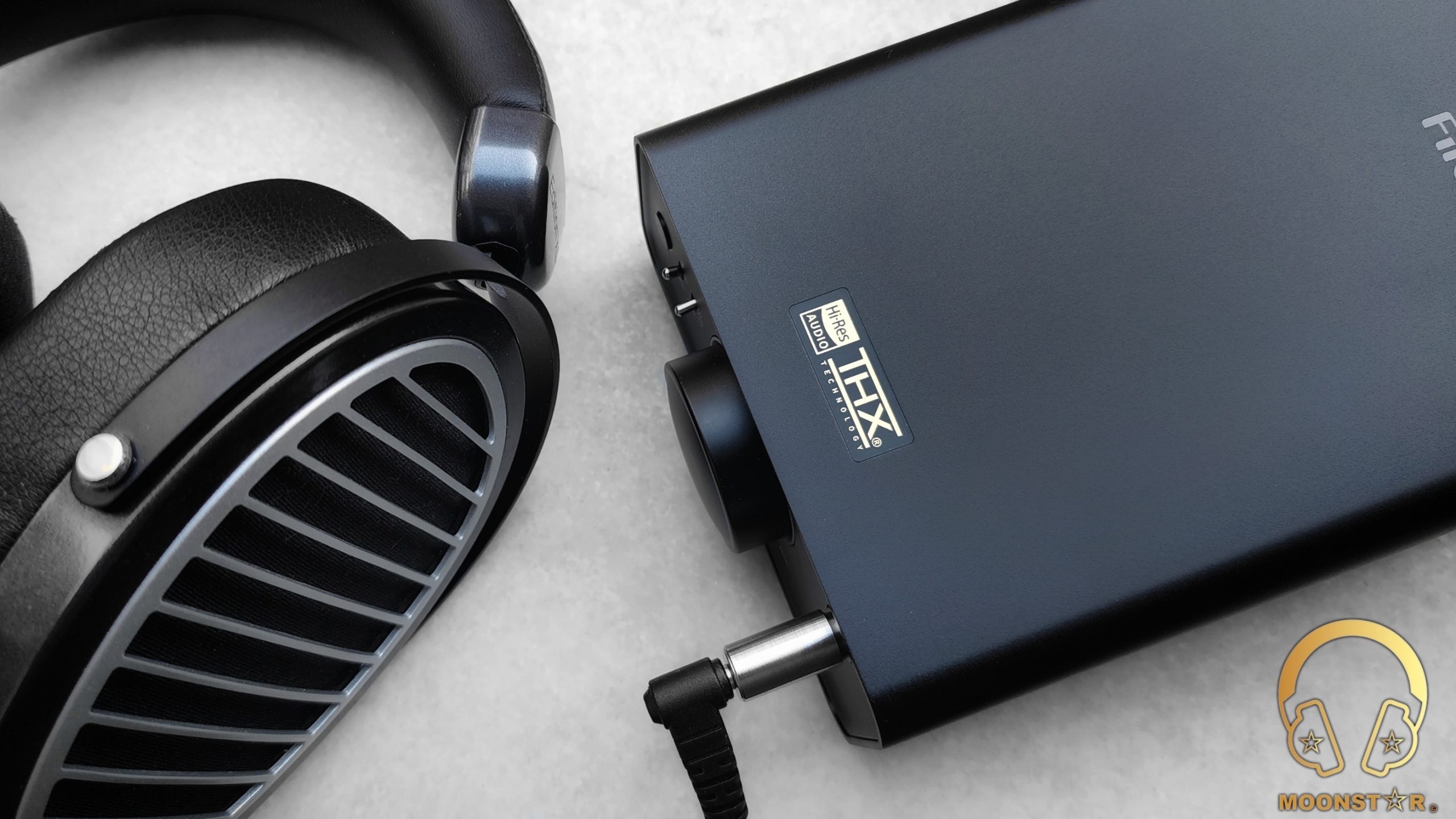
Bass:
The FiiO K7 offers a pretty natural, clean and nicely detailed overall bass response from the subbass up to the midbass region. It was also able to handle all headphones (HiFiMAN Sundara CB, HiFiMAN Edition XS) and IEM’s (FiiO FH9, FiiO FH7S, Meze Audio RAI Penta) in this area with decent sense of authority.
The subbass region of the K7 shows a decent grade of depth and authority with almost all IEM’s and Headphone I have listen to it. Some of my reference songs such like Lorde’s “Royals”, Massive Attack’s “Angle” or to Daft Punk “Doin’ it Right” have been produced with good level of rumble and extension.
The midbass region on the other hand is reproduced in a pretty natural and controlled manner along with a good sense of impact and intensity when I have listened to complex bass passages in songs like Gogo Penguin’s “Raven” or Charly Antolini’s “Duwadjuwandadu”. This is quite impressive for a device with such a reasonable pricing.
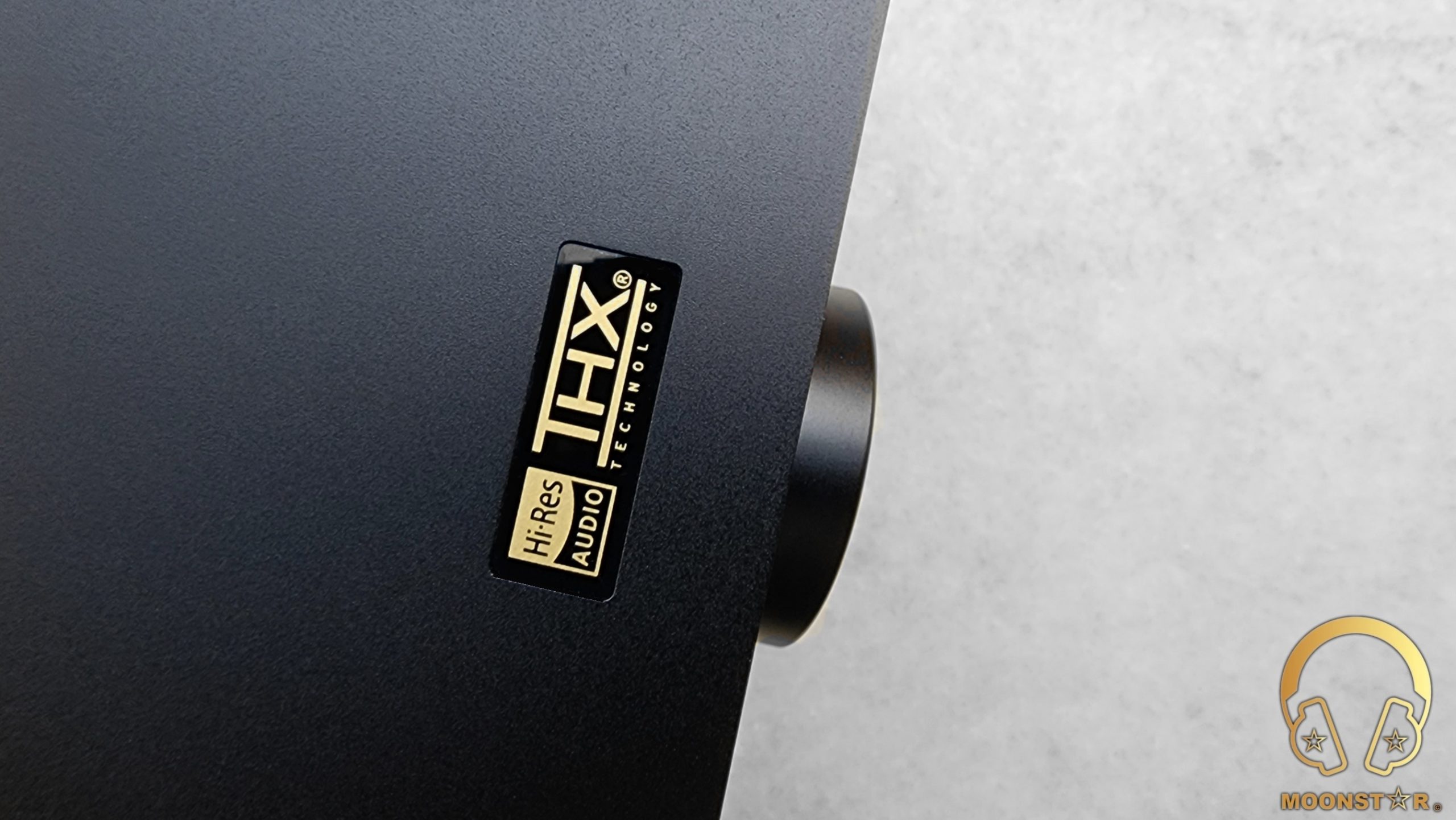
Midrange:
The midrange of the FiiO K7 stands out with it highly transparent and airy atmosphere when I listen to both vocals or to a wide variety of instruments, which shows again how capable this device is as a headphone/earphone DAC & Amplifier.
The sense of resolution from the lower up to the upper midrange area is excellent, especially with respect to the price of this device, which is also shown with an additional dynamism that comes with support from its pretty powerful THX AAA 788+ amplifier circuit.
I have listen to the K7 to a wide variety of instruments including violins, side flutes, cellos or pianos that have been reproduced with a decent level of resolution and naturalness, especially when paired with good In-Ear Monitors or headphones such like the FiiO FD7, Meze RAI Penta and HiFiMAN Edition XS, thanks to its quite airy and transparent midrange atmosphere.
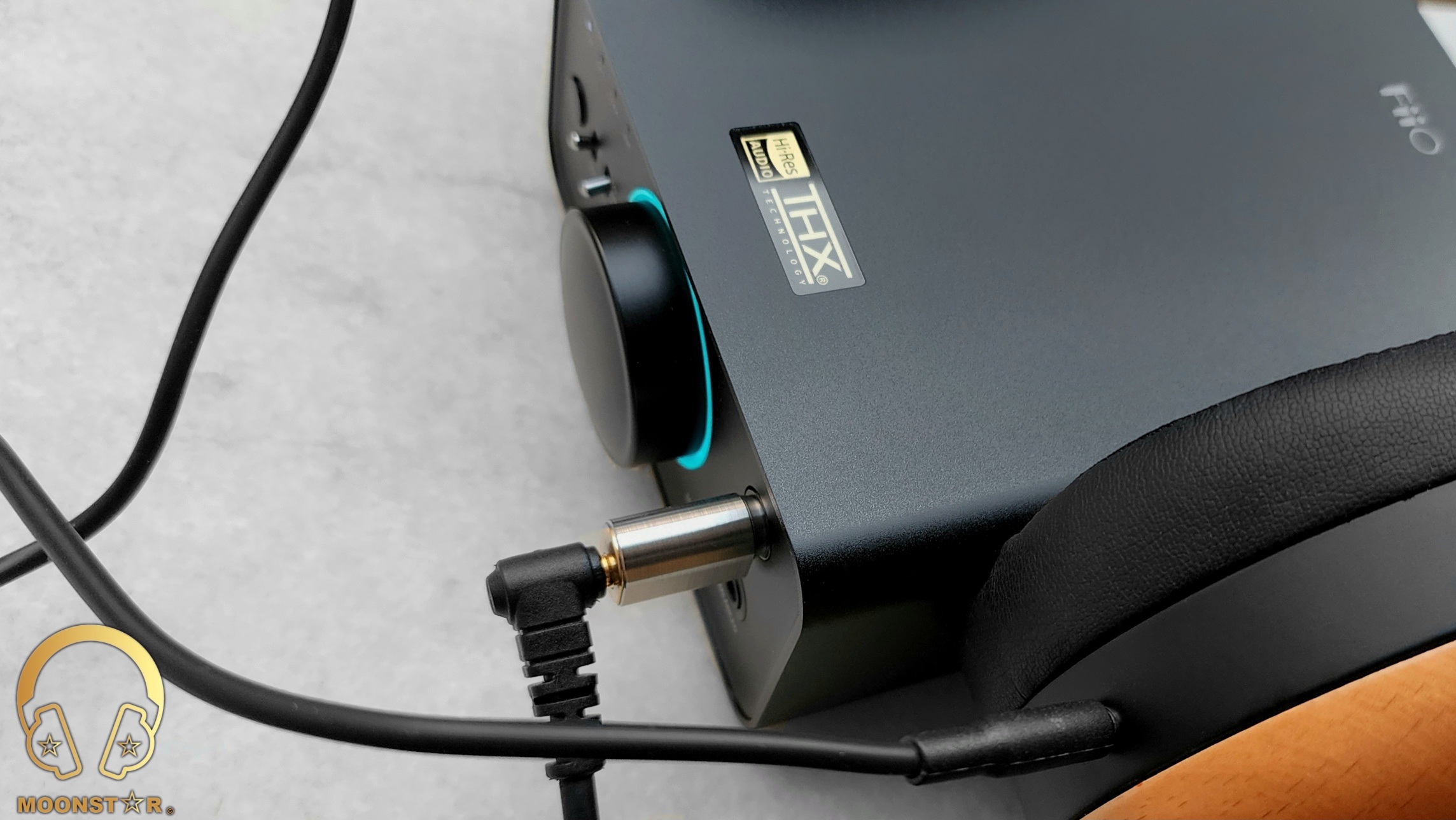
Treble:
What I really like about the treble presentation of the FiiO K7 is its pretty uncolored nature, which is also able to create a decent sense of clarity and sparkle with all IEM’s and Headphones I have paired the device. The grade of resolution and extension fulfills my expectation from a desktop DAC/Amplifier at this price level especially when I do listen to woodwinds, percussions and to soprano vocals.
Both the lower and the upper treble range are shown with a good level of balance. The lower treble area is shown with a decent grade of clarity and definition, while each individual instrument has been stand out pretty clearly. Instruments from hi-hats in metal music up to violins in classical music are reproduced with good level of presence and extension.
The upper treble area of the FiiO K7 creates a fairly open and airy atmosphere with good sense of brightness that is needed for vocals and for instruments such like cymbals, violins or clarinets without to show any remarkable hissing. The general extension and resolution of this area is again, excellent for a DAC/Amplifier at this level.

Soundstage & Imaging:
The FiiO K7 has a general soundstage presentation that is spacious and airy, which creates decent conditions for a pretty precise separation and placement of instruments and vocals. The soundstage is both fairly wide and deep, while the height of the stage is on a sufficient level.
Conclusion:
The K7 is another solid product from FiiO that impressed me with its versatility in terms of hardware features, compatibility and overall sound performance that pairs pretty well with both sensitive In-Ear Monitors and power hungry Planar Headphones. Moreover, it offers a clean, powerful and quite detailed listening experience that surprised me very well with respect to its reasonable price. The result is a DAC & Amplifier with a pretty small form factor that I can Highly Recommend!
Thank you for the Read!
Moonstar
100+ Head-Fier
Pros: Excellent combination of Musicality & Technical Performance,
Tonality & Timbre,
Decent Overall Resolution,
Clean & Powerful Output,
Great Build Quality,
Doesn’t gets hot even after longer listening periods,
Rich Accessory package that includes Two Cables and many Stacking Tools
Tonality & Timbre,
Decent Overall Resolution,
Clean & Powerful Output,
Great Build Quality,
Doesn’t gets hot even after longer listening periods,
Rich Accessory package that includes Two Cables and many Stacking Tools
Cons: Larger in Size compared to other USB DAC/Amplifier Dongles,
No protective Case available at the moment,
Pricy
No protective Case available at the moment,
Pricy
Quloos QLS MC01 Review
Introduction:
Quloos (former QLS HiFi) is a Chinese brand located in ShenZhen, GuangDong, China, which is specialized in design and production of High End Desktop & Portable Audio Players, DAC’s and Amplifiers.
The Quloos QLS MSC1 that I will now review for you is the company’s first USB DAC/Amplifier dongle. It features 2x Cirrus Logic CS43131 DAC Chips, an Advanced 2×6 Layer PCB Design, Panasonic Film Capacitors, low noise LDO LT3042 & ADM7171 regulators and a Low-Power MCU Management chip. Moreover, it is equipped with a OLED Display, an 100 step independent Hardware Volume Control button, 3.5mm SE and 4.4mm Balanced output, which are located in & outside a CNC Machined Aluminum Alloy Shell with a special anodized surface.
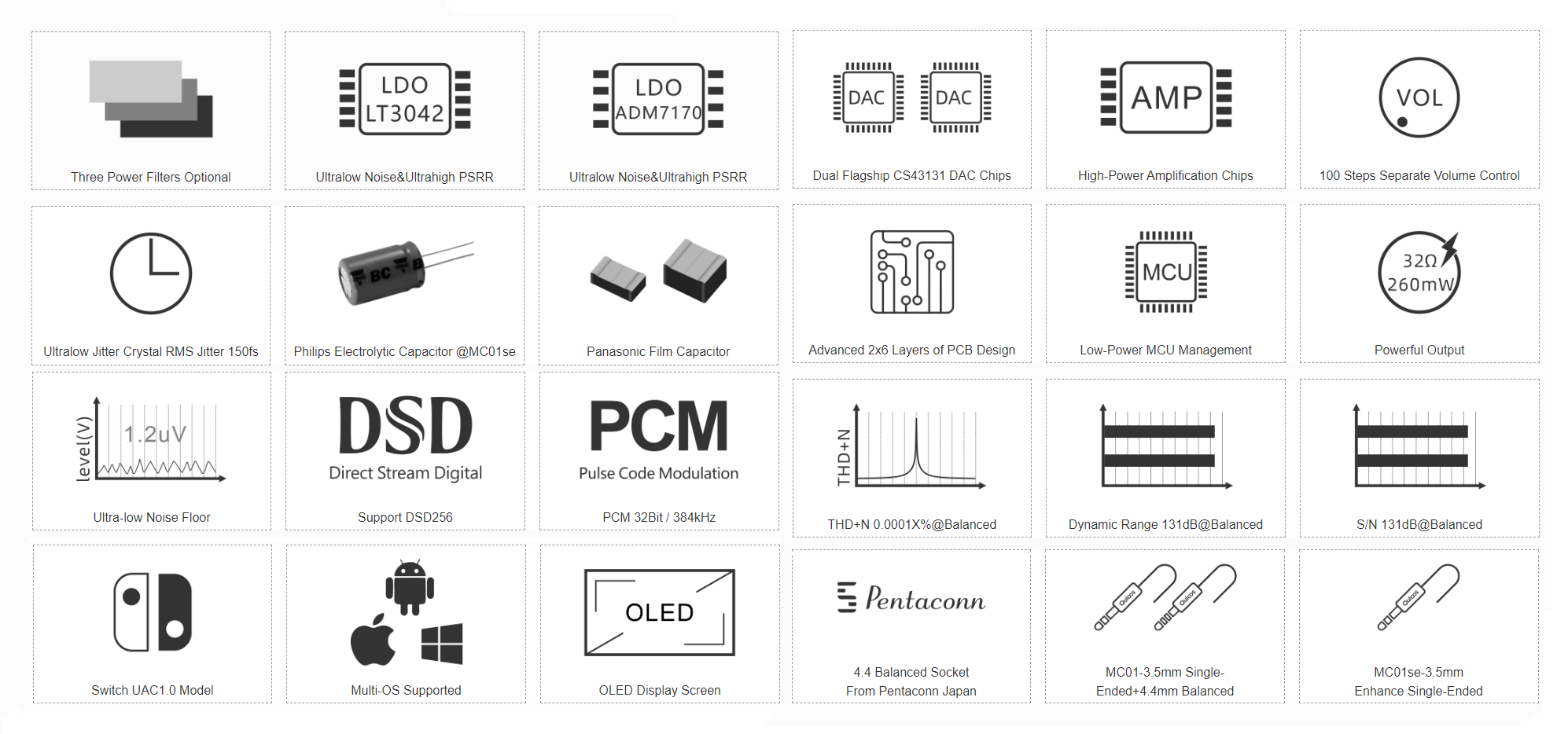
Disclaimer:
I would like to thank Quloos and Shenzhen Audio for providing me MC01 DAC/Amplifier for sample purposes. I am not affiliated with Quloos and Shenzhen Audio beyond this review and all these words reflect my true and unaltered opinions about the product.
Price & Availability:
The actual MSRP price of the Quloos QLS MC01 is 249.99 US$.
Package & Accessories:
The Quloos QLS MC01 came inside a rectangular box with some product and brand related illustrations on the top.

Inside the box are the following contents:
- 1 x Quloos QLS MC01 USB DAC/Amplifier Dongle
- 1 x USB Type-C to Type-C Cable
- 1 x USB Type-C to Lightning Cable
- 1 x USB Type-C to USB A Adaptor
- 1 x Different Type of Silicone Attachment Tools
- 1 X Print Material
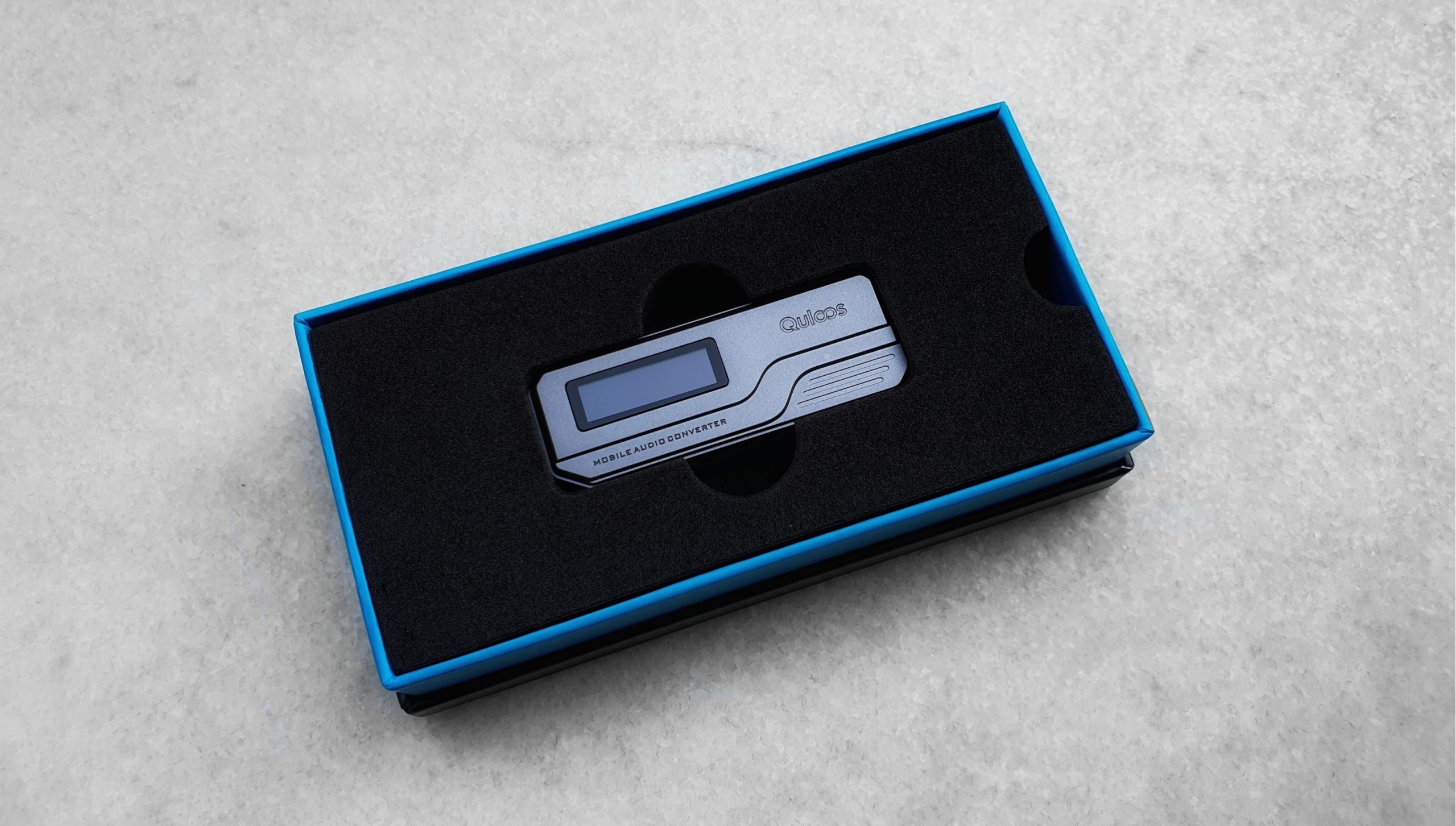
The Quloos MC01 comes with both a USB Type-C to Lightning and a USB Type-C to Type-C low profile cable with a nice braided design. Other brands do sell often one of those cables separately, good job Quloos!
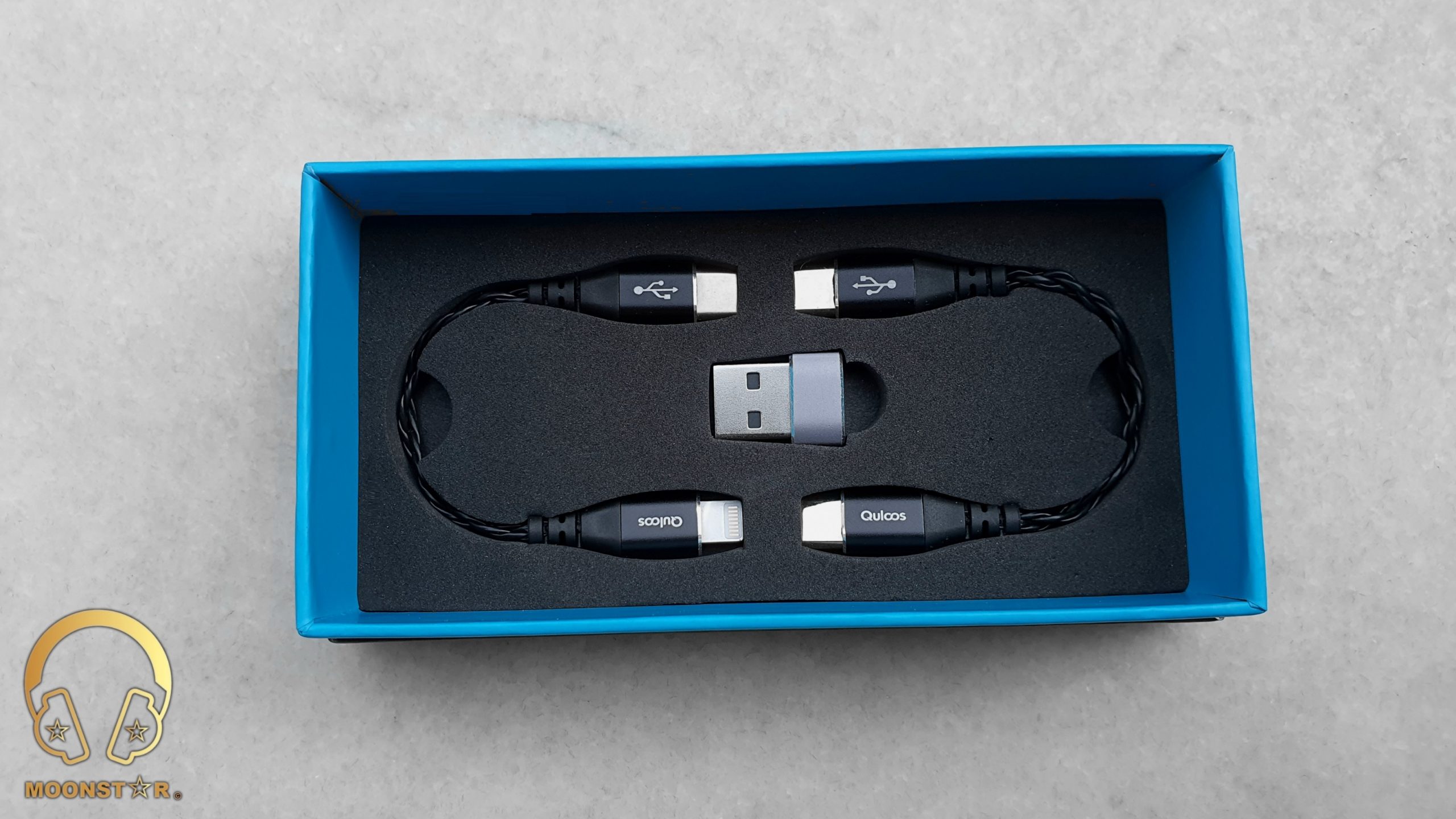
The device comes also with various types of stacking gadgets in form of silicones and metal plates that are some useful additions.
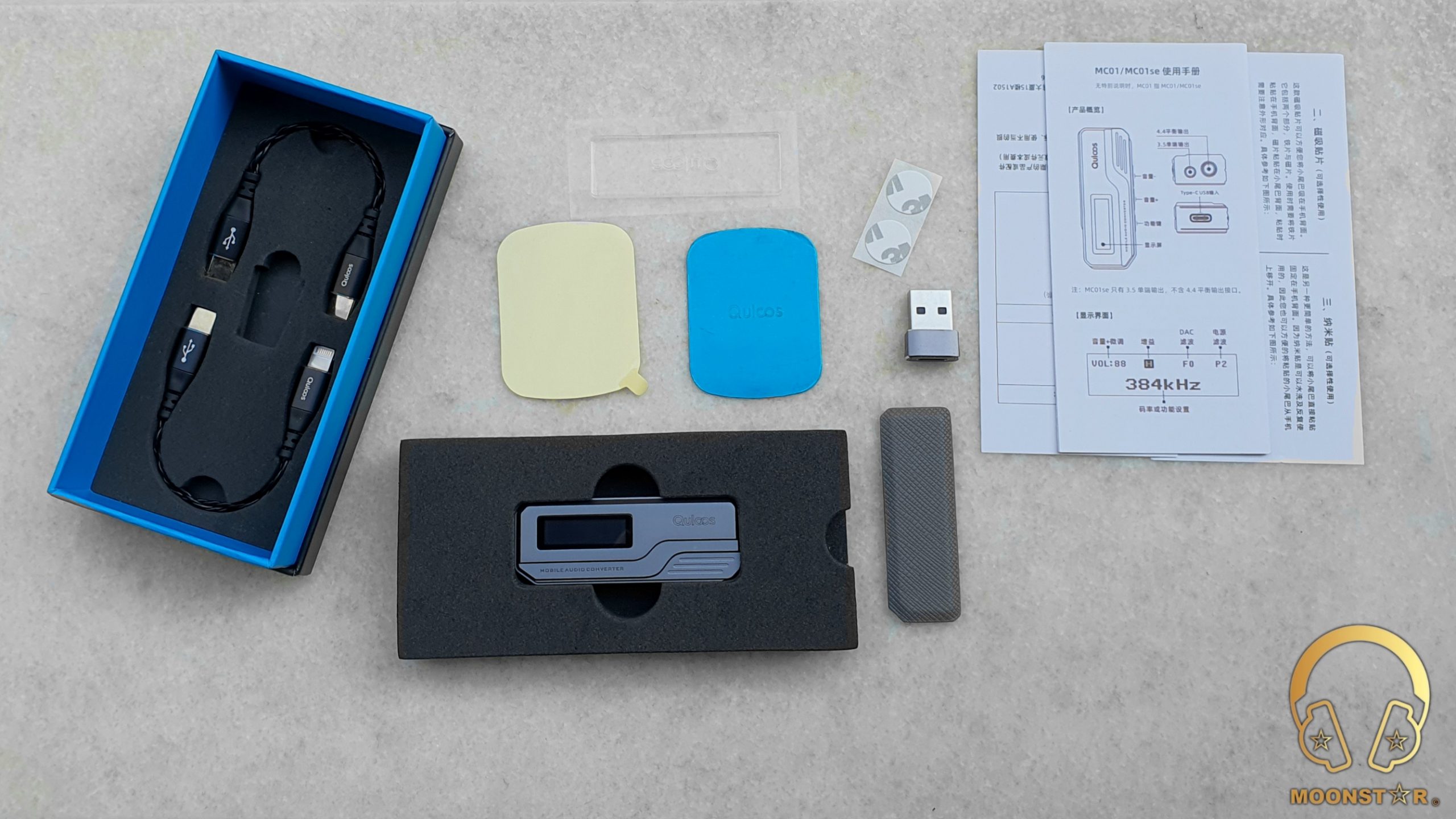
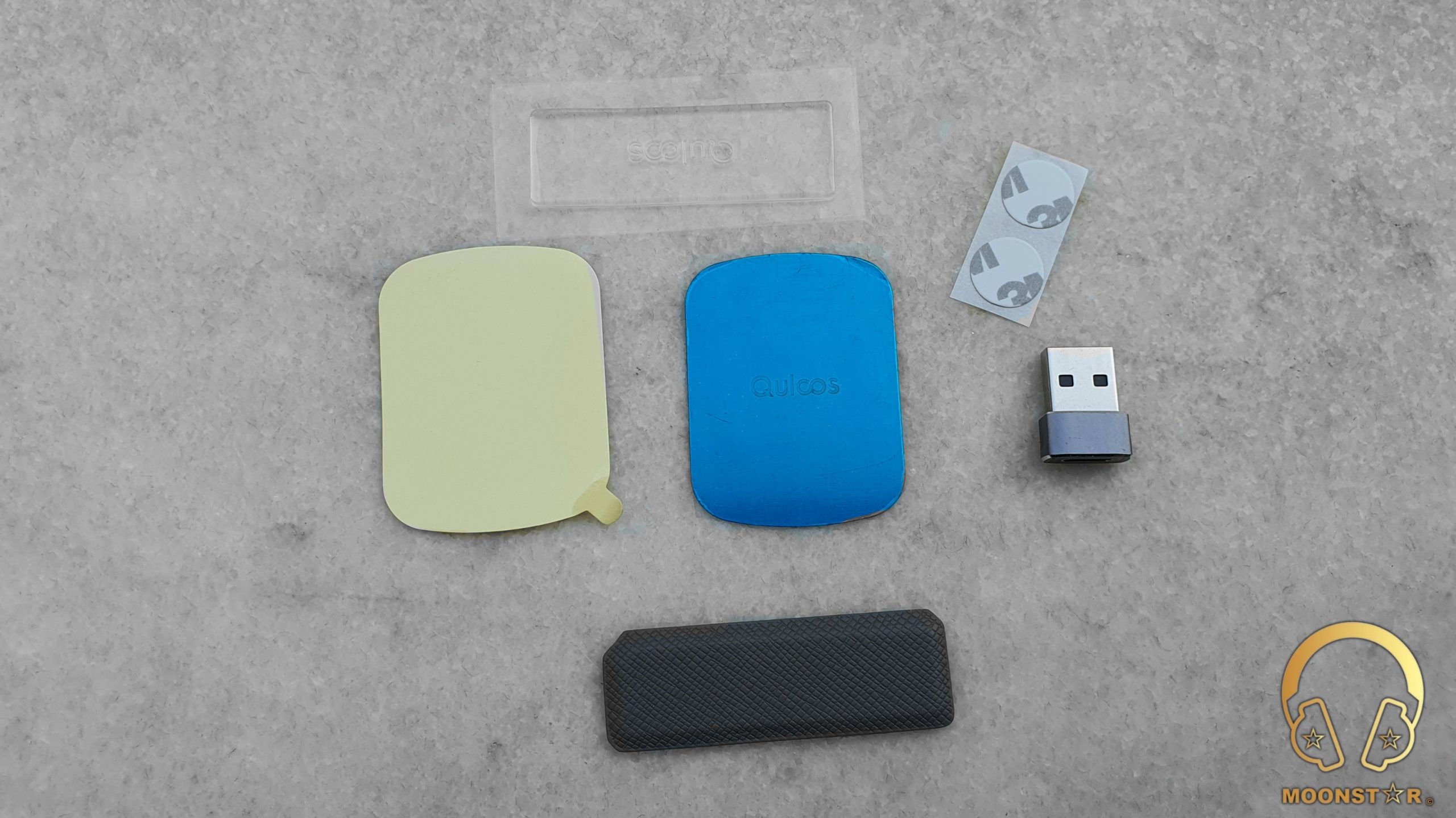
Design & Build Quality:
The Quloos QLS MC01 is a portable USB DAC/Amplifier in form of a dongle that is equipped with a 2x Cirrus Logic CS43131 DAC Chips. The body of the MC01 is made from precisely 5-Axis CNC machined aluminum material that has an eye-catching modern design, which gives you immediately the impression that you hold a solid product in your hands.

The device has dimensions of about 62mm*22mm*13.5mm and has a weight of about 25.4grams exclusive low profile cable.
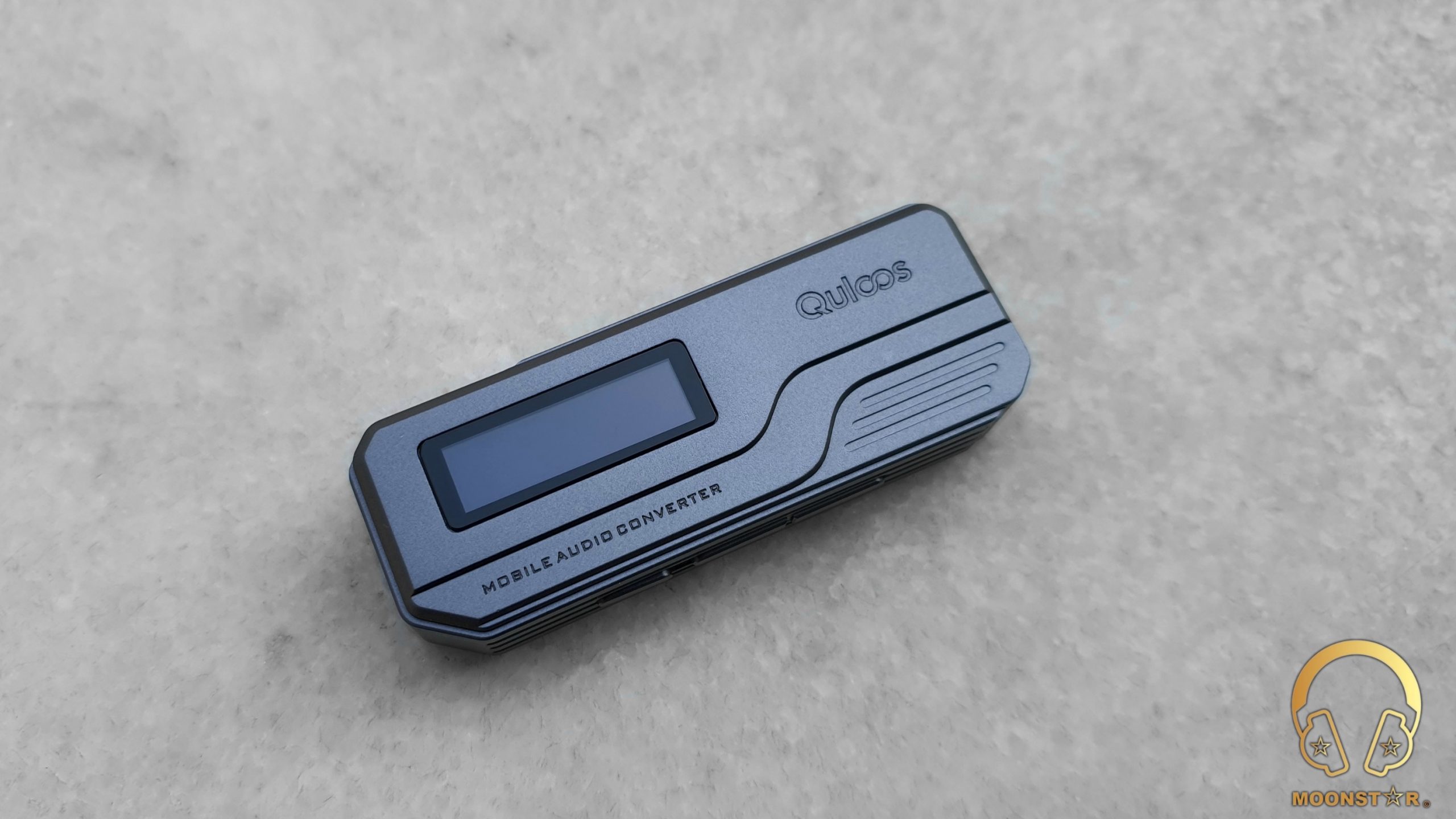
The MC01 is available in two different color options that are red and dark grey same like my review unit.
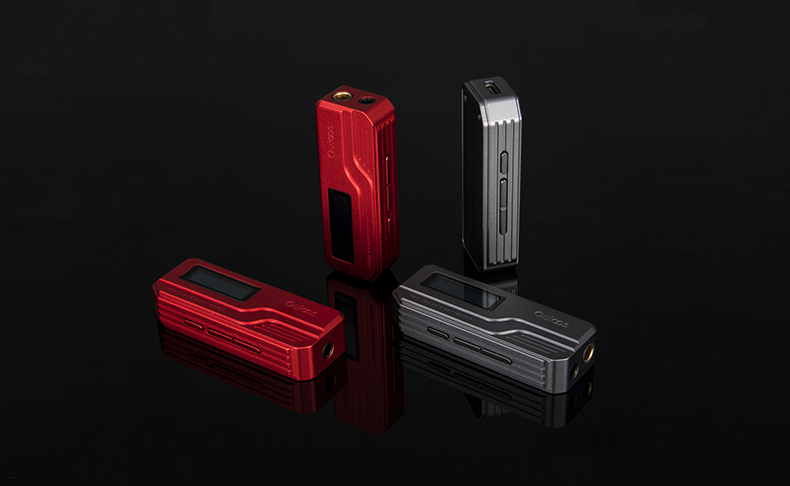
On the top of the devices is an OLED Display which gives you direct access to multiple settings (Gain, Filters, Volume, etc.) without the need to install any application to your source such like a tablet or smartphone.
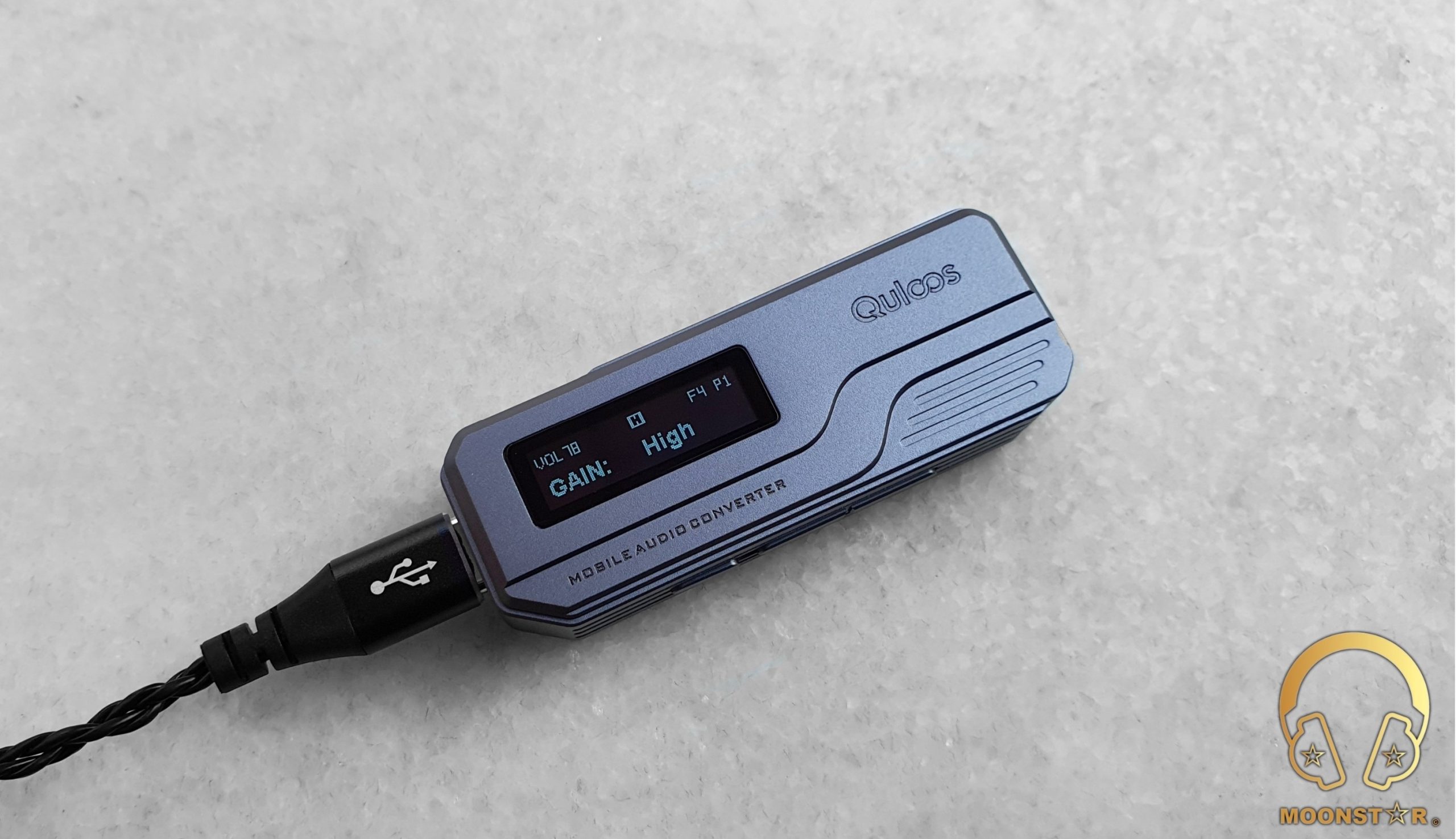

Here are also the CNC engraved Quloos brand logo and Mobil Audio Converter labelling.
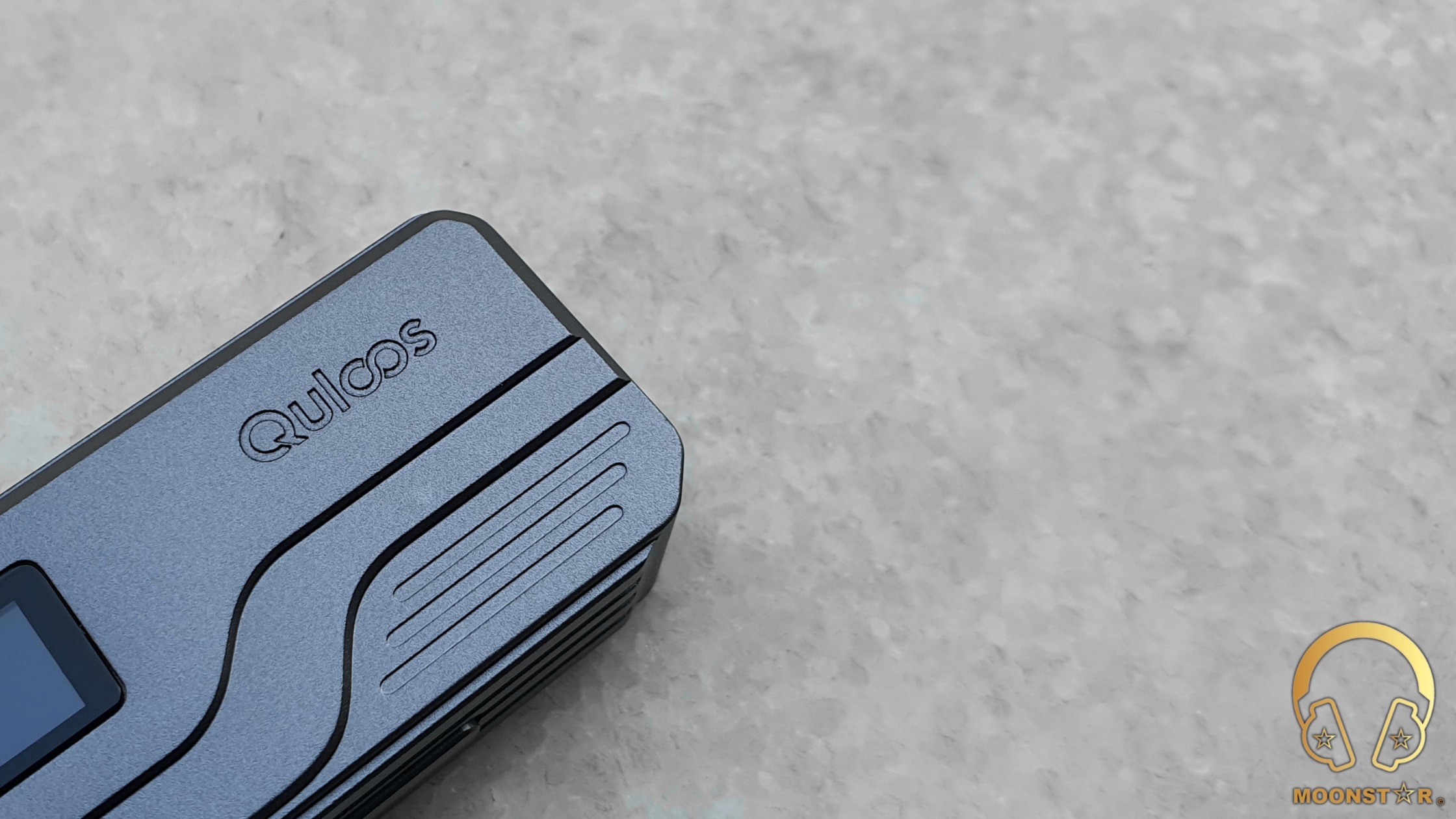
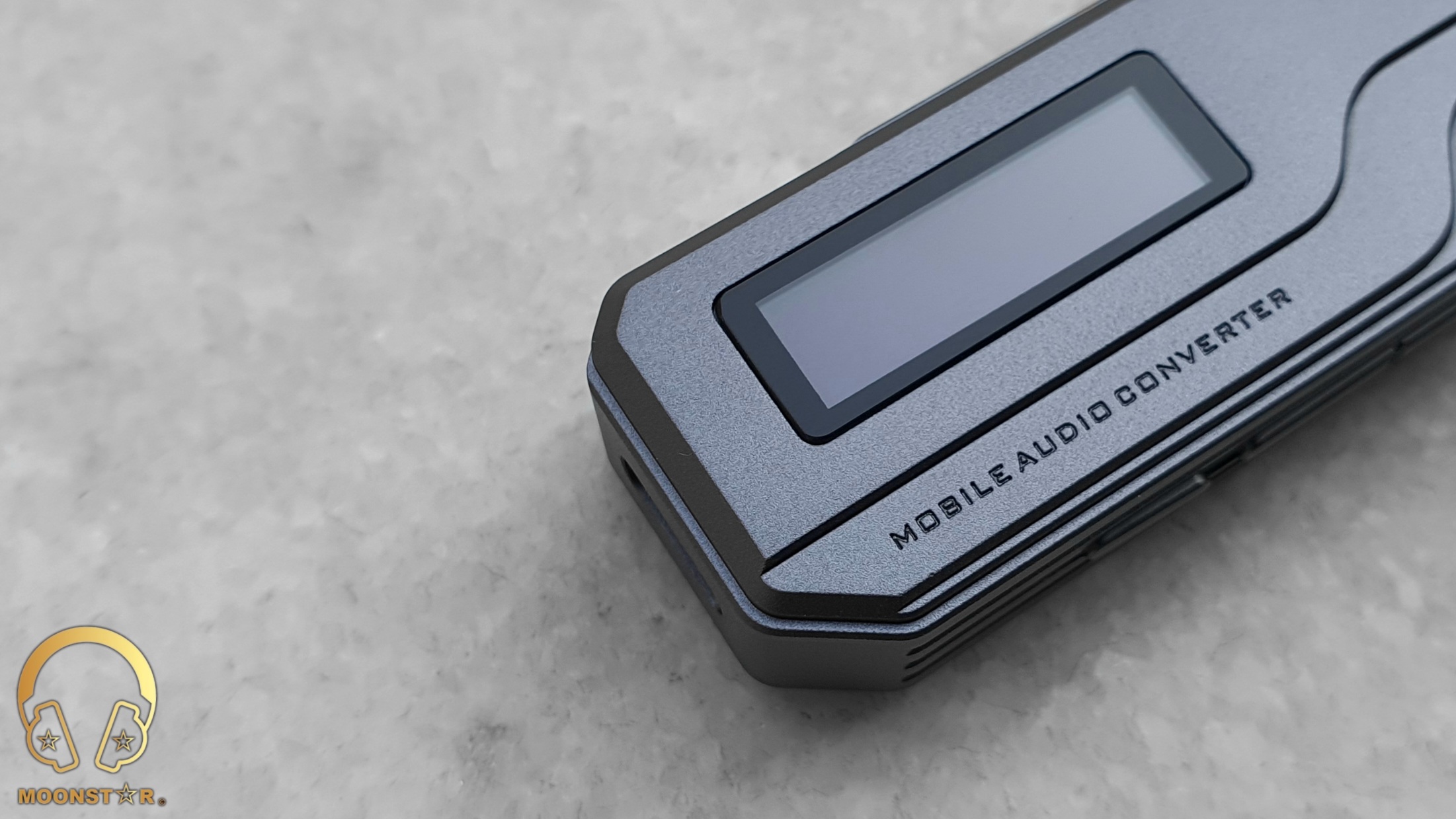
The right surface of the MC01 sports the Mode button that gives you access to Gain, DAC Filter, Power Supply Filter, Left/Right channel adjustment, Screen Brightness and Auto Screen On/Off settings. Here are also the two other buttons for that work for Volume Up/Down and Navigation.
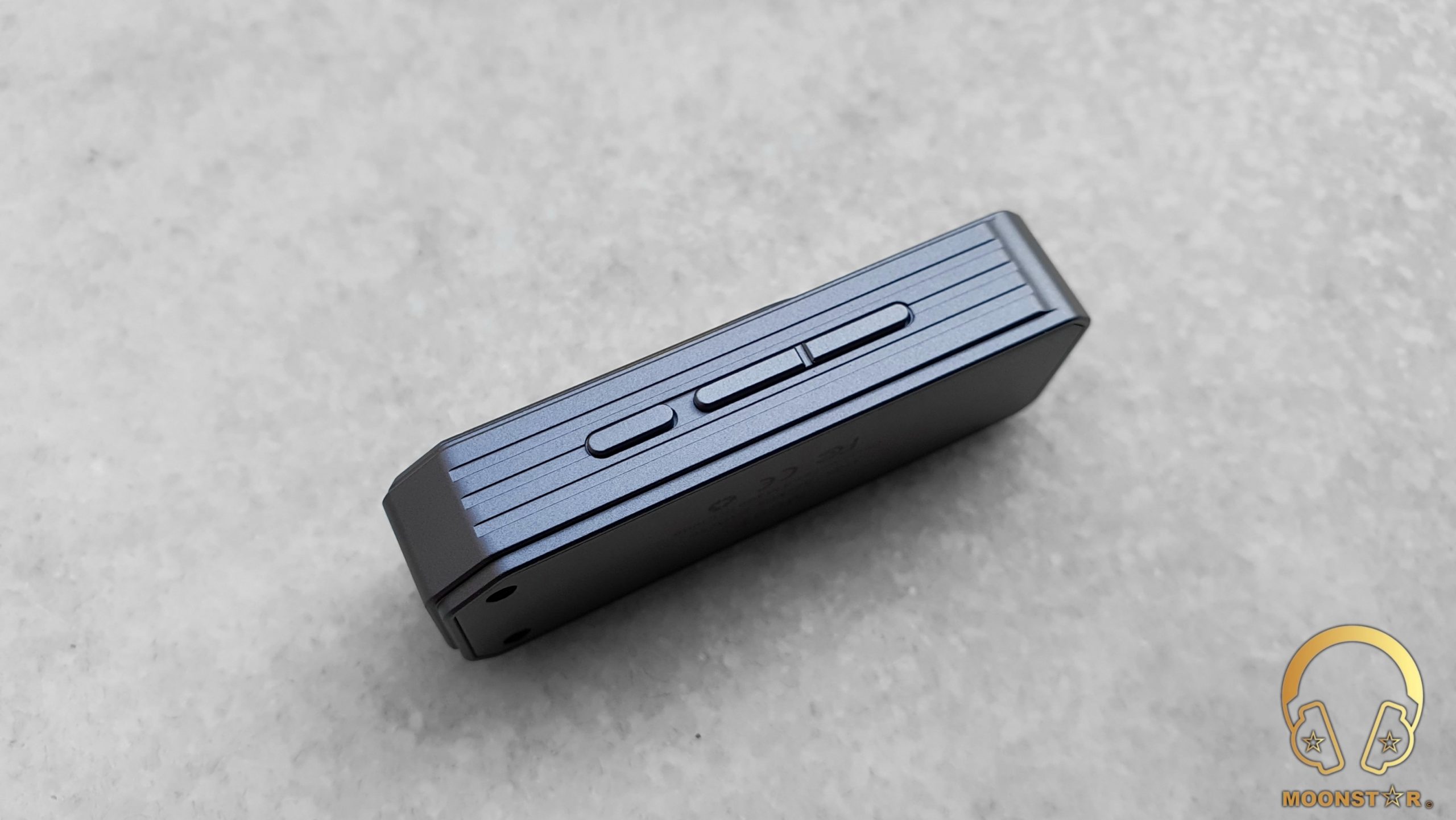
The left surface has a channel shaped pattern that is machined to the body of the MC01, which is a major design element of the device.

The top surface of the Quloos MC01 features the 3.5mm Single Ended (TRS) and 4.4mm Pentaconn Balanced (TRRRS) analog interfaces.
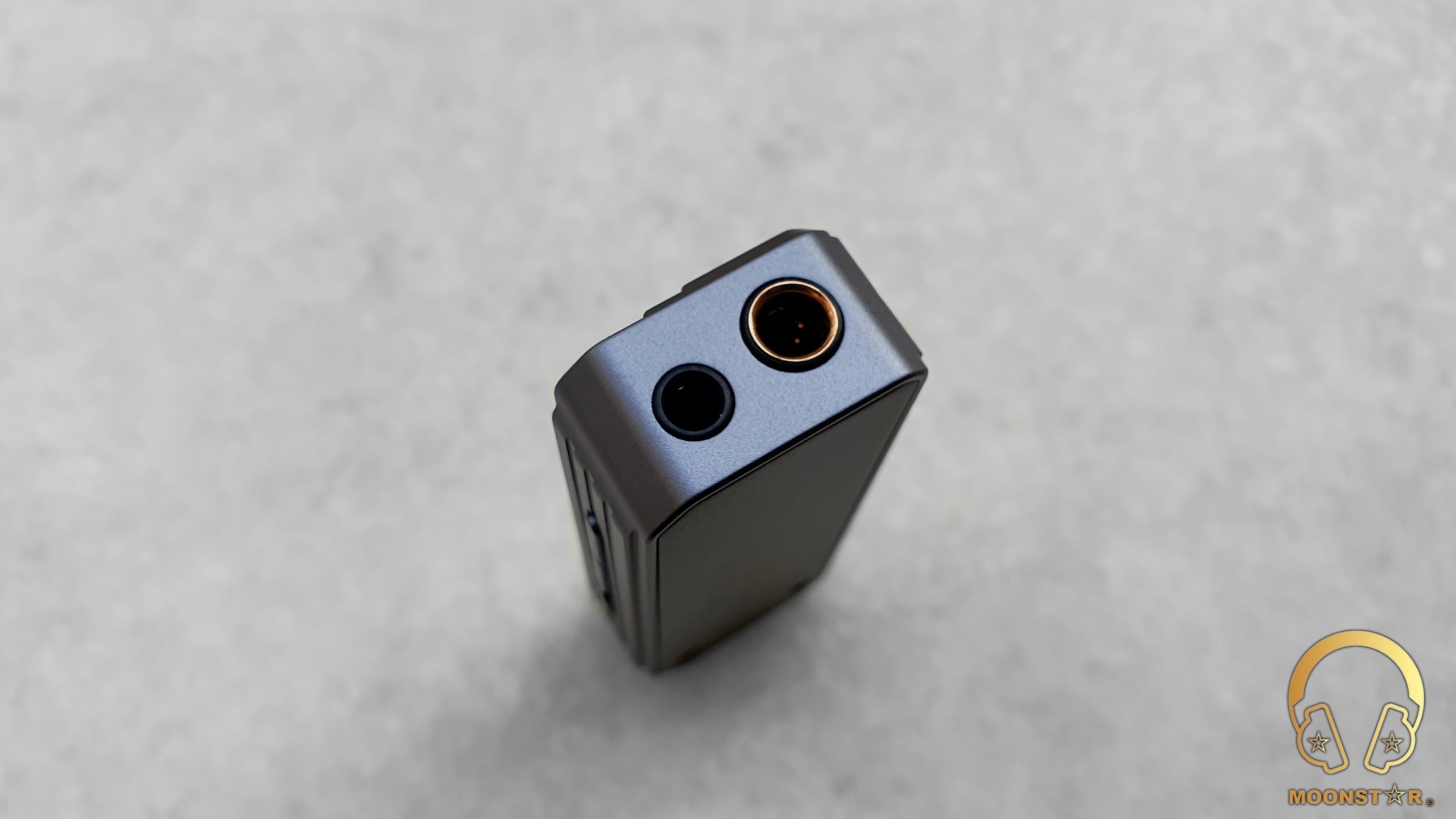
At the rear side of the device are some product related brandings (model, origin, etc.) and some industrial certifications.
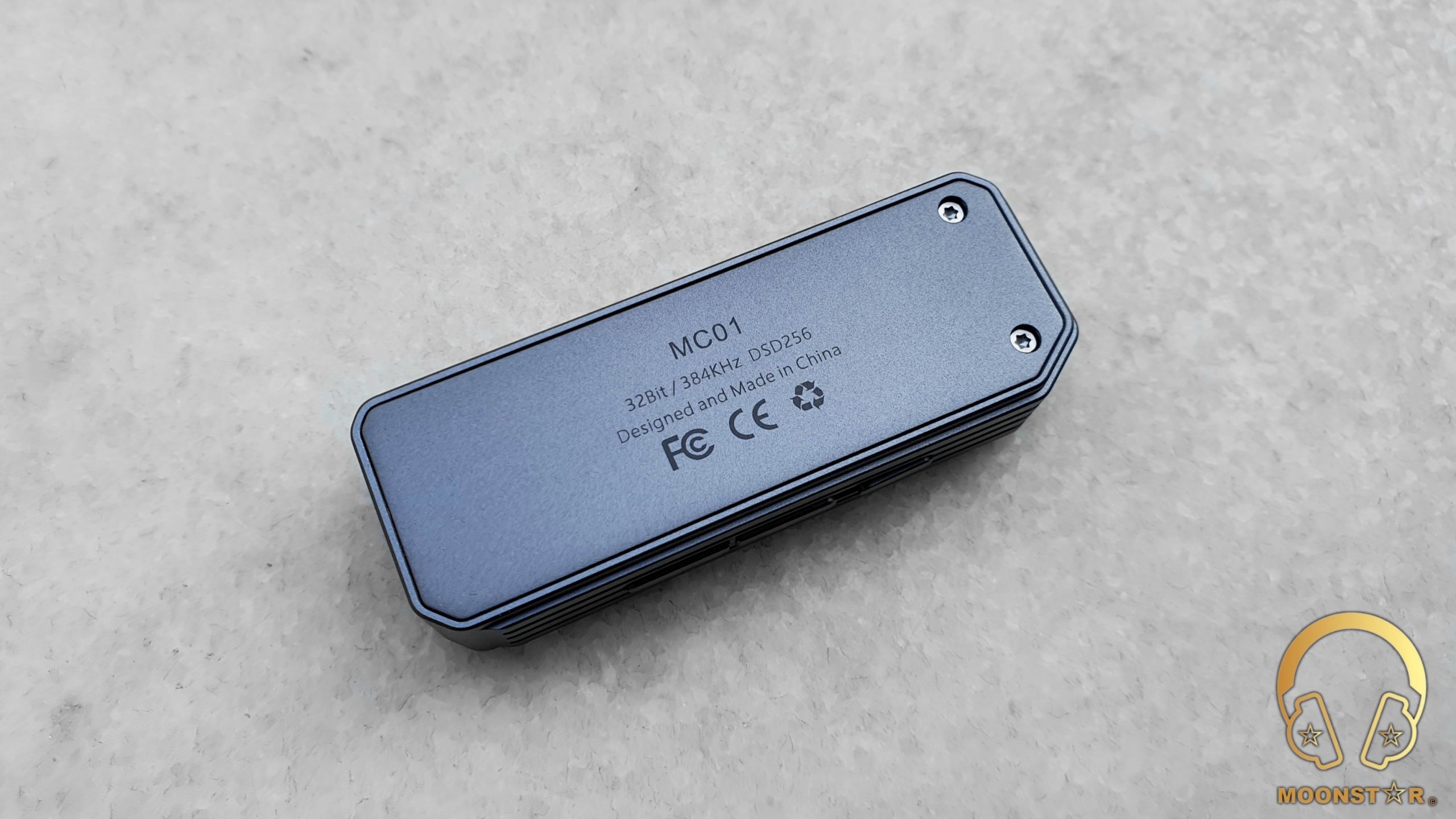
At the bottom of the device is the USB Type-C digital sound & power input port.

Quloos QLS MC01 Specifications:
| Outputs | 4.4mm Balanced | 3.5mm Single-Ended | |
| Net Weight | 25.4g | ||
| Dimension | 62.0(L) x 22.0(W) x 13.5(H)mm | ||
| Chassis | CNC Aluminum | ||
| USB Port | Typc-C USB Audio Input | ||
| HP Port | 4.4mm Balanced + 3.5mm Single-Ended | ||
| Control | Volume +/-, High/Low Gain, 3 kinds Power Filters, 5 kinds Digital Filters | ||
| DSD Decoding | 2.8224MHz (DSD64), 5.6448MHz (DSD128), 11.2896MHz (DSD256), Native or DoP | ||
| PCM Decoding | 16 / 24 / 32Bit, 44.1kHz, 48kHz, 88.2kHz, 96kHz, 176.4kHz, 192kHz, 352.8kHz, 384kHz | ||
| USB OS | UAC2.0 / UAC1.0,Windows、MacOS、Android、iOS、iPadOS | ||
| DAC Chips | Dual Flagship CS43131,QFN package | ||
| AMP Chips | High-Power AMP Chips x 2 | ||
| Gain setting | High / Low | ||
| Power consumption (Vol 50, 16bit 44.1kHz) | 5V 105mA@3.5mm,5V 115mA@4.4mm,Add 4mA to P-High , Add 3mA again to P-Highest | ||
| Freq.Response | 20Hz – 20kHz ±0.5dB | ||
| THD+N (Unweighted, no load) | 0.00012% | 0.0002% | |
| SINAD (Unweighted, no load) | 118dB | 114dB | |
| SNR (A-Weighted) | 131dB | 118dB | |
| Dynamic Range(A-Weighted) | 131dB | 118dB | |
| Crosstalk(no load) | -141dB | -131dB | |
| Crosstalk(32Ω) | -92dB | -72dB | |
| Lineout Level (±0.1V)(Vol:100) | 4.0Vrms (High) 1.4Vrms (Low) | 2.0Vrms (High) 0.7Vrms (Low) | |
| Max Output | 260mW@32Ω 54mW@300Ω | 130mW@32Ω | |
| Noise Floor (A-Weighted) | 1.2uV | 2.4uV | |

Hardware Features:
The Quloos QLS MC01 comes with some impressive hardware features such like Dual Cirrus Logic CS43131 DAC Chips, an Advanced 2×6 Layer PCB Design, Panasonic Film Capacitors, low noise LDO LT3042 & ADM7171 regulators and a Low-Power MCU Management chip.
Dual Cirrus Logic CS43131 DAC & Supported Sampling Rates
The Quloos MC01 is equipped with Dual DAC architecture, which are 2x Cirrus Logic CS43131 DAC Chips (Digital to Analog Converter). Quloos was able to archive excellent values such like a SNR (Signal to Noise Ratio) of 131dB and THD+N (Total Harmonic Distortion) of just 0.00012% over the balanced outputs, which is quite impressive.The CS43131 inside the MC01 is able to decode Hi-Res audio signals supporting 32-Bit/384kHz PCM and native DSD256.
| DSD Decoding | 2.8224MHz (DSD64), 5.6448MHz (DSD128), 11.2896MHz (DSD256), Native or DoP |
| PCM Decoding | 16 / 24 / 32Bit, 44.1kHz, 48kHz, 88.2kHz, 96kHz, 176.4kHz, 192kHz, 352.8kHz, 384kHz |
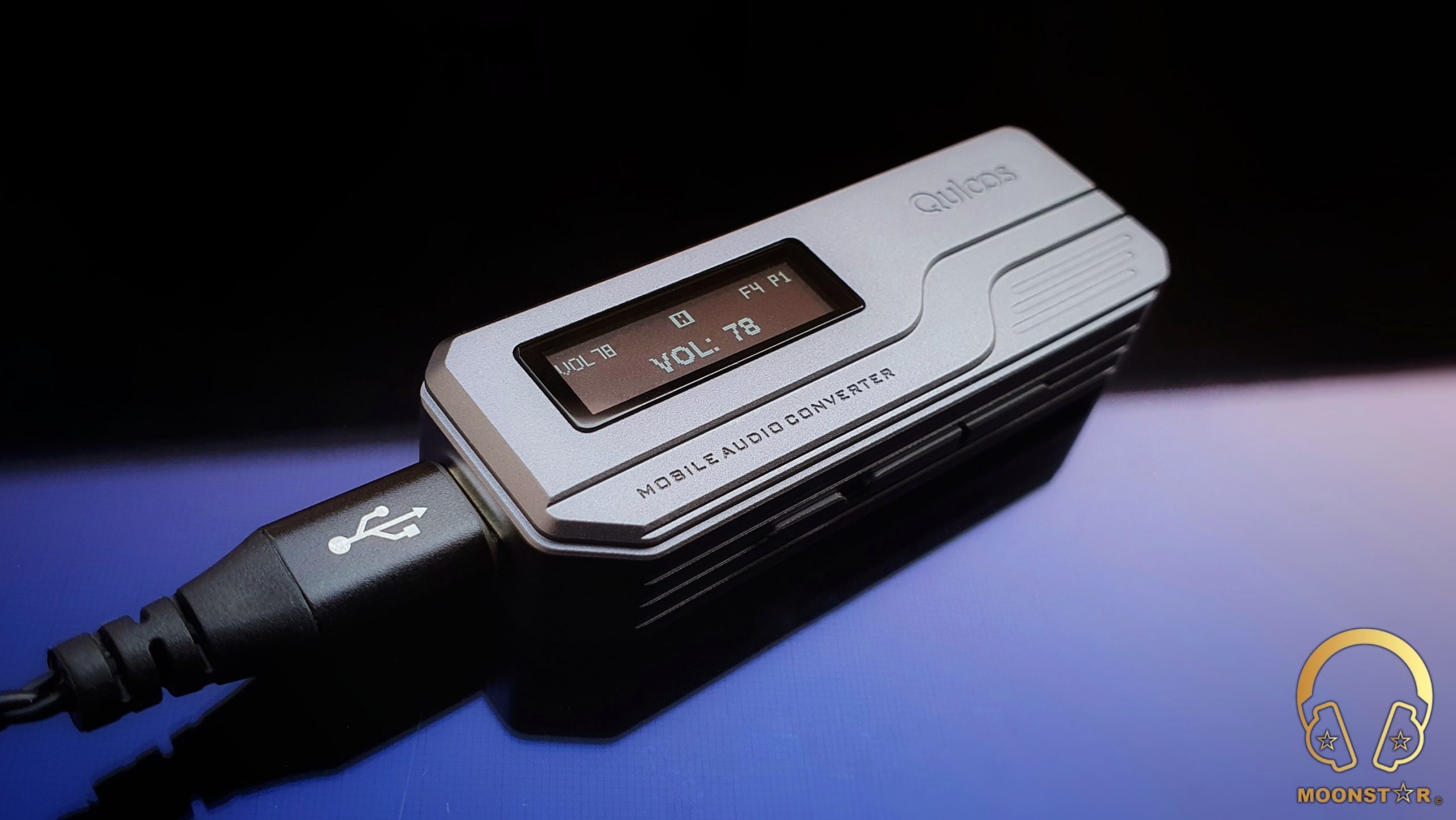
Balanced Circuit & Amplification:
The Quloos MC01 features quite sophisticated balanced audio circuit design with carefully selected audio components such like High-Power Amplification Chips, Panasonic Film Capacitors, low noise LDO LT3042 & ADM7171 regulators and a Low-Power MCU Management chip that are integrated together with 2x Cirrus Logic CS43131 DAC Chips in to an Advanced 2×6 Layer PCB Design.
The 4.4mm Balanced out offers an output power of up to 260mW@32Ω, which is a quite impressive value for such a miniaturized device. The MC01 shows also a death silent background with ultra-low levels of white noise/hissing thanks to the use of LT3042 and DM7170 Low-noise LDO chips. This makes the MC01 to one of the cleanest sounding USB DAC/Amplifier dongles that I have listen to.
What also surprised me is that the device doesn’t get hot like other devices with a powerful balanced output, even after longer listening periods.
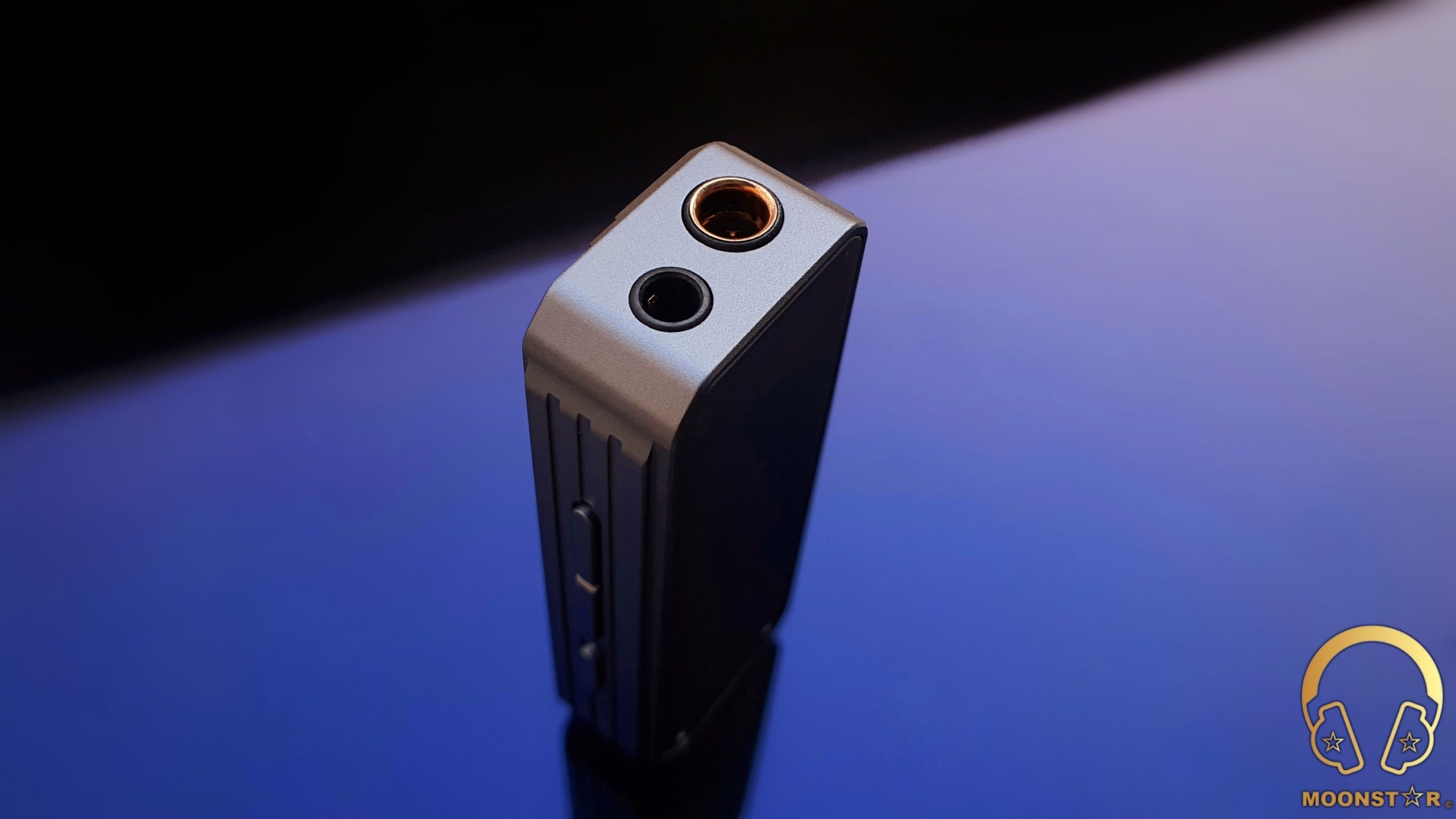
Femtosecond Crystal Oscillator:
The MC01 features a high-precision femtosecond crystal oscillator with only 150fs of nominal jitter that according to Quloos has been carefully selected among dozens of models/brands.
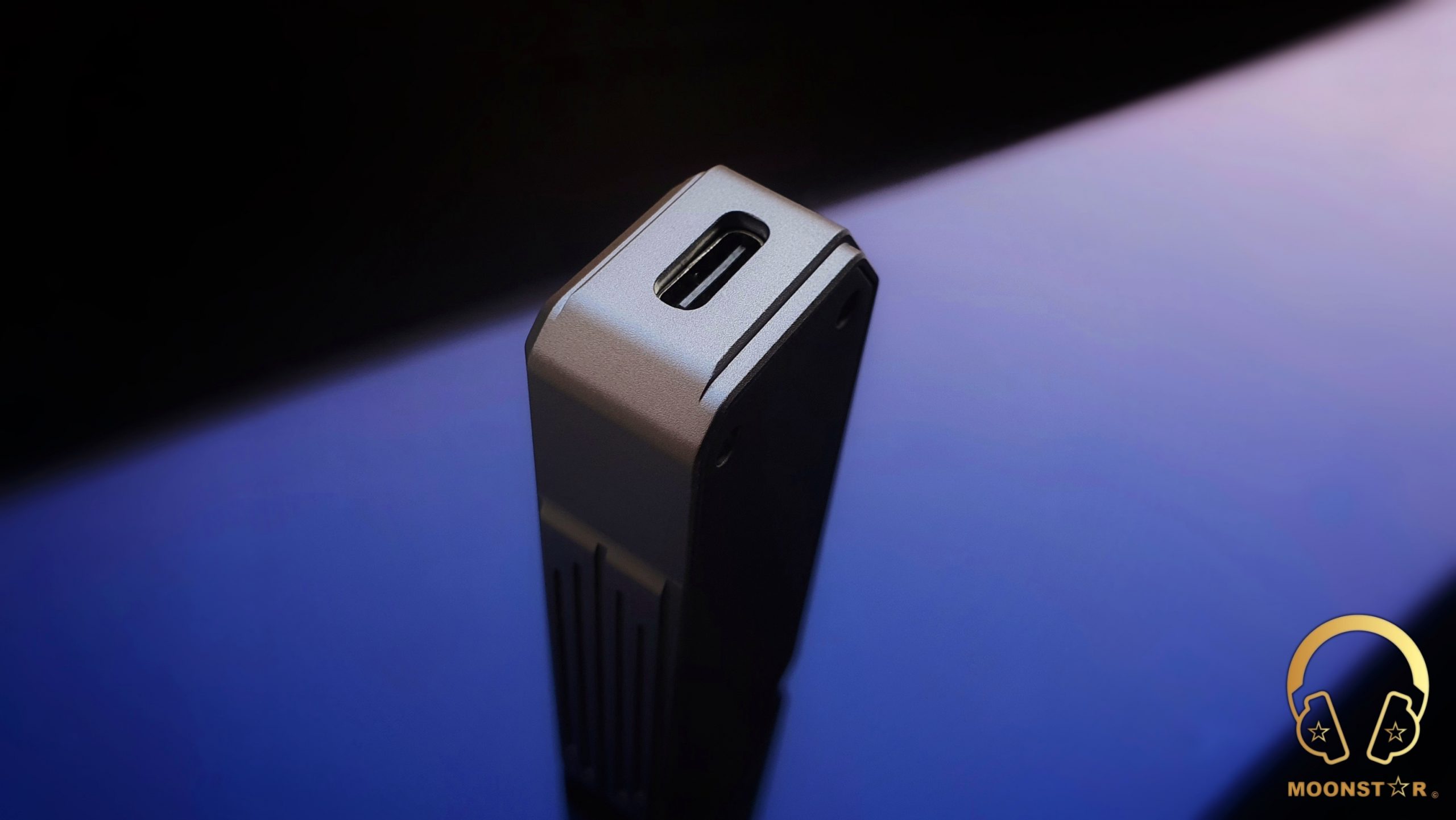
Compatibility:
The Quloos is a multiplatform USB DAC/Amplifier dongle that supports Android Smartphones/Tablets, iOS devices such like iPhones & IPad’s, Computers installed with Mac or Windows and even a Nintendo Switch.
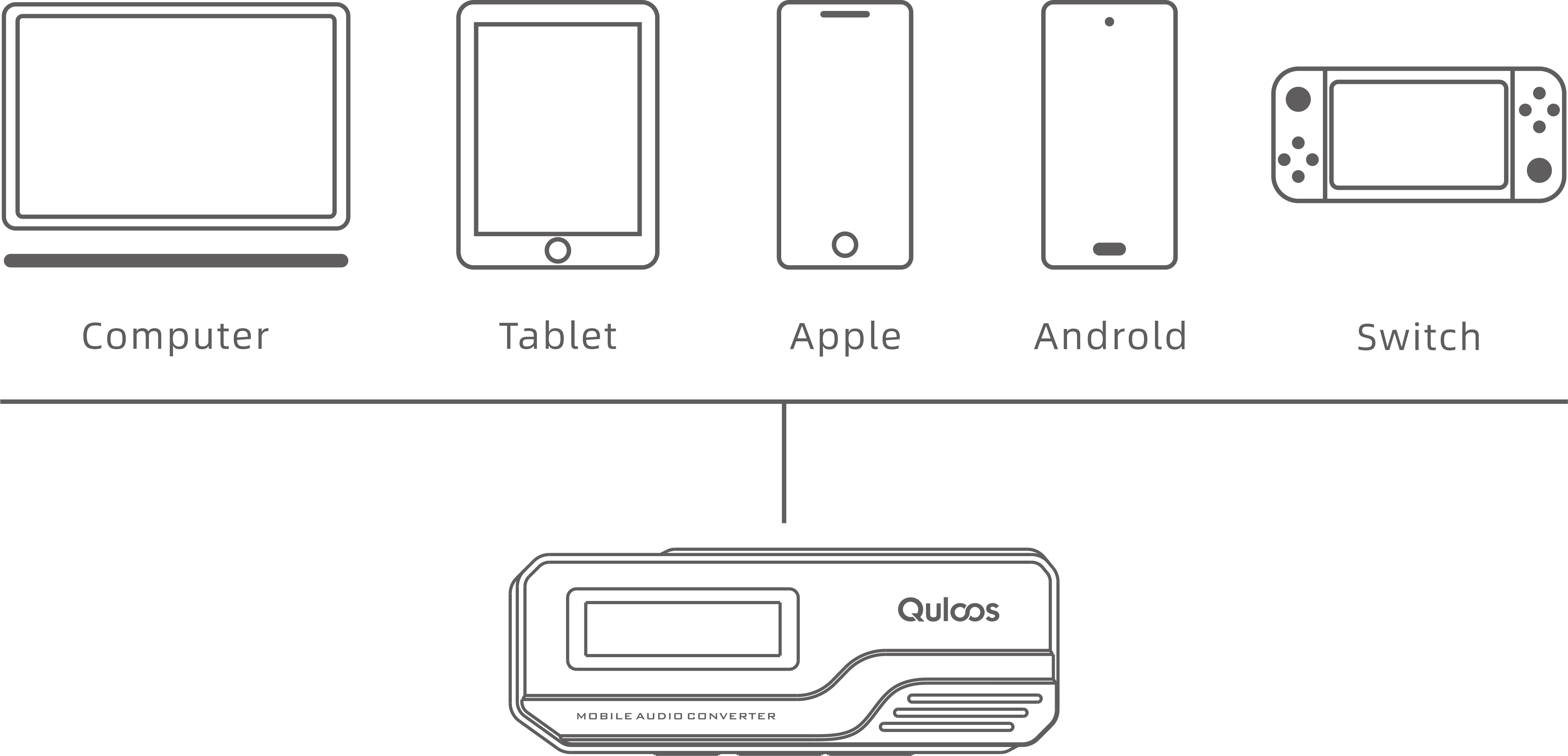
Equipment’s used for this review:
- DAC/AMP’s : Quloos QLS MC01, Shanling UA5
- Sources : Samsung Galaxy Note10 Plus+, ASUS TUF FX505DU
- IEM’s : Campfire Audio ARA, Meze Audio ADVAR, Moondrop Variations
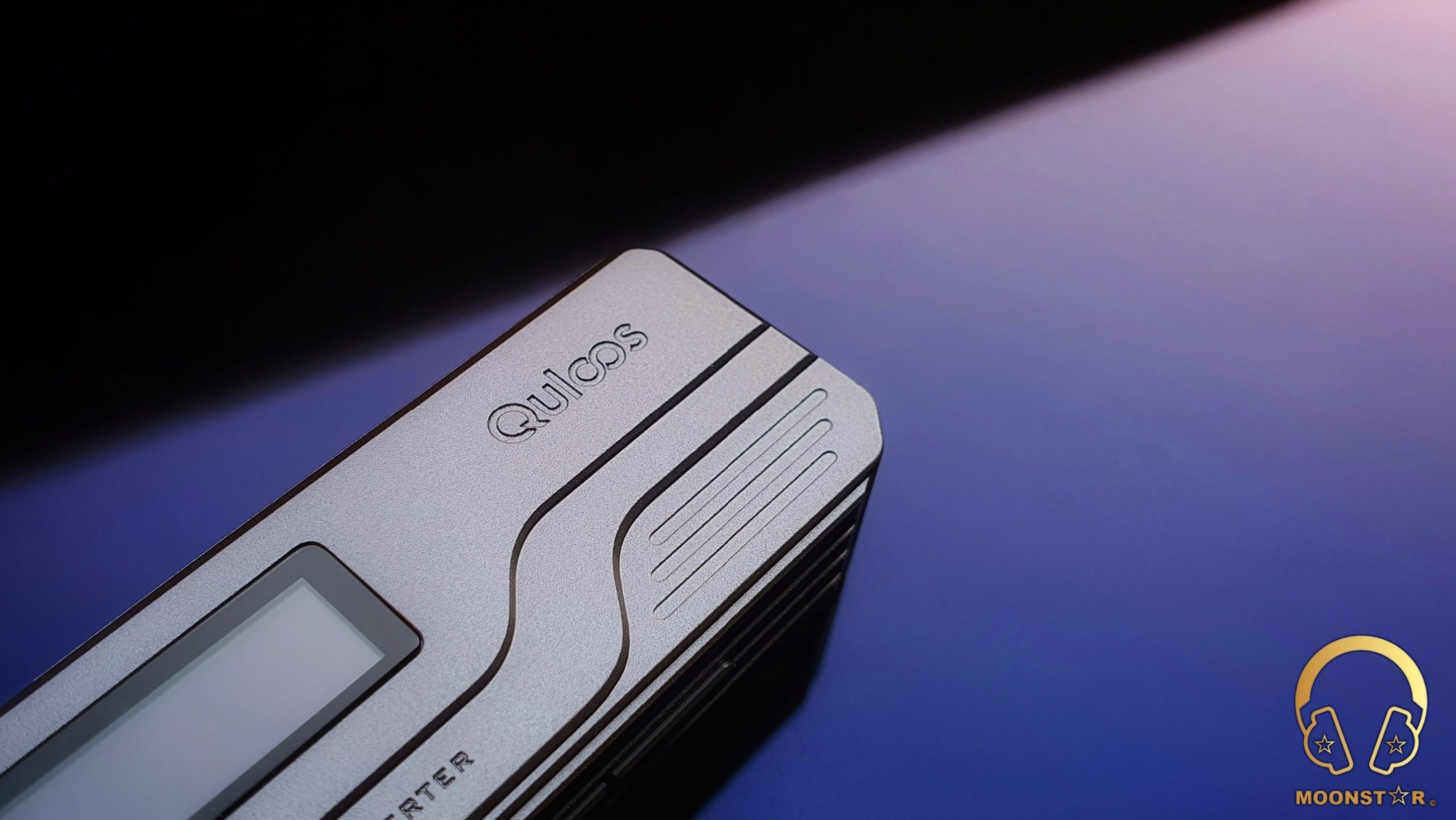
Albums & tracks used for this review:
- Adele – My Little Love (Spotify)
- Randy Crawford – On Day I Will Fly Away (Flac 16bit/44.1kHz)
- Hayley Westenra – Odyssey Album (Dezzer HiFi)
- Dionne Warwick – Walk On By (Flac 16bit/44.1kHz)
- Sarah McLachlan – Angel (Flac 24bit/48kHz)
- Sertap Erener – Aşk (Flac 16bit/44.1kHz)
- Edith Piaf – Non Je Ne Regrette Rien (Flac 16bit/44.1kHz)
- Diana Krall – So Wonderful (DSF)
- Aretha Franklin – I Say A Little Payer (Flac 24bit/96kHz)
- Sonya Yoncheva – (Giuseppe Verdi) II Trovatore, ActI (Flac 24bit/96kHz)
- George Michael – Don’t Let the Sun Go Down on Me (Flac 24bit/192kHz)
- David Bowie – Heroes (Flac 24bit/192kHz)
- Elton John – Rocket Man ((Flac 24bit/96kHz)
- Barry White – Just The Way You Are (Flac 24bit/48kHz)
- Isaac Hayes – Walk On By (Flac 16bit/44.1kHz)
- Sting – Englishman in New York – (Flac 24bit/48kHz)
- Eric Clapton – Wonderful Tonight (Flac 24bit/96kHz)
- B.B. King – Riding With The King (Tidal Hi-Fi)
- Dave Gahan – Kingdom (Tidal Hi-Fi)
- U2 – Sunday Bloody Sunday (Flac 16bit/44.1kHz)
- Bro Safari, UFO! – Drama (Deezer HiFi)
- Armin Van Buuren – Vini Vici (Flac 16bit/44.1kHz)
- Daft Punk – Doin’ it Right (Flac 24bit/96kHz)
- Jo Blankenburg – Meraki (Spotify)
- Lorde – Royals (Flac 24bit/48kHz)
- Massive Attack – Angel (Flac 24bit/48kHz)
- Toutant – Rebirth (Deezer HiFi)
- Gogo Penguin – Raven (Flac 24bit/192kHz)
- Gogo Penguin – Murmuration (Flac 24bit/192kHz)
- Portishead – It Could Be Sweet (Spotify)
- Max Richter – On the Nature of Daylight (Flac 24bit/96kHz)
- Charly Antolini – Duwadjuwandadu (Flac 24bit/192kHz)
- Ferit Odman – Look, Stop & Listen (Flac 24bit/192kHz)
- Chopin – Nocturn No. 20 In C-Sharp Minor (Flac 16bit/44.1kHz)
- Fazıl Say – Nazım Oratoryosu (Live) (Flac 16bit/44.1kHz)
- Vivaldi – Le QuarttroStagioni “The Four Season” (Deezer HiFi)
- Otto Liebert & Luna Negra – The River (Flac 24bit/192kHz)
- Lunatic Soul – The Passage (Flac 16bit/44.1kHz)
- Deftones – My Own Summer (Shove it) (Flac 16bit/44.1kHz)
- Metallica – Sad but True (Flac 24bit/96kHz)
- Metallica – Master of Puppets (Flac 24bit/96kHz)
- Opeth – Windowpane (Flac 16bit/44.1kHz)
- Megadeth – Sweating Bullets (Tidal Hi-Fi)
- Rush’s – Leave That Thing Alone (Flac 16bit/44.1kHz)
- Slayer – Angel of Death (Spotify)
- Liquid Tension Experiment 2 – Acid Rain (Spotify)
- Yosi Horikawa – Bubbles (Spotify)

The Sound:
The Quloos MC01 is a powerful and clean sounding Ultra-Portable USB DAC/Amplifier in form of a dongle with an excellent sound performance that reminds me to previously owned QA Series portable DAP’s such like the Quloos (QLS HiFi) QA360LE & QA361. The MC01 shows an impressive combines or in other words fusion of musicality and technicality in to one compact device.
The Quloos MC01 review has been written after a burn-in period of 100 hours. My sound impressions bellow are based on my experiences with IEM’s like the Meze Audio ADVAR, Moondrop Variations and Campfire Audio ARA. The device was set to the “NOS” Digital Filter and “High” Power Filter.

Bass:
The Quloos was always successful when it comes to the sound of their products and it is great to see that MC01 is no exception. Let’s start with the lows; that are shown with a pretty linear presentation. The subbass region stands out with its fast decay and transparency. Songs like Daft Punk’s “Doin’ it Right”, Massive Attack’s “Angel” and Lorde’s “Royals” is reproduced in a quite controlled and well extending manner when paired with IEM’s such like the Moondrop Variations and Meze Audio ADVAR.
The midbass region shows a tad of coloration that adds the overall presentation good sense of fullness and musicality without to show with any IEM a unwanted midbass hump or muddiness. The Quloos MC01 is able to produce a quite impactful and pretty controlled midbass response, without to lose that great sense of clarity and resolution that was especially audible when paired with the Campfire Audio ARA + ddHiFi Air Nyx (BC130) OCC upgrade cable combination. Songs like Gogo Penguin’s “Murmuration” and Charly Antolini’s “Duwadjuwandadu” with quick and quite complex passages are reproduced in a controlled manner.
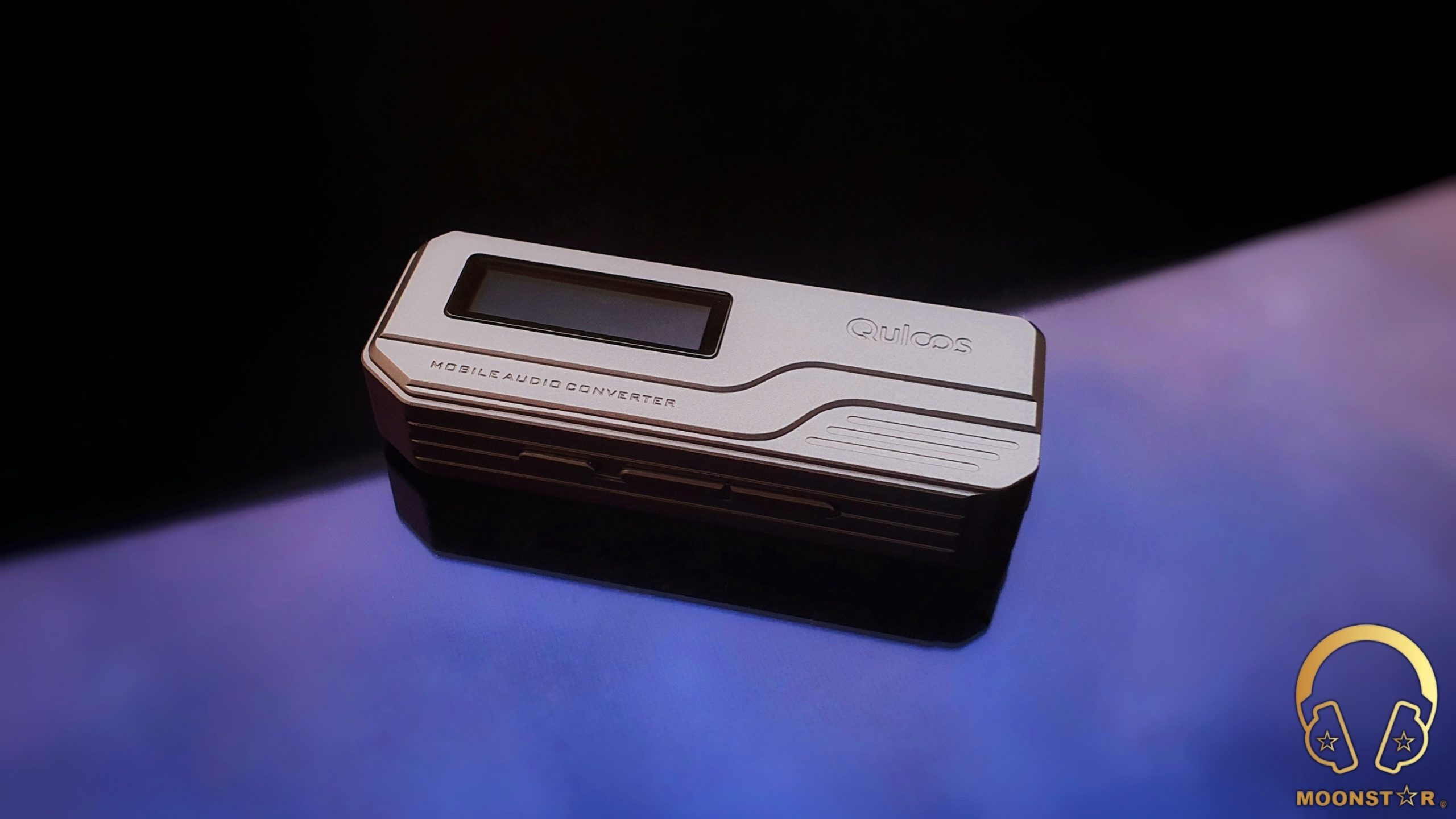
Midrange:
The Quloos MC01 shows a tad warmer than neutral midrange tonality with all IEM’s I have listened to it. The sense of transparency and airiness is impressive for such a small device. The lower midrange is shown in a pretty natural way, which offers a good level of body and fullness, especially when paired with IEM’s like the Moondrop Variations and Meze Audio ADVAR. Male vocals like Isaac Hayes, Sting and Dave Gahan do sound quite successful and musical, while instruments such like acoustic guitars do sound fairly smooth and emotional.
The upper midrange of the Quloos MC01 stands out with is excellent grade of clarity and resolution that sounds natural, detailed and well extended. Female voices from Adel to Edith Piaf, from Sarah McLachlan to Aretha Franklin do sound very lifelike and emotional. Instruments on the other hand with such like a side flute, violin or pianos are shown with a decent level of control and natural extension.

Treble:
The Quloos MC01 has a treble character that is pretty smooth, extremely controlled and detailed. The treble notes are shown with a natural sense of weight and brightness that do never sounded dry or digital to my ears, with any IEM I have paired the device. The transitions from the upper midrange towards the treble region are quite controlled in moments when instruments played with high level of distortion.
For example, instruments such like electro guitars, cymbals and pianos, or human voices such like soprano vocals are presented in a nicely smooth, natural and controlled manner. The sense of airiness and sparkle created in the upper treble register is decent. The brilliance of the upper midrange is successful and doesn’t shows any unwanted side effects such like over-sharpness

Soundstage & Imaging:
The Quloos MC01 is a pretty successful portable DAC/Amplifier in terms of separation and positioning of instruments and vocals. The soundstage is expansive and shows a decent grade of airiness, which is supported with a dark and clean background. Both the depth and the width of the stage do create good conditions for a fairly holographic soundstage atmosphere with efficient grade of imaging.
Comparison:
Quloos MC01 versus Shanling UA5:
Both the Shanling UA5 and the Quloos MC01 do share a pretty detailed, transparent and airy overall sound profile with decent sense of dynamism. However, the MC01 shows a tad warmer and fuller tonality and sounds in general less aggressive and digital compared to the UA5. The bass of the Quloos MC01 shows a slightly better sense of decay and control and offers also a higher level of extension. The midbass region of both devices sounds pretty detailed and controlled, while the UA has the slightly edge when it comes to the impact and dynamism.
The Shanling UA5 has a slightly more dynamic midrange presentation with a brighter and somewhat dry sounding tonality compared to the Quloos MC01, which sound more natural smooth and transparent. The MCU1 shows a tad more airy midrange presentation and offers also a bit more micro detail retrieval in this area. The lower midrange of the MCU1 has a tad more body and depth. The upper midrange of the Shanling UA5 is more highlighted, while it sounds a bit sharp and energetic. The Quloos MC01 on the other hand offers a more mature, natural and controlled character, while listen to instruments such like a piano, violin or flute.
The treble range of the Shanling UA5 shows slightly more intensity, both in the lower treble and upper treble area. The UA5 shows a better sense of extension in this area, while the transitions from the upper midrange towards the treble area do sound a bit more controlled when I switch to the Quloos MCU1.
The soundstage performance of both the MCU1 and the UA5 is pretty equal in terms of separation and placement of instruments and vocals. The Shanling UA5 has the slight edge when it comes to the wideness of the stage, while the Quloos MCU1 offers a better sense of height and depth of the soundstage.
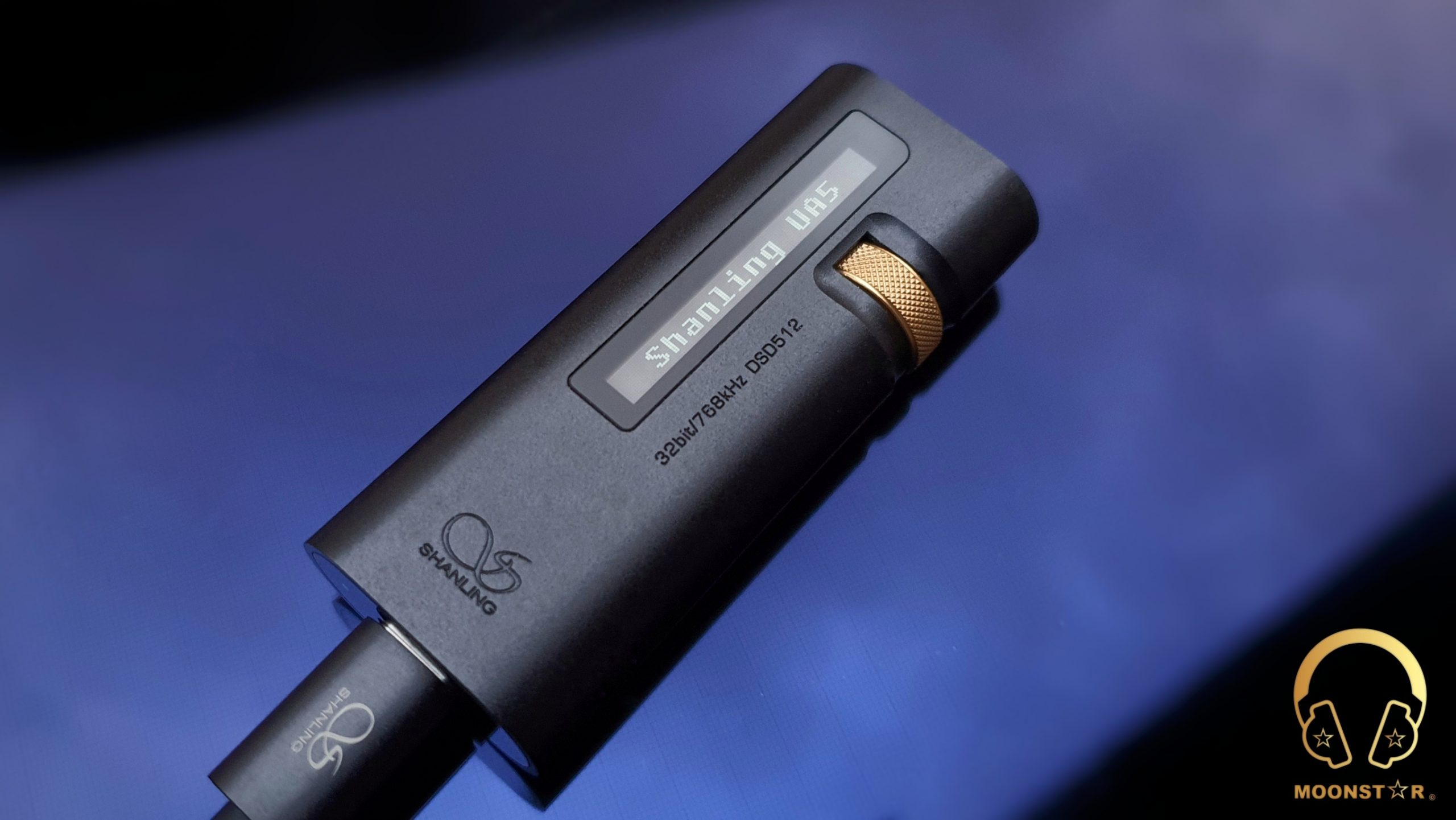
Conclusion:
The Quloos MC01 is another great example how far miniaturized DAC/Amplifiers have come in recent years. It’s a product with a modern design and very good build quality that packs tons of sophisticated hardware components in to one ultra-small device in form of a USB dongle. But the most impressive part is the overall sound performance that combines musicality, technicality and amplification power in to your pocket for a relative affordable price, which was a dream in the past for many audiophiles.
Thank you for the Read!
Last edited:
Moonstar
@tubbymuc The Questyle M15 offers a slightly warmer, a bit fuller and more dynamic overall presentation compared to the Quloos MC01, which sounds a bit clinical in direct comparison (not in a bad way). The volume buttons, screen, filters and the gain options are a some nice addition that the M15 doesn’t have. All in all both are good sounding dongles with decent level of technicality. Cheers!
Moonstar
100+ Head-Fier
Pros: Excellent Overall Sound Performance for such a small All-in One Solution,
Solid Build Quality,
Esthetic Design,
3.5mm SE & 4.4mm Balanced Outputs,
Only Device in its Segment that is equipped with an Optical Output,
Clean & Hiss-free output,
Value for Your Money
Solid Build Quality,
Esthetic Design,
3.5mm SE & 4.4mm Balanced Outputs,
Only Device in its Segment that is equipped with an Optical Output,
Clean & Hiss-free output,
Value for Your Money
Cons: The glass surface looks beautiful but is also a fingerprint magnet,
No Protective Case,
No Back-Clip
No Protective Case,
No Back-Clip
IKKO Heimdallr ITB03 BT & USB DAC/Amplifier Review
Introduction:
IKKO Audio (IKKO Technology Co. Limited) is a relative new Chinese brand that designs & develops Hi-Fi components like In-Ear Monitors, Portable DAC/AMP, Docking Stations and many more.
The Heimdallr ITB03 that I will now review for you is the companies first Portable Bluetooth & USB DAC/Amplifier, which is an Ultra-Portable and very capable All-in One solution that is compatible with a wide variety of platforms including Android, iOS, MAC OS, Windows 10/11, Nintendo Switch, Sony PlayStation 5 and Microsoft XBOX devices. The Heimdallr ITB03 is equipped with 2x Asahi Kasei AK4377 DAC Chips and features 3.5mm Single Ended/Optical and 4.4mm Balanced (TRRRS) outputs. The Bluetooth connection is powered by Qualcomm’s latest and most advanced QCC5125 BT Chip, while the XMOS’s 8-Core XU208 USB Processor is dedicated for the USB DAC function.
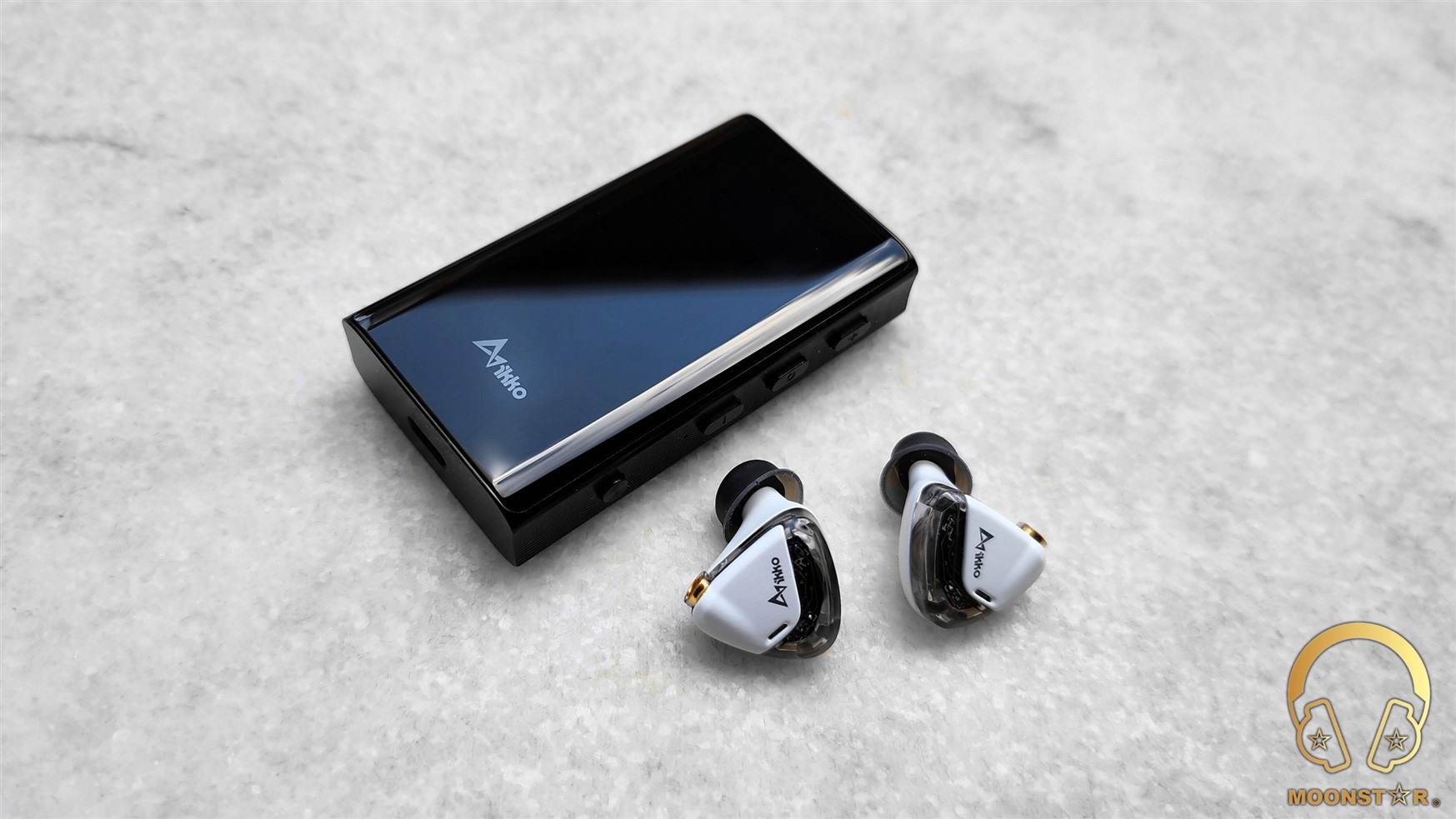
Disclaimer:
I would like to thank IKKO Audio for providing me the Heimdallr ITB03 sample for review purposes. I am not affiliated with IKKO Audio beyond this review and these words reflect my true and unaltered opinions about the product.
Price & Availability:
The actual price of the IKKO Heimdallr ITB03 is 149.00 US$. More information’s can be found under the link below;
Package & Accessories:
The IKKO Heimdallr ITB03 came inside a rectangular box in black color that sports the illustration and some product related brandings on the top.

Inside the box of the IKKO Heimdaller ITB03 are the following items/accessories;
- 1 x IKKO Heimdallr ITB03 Portable BT & USB DAC/Amplifier
- 1 x USB Type-C to USB A adapter
- 1 x USB Type-C to USB Type-C low profile cable
- 1 x USB Type-C to Lightning low profile cable
- 1 x Some Print Materials


Design & Build Quality:
The IKKO Heimdallr ITB03 is a Bluetooth & USB DAC/Amplifier that supports a wide variety of Wireless (LDAC, aptX, aptX-HD) and Wired (PCM, DSD) Lossless Audio Codecs packed in to an Ultra-Portable device, which shows a combination of glass and metal elements, the final result is a clean, robust and elegant looking device.

The Heimdallr ITB03 is an ultra-portable device with a solid look and feel when hold in your hands that shows a very good build quality. It has dimensions of about 70mm (L) *40mm (W) * 10mm (T) and weights approx. 72grams.

The deice features a metal frame and a glass surface that is located on both the top and rear surface with rounded edges, which offers a very good grip when hold in your hands.

On the top of the device is the IKKO brand logo and a small OLED screen with a resolution of 64×128 pixels that gives you lots of information’s like Connection Method, Battery Status, Decoding Rate, Volume, Lyrics, Audio Mode and Small Graphical EQ Animation on the main menu. I really like that the display shows you the name of the song that is played by the device, which is available in BT DAC/Amplifier mode. Even the Title of YouTube Songs and Videos is displayed, which is a nice feature.
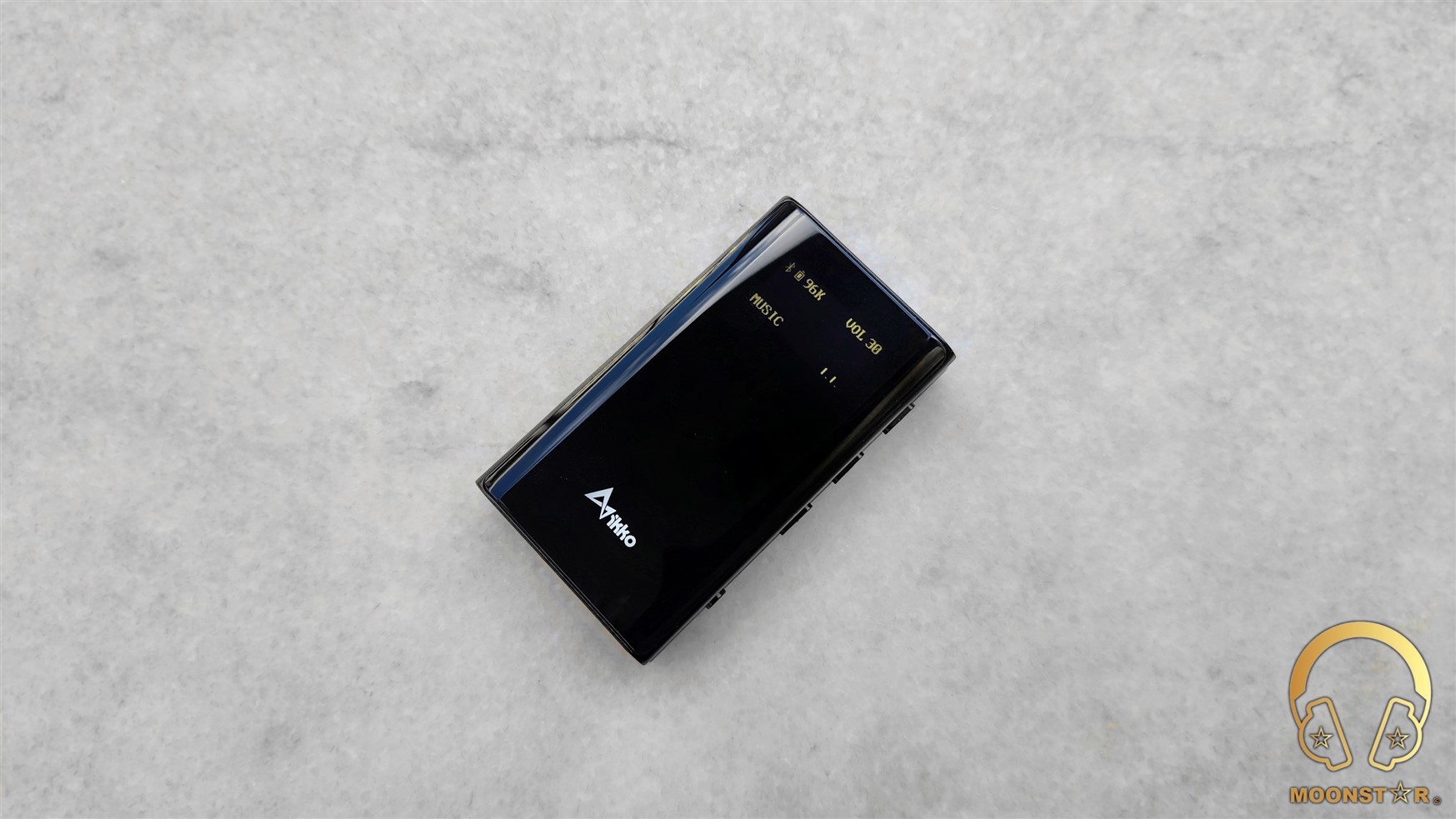
The right surface of the Heimdallr ITB03 is equipped with 4 multifunctional physical buttons and a small hole where you can reset the device.

The Volume Up and Volume Down buttons can be used to navigate in the selected menus.

The Play/Pause button is a Multifunctional Key in order to switch between multiple sub-menus such like Gain (Low / High), Dimmer (1 – 6), Chare Mode, Filters (1 – 4), Car Mode and Sound Modes (Music, Movie, Game, HiFi).

The Power button is another multi-function key that will give you the access in to the sub-menus, which also acts as display on/off and button.
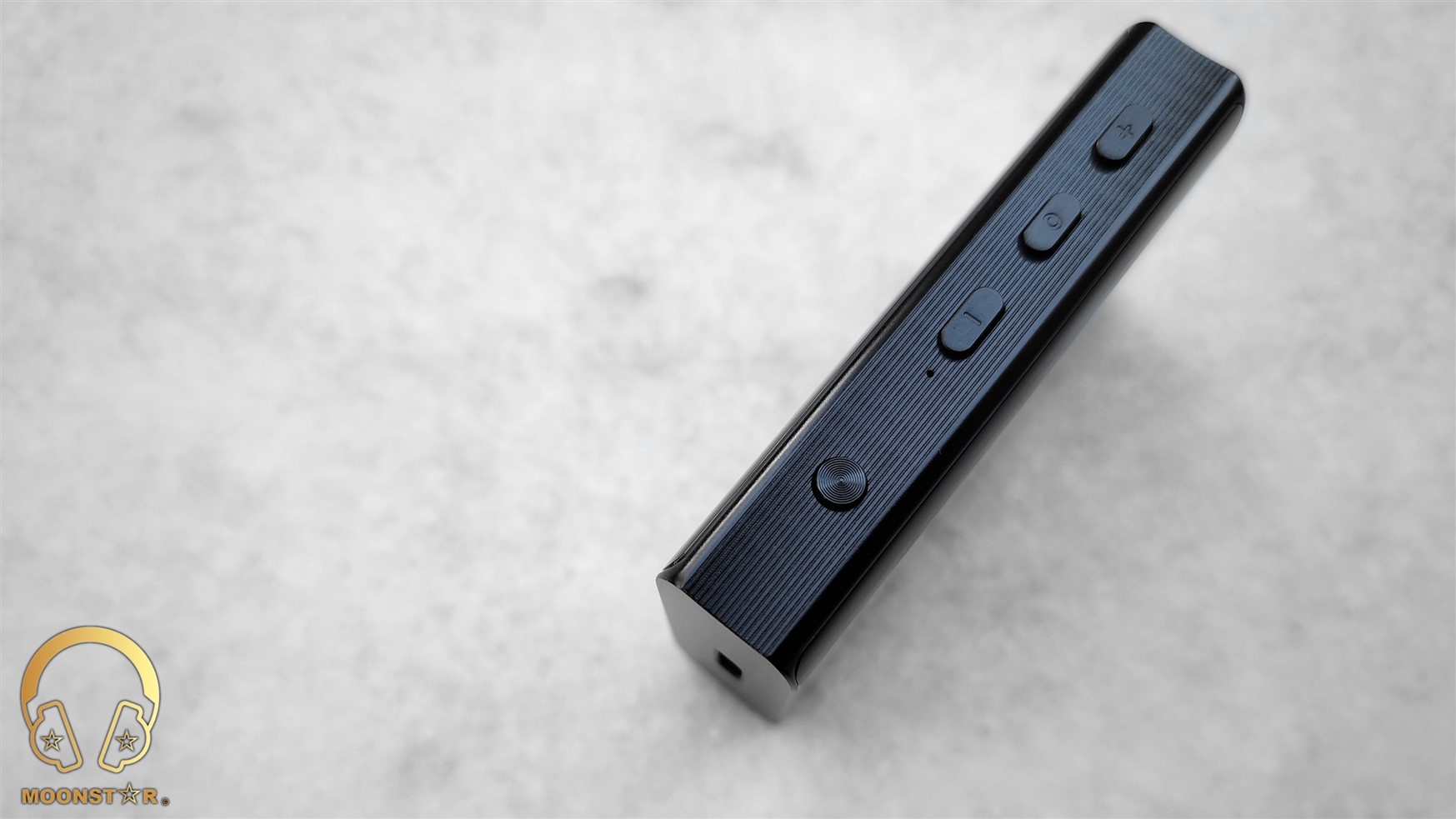
The left surface of the IKKO Heimdallr ITB03 sports a second opening dedicated for the build-in microphone for voice calls and voice commands when connected to a phone or tablet.

On the top of the IKKO Heimdallr ITB03 are the 3.5mm Single Ended, 4.4mm Balanced (TRRRS) analog outputs. The 3.5mm output serves also as Optical output interface, which is a great feature.
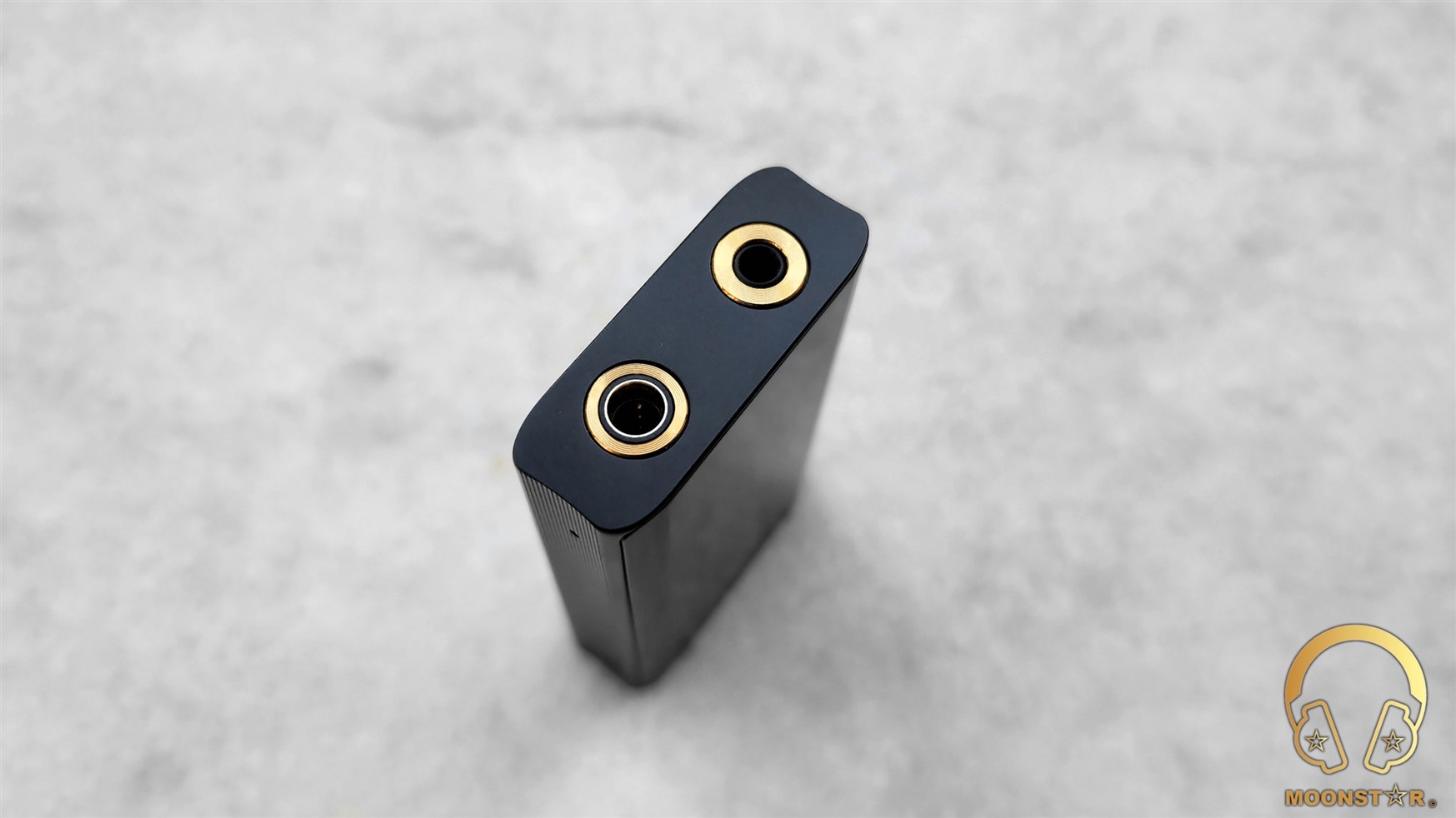
At the bottom of the device is the USB Type-C port that works for charging and digital sound input purposes.
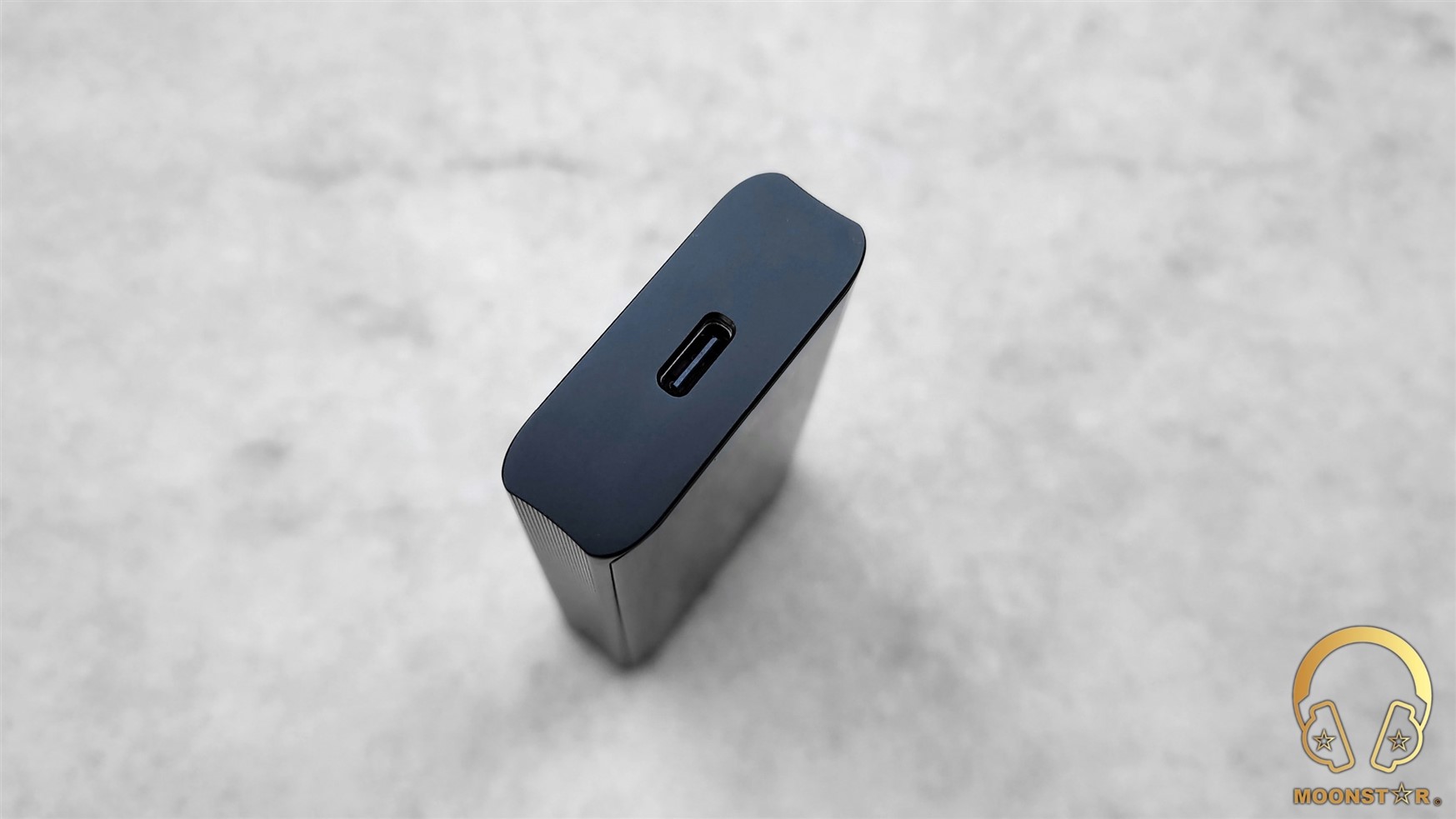
The rear surface of the Heimdallr ITB03 sports the Hi-Res Audio logo some technical detail & industrial certifications.

Here is also the NFC logo and antenna for quick paring with your Bluetooth source, which is a nice addition.

Technical Specifications:
- Model : Heimdallr ITB03
- DAC Chip : 2x Asahi Kasei AK4377
- USB Processor : XMOS 8-core XU208
- Sampling Rates : PCM 32bit/384kHz USB / 32bit/96kHz Optical / Native DSD128
- Headphone Amplifier : RT6863
- Output Ports : 3.5mm Single Ended (Analog & Optical) & 4.4mm Balanced (Analog)
- Bluetooth Chip : Qualcomm QCC5125
- Bluetooth Version : 5.0
- Bluetooth Codec’s : LDAC, APTX HD, AptX LL, AAC and SBC
- Operating Distance : approx. 10 Meters
- Output Power : 3.5mm SE 32mW @ 32Ω / 4.4mm BAL 125mW @ 32Ω
- SNR : 118dB both Single Ended & Balanced
- THD : -110dB
- Battery Size : 650mAh
- Battery Life : Up to 8 hours (SE, Single DAC)
- Charging Time : approx.1.5 hours
- Dimensions : approx. 70mm x 40mm x 10mm
- Weight : 72 grams
Hardware & Connectivity:
The IKKO Heimdallr ITB03 is an Ultra-Portable and very capable All-in One Bluetooth & USB DAC/Amplifier solution that is compatible with a wide variety of platforms including Android, iOS, MAC OS, Windows 10/11, Nintendo Switch, Sony PlayStation 5 and Microsoft XBOX devices. The Car mode is another feature that makes Heimdallr ITB03 also compatible for the use in your Car as an AUX source.

A. DAC (Digital to Analog Converter):
The IKKO Heimdallr ITB03 is equipped with 2x Asahi Kasei AK4377 DAC’s (Digital to Analog Converter) that supports PCM up to 32bit/384Khz and Native DSD up to DSD128. It offers a SNR (Signal to Noise Ratio) of about 118dB and THD (Total Harmonic Distortion) of -110dB.
The Asahi Kasei AK4377 DAC Chip offers 4 different Digital Filters that are listed below;
- Fillter1 Steep drop: sound dry and crisp.
- Fillter2 Steep drop after a short delay: mellow sound, suitable for pop music.
- Fillter3 Steep drop: Natural and mellow low end, good for slow music.
- Fillter4 Slow drop after a short delay: high sound reproduction, suitable for classical music.

B. Bluetooth & NFC Connectivity:
The IKKO Heimdallr ITB03 is equipped with Qualcomm’s latest and most advanced QCC5125 Bluetooth chip that supports the Bluetooth V5.0 protocol. The BT SoC of the device supports most of the advanced Hi-RES wireless codec’s including LDAC, LHDC, aptX HD, aptX LL, aptX, AAC and SBC.
The Heimdallr ITB03 offers a rock solid Bluetooth operating distance that works flawlessly up to 9 – 10 meters. The device has also a decent performance while watching to videos and movies on YouTube, Netflix, Disney+, Amazon Prime, which doesn’t have shown any remarkable lip-sync latency issues when paired to my Samsung Galaxy TAB S8 Ultra and Samsung Galaxy S22 Ultra, thanks to the support of the latest aptX-LL and LDAC low latency codec’s.
The pairing of the IKKO Heimdallr ITB03 with sources like Android/iOS phones, tablets, etc. are quite easy. You have also the option to pair it to other compatible devices with just a simple tap by using the NFC wireless short-range communication protocol, entirely avoiding the cumbersome traditional pairing process.

C. Outputs / Amplification / Drivability / Hissing:
The IKKO Heimdllr ITB03 comes with a balanced audio architecture, which means that each channel is driven separately from the other with its own DAC and Amplifier. The device is equipped with both 3.5mm Single Ended and 4.4mm Balanced analog interfaces that do offers a pretty powerful and clean output.
The Heimdallr ITB03 comes with 1x RT6863 independent amplifier. That RT6863 offers an output power of 32mW @ 32ohm over the 3.5mm Single Ended port and up to 125mW @32 Ohm over the 4.4mm Balanced output. The device has two gain options that are Low & High gain, which can be selected over the sub-menu. Both the 3.5mm Single Ended & 4.4mm Balanced outputs do show a pretty clean output with very low amount of hissing.
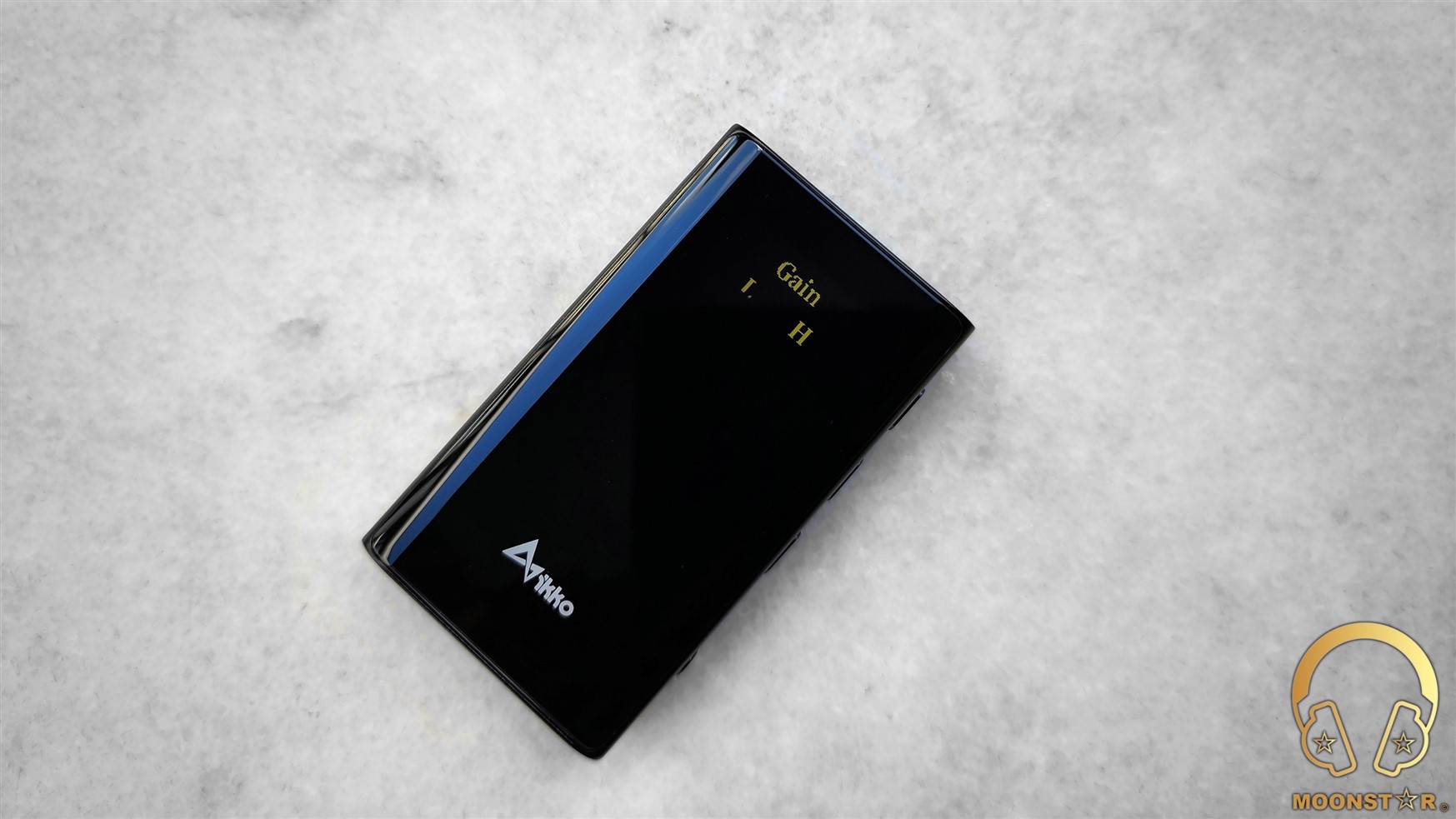
D. XMOS XUF 208 Chip & USB DAC function:
The IKKO Heimdallr ITB03 is a pretty capable device that utilizes an 8-Core XMOS XUF208 chip that gives it the ability to work as USB DAC/Amplifier, which will support sampling rates up to 32 bit/384kHz and Native up to DSD128. The USB DAC functionality can be activated under the HiFi Audio Mode option and supports USB UAC 2.0.
E. Microphone:
The IKKO Heimdallr ITB03 is equipped with a built-in microphone with supports Qualcomm’s cVc 8.0 noise cancellation technology in order to suppresses background noises. The microphone offers an average performance in terms of voice transfer that I have tested paired with my Samsung Galaxy S22 Ultra.
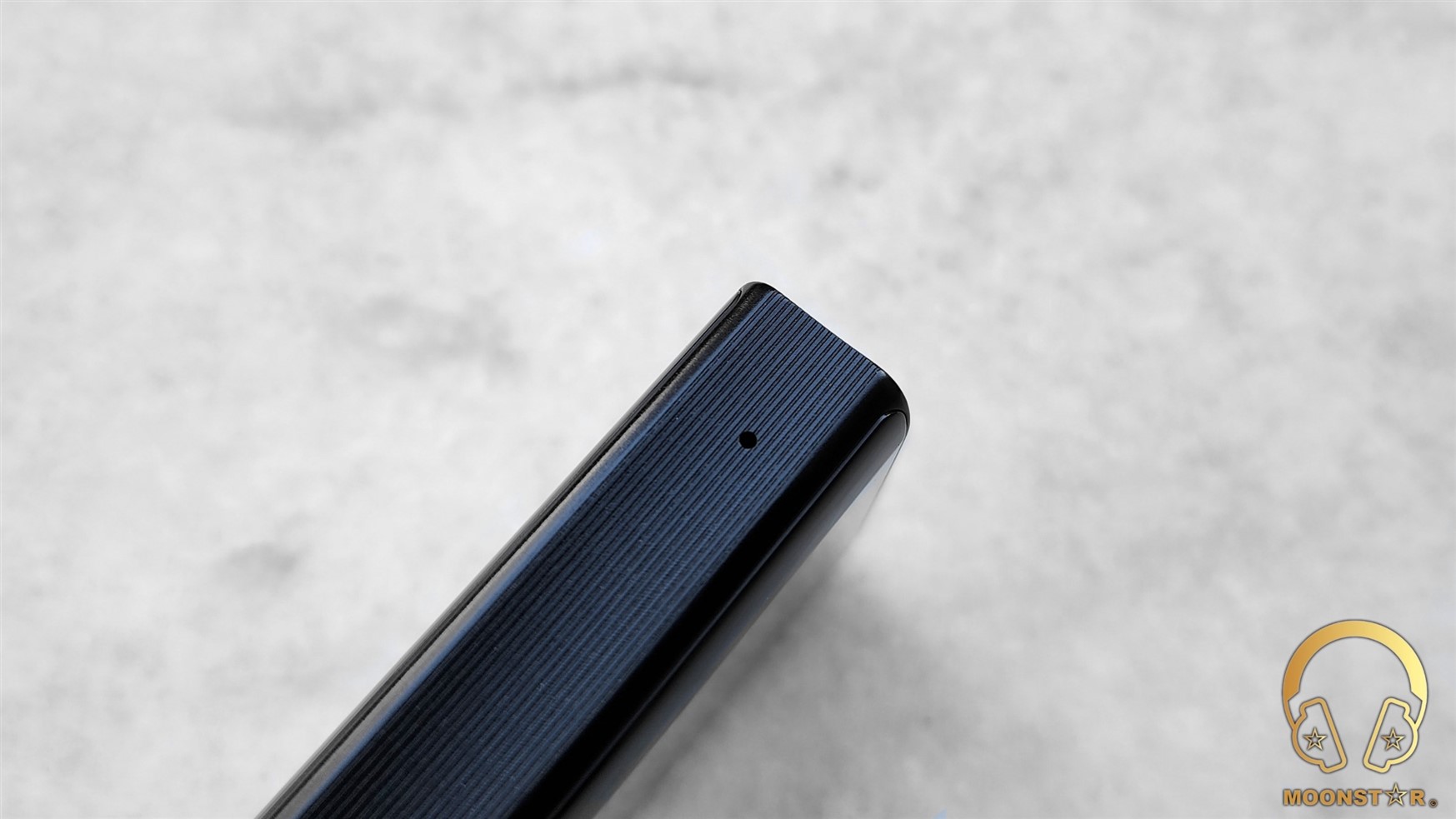
F. Battery Life:
The IKKO Heimdallr ITB03 is equipped with a built-in battery that has a capacity of approx. 650mAh, which takes about 1.5 hours to be fully charged. The 3.5mm Single Ended output offers around 7.5 – 8 Hours, while the more powerful 4.4mm Balanced out shows up to 6 hours of battery life at Low Gain and Volume 20 out of 60. The overall battery performance is pretty good for such a small device.
Equipment’s used for this review:
- DAC/Amplifier’s : IKKO Heimdallr ITB03, Shanling UP4 2022
- IEM’s/Headphones : IKKO Opal 2, FiiO FD7, iBasso IT07, SIVGA Oriole
- Sources : Samsung Galaxy S22 Ultra & TAB S8 Ultra, Asus TUF FX505DU

Albums & tracks used for this review:
- Adele – My Little Love (Spotify)
- Randy Crawford – On Day I Will Fly Away (Flac 16bit/44.1kHz)
- Hayley Westenra – Odyssey Album (Dezzer HiFi)
- Dionne Warwick – Walk On By (Flac 16bit/44.1kHz)
- Sarah McLachlan – Angel (Flac 24bit/48kHz)
- Sertap Erener – Aşk (Flac 16bit/44.1kHz)
- Edith Piaf – Non Je Ne Regrette Rien (Flac 16bit/44.1kHz)
- Diana Krall – So Wonderful (DSF)
- Aretha Franklin – I Say A Little Payer (Flac 24bit/96kHz)
- Sonya Yoncheva – (Giuseppe Verdi) II Trovatore, ActI (Flac 24bit/96kHz)
- Dave Gahan (Depeche Mode) – Free Love (Flac 24bit/96kHz)
- George Michael – Don’t Let the Sun Go Down on Me (Flac 24bit/192kHz)
- David Bowie – Heroes (Flac 24bit/192kHz)
- Elton John – Rocket Man ((Flac 24bit/96kHz)
- Barry White – Just The Way You Are (Flac 24bit/48kHz)
- Isaac Hayes – Walk On By (Flac 16bit/44.1kHz)
- Sting – Englishman in New York – (Flac 24bit/48kHz)
- Eric Clapton – Wonderful Tonight (Flac 24bit/96kHz)
- B. King – Riding With The King (Tidal Hi-Fi)
- Dave Gahan – Kingdom (Tidal Hi-Fi)
- U2 – Sunday Bloody Sunday (Flac 16bit/44.1kHz)
- Bro Safari, UFO! – Drama (Deezer HiFi)
- Armin Van Buuren – Vini Vici (Flac 16bit/44.1kHz)
- Daft Punk (feat. Panda Bear) – Doin’ it Right (Flac 24bit/96kHz)
- Jo Blankenburg – Meraki (Spotify)
- Lorde – Royals (Flac 24bit/48kHz)
- Massive Attack – Angel (Flac 24bit/48kHz)
- Toutant – Rebirth (Deezer HiFi)
- Gogo Penguin – Raven (Flac 24bit/192kHz)
- Gogo Penguin – Murmuration (Flac 24bit/192kHz)
- Photek – The Hidden Camera (Flac 24bit/96kHz)
- Portishead – It Could Be Sweet (Spotify)
- Max Richter – On the Nature of Daylight (Flac 24bit/96kHz)
- Charly Antolini – Duwadjuwandadu (Flac 24bit/192kHz)
- Abel Korzeniowski – Dance For Me Wallis (Deezer HiFi)
- Ferit Odman – Look, Stop & Listen (Flac 24bit/192kHz)
- Chopin – Nocturn No. 20 In C-Sharp Minor (Flac 16bit/44.1kHz)
- Fazıl Say – Nazım Oratoryosu (Live) (Flac 16bit/44.1kHz)
- Vivaldi – Le QuarttroStagioni “The Four Season” (Deezer HiFi)
- Otto Liebert & Luna Negra – The River (Flac 24bit/192kHz)
- Lunatic Soul – The Passage (Flac 16bit/44.1kHz)
- Deftones – My Own Summer (Shove it) (Flac 16bit/44.1kHz)
- Metallica – Sad but True (Flac 24bit/96kHz)
- Metallica – Master of Puppets (Flac 24bit/96kHz)
- Opeth – Windowpane (Flac 16bit/44.1kHz)
- Megadeth – Sweating Bullets (Tidal Hi-Fi)
- Muse – Hysteria (Flac 16bit/44.1kHz)
- Rush – Leave That Thing Alone (Flac 16bit/44.1kHz)
- Slayer – Angel of Death (Spotify)
- Liquid Tension Experiment 2 – Acid Rain (Spotify)
- Yosi Horikawa – Bubbles (Spotify)

The Sound:
The Hidizs DH80 is a DAC/Amplifier with a fairly dynamic sound character which shows a mild amount of coloration. The lower frequency area shows a nice sense of body and fullness, the midrange is pretty natural and detailed, while the treble range is successful in terms of extension, clarity and control.
This review has been written after a burn-in period of about 50 hours. My sound experience below are mainly based on impressions with In-Ear Monitors like the IKKO OH2, FiiO FD7, iBasso IT07 and SIVGA Oriole.
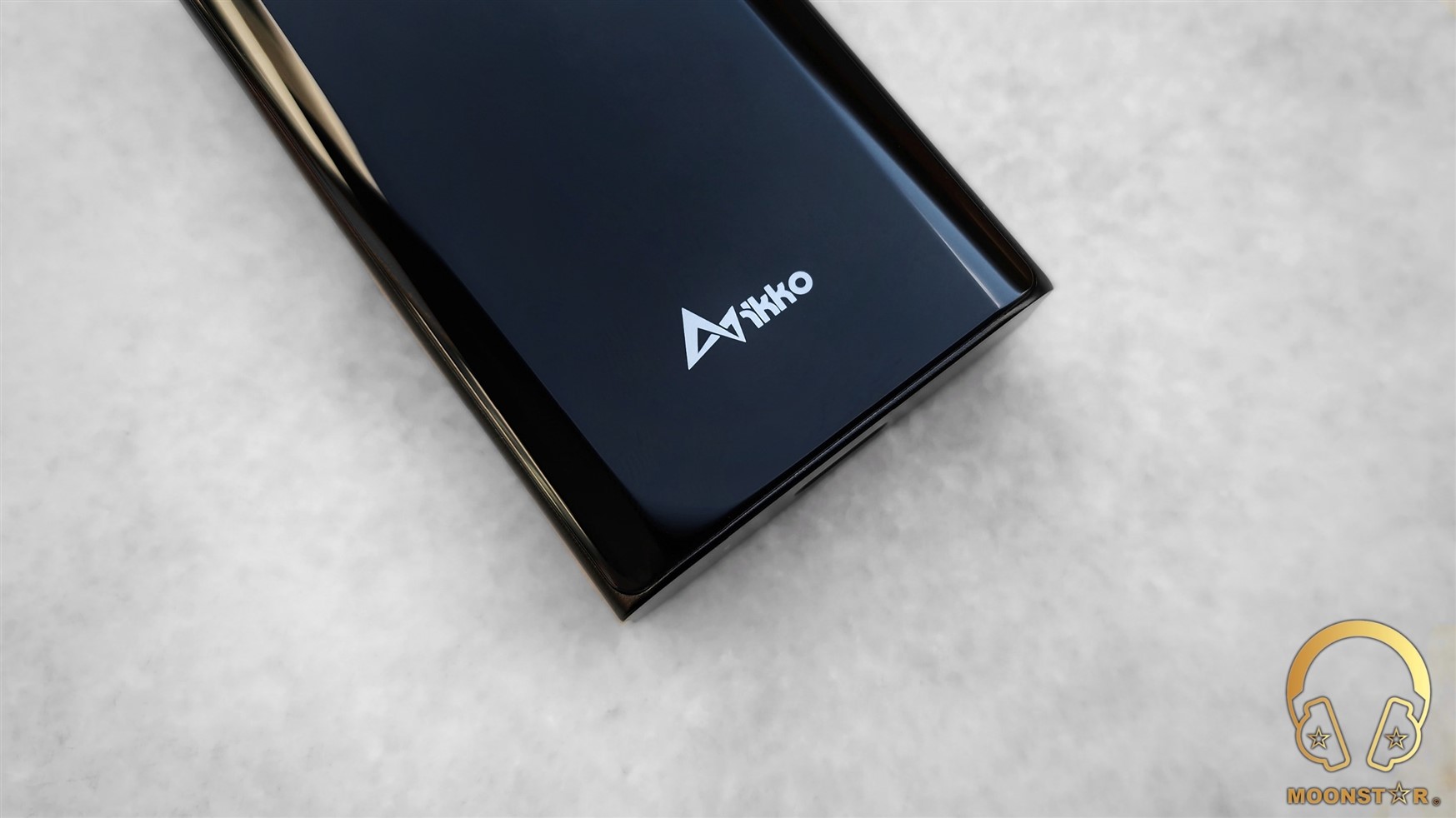
Bass:
The IKKO Heimdallr ITB03 has a pretty natural and linear bass response that shows a low amount of coloration that adds the general presentation a nice sense of musicality. The subbass region is reproduced with a decent grade of depth and extension when I listen to it with IEM’s like the FiiO FD7 and iBasso IT07. The 4.4mm balanced output is able to deliver a clean, controlled and deep subbass experience, when I listen to tracks such like Daft Punk’s “Doin’ it Right” or Lorde’s “Royals”.
The Heimdallr ITB03 has a pretty natural midbass response that offers a good grade of impact and control, without to lose the sense of clarity and resolution of the song I have listen to, while the coloration that is added is quite minimal. Songs with complex bass passages such like Gogo Penguin’s “Murmuration” or Charly Antolini’s “Duwadjuwandadu” are reproduced in a pretty clean and controlled manner, without to have any remarkable negative conditions such like a midbass hump or muddiness. The sense of layering and separation while listen to instruments such like a kick and snare drums is excellent, especially when paired with IEM’s like the FiiO FD7 and iBasso IT07.

Midrange:
The IKKO Heimdallr ITB03 shows a fairly natural, transparent and detailed midrange character, with a touch of warmth that adds the overall presentation a nice sense of musicality when I listen to instruments or to vocals that was pretty audible, especially when paired with IEM’s like the IKKO OH2 or FiiO FD7. The general midrange presentation of the Heimdallr ITB03 can be described as pretty balanced, lively and airy. The lower midrange is reproduced with a an efficient grade of body and depth that was pretty audible while listen to male vocals like Dave Gahan, David Bowie or Barry White or to strings such like a viola or acoustic guitar.
The upper midrange is shown with a decent level of clarity and resolution without to have negative conditions such like sibilance or over brightness. Instruments from guitars to flutes, from pianos to cellos are represented with an efficient amount of clarity and resolution, while or female vocals like Adel, Sertap Erener or Edith Piaf did sound pretty natural, lively and emotional. The resolution of instruments and human voices is pretty exciting for an ultra-portable BT/USB DAC/Amplifier at this price level.

Treble:
The IKKO Heimdallr ITB30 has a pretty balanced and natural character treble presentation that is shown with a decent sense of presence and brilliance. The coloration in this area is quite minimal, which shows only a tad of additional warmth and note weight. The transitions from the upper midrange towards the lower treble region are in general fairly controlled, especially in moments when instruments or soprano vocals are shown with higher level of distortion.
The lower treble region of the Heimdaller ITB03 shows a decent grade of clarity and definition, while the extension and separation of instruments such like violins and pianos is on a successful for a portable DAC/Amplifier at this price range. The upper treble area is shown with an efficient amount of airiness and sparkle. Percussions such like kick drums and hi-hats are reproduced with a sufficient sense of presence and airiness, while violins and toms do have just the right level of attack and extension when I do listen to it with IEM’s like the IKKO OH2. Crash and ride cymbals on the other hand do have a tad of warmth that helps do avoid negative conditions such like over sharpness.

Soundstage & Imaging:
The IKKO Heimdallr ITB03 shows a fairly spacious and airy soundstage atmosphere that meets my expectations from a product at this price range. Instruments and vocals do have enough headroom for a relative accurate placement and separation. The soundstage is reproduced with an efficient grade of depth and wideness, while the height of the stage is on a moderate level.
Comparison:
IKKO Heimdallr ITB03 versus Shanling UP4 2022 Edition:
The UP4 2022 Edition is Shanling’s latest Ultra-Portable BT & USB DAC/Amplifier, which is a direct rival of the IKKO Heimdallr ITB03 that I would like to compare for you.
The Shanling UP4 2022 shows a tad warmer tonality compared to the IKKO Heimdallr ITB03 that sounds a bit more neutral and balanced. The subbass region of both devices shows a pretty similar level of depth and extension, while the Heimdallr ITB03 offers a bit more clarity and resolution in this area when I do listen to kick-drums and bass guitars. The IKKO Heimdallr ITB03 has the slightly edge when it comes to the control and separation in the midbass area that was audible in songs with complex bass passages such like songs like Gogo Penguin’s Raven.

Both the Heimdallr ITB03 and the UP4 2022 Edition do offer a decent midrange performance, especially with respect for their price. The Shanling UP4 2022 sounds a tad warmer and fuller, due to a slightly coloration in the lower midrange area. The IKKO Heimdallr ITB03 on the other hand offers in general a more natural and spacious midrange presentation, with better sense of clarity and micro detail retrieval. Both sources do offer a pretty controlled upper midrange presentation, while the Heimdallr ITB03 sounds slightly more accurate and natural when I listen to female voices and instruments like violins and pianos.
The treble range of both the IKKO Heimdallr ITB03 and the Shanling UP4 2022 Edition sounds pretty energetic & pronounced, without to get out of control. The Heimdallr ITB03 has the slightly edge when it comes to the treble extension, while both are successful in terms of resolution.
Both devices do offer a decent performance in terms of separation and placement of instruments and vocals. However, the IKKO Heimdallr ITB03 shows a slightly higher sense of airiness and wideness, while the depth of the stage is relative similar.

Conclusion:
IKKO is an innovative company that is also known with its attention to the smallest details of all released products and the Heimdallr ITB03 is not an exception. The Heimdallr ITB03 Bluetooth & USB DAC/Amplifier impressed me in with its solid overall sound performance, build quality and all the well implemented hardware features, which are packed in to this ultra-portable devices with a very esthetic design that has a quite reasonable price. All in all, highly recommended!
Thank you for the Read!
Moonstar
100+ Head-Fier
Pros: Carefully tuned entertaining sound profile with decent level of fun factor,
Excellent Bass Performance (Depth, Speed and Authority),
Transparent & Airy Midrange Presentation,
Smooth & Controlled Treble Response,
Spacious Soundstage Atmosphere,
Design, Comfort & Build Quality,
Very Rich Set of Accessories (Swappable Plugs & Filters, HS18 Ear Tips, MMCX Assist Tool, etc.)
Excellent Bass Performance (Depth, Speed and Authority),
Transparent & Airy Midrange Presentation,
Smooth & Controlled Treble Response,
Spacious Soundstage Atmosphere,
Design, Comfort & Build Quality,
Very Rich Set of Accessories (Swappable Plugs & Filters, HS18 Ear Tips, MMCX Assist Tool, etc.)
Cons: Upper & Lower Treble Extension is a bit short,
Not for those who prefer a Reference Type of Sound Signature,
2.5mm Balanced Plug is missing that was included to previous models (FH5S Pro, FH9)
Not for those who prefer a Reference Type of Sound Signature,
2.5mm Balanced Plug is missing that was included to previous models (FH5S Pro, FH9)
FiiO FH7S Hybrid IEM Review
Introduction:
The FiiO FH7S is the successor of the FH7 that has been released 2019. The FH7S comes with a 4BA+1DD driver Hybrid Driver configuration same like the original FH7, which now located inside an impressive looking monitor shell that comes with a so called Sci-Fi Armor Design. Moreover, the FH7S features FiiO’s 2nd generation semi-open design dedicated for the 13.6mm large DLC diaphragm Dynamic Driver.
Some other remarkable features are the Patented S.TURBO Acoustic Design, FiiO’s all new HS18 Silicone Ear Tips, a 8 strand Silver Plate Monocrystalline Copper cable with Interchangeable Headphone Plugs and a the brand new Notch Filter technology.
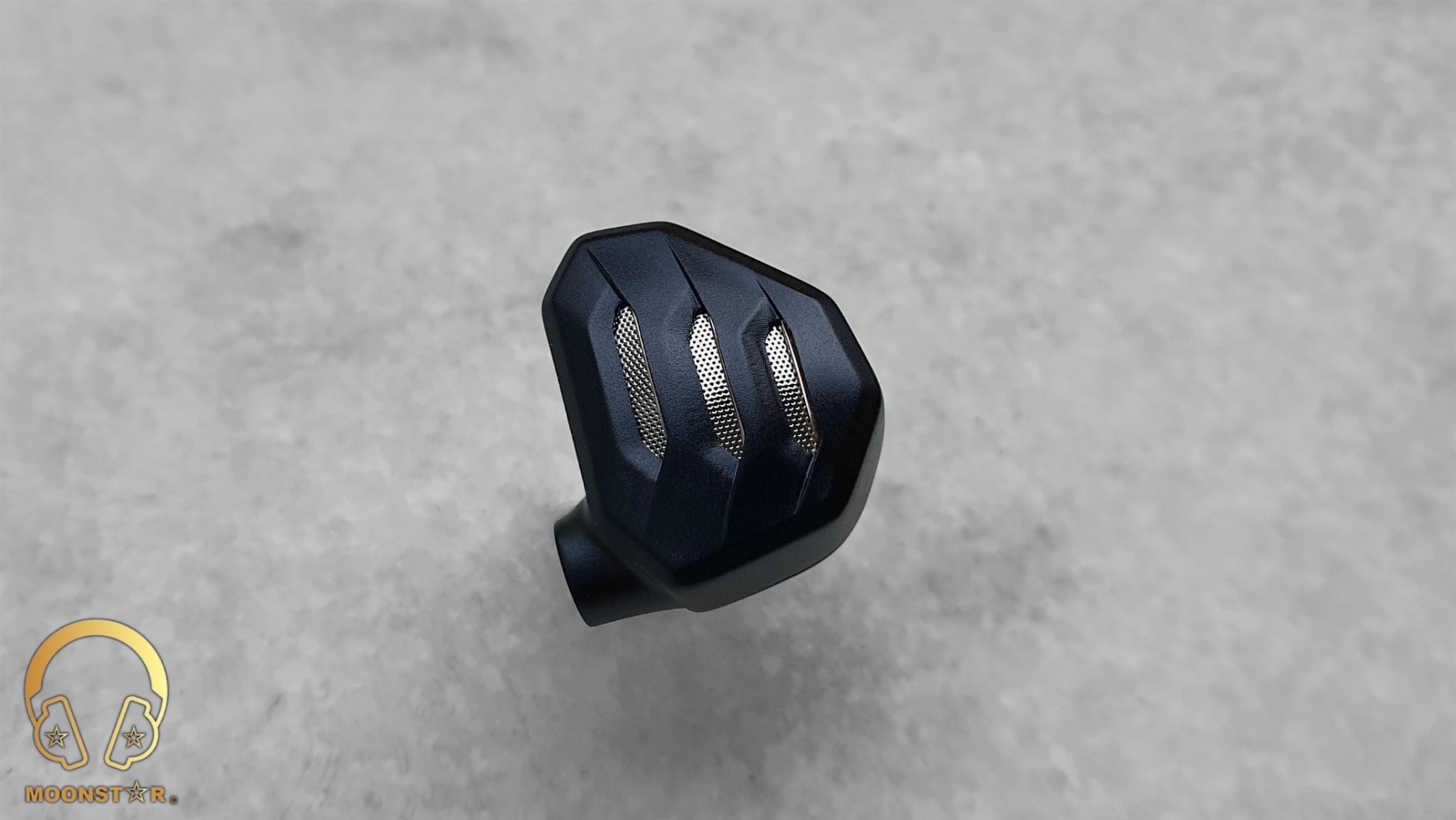
Disclaimer:
I would like to thank FiiO for providing the FiiO FH7S as review sample. I am not affiliated with FiiO beyond this review and all these words are reflecting my true and unaltered opinions about the product.
Price & Availability:
The actual price of the FiiO FH7S is 399.99 US$. More information’s can be found under the links below;
Package & Accessories:
The FiiO FH7S has a rectangular box same like the lasted generation IEM’s of the company. However the box is relative smaller than previous models, which I do prefer this sort of box material since it is a more environment friendly choice. The main box comes wrapped with a fancy looking cardboard sleeve that features the product illustration and some product related brandings on the top.
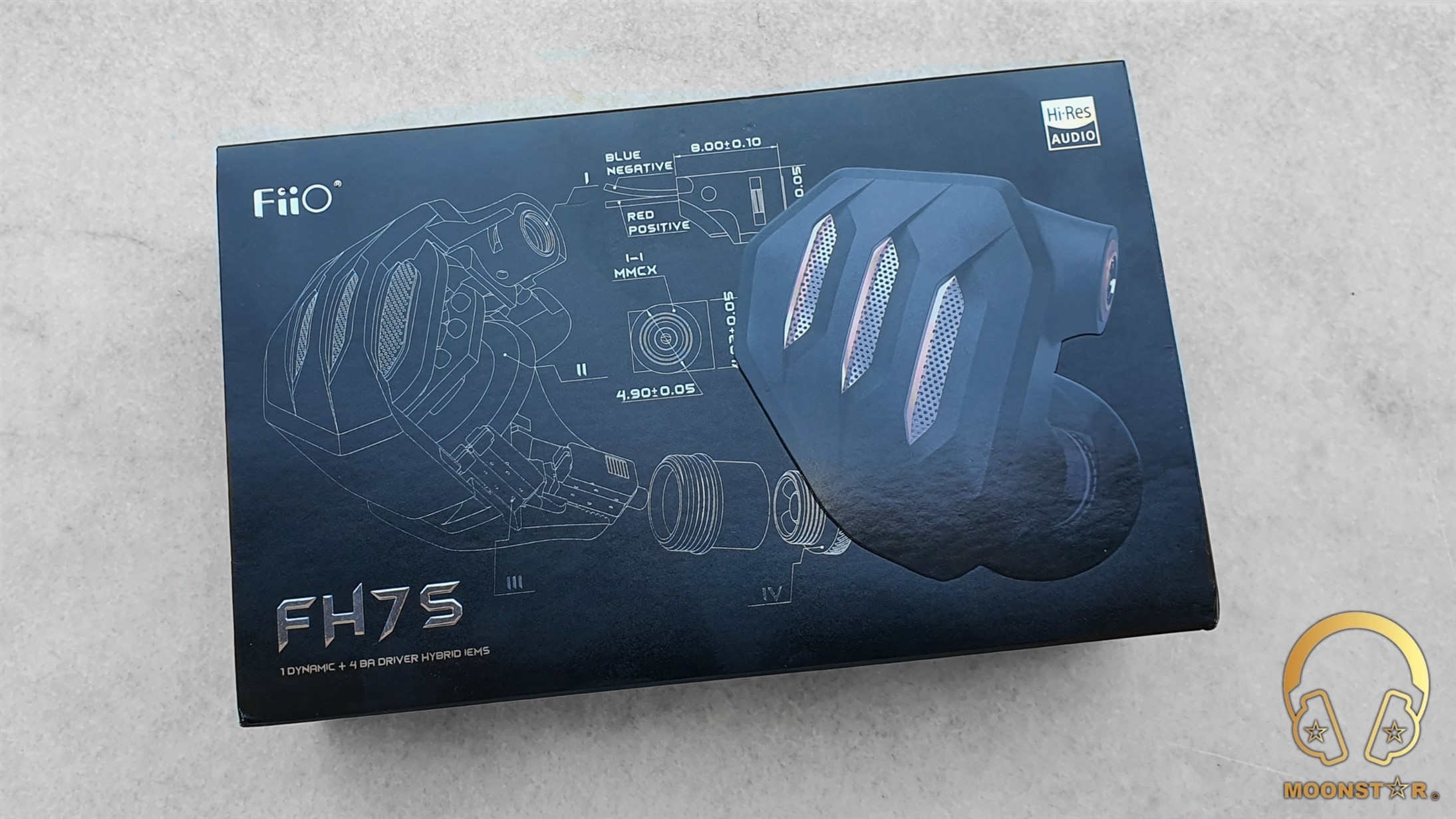
After you remove the cardboard sleeve you will see the main box in black color that sport a sketch of the FH7S on the top and the motto of the company, which is “born for music”.

This box of the FiiO FH7S comes with the following items/accessories;
- 1 pair x FiiO FH7S Hybrid In-Ear Monitors
- 1 piece x 8 Core detachable cable with MMCX connectors
- 2 pieces x Swappable Headphone Plugs (1x 3.5mm SE, 1x 4.4mm Balanced)
- 3 pairs x Interchangeable Audio Filters (Green, White, Red “White one came Pre-installed”)
- 3 pairs x FiiO HS18 Ear tips (S/M/L)
- 3 pairs x Bass Ear tips (S/M/L)
- 3 pairs x Vocal Ear tips (S/M/L)
- 3 pairs x Balanced Ear tips (S/M/L)
- 3 pairs x SpinFit Ear Tips (S/M/L)
- 2 pairs x Double Flange Ear tips (M/M size)
- 2 pairs x Memory Foam Ear Tips (M/M size)
- 1 piece x HB5 Storage Case
- 1 piece x Cleaning Brush
- 1 piece x SK1 Magnetic Cable Organizer
- 1 piece x MMCX Assist Tool
- 1 piece x Warranty Card and User Manual
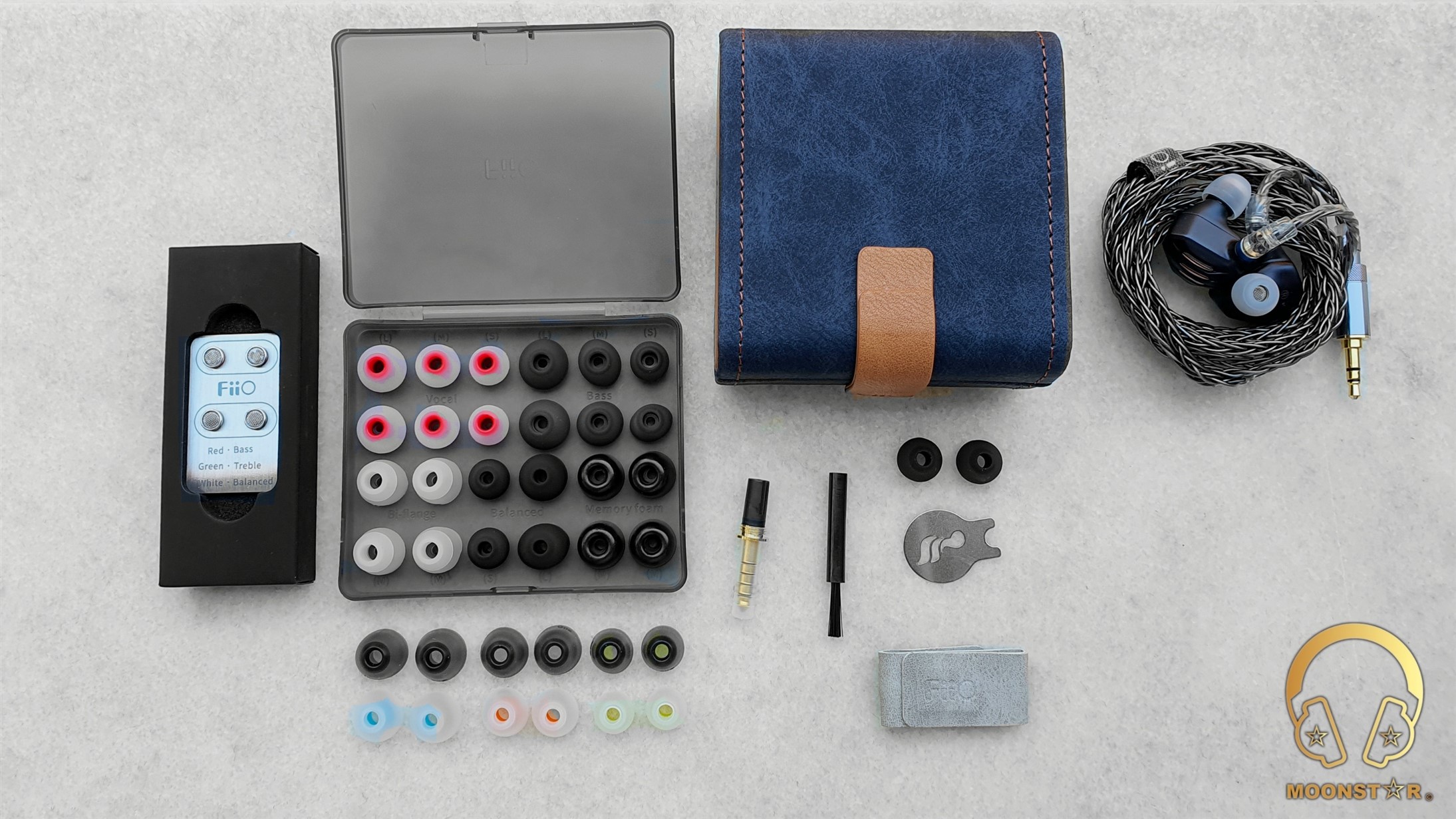
The FiiO is known for its rich ear tips selection that comes with their In-Ear Monitor and the FH7S is not an exception that I have already listed above. However, one of the ear tips are an FH7S exclusive that has the model description HS18.

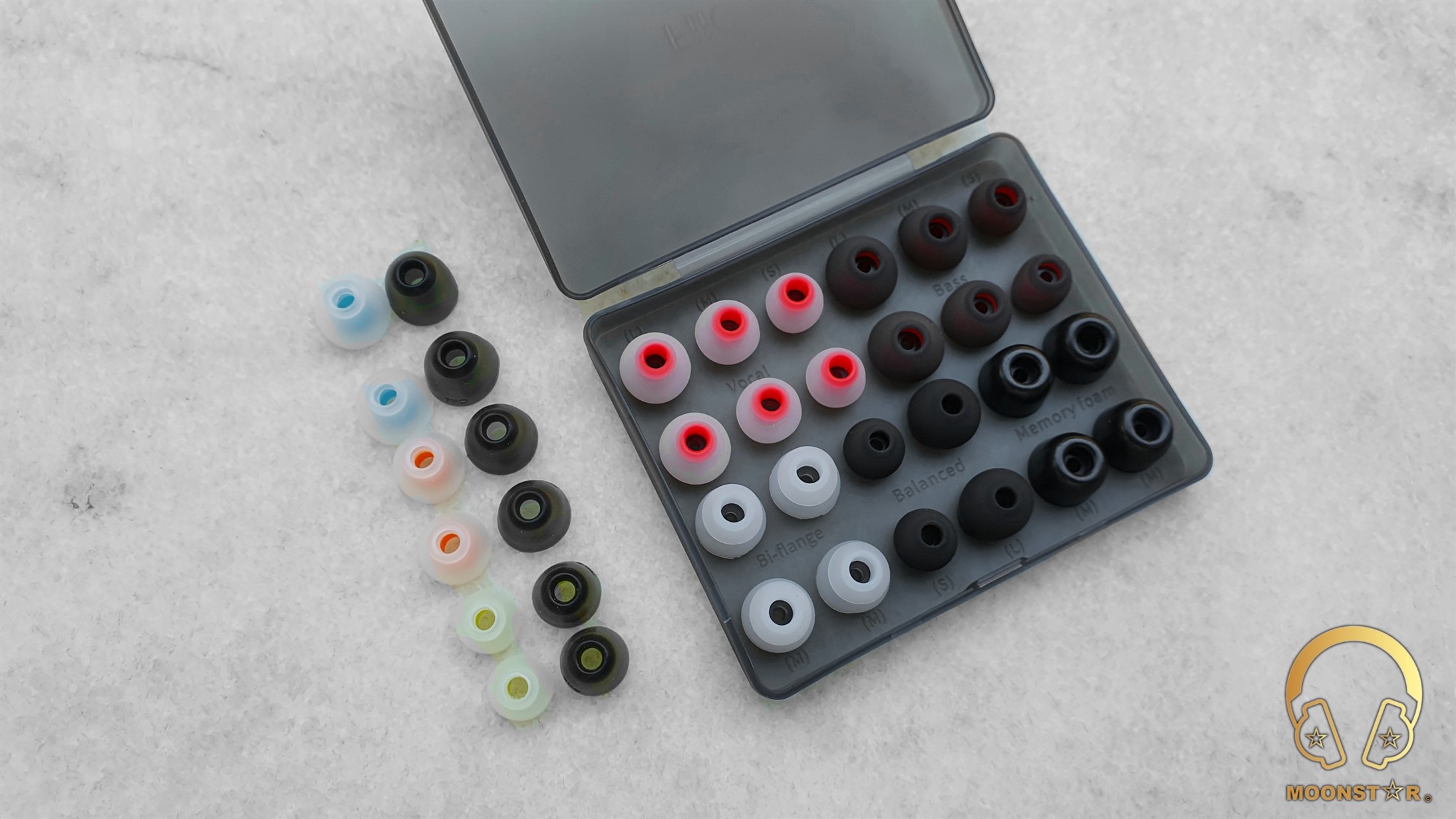
The HB5 storage case is a premium looking accessory in blue and brown color that we know from pervious IEM’s like the FD7, FH9 and FH5s/5S Pro.


The SK1 Magnetic Cable Organizer, a cleaning tool the and the FiiO MMCX Assist Tool are some nice additions.
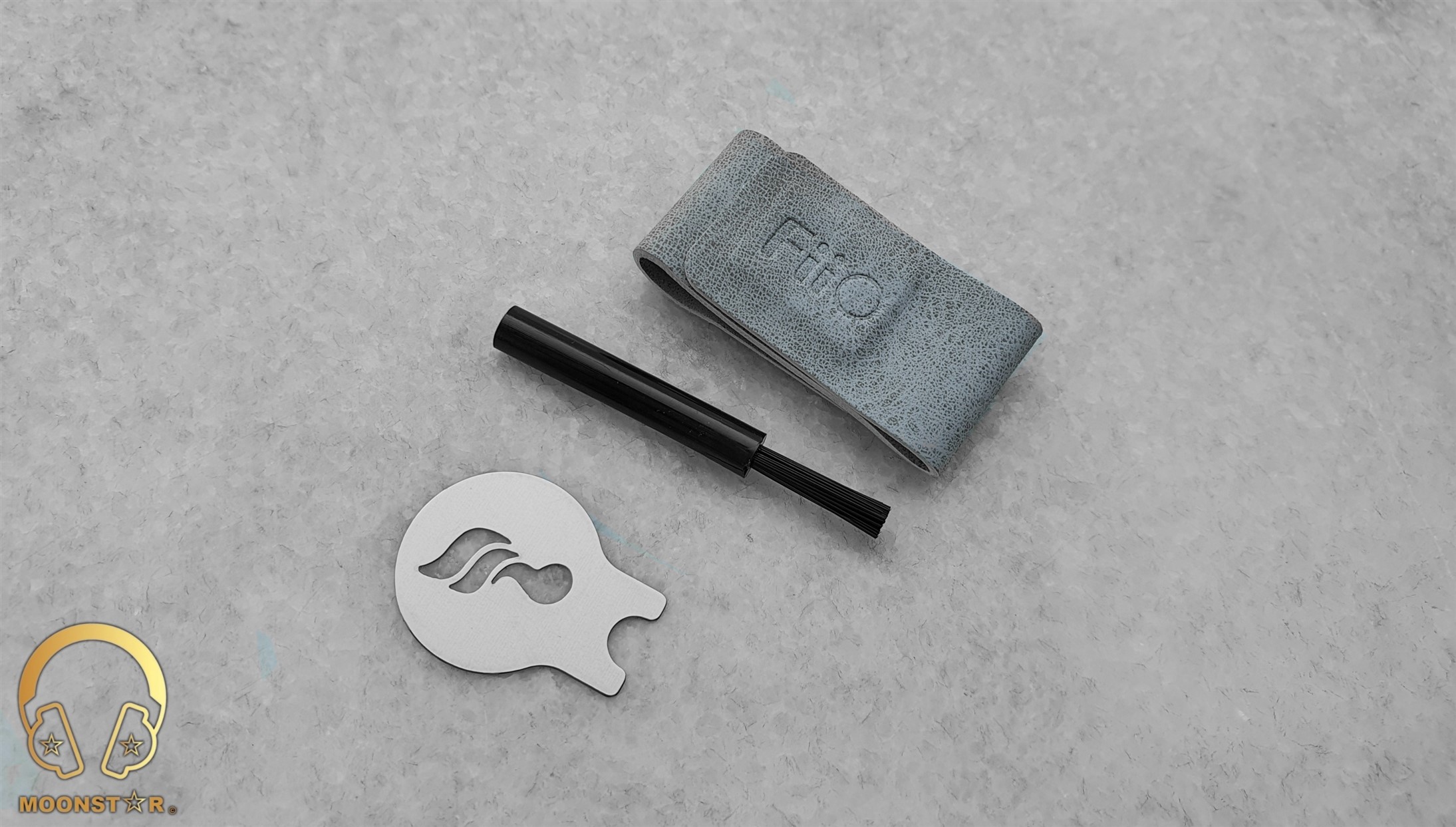
Design & Build Quality:
The new FH7S reflects a more edge-like monitor shape with slightly rounded corner compared to previous IEM’s like the FH3, FH5, FH7 and FH9 that do have a more rounded overall monitor shape. The FH7s looks rock solid thanks to the carefully machined and assembled aluminum alloy housing that features a special oxidized surface for extra scratch resistance.
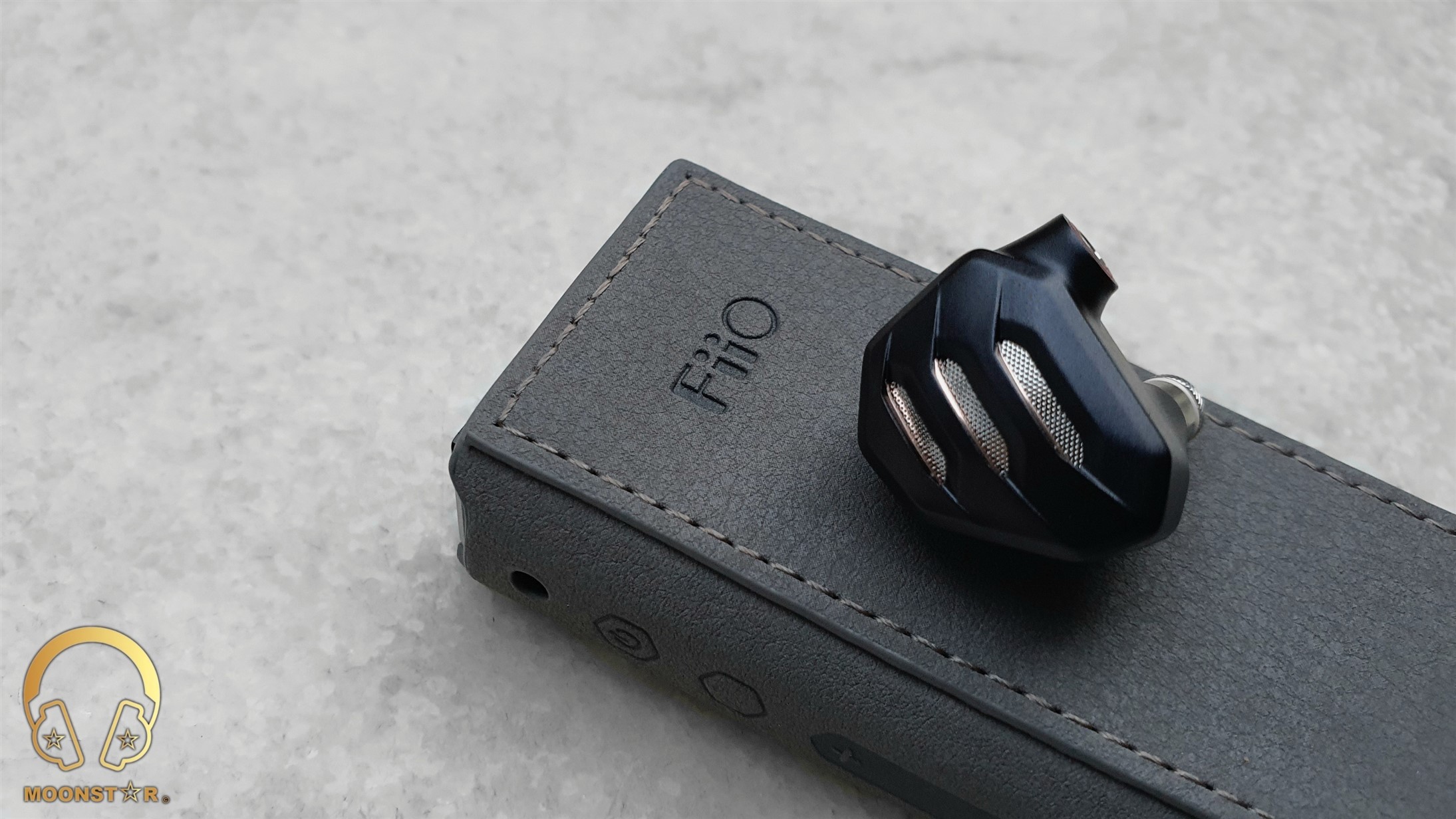
Inside the heart of each monitor is a 4BA+1DD Hybrid Driver configuration same like its predecessor the original FH7. However, it utilize a new Custom BA setup that is a combination of DFK driver customized by FiiO and Knowles that is dedicated for the Midrange and a SWFK-31736 setup that is responsible for the treble area. Another update is the 2nd-gen FiiO-developed 13.6mm dia. DLC (Diamond Like Carbon) Diaphragm Dynamic Driver that will be responsible for the lows.
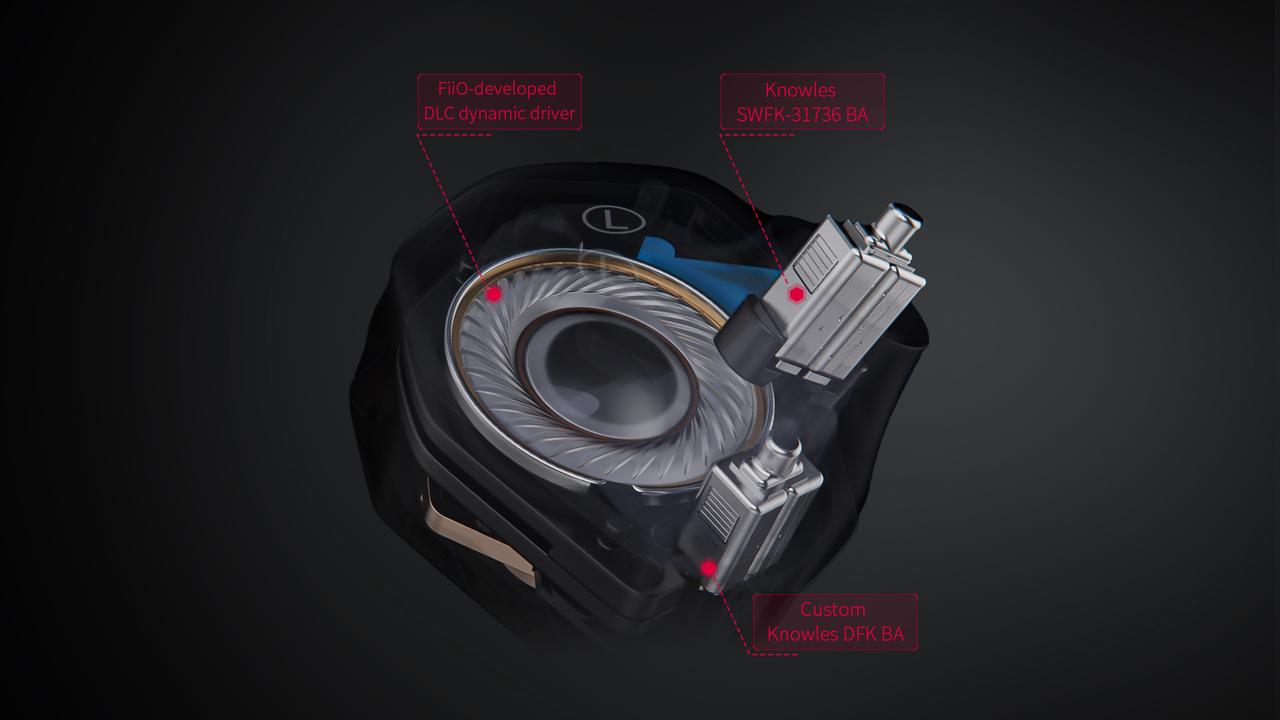
On the front of the monitor shell is the gorgeous looking faceplate that is called “Sci-Fi Armor Design” by FiiO. Here are very small layers of carefully-placed holes that are stacked upon each other that forms the unique semi-open design.

This semi-open design incorporates FiiO’s balanced pressure relief system that is located between the front and rear cavities. This system reduces the resistance of the air created by the 13.6mm diameter large Dynamic Driver.

At the rear body of the monitor housing are the L (left) and R (Right) markings and the sound nozzle that do have a fine metal mesh on the top to prevent the insertion of strange particles such like dust and ear wax.
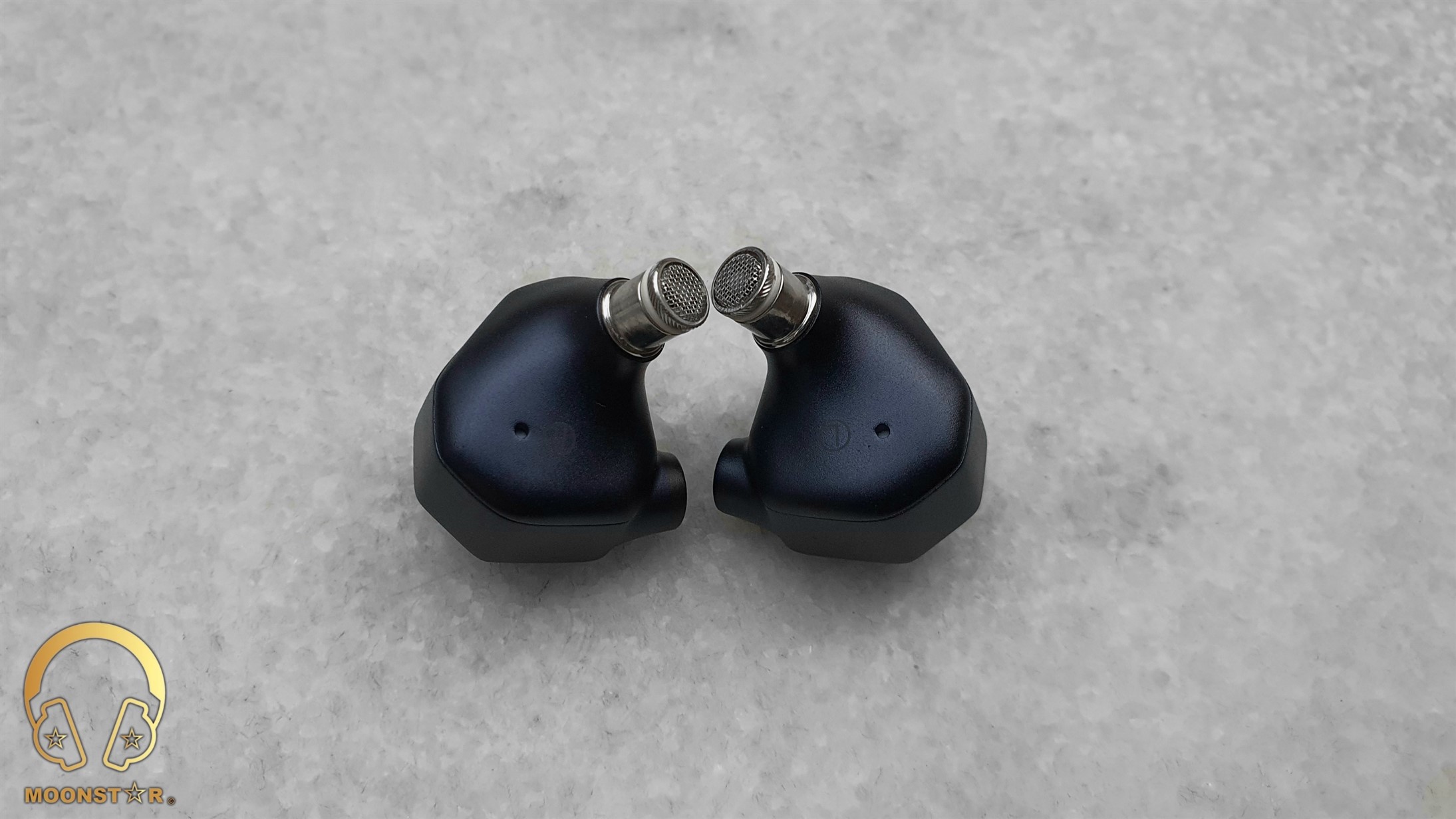
You can install one of the 3 swappable sound tuning filters that do have a fine metal mesh on the top to prevent the insertion of strange particles such like dust and ear wax.

On the top of the monitor housing is the MMCX (Micro Miniature Coaxial) female connectors with left and right color indicators, which is in blue for left and red for the right connector.

The overall build quality of the monitors is top notch same like other FiiO products, without to show any imperfections such like gaps, burs, etc.
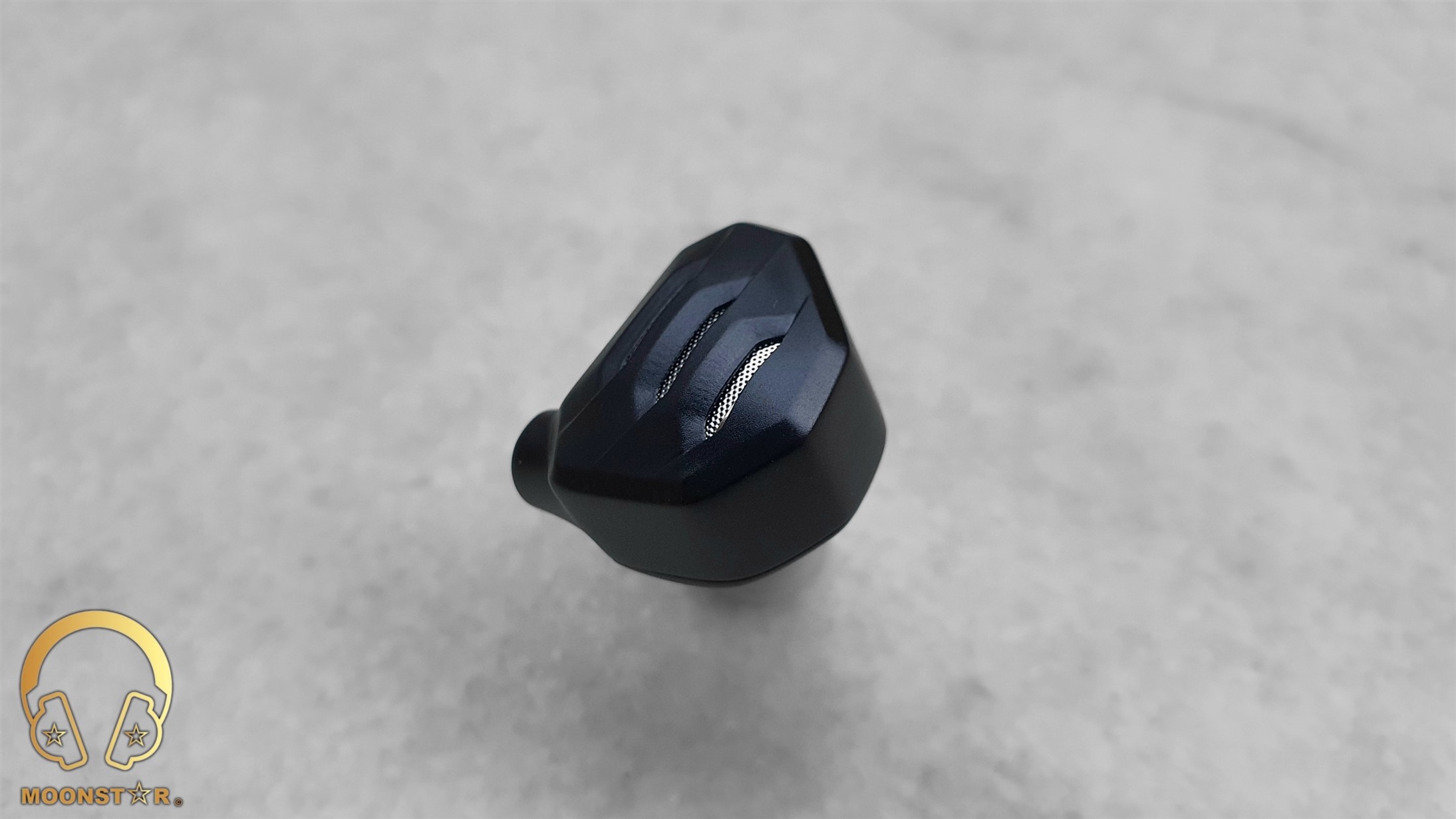
The FiiO FH7S comes with an 8 strand High Purity Silver Plated Monocrystalline Copper wire cable that has 19 wires per stand, which makes 152 wires in total.
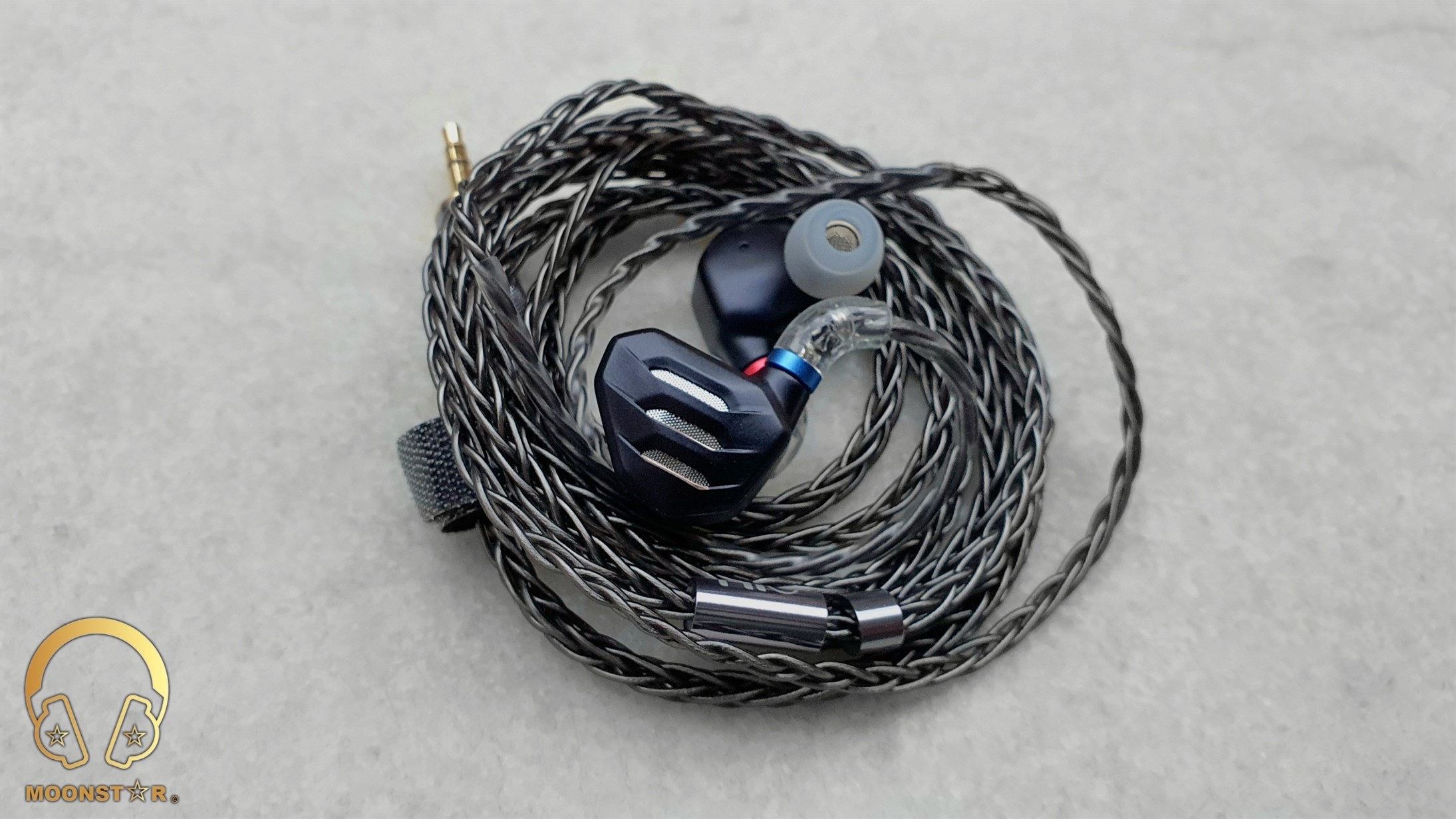
The cable features special isolation made from environmentally friendly German TPU material in black color. This TPU material is also resistant against yellowing after long-term use and against stiffening when in low-temperature environments.
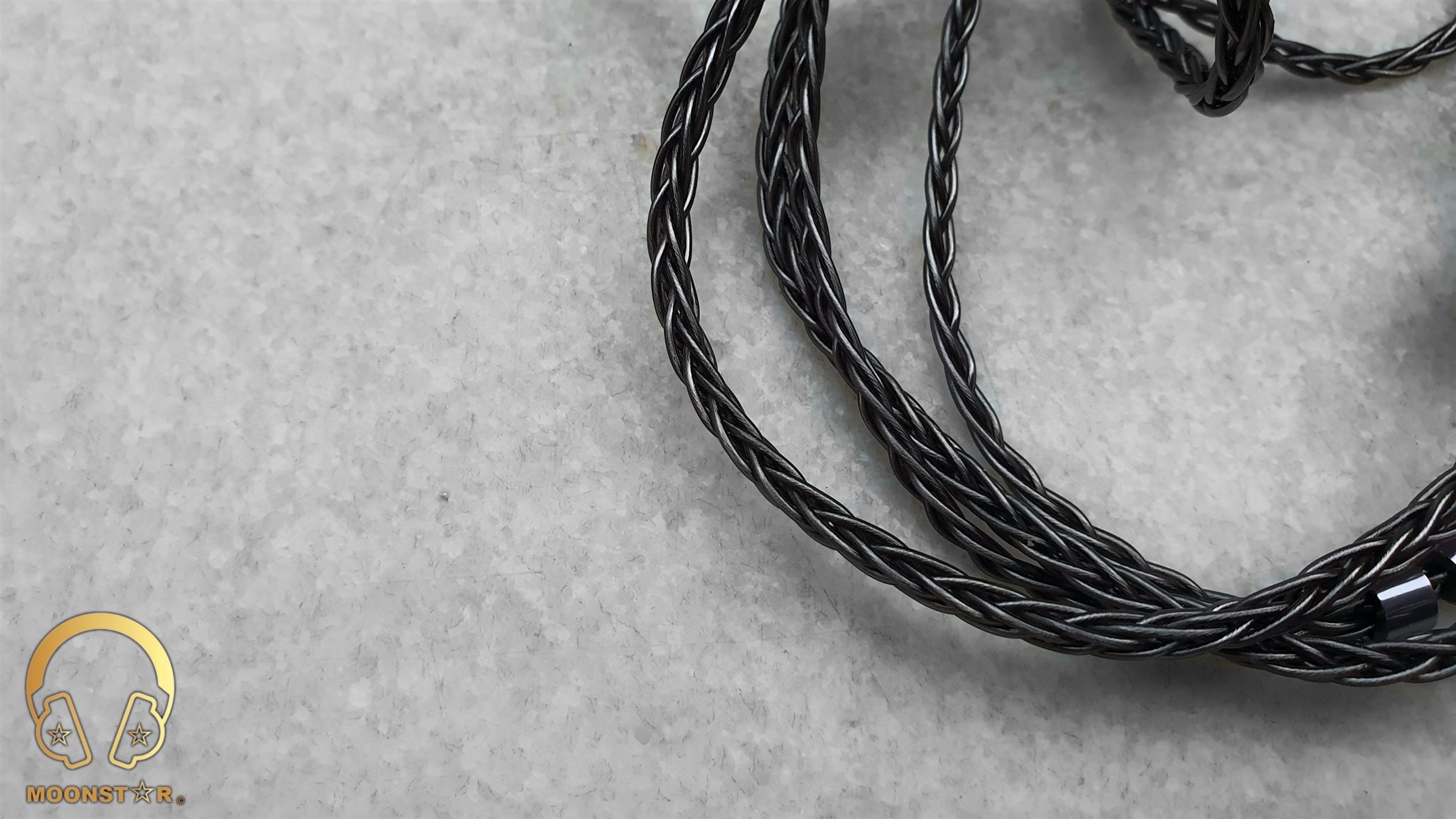
The MMCX connectors have a transparent housing and on each connector is right left indicator, which is a red ring on the right and a blue ring on the right connector.
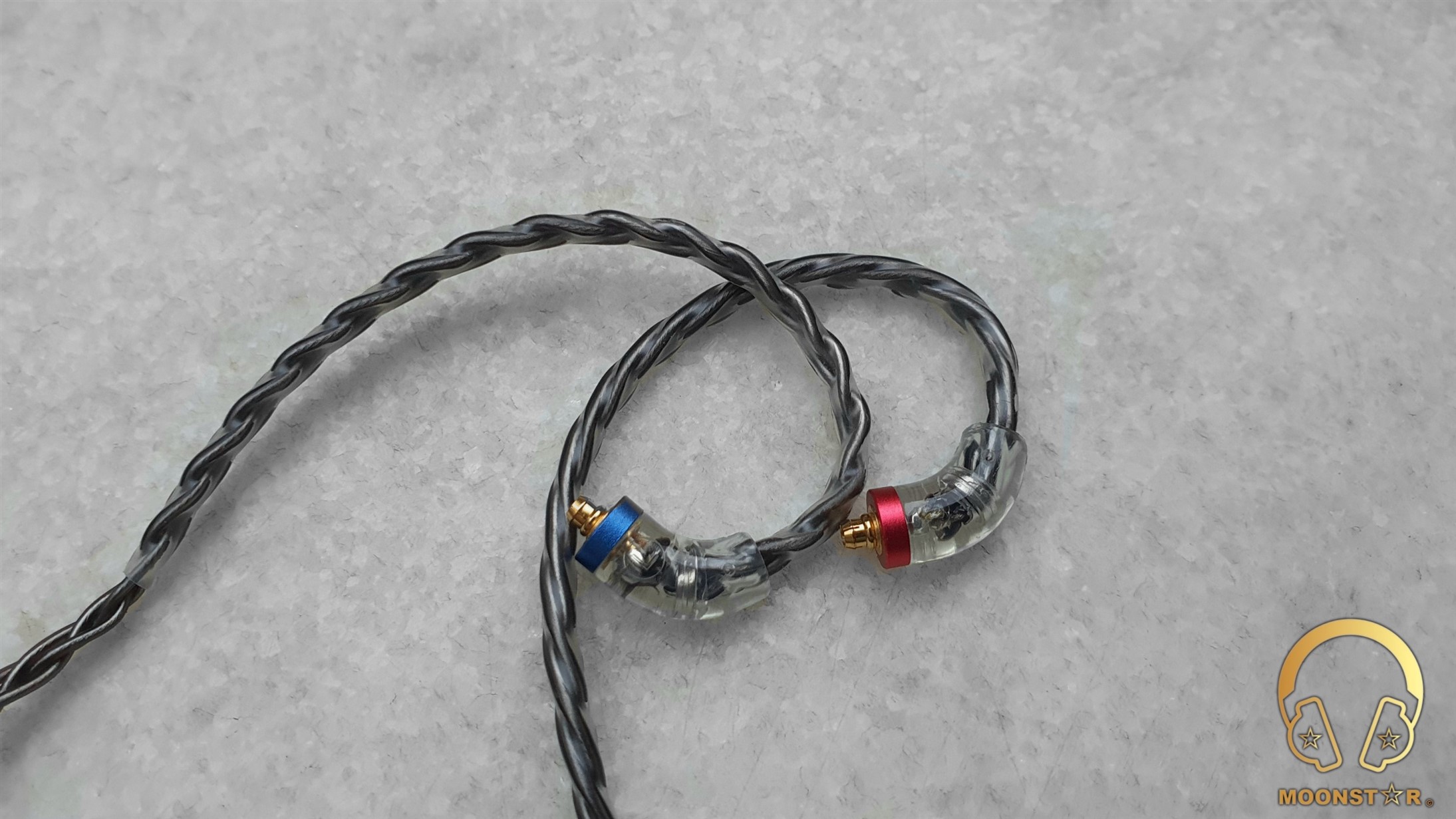
Near the MMCX connectors are transparent heat-shrink ear hooks for a better over the era wearing experience.

The cable sports a chin slider and y splitter made from metal material. The y splitter has the FiiO branding on the top.

A remakbale feature of the cable is FiiO’s latest Twist-Lock Interchangeable audio plug design that comes with 1x 4.4mm TRRRS Balanced and 1x 3.5mm Single Ended TRS plugs. The housing of the headphone plug has a strait profile and is made of the same metal material with a glossy finish.

Comfort & Isolation:
The FiiO FH7S is a relative small IEM that has a quite ergonomic monitor shape, which fits quite comfortable to my ears with an average ear concha. I really like the shape of the monitors that doesn’t hurt my ears even after longer listening periods.
The passive noise isolation of the FH7S is on an average level, due to the semi-open back design. However, the passive noise isolations is fairly enough for the use in relative noisy environments such like a bus or train.

Efficiency & Pairing:
The FiiO FH7S is a relative efficient In-Ear Monitor thanks to an impedance of 18Ω and a sensitivity of approx. 104dB/mW. Sources with relative weak amplification such as Mobile Phones, Tablets or regular Headphone Adaptors are able to power the FH7S to fairly high volume levels. However, to hear the true potential of this IEM, I highly recommend to pair it with more professional sources such like a DAP’s (M11/M11 Plus), DAC/Amplifiers (BTR7/BTR5) or USB DAC Dongles (FiiO KA3/KA1).
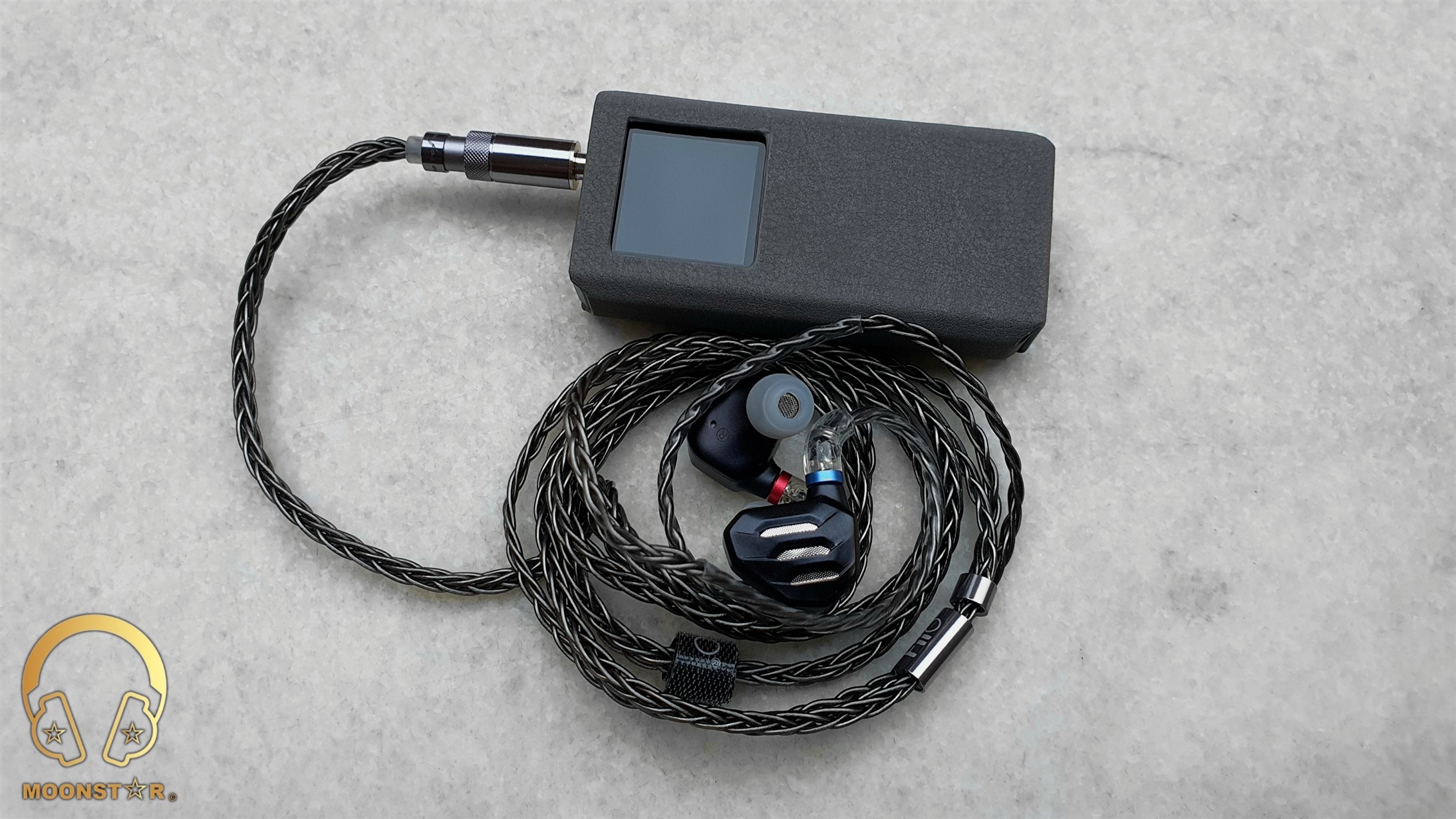
Technical Specifications:
- Driver Configuration : Hybrid Configuration
- Driver type : 1x 13.6mm diameter Dynamic Driver + 4x Balanced Armature Drivers
- Frequency response : 10Hz- 40kHz
- Sensitivity : 104db/mW
- Impedance : 18 Ω
- Plug : Interchangeable Plugs (3.5mm SE and 4.4mm Balanced)
- Connector Type : MMCX Connector
- Cord Length : 120cm
- Wearing Type : Over the Ear

Complete List of Features:
- 1x Dynamic Driver + 4x Balanced Armature Drivers Hybrid Driver Setup
- 13.6mm diameter DLC Diaphragm Dynamic Driver
- 4 custom Knowles BA
- Sci-Fi Armor design
- Unique notch filter
- 2nd-gen semi-open design
- 8 strands totalling 152 silver-plated monocrystalline copper wires
- Twist-lock swappable audio plugs
- New FiiO silicone ear tips HS18
- Patented S.TURBO acoustic design
- 3 tuning filters
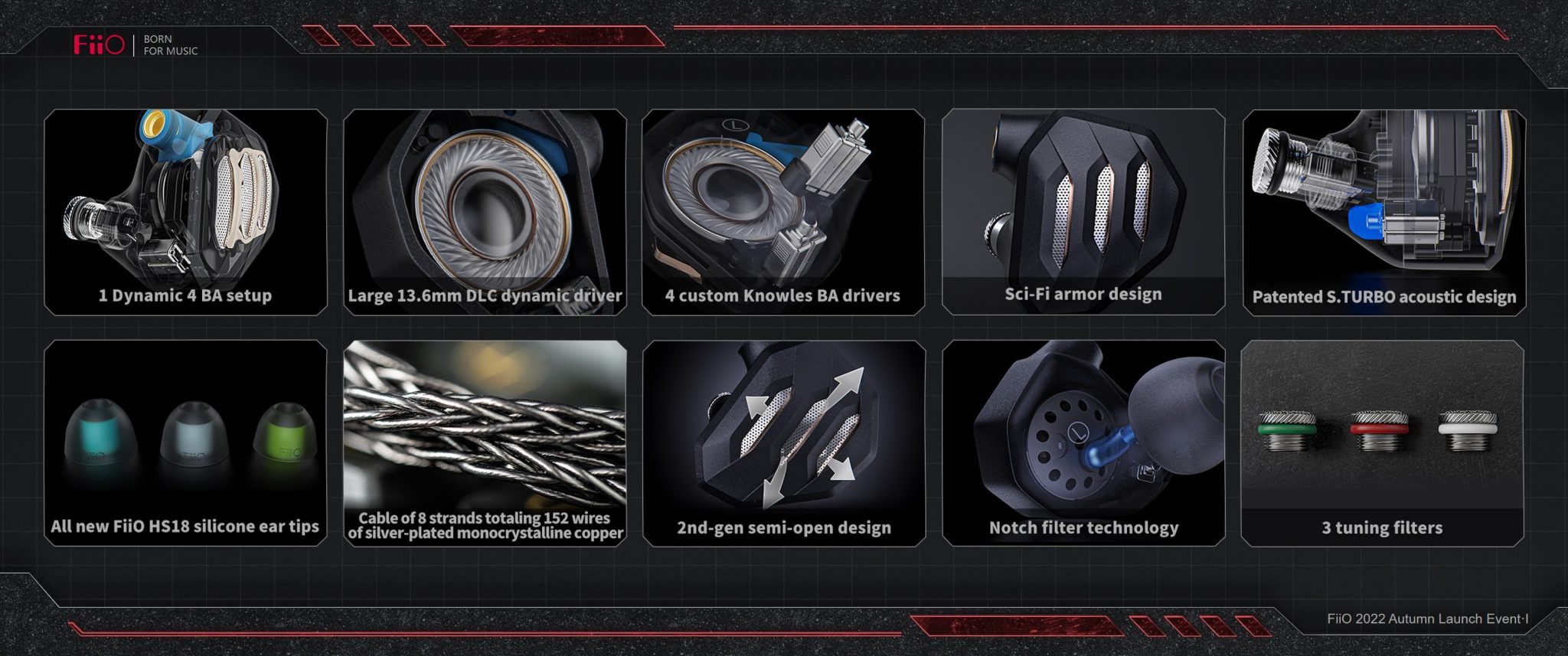
Sources used for this review:
- IEM : FiiO FH7S, Oriveti OH500, Dunu DK3001 Pro
- DAP/DAC/AMP : FiiO M11 Pro, FiiO BTR7
Albums & tracks used for this review:
- Adele – My Little Love (Spotify)
- Randy Crawford – On Day I Will Fly Away (Flac 16bit/44.1kHz)
- Hayley Westenra – Odyssey Album (Dezzer HiFi)
- Dionne Warwick – Walk On By (Flac 16bit/44.1kHz)
- Sarah McLachlan – Angel (Flac 24bit/48kHz)
- Sertap Erener – Aşk (Flac 16bit/44.1kHz)
- Edith Piaf – Non Je Ne Regrette Rien (Flac 16bit/44.1kHz)
- Diana Krall – So Wonderful (DSF)
- Aretha Franklin – I Say A Little Payer (Flac 24bit/96kHz)
- Sonya Yoncheva – (Giuseppe Verdi) II Trovatore, ActI (Flac 24bit/96kHz)
- George Michael – Don’t Let the Sun Go Down on Me (Flac 24bit/192kHz)
- David Bowie – Heroes (Flac 24bit/192kHz)
- Elton John – Rocket Man ((Flac 24bit/96kHz)
- Barry White – Just The Way You Are (Flac 24bit/48kHz)
- Isaac Hayes – Walk On By (Flac 16bit/44.1kHz)
- Sting – Englishman in New York – (Flac 24bit/48kHz)
- Eric Clapton – Wonderful Tonight (Flac 24bit/96kHz)
- B. King – Riding With The King (Tidal Hi-Fi)
- Dave Gahan – Kingdom (Tidal Hi-Fi)
- U2 – Sunday Bloody Sunday (Flac 16bit/44.1kHz)
- Bro Safari, UFO! – Drama (Deezer HiFi)
- Armin Van Buuren – Vini Vici (Flac 16bit/44.1kHz)
- Daft Punk – Doin’ it Right (Flac 24bit/96kHz)
- Jo Blankenburg – Meraki (Spotify)
- Lorde – Royals (Flac 24bit/48kHz)
- Massive Attack – Angel (Flac 24bit/48kHz)
- Toutant – Rebirth (Deezer HiFi)
- Gogo Penguin – Raven (Flac 24bit/192kHz)
- Gogo Penguin – Murmuration (Flac 24bit/192kHz)
- Portishead – It Could Be Sweet (Spotify)
- Max Richter – On the Nature of Daylight (Flac 24bit/96kHz)
- Charly Antolini – Duwadjuwandadu (Flac 24bit/192kHz)
- Ferit Odman – Look, Stop & Listen (Flac 24bit/192kHz)
- Chopin – Nocturn No. 20 In C-Sharp Minor (Flac 16bit/44.1kHz)
- Fazıl Say – Nazım Oratoryosu (Live) (Flac 16bit/44.1kHz)
- Vivaldi – Le QuarttroStagioni “The Four Season” (Deezer HiFi)
- Otto Liebert& Luna Negra – The River (Flac 24bit/192kHz)
- Lunatic Soul – The Passage (Flac 16bit/44.1kHz)
- Deftones – My Own Summer (Shove it) (Flac 16bit/44.1kHz)
- Metallica – Sad but True (Flac 24bit/96kHz)
- Opeth – Windowpane (Flac 16bit/44.1kHz)
- Megadeth – Sweating Bullets (Tidal Hi-Fi)
- Rush’s – Leave That Thing Alone (Flac 16bit/44.1kHz)
- Slayer – Angel of Death (Spotify)
- Liquid Tension Experiment 2 – Acid Rain (Spotify)
- Yosi Horikawa – Bubbles (Spotify)

The Sound:
The FH7S is the successor of the original FH7 that came also with a 4BA+1DD Hybrid Driver configuration. The new hybrid IEM has a moderately warm tonality that is not overdone, while instruments are reproduced with a relative natural timbre. The general sound profile of the FH7s shows a nice fusion of dynamism, musicality and resolution across the sound spectrum. The lows are full bodied, impactful yet petty controlled. The midrange on the other hand sounds mildly warm, transparent and clear, while the treble range is shown with a decent level of brilliance, airiness and extension.
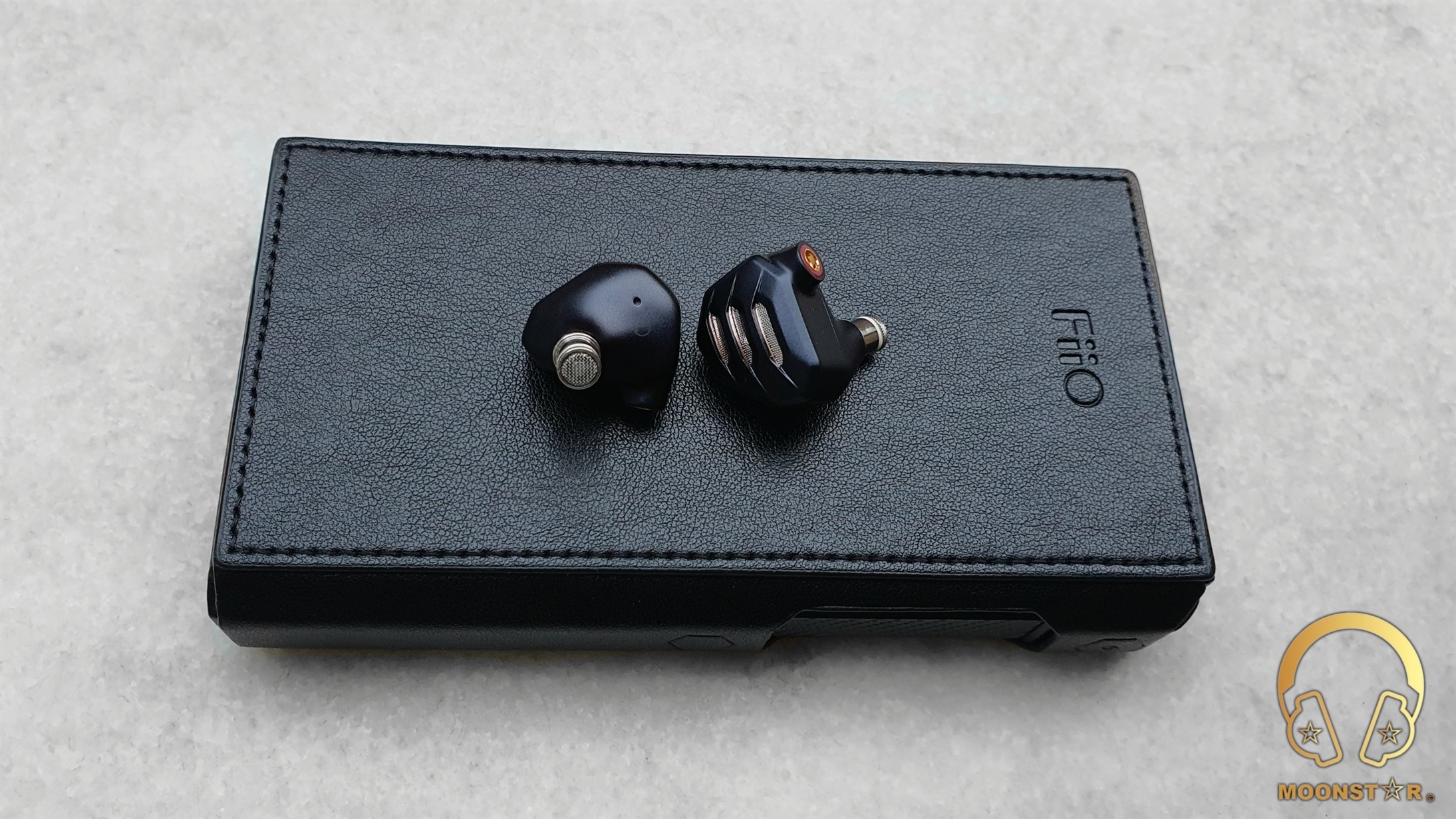
Tuning Filters Explained:
- White Filter:
- Red Filter:
- Green Filter:
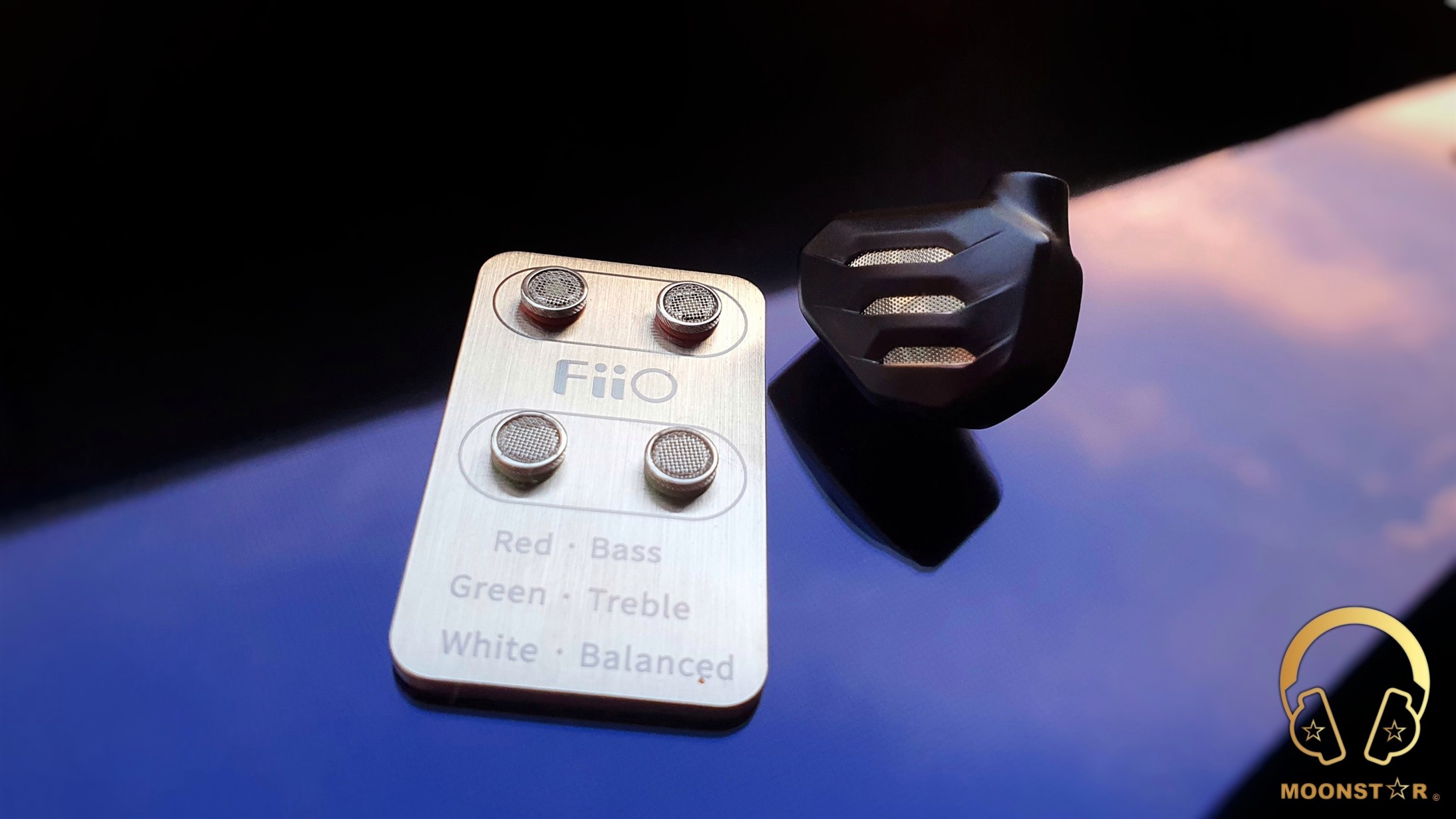
The FiiO FH7s review has been written after a burn-in period of about 70 Hours. I have used the stock 8-Core Silver-Plate Monocrystalline cable and the HS18 Silicone Ear Tips in combination with the White Sound Tuning Filter that are included to the package. My sound impressions below are mainly based on auditions over the FiiO M11 Plus and FiiO BTR7.
Bass:
The lows of the FiiO FH7S are produced by the 13.6mm diameter large DLC (Diamond Like Carbon) Diaphragm Dynamic Driver, which doesn’t shows any driver-flex issues thanks to the semi-open acoustic design. The focal point of the lows is the midbass region that sounds slightly more pronounced compared to the subbass area. The subbass performance of the FH7S is quite decent that is powerful, deep and well extended. The subbass rumble that is an important part in tracks such as Lorde’s “Royals”, Massive Attack’s “Angle” or Armin Van Buuren’s “Vini Vici” sound quite exiting.
The midbass region, which is slightly more highlighted in the lower register, sounds pretty strong and impactful. Instruments such like cross and kick drums for example are reproduced with a good sense of body, speed and control. Songs with complex bass passages such like Gogo Penguin’s “Raven” and Charly Antolini’s “Duwadjuwandadu” are represented in a pretty fast and controlled manner. What I do really like about the general bass character of the FA7S is the softness and naturalness of the bass notes that are produced by the relative large 13.6mm dia. dynamic driver.
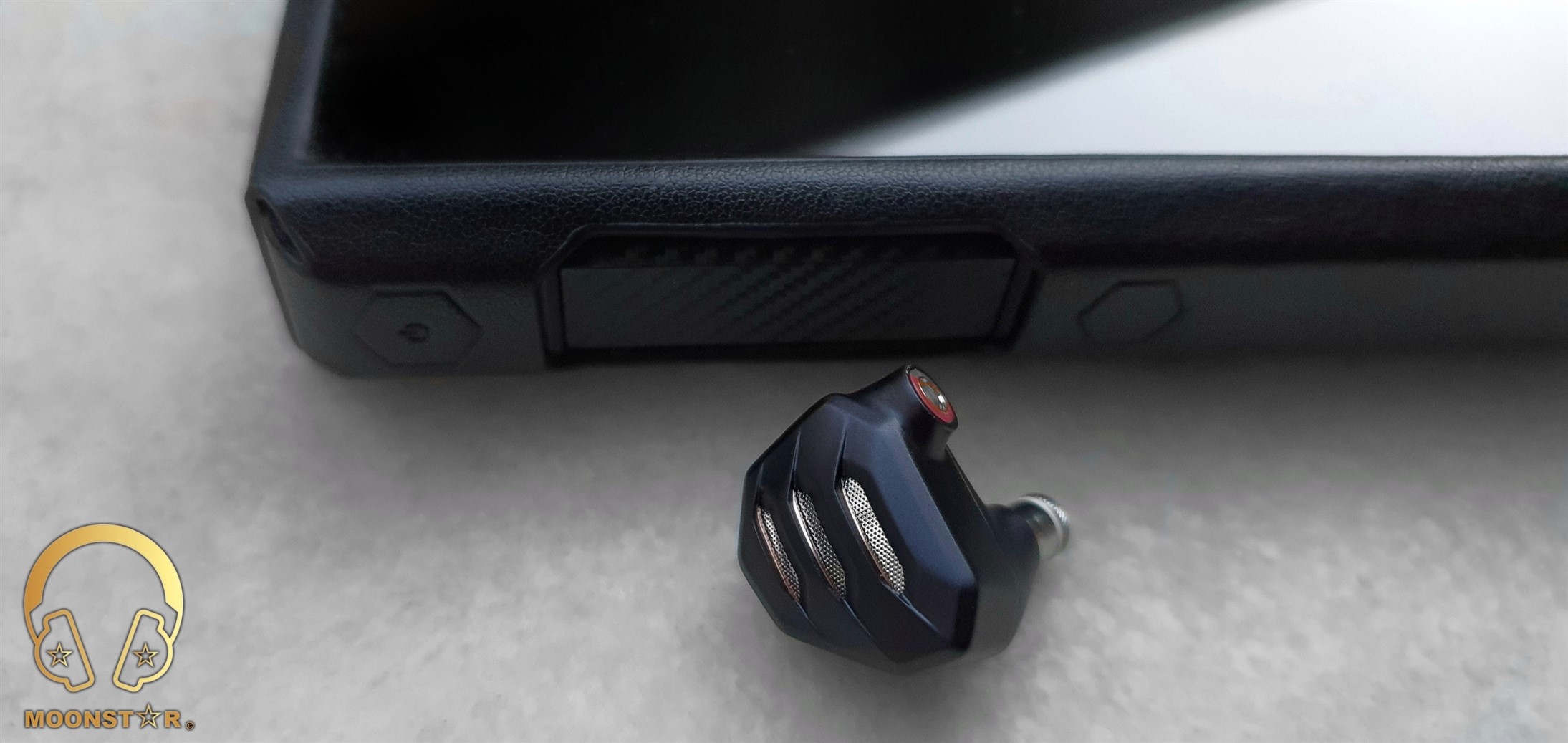
Midrange:
The FiiO FH7S offers a pretty transparent and airy overall midrange presentation, which shows an above average clarity and resolution. The midrange has a relative smooth character while the tonality mildly warm that is created in the lower midrange area.
The FiiO FH7S has just the right level of lower midrange depth and body, when I do listen to vocals like Barry White, Dave Gahan or David Bowie. The clarity and resolution is on a sufficient level that meets my expectation form an In-Ear Monitor at this price level. Instruments on the other hand are reproduced in a quite musical, clear and detailed manner. Strings for example like violas, acoustic guitars or cellos do have just the right grade of transparency, depth and fullness for a musical presentation.
The upper midrange stands out with its relative smooth and nicely controlled overall tuning that is able to create a good sense of clarity and extension when I do listen to both vocals and instruments. Female vocals from Adel and Diana Krall up to Sarah McLachlan are presented in a pretty lively, intimate and detailed manner. Instruments on the other hand do sound slightly softer & smoother than normal, while the level of clarity and resolution that is created in the upper midrange is on a decent level. Pianos, side flutes or violins do sound pretty vivid and detailed, and are shown with a good sense of extension, without to show any remarkable negative conditions like sharpness.
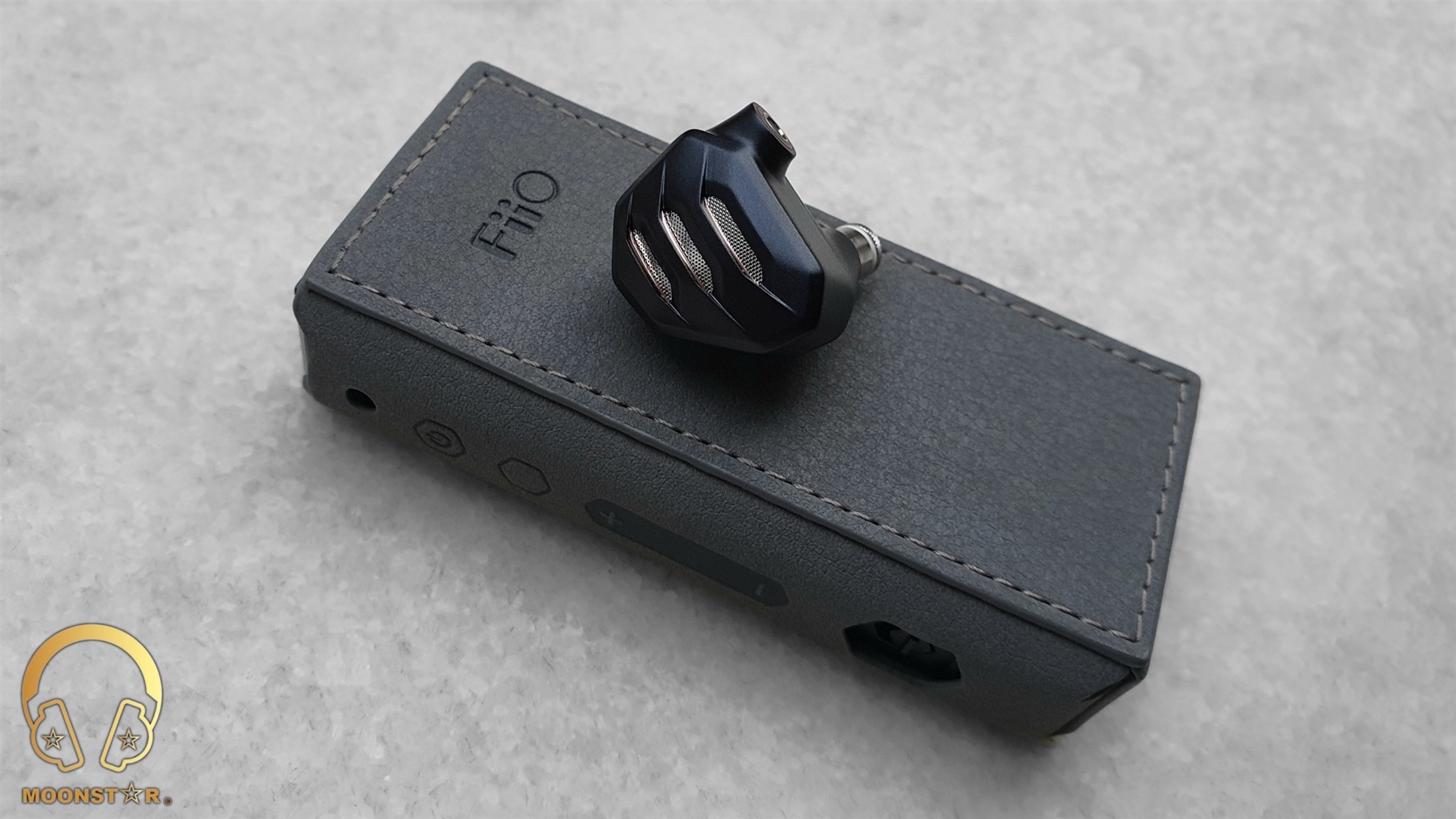
Treble:
The treble range of the FiiO FH7S can be described as crisp yet controlled. This area sounds moderately bright, fatigue free and detailed from the brilliance up to the presence. The transitions from the upper midrange towards the lower treble area are highly controlled in moments when instruments such like an electro guitar is play with high level of distortion. The lower treble area is moderately highlighted, which shows a smooth and highly controlled character. Instruments like hi-hats, snare drums or violins are reproduced with an efficient sense of clarity and definition, while the extension is slightly short.
This upper treble region shows is slightly more pronounced and detailed compared to the lower treble region. This area shows an audible peak around the 7 kHz region, which is a popular adjustment these days in order to add the overall treble presentation airiness and sparkle. Percussions like snare drums and cymbals or to brass instruments like trumpets are reproduced with authority and dynamism, without to show any negative conditions such like over-sharpness. Here is a controlled roll-off right after the 8 – 9 kHz region that was quite audible even with the Green Treble filter, which offers a slightly better grade of extension compared to the White (Balanced) and Red (Bass) filters.

Soundstage & Imaging:
The FiiO FH7S offers an excellent performance in terms of separation and placement of both instruments and vocals, especially compared to similar priced IEM’s. The Semi Open-Back design is able to create a pretty spacious and airy soundstage atmosphere, which shows a good sense of depth and wideness.
Some Comparisons:
FiiO FH7S versus Oriveti OH500:
The Oriveti OH500 is another Hybrid IEM with a 4BA+1DD driver configuration that stands out with its entertaining bass performance, which shows a relative warm sound signature.
The Oriveti OH500 shows a warmer tonality and fuller overall sound profile with focal point in the lows and lower midrange area. The FiiO FH7S on the other hand has a more versatile tuning that is more balanced in direct comparison. The subbass region of the OH500 shows more depth, rumble and has a sense of extension. However, the FH7S is superior when it comes to the decay, clarity and resolution in this area that the OH500 is missing. The midbass region of both IEM’s is pretty close in terms of impact and intensity, while the FH7S has the slightly edge when it comes to the resolution, authority and speed.
The midrange of the Oriveti OH500 shows a warmer tonality and a fuller overall character, with focal point in the lower midrange register. The FiiO FH7S sounds livelier, clear and airy thanks to its semi open-back design general midrange tuning. The lower midrange of the OH500 creates a higher sense of body and depth that is especially audible when I listen to male voices or instruments such like percussions. The FH7S on the other side sounds more transparent and a bit more detailed in this area.
The upper midrange and treble region of the FiiO FH7S is slightly more pronounced and offers a higher grade of airiness and resolution. The FH7S has also the upper hand in the upper midrange and lower treble register, when it comes to the authority, speed and extension that was quite audible when I have listen to soprano voices and to instruments such like cymbals, pianos or violas. The treble range of the Oriveti OH500 sounds a bit muddy and is missing some clarity and definition.
Both IEM’s are pretty successful when it comes to the separation and positioning of instruments and vocals. However, the FiiO FH7S sounds in general more spacious and airy, which creates more ideal conditions for genres like orchestral music. The soundstage of the Oriveti OH500 is a bit narrow and a bit closed in compared to the FiiO FH7S that offers a better level of depth and wideness.
FiiO FH7S versus Dunu DK-3001:
FiiO FH7S and the Dunu DK3001 Pro are Universal IEM’s with a 4BA + 1DD Hybrid driver configuration that are located in a relative small metal housing. Both IEM’s do come with a rich set of accessories and detachable cables with interchangeable headphone plugs.
Both IEM’s area relative close in terms of tonality and do come with fairly similar overall sound tuning. The subbass region of both the FH7S and DK-3001 Pro is pretty similar in terms of depth, intensity and extension, while the FH7S has the slightly edge when it comes to the control and decay in this area. The midbass region of the FiiO FH7S is a bit faster and impactful compared to the DK-3001 Pro, while both IEM’s do offers a pretty close performance when it comes to the clarity, resolution and layering.
The general midrange presentation of the Dunu DK-3001 Pro is slightly more recessed compared to the FiiO FH7S, which sounds more intimate and detailed while listen to both instruments and vocals. The lower midrange of the FH7S is a tad fuller and natural than those of the DK-3001 Pro. When it comes to the upper midrange, I can say that the FH7S has the slightly edge in terms of clarity and resolution in this area.
The FiiO FH7S shows a tad more balanced, smooth and controlled treble tuning, and offers also a higher grade of clarity and definition in the lower treble region. The Dunu DK-3001 Pro on the other hand has the slightly edge when it comes to extension and separation in the upper treble register.
Both In-Ear Monitors are pretty successful when it comes to the separation and positioning of instruments and vocals. However, the FiiO FH7S offers a more open and airy soundstage atmosphere with better sense of depth and wideness thanks to its semi open-back design.
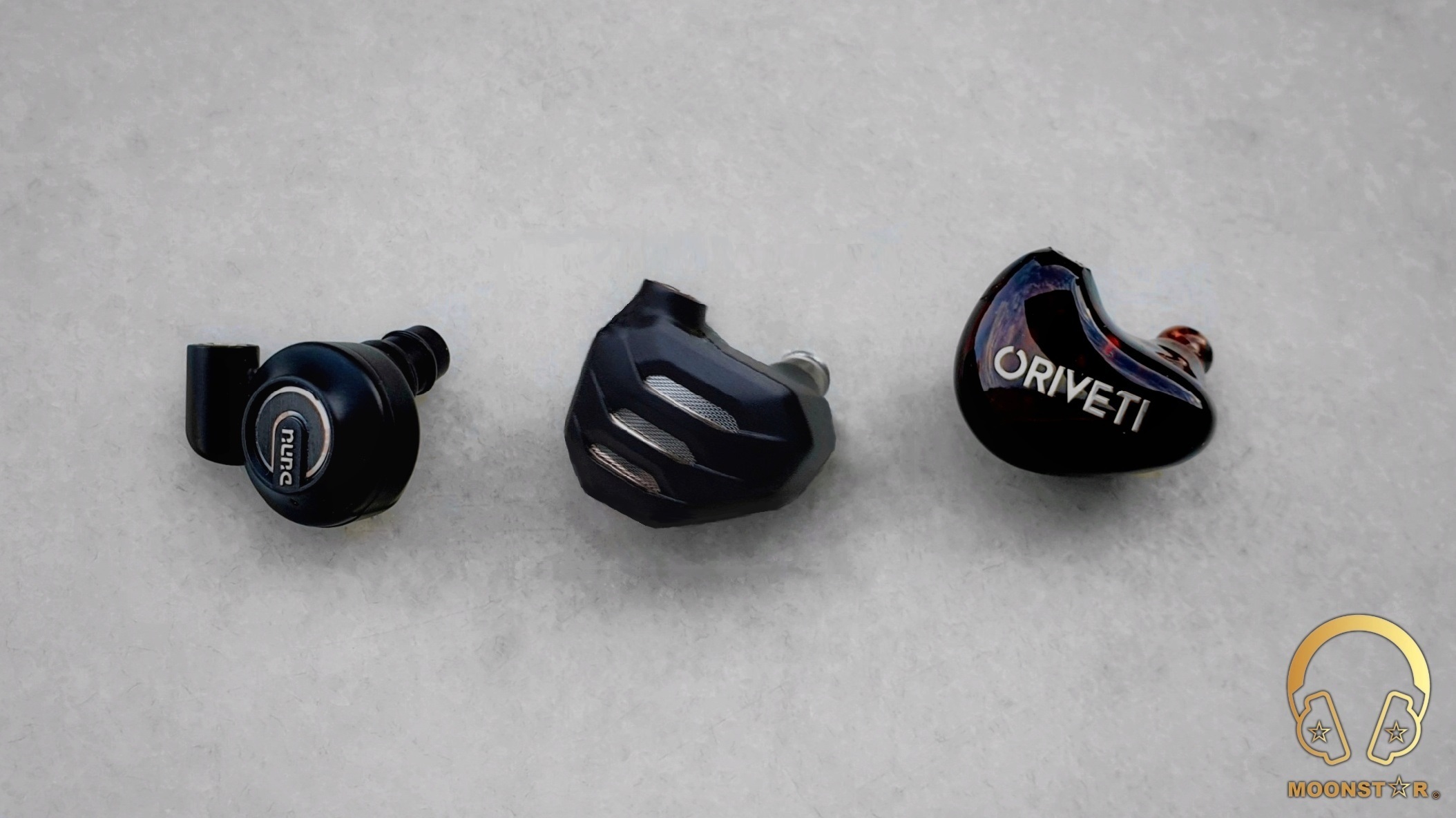
Conclusion:
The FH7S is a carefully tuned Hybrid Driver IEM from FiiO that shows well thought out entertaining sound profile with decent level of fun factor that can fine tuned with the interchangeable sound tuning filter. This sound is packed in to a very esthetic looking monitor shell with a solid build quality and pretty comfortable shape, which makes the FH7S ideal for longer listening periods. Moreover, it comes with a very rich accessory package that includes a good 8core detachable cable with swappable pugs, various ear tips inclusive FiiO’s new HS18 tips, a nice storage case and MMCX Assist tool.
Pros & Cons:
- + Carefully tuned entertaining sound profile with decent level of fun factor
- + Excellent Bass Performance (Depth, Speed and Authority)
- + Transparent & Airy Midrange Presentation
- + Smooth & Controlled Treble Response
- + Spacious Soundstage Atmosphere
- + Design, Comfort & Build Quality
- + Very Rich Set of Accessories (Swappable Plugs & Filters, HS18 Ear Tips, MMCX Assist Tool, etc.)
- – Upper & Lower Treble Extension is a bit short
- – Not for those who prefer a Reference Type of Sound Signature
- – 2.5mm Balanced Plug is missing that was included to previous models (FH5S Pro, FH9)
Thank you for the Read!
Last edited:
Moonstar
100+ Head-Fier
Pros: Solid Sound Performance for an Ultra Potable BT&USB DAC/Amplifier,
Looks Great,
Excellent Built quality,
Comes with a IPS Display,
2x THX AAA-28 Amplifier do offer Plenty of Power,
Support of All Actual Codes,
Come with Tons of Features,
Leather Case is a nice addition
Looks Great,
Excellent Built quality,
Comes with a IPS Display,
2x THX AAA-28 Amplifier do offer Plenty of Power,
Support of All Actual Codes,
Come with Tons of Features,
Leather Case is a nice addition
Cons: A bit larger than the competition,
Navigation is a bit tricky,
UI needs some impovements
Navigation is a bit tricky,
UI needs some impovements
FiiO BTR7 Ultra Portable Bluetooth & USB DAC/AMP Review
Introduction:
The BTR7 is FiiO’s latest flagship All-in One BT & USB DAC Amplifier with MQA support, which offers some impressive hardware features such like Dual ESS9219C DAC Chips, Qualcomm’s latest QCC5124 Bluetooth Chipset with LDAC, aptX HD, aptX LL, aptX, AAC, SBC audio codec support, XMOS XUF208 USB input, THX AAA™ Achromatic Audio Amplifier & Fully Balanced Design and many more that I will now review for you.
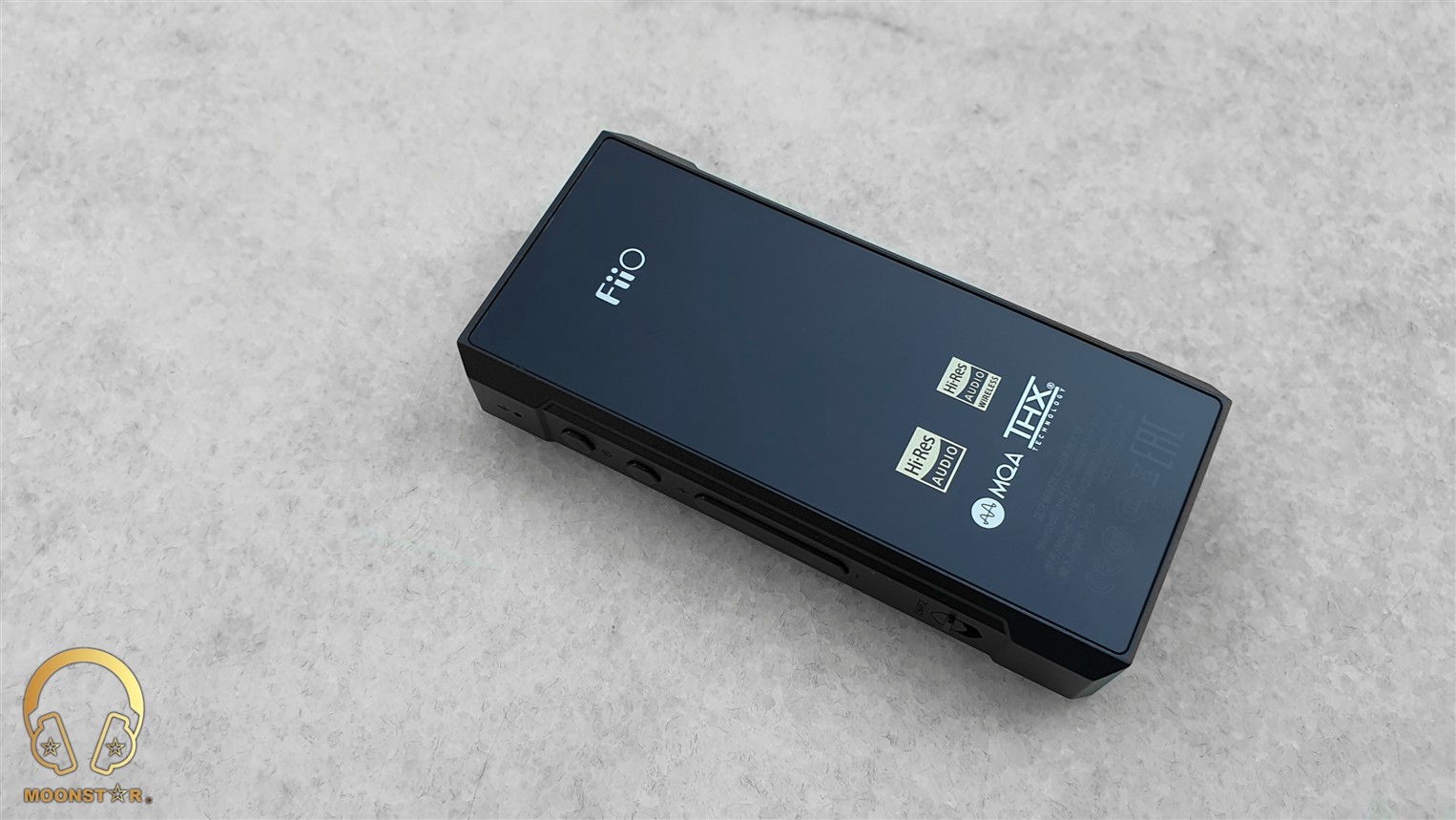
Disclaimer:
I would like to thank FiiO for providing me the FiiO BTR7 as review sample. I am not affiliated with FiiO beyond this review and these words reflect my true and unaltered, opinions about the product.
Price & Availability:
The actual MSRP price for the FiiO BTR7 is 199.99 USD. Detailed information’s can be found under the link below;
Package & Accessories:
The BTR7 came inside a box that is wrapped with a fancy looking black cardboard sleeve that reflects the companies new package design. It shows the illustration of the device and some branding (Hi-Res, LDAC, etc.) on its surface.
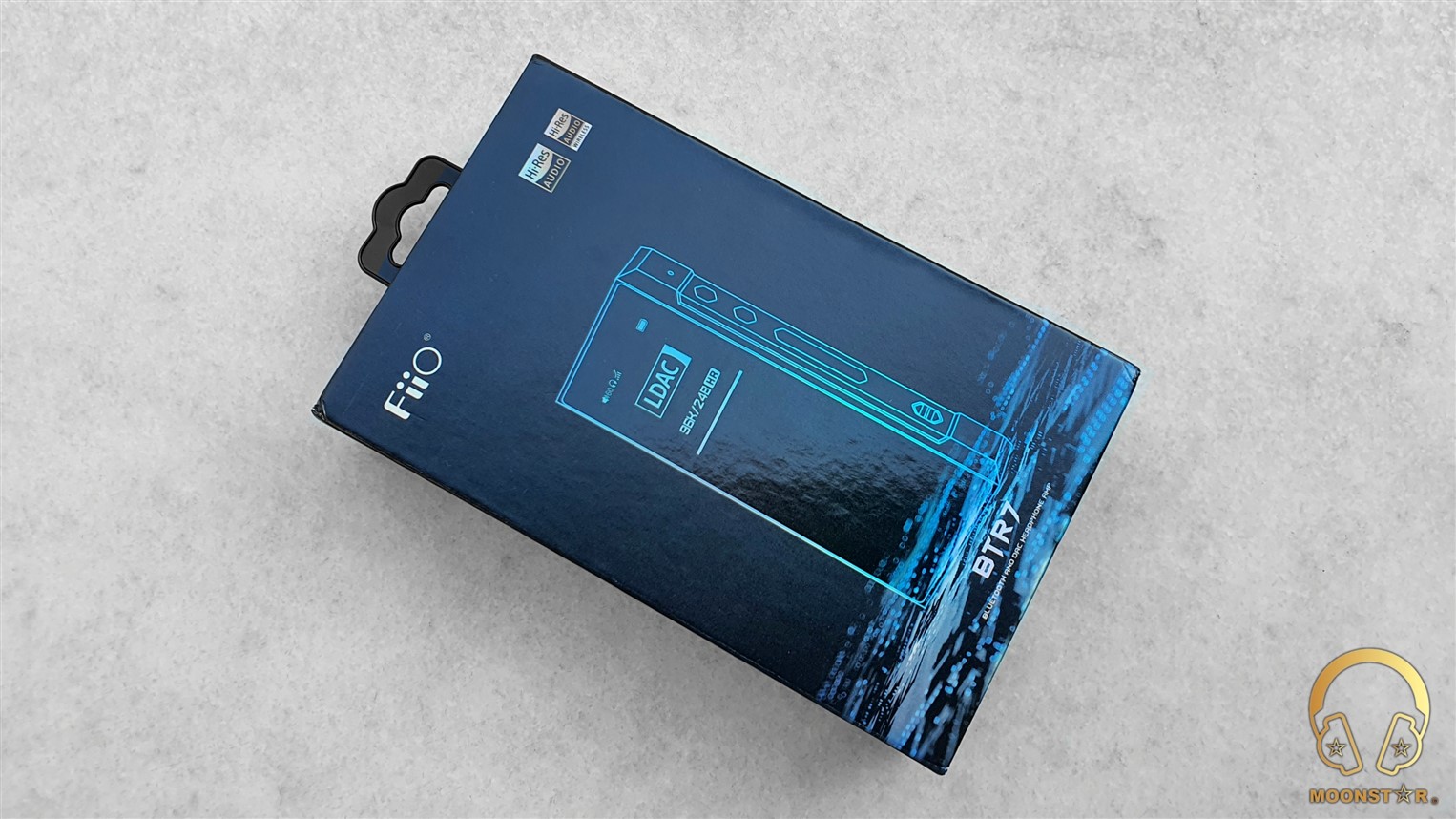
This box is containing the following items/accessories;
- 1 x FiiO BTR7 Portable Bluetooth DAC/Amplifier
- 1 x USB A to USB Type-C cable for data cable and charging
- 1 x USB Type-C to USB Type-C Low Profile Data Cable
- 1 x Leather Case
- 1 x Quick Start Guide
- 1 x Warranty card
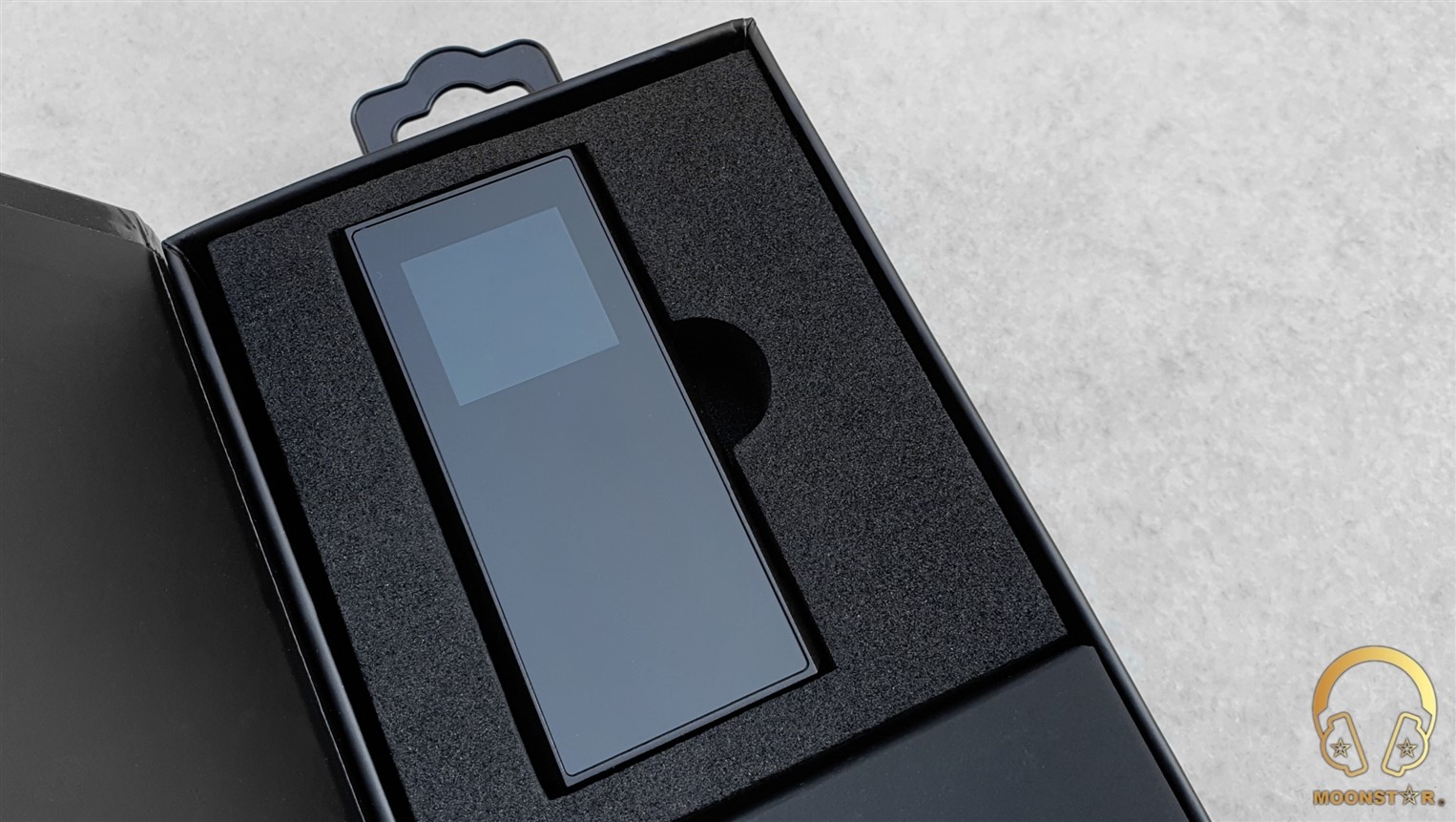
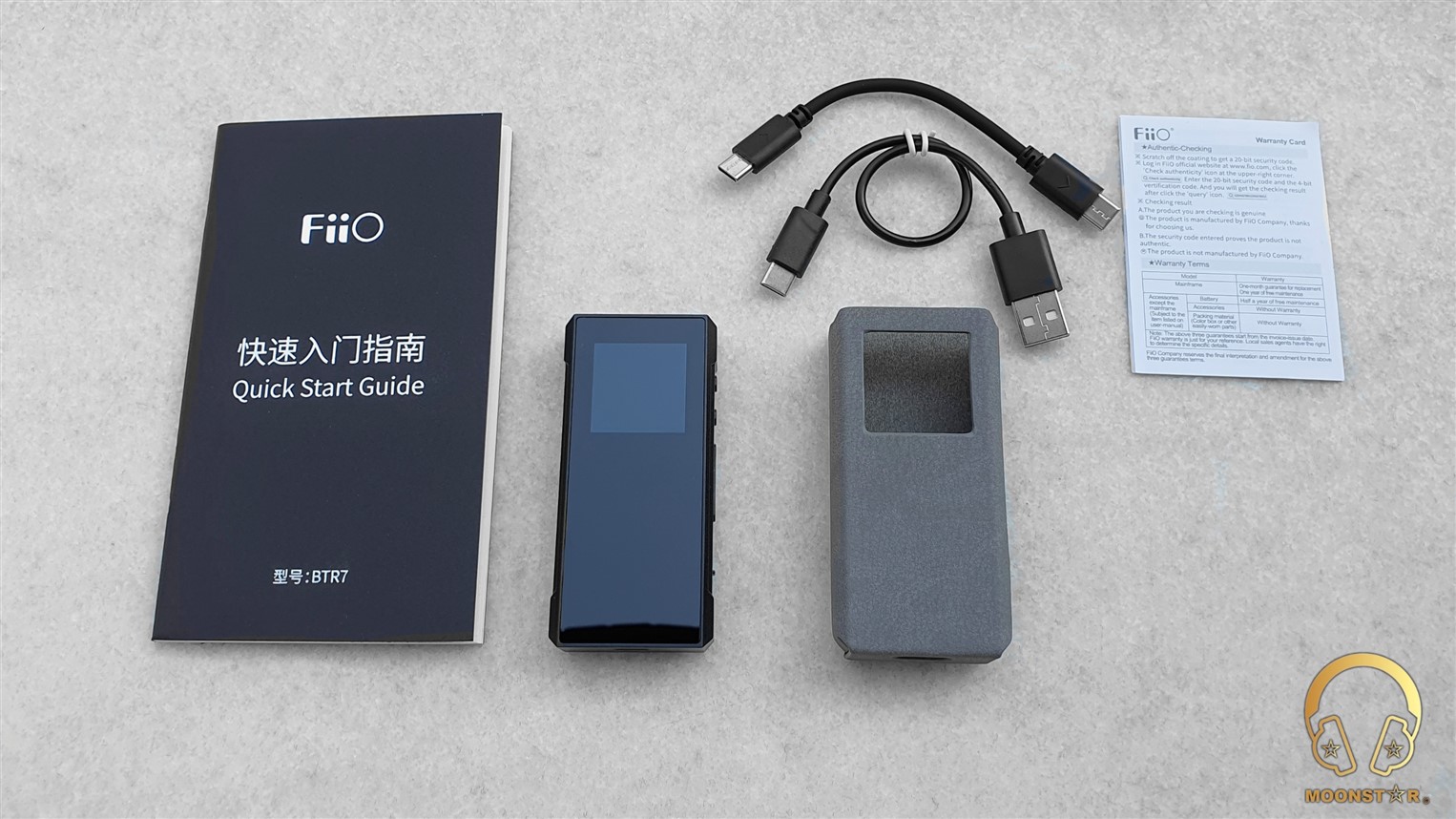
The BTR7 comes with a very well made and design wise very esthetic looking premium leather case in grey color.
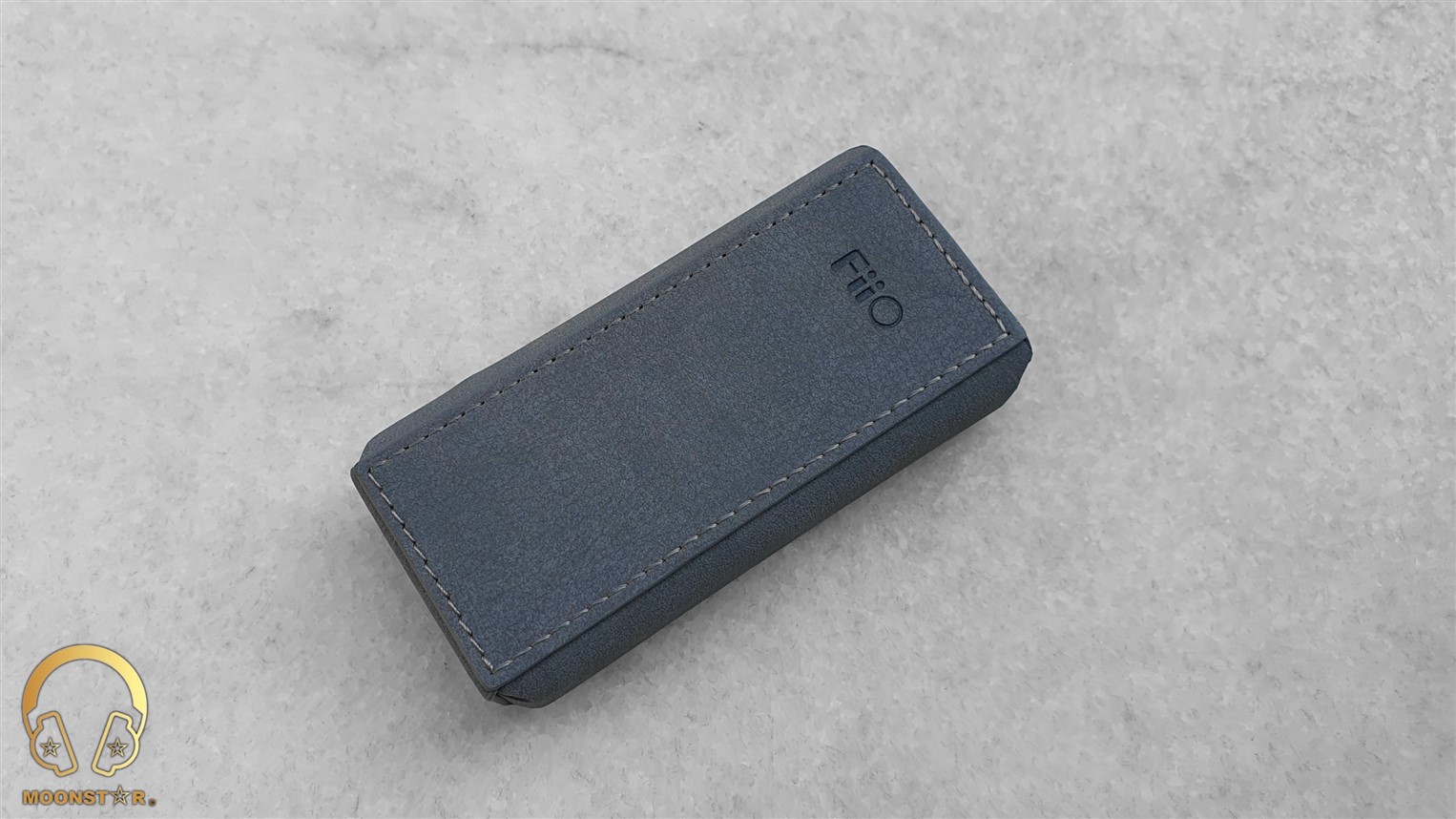
The leather case has an excellent craftsmanship.

The right surface has the button assignment that makes it easier to navigate.
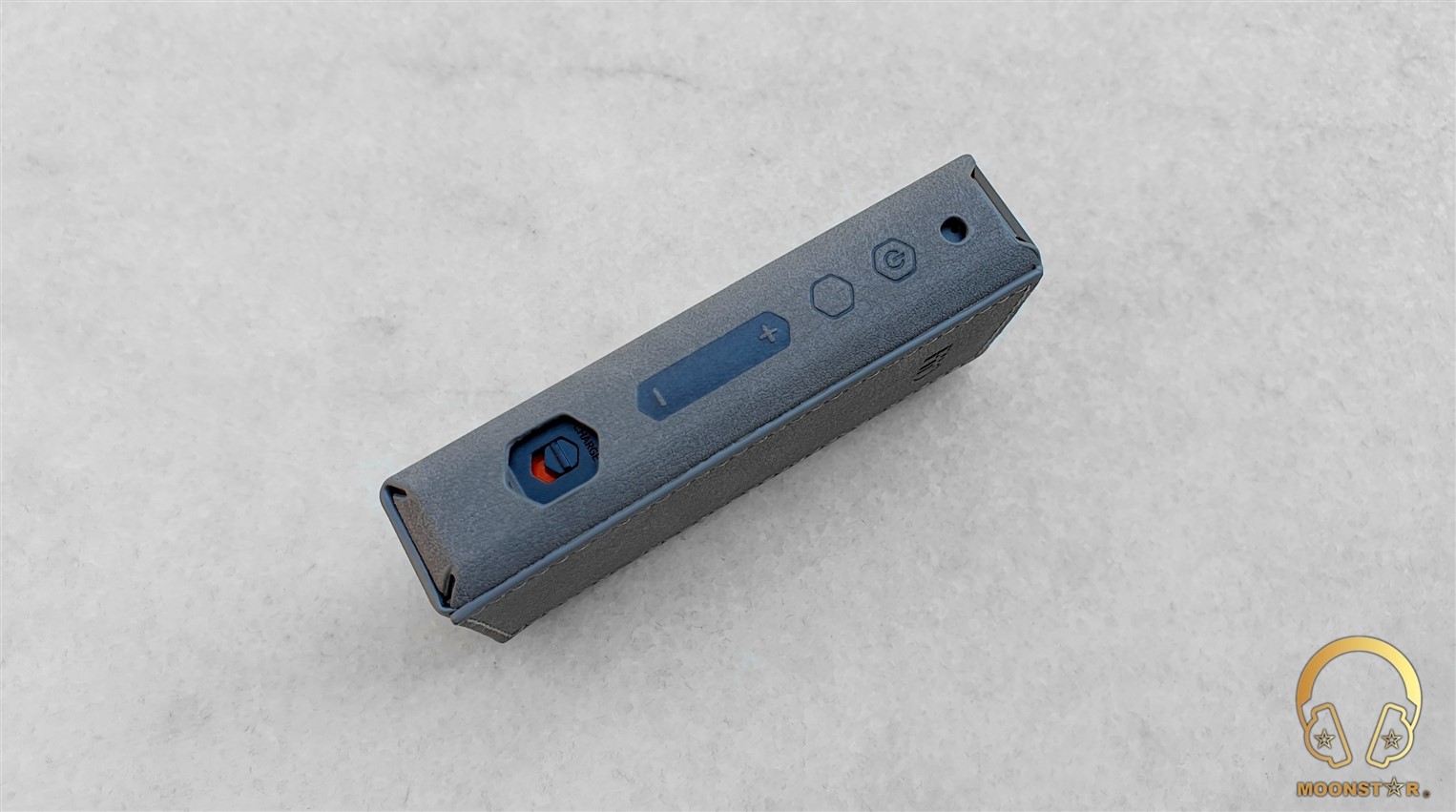
It is great to see that FiiO has added such a nice leather case in to the box of the BTR7.

Design & Build Quality:
The BTR7 is a gorgeous looking little device that reflects FiiO’s new design langue that adopts some pretty similar esthetic elements we have seen on devices like the M11 Plus. The FiiO BTR7 a very portable and pretty lightweight Bluetooth DAC/Amplifier with dimensions of about 39.6x83.6x14.6mm that weights only about 68 grams, ideal to throw it in to your pocket and use it on the go.

The main chassis is made from laminated aluminum alloy material with a black fisnish that reminds me to the look of the M11 Plus that I really like to hold in my hand. The overall build quality of the devices is excellent same like any other FiiO product and fulfills my expectation from a device at this price level.
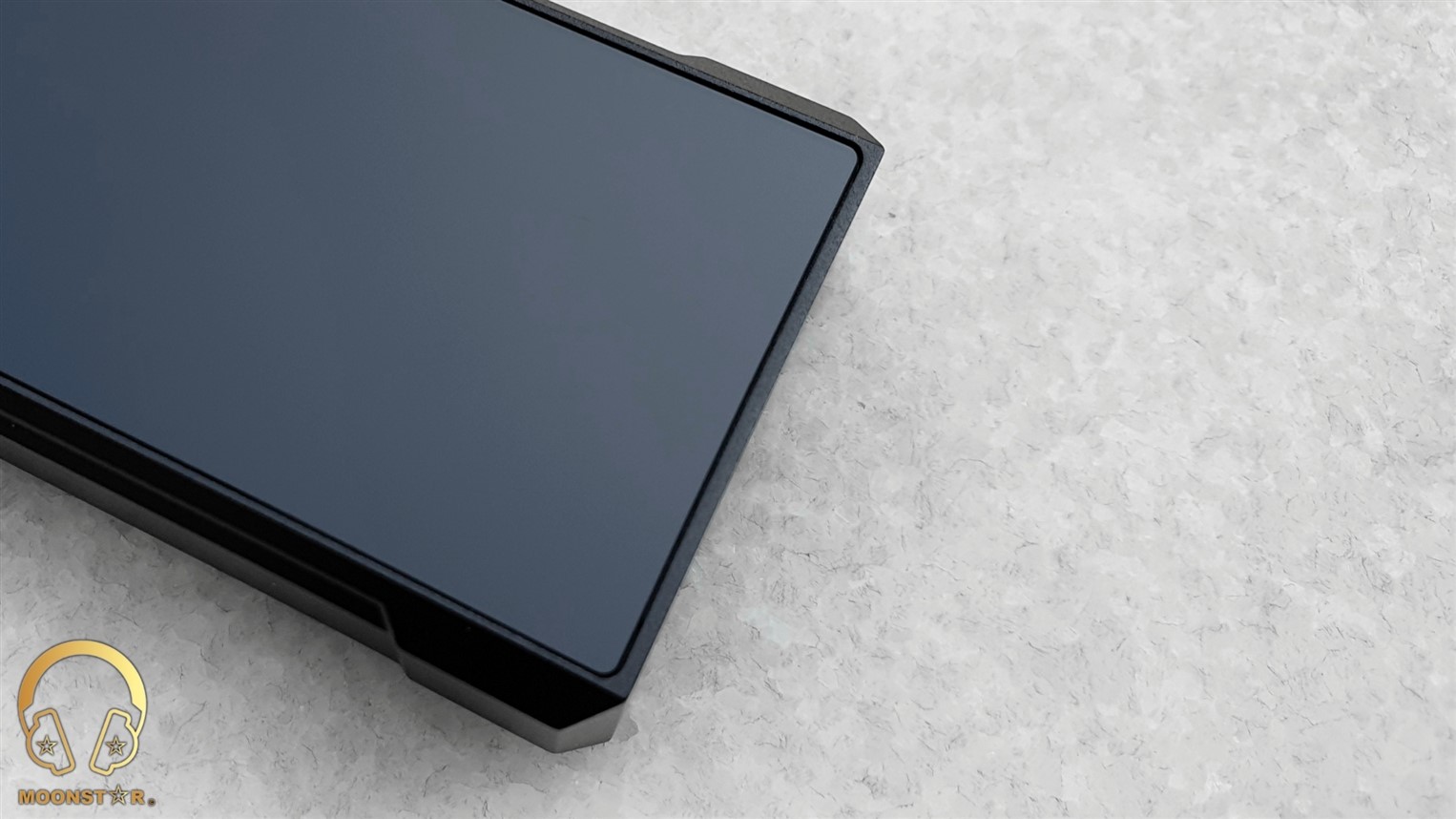
The BTR7 is the first devise of the BTR Series that comes with a color display. The display is located on the top of the front surface that is laminated behind the glass surface that covers the surface of this area.
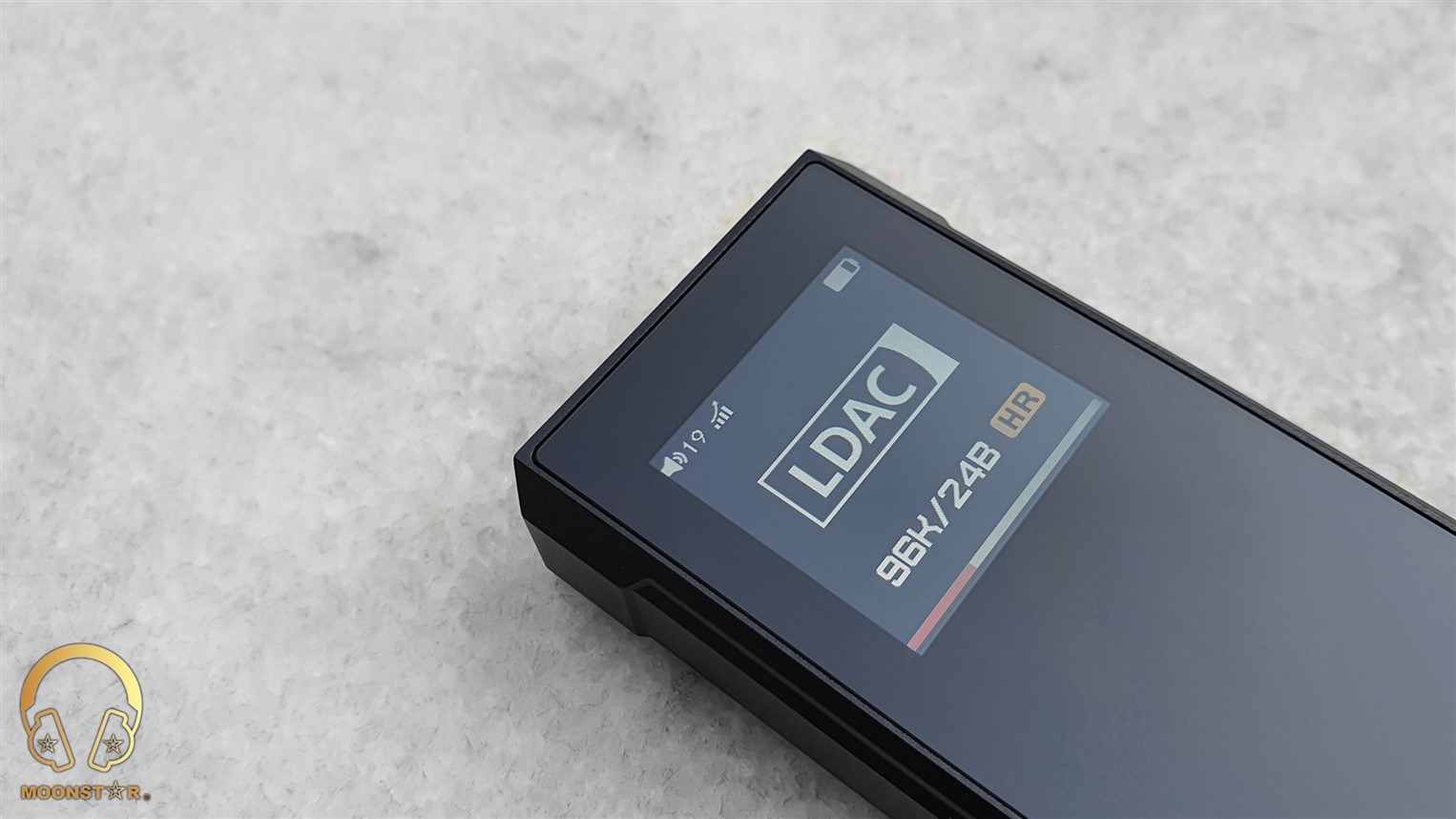
It’s a 1.3 inch IPS color display with a pixel density of 240x240 that is used to display a new UI specially designed for the new BTR7.

The main screen gives information about battery, gain, volume status and many more. Moreover you can see the actual Bluetooth Pairing status, Bluetooth Codec, while there is a submenu that gives you access to the settings (Filters, EQ, Display Brightness, etc.) of the device.
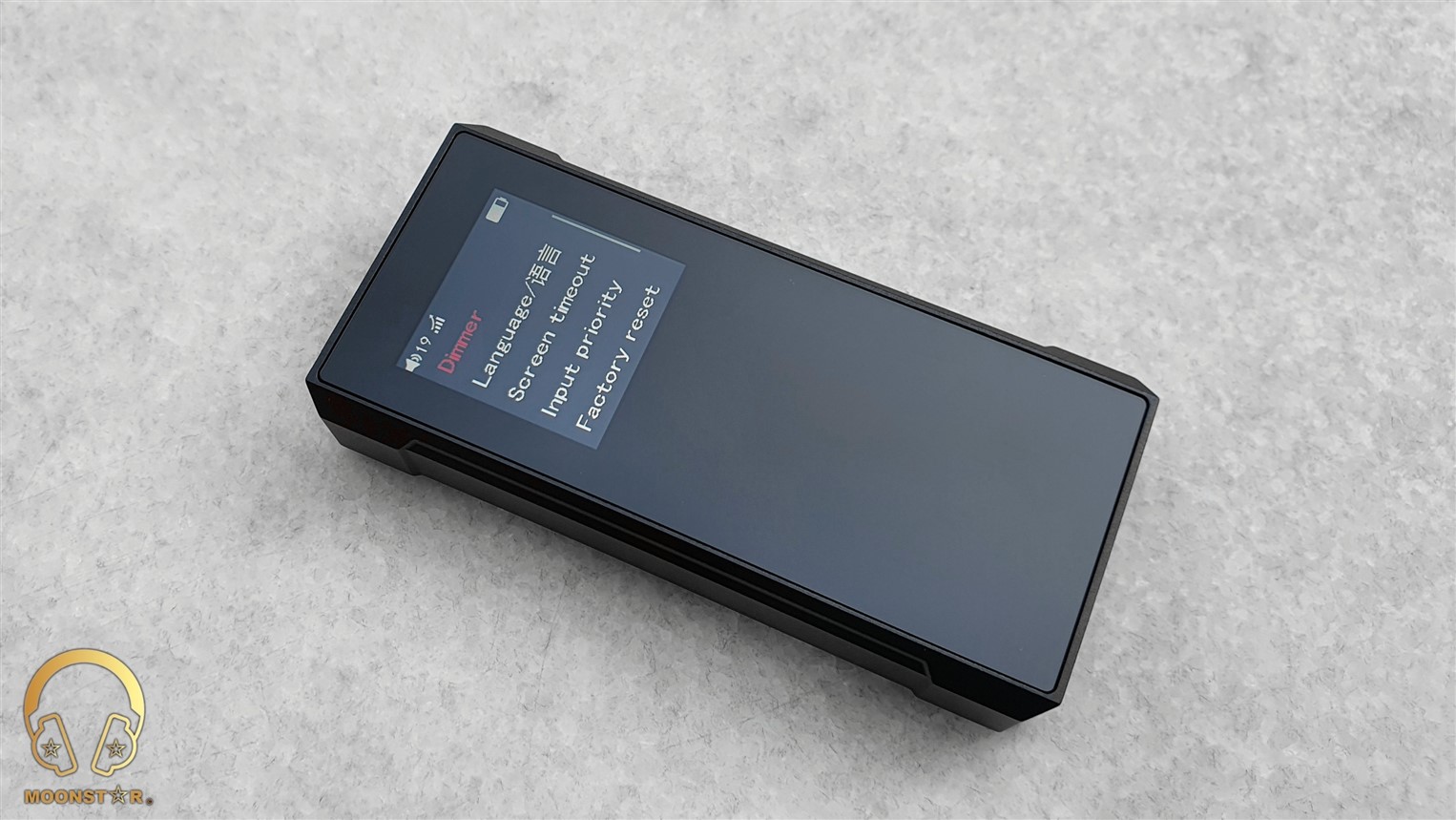

The right surface of the device sports a small opening for the microphone that is dedicated for voice calls, which is a nice addition.
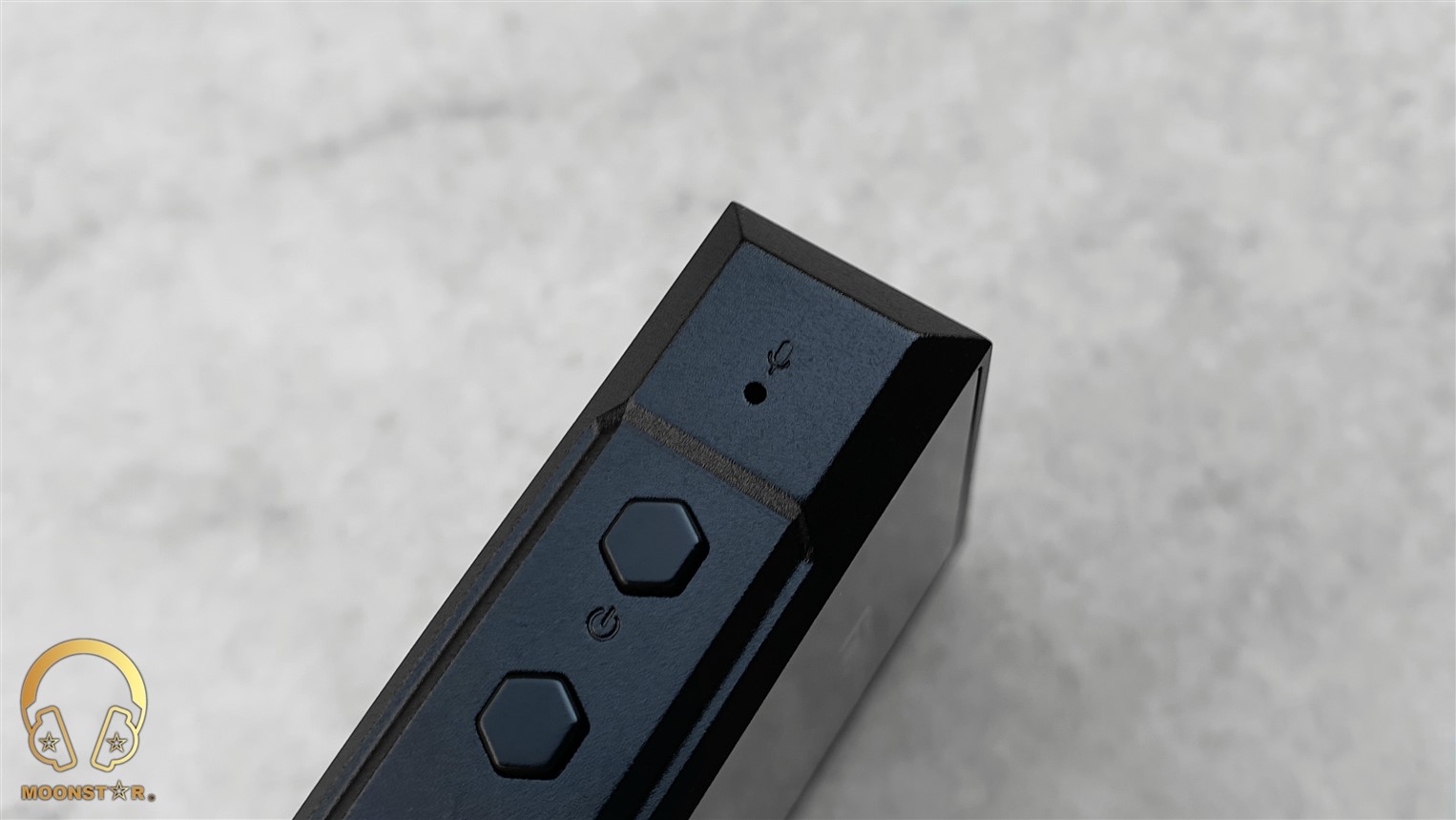
Hear are also the multifunctional power button (power on/off, activate menu, exit menu, etc.), the Play/Pause Button (works also as reconnect, pairing, confirm, voice assistant activation, button), Navigation button (Volume Up/Down, Previous/Next Track) and the charging switch.

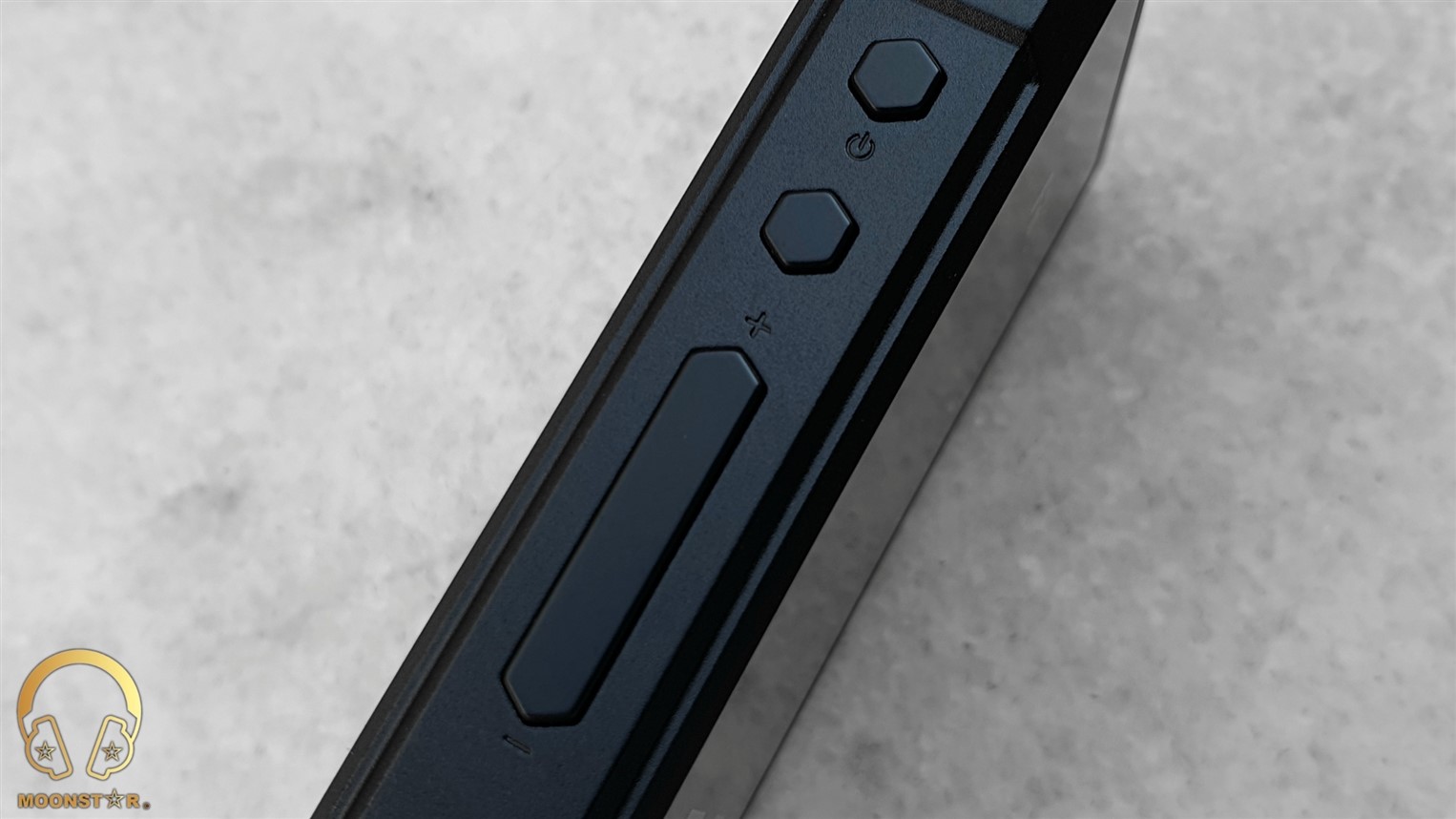
Near the bottom of these surface is the charging switch that has a nice hexagonal design. This switch is a smart solution inn order to easly stop the charging of the device while connected to a USB source, which is good fro the healt of the build in battery.
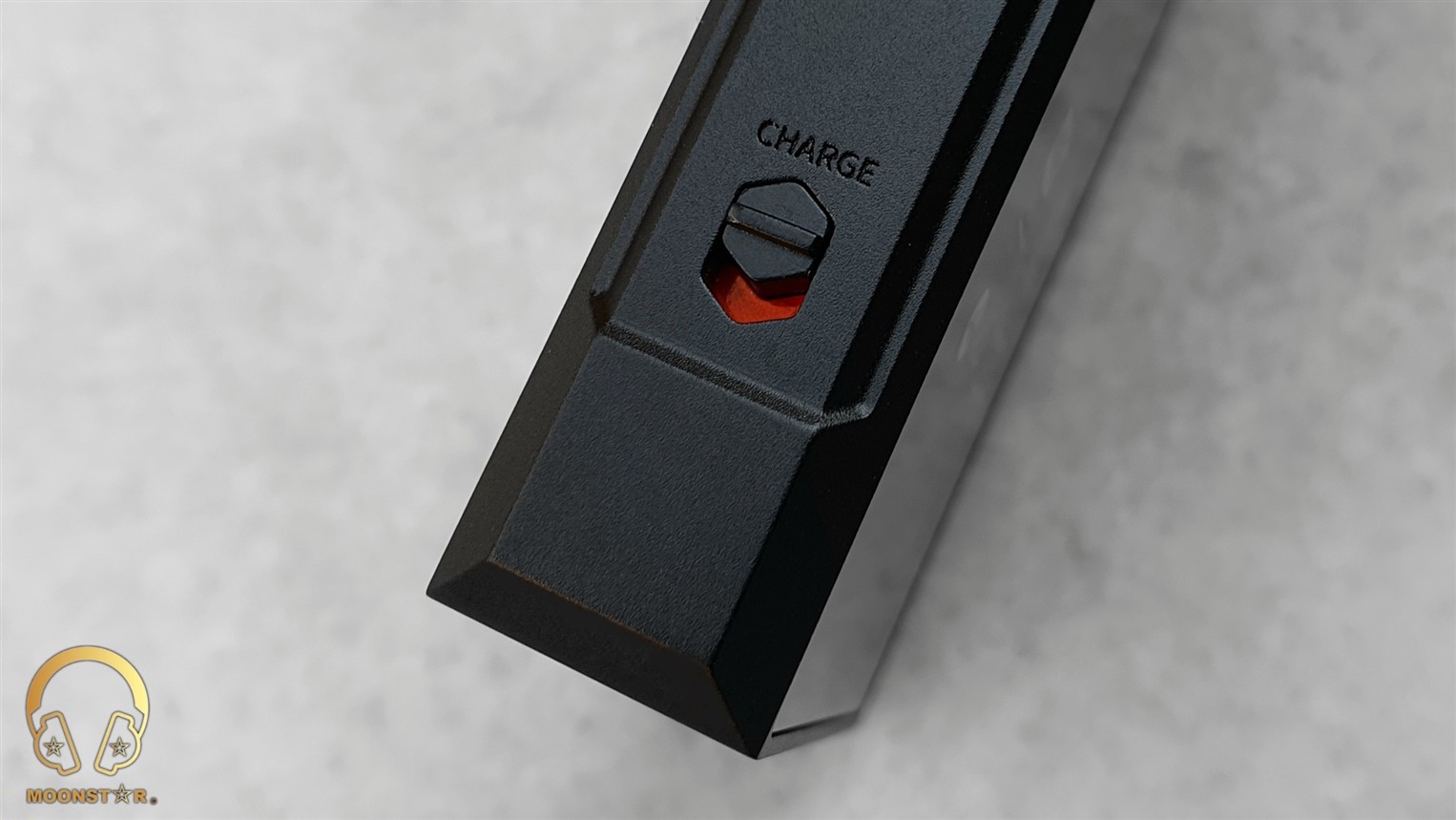
However, the navigation takes a bit of getting used to, if you want to access the submenus, especially when you use it with the leather case.
On the top of the BTR7 are the 4.4mm Balanced and 3.5mm Single Ended analog outputs.
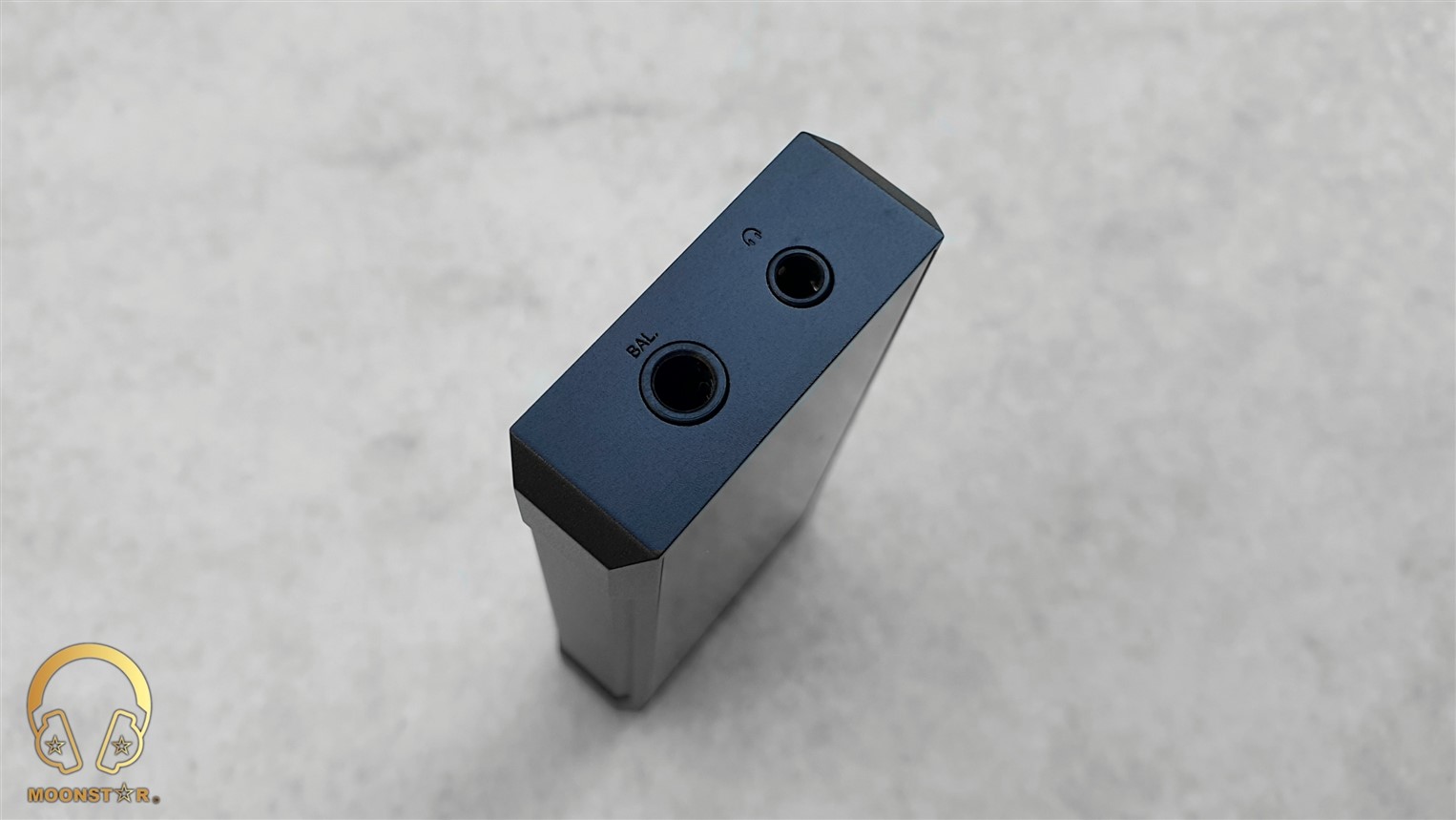
At the bottom of the device is the USB Type-C Data (for USB DAC purposes) and charging port.

At the rear side of the device is a glass surface that sports the FiiO brand logo on the top.
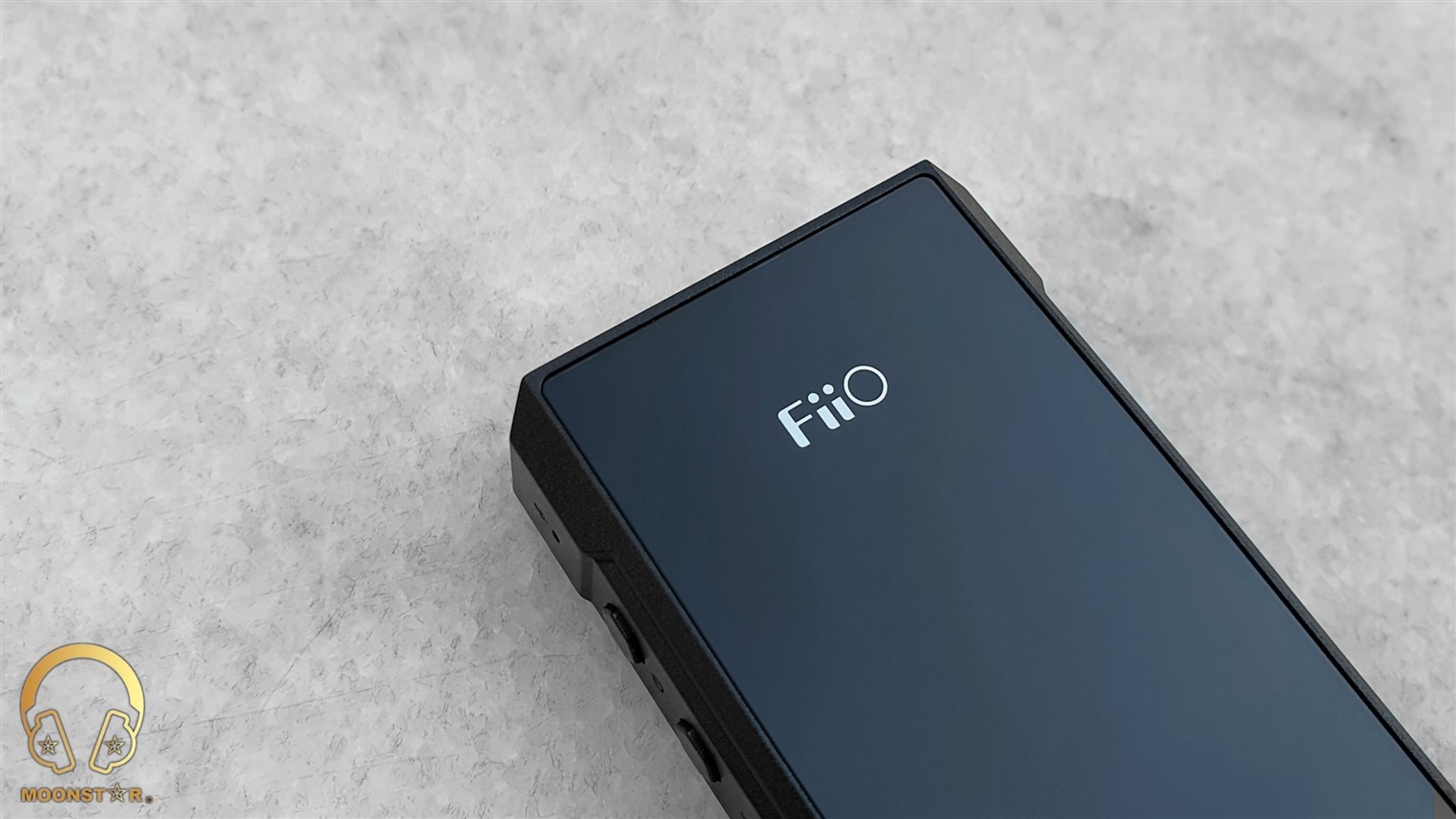
Near the bottom are the Hi-Res Audio/Hi-Res Audio Wireless, MQA, THX logos and some industrial standards and certifications about the device.
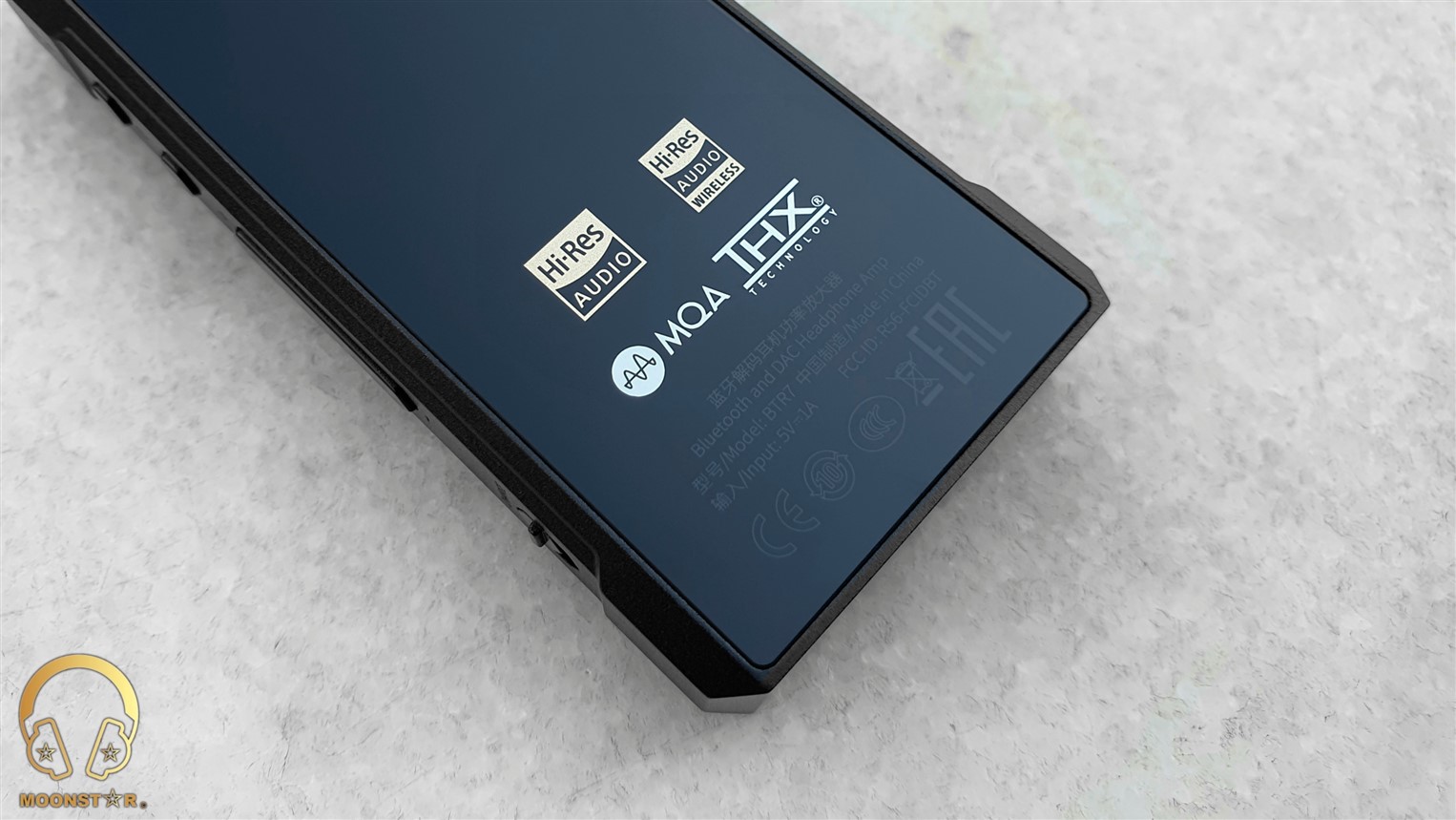
Technical Specifications:
- Model : BTR7
- Display : 1.3 inch IPS Color Display with 240x240 resolution
- Bluetooth Chip : Qualcomm QCC5124
- Bluetooth Version : Bluetooth V5.1
- Supported Codec’s : AAC, SBC, aptX, aptX Low Latency, aptX HD, LDAC and LHDC
- DAC : 2x Sabre ESS9219C
- Frequency Response : 20~20kHz(aptX connection), 20~50kHz(LDAC connection)
- THD+N : PO<0.00055% / Balanced <0.00048%
- SNR : PO≥118dB (32Ω A-weighted), BAL≥115dB (32Ω A-weighted)
- Sampling Rate : 384kHz/32bit (USB DAC)
- USB in DSD Support : 384KHz 32bit/ DSD256
- Output Interface : 3.5mm Single Ended & 4.4mm Balanced
- Output Power PO : 165mW@16 Ohm / 160mW@32 Ohm / 18mW@300 Ohm
- Output Power BAL : 235mW@16 Ohm / 320mW@32 Ohm / 40mW@300 Ohm
- Output Impedance : PO≤1.8Ω(32Ω loaded) /BAL≤2.8Ω(32Ω loaded)
- Amplitude : PO:2.3Vrms / BAL: 3.2Vrms
- Crosstalk PO : ≥ 75dB
- Crosstalk BAL : ≥ 107dB
- Recommended Imp. : 16~100Ω(PO)/ 16~150Ω(BAL)
- Battery : 880mAH
- Battery Life : approx 9hours
- Wired charging : ≤1.5 hours
- Wireless charging : ≤3 hours
- USB Port : USB Type C
- USB Input : Xmos XU208
- Dimensions : about 39.6x83.6x14.6mm
- Weight : about 68 grams
Hardware & Functionality:
The BTR7 is the flagship Portable Bluetooth DAC & Amplifier and USB DAC of the company that offers some pretty interesting hardware features such like 2 x ES9219C DAC Chips, Qualcomm’s latest QCC5124 Bluetooth Chip, 2x THX AAA-28 amplifiers, XMOS XUF208 Chip, 3.5mm Single Ended + 4.4mm Balanced outputs Wireless Charging and many more.

Dual DAC ESS9219C:
The FiiO BTR7 will feature an ESS9219C SABRE DAC chipset with 32-bit “HyperStream” architecture, which delivers a SNR (Signal to Noise Ratio) of 118dB over both the 3.5mm Single Ended and 4.4mm Balanced (TRRRS) outputs.
Bluetooth & USB DAC Functions:
The FiiO BTR7 comes with Qualcomm’s QCC5124 BT SoC that supports the BT 5.1 protocol and formats like SBC, AAC, aptX LL (LL = Low Latency), aptX HD, aptX Adaptive and LDAC.
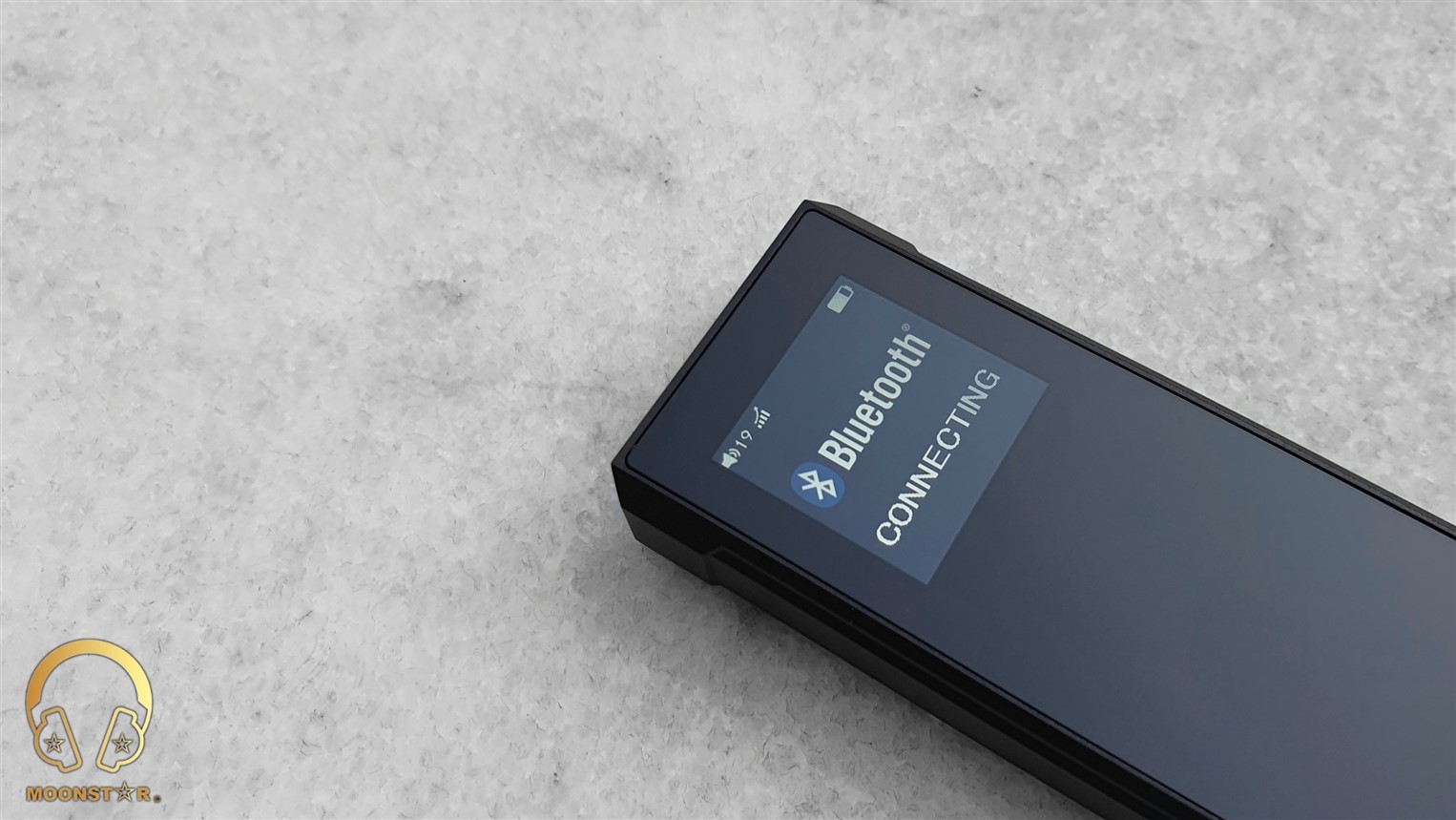
Moreover, the BTR7 is a very capable All-in One device that offers Hi-Res USB Input capabilities, in addition to its lossless Bluetooth format support. The BTR7 will be equipped with a XMOS XUF208 chip that gives it the ability to work as USB DAC/Amplifier, which will support sampling rates up to 32 bit/384kHz and Native DSD256.
Outputs & Amplification (THX AAA):
The FiiO BTR7 offers a fully balanced audio architecture, which means that each channel is driven separately. It will be equipped with both 3.5mm Single Ended (TRS) and 4.4mm Balanced (TRRRS) balanced outputs.
Another remarkable feature is the THX AAA™ "Achromatic Audio Amplifier” design that was used to create a clean and pretty powerful analog output. The 3.5mm Single Ended interface has an output power of 150mW @ 32ohm, while the 4.4mm Balanced port is even more powerful with up to 300mW @32ohm.

Bluetooth Performance & Pairing:
The BTR7 comes with FiiO’s patented metal frame antenna design in order to archive a stable and interference-free Bluetooth connection, which seems to work pretty well!
The Bluetooth operating distance of the FiiO BTR7 up to a distance of 9 - 10 meters in open areas, while latency starts about 6 meters if there is a wall. The BTR7 benefits from its LDAC and aptX LL (LL = Low Latency) codec support, which is a remarkable feature while watching a Video on YouTube, Netfix, Amazon, etc. I didn’t noticed any remarkable lip-sync issue, when paired with my Samsung Galaxy Note 10Plus

The pairing of the FiiO BTR7 with sources like Android/iOS phones, tablets, etc are quite easy. Just power on de device and the device will automatically start in pairing mode.
Battery Life & Wireless Charging:
The FiiO BTR7 comes with a 880mAh built-in battery that offers up to 9 hours of continues audio playback with the AAC over the 3.5mm balanced output. The charging process will take about 1.5 hours over the USB Type-C port.
The battery life of the BTR7 is pretty good, especially for its size and output power. Here are some results and testing conditions.
- ~ 9 hours – AAC Codec, 3.5mm SE Output, Volume %50
- ~ 7 Hours – LDAC, 3.5mm SE Output, Volume %50
- ~ 6 – 6.5 Hours – LDAC, 4.4mm Balanced Output, Volume %40
The BTR7 is the first Bluetooth DAC/Amp that supports wireless charging, which is a great addition. I have used my Samsung Note 10 Plus as Wireless charging source that worked perfectly.
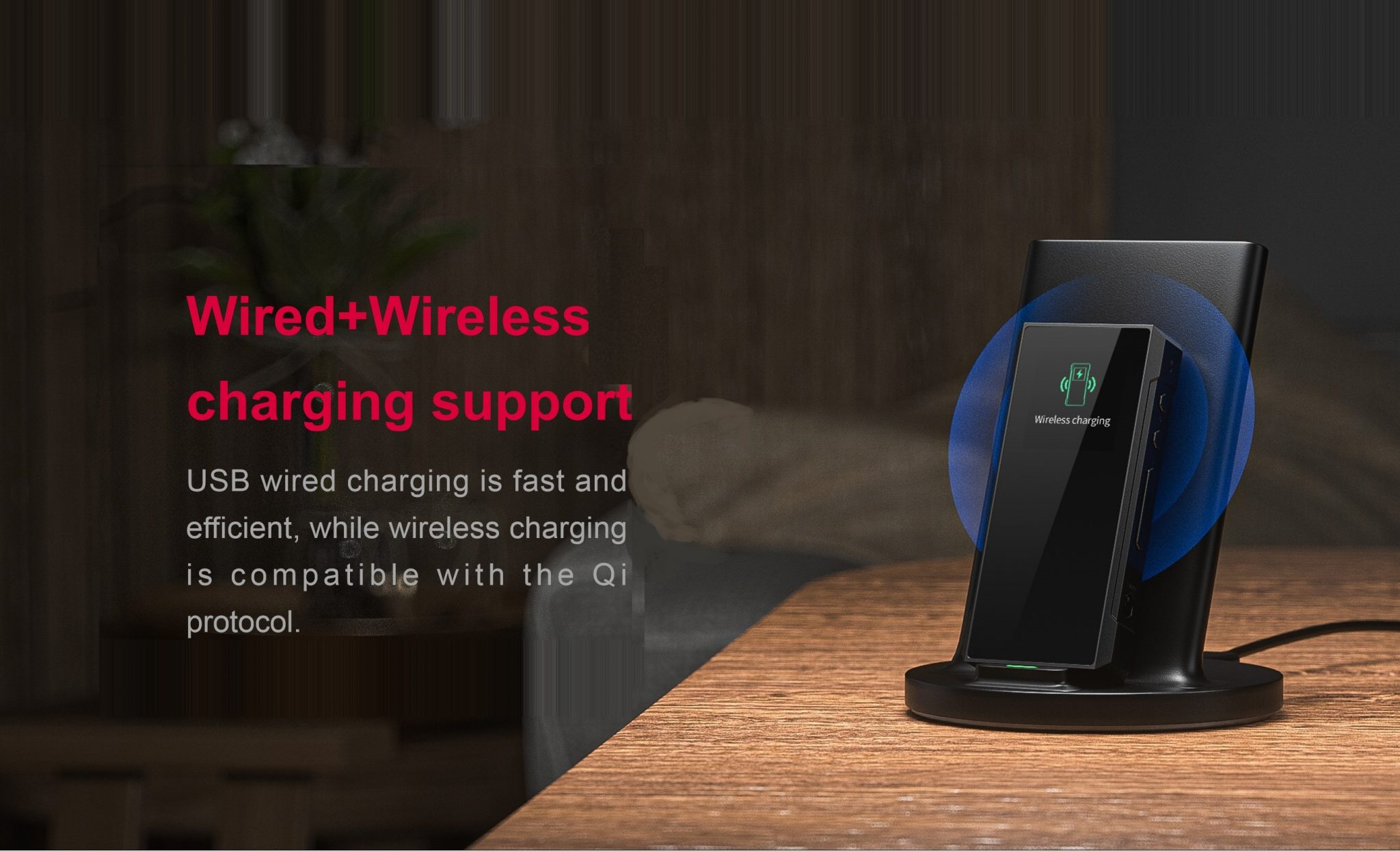
Background Noise / Hissing:
The sound output over both the 3.5mm Single Ended and the 4.4mm Balanced outputs is very clean in terms of white noise. There is nearly zero hissing and a pretty dark background, which is quite impressive. Such a clean output means that you will have better conditions to concentrate to the details in your song.
Microphone:
The FiiO BTR7 is equipped with an omnidirectional built-in microphone that offers a decent noise cancellation performance. The performance of the build-in microphone was pretty good during some of my voice conversations.

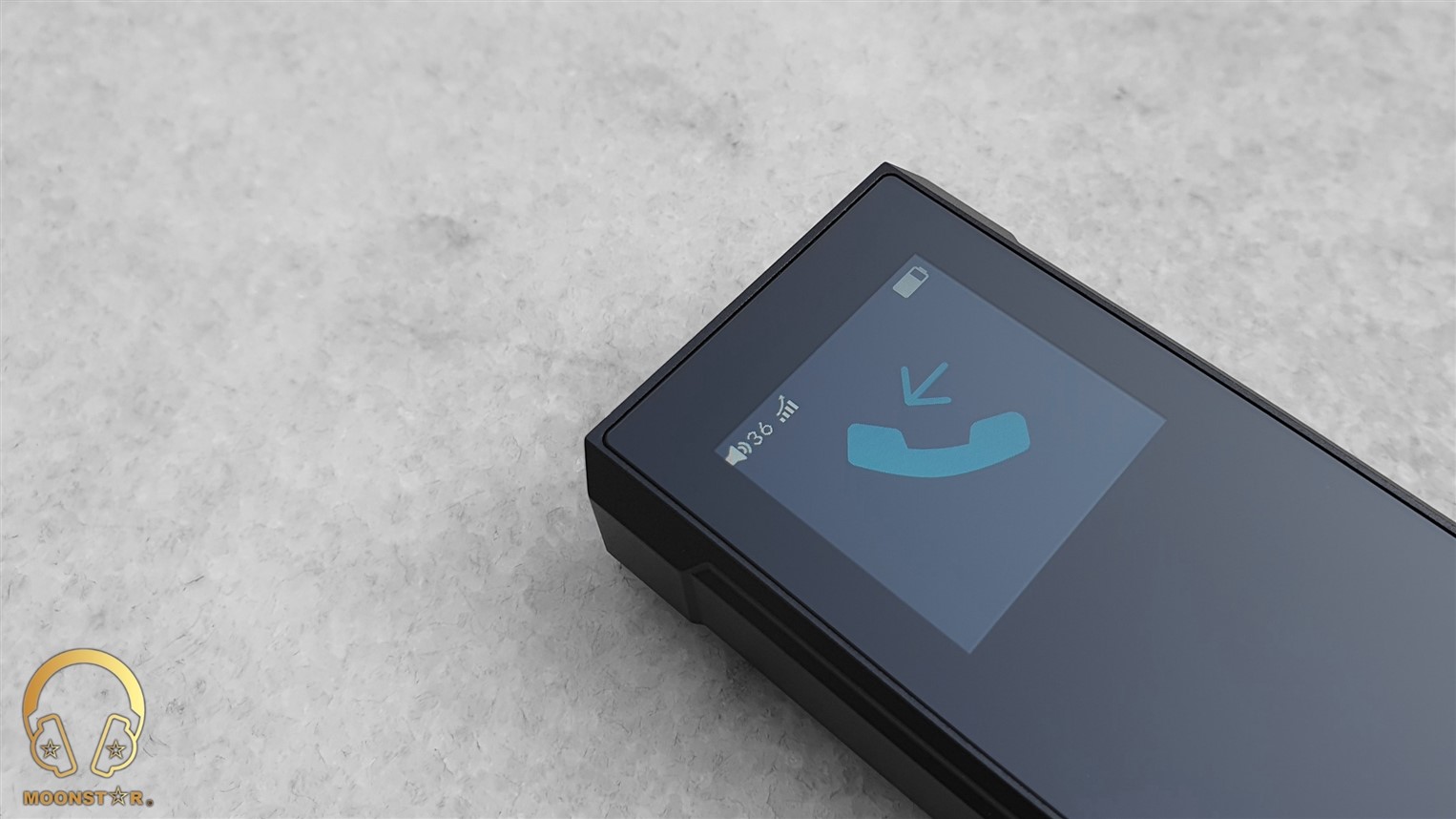
MQA Support:
The FiiO BTR7 supports the latest MQA decoding to experience Master Quality Audio files. The source device should be loaded with MQA supported software such as UAPP, Tidal, etc.
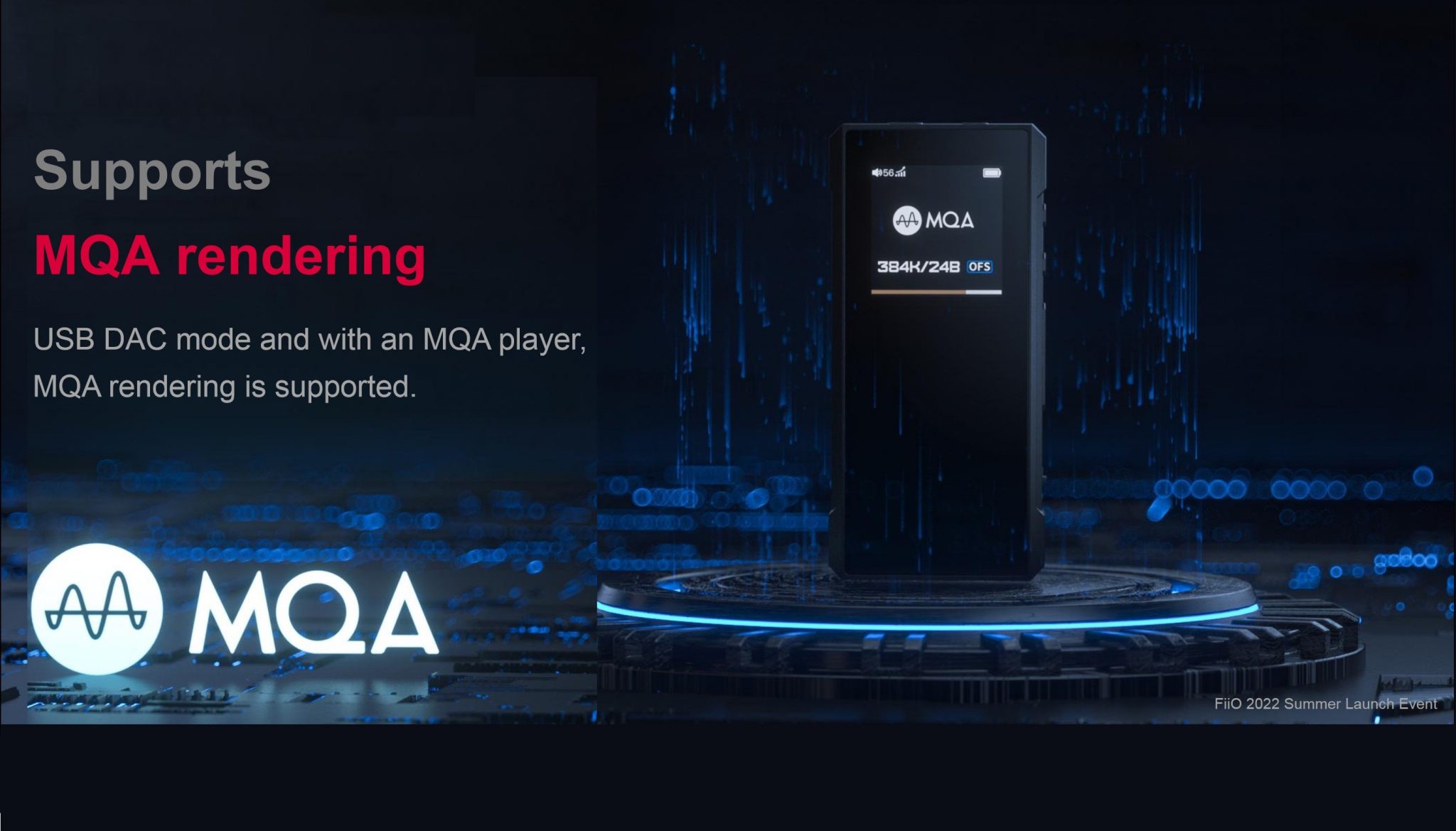
FiiO Control App:
The BTR7 supports FiiO’s Control Application that allows for managing different functions on the units. You can adjust the EQ settings, Channel Balance and other Audio options of the device. Even an OTA (Over the Air) FW update is possible.

Equipments used for this review:
- BT DAC/AMP : FiiO BTR7, Shanling UP5
- Sources : FiiO M11 Plus, Samsung Note 10 Plus
- IEM’s : FiiO FH9, FiiO FA7S, Meze Audio ADVAR
- Headphones : Moondrop Void
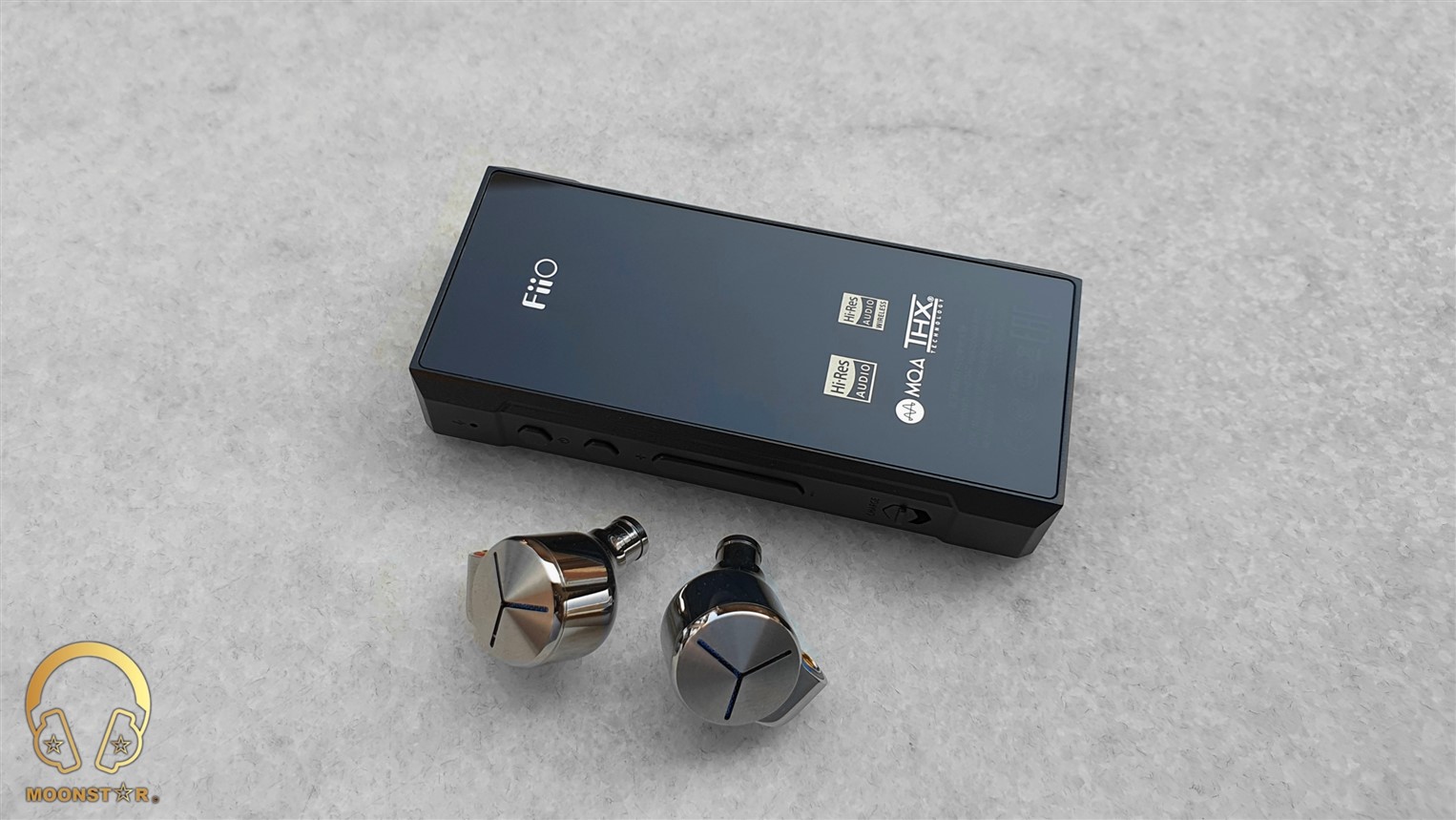
Albums & tracks used for this review:
- Adele – My Little Love (Spotify)
- Randy Crawford – On Day I Will Fly Away (Flac 16bit/44.1kHz)
- Hayley Westenra – Odyssey Album (Dezzer HiFi)
- Dionne Warwick – Walk On By (Flac 16bit/44.1kHz)
- Sarah McLachlan – Angel (Flac 24bit/48kHz)
- Sertap Erener – Aşk (Flac 16bit/44.1kHz)
- Edith Piaf – Non Je Ne Regrette Rien (Flac 16bit/44.1kHz)
- Diana Krall – So Wonderful (DSF)
- Aretha Franklin – I Say A Little Payer (Flac 24bit/96kHz)
- Sonya Yoncheva – (Giuseppe Verdi) II Trovatore, ActI (Flac 24bit/96kHz)
- George Michael – Don’t Let the Sun Go Down on Me (Flac 24bit/192kHz)
- David Bowie – Heroes (Flac 24bit/192kHz)
- Elton John – Rocket Man ((Flac 24bit/96kHz)
- Barry White – Just The Way You Are (Flac 24bit/48kHz)
- Isaac Hayes – Walk On By (Flac 16bit/44.1kHz)
- Sting – Englishman in New York – (Flac 24bit/48kHz)
- Eric Clapton – Wonderful Tonight (Flac 24bit/96kHz)
- B.B. King – Riding With The King (Tidal Hi-Fi)
- Dave Gahan – Kingdom (Tidal Hi-Fi)
- U2 – Sunday Bloody Sunday (Flac 16bit/44.1kHz)
- Bro Safari, UFO! – Drama (Deezer HiFi)
- Armin Van Buuren – Vini Vici (Flac 16bit/44.1kHz)
- Daft Punk – Doin’ it Right (Flac 24bit/96kHz)
- Jo Blankenburg – Meraki (Spotify)
- Lorde – Royals (Flac 24bit/48kHz)
- Massive Attack – Angel (Flac 24bit/48kHz)
- Toutant – Rebirth (Deezer HiFi)
- Gogo Penguin – Raven (Flac 24bit/192kHz)
- Gogo Penguin – Murmuration (Flac 24bit/192kHz)
- GoGo Penguin – Fanfares (Flac 24bit/192kHz)
- Portishead – It Could Be Sweet (Spotify)
- Max Richter – On the Nature of Daylight (Flac 24bit/96kHz)
- Charly Antolini – Duwadjuwandadu (Flac 24bit/192kHz)
- Ferit Odman – Look, Stop & Listen (Flac 24bit/192kHz)
- Chopin – Nocturn No. 20 In C-Sharp Minor (Flac 16bit/44.1kHz)
- Fazıl Say – Nazım Oratoryosu (Live) (Flac 16bit/44.1kHz)
- Vivaldi – Le QuarttroStagioni “The Four Season” (Deezer HiFi)
- Otto Liebert& Luna Negra – The River (Flac 24bit/192kHz)
- Lunatic Soul – The Passage (Flac 16bit/44.1kHz)
- Deftones – My Own Summer (Shove it) (Flac 16bit/44.1kHz)
- Metallica – Sad but True (Flac 24bit/96kHz)
- Opeth – Windowpane (Flac 16bit/44.1kHz)
- Megadeth – Sweating Bullets (Tidal Hi-Fi)
- Rush’s – Leave That Thing Alone (Flac 16bit/44.1kHz)
- Slayer – Angel of Death (Spotify)
- Liquid Tension Experiment 2 – Acid Rain (Spotify)
- Yosi Horikawa – Bubbles (Spotify)

The Sound:
The FiiO BTR7 offers a pretty clean, natural and detailed overall presentation, while it shows a tad warmer than neutral tonality. The lows are shown with a good level of body/volume, depth and authority, the midrange has a decent sense of clarity and resolution, while the treble range is represented with successful grade of separation, extension and sparkle.
This review has been written after a burn-in period of about 50 hours. My sound impressions below are based on my experiences over the 4.4mm Balanced output paired with IEM’s like the FiiO FH9, Meze Audio ADVAR and FiiO FA7S.
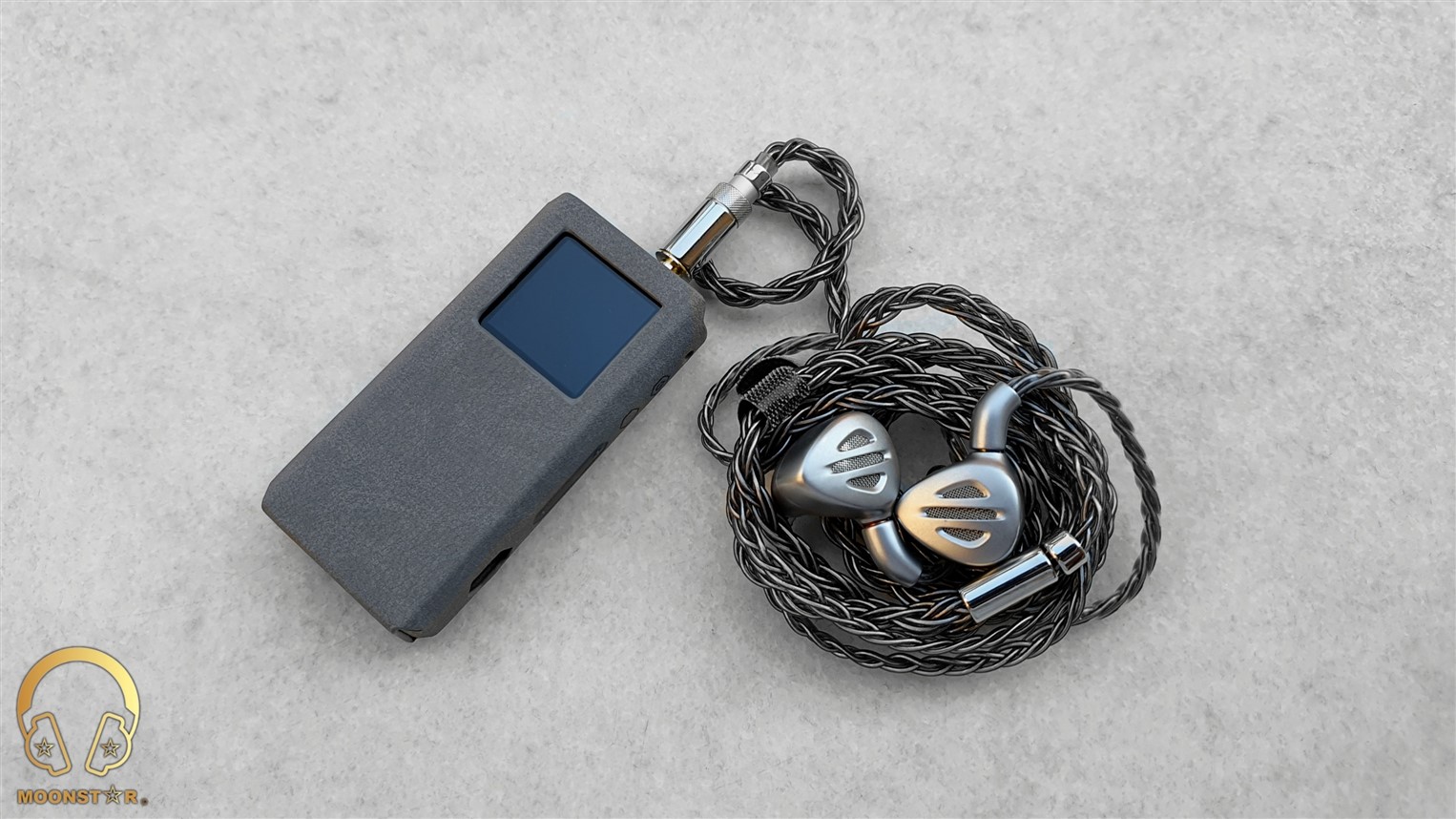
Bass:
The lower frequency region of the FiiO BTR7 sounds pretty uncolored and detailed. Both the subbass and the midbass regions are shown in a clean and controlled manner. The subbass area has a good level of rumble and intensity when I do pair the BTR7 with the FiiO FH9 an do listen to songs like Lorde’s “Royals”, Massive Attack’s “Angle” or Armin Van Buuren’s "Vini Vici" that do sound pretty exiting.
The midbass area sounds again pretty transparent and detailed, without to have negative conditions such like a midbass hump or mixings when I do listen to fast and complex passages such like Gogo Penguin’s “Murmuration”. Percussion instruments such like cross drums or brass instruments like trumpets do sound pretty accented and are reproduced with a mildly warm tonality. Other instruments such like electro and acoustic guitars are shown with a good amount of body and warmth, while toms and kick drums are punchy and quite musical when I do pair the device with my FA7S.

Midrange:
The FiiO BTR7 has a fairly neutral and quite detailed and spacious overall midrange presentation. It has a slightly warmer than neutral tonality that avoids a too sterile and dry atmosphere in this area. The sense of airiness and transparency is pretty good, epically when I do listen to it with the Meze Audio ADVAR.
Male vocals such like George Michael, Barry White or Sting do sound lively and emotional, which is an audible improvement after the BTR5. Female vocals on the other hand are reproduced in a pretty vivid, detailed and emotional manner. Female voices including soprano vocals such like Sertap Erener and Hayley Westenra did sound fairly controlled and emotional both when paired with the FiiO FA7S and Meze Audio ADVAR, without to show a remarkable sibilance or harshness.
The successful sense of transparency and airiness found in the midrange of the BTR7 creates good conditions for instruments. They are shown with a good level of separation for an Ultra Portable BT DAC/AMP, which is a remarkable advantage you do listen to songs with complex and relative instrument dense passages such like GoGo Penguin’s “Fanfares”. Instruments such like pianos, cymbals, flutes or cellos are reproduced in a pretty detailed, lively and fairly natural manner.
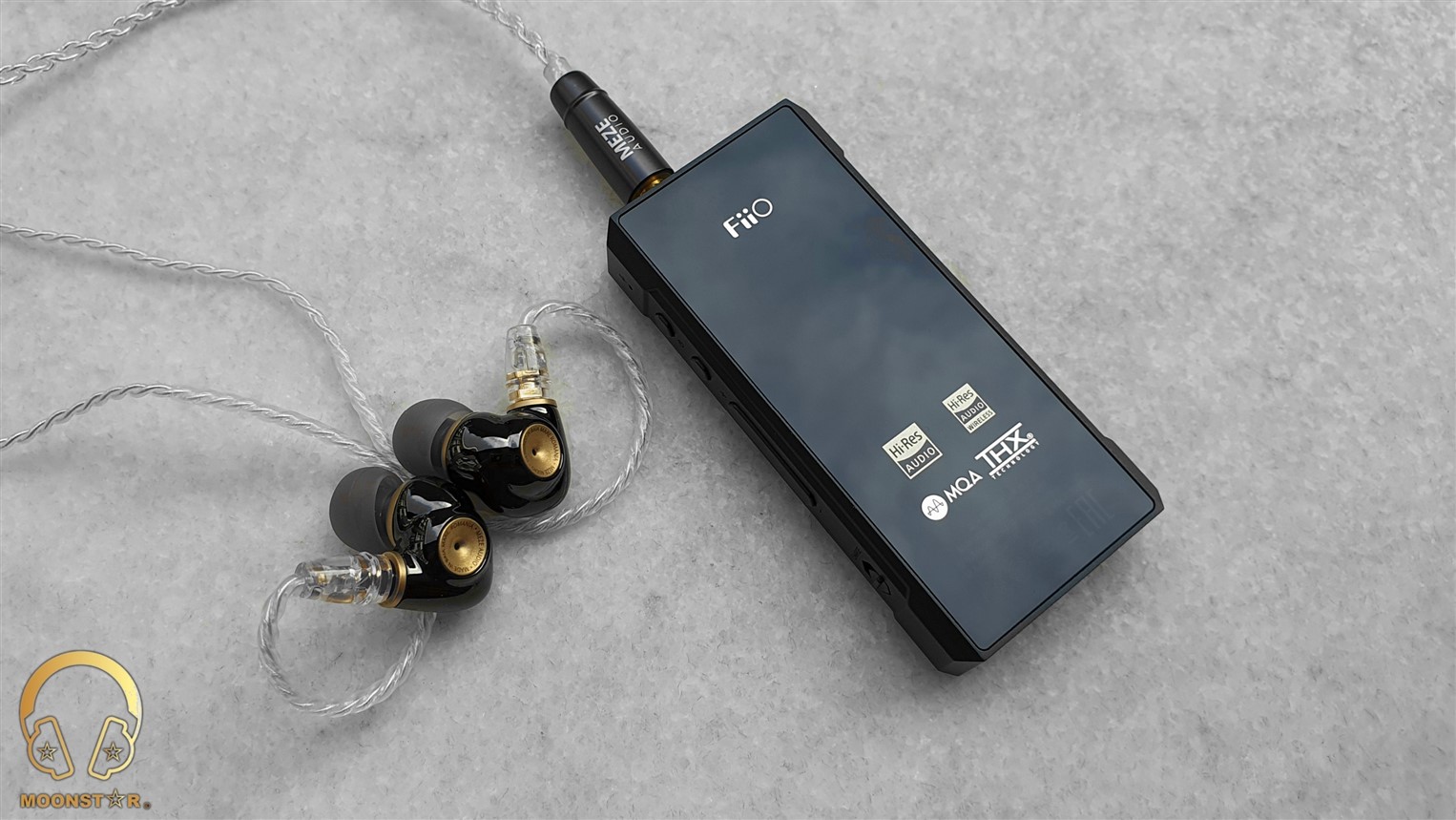
Treble:
The FiiO BTR7 shows a fairly natural and almost uncolored treble response with solid grade of resolution that will definitely fulfill your expectation from an ultra portable source at this price range.
A remarkable plus point of the treble range is the authority & control that the BTR7 offers in this area. Songs with fast and complex instrument transitions such like Charly Antolini’s “Duwadjuwandadu” are reproduced in a pretty controlled way.
The BTR7 is able to produce a decent sense of resolution and sparkle in this area, when I have listened to it with both the FiiO FH9 and Meze Audio ADVAR. Instruments from violins to synthesizers, from pianos to flutes do sound quite natural and musical, without o be show unwanted sharpness.
Other treble intensive instruments such like cymbals or hi-hats in both jazz and metal music do sound nicely pronounced, fairly detailed and are shown with a good grade of extension that doesn’t falls short.

Soundstage & Imaging:
The FiiO BTR7 offers a quite natural and realistic soundstage atmosphere along with a pretty successful sense of airiness and space, which creates good conditions for a precise placement of instruments and vocals. The soundstage shows a sufficient level of depth and wideness that won’t disappoint you with respect of a device at this price tag.
Comparison:
FiiO BTR7 versus Shanling UP5:
The Shanling UP5 is another portable All-in One BT & USB DAC Amplifier, which is the direct concurrent of the FiO BTR7. Both devices do have a decent built quality and do share a nice looking glass surface in black color and a pretty ergonomic shape. However, the UP5 has a more rounded shape compared to the BTR7 that reflects FiiO’s 6th Gen 3D cut design with Hexagonal elements. The UP5 and the BTR7 are quite similar went it comes to the width and thickness (BTR7 39.6x14.6mm vs UP5 39x14.5mm), while the BTR7 is taller with 83.6mm versus 68mm that the UP5 has.

The BTR7 and the UP5 do share some similar hardware specs such like 2x ESS Sabre ES9219C DAC’s, Xmos XU208 Chip, 3.5mm SE & 4.4mm Balanced Outputs, while the UP5 has also a 2.5mm Balanced output. Both devices do have a BT Chip implementation that supports the BT 5.1 protocol and all modern codes like AAC, SBC, aptX, aptX Low Latency, aptX HD, LDAC. However the BTR7 comes with Qualcomm’s latest QCC5124 BT SoC, while the UP5 is equipped with the older QCC5120. The BTR7 supports Wireless Charging that the UP5 don’t has, while the UP5 offers NFC connection. The biggest difference should be the IPS Display on the BTR7 that looks more modern compared to OLED screen that is integrated to the UP5.
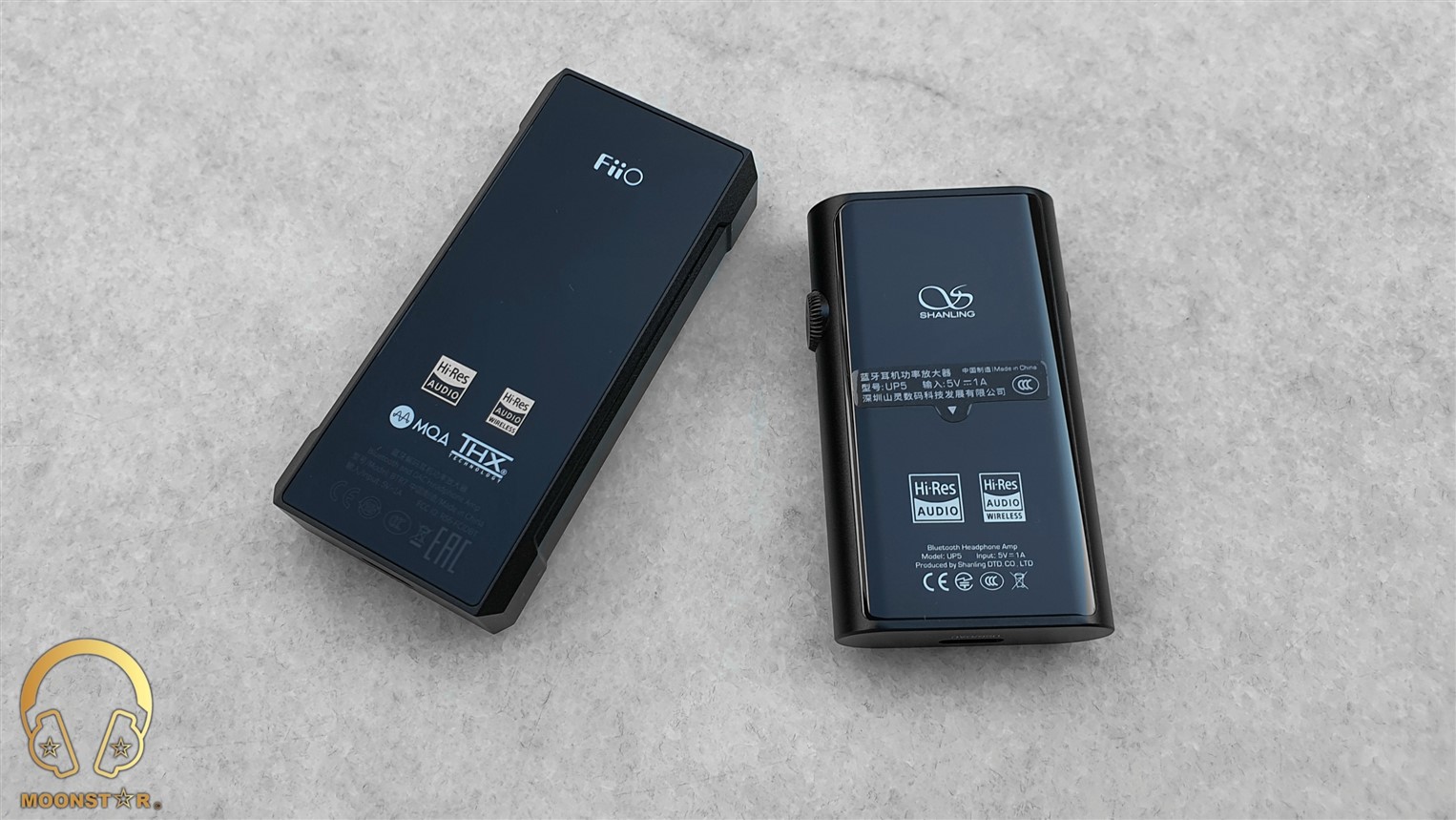
Both the FiiO BTR7 and the Shanling UP5 do come with a powerful amplifier section. The Shanling UP5 offers up to 240mW @32 Ohm over the 4.4mm Balanced output that means plenty of power. However, the BTR7 is equipped with a THX Amplifier section that comes with 2x THX AAA-28 amplifiers that is even more powerful with up to 320mW@32 Ohm over the 4.4mm Balanced output. The FiiO BTR7 and the Shanling UP5 are equipped with built-in batteries with a capability of 880mAh. The UP5 offers up to 11 hours over its Balanced outputs, while the BTR7 last up to 9 hours due to the THX AAA-28 amplifier section that shows a higher power consumption.

When it comes to the sound, I can say that both devices do offer a solid performance that won’t disappoint you. The Sahnling UP5 has a slightly warmer tonality that is typical for Shanling products, while the FiiO BTR7 shows a closer to neutral tonality.
The subbass region of both devices shows a good level of depth and rumble, while the BTR5 has the slightly edge when it comes to the clarity and authority in this area. The midbass region of the BTR7 shows a slightly better sense of layering and sounds a bit more controlled, while both are pretty similar in terms of resolution.
The midrange of the Sahnling UP5 shows a tad warmer tonality compared to the FiiO BTR7, which offers a slightly better grade of transparency and detailed retrieval. The lower midrange of the UP5 sounds a bit fuller than the BTR7, which has the upper hand when it comes to the clarity and authority in this area. The Shanling UP5 is slightly behind the FiiO BTR7 in terms of overall technical performance and resolution, both in the upper midrange and treble region.
Both devices are pretty successful when it comes to the soundstage performance, especially for their price. However, the FiiO BTR offers in general a better sense of airiness and spaces between instruments. The BTR7 has the slightly edge when it comes to the wideness of the stage, while the difference in terms of depth is quite minimal.
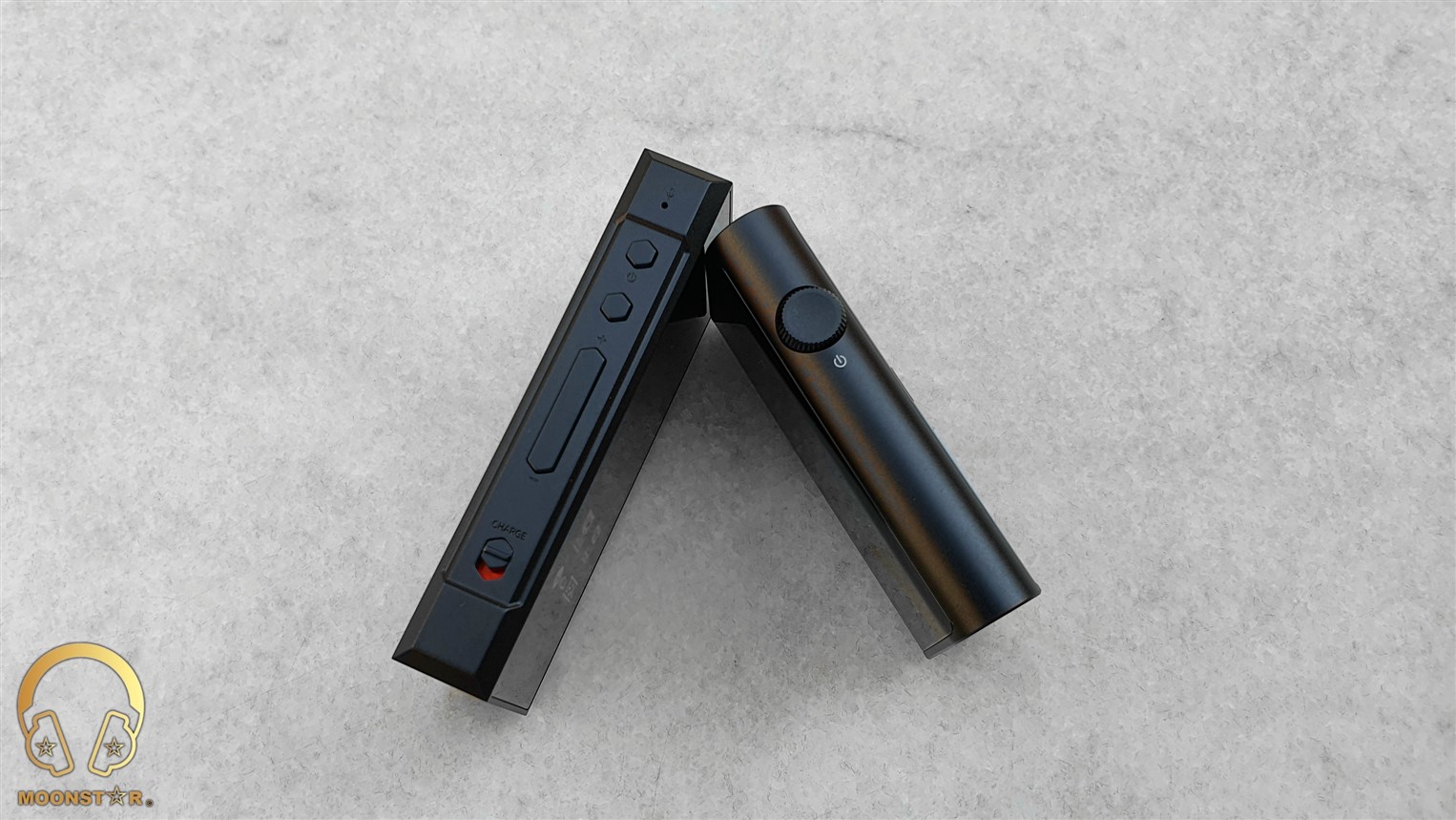
Conclusion:
The FiiO BTR7 is an ultra portable all-in one BT/USB DAC/Amplifier solution that immediately impressed me with its overall sound performance, great built quality and solid looking industrial design that adopts design elements from DAP’s like the M11 Plus. Furthermore, the BTR7 is an excellent device that comes with lots of features such like a powerful THX AAA-28 amplifier section, an innovative metal frame antenna for a stable connection, Wireless Charging, 1.3 inch IPS Color Display and many more, while the leather case that came with the device is a nice addition.
Thank you for the Read!
Moonstar
100+ Head-Fier
Pros: Overall Clarity, Resolution and Authority,
Very Balanced & Natural Sound Profile,
Both 4.4mm Balanced & 3.5mm Single Ended Outputs,
Ultra Clean Output that is Ideal for Sensitive IEM’s,
Powerful Output for power hungry Headphones,
MQA & Native DSD Support up to DSD256,
Stylish Design & Premium Build Quality
Very Balanced & Natural Sound Profile,
Both 4.4mm Balanced & 3.5mm Single Ended Outputs,
Ultra Clean Output that is Ideal for Sensitive IEM’s,
Powerful Output for power hungry Headphones,
MQA & Native DSD Support up to DSD256,
Stylish Design & Premium Build Quality
Cons: No Physical Buttons for Volume Adjustment,
No Protective Case or Lightning Cable included to the Package (The Leather Case is available for FREE for a limited Time)
No Protective Case or Lightning Cable included to the Package (The Leather Case is available for FREE for a limited Time)
Questyle M15 Ultra Portable USB DAC/Amplifier Review
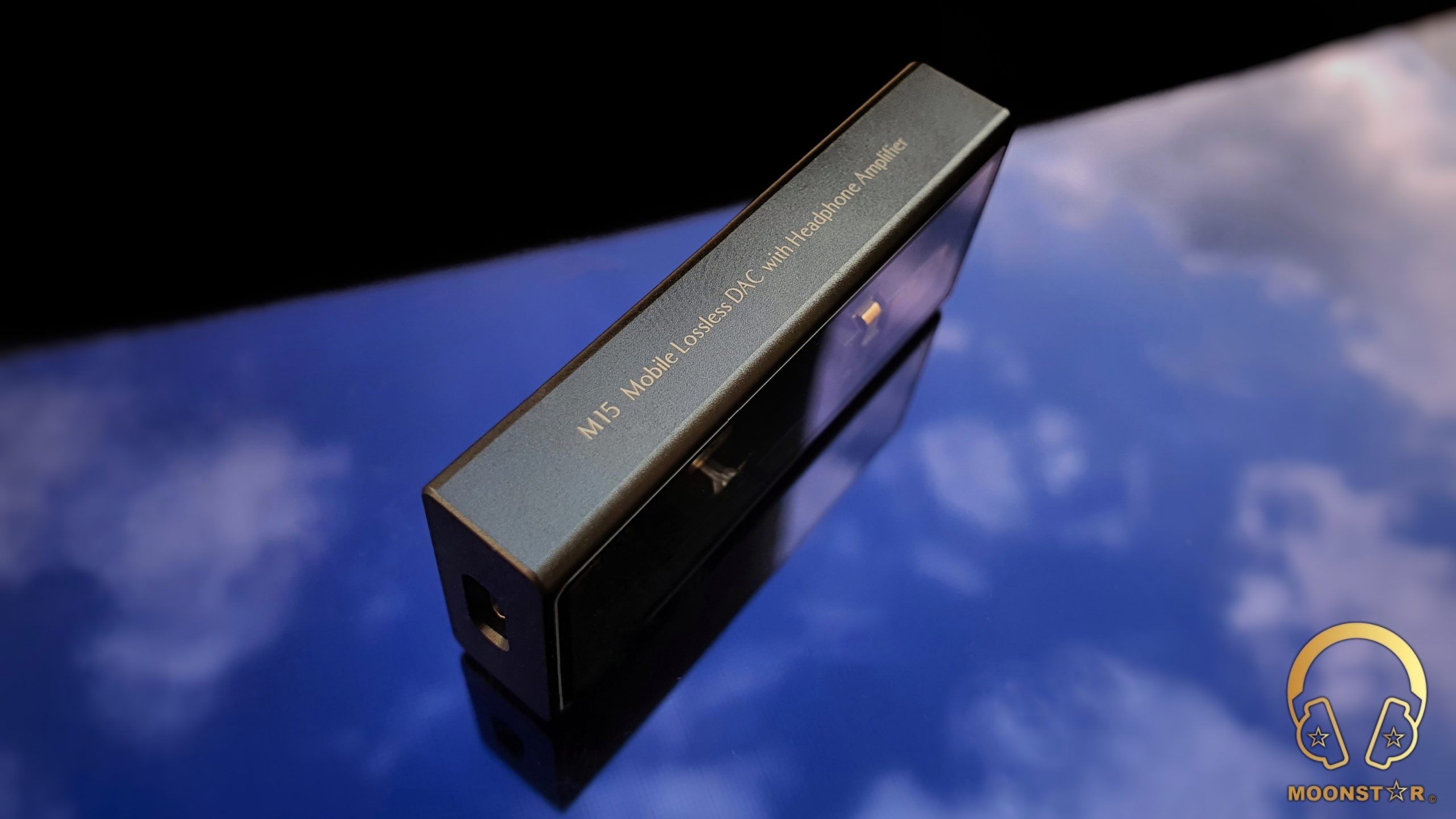
Introduction:
Questyle Audio is a Chinese company that is specialized in research of high-tech lossless audio system such like Desktop Amplifiers (CMA800/CMA800R), DAC/Amplifiers (CMA Twelve, CMA Fifteen, CMA 400i), Wireless Audio Systems, Portable DAC’s (M12) and Audio Players (QPM, QP2R). Questyle has won over 20 international awards since 2015, such as CES Innovation Award, iF Industrial Design Award, and VGP Lifestyle Award, while Foxconn Technology Group is a strategic partner of the company.
The Questyle M15 that I will now review for you is the company’s flagship ultra portable USB DAC/Amplifier that features a ESS ES9281AC DAC Chip, TOREX High-Efficiency Power Management Unit and both 3.5mm Single Ended and 4.4mm Balanced Analog outputs. Moreover, the M15 contains two of Questyle’s patented CMA (Current Mode Amplification) SiP modules, for a total of four CMA AMP engines to driver both Sensitive IEM’s and demanding headphones as well.
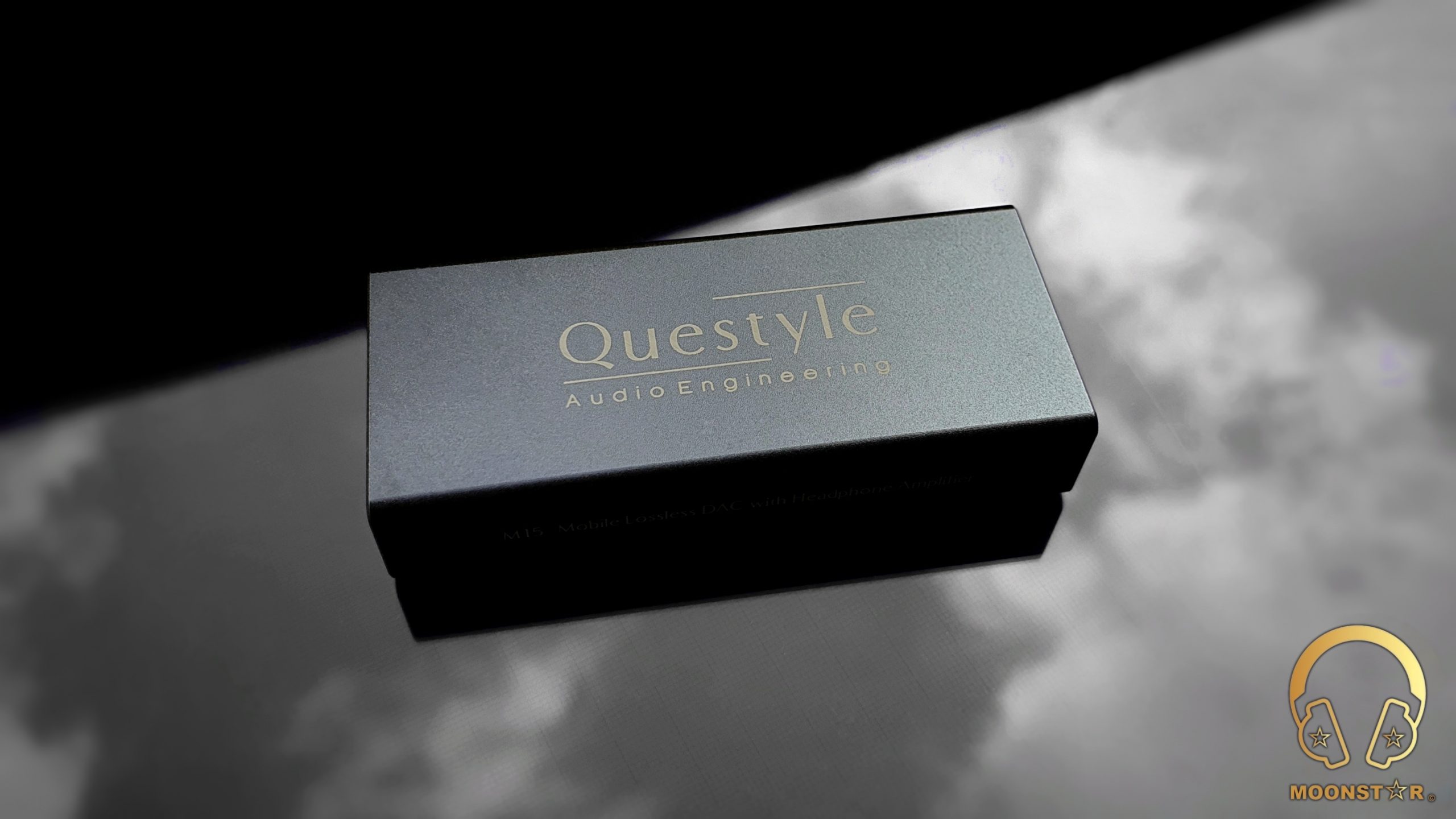
Disclaimer:
I would like to thank Questyle for providing me the M15 Ultra Portable USB DAC/Amplifier as review sample. I am not affiliated with Questyle beyond this review and these words reflect my true and unaltered opinions about the product!
Price & Availability:
The actual MSRP price of the Questyle M15 USB DAC/Amplifier is 249.00 US$. More information’s can be found under the link below;
Package and Accessories:
The Questyle M15 came in a relative small rectangular back cardboard box with a premium look and feel that sports some product related brandings o the top and specifications at the bottom.
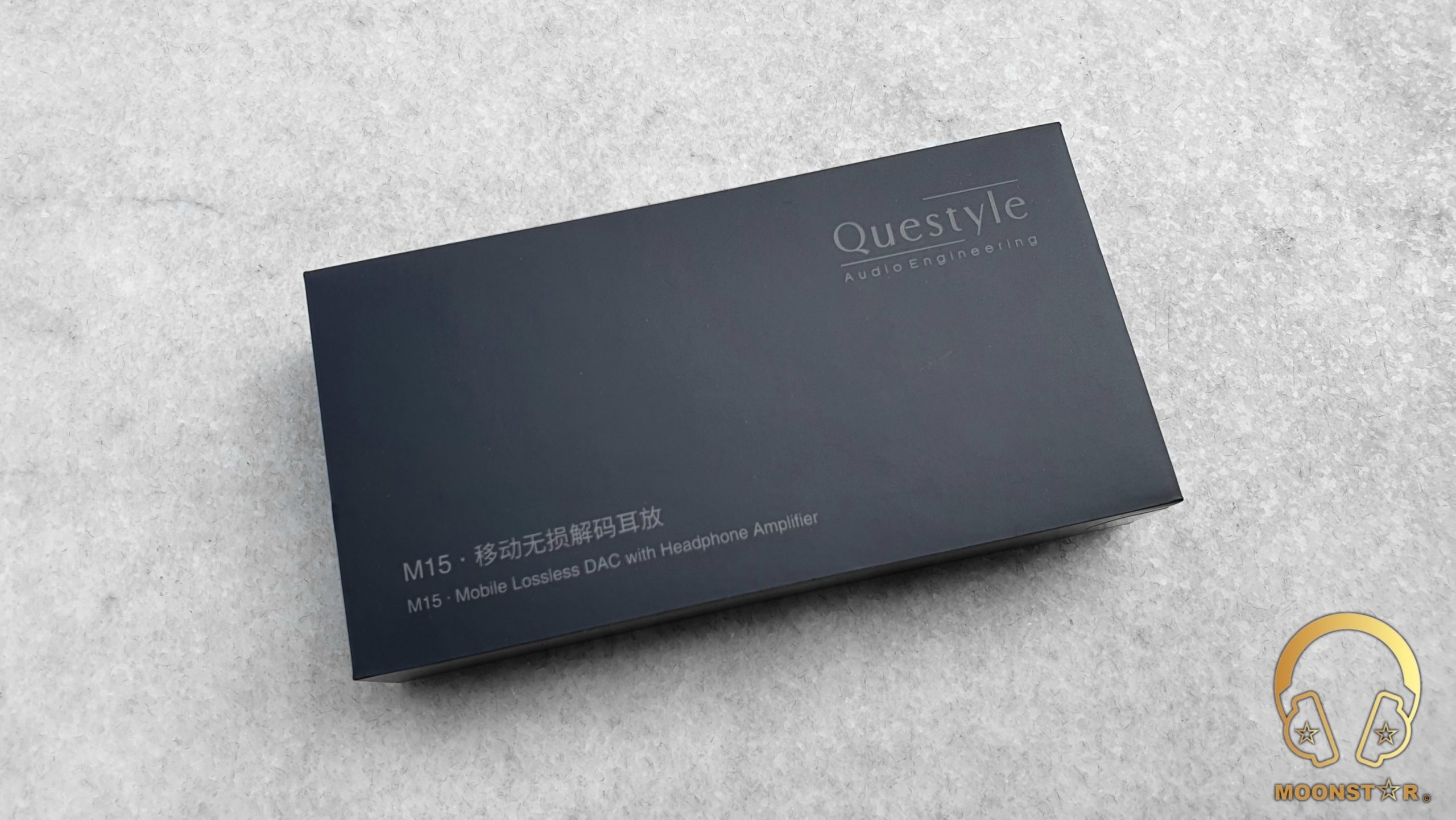
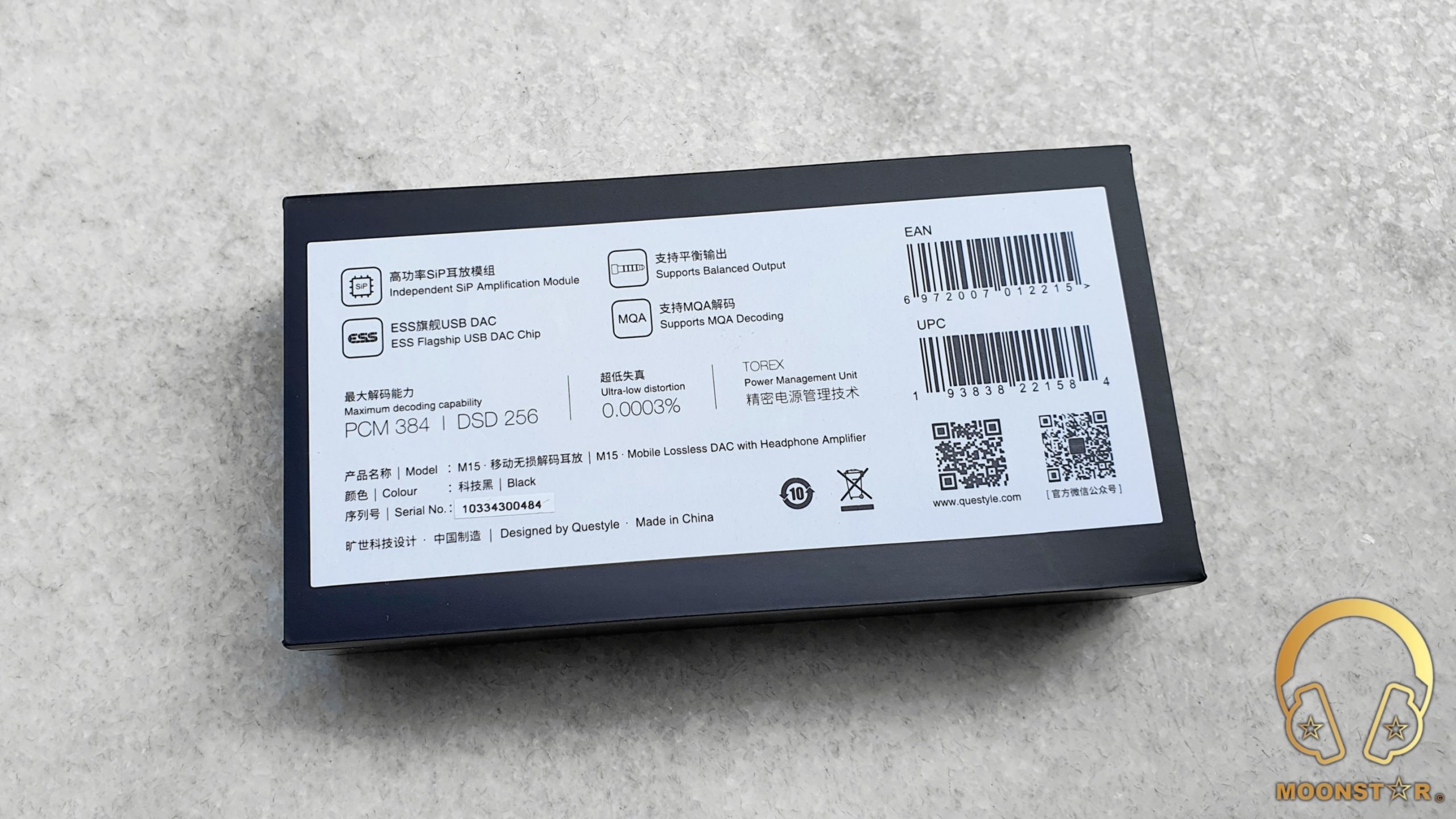
Inside the box are the following contents & accessories;
- 1 x Questyle M15 Ultra Portable USB DAC/Amplifier
- 1 x USB Type-C to USB Type-C Low Profile Cable
- 1 x USB Type-A to USB Type-C Low Profile Cable
- 1 x Print Material (Instruction Manual & Guarantee Card)
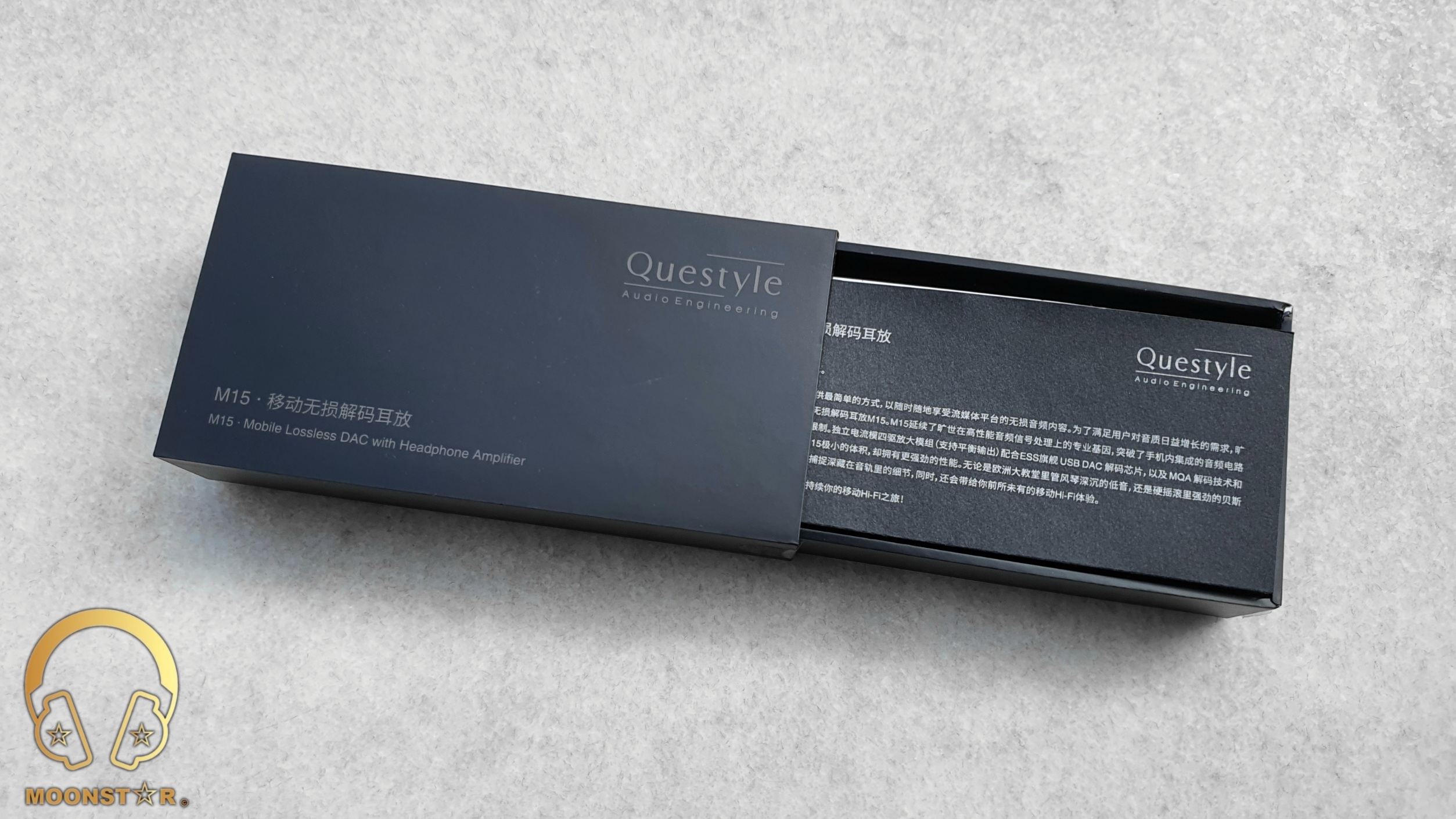
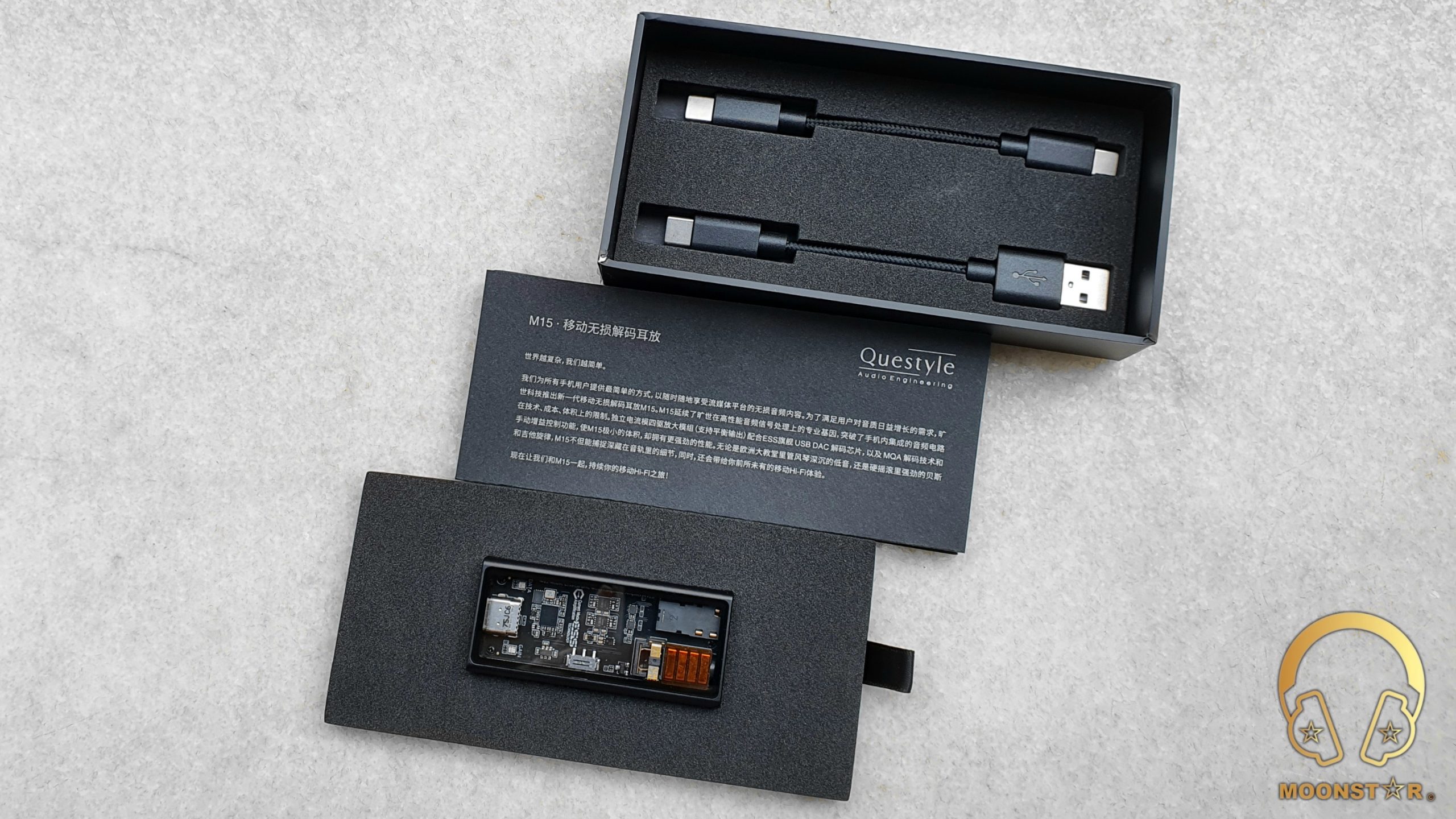
The M15 has a premium looking leather case available in 3 different colour options that is sold separately for 30.00 US$. The good news is that you can get now for FREE for as Launch Gift for a limited time (till 15th of May).
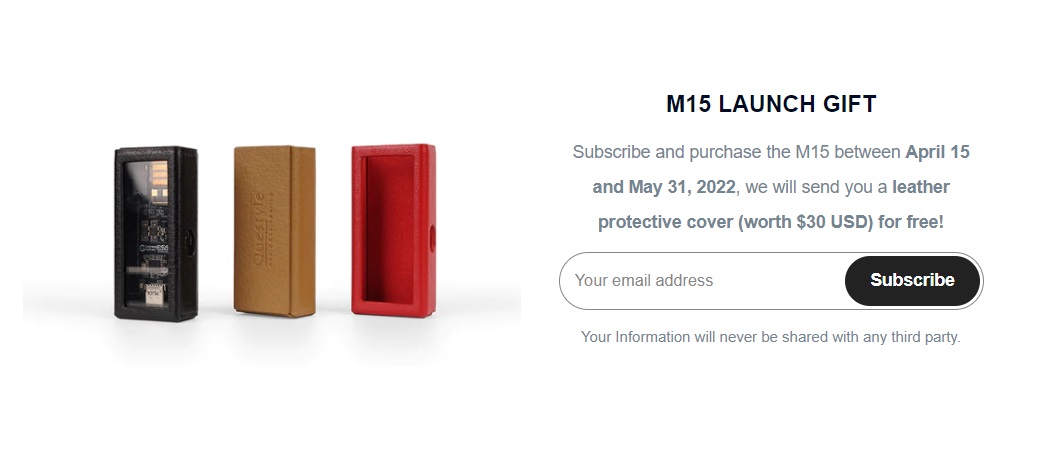
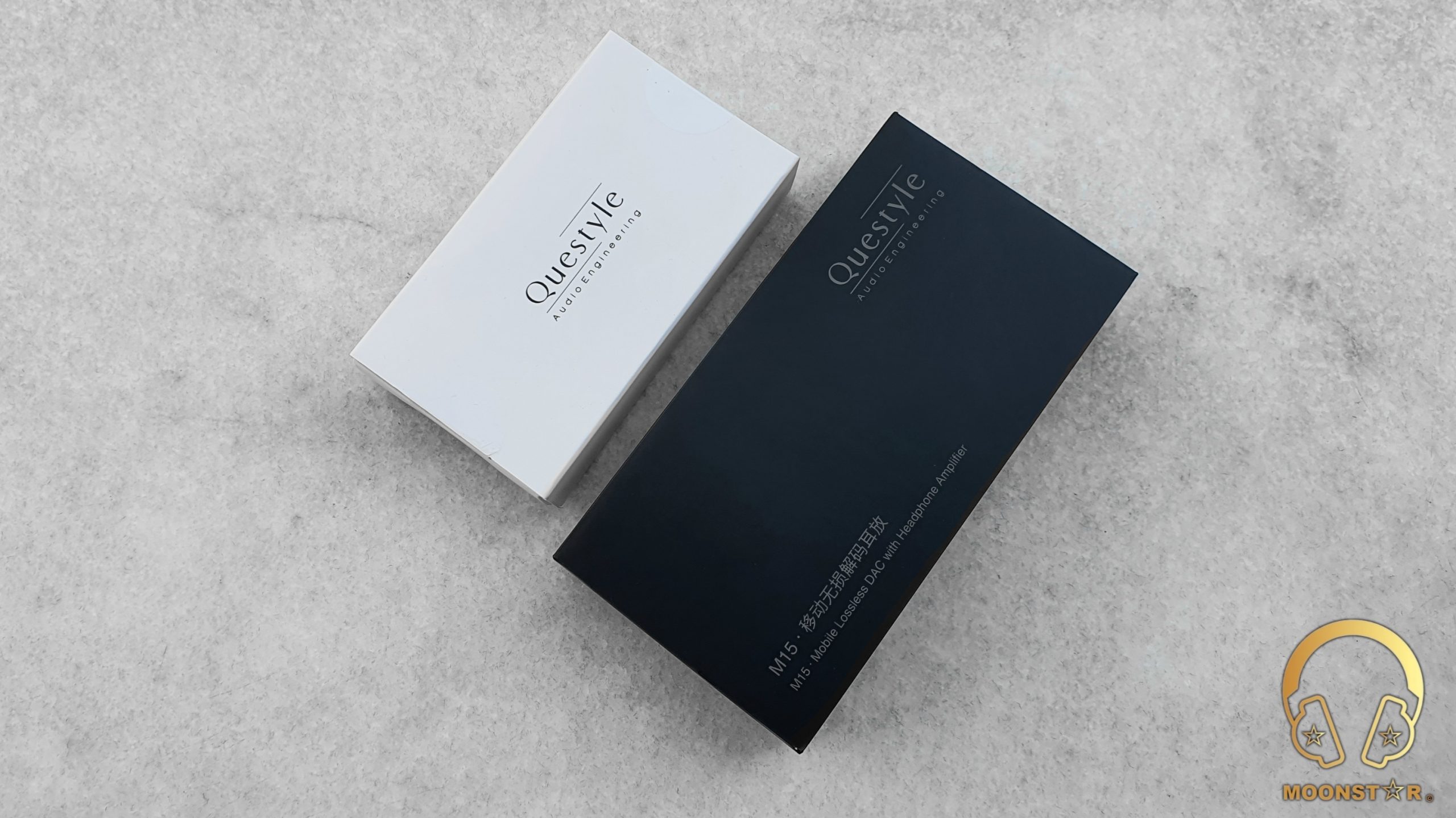
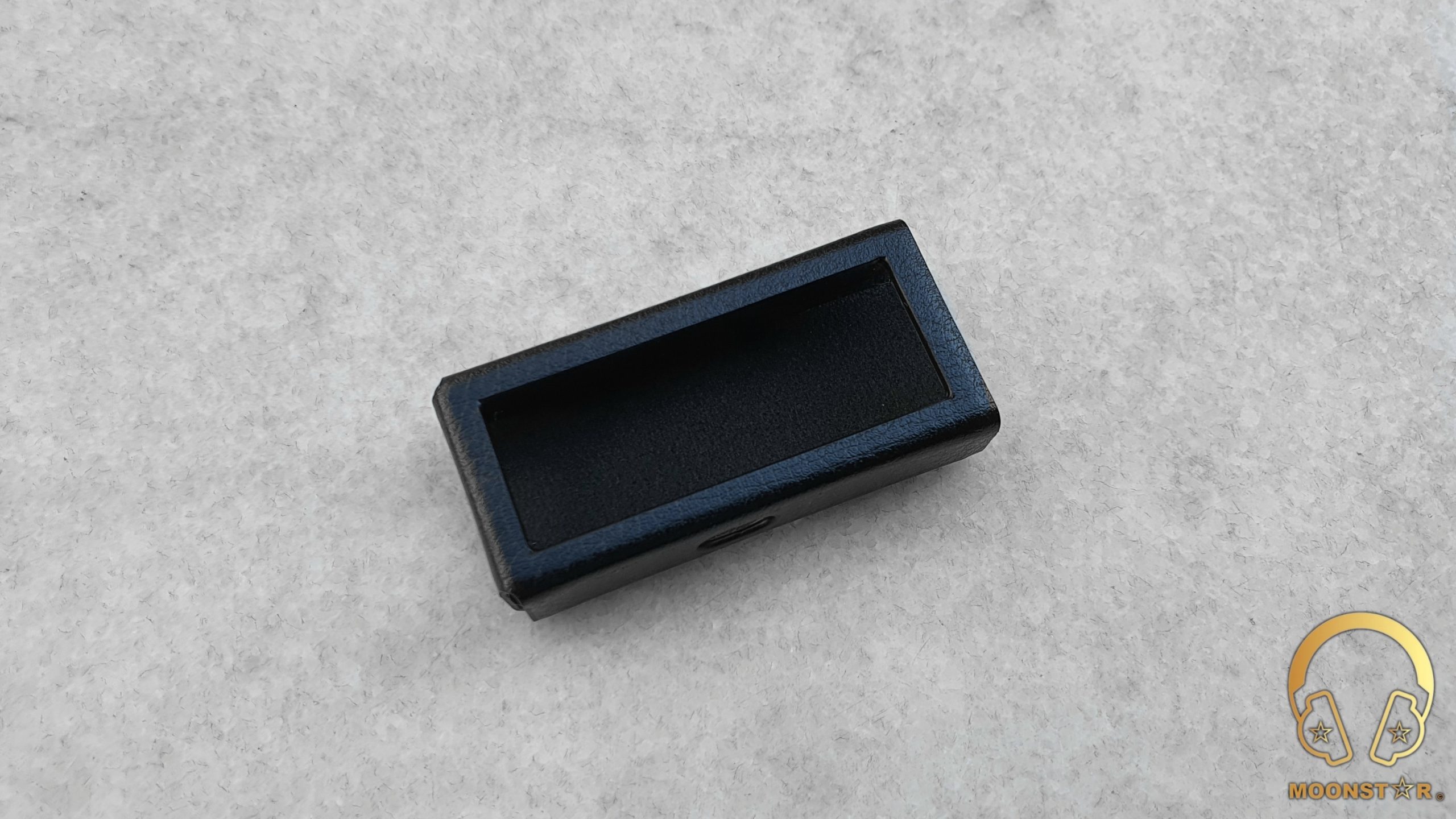
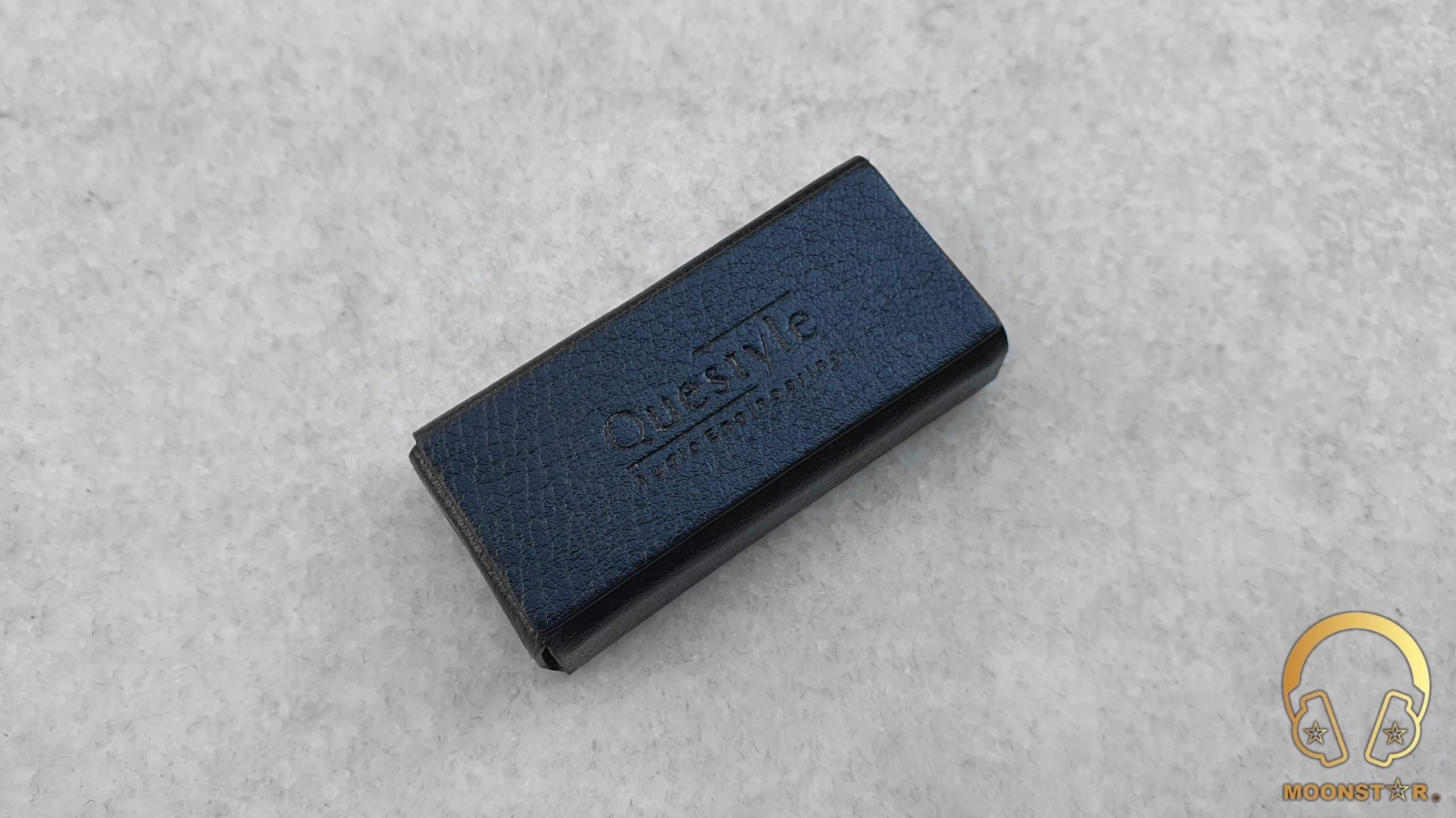
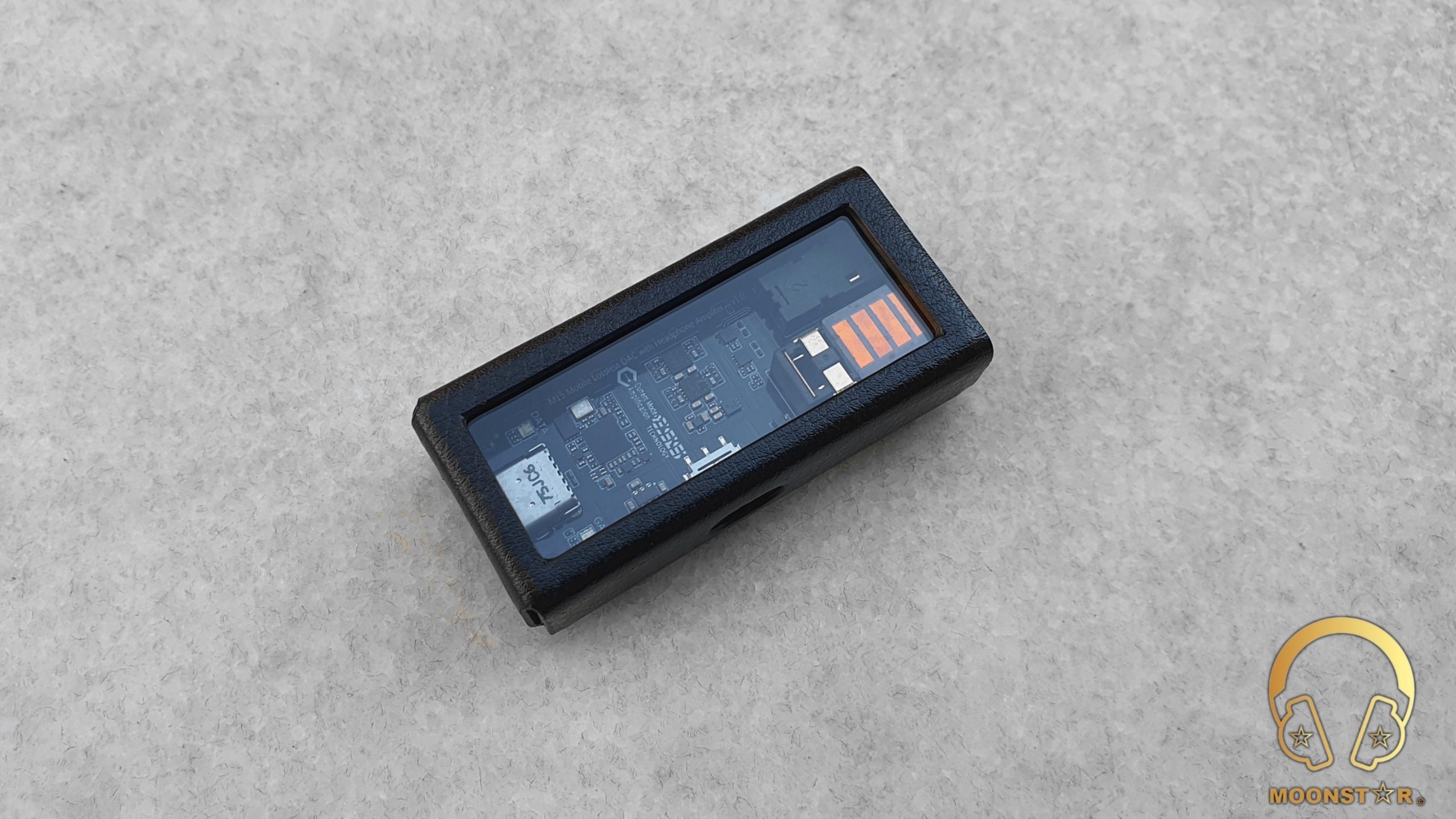
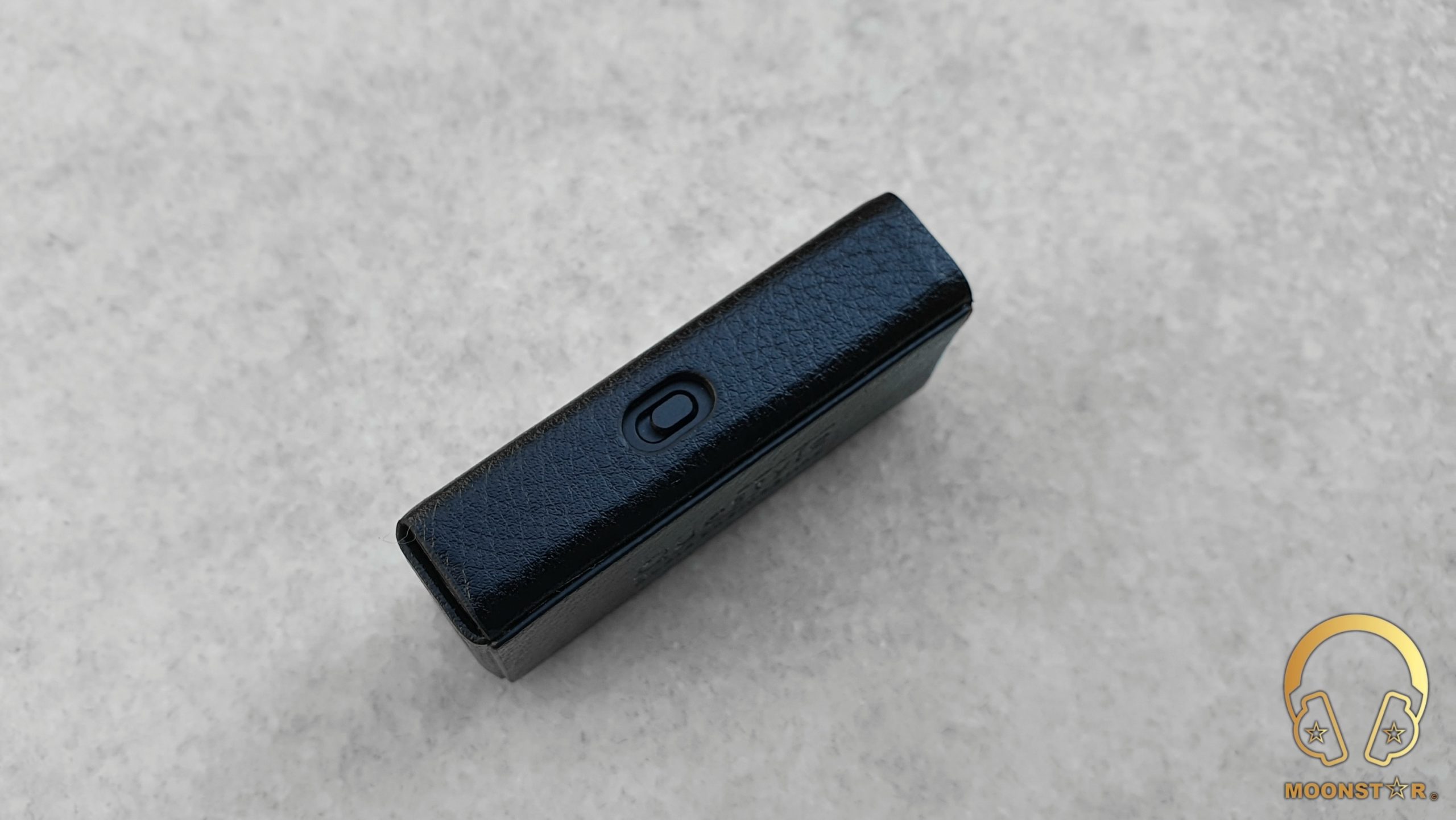
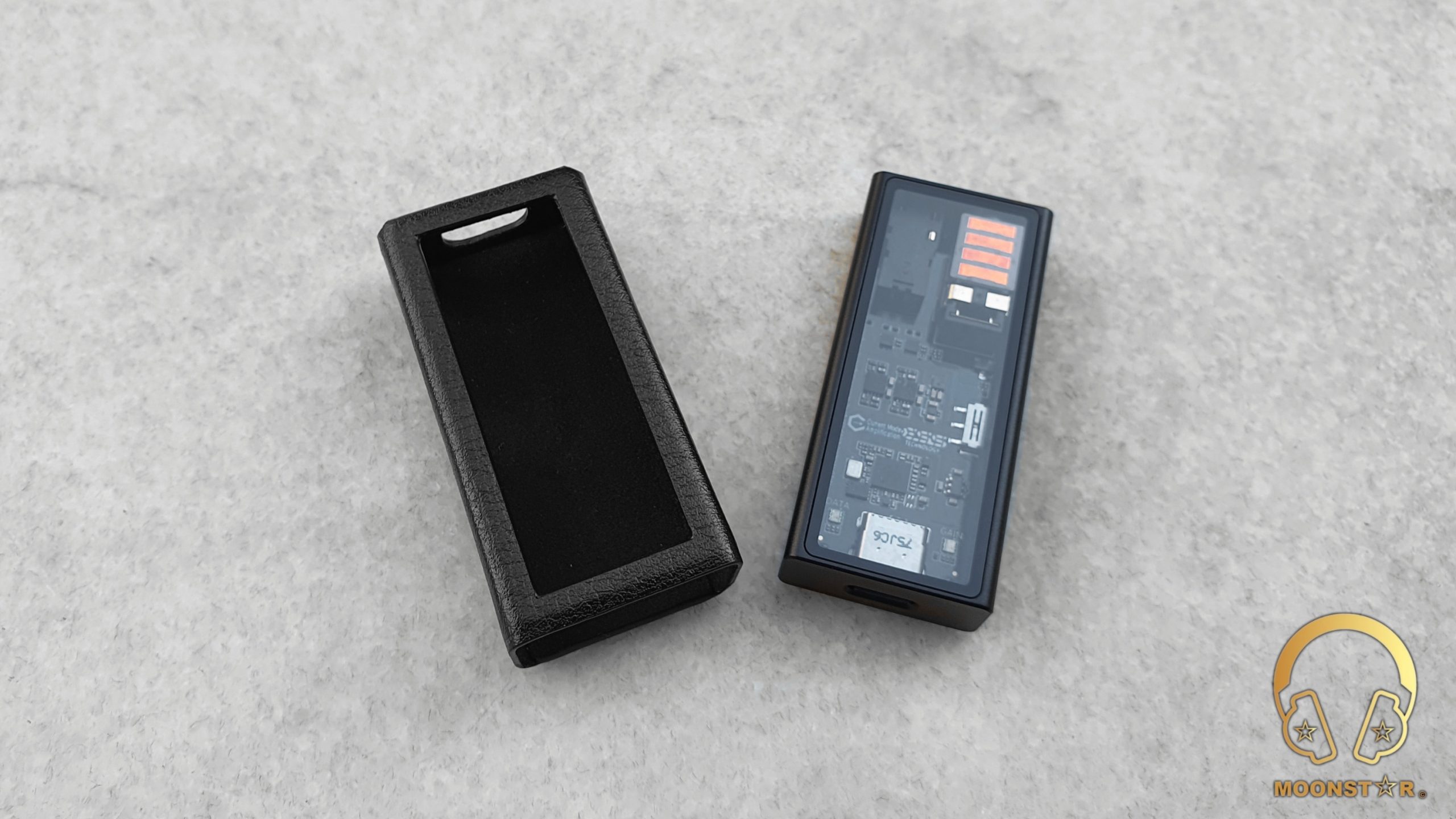
Design & Build Quality:
The Questyle M15 is an amazing looking USB DAC/Amplifier that offers a unique visual experience with its CNC machined aluminium housing with a transparent top cover, which feels very premium and robust when you hold it in your hands.
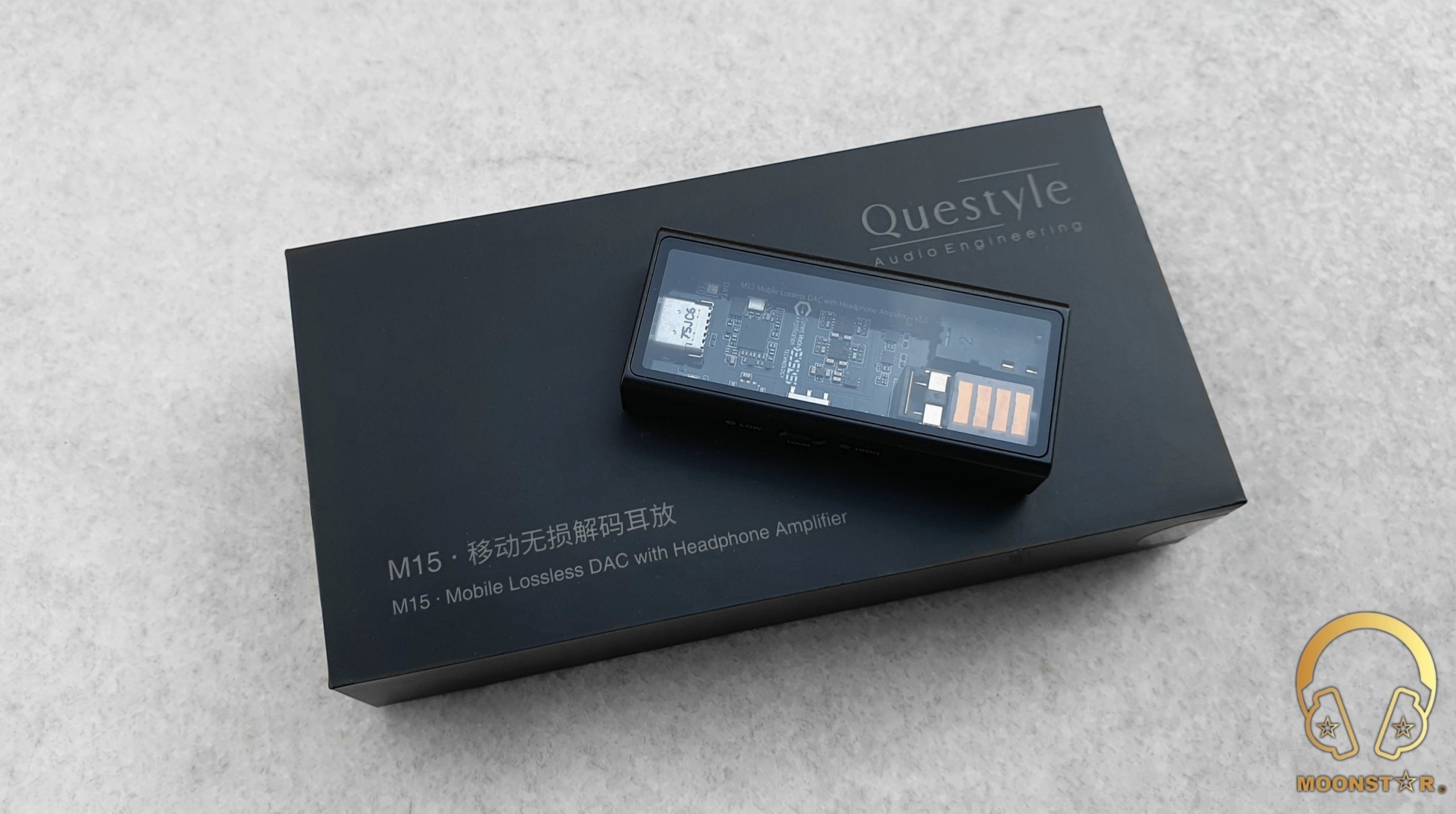
The M15 is an Ultra Portable USB DAC/Amplifier with dimension of approx. 61.8[L] X 27.2[W] X 12[D]mm without the low profile cables that are included inside the package.
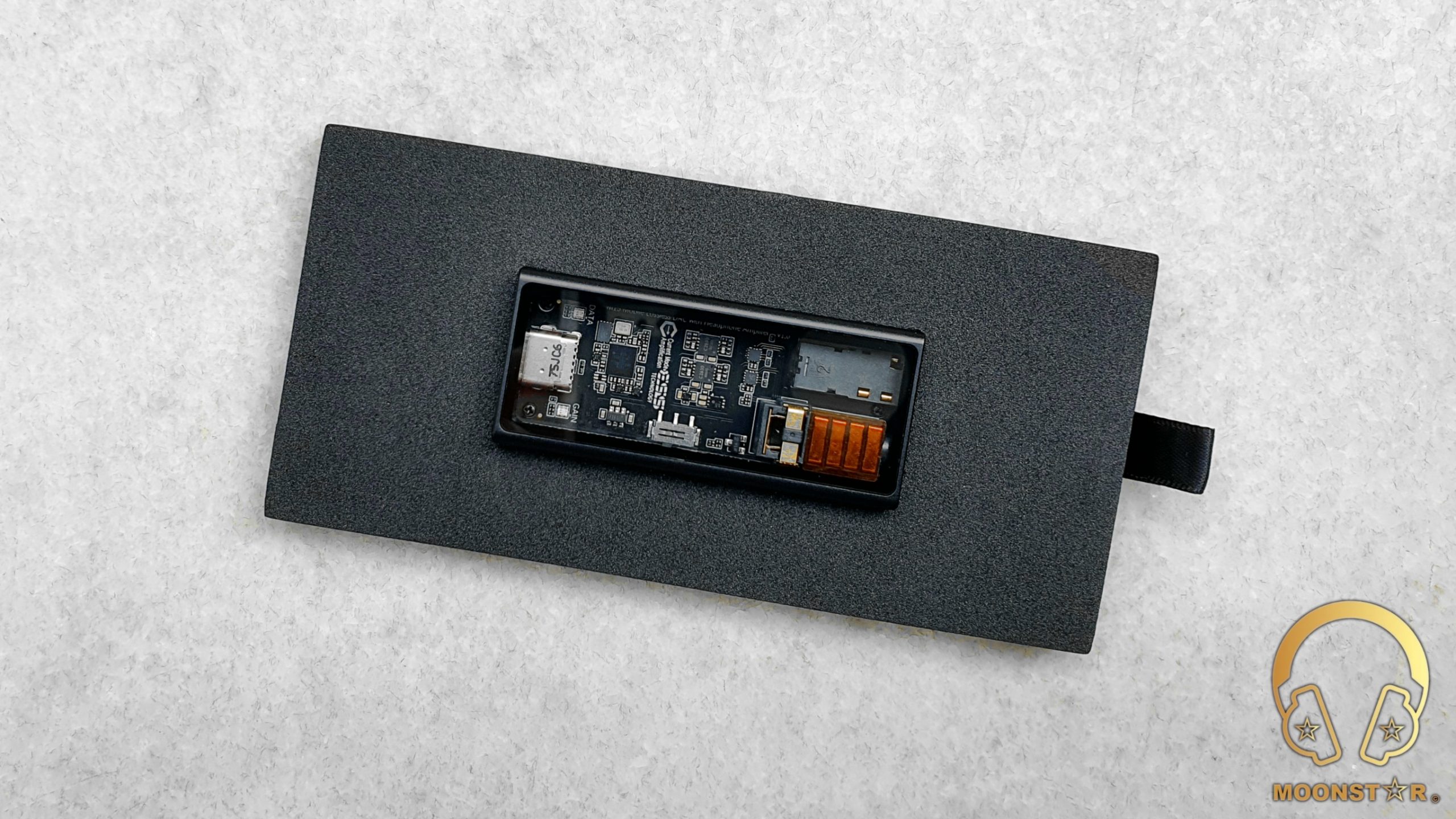
The main body that is made from CNC Machined Aluminium alloy material is in black colour and shows a rectangular shape with slightly rounded edges.
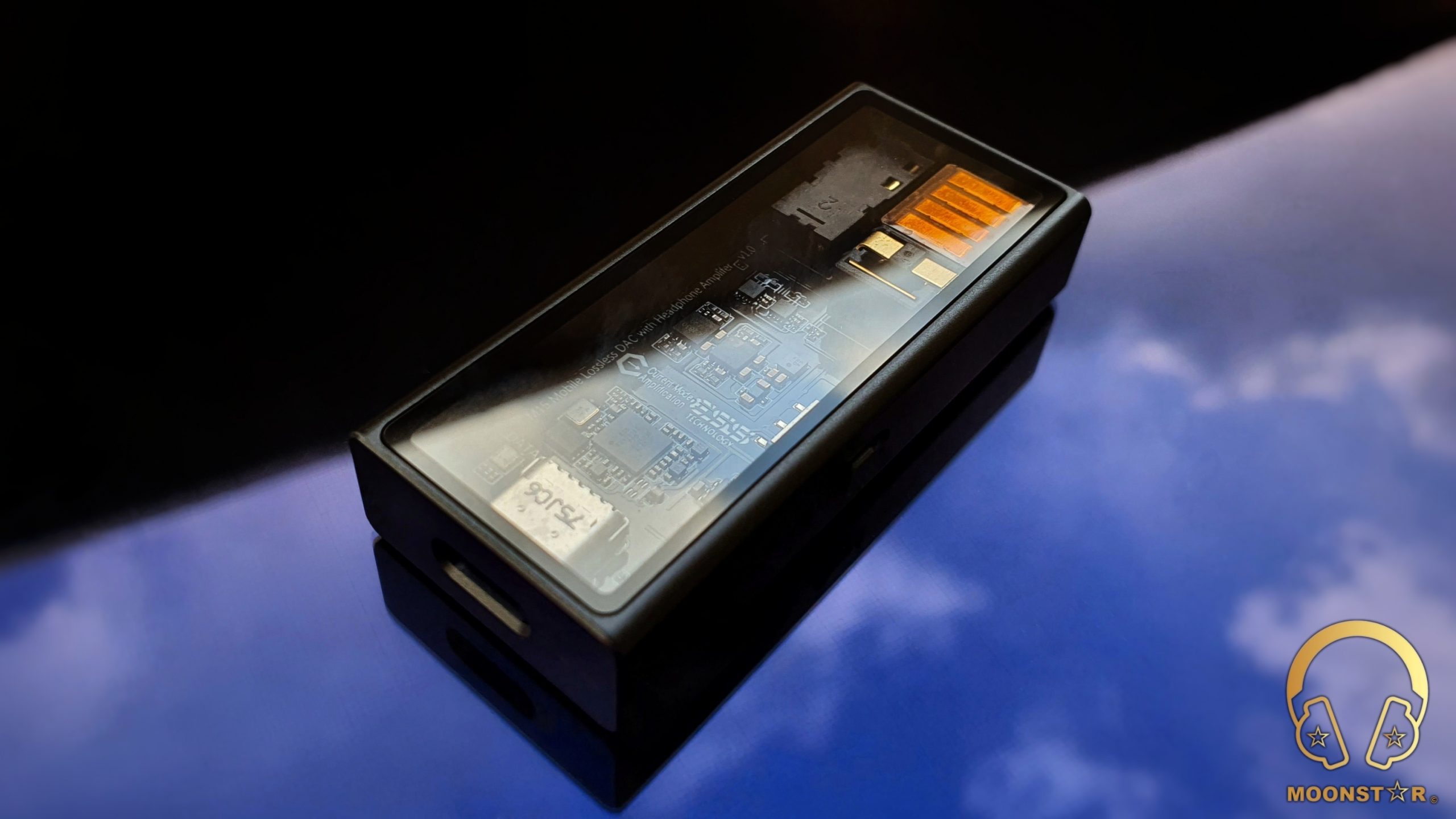
At the left surface of the M15 is the Low & High hardware switch that I do prefer over software controlled gain options.
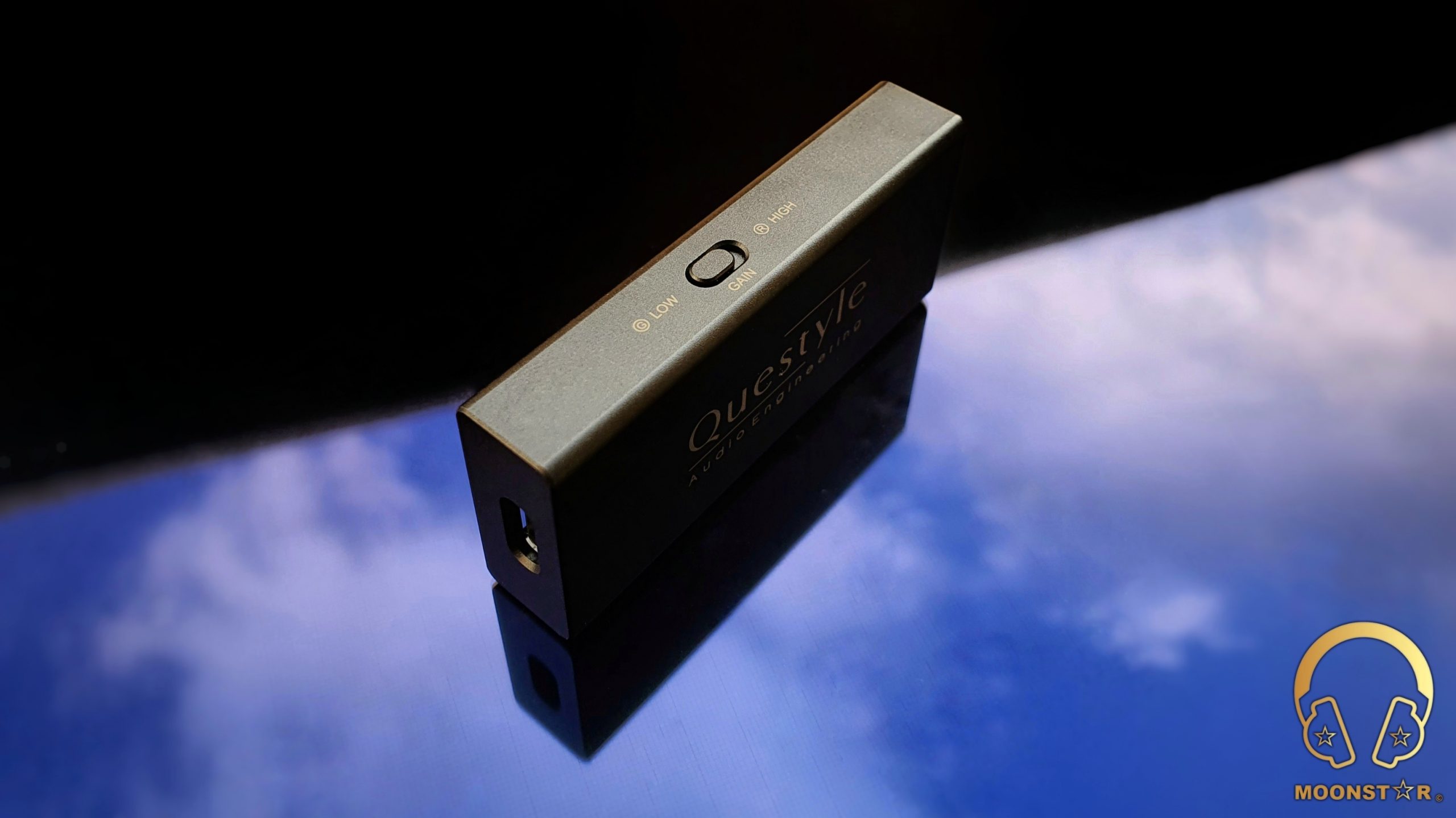
At the right surface of the device is the “M15 Mobile Lossless DAC with Headphone Amplifier” branding.

On the top of the M15 is a transparent top cover that makes it possible to see the PCB layout with all the hardware components like the ESS ES9281AC DAC Chip, TOREX Power Management Unit, SiP Current Mode Amplification modules, 4.4mm Balanced and 3.5mm Single Ended output and more, which offer visually attractive experience.
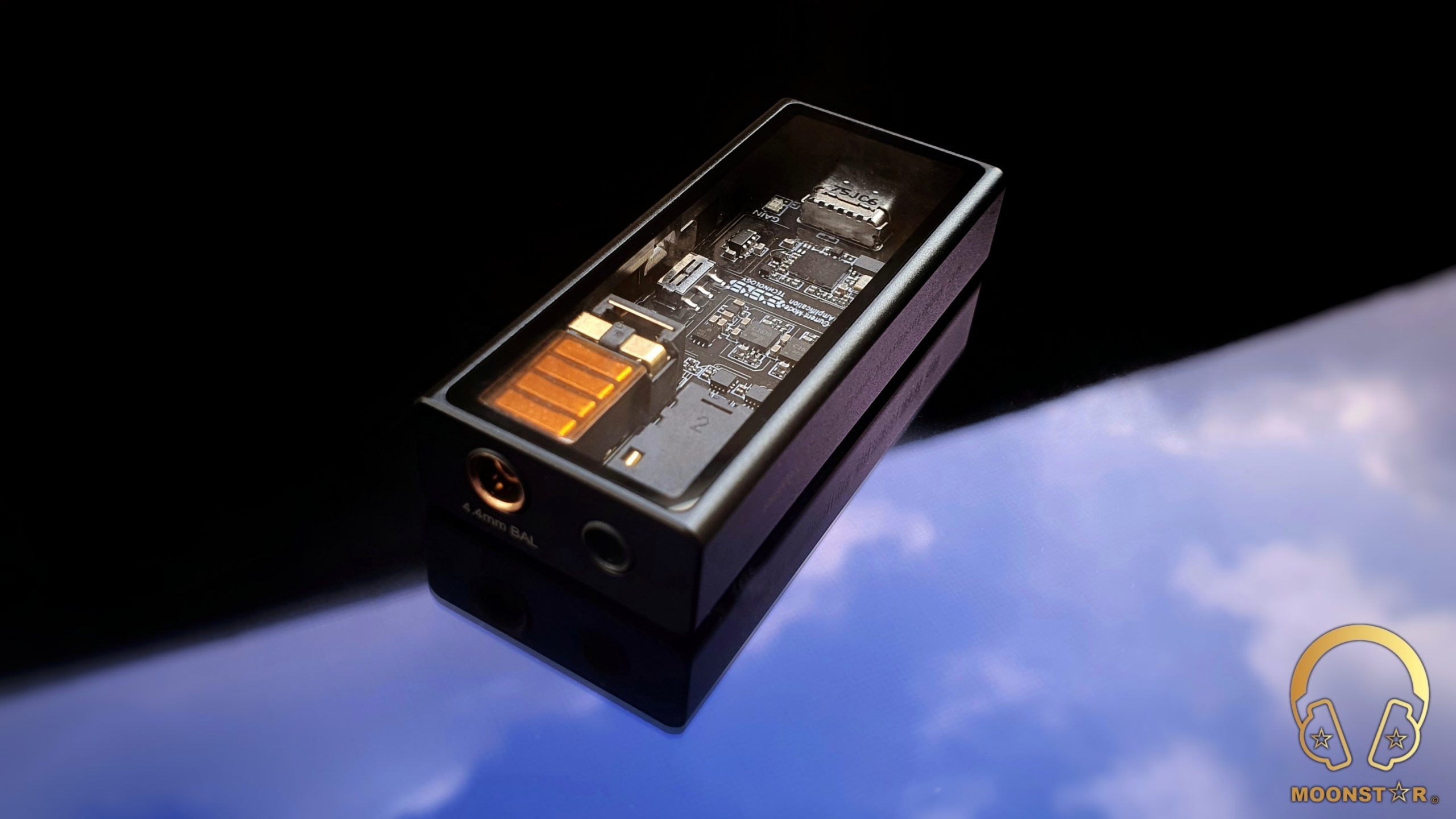
Here are also two LED light indicators, one is dedicated for the gain status (red & green) and the other one is the Data Indicator that gives information about the actual payed format.
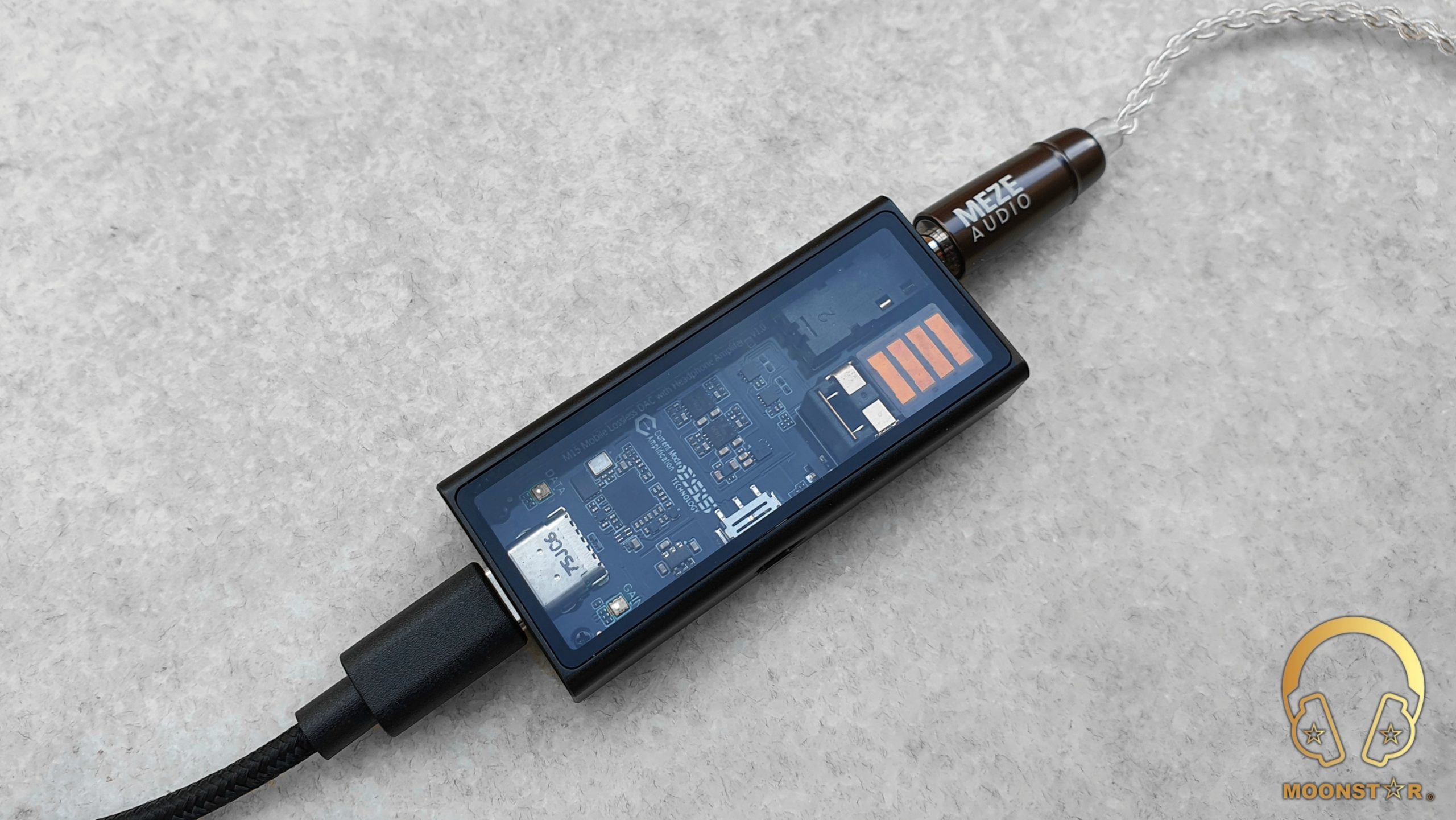
On the top of the device are both the 3.5mm Single Ended (with CTIA support for headphones featuring phone calls) and the 4.4mm Balanced (TRRRS “Pentaconn”) headphone outputs that do offer a tight and sturdy connection.
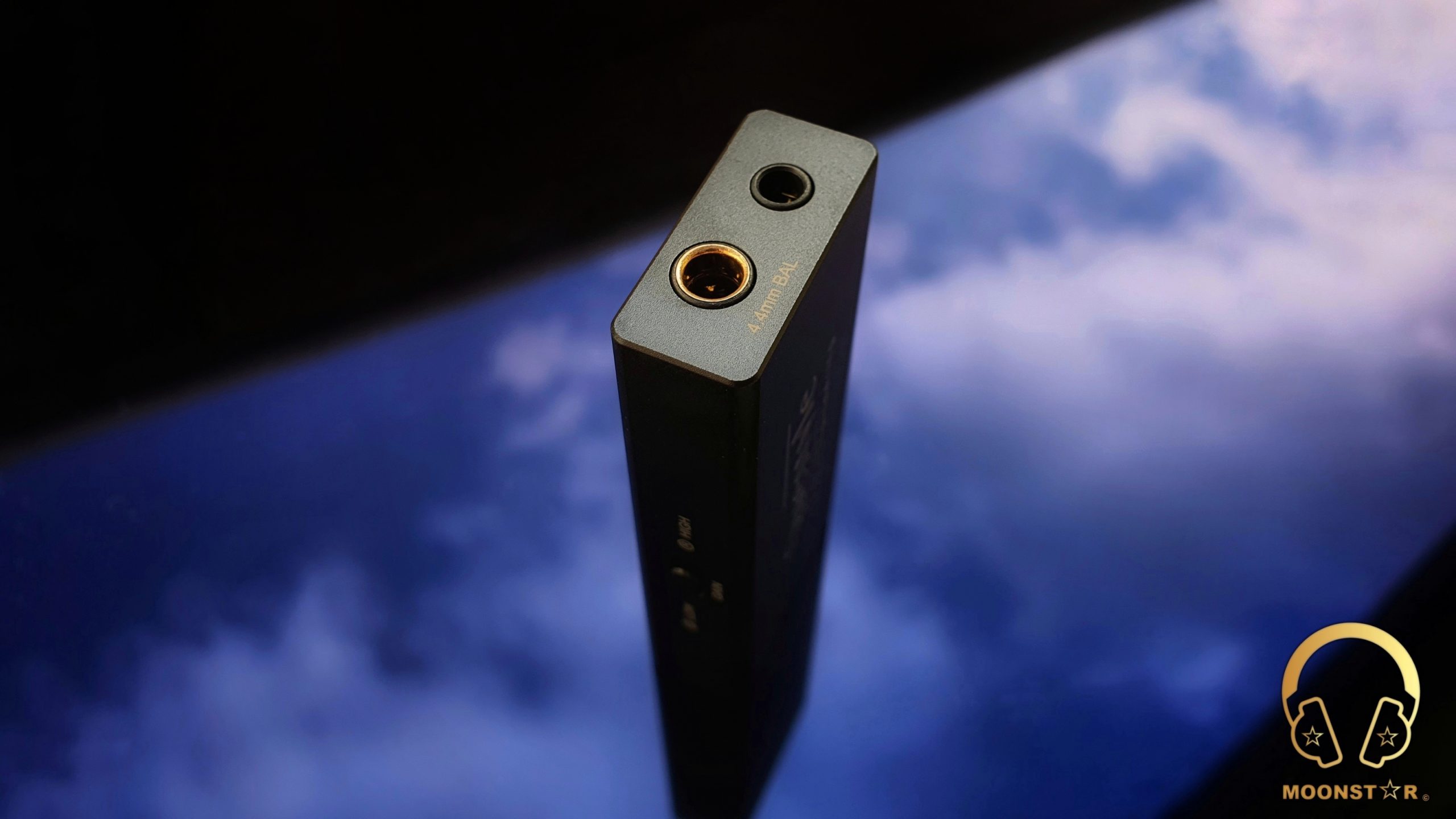
The rear surface of the M15 ultra-portable USB DAC/Amplifier features the Questyle logo/branding.
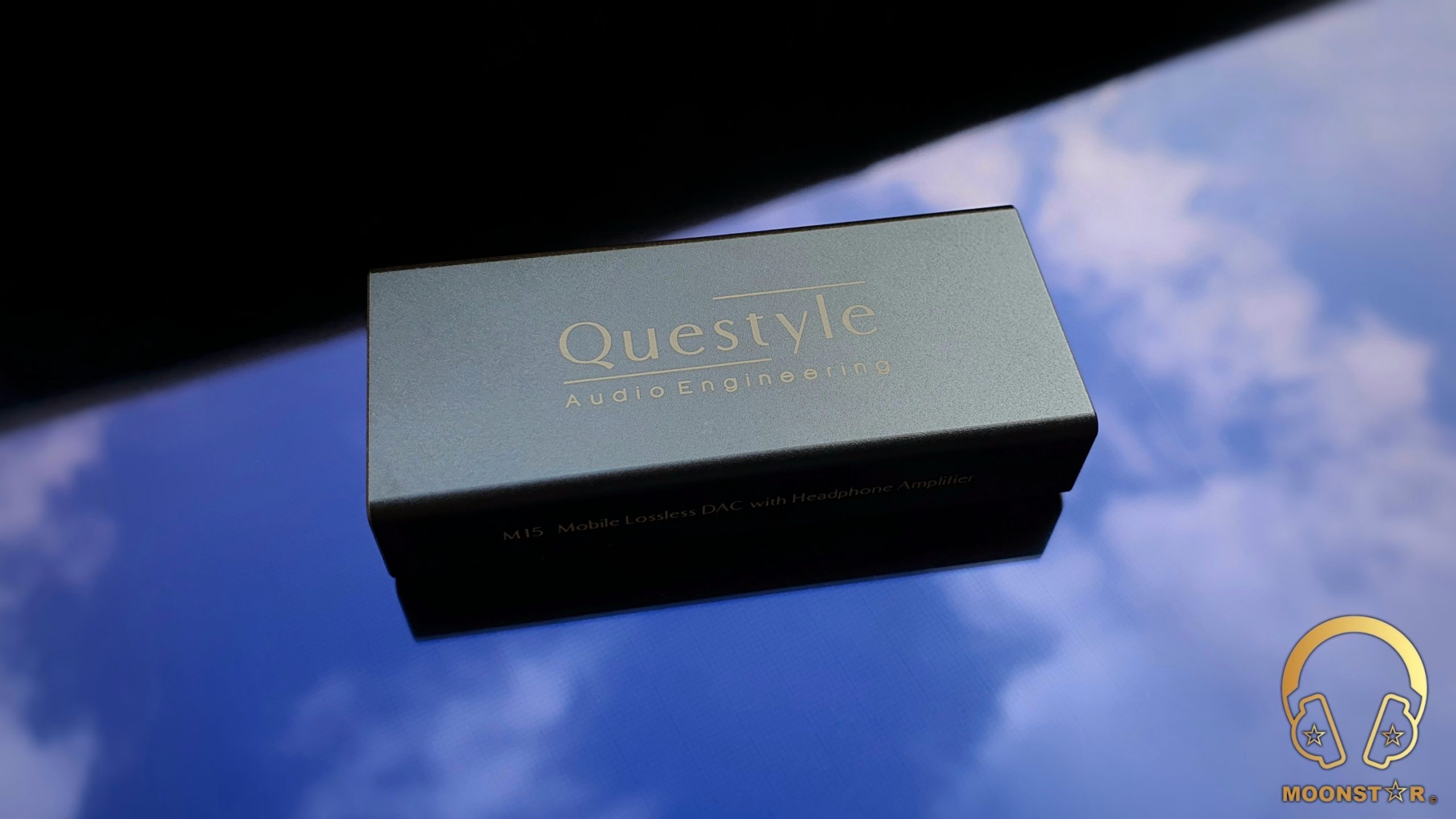
On the top of the device is the USB Type-C DATA port that is dedicated for the digital data transfer.
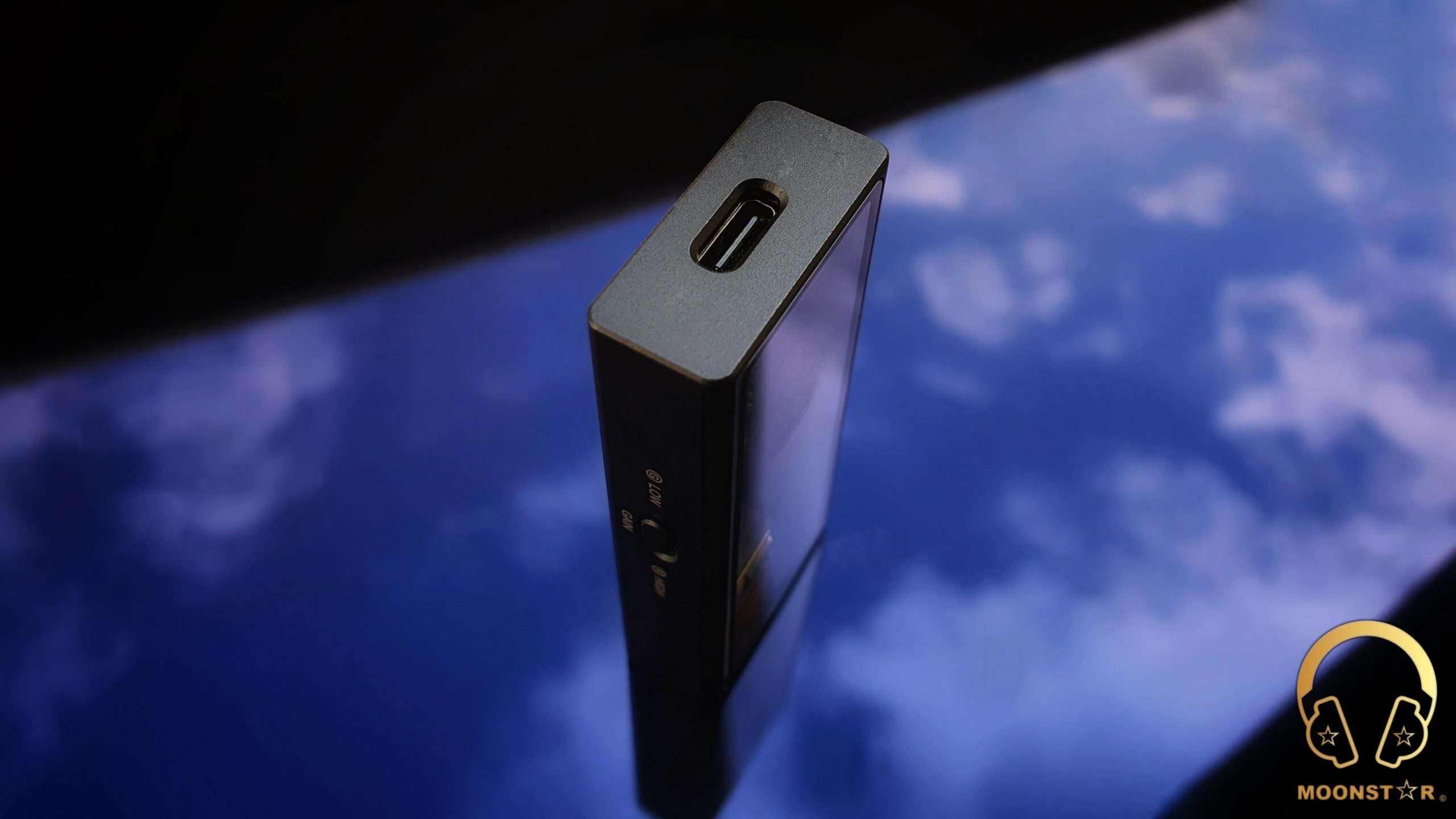
The overall build quality of the Questyle M15 and the cables is of high quality that fulfils my expectations from an audio gear at this price level.
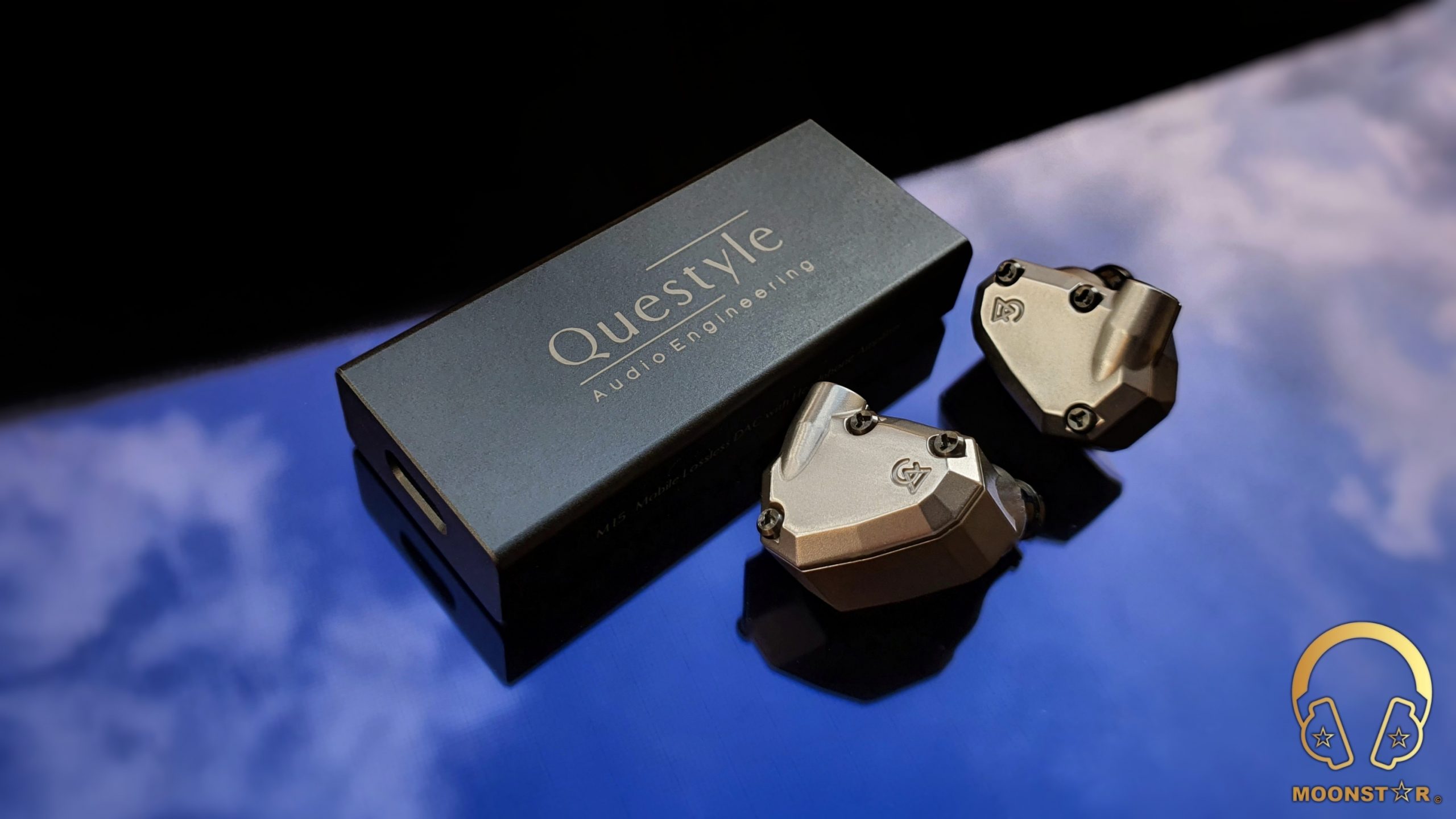
Technical Specifications:
- DAC chip : ESS ES9281AC
- Frequency Response : ±0.1dB (20Hz-20kHz)
- THD+N : 0.0003%
- SNR : -130dB
- Output power : 3.5mm: 11.97mW @300Ω, 4.4mm: 22.60mW @ 300Ω
- PCM : up to 384kHz (16/24/32Bit)
- DSD : up to Native DSD256 (1Bit 11.2MHz)
- Dimension : 61.8[L] x 27.2[W] x12[D] mm
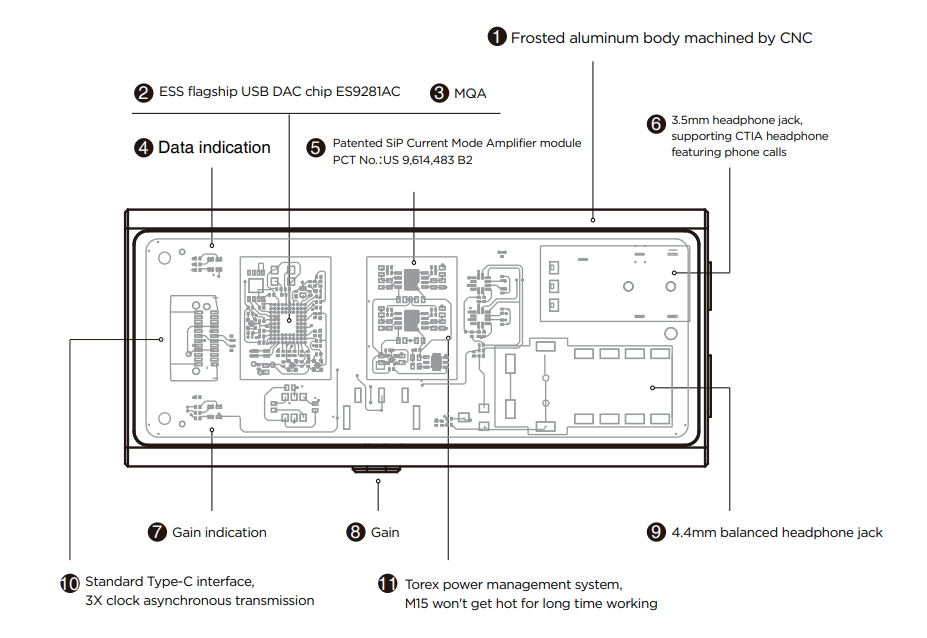
Hardware & Software Features:
The Questyle M15 is an Ultra-Portable USB DAC/Amplifier that offers some impressive hardware specs such like the ESS ES9281AC DAC Chip, TOREX High-Efficiency Power Management Unit and two of Questyle’s patented CMA (Current Mode Amplification) SiP modules.
A) DAC (Digital to Analog Converter):
The M15 features ESS Technologies ES9281AC flagship DAC Chip, which is a feature rich 32bit 2-Channel Digital to Analog Converter that utilizes the critical acclaimed ESS patented HyperStream II architecture. The device offers an impressive SNR (Signal to Noise Ratio) of -130dB and a decent THD+N (Total Harmonic Distortion) of only 0.0003%.
The Questyle M15 support sampling rates from 16, 24, 32Bit, 44.1, 48, 88.2, 96, 176.4, 192, 352.8, 384kHz and up to Native DSD 256 (1Bit 11.2MHz).
The LED Indicator that is visible under the transparent front panel of the M15 gives information’s about the data status, which are list below;
- Green: Sample rate is 48kHz or less.
- Red: Hi-RES lossless files up to PCM 88.2kHz~384 kHz & Native DSD64~DSD256.
- Magenta: The M15 is performing the final unfold of an MQA Core stream.

B) Connectivity:
Inside the box are two low profile USB cables, one USB Type-C to USB Type-C and one Type-A to USB Type-C cable to connect the M15 to your Digital Music source.
Devices offers a plug and play function that supports Android 5.0 and above, Apple iOS devices such like iPhone and iPad, Windows PC’s with Win10 1803 and above, and Apple computer with MAC OS.
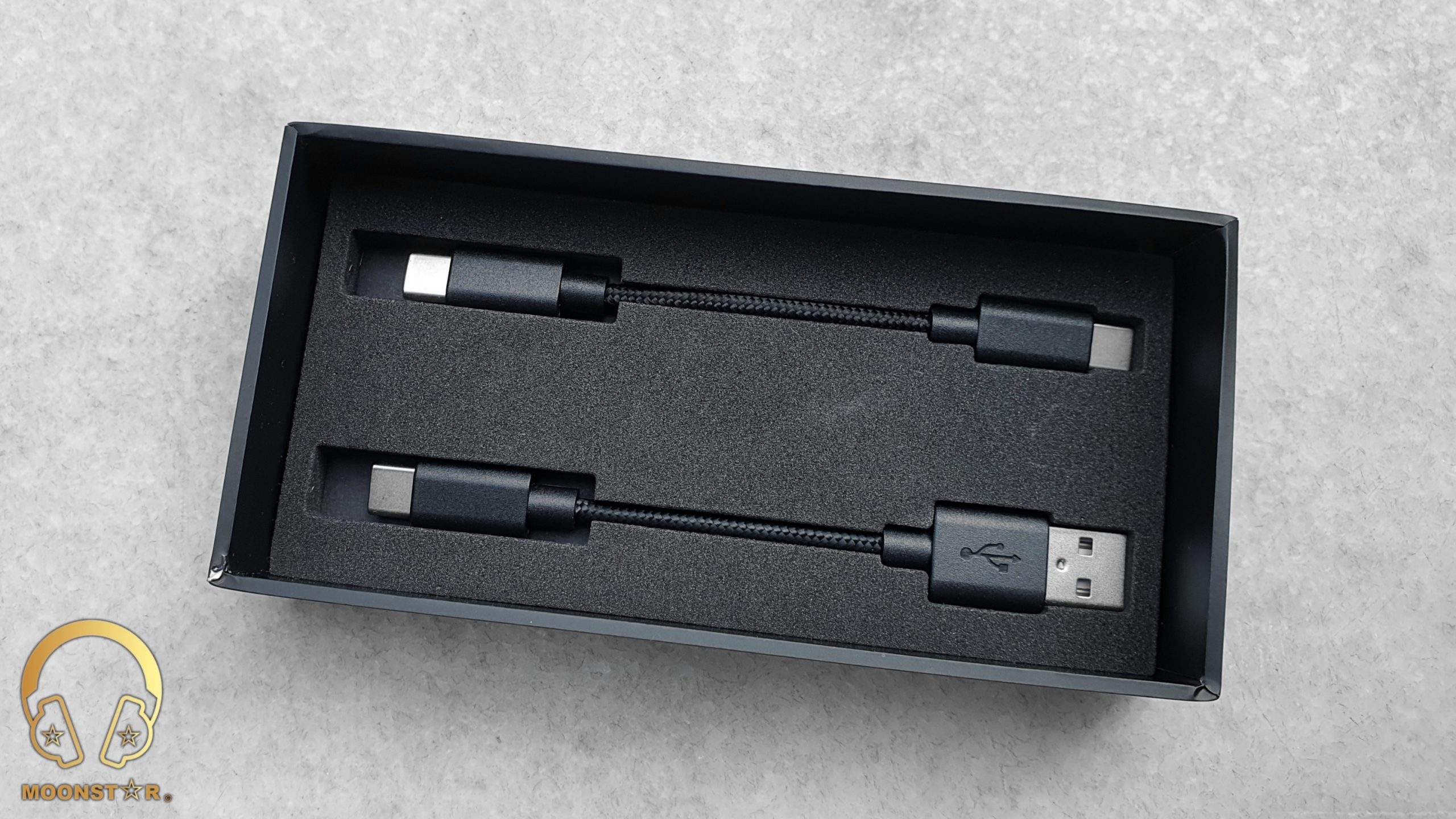
C) Amplification & Background Noise:
The Questyle M15 is a very powerful device especially for an Ultra-Portable USB DAC/Amplifier thanks to the use of its patented SiP modules, for a total of four CMA AMP engines. This quadruple drive amplification circuitry gives enough out power to drive even high demanding planar headphones such like the HiFiMAN Sundara or SIVGA P-II.
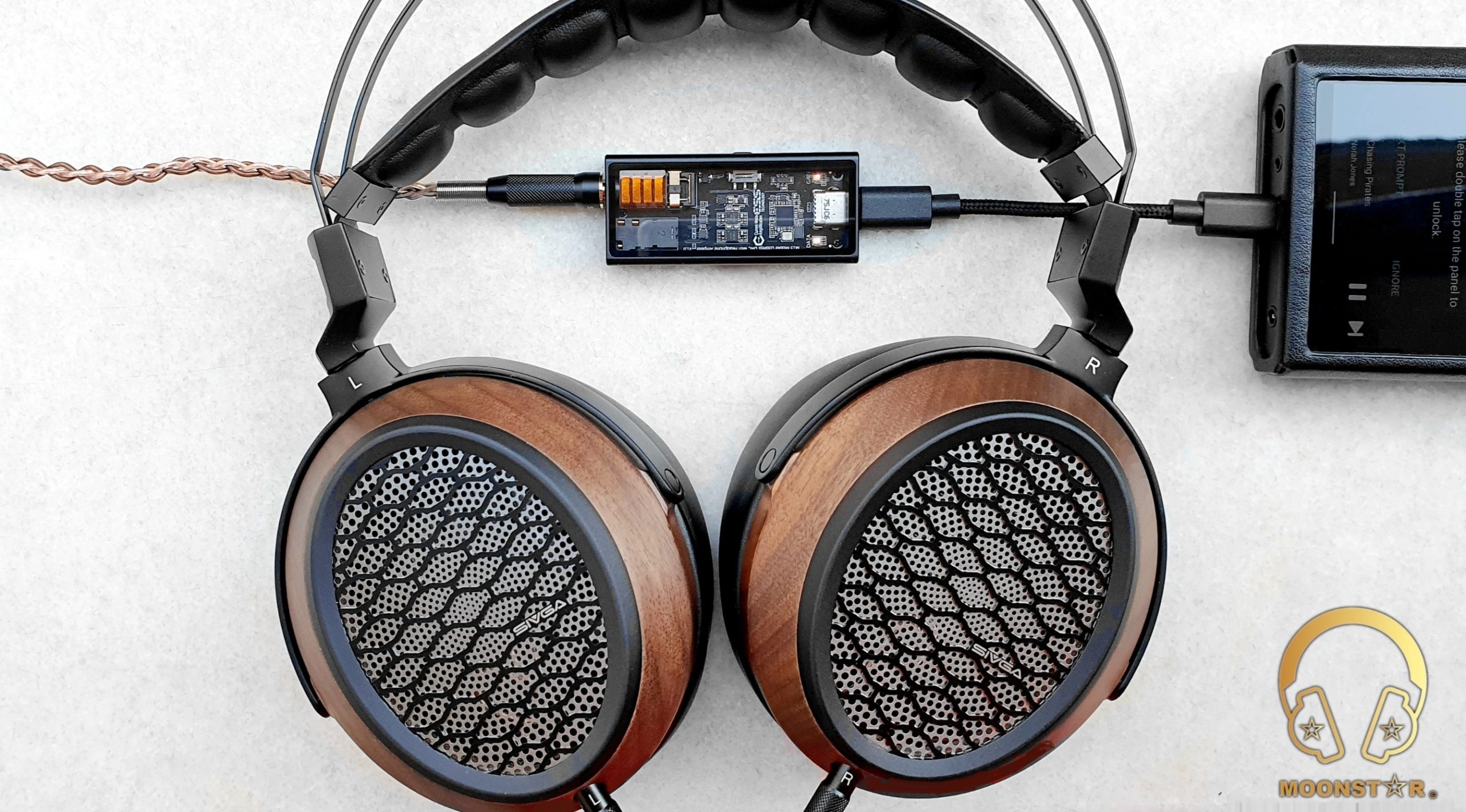
Questyle’s Current Mode Amplifiers are characterized by their small footprint, low voltage operation, and minimal power consumption. Current Mode amplification offers also a low impedance (according to Questyle that is not listed on their specs), a bandwidth up to 1MHz and a Total Harmonic Distortion of 0.0003%.
Here are some Technical specs about the output power of the Questyle M15:
- 3.5mm: RL=300Ω, Po=11.97mW, Vout (Max) = 1.895Vrms, THD+N=0.00045%
- 4.4mm: RL=300Ω, Po=22.60mW, Vout (Max) = 2.624Vrms, THD+N=0.00057%
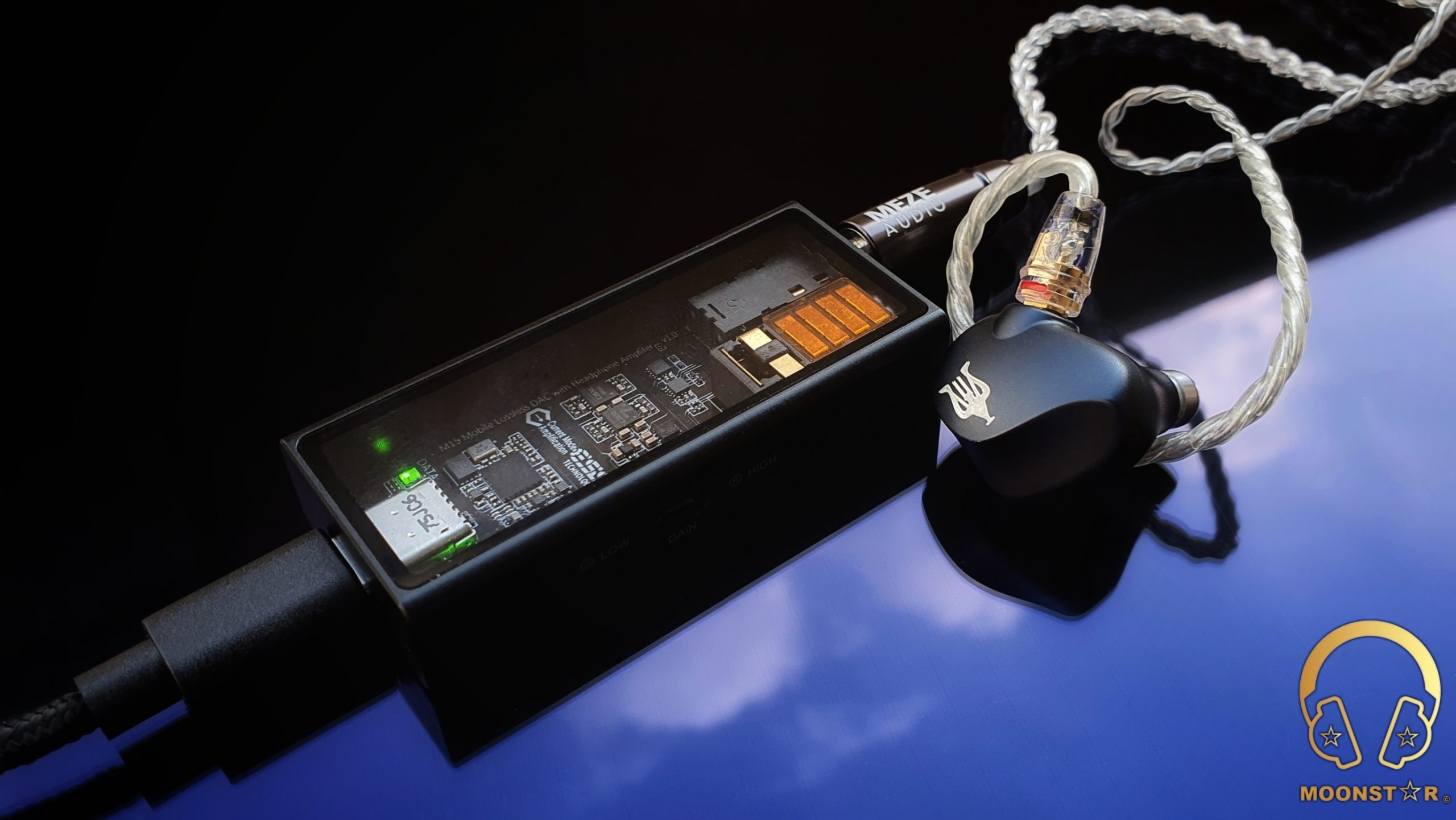
D) Power Consumption & Overheating Performance:
The Questyle M15 is equipped with the TOREX High-Efficiency Power Management Unit to archive a relative low power consumption to increase the battery life of your source, which was quite decent compared to other USB DAC/Amplifiers that I have used before, especially with such a powerful amplification capability.
What I also found quite impressive is the that the Questyle M15 doesn’t overheats after long listening periods, even while powering some of my high demanding full sized open-back planar headphones such like HiFiMAN Sundara or SIVGA P-II.
Equipment’s used for this review:
- DAC/Amplifiers : Questyle M15, Cayin RU6, Shanling UA5
- USB Source : Samsung Galaxy Note10 Plus, Asus TUF FX505DU
- IEM’s : Meze Audio RAI Penta, Campfire Audio ARA, Kinera URD
- Headphones : SIVGA P-II, HiFiMAN Edition XS, HiFiMAN Sunadra
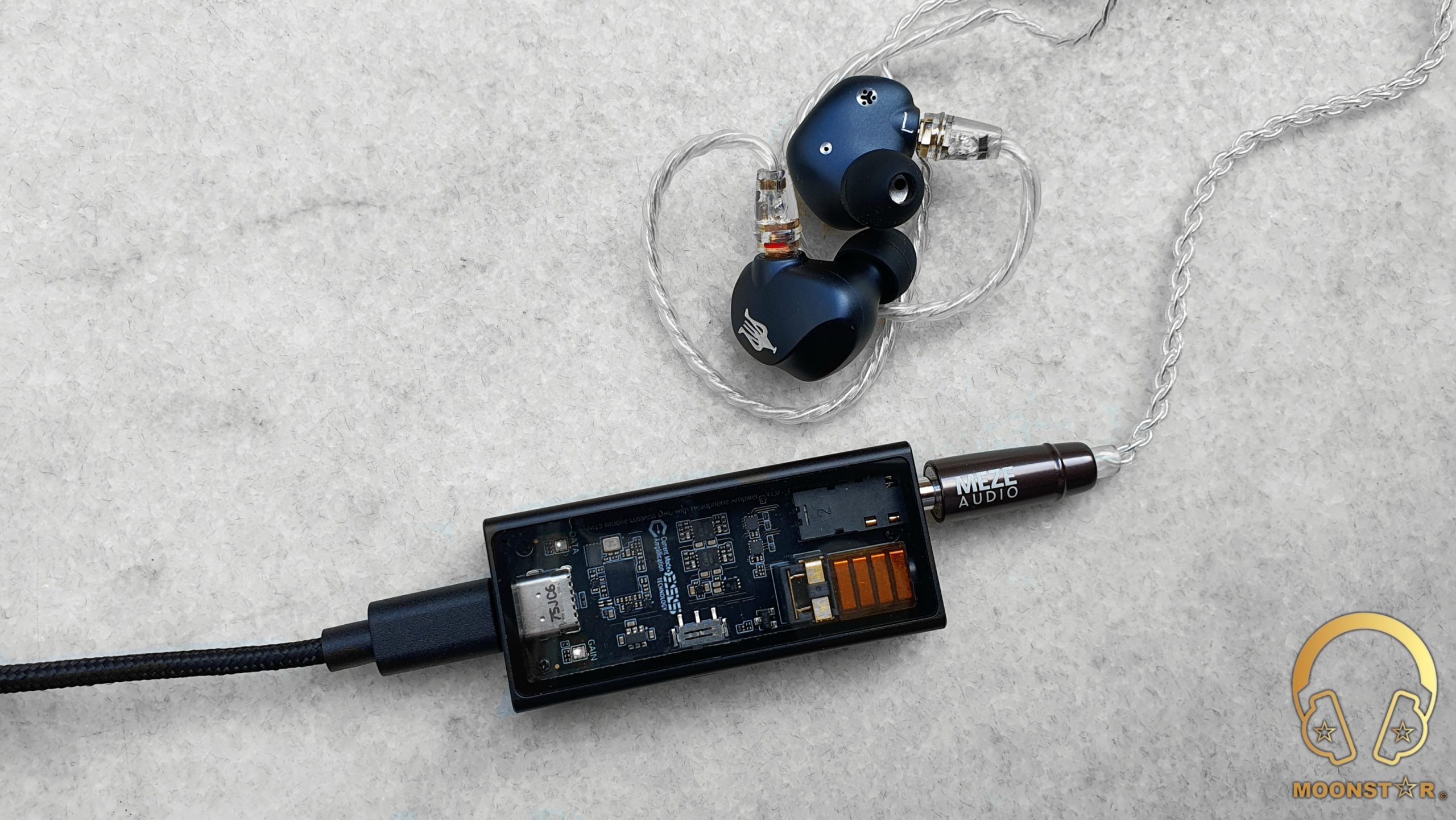
Albums & tracks used for this review:
- Adele – My Little Love (Spotify)
- Randy Crawford – On Day I Will Fly Away (Flac 16bit/44.1kHz)
- Hayley Westenra – Odyssey Album (Dezzer HiFi)
- Dionne Warwick – Walk On By (Flac 16bit/44.1kHz)
- Sarah McLachlan – Angel (Flac 24bit/48kHz)
- Sertap Erener – Aşk (Flac 16bit/44.1kHz)
- Sonya Yoncheva – (Giuseppe Verdi) II Trovatore, ActI (Flac 24bit/44kHz)
- Edith Piaf – Non Je Ne Regrette Rien (Flac 16bit/44.1kHz)
- Diana Krall – So Wonderful (DSF)
- Aretha Franklin – I Say A Little Payer (Flac 24bit/96kHz)
- David Bowie – Heroes (Flac 24bit/192kHz)
- Elton John – Rocket Man ((Flac 24bit/96kHz)
- Barry White – Just The Way You Are (Flac 24bit/48kHz)
- Isaac Hayes – Walk On By (Flac 16bit/44.1kHz)
- Sting – Englishman in New York – (Flac 24bit/48kHz)
- Eric Clapton – Wonderful Tonight (Flac 24bit/96kHz)
- B.B. King – Riding With The King (Tidal Hi-Fi)
- Dave Gahan – Kingdom (Tidal Hi-Fi)
- U2 – Sunday Bloody Sunday (Flac 16bit/44.1kHz)
- Bro Safari, UFO! – Drama (Deezer HiFi)
- Armin Van Buuren – Vini Vici (Flac 16bit/44.1kHz)
- Really Slow Motion – Deadwood (Deezer HiFi)
- Massive Attack – Angel (Flac 24bit/192kHz)
- Lorde – Royal (Flac 24bit/48kHz)
- Toutant – Rebirth (Deezer HiFi)
- Gogo Penguin – Raven (Flac 24bit/192kHz)
- Portishead – It Could Be Sweet (Spotify)
- Charly Antolini – Duwadjuwandadu (Flac 24bit/192kHz)
- Michael Jackson – Billie Jean (Flac 24bit/192kHz)
- Ferit Odman – Look, Stop & Listen (Flac 24bit/192kHz)
- Chopin – Nocturn No. 20 In C-Sharp Minor (Flac 16bit/44.1kHz)
- Fazıl Say – Nazım Oratoryosu (Live) (Flac 16bit/44.1kHz)
- Vivaldi – Le QuarttroStagioni “The Four Season” (Deezer HiFi)
- Otto Liebert& Luna Negra – The River (Flac 24bit/192kHz)
- Lunatic Soul – The Passage (Flac 16bit/44.1kHz)
- Deftones – My Own Summer (Shove it) (Flac 16bit/44.1kHz)
- Photek – The Hiden Camera (Spotify)
- Muse – Hysteria (Flac 24bit/48kHz)
- Metallica – Sad but True (Flac 24bit/96kHz)
- Opeth – Windowpane (Flac 16bit/44.1kHz)
- Megadeth – Sweating Bullets (Tidal Hi-Fi)
- Rush – YYZ (Flac 16bit/44.1kHz)
- Rush – Leave That Thing Alone (Flac 16bit/44.1kHz)
- Slayer – Angel of Death (Spotify)
- Liquid Tension Experiment 2 – Acid Rain (Spotify)
- Yosi Horikawa – Bubbles (Spotify)
The Sound:
The Questyle M15 immediately impressed me with is very natural, pretty organic, balanced and highly transparent overall sound presentation, which also benefits from an ultra-clean & pitch-black background that creates an atmosphere where you can hear even the smallest micro details.
This review has been written after a burn-in period of approx. 80 Hours. I have paired the Questyle M15 with sources like the Samsung Galaxy Note10 Plus and the Asus TUF FX505DU PC. My sound impressions below are mainly based on my experiences over the 4.4mm Balanced output paired with the Campfire Audio ARA, Kinera URD, Meze Audio RAI Penta IEM’s and HiFiMAN Edition XS and SIVGA P-II headphones.
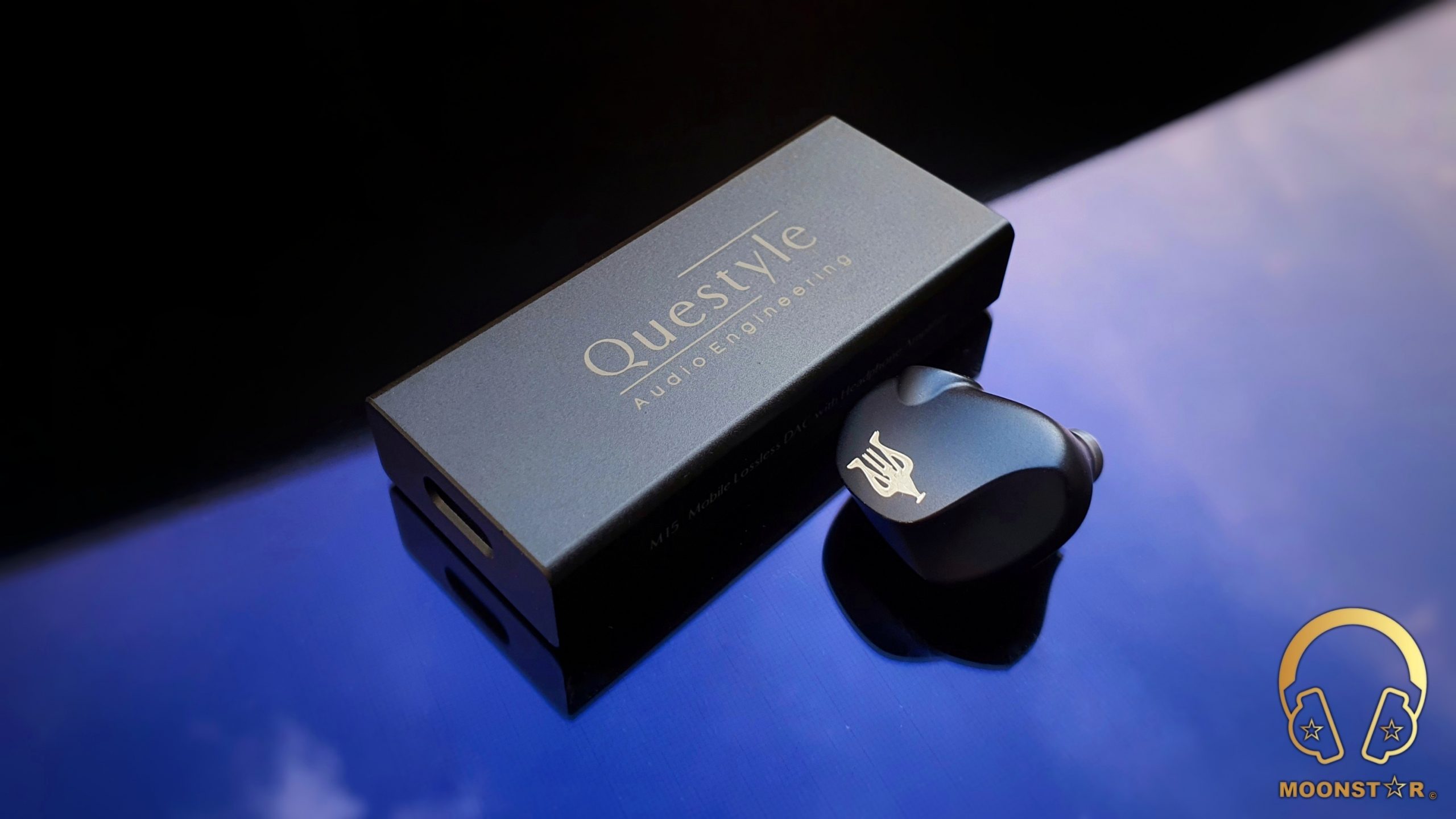
Bass:
The Questyle M15 offers a very natural and balanced bass response along with a decent grade of technical performance. The general bass character of the M15 can be described as highly controlled and quite detailed, from the subbass up to the midbass area.
The subbass region of the M15 reaches pretty low and offers a good sense of rumble and control paired with IEM’s like the Kinera URD or Meze Audio RAI Penta when I do listen to songs like Bro Safari, UFO’s “Drama“, Lorde’s “Royals” or Massive Attack’s “Angel”.
The midbass region is one of the highlights of this ultra-portable DAC/Amplifier that is reproduced with great sense of impact, clarity and authority when I do listen to complex passages Charly Antolini’s “Duwadjuwandadu” or Gogo Penguin’s “Raven”.
Instruments from cellos to bass guitars do have a good level of weight and fullness, while snare and kick drums are represented in a pretty tight and impactful manner when I have listen to the Questyle M15 with high-end In-Ear Monitors like the Campfire Audio ARA and Meze RAI Penta.
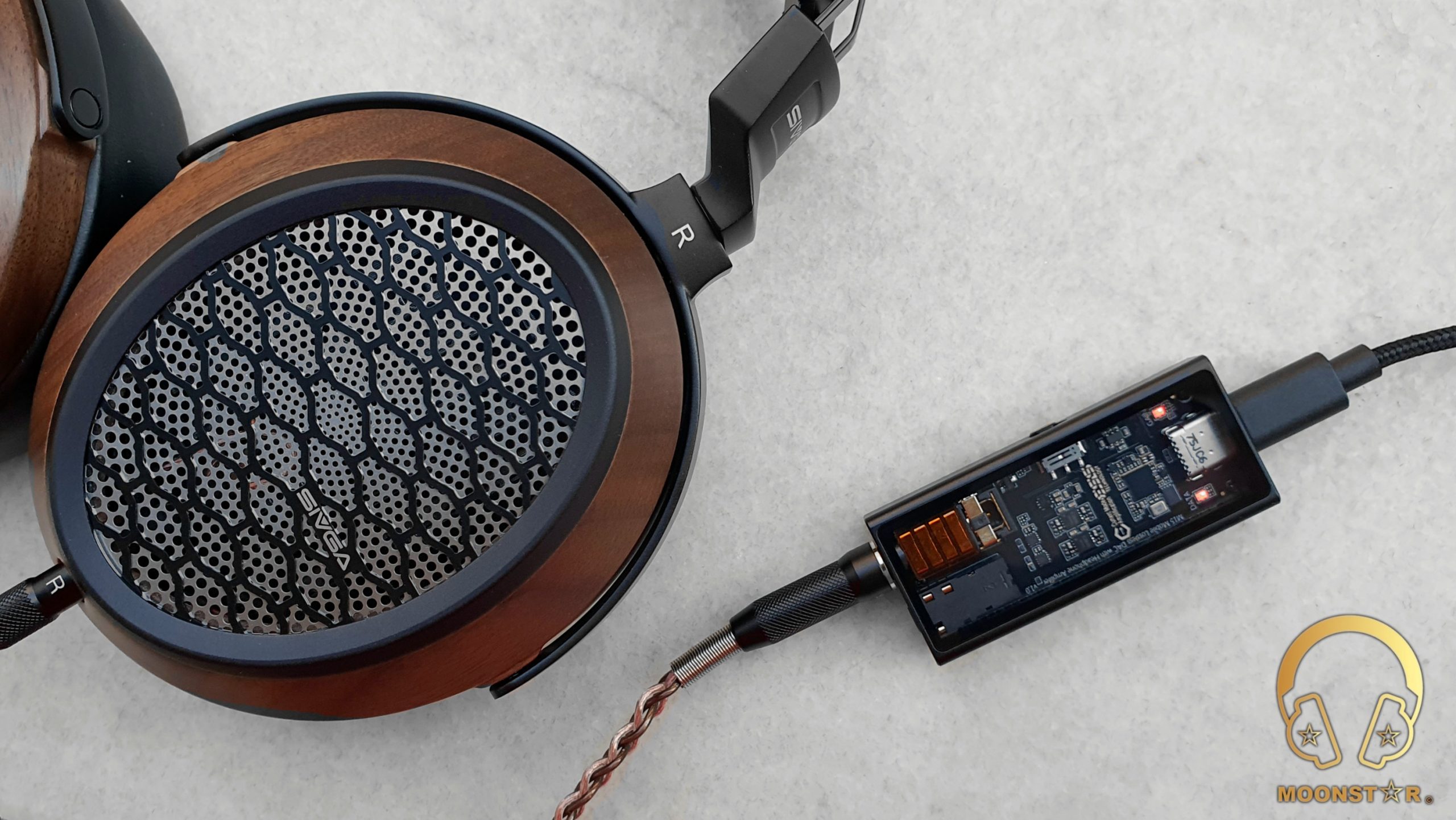
Midrange:
The Questyle M15 shows a very natural, liquid and highly transparent midrange presentation with decent sense of airiness and headroom for instruments and vocals. The general tonality of the midrange is a tad warmer than neutral and pretty organic, which is one of the highlights of this small USB DAC/Amplifier.
The lower midrange of the Questyle M15 offers a pretty good sense of body and depth when I do listen to male vocals like Barry White, Elton John, Dave Gahan or David Bowie or to instruments like acoustic guitars, violas or trumpets. The upper midrange region is another highlight of the Questyle M15 that is reproduced in a quite detailed, dynamic yet controlled manner. Female vocals from Adel to Sarah McLachlan, Edith Piaf to Randy Crawford do sound lively, fluid and emotional, especially when I pair it with IEM’s like the Kinera URD, Meze Audio RAI Penta and HiFiMAN Edition XS headphone.
Instruments on the other hand do have a pretty natural timbre and are shown in highly detailed and well extending manner that surpassed my expectation from such a small and well-priced product. What also surprised me was the sense authority when I have listen to guitar solos with high level of distortion such like Megadeth’s “Sweating Bullets”, Slayer’s “Angel of Deaths” or to Rush’s “Leave That Thing Alone”.

Treble:
The treble range of the Questyle M15 is fluid, highly controlled and detailed. It offers a decent sense of presence and brilliance when I do listen to instruments and soprano voices. The transitions in moment when instruments do play with high level of distortion are reproduced in a quite controlled manner with all IEM’s and headphones that I have listen to it, which is quite surprising for a devices that is equipped with a ESS Sabre DAC. This shows how well the sound engineers have implemented an ESS Saber DAC that sounds both detailed yet controlled in this area.
The lower treble range of the M15 adds to the overall presentation a decent level of clarity, while the extension is pretty successful while listen to instruments like snare drums or cymbals and soprano voices like Sertap Erener and Sonya Yoncheva.
The upper treble region is able to produce a pretty good level of airiness and sparkle when I do listen to instruments such like pianos, hi-hats or cymbals, especially when paired with the Campfire Audio ARA, SIVGA P-II and HiFiMAN Editions XS.
The overall control, extension and detail retrieval of the Questyle M15 is simply stunning, while the intensity and quantity in this area is not too much or too low, which makes it to a very versatile source.

Soundstage & Imaging:
The Questyle M15 has a fairly spacious and airy soundstage atmosphere that is suitable for a precise placement and separation of instruments and vocals. The soundstage of the M15 shows an efficient level of depth and wideness that is not spectacular but sufficient for such an Ultra-Portable USB DAC/Amplifier device.
Comparisons:
Questyle M15 versus Cayin RU6:
The Cayin RU6 is one of the popular Ultra-Portable USB DAC/Amplifiers on the market that gained attention with its discrete R-2R DAC circuit design and powerful output capabilities for its size.
When it comes to the build quality, I can say that both products do offer a premium look and feel. The Cayin RU6 is slightly thicker and longer with dimension of 65×25.4×13.7mm, while the Questyle M15 is a bit slimmer and a bit wider with about 61.8×27.2x12mm. The RU6 has a small OLED screen that gives information about the sampling rate, volume, etc. and comes with physical hardware buttons that are dedicated for volume and mode selection. The M15 on the other hand has no screen or buttons for volume control, but comes with LED light indicators that do give information’s about the sampling and gain status, and is also equipped with a Low/High gain switch that the RU6 not has.
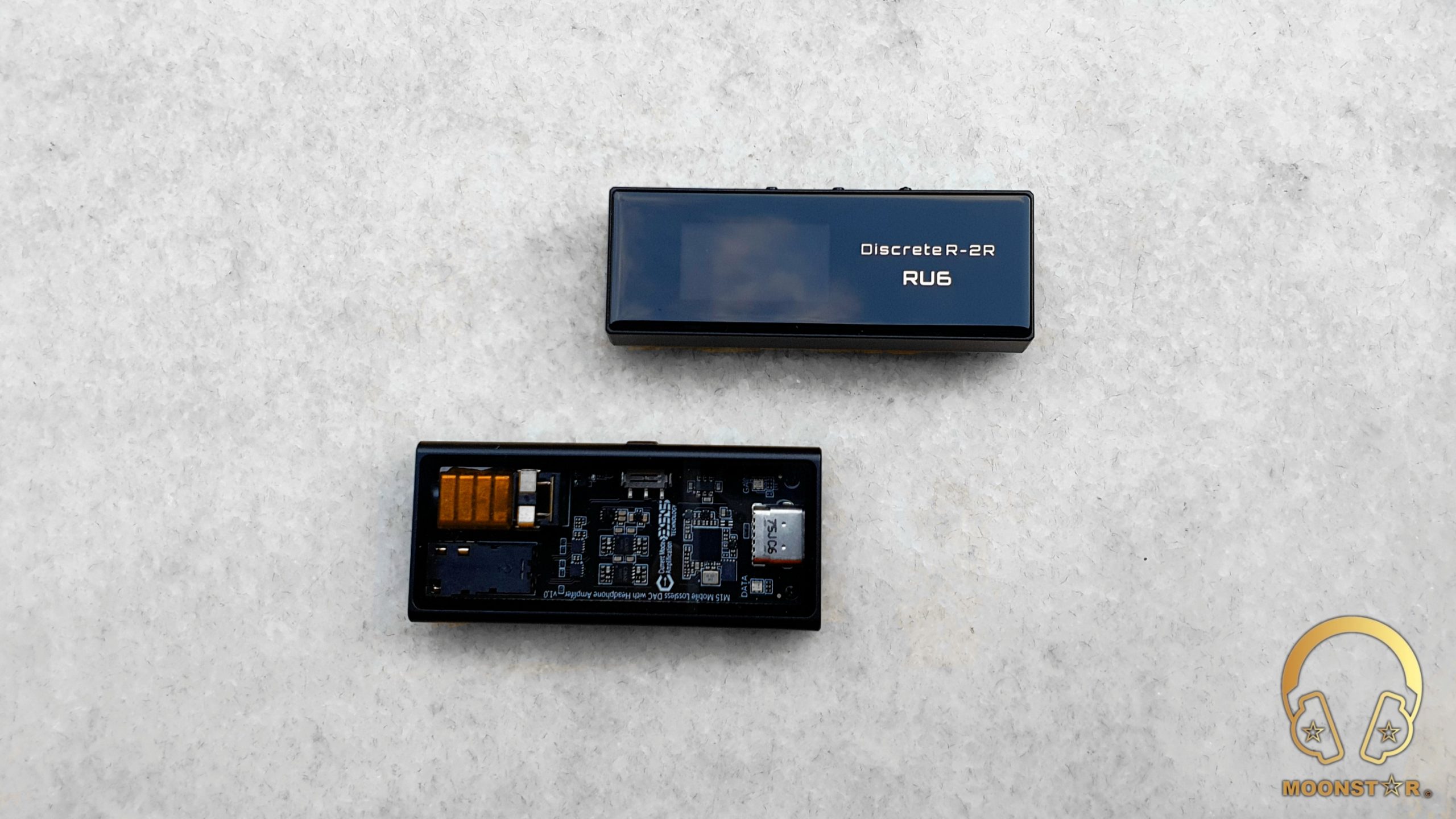
Both devices do offer both 4.4mm Balanced and 3.5mm Single ended outputs. The Cayin RU6 is equipped with its own 24-bit R-2R DAC design, while the Questyle M15 features the ESS ES9281AC DAC Chip. Both are capable to decode Native DSD up to DSD256 and PCM 24 bit/384kHz, while the M15 supports also MQA. The RU6 and the M15 are able to driver full sized open-back planar headphones such like the SIVGA P-II or HiFiMAN Sundara/Edition XS, while the Questyle M15 seems to be even more powerful than the Cayin RU6 especially on high gain. What I don’t like about the analog outputs of the RU6 is that there is an audible background noise, while the M15 is death silent. The EMI shielding of the RU6 seems not to be the best, since it has picks up some interference from my Samsung Galaxy Note 10 Plus, when I put them side by side.
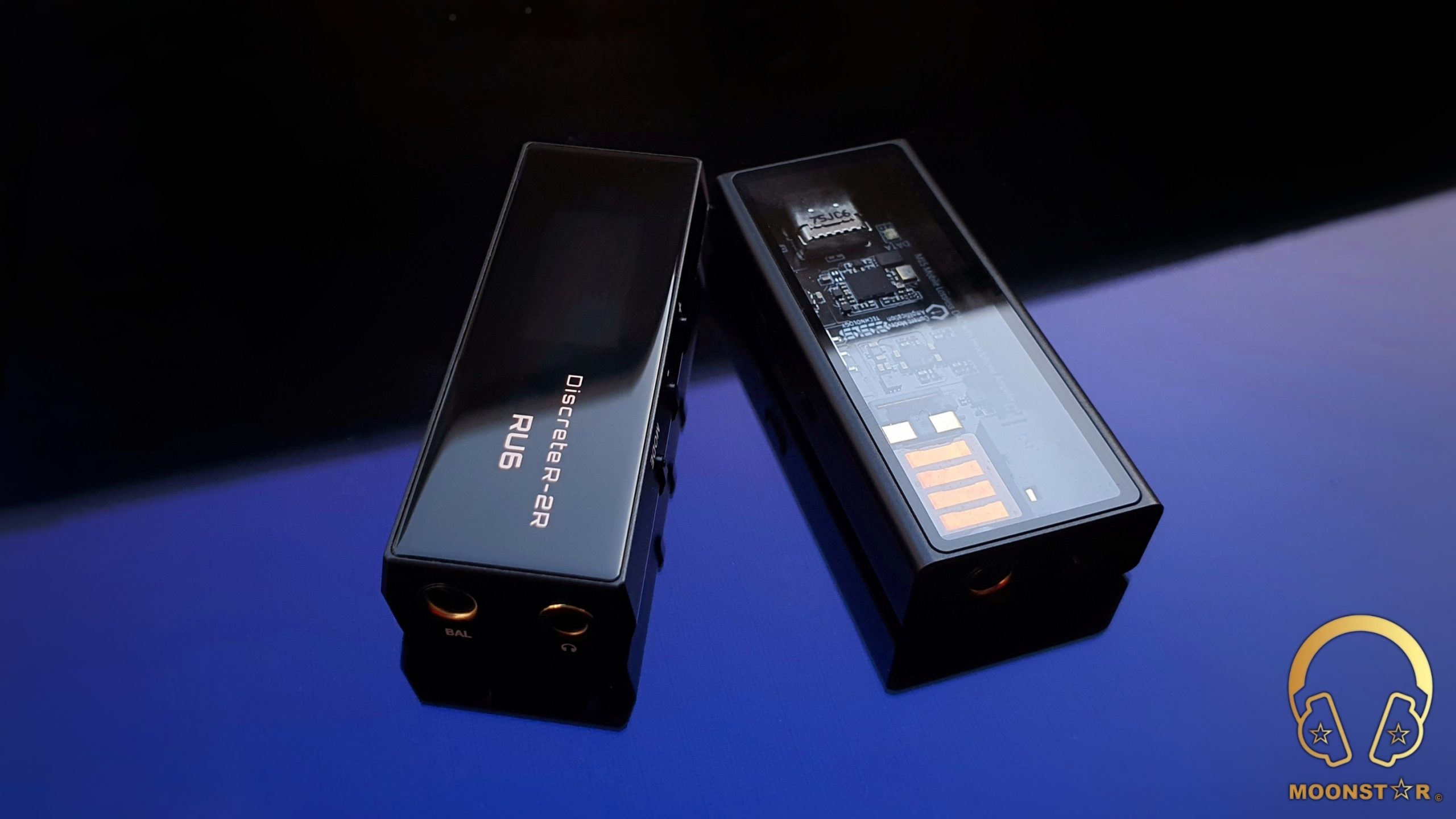
As for the sound, I can say that both devices offer different flavours that can be preferred to each other. The Cayin RU6 shows a slightly warmer tonality that is close to the classical analog sound signature, while the difference is not very high. The Questyle M15 seems to be slightly more neutral in tonality, but has also a pretty organic timbre.
Both the subbass and the midbass region of the Cayin RU6 do show slightly more depth and intensity compared to those of the Questyle M15. However, the M15 has the upper hand in terms when it comes to the clarity, resolution and sense of authority in the lower frequency register.
The midrange of the Cayin RU6 has a pretty warm tonality and highly musical character that I really enjoy. The Questyle M15 on the other hand shows a slightly more natural, neutral and somewhat organic timbre when I do listen to both vocals and instruments. The M15 offers a higher sense of transparency and airiness in this area. The lower midrange of the RU6 shows a bit more body and depth, while the M15 has the slightly edge when it comes to the clarity and resolution in this register.
The upper midrange and the treble region of the Questyle M15 sounds slightly more highlighted and energetic/dynamic compared to those of the Cayin RU6, without to be overly sharp or sibilant. The treble region of both devices sounds in general pretty controlled, while the M15 has the slightly edge when it comes to the level of resolution, extension and separation that was quite audible when I do listen to instruments like cymbals or hi-hats.
The soundstage of both the Cayin RU6 and the Questyle M15 shows an efficient level of depth and wideness, while the M15 has the slightly edge when it comes to the depth and airiness of the stage. Another advantage of the M15 is its pitch black background that makes it easier to hear micro details.
Questyle M15 versus Shanling UA5:
The Shanling UA5 is the company’s new flagship USB DAC/Amplifier that I have reviewed recently. It is equipped with a build-in Lithium Battery that is part of its “Hybrid Power Mode” to reduce the power consumption of the source and to give the components a stabile energy source in order to increase the sound performance.
Both the Shanling UA5 is a premium looking device with a high build quality same like the Questyle M15. The UA5 is relative longer and thicker with dimension of 68x27x13.5mm (versus 61.8×27.2x12mm) while both are equal in terms of wideness. The UA5 comes with a small OLED screen that gives information about the gain mode, volume and sampling rate. Moreover it has a multifunctional wheel for volume adjustment and navigation that the M15 not has.
The UA5 is a pretty powerful device that offers both 4.4mm Balanced and 3.5mm Single Ended outputs like the M15. However the M15 is again more powerful compared to the UA5, especially at high gain, while both devices do offer a quite similar in terms of background noise performance, which is a tad cleaner on the M15. The Shanling UA5 is equipped with 2x ESS Sabre ES9038Q2M DAC chips, which do offer PCM decoding up to 32 Bit/768kHz & Native DSD up to DSD512, while the PCM and Native DSD decoding of the Questyle M15 is limited with PCM 32bit/384kHz and DSD256.
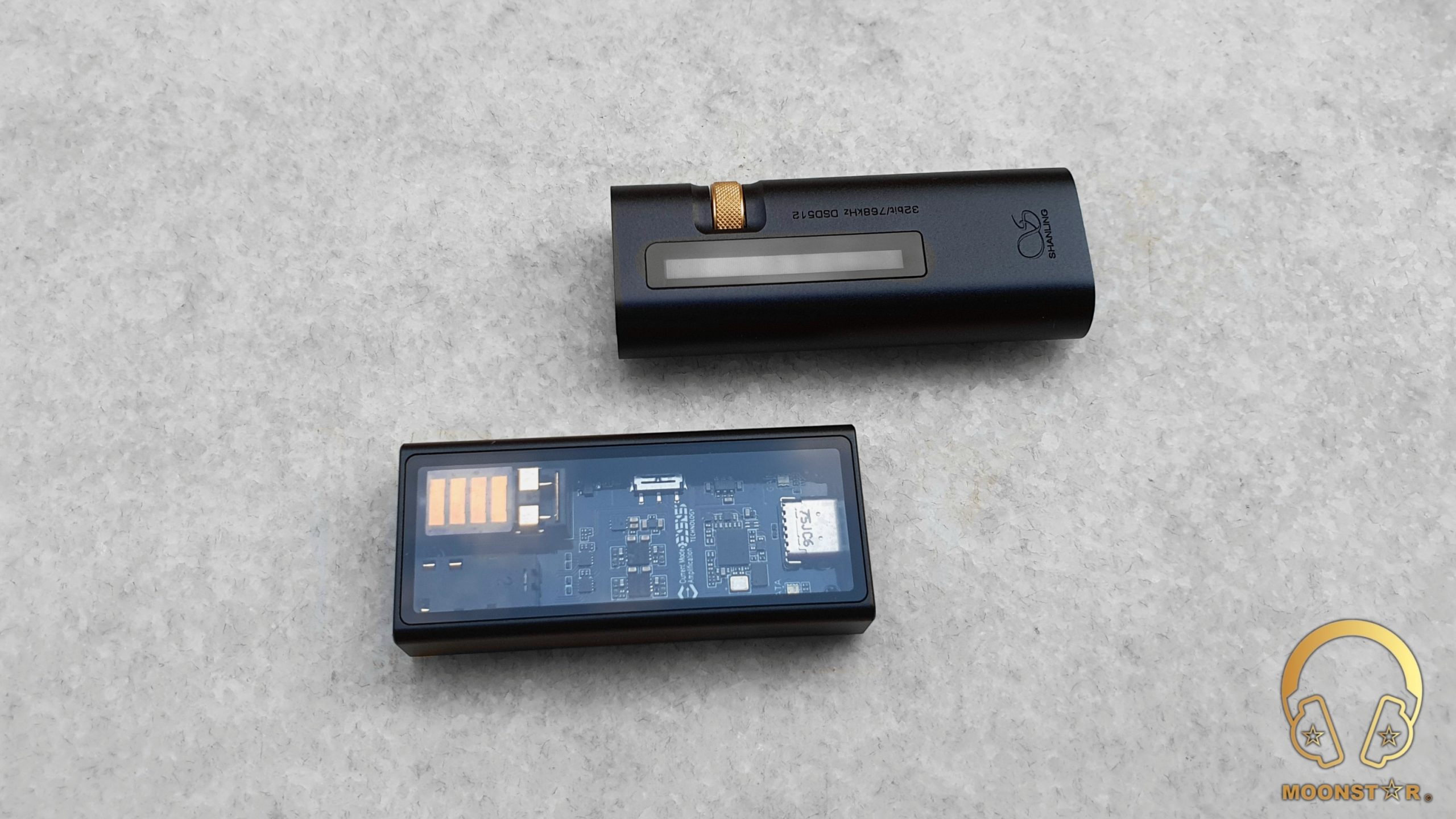
The Shanling UA5 shows a slightly brighter tonality and more energetic overall sound signature, while the Questyle M15 shows tad more neutral tonality and more balanced presentation from the lows to the highs.
The lower frequency region of the M15 sounds more dynamic, fast and has also the upper hand when comes to authority in complex bass passages such like Gogo Penguin’s “Raven” or Charly Antolini’s “Duwadjuwandadu”. Both devices do offer a clean and detailed sub- & midbass presentation, while the M15 is the source with the more fluid and natural character in this area.
The midrange of the Shanling UA5 shows a slightly brighter tonality and a more energetic overall presentation, while Questyle has managed do create a more organic and liquid midrange character from an ESS DAC chip. Both the UA5 and the M15 do offer a pretty transparent and airy midrange atmosphere with decent level dynamics and resolutions that can compete with full sized Android DAP’s with double or even triple the price. The lower midrange of the Questyle M15 shows a bit more body that was audible when I have listen to acoustic guitars and violas, while both do offer a fairly similar performance in terms of resolution in this area.
The upper midrange of the Shanling UA5 is slightly more highlighted yet a bit dry and sharp when I do listen to female voices or to instruments like clarinets, violins or pianos. The Questyle M15 on the other hand sounds pretty controlled and natural in this area, which makes is more compatible with different earphones/headphones and enjoyable for longer listening periods.
The treble range of the Shanling UA5 is slightly more pronounced and energetic compared to those of the Questyle M15 that shows a more balanced and natural presentation in this area. The lower treble region of both devices is detailed, extends pretty well and offers a decent sense of clarity and definition. The upper treble register of the Shanling UA5 is a bit more highlighted and detailed, while the M15 offers a higher level of authority and separation.
The soundstage of the Shanling UA5 is slightly more expansive, while the Questyle M15 shows a better performance when it comes to the depth of the stage.
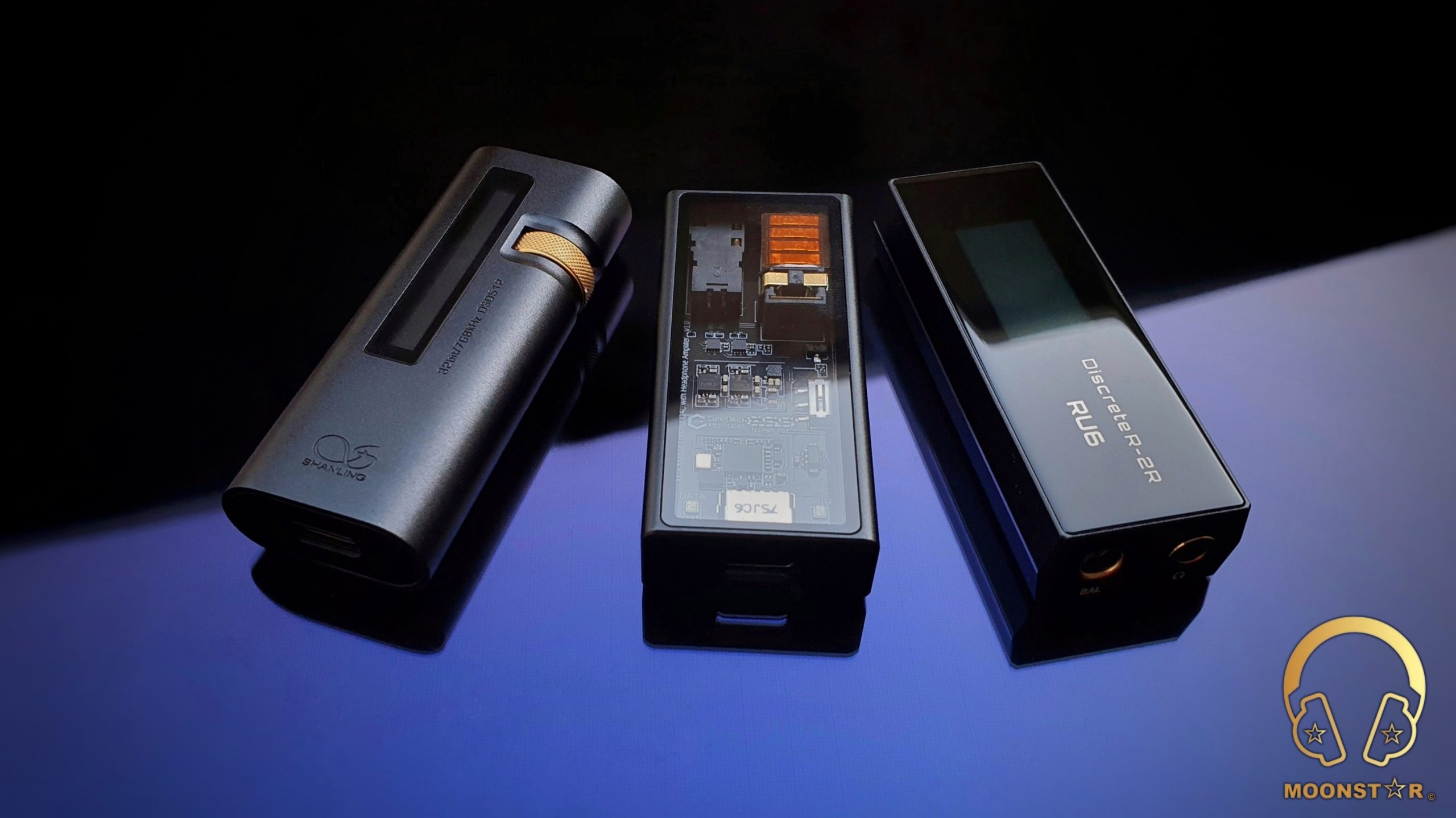
Conclusion:
I have tested many Ultra-Portable USB DAC/Amplifiers so that I can easily say that the Questyle M15 is one of the best available on the market. It immediately impressed me with its unique design, premium appearance and with its very natural, highly detailed and mature sound presentation. Moreover, it comes with both 4.4mm Balanced and 3.5mm Single Ended outputs that do offer plenty of power for demanding headphones and an ultra-clean background for sensitive In-Ear Monitors. All this features are packed in to a small device that can compete with full sized DAP’s that do cost twice or even triple the price that M15 has.
Thank you for the Read!
Moonstar
@klaus2325 You are welcome 
Pirastro
Wow yet another reviewer working for Questyle. These reviews are starting to make me ill.
Moonstar
100+ Head-Fier
Pros: Versatile Sound Character with decent level of Resolution & Dynamics,
Natural Bass Response,
Transparent & Detailed Midrange Tuning,
Powerful & Very Clean Output,
Almost any Type of Analog & Digital in- & outputs (4.4mm/2.5mm Balanced, Coaxial, BT),
Decent Hardware Specs (SD 660 CPU, THX-AAA-78 Module, ES9068AS*2 DAC, etc.),
Build Quality, Display, Design,
Intelligent Volume System,
Good Battery Life,
Premium Leather Case,
Price to Performance Ratio
Natural Bass Response,
Transparent & Detailed Midrange Tuning,
Powerful & Very Clean Output,
Almost any Type of Analog & Digital in- & outputs (4.4mm/2.5mm Balanced, Coaxial, BT),
Decent Hardware Specs (SD 660 CPU, THX-AAA-78 Module, ES9068AS*2 DAC, etc.),
Build Quality, Display, Design,
Intelligent Volume System,
Good Battery Life,
Premium Leather Case,
Price to Performance Ratio
Cons: Larger in size compared to the M11/M11 Pro,
Heavier than the M11/M11 Pro,
Only One Micro SD card slot
Heavier than the M11/M11 Pro,
Only One Micro SD card slot
FiiO M11 Plus Portable Digital Audio Player Review
Introduction:
I am sure that many audiophiles do remember that FiiO released last year the M11 Plus LTD with the AK4497*2 Dual DAC chipset, but since the fire outbreak in AKM’s factory the quantity of any AKM DAC chip is very limited on the market. However, FiiO promised that they do plan to release a M11 Plus with ESS Saber DAC chip in 2022.
The M11 Plus that I will now review for you comes with the latest ESS chipset, that utilizes two ES9068AS DAC’s (Digital to Analog Converter), which do offer an audible performance improvement over its AKM model with better SNR and THD+N values.
The M11 Plus offers also some other remarkable specs like the Snapdragon 660 Octa-Core SoC, THX AAA-78 Amp Module, 5.5” 18:9 bezel-less touch screen 2.5mm & 4.4mm Balanced outs, MQA 8x decoding, Two-way Bluetooth Transmission with LDAC support and many more.

Disclaimer:
I would like to thank FiiO for providing me the M11 Plus as review sample. I am not affiliated with FiiO beyond this review and these words reflect my true and unaltered, opinions about the product.
Price & Availability:
The actual price for the FiiO M11 Plus is 699.99 US$. More information’s can be found under the link below;
Package and Accessories:
The FiiO M11 Plus came inside a black box with FiiO branding on the top, which is wrapped with a fancy looking cardboard sleeve that displays the companies new package design. The cardboard sleeve has a black background and shows the illustration of the M11 Plus and some product related brandings on its surface that do have a nice iridescent effect.

This box is containing the following items/accessories;
- 1 x FiiO M11 Plus Digital Audio Player
- 1 x USB 3.0 Type-C to Type A Charging/Data Cable
- 1 x Coaxial Cable
- 1 x Micro SD Card Slot Removing Tool
- 1 x Leather Case
- 1 x Quick Start Guide
- 1 x Warranty Card
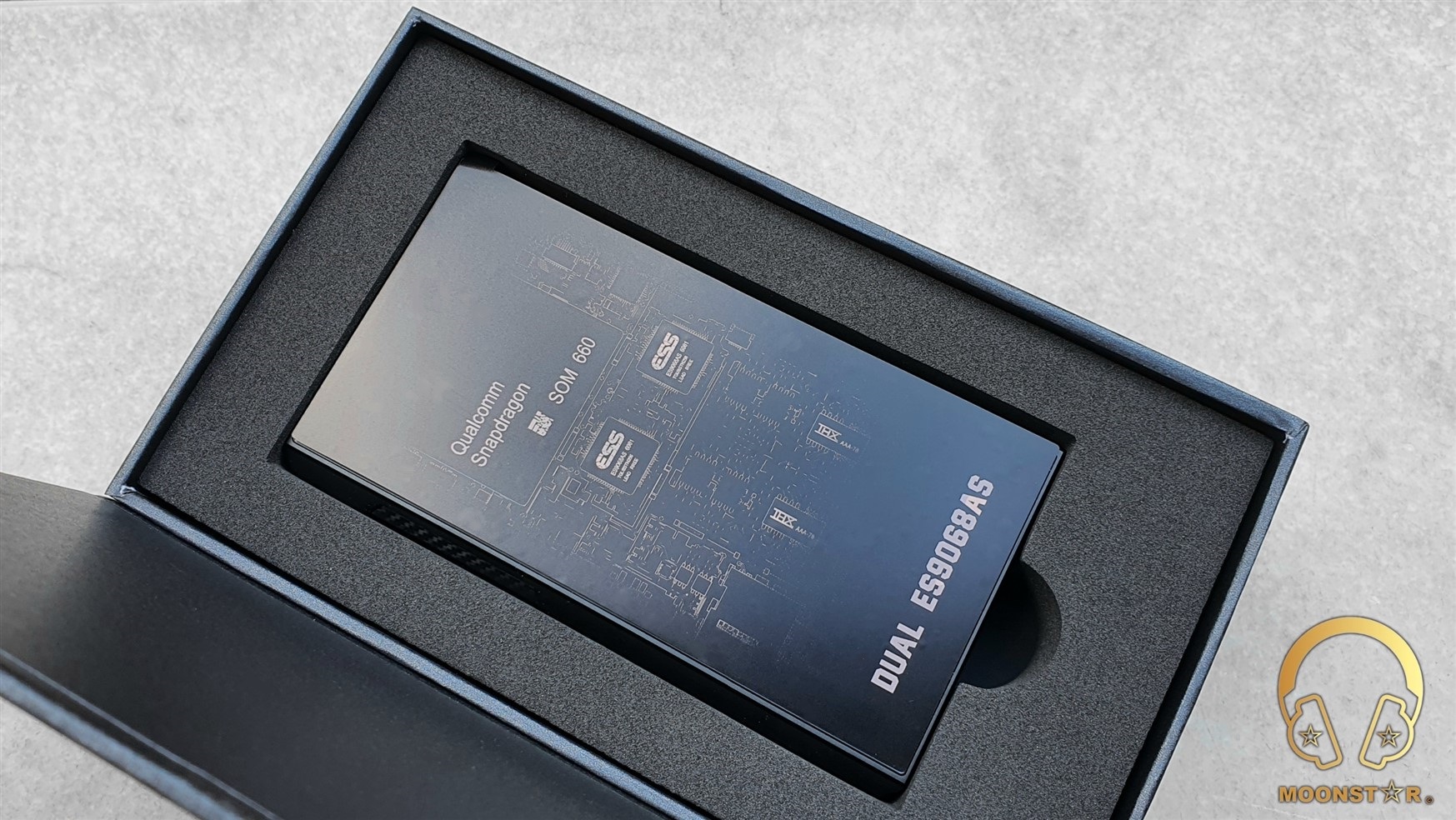
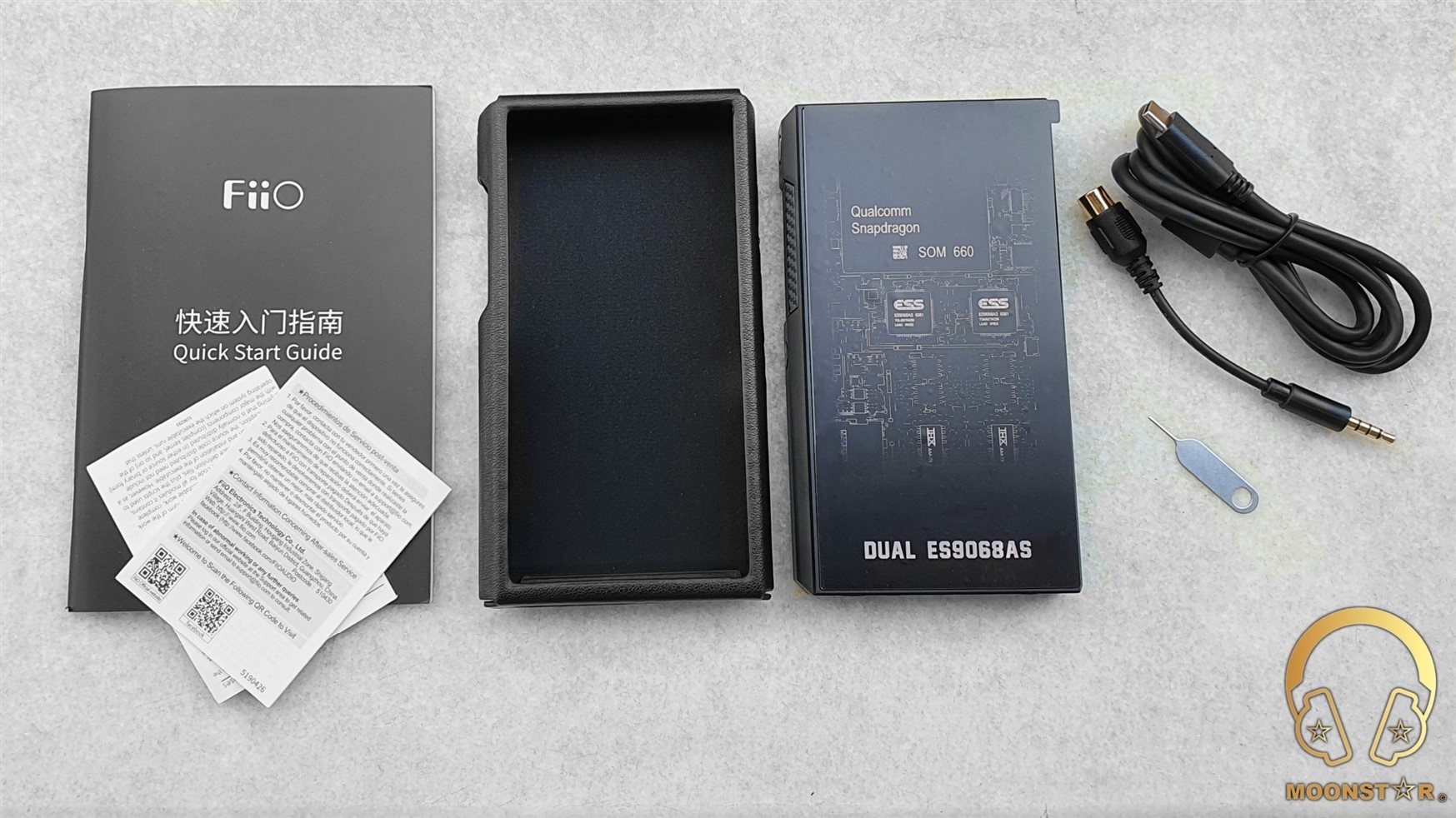
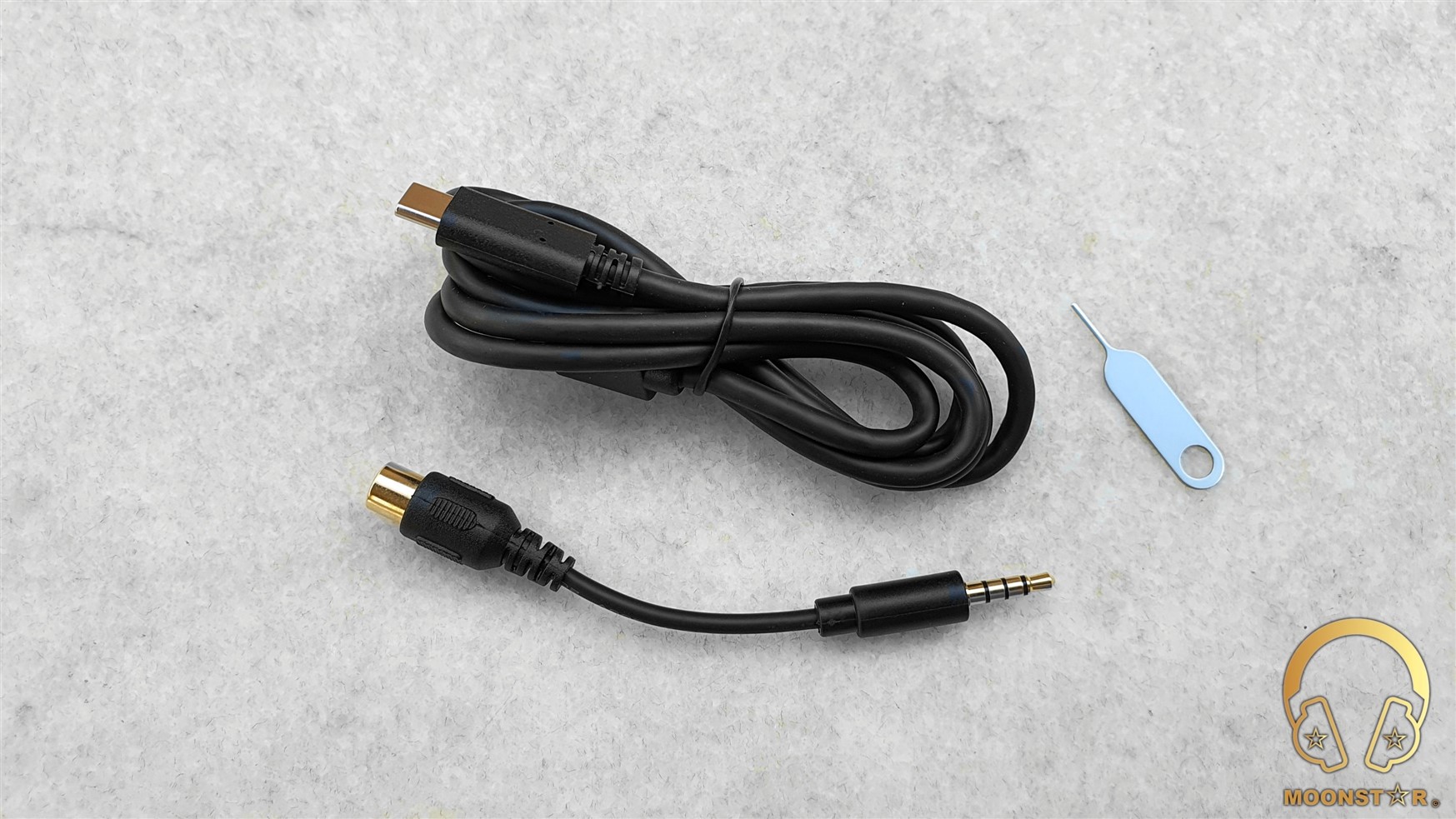
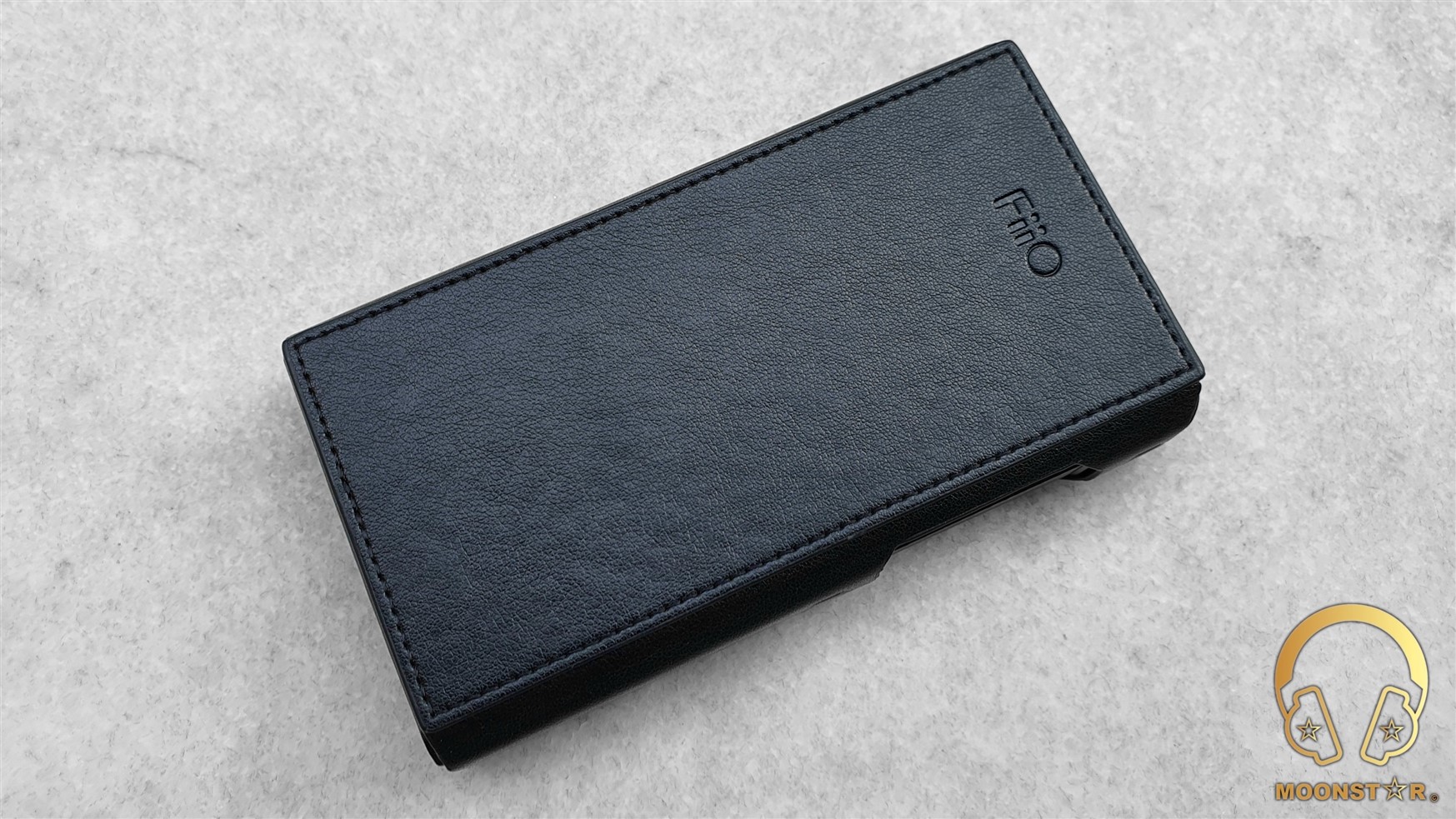
Design & Build Quality:
The M11 Plus adopts FiiO’s 6th Generation Honeycomb design, which stands out with Hexagonal design elements with aggressive edges that gives the device nice futuristic and premium looking appearance.
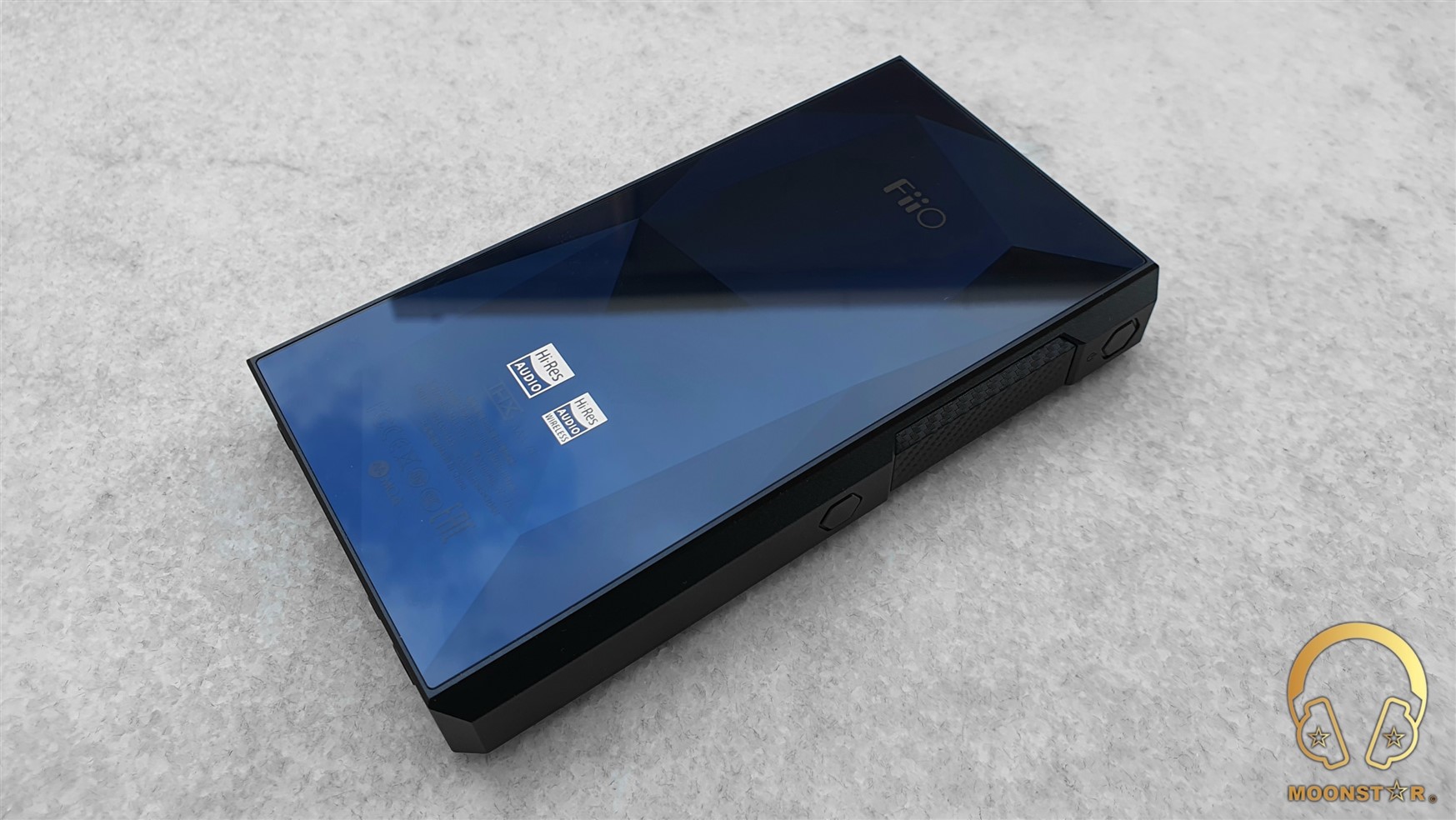
The M11 Plus has dimensions of 136.6×75.7×17.6mm and weights about 295grams, which gives you immediately an impression that you hold something solid and of high quality in your hands.
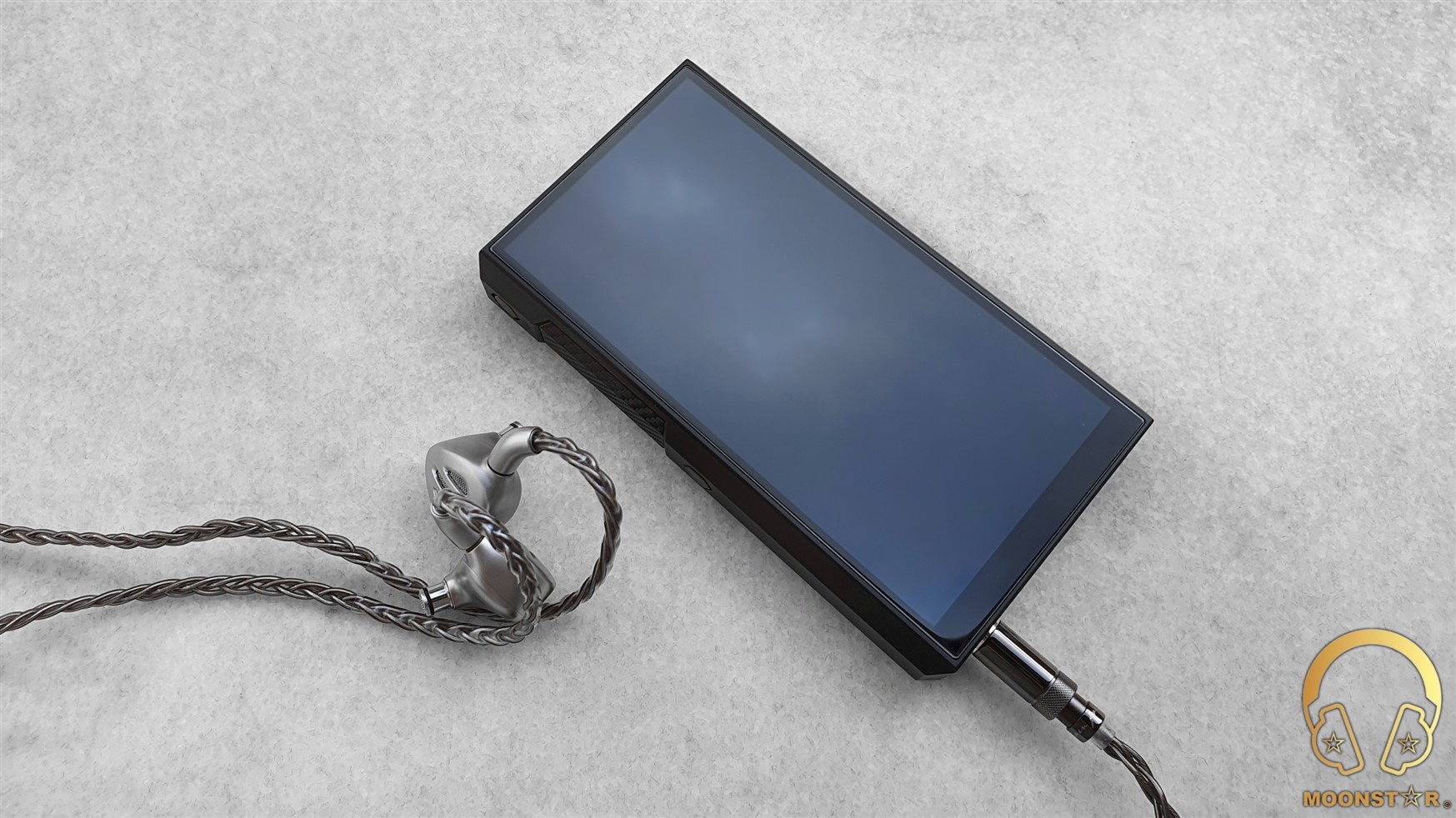
On the front of the device is a gorgeous looking 5.5’’ 18:9 touch screen with a resolution of 720*1440. The display shows a decent screen to body, which comes with a pre-installed glass screen protector that has soft edges with a 2.5D design.
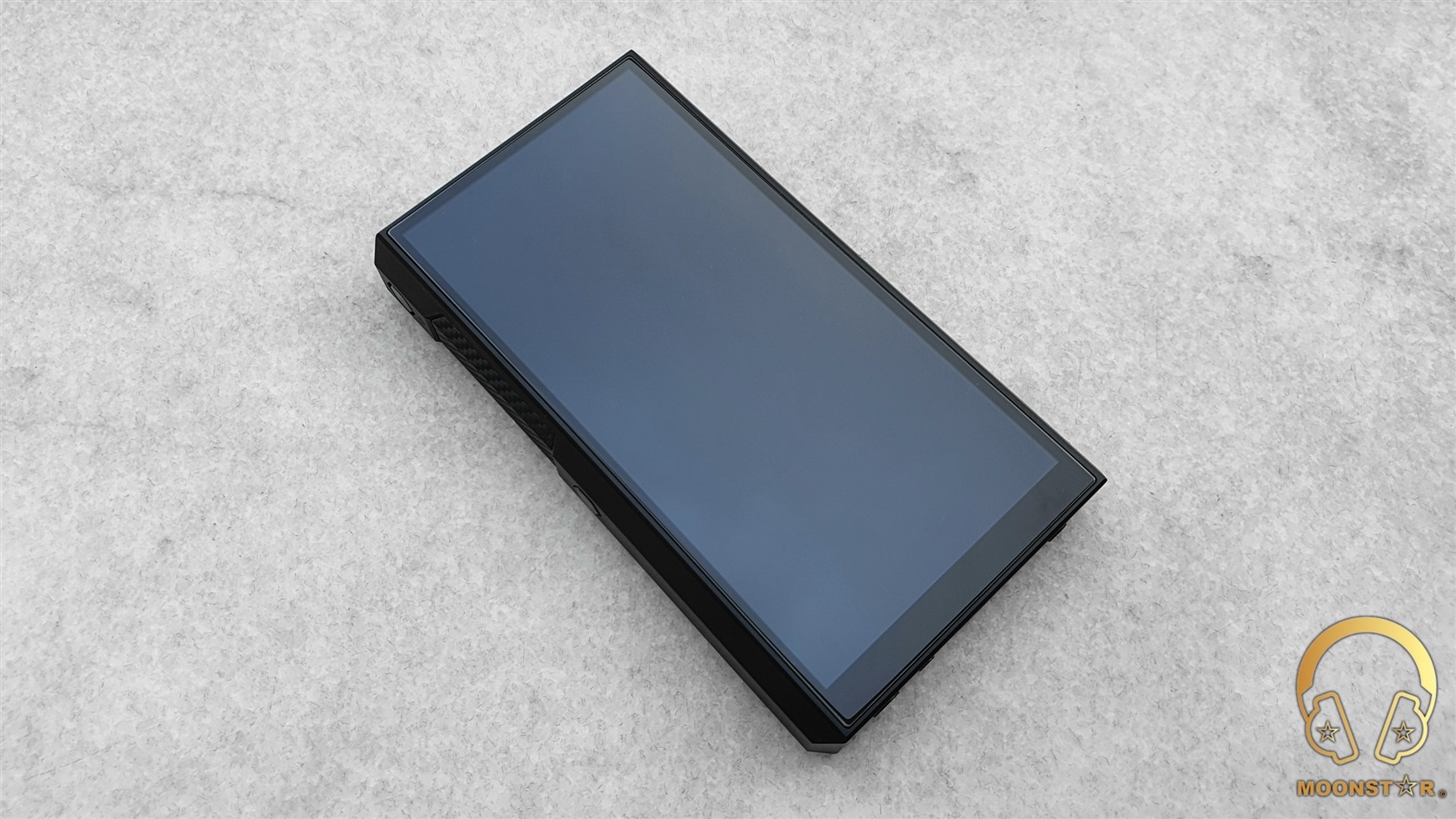
At bottom of the device is the area with many Analog & Digital interface, which features the 4.4mm (TRRRS) & 2.5mm (TRRS) Balanced outputs that do share lineout functions. Here is also a USB Type-C port that utilizes Digital Out, Data (File Transfers) and Charging functions.
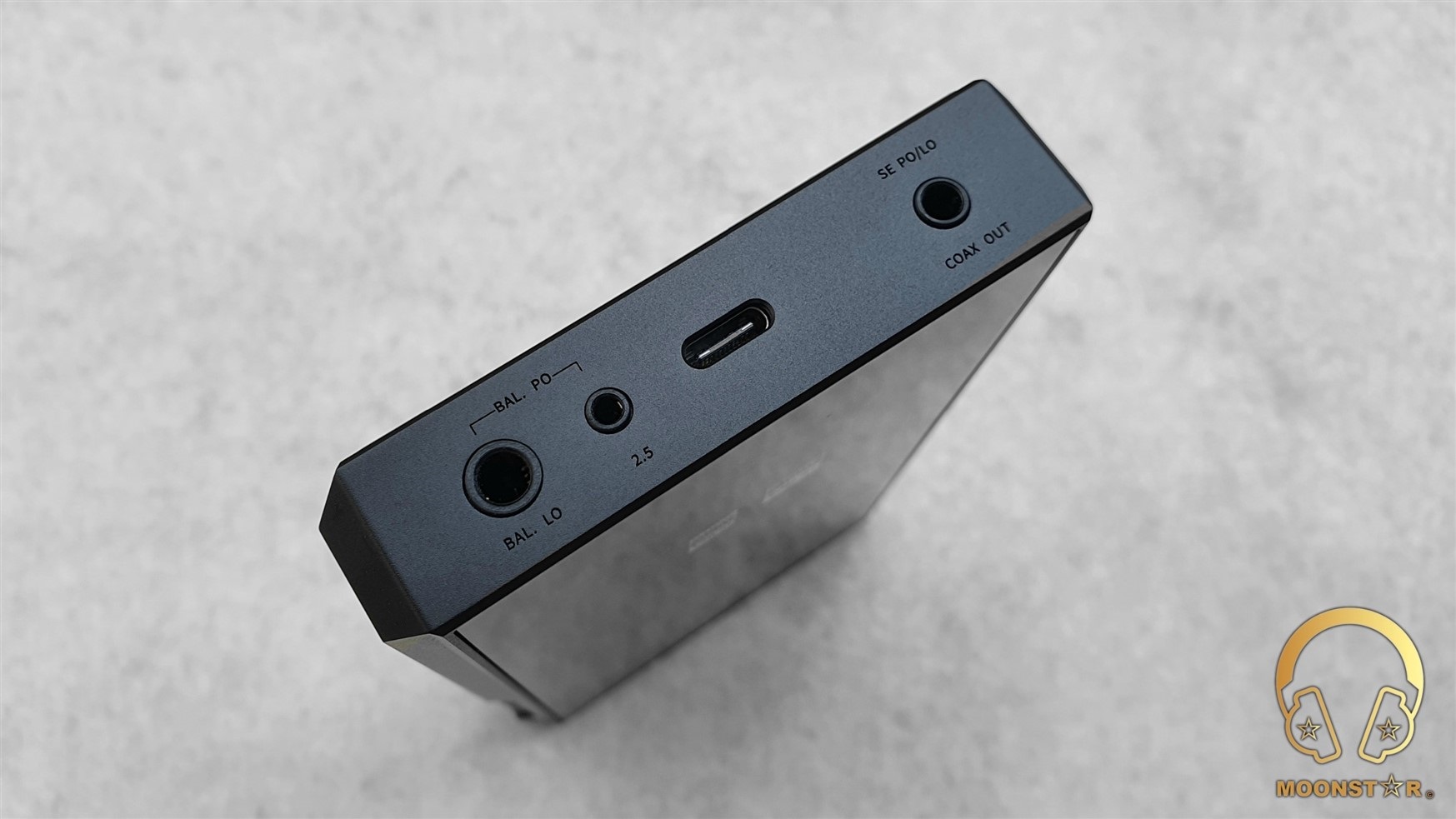
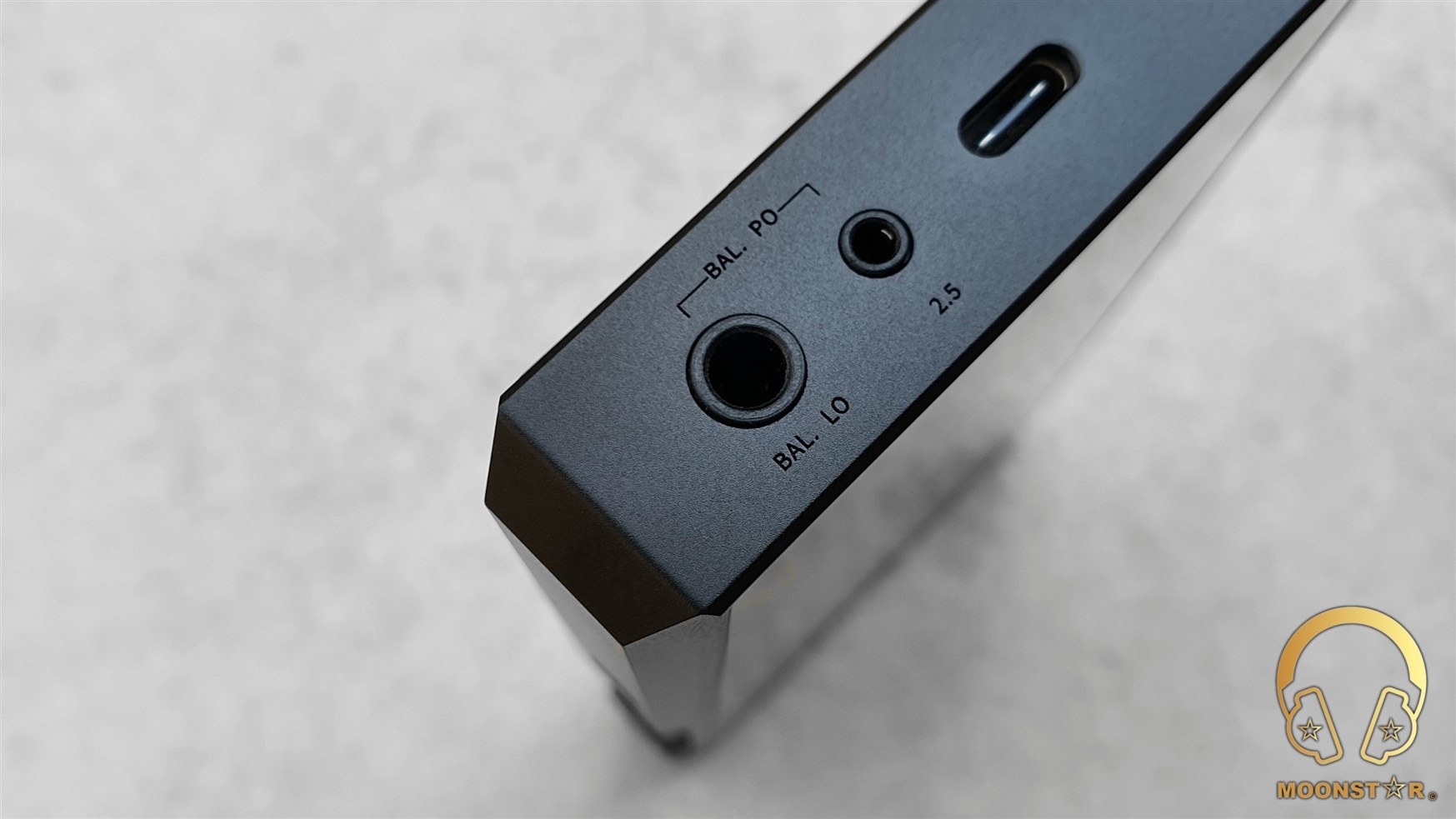
Another Analog output is the 3.5mm Single Ended headphone port that shares Phone Out, Line Out and SPDIF outputs.
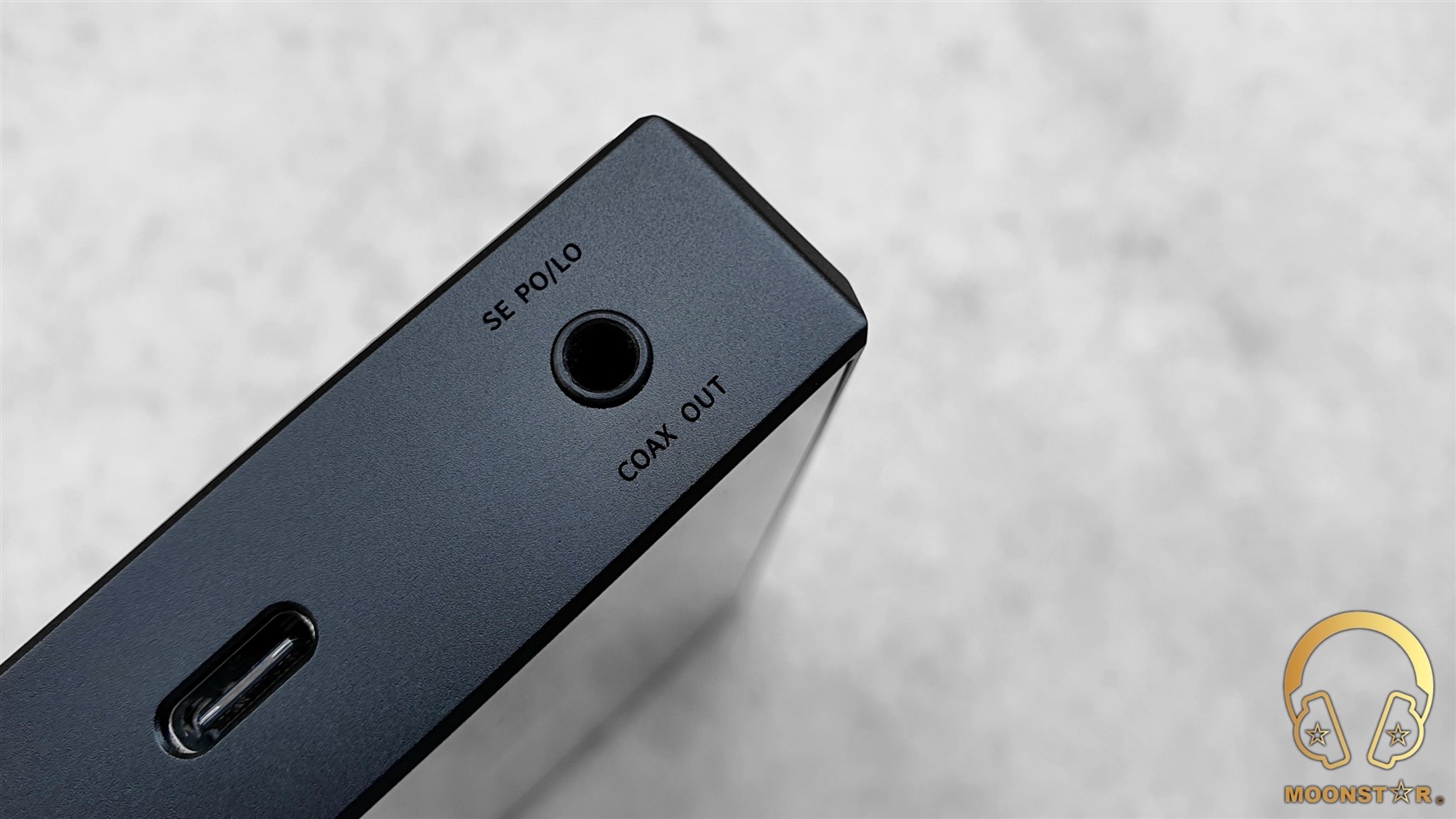
Both the Power/Lockscreen and the Multifunctional button do have hexagonal design, while the Power/Lockscreen button has a nice LED status indicator around the edges.
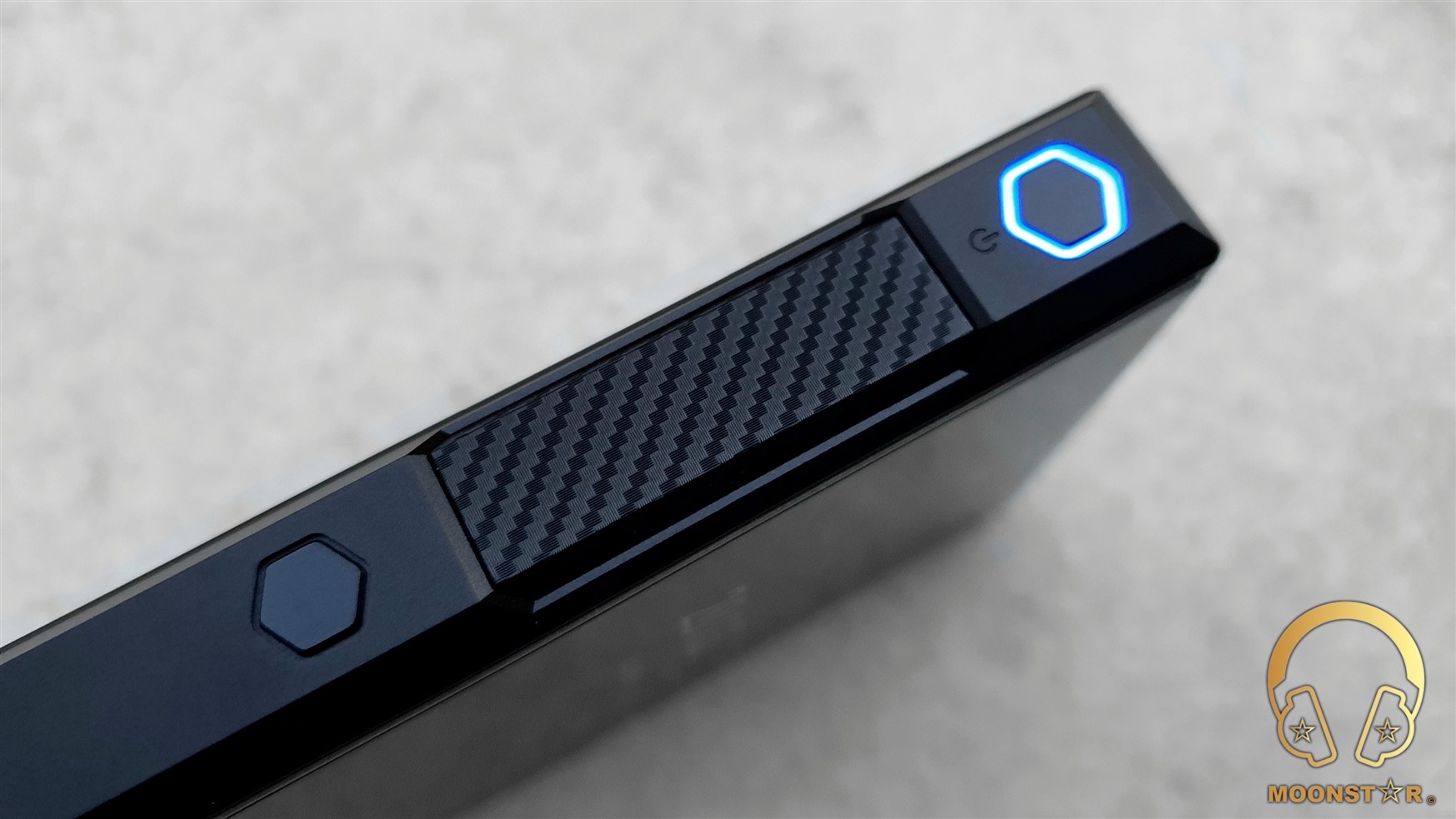
Here is also FiiO’s unique “all-in-one volume button + touch panel”, which has a beautiful looking carbon fibre surface. FiiO improved this innovative design that was used on the M11 Plus LTD with a Carbon Fiber design that offers now a more comfortable and precise volume adjustment.
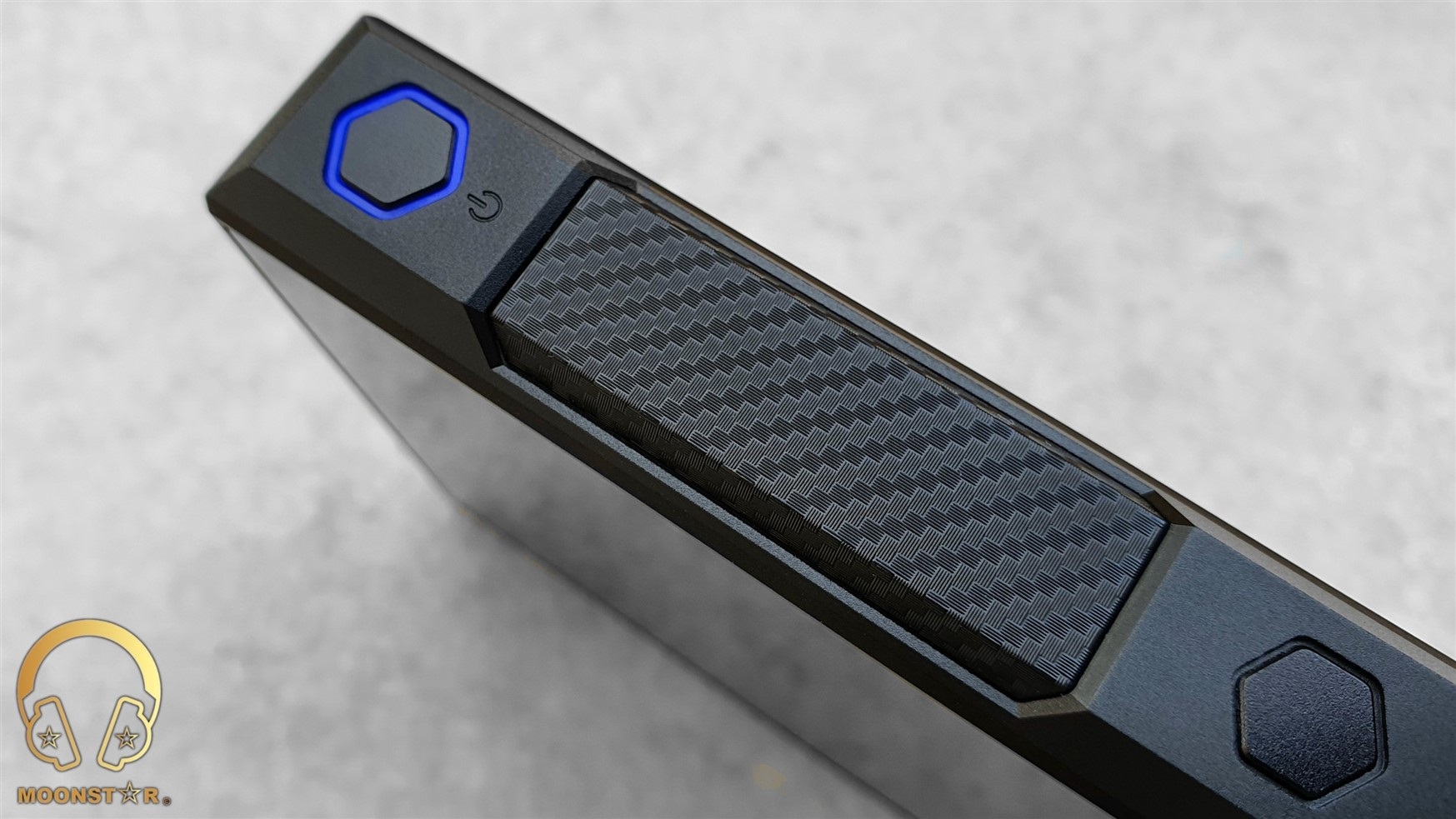
This interface supports both touch sensitive and mechanical actions for a precise volume up & down adjustment.
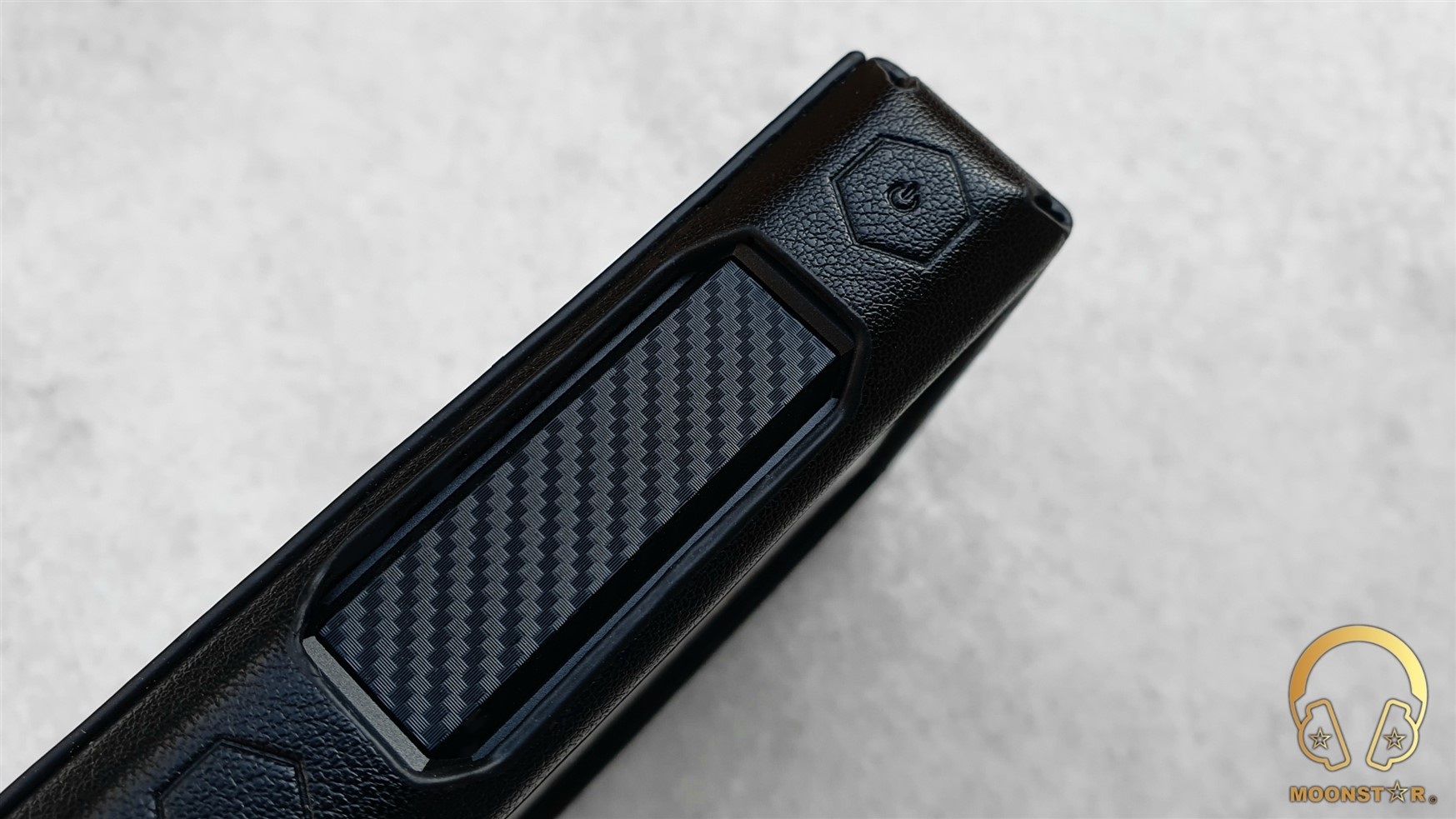
The right surface of the M11 Plus features a Hold Switch and 3 more buttons that are dedicated for actions like Play/Pause, Next and Previous track.
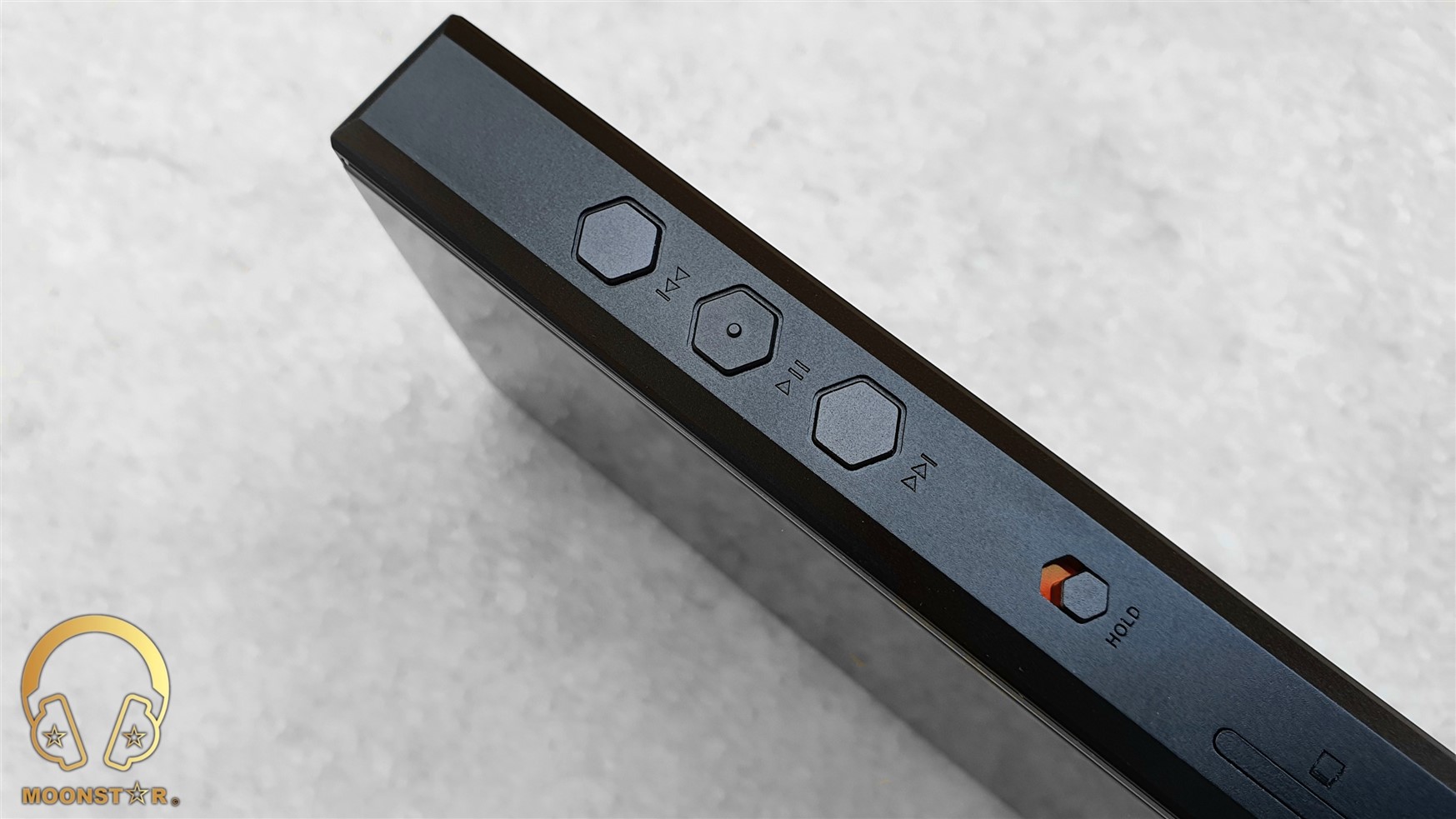
Here you can find a single micro SD card slot for storage expansion that supports storage cards with theoretically up to 2TB.
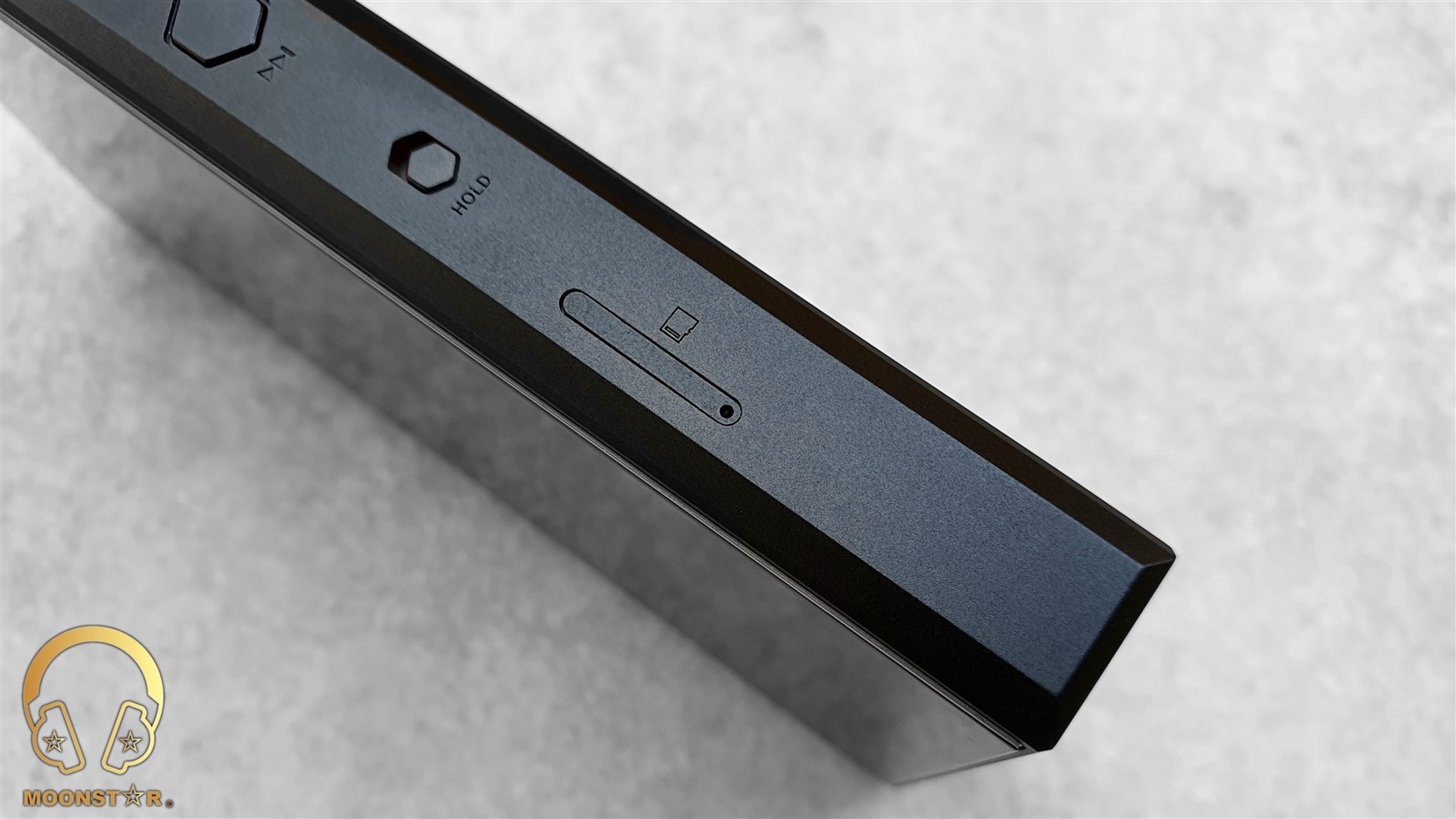
The rear side of the M11 Plus features a glass panel with a “Diamond Cut Textured” surface, which shows multiple colour effects from different angles.
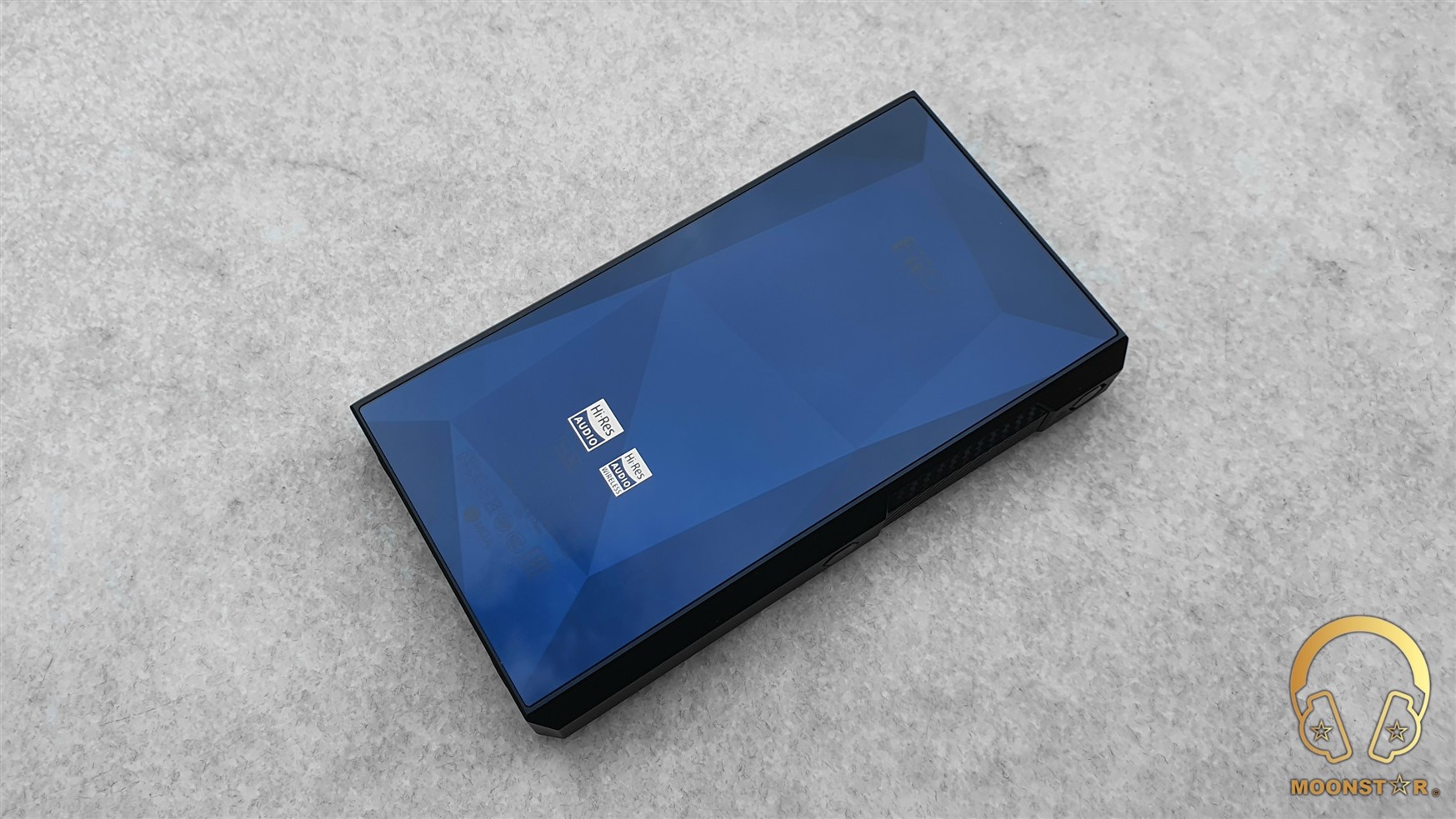
The device looks very robust any doesn’t show any imperfections like gaps, burrs or any openness, etc.
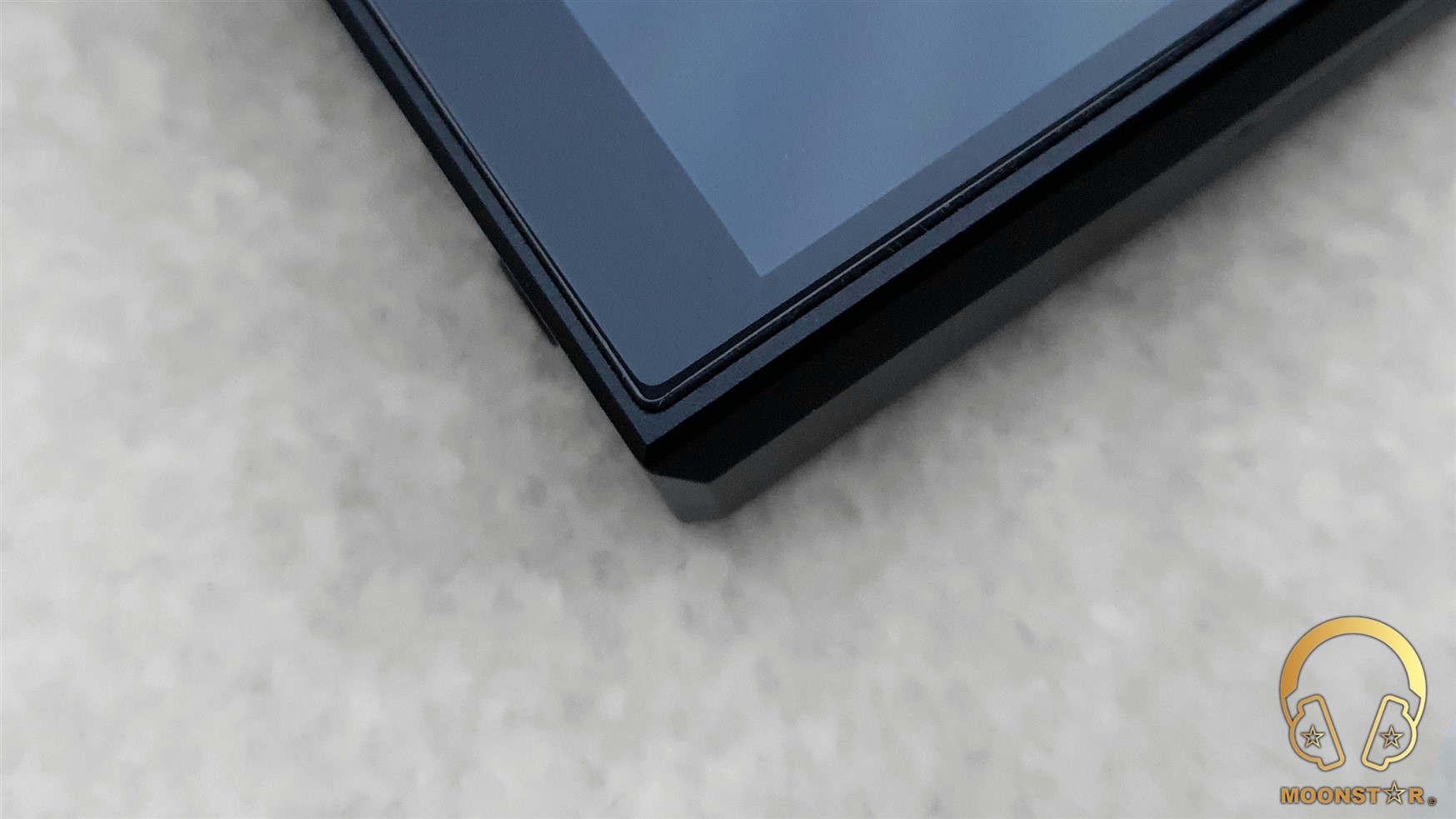
Some Technical Specifications:
- DAC : 2x ES9068AS
- CPU Model : Snapdragon 660 Octa-Core
- USB : XMOS XUF208
- Crystal Oscillator : 2x NDK Femtosecond Crystal Oscillator
- AMP : 2x THX AAA-78
- RAM : 4GB
- ROM : 64GB (46GB free 18GB reserved for OS)
- Screen : 5.5 inches (720*1440)
- Digital Out : USB Type-C
- Analog Outputs : 3.5mm Output for LO, PO & SPDIF, 2.5mm & 4.4mm Balanced Out
- Phone Out Power : 206mW @ 32 Ohm
- Balanced Out Power : 588mW @ 32 Ohm
- Output Impedance : ≤1Ω Single Ended / ≤2Ω Balanced
- Frequency Response : 5Hz – 90kHz (-5dB)
- THD+N : < 0.0006% (A-wt.)
- Noise Floor : <2µV Single Ended / < 3 µV Balanced
- Wi-Fi : 2.4 GHz & 5.0 GHz
- Bluetooth SoC : QCC5124
- Bluetooth Standard : 5.0
- Bluetooth Two-Way : SBC/AAC/APTX/APTX-HD/LDAC
- Battery : 6000mAh Li-polymer
- Battery Life : up to 14 Hours Single-Ended Output / 11.5 Hours Balanced Output
- Quick Charge Time : About 3 Hours (QC4.0)
- Dimensions : ~136.6×75.7×17.6mm
- Weight : about 295g
Supported Audio Formats:
The FiiO M11 Plus supports almost any traditional and modern audio format including MQA up to 8x unfold.
The full list of supported audio formats is below;
- DSD:DSD64/128/256(“.iso”,“.dsf”,“.dff”),DST iSO
- DXD:352.8K/24bit
- APE FAST/High/Normal:384kHz/24bit(MAX)
- APE Extra High:192kHz/24bit(MAX)
- APE Insane:96kHz/24bit(MAX)
- Apple Lossless:384kHz/32bit(MAX)
- AIFF:384kHz/32bit(MAX)
- FLAC:384kHz/32bit(MAX)
- WAV:384kHz/32bit(MAX)
- WMA LOSSLESS:96kHz/24bit(MAX)
- MP3,OGG,WMA,AAC, etc.
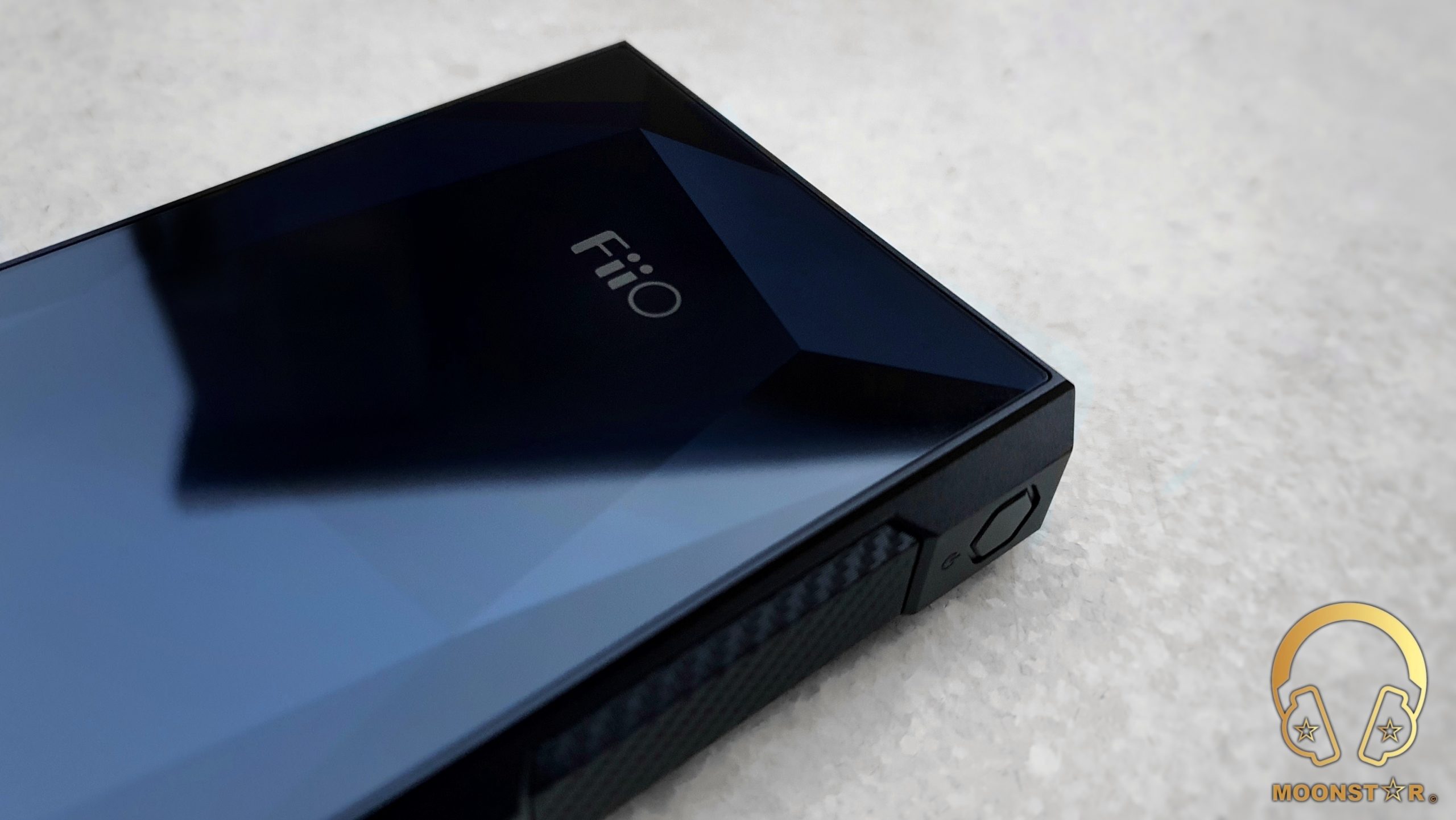
Hardware & Software Features:
The FiiO M11 Plus is a modern and advanced Portable DAP (Digital Audio Player) that features some impressive hardware and software specs, which I will now review for you.
A) ES9068AS DAC Chip & USB DAC Function:
FiiO has brought several updates with the new M11 Plus ESS variant. They not only have switched the DAC chipset from AK4497*2 to ES9068AS*2 DAC chips, they have also replaced the low-pass filter from OPA1662*2 to OPA927*2 matching the ESS DAC chipset. The chipset is now tuned to achieve high SNR ratings ensuring quality sound performance with cleaner background response.
It is tuned and adjusted for achieving improved performance, even better than the AKM counterpart with better Signal to Noise Ratio and Distortion ratings.
The FiiO M11 Plus offers USB DAC support that is compatible with MAC’s, Windows PC’s, Android and iOS devices. Windows PC’s do need the installation of an USB DAC driver that is available on FiiO’s website, while Android, iOS and MAC computers do not need any driver installation.
- Download link: https://www.fiio.com/Driver_Download
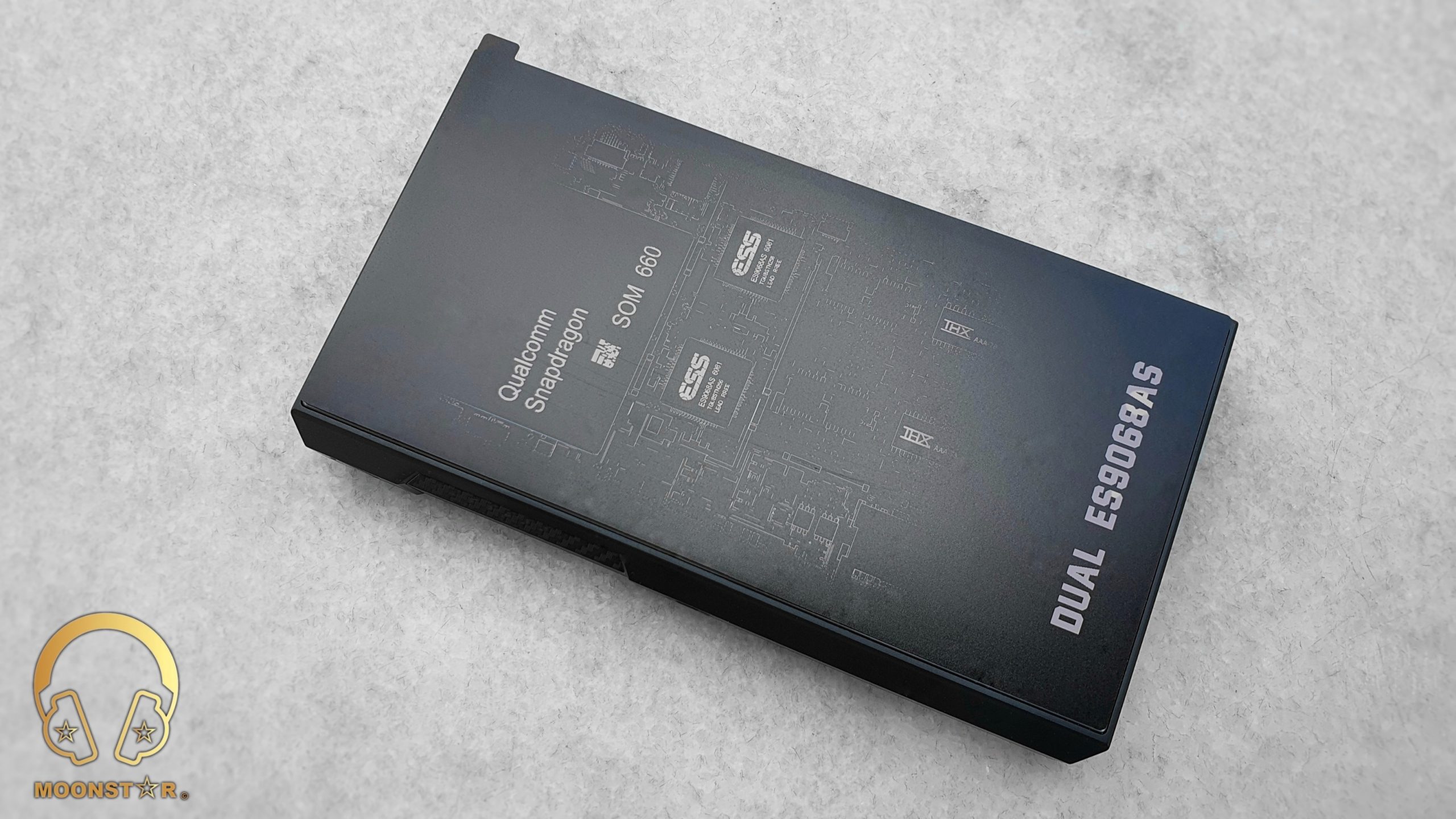
B) Snapdragon 660 CPU with Andreno 512 GPU + 4GB RAM:
The New M11 Plus is equipped with the Snapdragon 660 Octa-Core SoC that comes with a pretty capable Andreno 512 GPU, which is able to provide a smooth GUI (Graphical User Interface) for a Smartphone-Like user experience. The M11 Plus features also 4GB of RAM that will provide full functionality with the latest Android 10 OS.
The 18 GB of the internal storage is reserved for the OS (Operating System) of the device, while 46 GB’s are free to store your music files or for the installation of third party applications.
The M11 Plus is equipped with a Single Micro SD Card slot for storage expansion, which supports a theoretical expansion capacity of up to 2TB.

C) Outputs & Amplification:
The FiiO M11 Plus comes with the THX AAA-78 headphone amplifier module, which will deliver a higher output performance compared to the AKM variant with an output power rating of up to 660mW@32Ω of load. The Low-pass filter chip has been switched from OPA1662 to OPA927.
Here are some output specifications;
Line Out:
- THD+N : SE ≤0.0006%(1kHz/10kΩ)/ Balanced ≤0.0004%(1kHz/10kΩ)
- SNR : SE ≥118dB(dbA)/ Balanced ≥125dB(dbA)
- Crosstalk : SE ≥105dB(1kHz/10kΩ)/ Balanced ≥104dB(1kHz/10kΩ)
- Frequency response : SE 20Hz~50kHz (-0.5dB)/ Balanced 20Hz~50kHz(-0.5dB)
- Noise floor : SE ≤2.5μV(dbA)/ Balanced ≤2μV(dbA)
- Line Out level : SE 2.0V(1kHz/10kΩ)/ Balanced3.0V(1kHz/10kΩ)
3.5mm Headphone Out (@ High Gain):
- THD+N : ≤0.00054%(1kHz/32Ω)
- SNR : ≥122dB(dbA)
- Frequency response : 20Hz~20kHz(-1dB)
- Noise floor : ≤2.5μV(dbA)
- Output Impedance : ≤1Ω(32Ω)
- Output Power : ≥300mW @16Ω / ≥210mW @32Ω / ≥33mW @300Ω (THD+N<1%)
- Crosstalk : ≥76dB(1kHz/32Ω)
4.4mm & 2.5mm Balanced Out (@ High Gain):
- THD+N : ≤0.00085%(1kHz/32Ω)
- SNR : ≥126dB(dbA)
- Frequency response : 20Hz~80kHz(-1dB)
- Noise floor : ≤2.5μV(dbA)
- Output Impedance : ≤2Ω(32Ω)
- Output Power : ≥400mW @16Ω / ≥ 660mW @32Ω / ≥90mW @300Ω (THD+N<1%)
- Crosstalk : ≥111dB(1kHz/32Ω)
The recommended headphone impedance for the M11 Plus is 16~150Ω for the 3.5mm Single Ended headphone output and 16~300Ω for the 2.5mm + 4.4mm Balanced outputs.
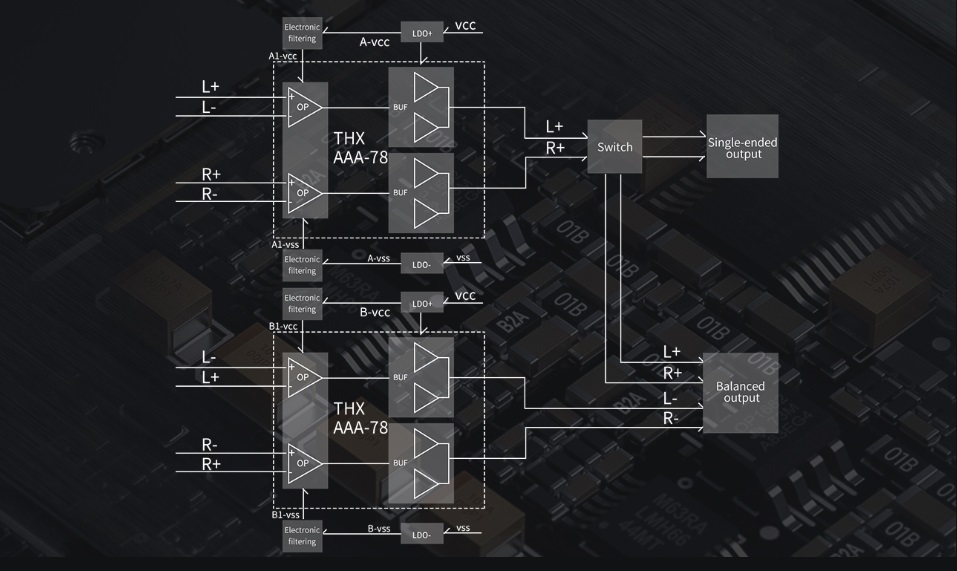
D) Wireless Connectivity:
The FiiO M11 Plus features a build in Wi-Fi antenna which supports the 802.11 b/g/n/ac protocols and 2.4GHz and 5.0 GHz frequency standards. The download speed, connectivity range and stability is the best I have experienced to date with a Digital Audio Player and performs pretty close to modern mobile phones.
The M11 Plus utilizes also Qualcomm’s QCC5124 Bluetooth SoC that offers High-Res Two-Way Bluetooth support with the BT5.0 standard. This BT SoC is able to transmit HWA/LDAC/aptX HD/aptX/SBC codec’s and to receive codec’s in AAC/SBC/LDAC quality.
The M11 Plus can be connected to Bluetooth transmitting devices like a mobile phone, working as a Bluetooth DAC/Amplifier.
The stabile Bluetooth operating distance of the M11 Plus is about 10 meters when I do connect it to Bluetooth devices like the Sony WF1000XM4 or FiiO UTWS5. What I also really like about the BT connectivity of the M11 Plus is the very low latency when I do watch to YouTube or Netflix Videos.
Please note that I didn’t have heard any waterfall noise issue that could be caused by the Wi-Fi antenna and any remarkable Bluetooth connection droppings with my sample during this review.
1. AirPlay & Wi-Fi file transfer:
The FiiO M11 Plus is able to play your songs stored on PC or NAS wirelessly through DLNA, or via AirPlay with iOS devices. You can also transfer your songs wirelessly to the M11 Plus by using the Wi-Fi transfer function which is a nice addition.
2. Anti-interference Circuit Design:
The FiiO M11 Plus adopts a new internal layout with a modular circuit design that feature its own shielding cover, in order to separate interferences of the digital and analog portions. This design was created to ensure that that does parts do not interference with each other.
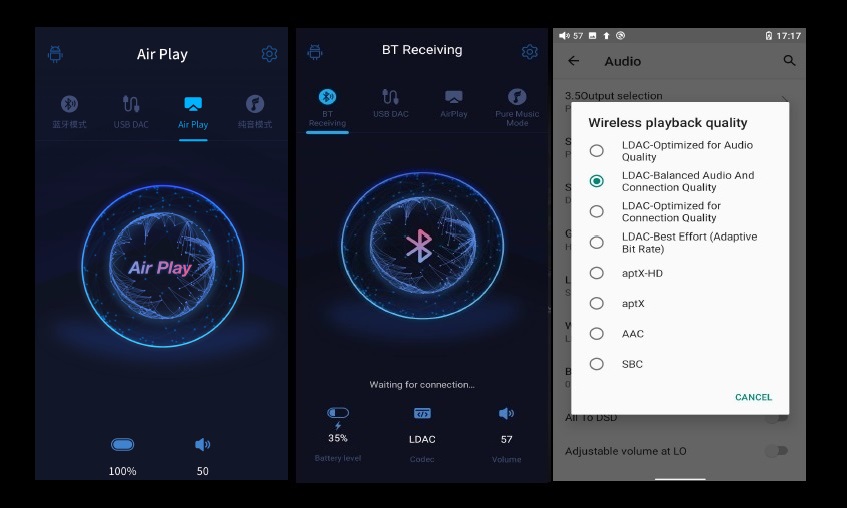
E) Battery Life:
FiiO M11 Plus ESS features a 6000mAh Li-Polymer battery, which supports Quick Charge QC3.0/4.0 that takes about 3.5 hours. The battery life of the new M11 Plus is improved from 11.5 hours on the AKM variant to up to 14 hours over the 3.5mm Single Ended output, while the 4.4mm & 2.5mm Balanced output drains the battery in around 11.5 – 12 hours.
Testing Conditions:
- Volume: 70 / Gain: Low / File: MP3 44.1 kHz/16bit / Screen: Off
2. Software & GUI:
The combination of Android 10 and relative capable Snapdragon 600 SoC + 4GB of Ram makes the FiiO M11 Plus to a DAP with a pretty fluid GUI. The fairly customized Android OS of the M11 Plus comes with pre-installed applications like Google Play Store, Chrome Browser, Gallery, Clock, Technical Support, FiiO Application Store, etc.


It’s great to see that Google Play Store is now pre-installed supported out of the box that gives you access to third party Streaming Services like Spotify, Tidal, Qobuz, Deezer, Apple Music and more. You can even install applications like Netflix, Amazon Prime or YouTube to watch your favorite TV shows, video clips or movies.
FiiO offers has also its own application that is called Application Store, where you can find all Music and Radio Streaming Services or Thirty Party APP Stores like APKPure, CoolApk or Yingyongao under one page.
FiiO Music Player is another highlight of the M11 Plus that comes with tons of features, settings and a very nice Graphical User Interface (GUI).
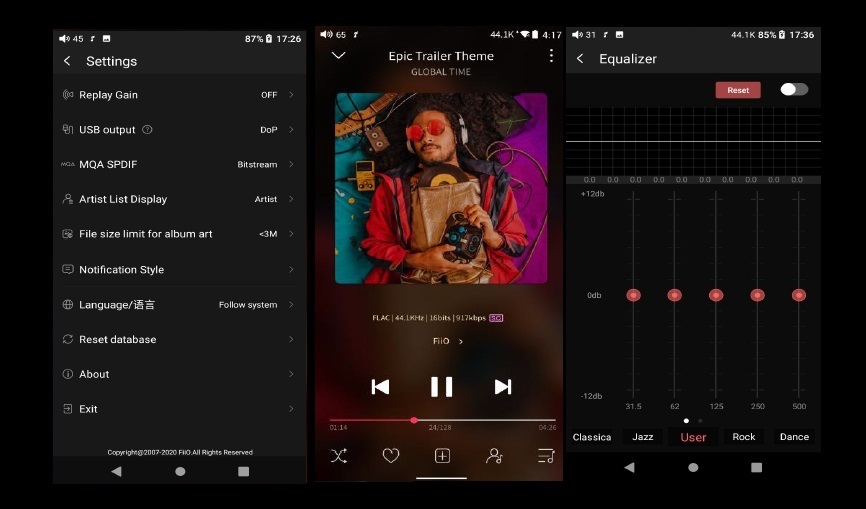
The FiiO M11 Plus supports five working modes, including Android mode, Pure Music mode, AirPlay, USB DAC mode and Bluetooth Receiving mode. The default is Android mode when the device is powered on for the first time, which can be switched to other modes on the drop-down or settings menu.
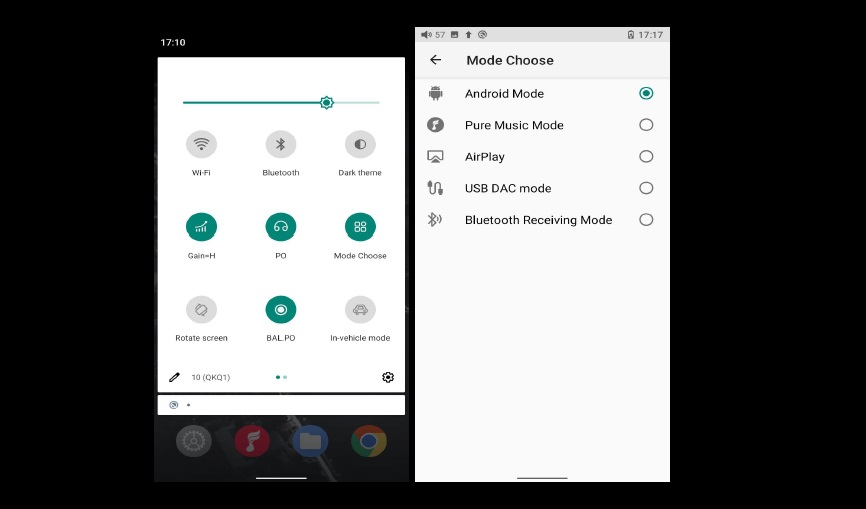
All-in all, the M11 Plus offers a very user friendly and familiar UI (User Interface) that gets constantly updates. What I also really like is the Technical Support Menu that gives you a quick access to FW Updates (OTA and Local), Quick Start Guide, Online Feedback and many more, which is a nice addition.

Full List of Remarkable Features:
- Android 10 OS
- MQA 8X Decoding Support
- ES9068AS*2 Dual DAC Chip’s
- THX-AAA 78*2 Headphone Amplifier.
- Snapdragon 660 CPU (Octa-Core)
- 6th Gen Honeycomb Design
- 5” Bezel-less Touch-Screen with 18:9 ratio
- New-Gen Interactive Intelligent Volume System with an upgraded carbon-fiber panel.
- New Digital Audio Purification System (DAPS) with Self-Developed 4th Gen FPGA+NDK Femtosecond crystal oscillators
- High-Res Two-Way Bluetooth Support (V5.0 Connectivity)
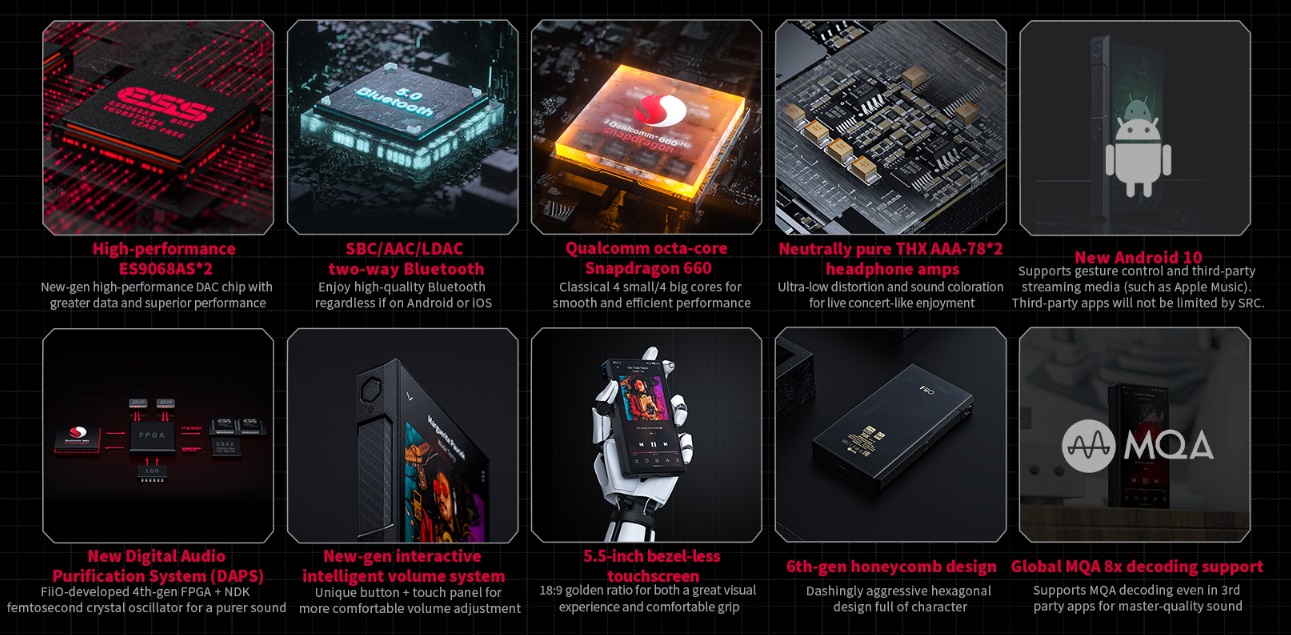
Equipment’s used for this review:
- DAP’s : FiiO M11 Plus, Sony WMA1, FiiO M11 Pro
- IEM’s : FiiO FD7, FiiO FH9, Meze Audio Rai Penta, Kinera URD, Moondrop Variations
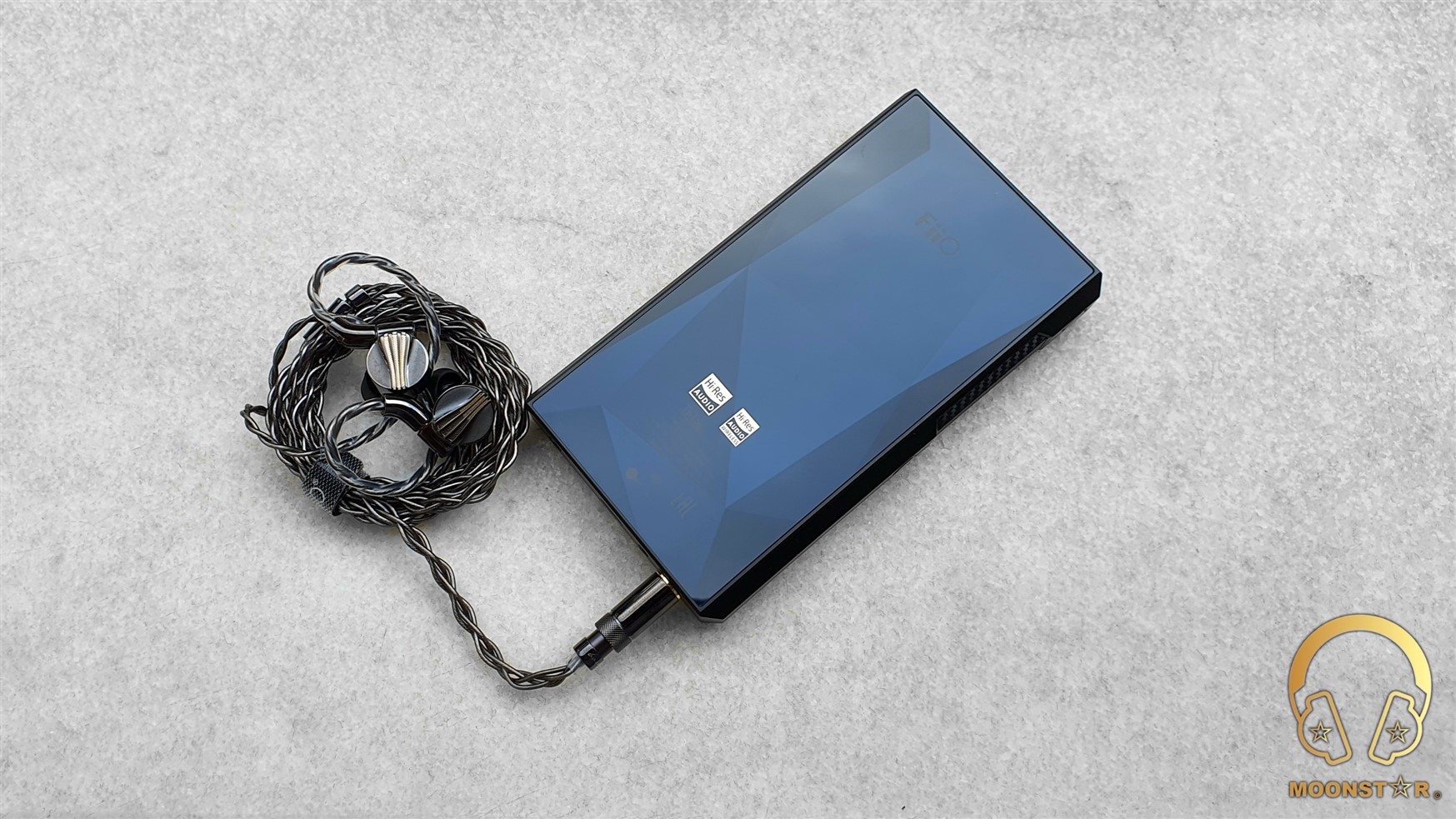
Albums & tracks used for this review:
- Adele – My Little Love (Spotify)
- Randy Crawford – On Day I Will Fly Away (Flac 16bit/44.1kHz)
- Hayley Westenra – Odyssey Album (Dezzer HiFi)
- Dionne Warwick – Walk On By (Flac 16bit/44.1kHz)
- Sarah McLachlan – Angel (Flac 24bit/48kHz)
- Sertap Erener – Aşk (Flac 16bit/44.1kHz)
- Edith Piaf – Non Je Ne Regrette Rien (Flac 16bit/44.1kHz)
- Diana Krall – So Wonderful (DSF)
- Aretha Franklin – I Say A Little Payer (Flac 24bit/96kHz)
- David Bowie – Heroes (Flac 24bit/192kHz)
- Elton John – Rocket Man ((Flac 24bit/96kHz)
- Barry White – Just The Way You Are (Flac 24bit/48kHz)
- Isaac Hayes – Walk On By (Flac 16bit/44.1kHz)
- Sting – Englishman in New York – (Flac 24bit/48kHz)
- Eric Clapton – Wonderful Tonight (Flac 24bit/96kHz)
- B.B. King – Riding With The King (Tidal Hi-Fi)
- Dave Gahan – Kingdom (Tidal Hi-Fi)
- U2 – Sunday Bloody Sunday (Flac 16bit/44.1kHz)
- Bro Safari, UFO! – Drama (Deezer HiFi)
- Armin Van Buuren – Vini Vici (Flac 16bit/44.1kHz)
- Really Slow Motion – Deadwood (Deezer HiFi)
- Jo Blankenburg – Meraki (Spotify)
- Lorde – Royal (Flac 24bit/48kHz)
- Toutant – Rebirth (Deezer HiFi)
- Portishead – It Could Be Sweet (Spotify)
- Charly Antolini – Duwadjuwandadu (Flac 24bit/192kHz)
- Michael Jackson – Billie Jean (Flac 24bit/192kHz)
- Gogo Penguin – Raven (Flac 24bit/192kHz)
- 2Cellos – With or Without You (Spotify)
- Ferit Odman – Look, Stop & Listen (Flac 24bit/192kHz)
- Chopin – Nocturn No. 20 In C-Sharp Minor (Flac 16bit/44.1kHz)
- Fazıl Say – Nazım Oratoryosu (Live) (Flac 16bit/44.1kHz)
- Vivaldi – Le QuarttroStagioni “The Four Season” (Deezer HiFi)
- Otto Liebert& Luna Negra – The River (Flac 24bit/192kHz)
- Lunatic Soul – The Passage (Flac 16bit/44.1kHz)
- Deftones – My Own Summer (Shove it) (Flac 16bit/44.1kHz)
- Metallica – Sad but True (Flac 24bit/96kHz)
- Opeth – Windowpane (Flac 16bit/44.1kHz)
- Megadeth – Sweating Bullets (Tidal Hi-Fi)
- Rush’s – Leave That Thing Alone (Flac 16bit/44.1kHz)
- Slayer – Angel of Death (Spotify)s
- Liquid Tension Experiment 2 – Acid Rain (Spotify)
- Yosi Horikawa – Bubbles (Spotify)
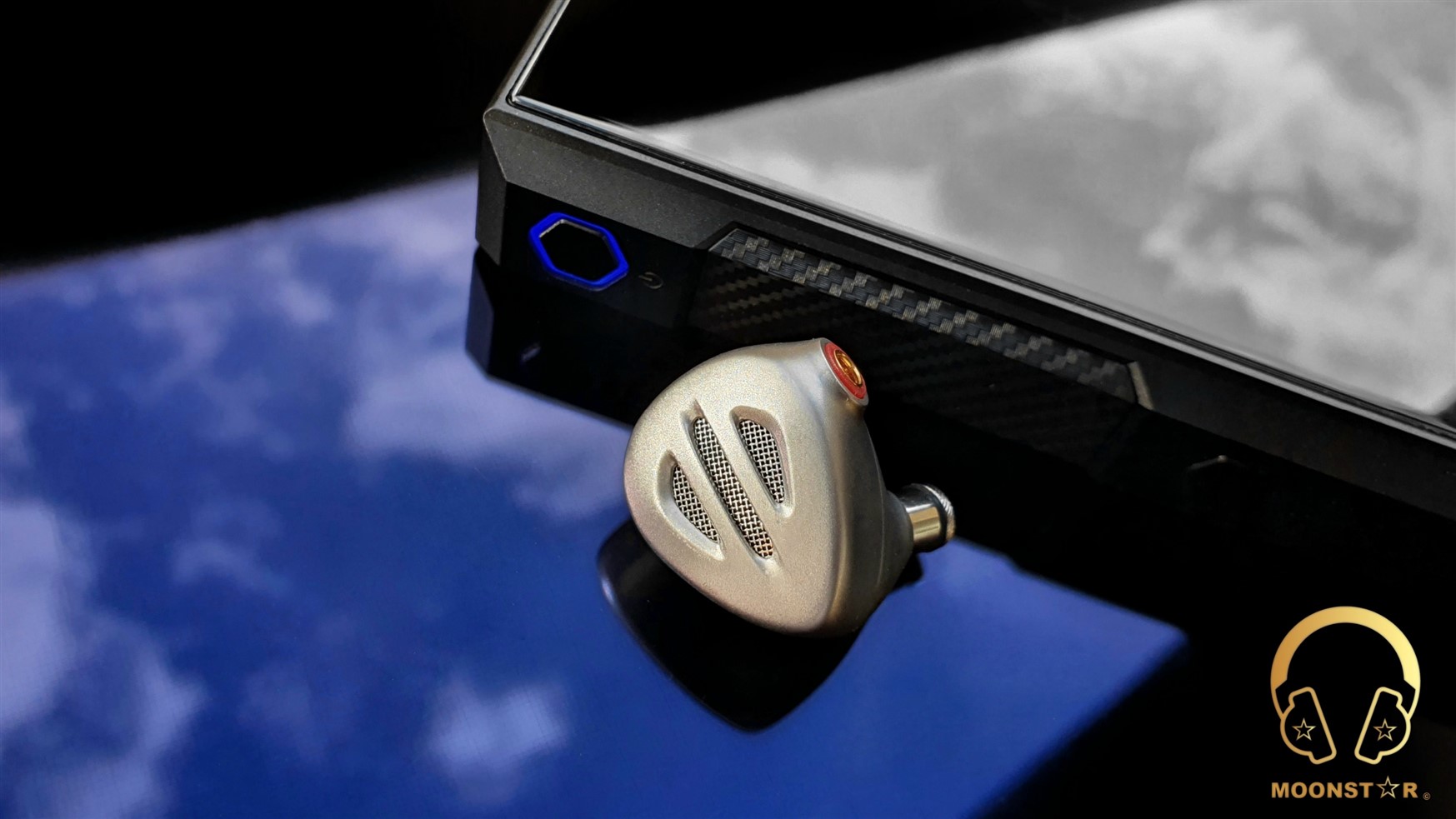
The Sound:
The FiiO M11 Plus shows a quite natural tonality with a hint of warmness that adds a nice sense of coloration to the overall presentation that is not overdone. It offers a pretty transparent and detailed sound profile with decent level of dynamics and resolution from the lows to up to the highs that show a good synergy with almost any earphone/headphone I have listen to it.
This review has been written after a burn-in period of about 150 hours. The sound impressions below are mainly based on my impressions over the with the 4.4mm Balanced Output of the device paired with IEM’s like the FiiO FH9 & FD7, Meze Rai Penta, Kinera URD and Moondrop Variations.
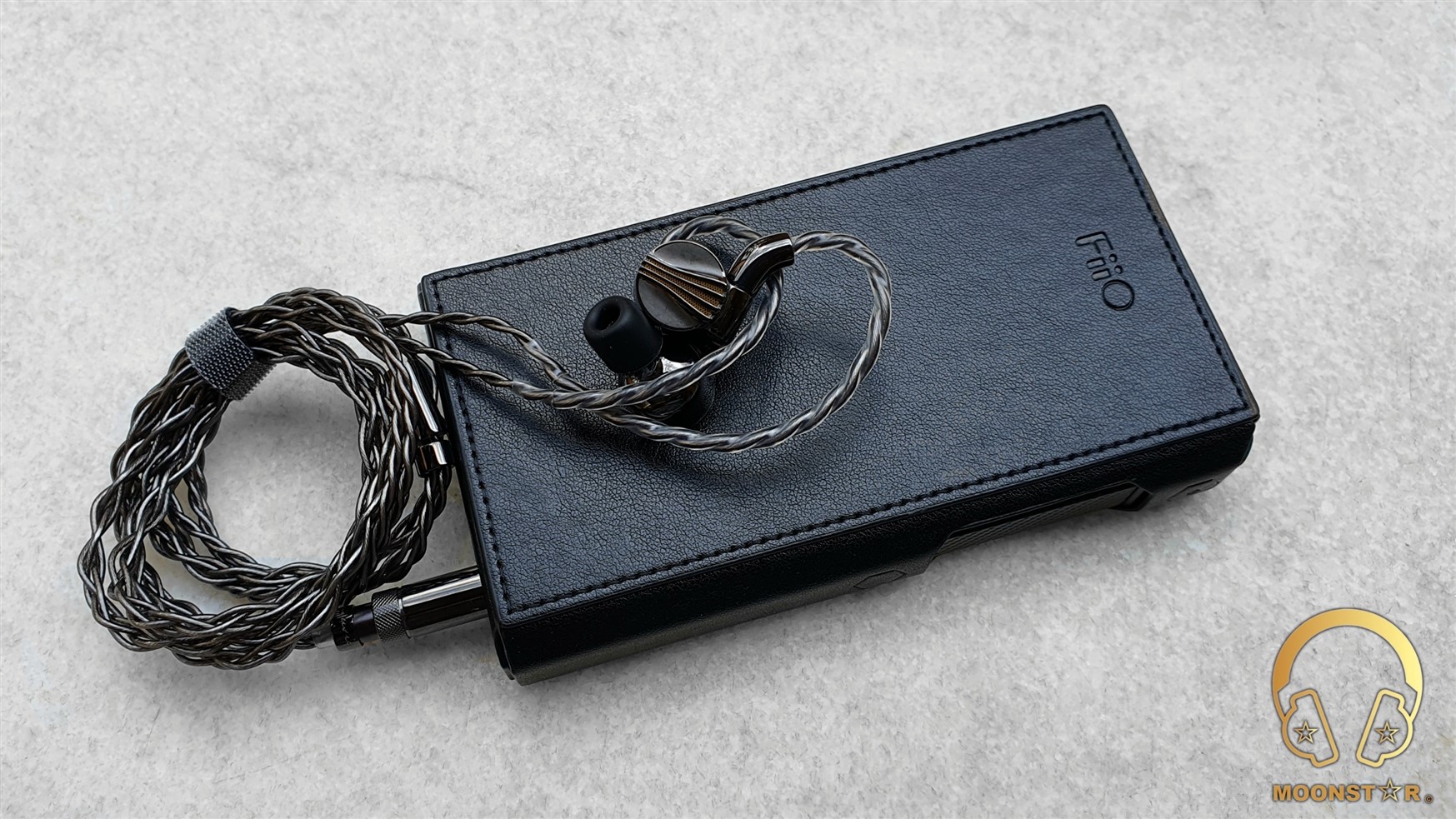
Bass:
The FiiO M11 Plus has a pretty neutral and dynamic subbass response that offers a good level of depth and emphasis when called upon. For example; songs such like Massive Attack’s “Angel”, Lorde’s “Royals” or Jo Blankenburg’s “Meraki” are show with an great sense of depth and rumble when I do pair the deice with In-Ear Monitors like the FiiO FH9 and FD7 or with Moondrop’s Variations. The subbass presentation stands out with its clean character and pretty fast decay and doesn’t show any remarkable negative conditions such like as muddiness or mixings.
The midbass region of the FiiO M11 Plus offers a fairly smooth, powerful and dynamic response. It is impactful yet controlled and doesn’t show any audible midbass hump or mixings when I do listen to midbass intensive tracks like Really Slow Motion “Deadwood” or Armin Van Buuren’s “Vini Vici”. The general midbass presentation of the M11 Plus can be described as transparent, clean and detailed, along with a decent sense of musicality that was especially audible when I have paired the device with IEM’s like the Kinera URD and Meze Audio Rai Penta.
Went it comes to the instrument presentation in this area, I can say that bass guitars, drums and trumpets are reproduced with an efficient grade of speed and intensity, while a contrabass is presented in a pretty crisp and detailed manner.
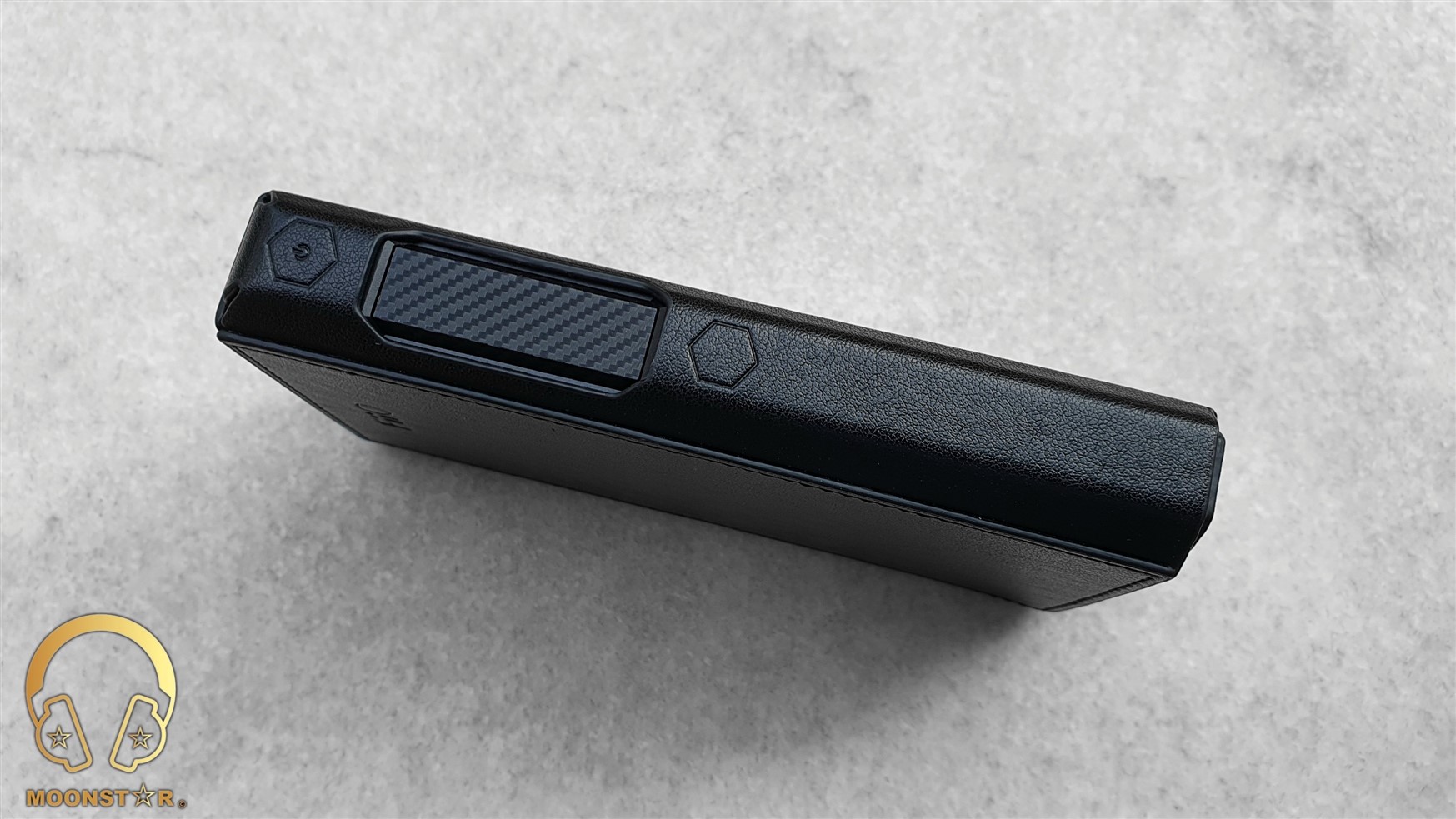
Midrange:
The FiiO M11 Plus shows a pretty transparent, airy and neutral midrange presentation with a slightly hint of warmness that comes from the lower midrange area that adds the overall presentation in this area a nice sense of coloration to cerate a more musical atmosphere.
Both female and male voices do sound pretty realistic and lively, while female voices are a bit more in the foreground due to the highly dynamic/energetic upper midrange character.
The lower midrange of the M11 Plus offers an efficient level of body and depth that is not overdone. Especially the clarity and resolution is remarkable, when I do listen to vocals or to instruments like cellos, violas or electro guitars. Male vocals from Barry White and Isaac Hayes to Sting and Eric Clapton are reproduced with a decent sense of depth and intensity.
The upper midrange is slightly more emphasized compared to the lower midrange register. This area offers a great sense of dynamism, an above average level resolution and extension, without to show any remarkable sibilance or over brightness when I do listen to female voices or to instruments such like clarinets, side flutes, pianos or violins. For example, female vocals such like Adel, Diana Krall, Edith Piaf or Sertap Erener are reproduced in a pretty clean, lively and detailed manner, especially when I pair it with In-Ear Monitors like the FiiO FH9, Moondrop Variatons or Meze Audio Rai Penta.
The overall midrange presentation of the FiiO M11 Plus can be described as highly versatile, natural and dynamic, which offers also a decent grade of transparency, airiness and resolution.
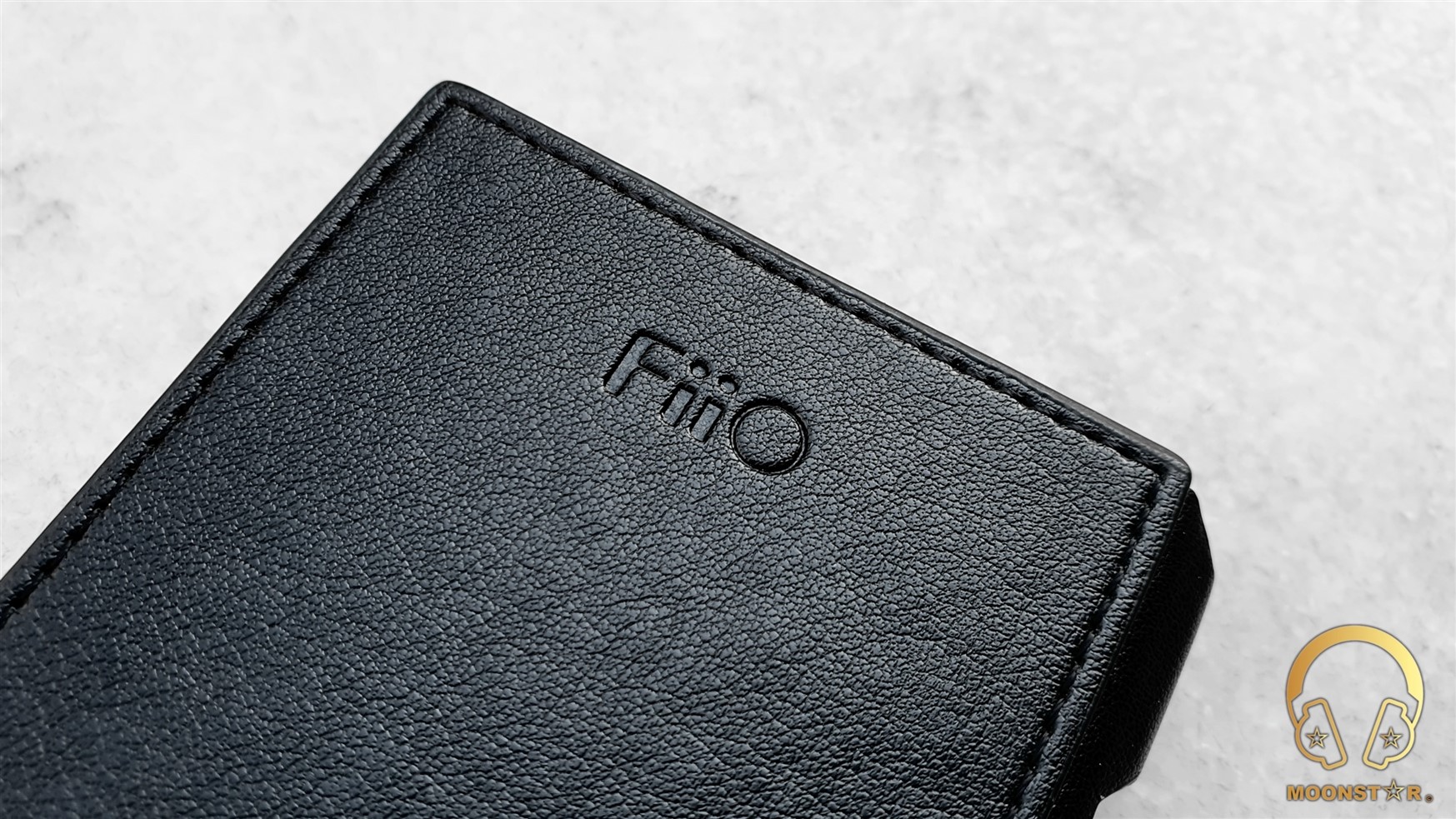
Treble:
The treble range of the FiiO M11 Plus shows a relative bright and energetic yet controlled response with good level of clarity and decent sense of airiness and sparkle. The general presentation of this region is quite detailed and crisp, while it is also pretty comfortable to listen to, especially hen I do pair it with IEM’s like the FiiO FD7, Kinera URD and Meze Rai Penta that do show a great synergy.
The transitions from the upper midrange that is pretty energetic, towards the lower treble region are in general controlled when instruments such like electro guitars are played with high level of distortion.
Instruments like Hi-hats do sound fairly pronounced and it was quite easy to count the hits, when I have listened to the FiiO FH9 or Moondrop Variations in complex passages. Crash and ride cymbals on the other hand are fast, pretty controlled and do are reproduced with a good grade extension. There is no interference when the piano is accelerating in Jazz songs; the hits are clear and pronounced.
The level of airiness in the treble range is pretty high, while the intensity decreases from the lower treble region towards the upper treble area in a fairly controlled manner. All in all, the overall treble performance of the FiiO M11 Plus fulfills my expatiations from a Digital Audio Player at this price level.

Soundstage & Imaging:
The FiiO M11 Plus offers a pretty realistic and expansive soundstage atmosphere, and a decent performance in terms of separation and positioning of instruments and vocals, thanks to the pretty wide and airy soundstage. The neutral air between the instruments and the clean/black background of the M11 Plus creates ideal conditions to listen to songs with lots of instruments and complex passages.
Some Comparisons:
FiiO M11 Plus versus FiiO M11 Pro:
The FiiO M11 Pro was one of my favorite DAP’s when it came out with its fast UI, good battery life, stabile connection and decent sound performance for its price. However, the new M11 Plus outperforms the M11 Pro in almost any area.
The M11 Plus offers a more mature sound profile that is more natural and versatile compared to those of the M11 Pro, which shows a higher grade of coloration. The M11 Plus is with no doubt superior in terms of technicality, overall resolution and naturalness.
The subbass region of the M11 Pro is slightly more pronounced, while it is missing the authority and clarity that the M11 Plus now offers. Both DAP’s are successful when it comes to the depth and impact of the midbass region. However, the M11 Plus sounds slightly natural and detailed in this area with better sense of layering and separation.
The FiiO M11 Pro has a slightly warmer midrange tonality that sounds also a bit more recessed in this area compared to the M11 Plus, which offers a better sense of transparency, airiness and dynamism, especially in the upper midrange register.
The lower midrange of the M11 Pro is lightly more highlighted but less transparent compared to the M11 Plus when I do listen to male vocals or to instruments like acoustic guitars or violas. The upper midrange of the M11 Plus is more pronounced, energetic and detail, which was pretty audible when I do listen to female voices or pianos, flutes or trumpets.
Both the FiiO M11 Pro and the M11 Plus do sound quite similar in the treble region. However, the M11 Plus has the upper hand in terms of micro detail retrieval, extension of instruments and general authority in this area, especially in the upper treble register.
The M11 Plus offers a more natural and out of the head soundstage atmosphere with better sense of airiness and separation. The soundstage of the M11 Plus shows a higher level of wideness, while the depth of both devices is fairly similar.
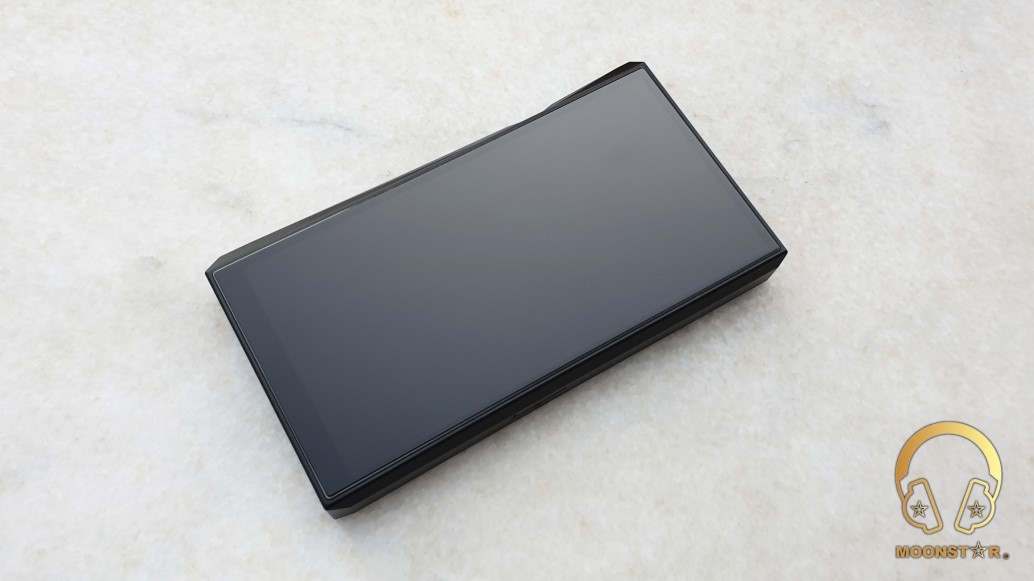
FiiO M11 Plus versus Sony WM1A (No Software Mode):
The Sony WM1A is another decent sounding Digital Audio Player that still very popular in the audiophile community especially after some thirty part software modes. It reflects Sony’s warmish and musical sound signature that is highly praised.
The WM1A has a warmer and smoother tonality and sounds in general a bit fuller compared too the M11 Plus that offers a more neutral tonality and energetic presentation towards the upper midrange region.
The subbass region of the WM1A is a tad deeper in response and shows a bit more rumble compared to the M11 Plu. The M11 Plus on the other hand stands out in terms of decay and clarity in this area, while both devices are pretty equal when it comes to the resolution. The midbass region of WM1A is slightly more highlighted and impactful, while it is missing the resolution and authority that the M11 Plus offers, when I do listen to strings like violas and bass guitars.
The midrange of the FiiO M11 Plus shows closer to neutral tonality and has a more transparent and airy presentation that shows a higher grade of dynamism towards the upper midrange register. The lower midrange of the Sony WM1A shows slightly more depth and body than those of the FiiO M11 Plus, which gives it the slightly edge when I do listen to male voices and instruments like trumpets, acoustic guitars or cellos. When it comes to the upper midrange, I can say that the M11 Plus is the DAP with the better level of dynamism, clarity and resolution, which was especially audible when I have listen to both female voices and instruments such like a piano, mandolin or side flute.
The treble range of both of devices shows an efficient level of clarity and resolution, while the FiiO M11 Plus has stands out in terms of overall airiness, extension and authority in this area especially when I do listen to soprano voices or to treble intensive instruments like cymbals, hi-hats or snare drums.
The soundstage of both devices is suitable for a precise placement and separation of instruments and vocals. The main difference is that the soundstage of the FiiO M11 Plus is slightly wider and a bit more airy compared to those of the Sony WM1A, while both are pretty similar in terms of soundstage depth.
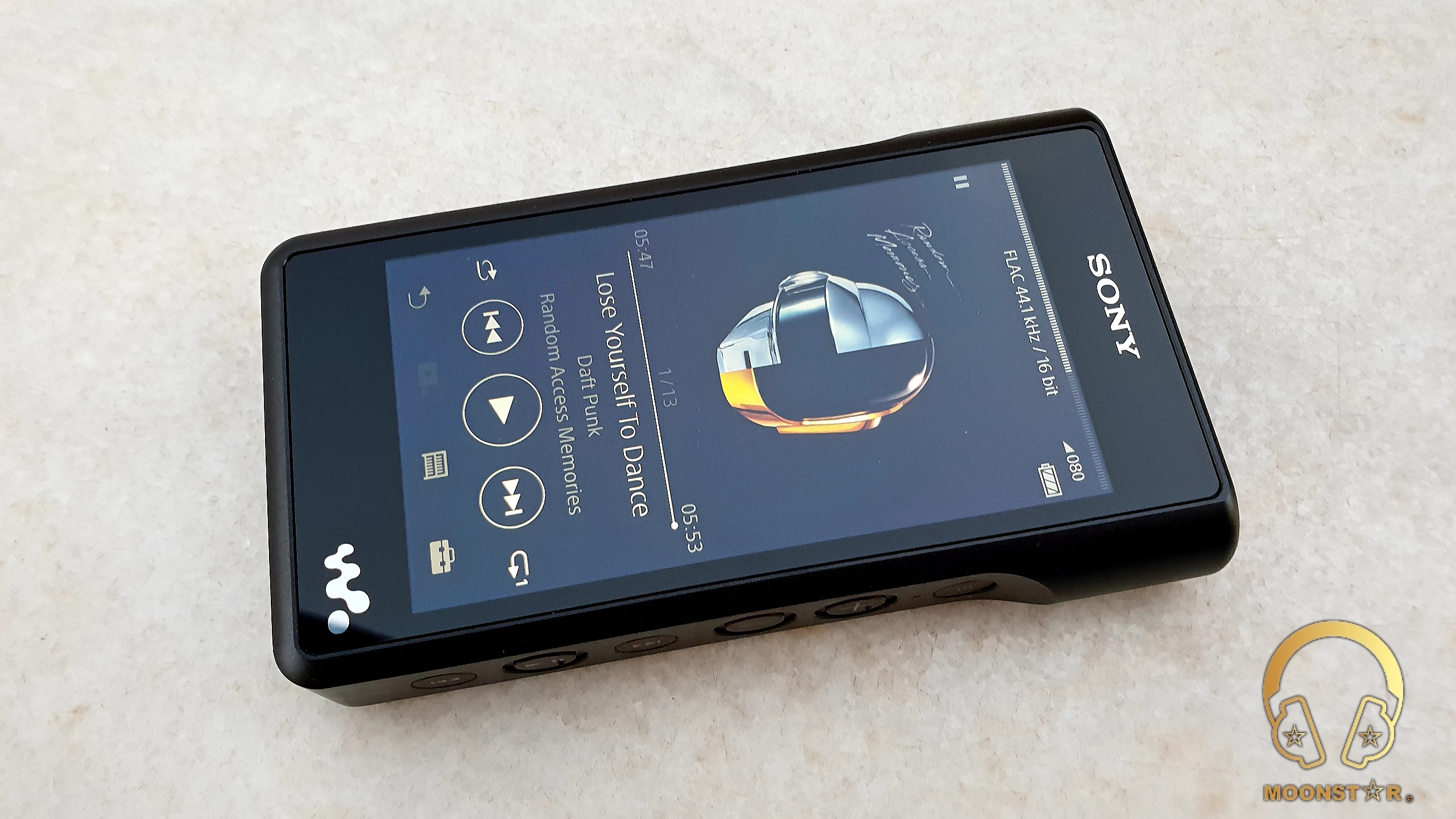
Conclusion:
The M11 Plus is definitely an upgrade over the highly successful M11 Pro that offers many improvements in terms of sound, software and hardware specs. What I really like about the sound of the M11 Plus is its versatile character that shows a decent sense of transparency, resolution and dynamics from the lows to up to the highs. Moreover, it has a very stylish industrial design and high build quality, while it offers tons of impressive features, such like a Dual ES9068AS DAC, a fast Snapdragon 660 Octa-Core SoC, a powerful THX AAA-78 Amp Module, an Intelligent Volume System, a gorgeous looking 5.5” bezel-less touch screen and almost any type of digital and analog in- & outputs, which should be in a modern device at this level.
Thank you for the Read!
Moonstar
@glennkresge Thank you!
Apom
Awesome, thanks. Have they fixed the issue to enable Apple Music to work on this model, unlike the M11 Pro?
Moonstar
100+ Head-Fier
Pros: Overall Sound Performance,
Powerful and Clean Output (especially for a TWS adapter),
Ergonomics,
Stabile Connection up to 10meters / Low Latency,
Battery Life,
IPX4 Water Resistance,
APP Control/OTA Update,
Decent Value for your Money
Powerful and Clean Output (especially for a TWS adapter),
Ergonomics,
Stabile Connection up to 10meters / Low Latency,
Battery Life,
IPX4 Water Resistance,
APP Control/OTA Update,
Decent Value for your Money
Cons: No LDAC support,
Only available with MMCX interface (2-Pin variant may come soon)
Only available with MMCX interface (2-Pin variant may come soon)
FiiO UTWS5 TWS BT Amplifier Review
Introduction:
The UTWS3 was a decent BT Amplifier Module that was available with both MMCX and 2Pin (0.78mm) connector interfaces, which I highly enjoyed with IEM’s like the FH7, FH5 and FH3.
The brand new UTWS5 is the successor of the UTWS3, which comes with some interesting features like the new Qualcomm QCC5141 Bluetooth 5.2 SoC with SBC/AAC/aptX and aptX Adaptive codec support, an independent AK4332 DAC for each channel, IPX4 water resistance, up to 8 hours of playback time with a single charge and many more.
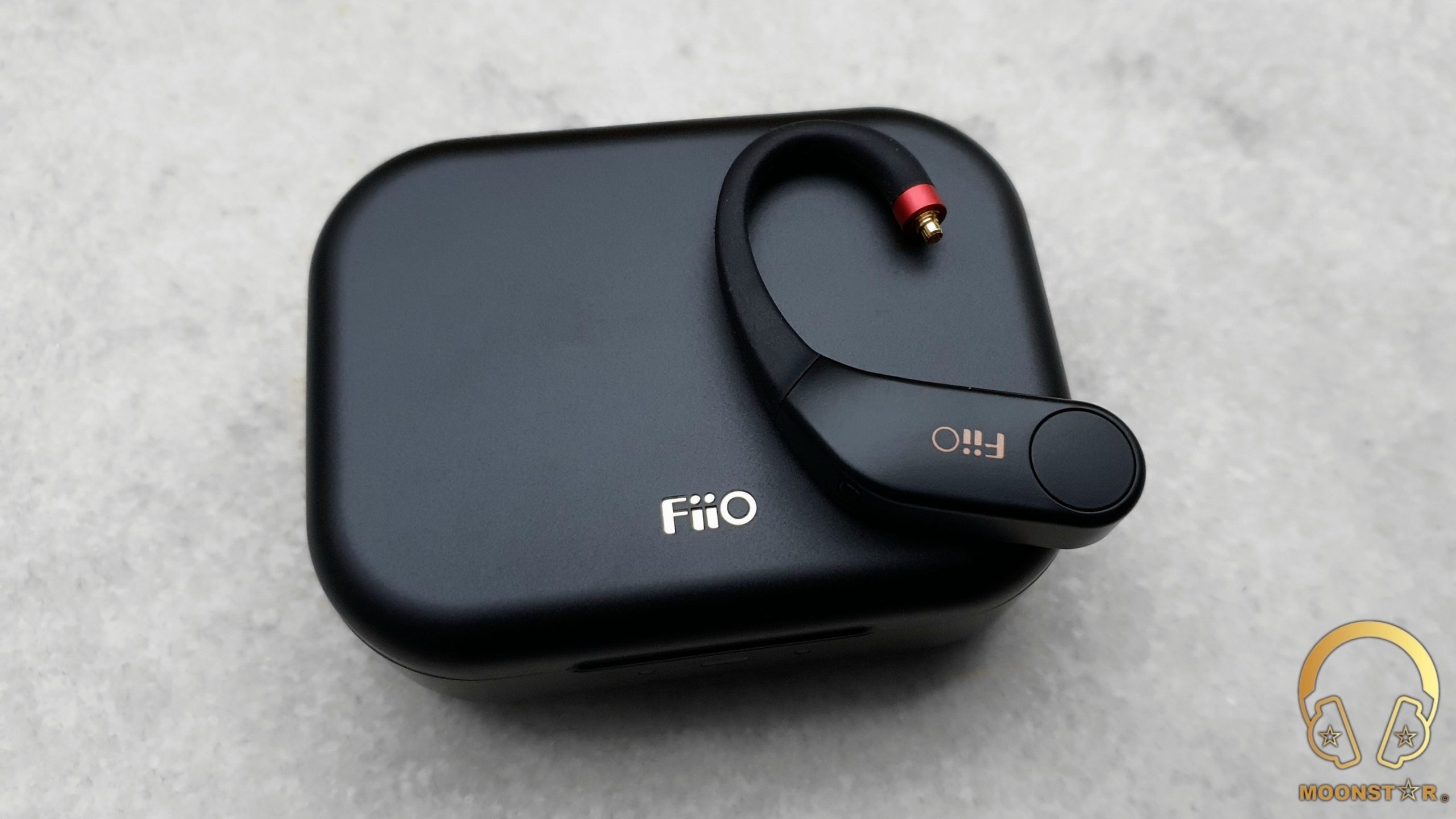
Disclaimer:
I would like to thank FiiO that provided me the UTWS5 TWS BT Amplifier for review purposes. I am not affiliated with FiiO beyond this review and these words reflect my true and unaltered opinions about the product.
Price & Availability:
The actual price for the FiiO UTWS5 True Wireless Amplifier is 129,99 US$. More information’s can be found under the link below;
Package and Accessories:
The UTWS5 came inside a pretty fancy box in black color with a shimmering illustration of the product and some product related brandings on the top.

This box contains the following items/accessories;
- 1x pair of FiiO UTWS5 True Wireless BT Amplifier
- 1x Charging Case
- 1x USB Type-C Charging Cable
- 1x Print Material (User Manual, Quick Start Guide, Warranty Card)
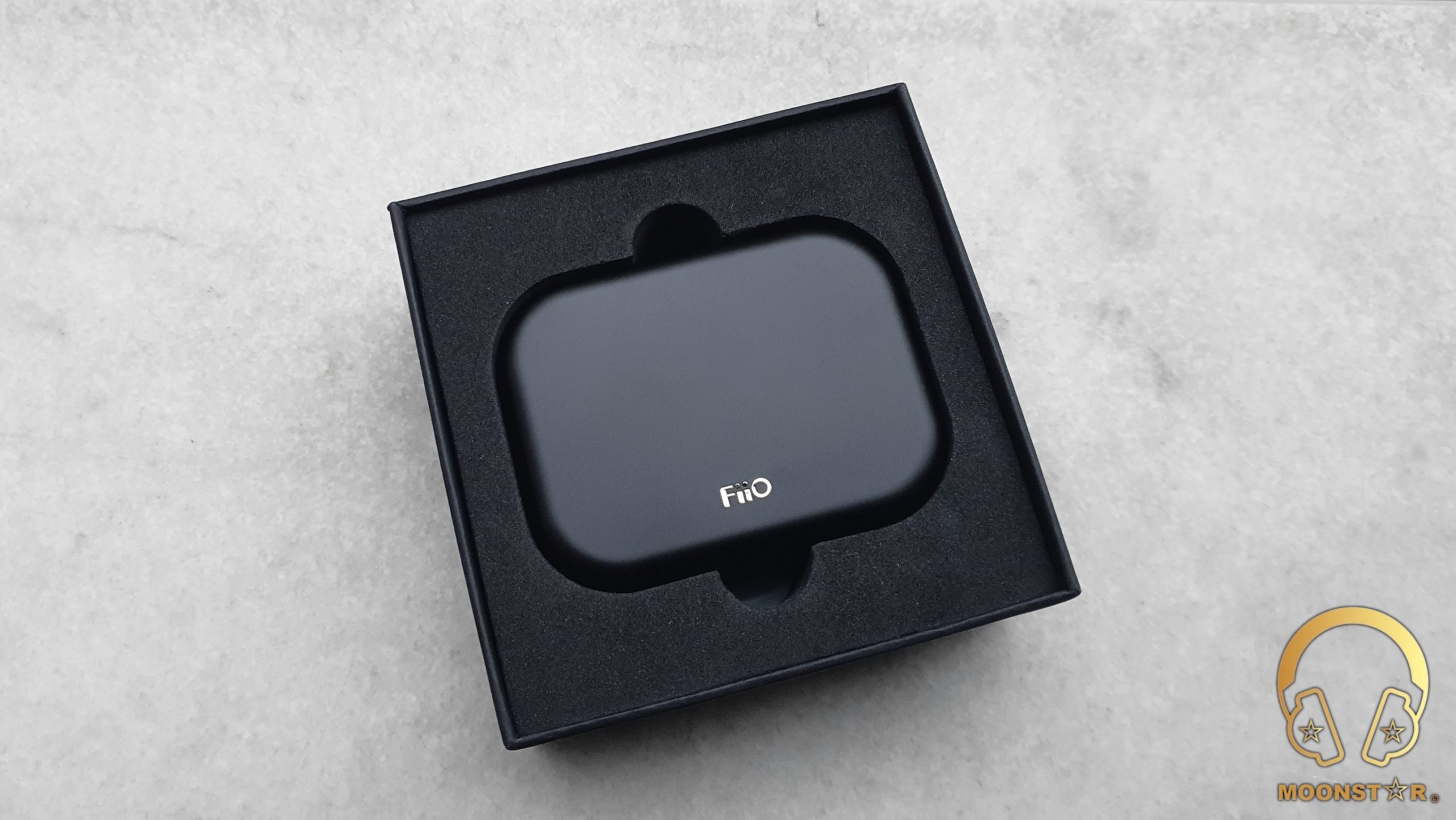
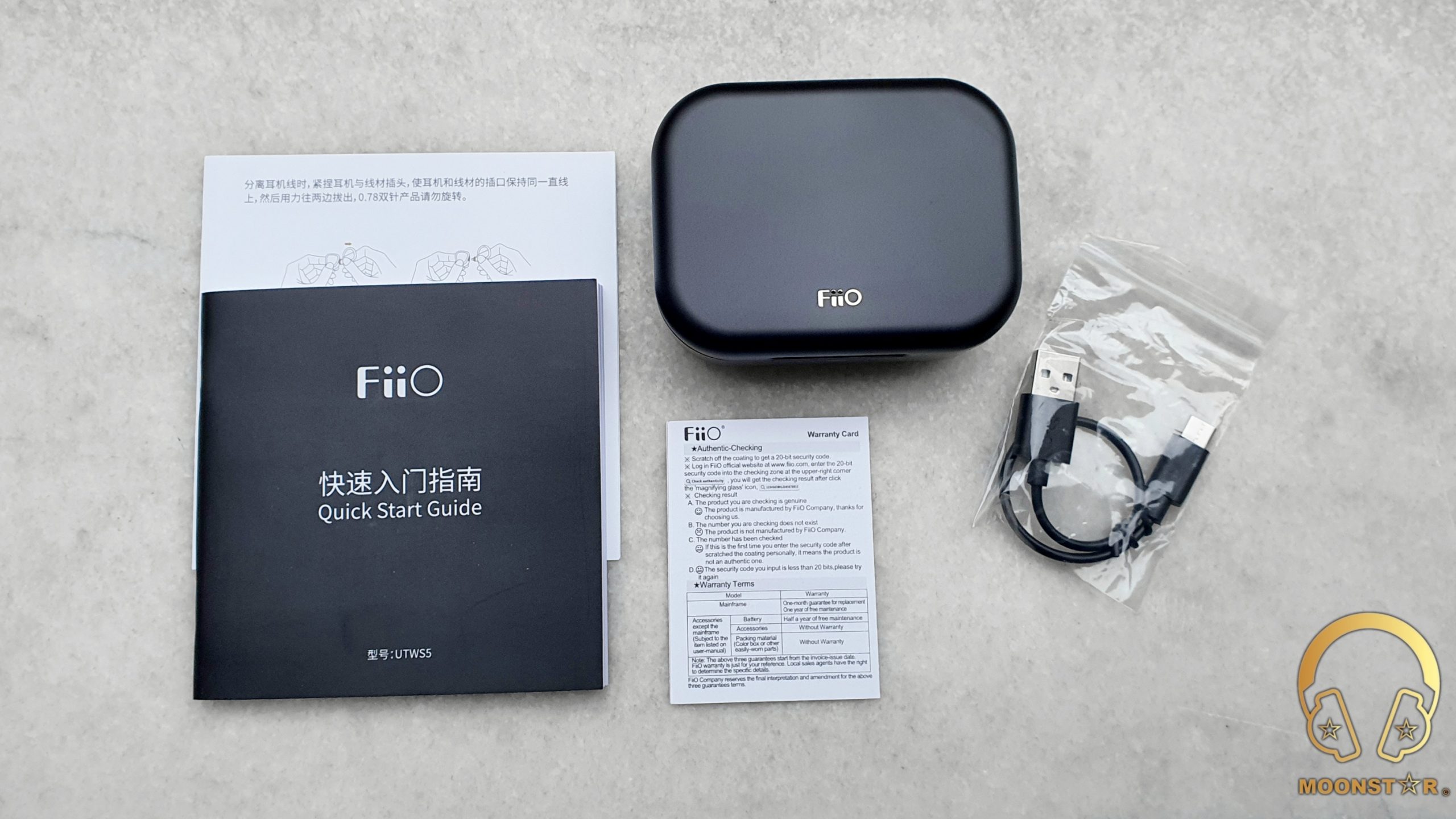
Design, Build Quality, Comfort:
The FiiO UTWS5 shows a very similar design to its predecessor the UTWS3. It’s a True Wireless BT Amplifier for In-Ear Monitors in form of an Ear-hook that is available in the MMCX (Micro Miniature Coaxial) and 2-Pin connector variant that will coming soon. The compact design makes the UTWS5 to an ideal TWS solution On the Go and for longer listening periods.
The adapters that do have a plastic housing do have a pretty robust look and feel same like any FiiO product that I have reviewed before.
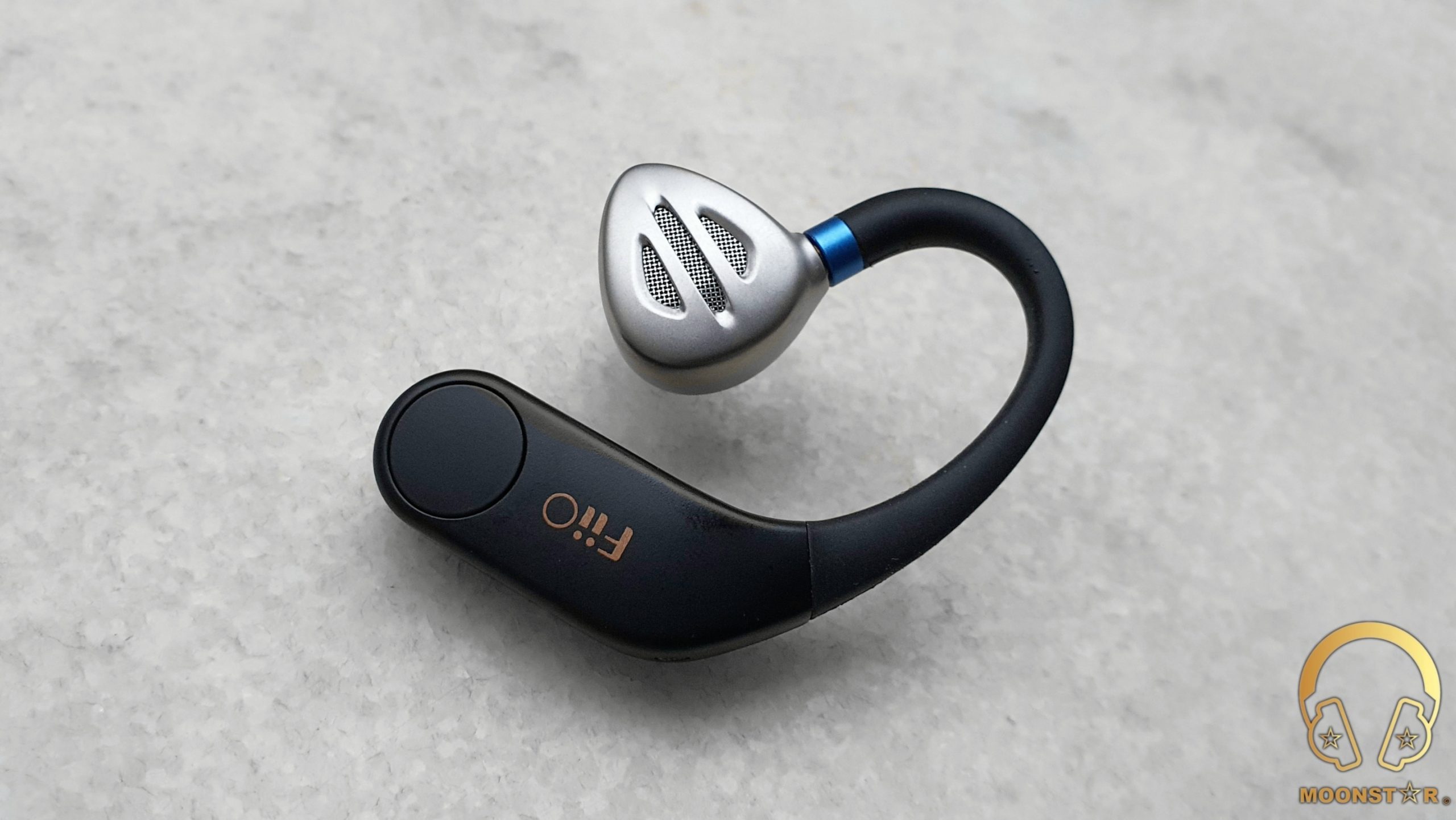
On the front of each device is the multifunctional control button that has a form of a circle. Behind the button is a waterproof membrane than gives the UTWS5 a water resistant level of IPX4.
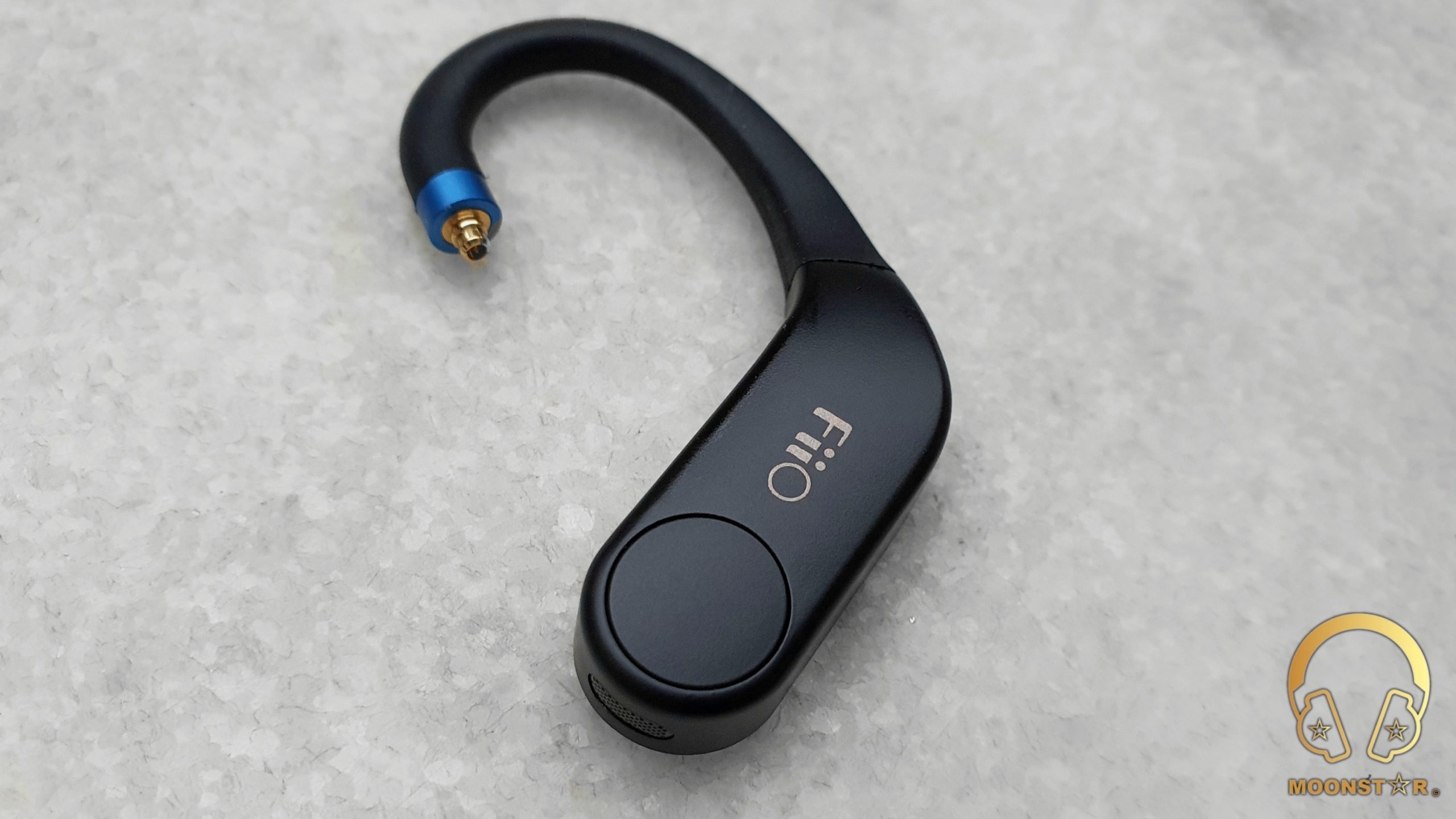
Here is also the FiiO brand logo, but this time in gold color instead of grey that we have seen on the UTWS3.
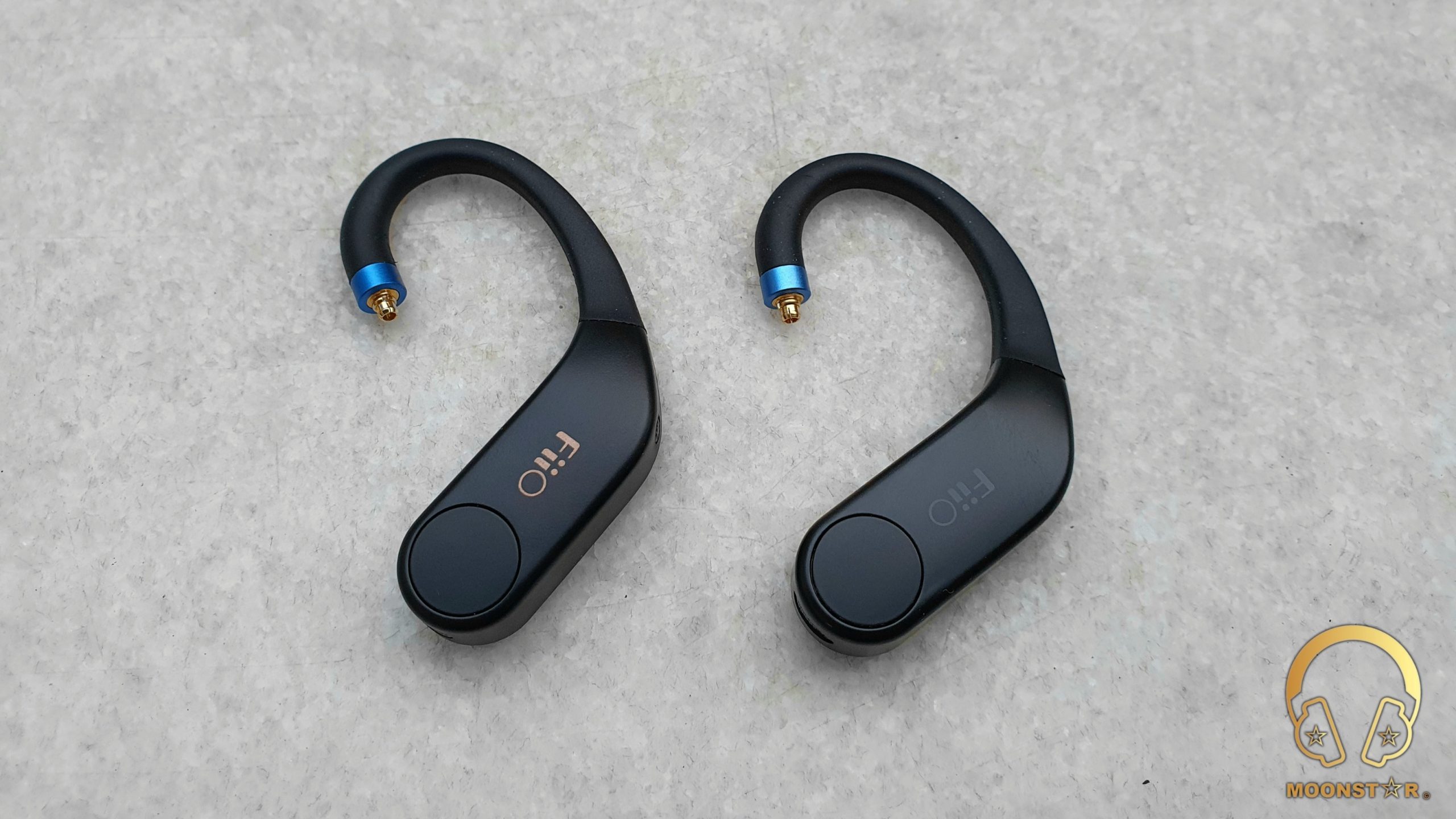
The rear side of the main body are has L (left device) and R (right device) markings and features a magnetic surface with 3 small connectors in forms of metal dots, which are dedicated to charge the internal battery of the each UTWS5 unit.
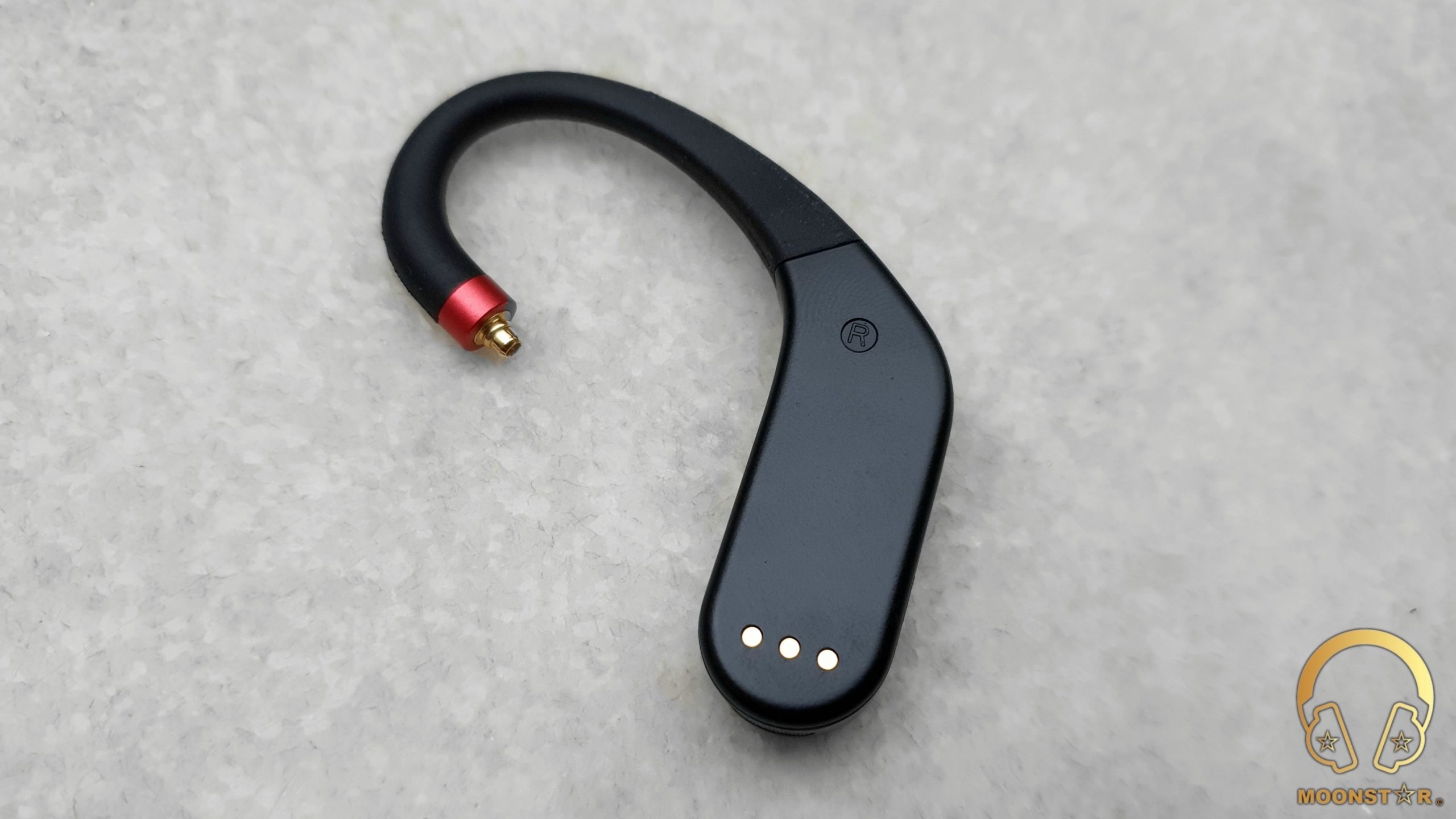
The FiiO UTWS5 features two built-in microphones, which are the primary and secondary microphones. The primary microphone that is located at the bottom of the adaptor right under a plastic mesh is responsible to pick up your voice. Here is also a LED status indicator.
The secondary microphone is located at the rear side of the adaptor that is also protected by a plastic mesh. This microphone picks up the ambient noise and features Qualcomm’s cVc noise cancellation technology.
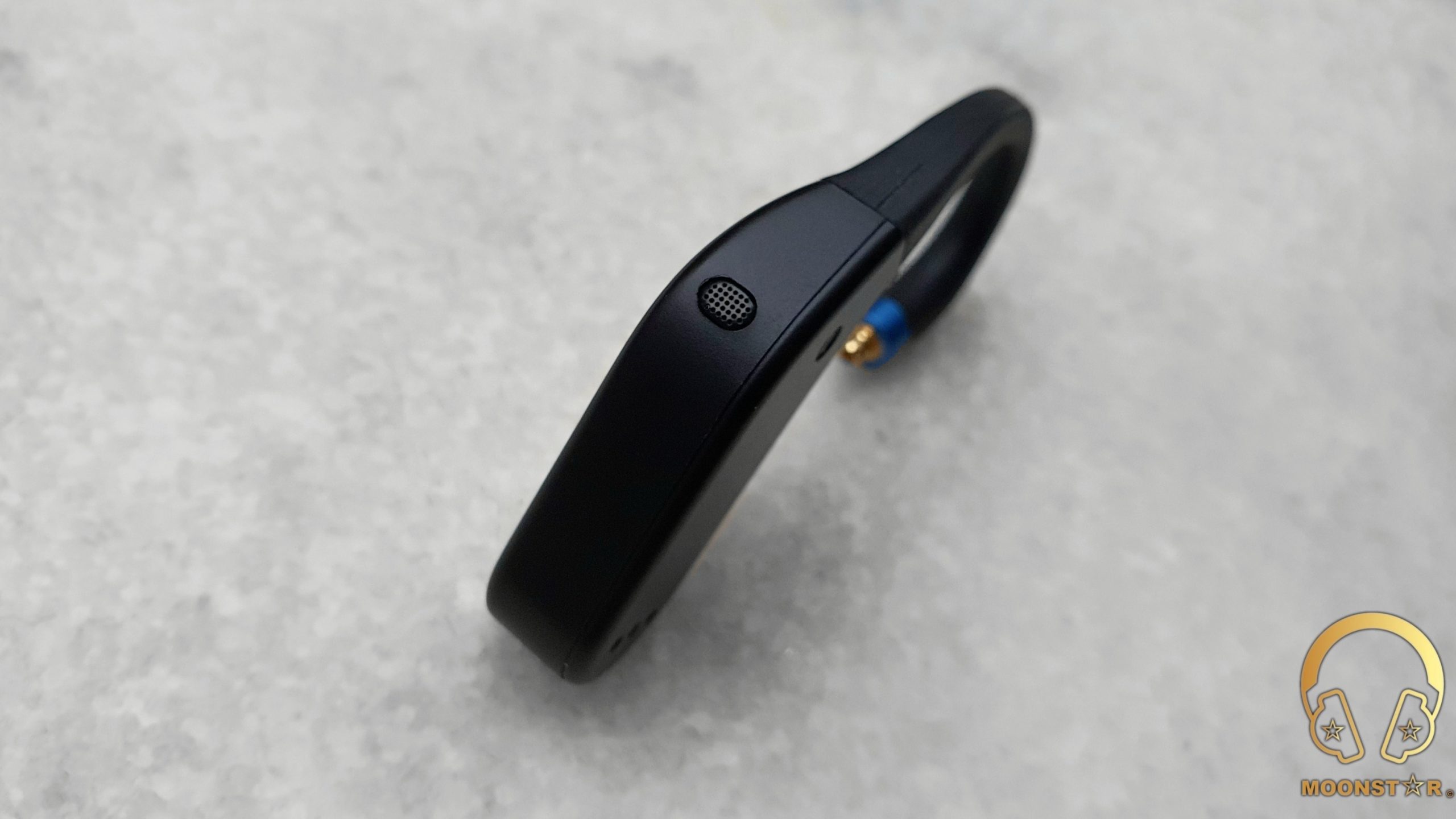
The microphones to have a special type of water resistant sound-permeable cotton isolation that is part of the IPX4 water resistance structure of the UTWS5.
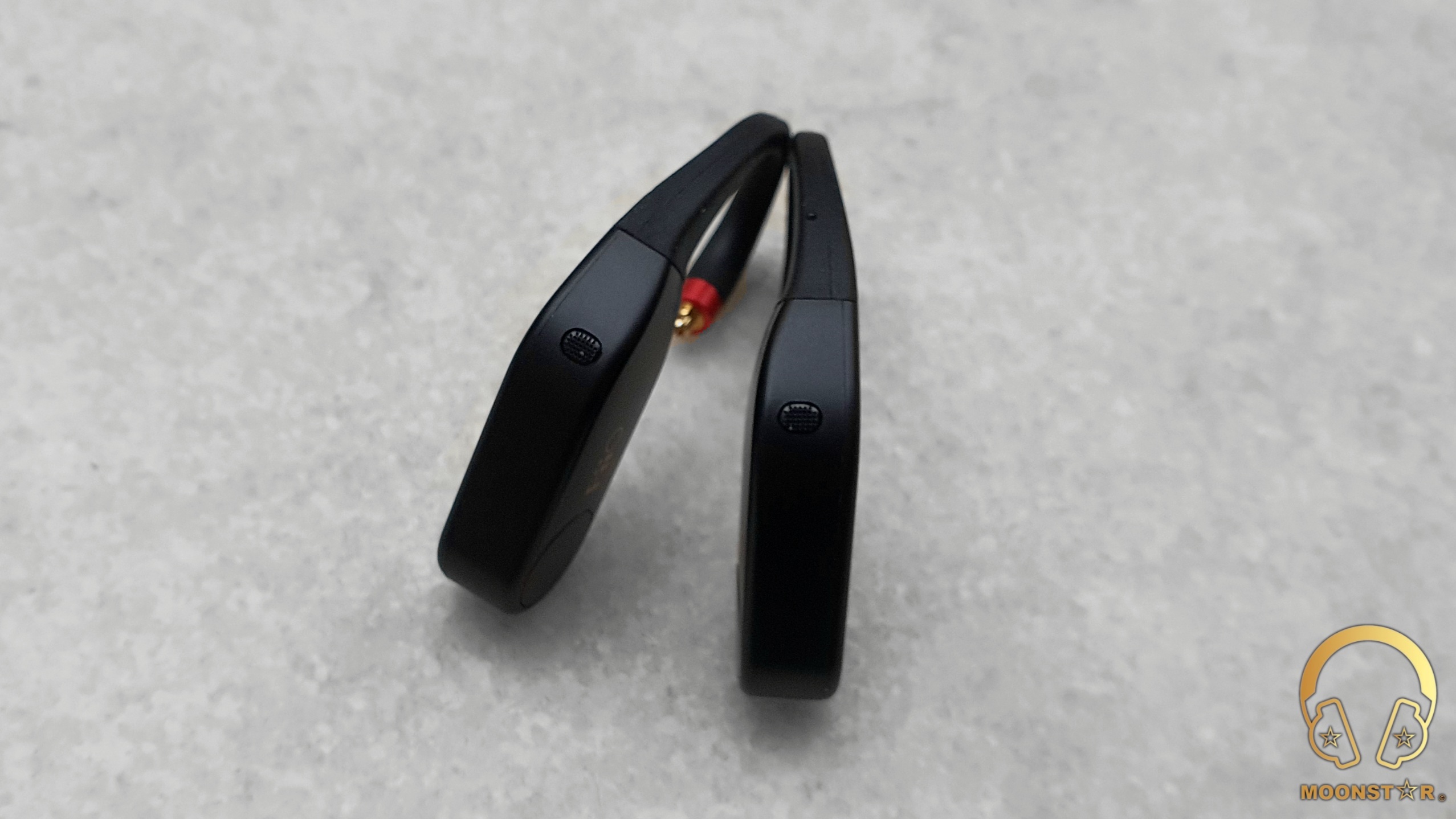
The UTWS5 has a flexible ear hook design with a special type of memory wire inside that is surrounded with soft rubber isolations. Inside the ear hooks are is a high quality cabling which is made of High Purity Monocrystalline Silver Plated Copper wire material.
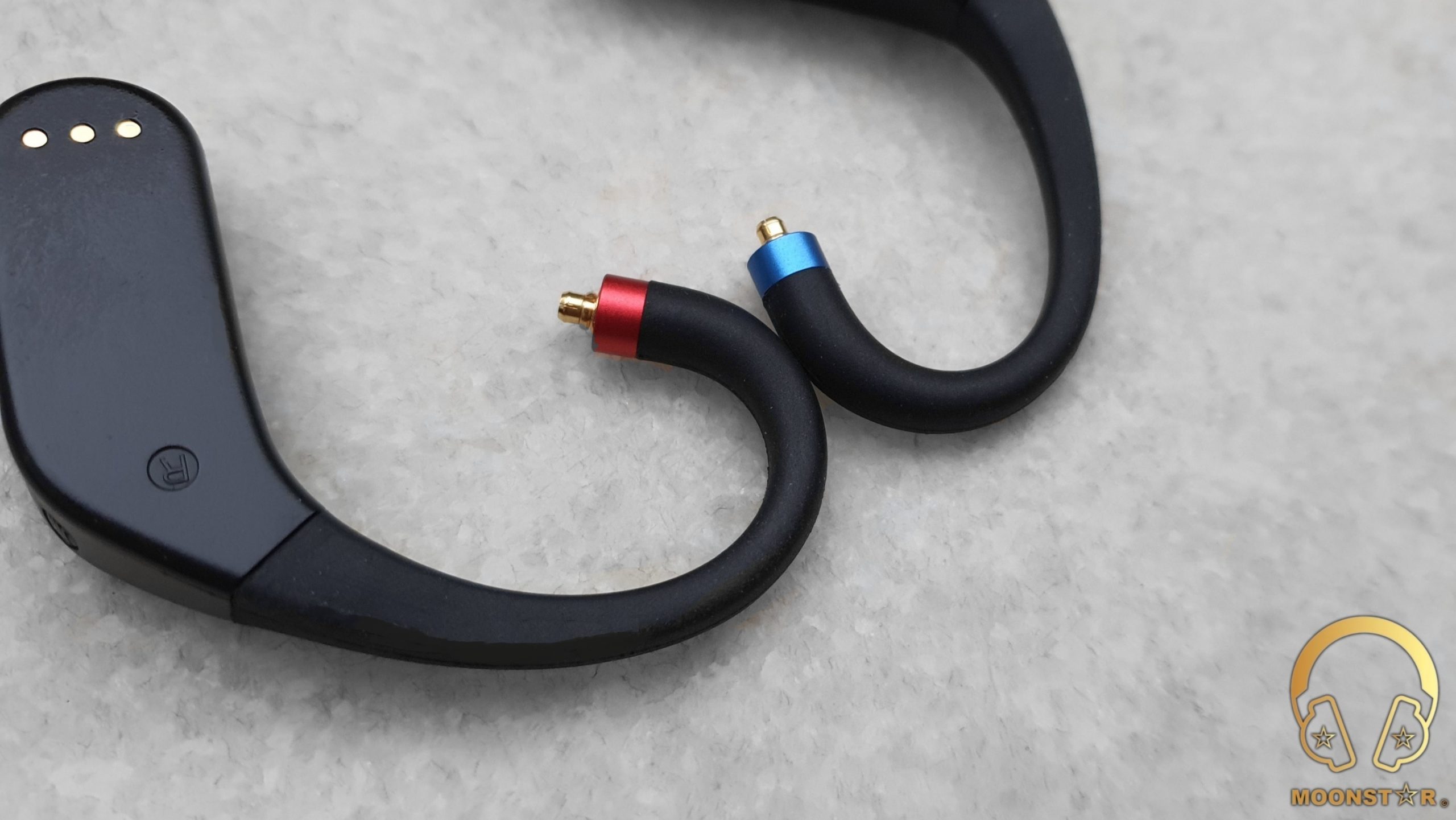
The UTWS5 is available with an MMCX connector interface, while a 2-Pin variant will be released soon.
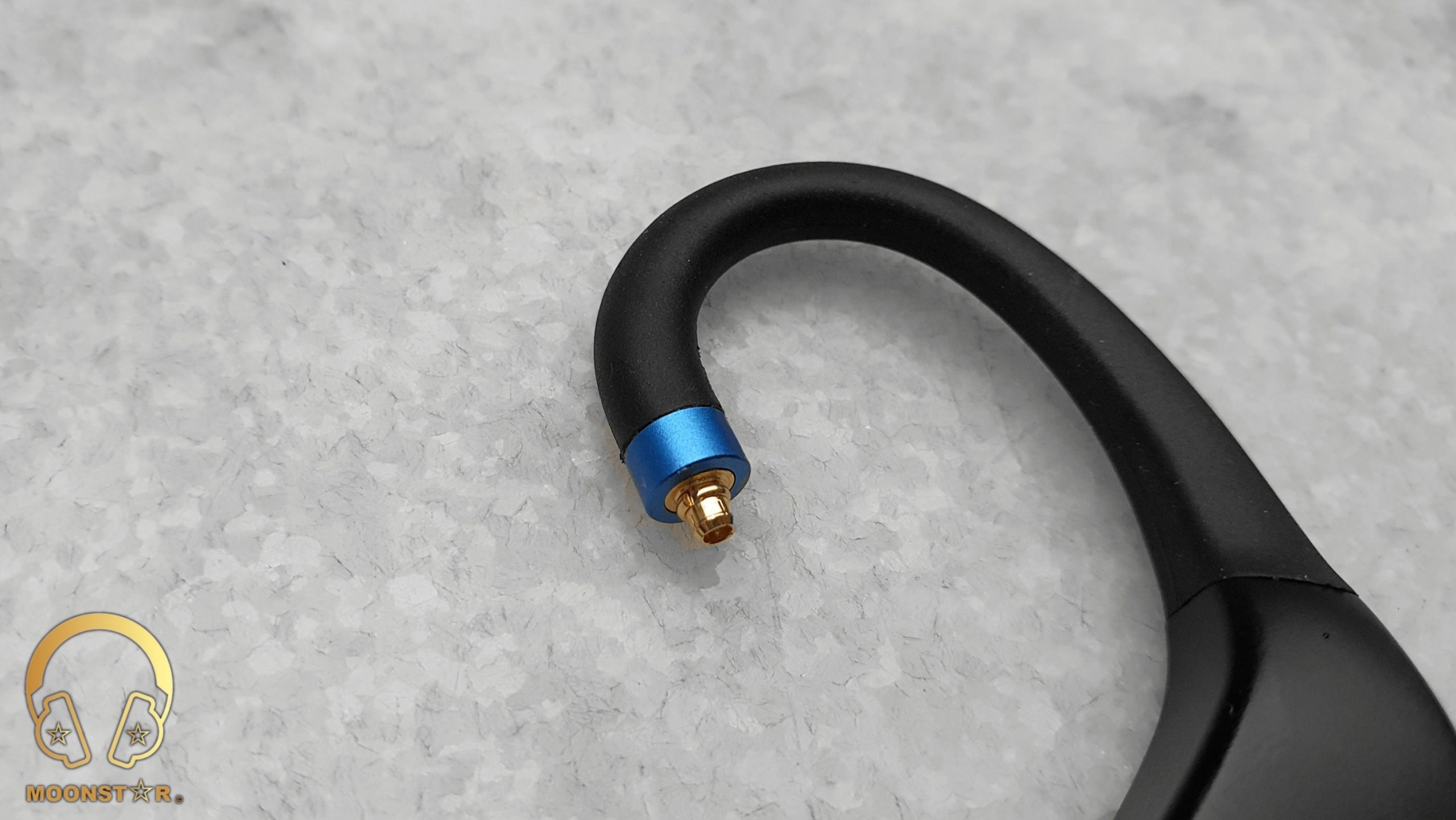
The MMCX male connectors on the device do offer a pretty tight and secure connection with almost all IEM’s I have tested with it. Both adaptors do have left and right color indicators near the male connectors in form of a metal that do look very esthetical.
Charging Case & Battery Life:
The FiiO UTWS5 comes with a charging case same like TWS earphones, which is made of plastic material in black color with a smooth surface. The corners are nicely rounded and do give a nice sense of grip. The top of the case has a plane surface with a small FiiO brand logo in gold color.
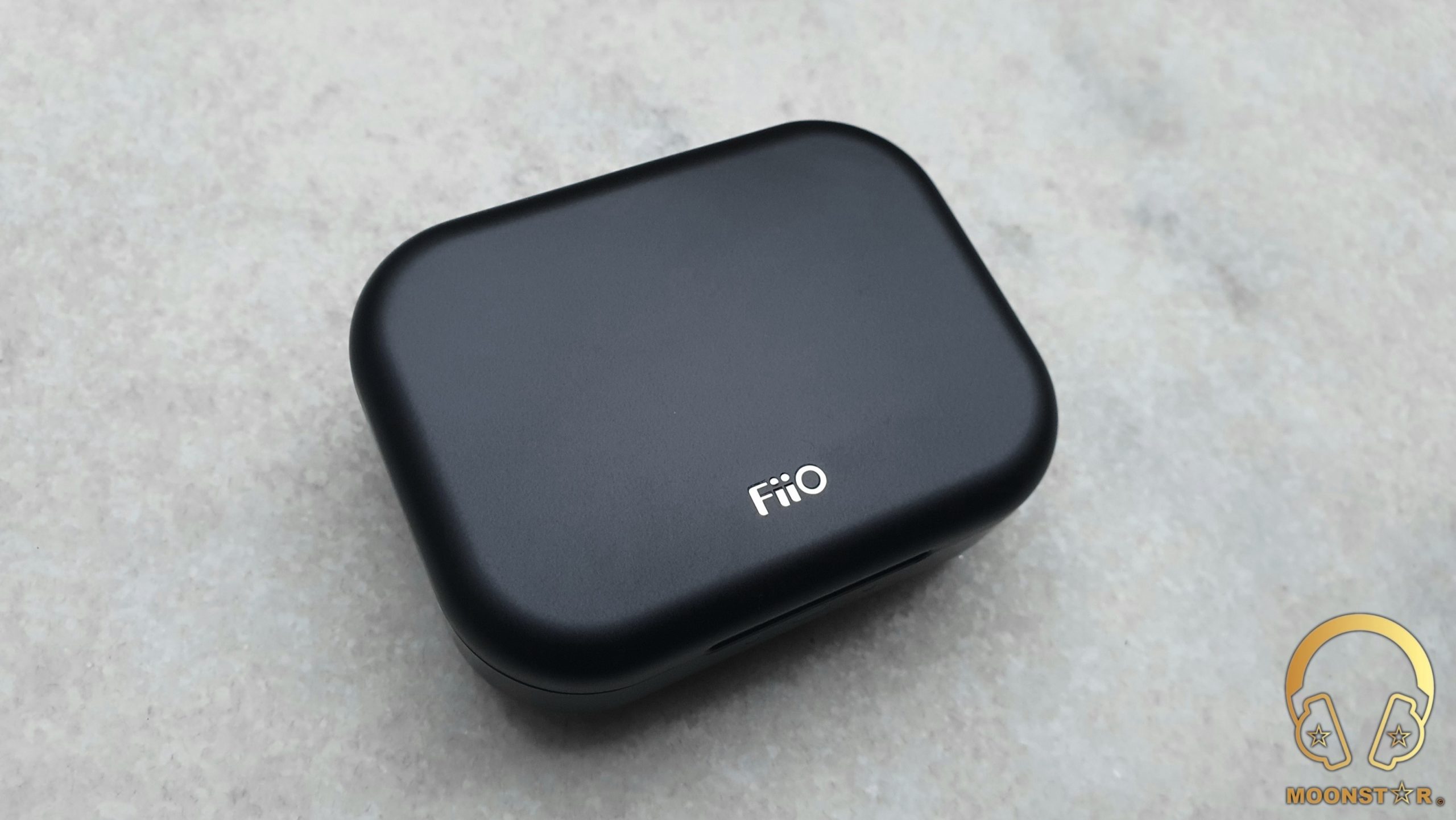
On the front of the case are 3 LED indicators, the one in the middle shows the charging status of the build in battery that is integrated in to the internal case body. The smaller LED’s do give information about the charging process of the Left and Right adaptors, which is a nice feature.

At the bottom of the case are some technical specifications and industrial certification about the UTWS5.
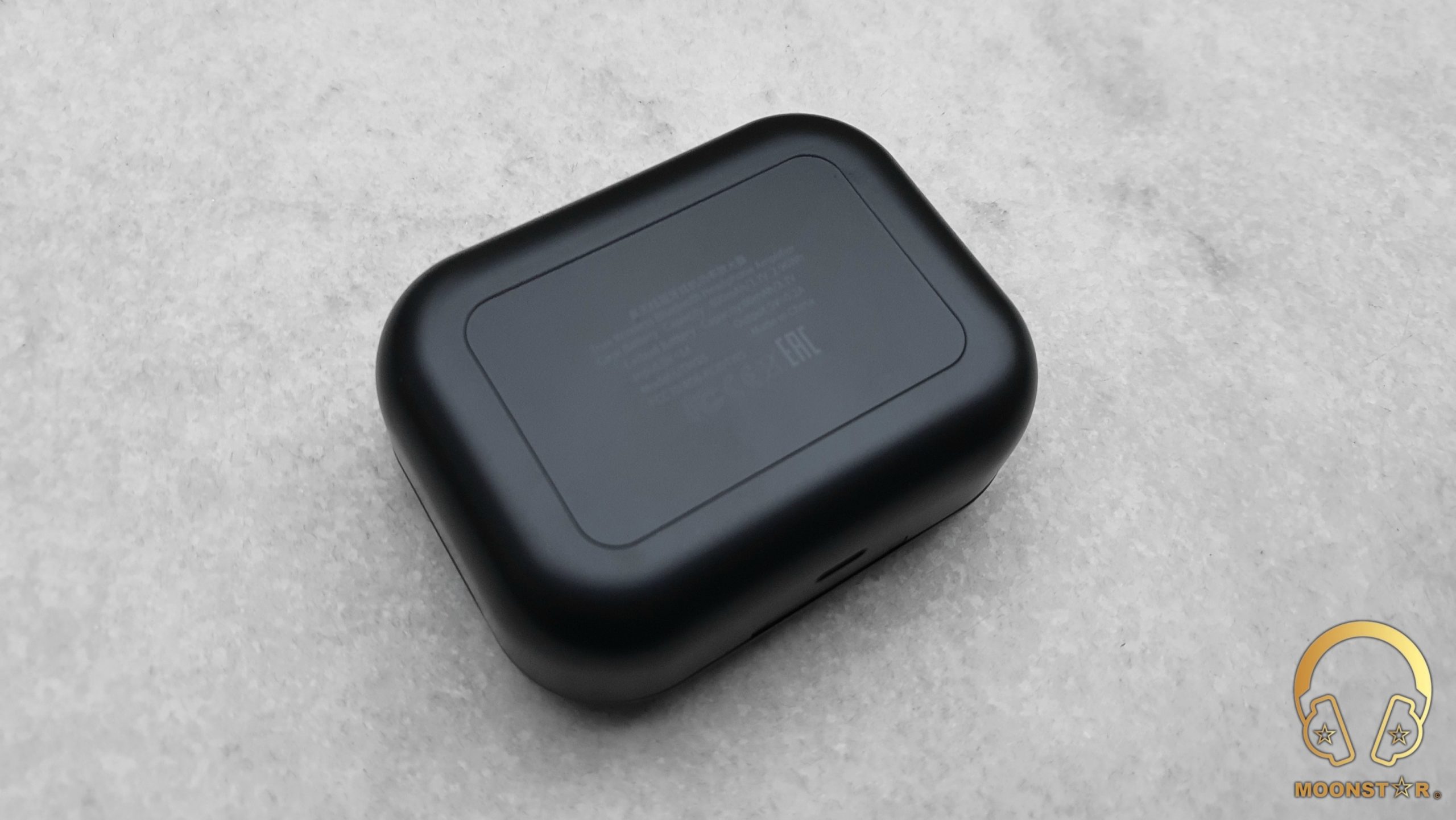
On the rear surface is the USB Type-C charging port and hinge in dark grey color.
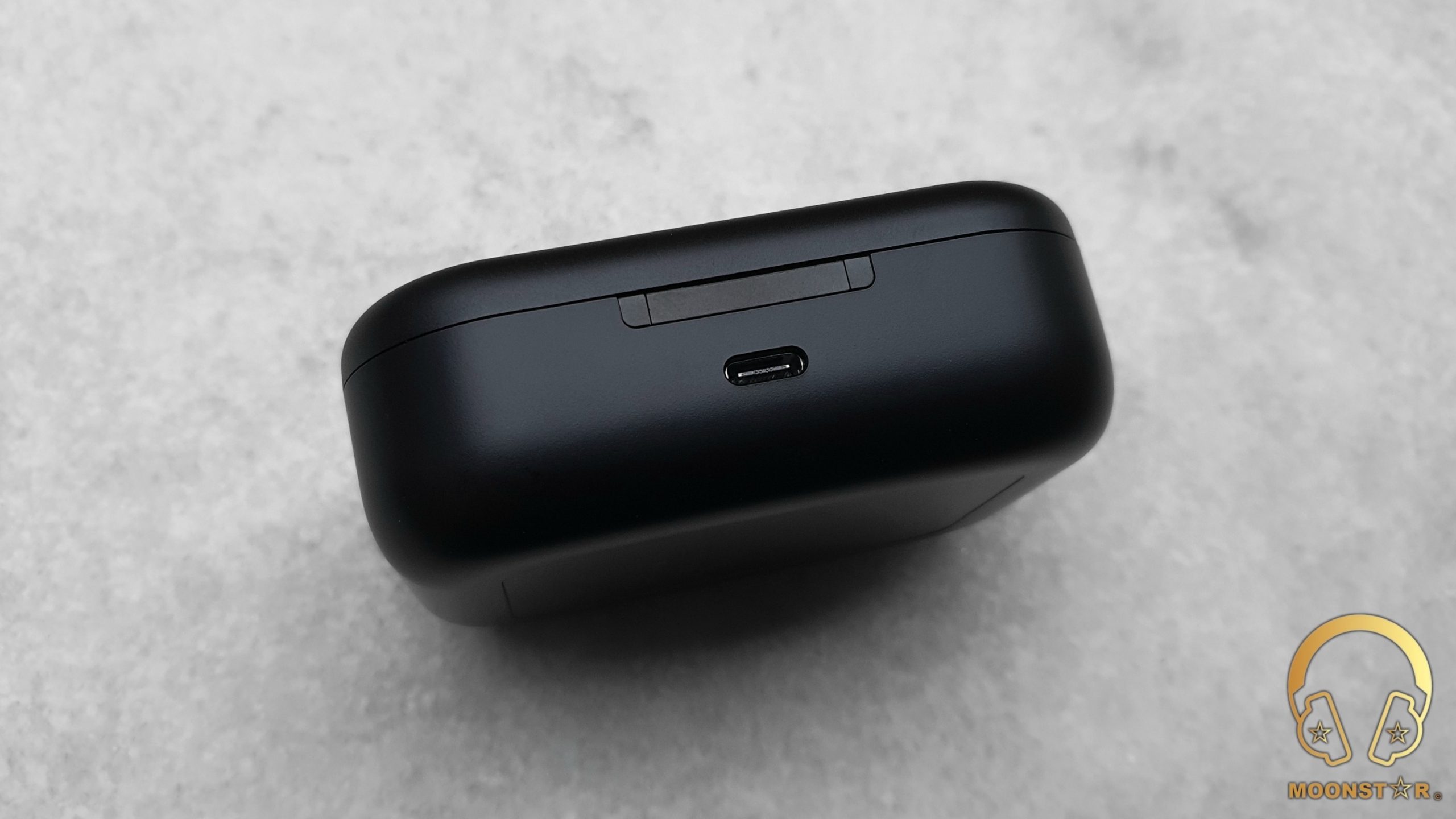
When you open the case you will see the seats for the adaptors. These seats have a magnetic surface to ensure a tight/save connection for the charging process and to avoid any drop out of the monitors. Here are also left and right marking and a small circular pairing button that resets the pairing status when you put both adaptors in to their seats.
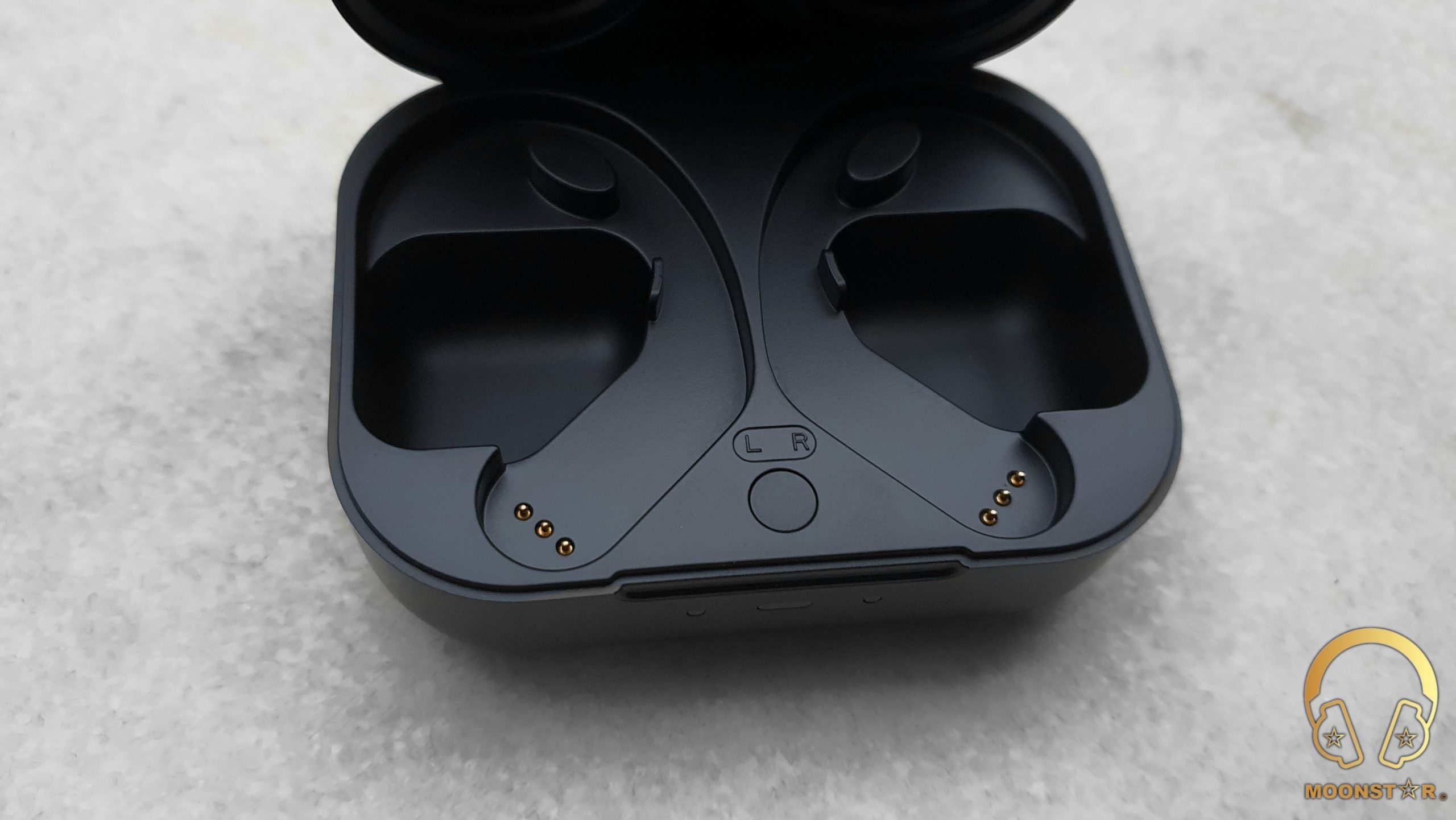
The charging case has an 800mAh built-in battery and offers up to 30 hours of additional battery when fully charged. Each UTWS5 adaptor comes with a 60mAh build in battery that offers a continues playback time of about 7-8 hours on a single charge when you use it with the AAC codec. The battery case on the other hand gives you another 30 hours, which is quite decent.
The charging case of the UTWS5 supports wireless charging, which is a nice addition.
Specifications:
- DAC : AK4332
- BT SoC : Qualcomm QCC5141
- Bluetooth Version : BT 5.2
- Transmission distance : approx. 10mt
- BT Codec’s : AAC/SBC/aptX/atpX adaptive
- Sampling Rate Supported : up to 96kHz-24bit
- Frequency response : 10Hz~41kHz (-3dB)
- THD+N : <0.002% (1 kHz/32Ω/dbA)
- SNR : ≥109dB (dbA)
- Noise Floor : <2μV(dbA)
- Channel Separation : ≥86dB (1 kHz/32Ω)
- Output power 1 : ≥54mW(16Ω / THD+N<1%)
- Output power 2 : ≥33mW(32Ω /THD+N<1%)
- Output Impedance : <0.4Ω(32Ω)
- Drivability : 16~100Ω
- Battery Life : about 7-8 Hours (with AAC Codec)
- Charging Time : approx 1.5 hours (Adapters), 2 Hours (Charging Case)
- Waterproof Level : IPX4
- Charging Connector Type : USB Type-C
- Total Weight : approx 122grams (Includes Adapters)
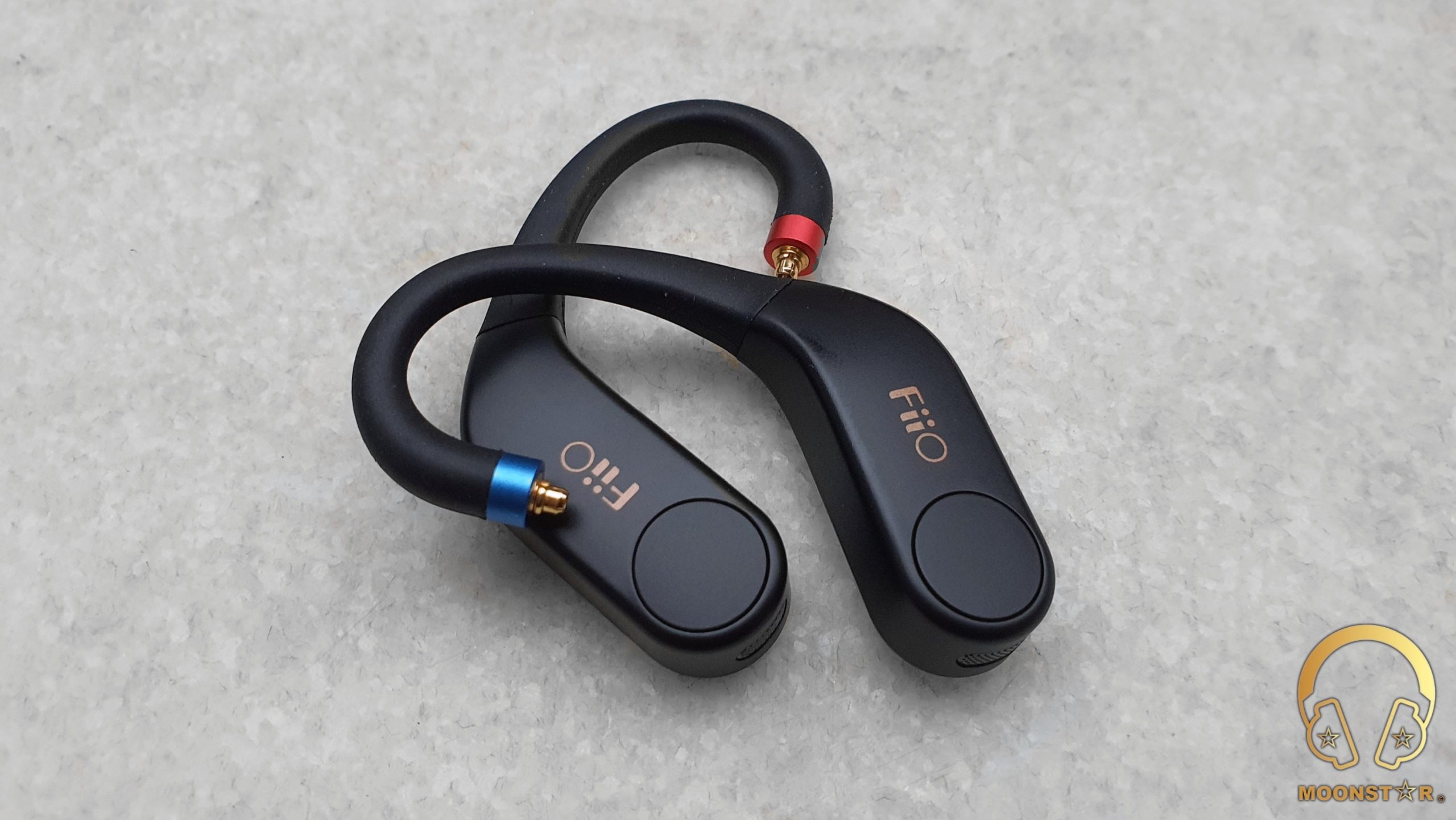
Pairing, Navigation, Signal Strength & Call Quality:
The pairing of the FiiO UTWS5 with your source like a Smartphone, Tablet, DAP, etc is pretty easy. You only need to turn on the left and right monitors when you first use them and do some easy steps to pair it with your source that is detailed described in the user manual.
Once you have pair the left and right monitors by the first use the pairing action will be done automatically. You only need to take it out from the charging box/case at the same time. A female voice is announcing the status of your FiiO UTW5 like power on/off or pairing.
You can easily control the UTWS5 with the multifunctional buttons to answer, hang up, play, pause and many more.
Here are some basic button controls;
- Vol+ :tap left unit
- Vol- :tap right unit
- Play : tap 2 times
- Pause :tap once when paused
- Next :Long press right unit
- Prev : Long press left unit
The FiiO UTWS5 offers also a pretty good performance in terms of latency while watching YouTube and movies on Netflix thanks to the atpX adaptive codec that is supported by the new Qualcomm QCC5141 Bluetooth SoC.
The operating distance of the UTWS5 is approx. 10 meters which is also quite stable, while the call quality is on an average level. The call quality is pretty decent when paired with my Samsung Galaxy Note10 Plus. The voice transmissions sounded fairly clear.

Amplification:
The UTWS5 shows an audible improvement compared to the UTWS3 in the amplification department. The output power has been increased from 38mW @ 16 ohm (UTWS3) to 53mW and from 23mW @ 32 ohm (UTWS3) to 33mW, which is quite impressive. It can drive the FH9, FD5 and FH3 to pretty loud volume level.
Some Key Features:
AK4332 DAC Chip:
UTWS5 is the first True Wireless Set to feature an independent DAC chip. It is equipped with AKM’s high-performance AK4332 DAC chip that provides better signal decoding with lower distortion and a clean noise-free background. It is supported by a powerful amplifier chip that effectively provides better output thrust than the previous model.

Qualcomm QCC 5141 BT SoC:
FiiO UTWS5 adopts Qualcomm’s latest QCC5141 Bluetooth signal receiver chip. It brings major performance upgrades over the previous generation QCC3020, with better, stable Bluetooth connectivity and support for AptX Voice high-definition voice transmission. It also helps in better high-resolution wireless transmission support.

FiiO Control App:
UTWS5 can be connected using FiiO Control and FiiO Music Application that allows for managing different functions on the units. They also have precise volume adjustment with 32 levels of volume compared to 26 levels on the UTWS3. Moreover, you can adjust the EQ settings, Channel Balance and other Audio options of the device. Even a OTA (Over The Air) FW update is possible that is only supported with Android devices.
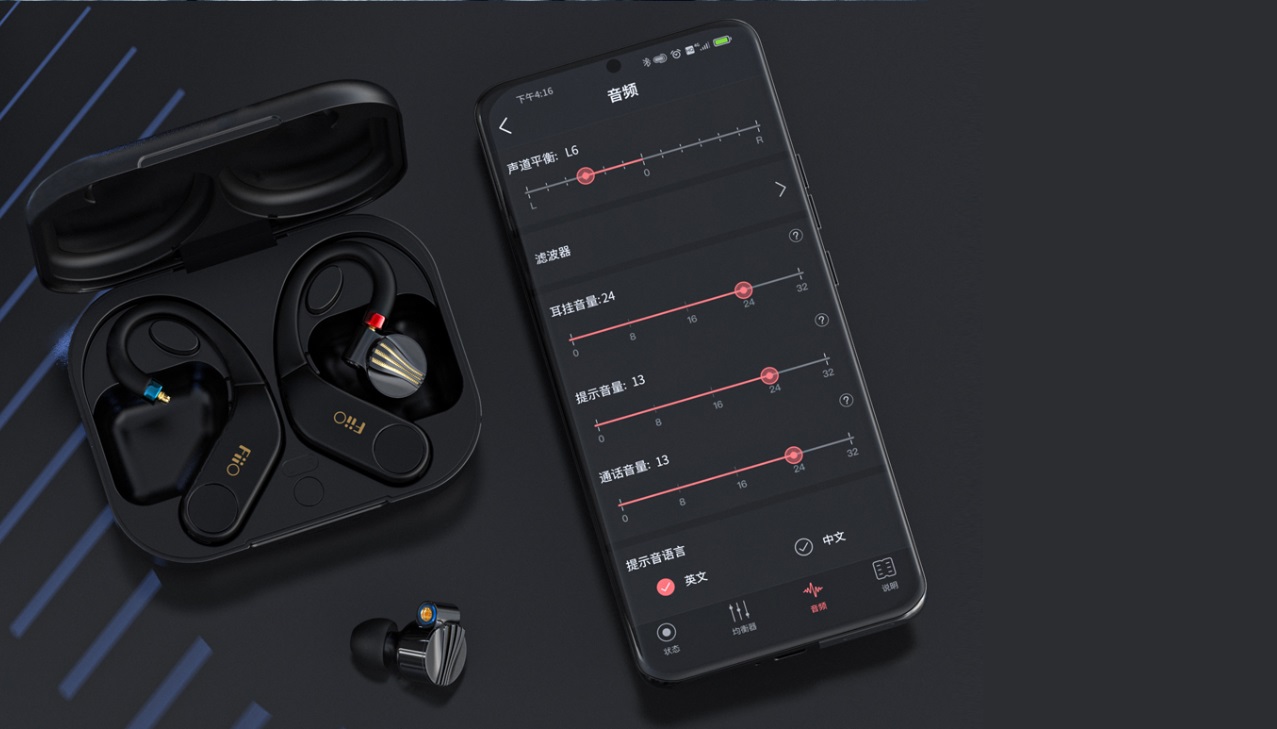
Qualcomm TWS+ Dual Transmission Technology:
The TWS+ technology allows your Smartphone to directly connect to each 2 wireless earbuds / IEM’s separately. This is a useful feature for a lower level of latency and more stable connection.
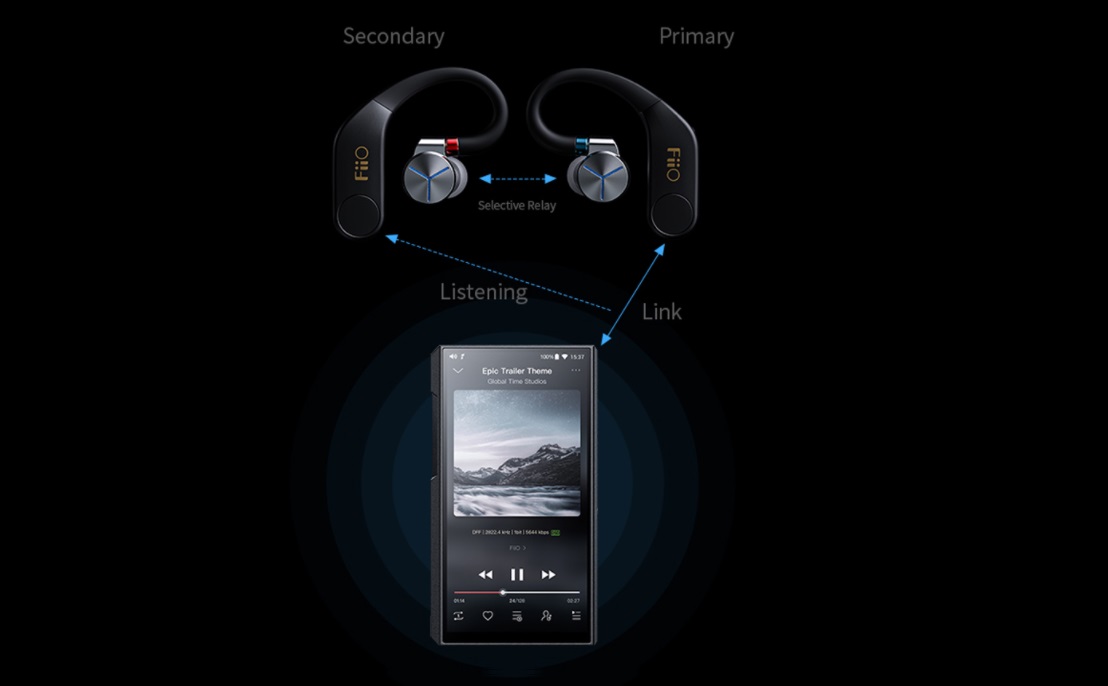
Equipment’s used for this review:
- TWS Adaptors : FiiO UTWS5, FiiO UTWS3
- Paired IEM’s : FiiO FH9, FiiO FD5, FiiO FH3
- Paired Sources : FiiO M11 Pro, Samsung Galaxy Note 10 Plus, Apple iPad Air2
Albums & tracks used for this review:
- Adele – My Little Love (Spotify)
- Randy Crawford – On Day I Will Fly Away (Flac 16bit/44.1kHz)
- Mariah Carrey – Without You (Flac 16bit/44.1kHz)
- Sarah McLachlan – Angel (Flac 24bit/48kHz)
- Sertap Erener – Aşk (Flac 16bit/44.1kHz)
- Edith Piaf – Non Je Ne Regrette Rien (Flac 16bit/44.1kHz)
- Diana Krall – So Wonderful (DSF)
- Aretha Franklin – I Say A Little Payer (Flac 24bit/96kHz)
- Elton John – Rocket Man ((Flac 24bit/96kHz)
- Barry White – Just The Way You Are (Flac 24bit/48kHz)
- Sting – Englishman in New York – (Flac 24bit/48kHz)
- Eric Clapton – Wonderful Tonight (Flac 24bit/96kHz)
- B.B. King – Riding With The King (Tidal Hi-Fi)
- Bro Safari, UFO! – Drama (Deezer HiFi)
- Armin Van Buuren – Vini Vici (Flac 16bit/44.1kHz)
- Lorde – Royal (Flac 24bit/48kHz)
- Toutant – Rebirth (Deezer HiFi)
- Gogo Penguin – Raven (Flac 24bit/192kHz)
- GoGo Penguin – Fanfares (Flac 24bit/192kHz)
- Charly Antolini – Duwadjuwandadu (Flac 24bit/192kHz)
- Michael Jackson - Billie Jean (Flac 24bit/192kHz)
- Ferit Odman – Look, Stop & Listen (Flac 24bit/192kHz)
- Chopin – Nocturn No. 20 In C-Sharp Minor (Flac 16bit/44.1kHz)
- Fazıl Say – Nazım Oratoryosu (Live) (Flac 16bit/44.1kHz)
- Vivaldi – Le QuarttroStagioni “The Four Season” (Deezer HiFi)
- Otto Liebert& Luna Negra – The River (Flac 24bit/192kHz)
- Photek – The Hiden Camera (Spotify)
- Muse – Hysteria (Flac 24bit/48kHz)
- Metallica – Sad but True (Flac 24bit/96kHz)
- Opeth – Windowpane (Flac 16bit/44.1kHz)
- Megadeth – Sweating Bullets (Tidal Hi-Fi)
- Rush – Leave That Thing Alone (Flac 16bit/44.1kHz)
- Slayer – Angel of Death (Spotify)s
- Liquid Tension Experiment 2 – Acid Rain (Spotify)
- Yosi Horikawa – Bubbles (Spotify)
The Sound:
The FiiO UTWS5 is a decent sounding BT DAC/Amplifier Solution that offers mildly warm tonality that is not overdone. This is the general characteristic of almost any devices that do use an AK (Asahi KASEI) DAC. The bass shows a pretty good sense of body, depth and authority for a BT device with all IEM’s I have tested the UTWS5. The midrange sounds pretty clear and lively and detailed, while the treble area is reproduced with a good level of airiness and sparkle.
The FiiO UTWS5 review has been written after a burn-in period of about 50 hours. The sound impressions are mainly based on my pairings with the FiiO FH9 and FD7. My main BT source was the FiiO M11 Pro, beside the Samsung Galaxy Note10 Plus.
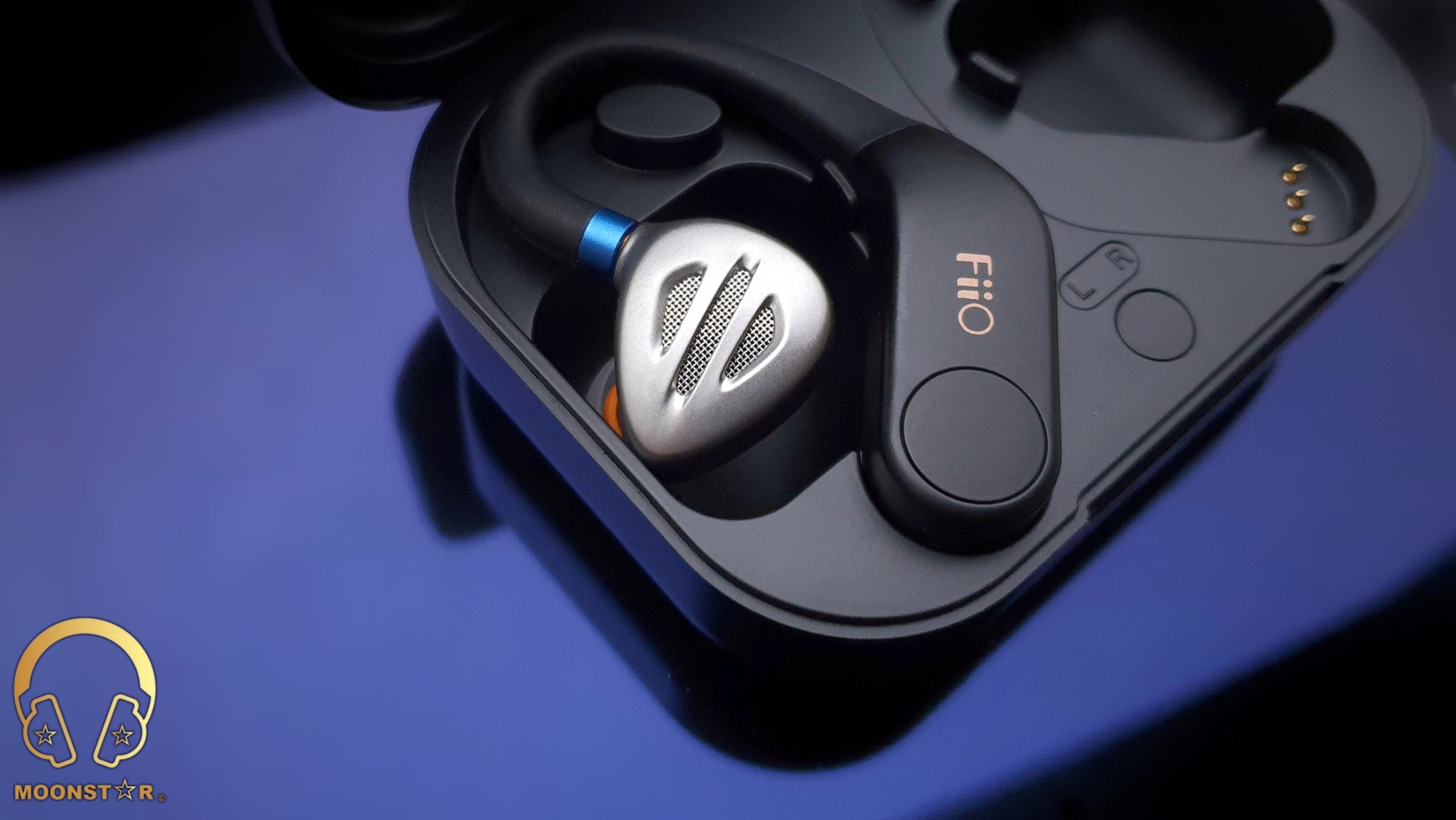
Bass / Midrange / Treble / Soundstage
The UTWS5 pairs extremely well with FiiO’s FH9, FD5 and FH3 universal IEM’s, which I have used during my auditions. The background is surprisingly silent for such a True Wireless BT DAC/AMP adapter.
UTWS5 is able to produce a good sense of subbass depth, rumble and extension for a BT DAC/Amplifier Adapter. The rumbles produced in this area are shown with a good level of authority, especially when I have paired the devices with the flagship Hybrid IEM FH9 of the company. The midbass region on the other hand sounds in general petty impactful and controlled. What I like is the body and depth that is produced without to lead to any unwanted midbass hump and mixings. The general bass presentation of the UTWS5 can be described as fairly deep, controlled and clean with above average level of resolution for a BT DAC/Amplifier Adapter.
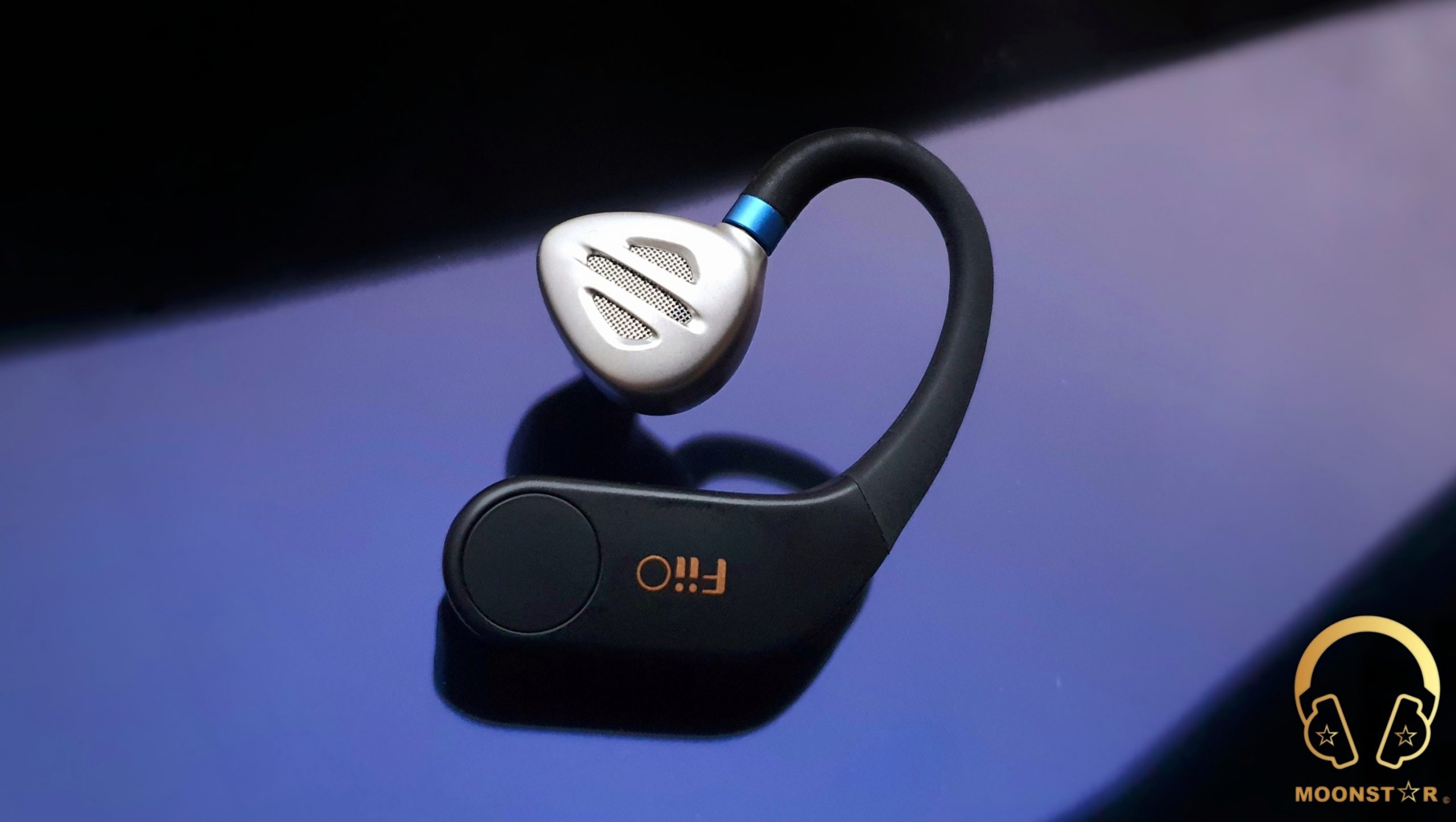
The FiiO UTWS5 has a fairly transparent and detailed midrange presentation and shows a mildly warm tonality in this area. The lower midrange region shows an efficient level of body and depth especially when I do listen to the UTWS5 with the FH9 flagship Hybrid and to the FD5 which is a decent sounding Single Dynamic Driver IEM of the company. Male vocals and instruments like cellos or acoustic guitars are reproduced with sufficient amount of body and depth. The upper midrange on the other hand is pretty pronounced but controlled, so that female vocals and instruments like violins and pianos are musical and transparent, without any remarkable harshness and sibilance. The existing upper midrange extension is a bit short, but still pretty sufficient for a BT DAC/Amplifier Adapter.

The FiiO UTWS5 shows a treble presentation that sounds moderately bright, fairly crisp and surprisingly detailed for a BT DAC/Amplifier adapter with all IEM’s I have listened. The transitions from the upper midrange towards the lower treble are do sound in general pretty controlled in moments when instruments do play with high level of distortion. The lower treble area shows decent sense of clarity, especially when I pair the UTWS5 with the FD5 and FH9 IEM’s. When it comes to the upper treble presentation, I can say that the UTWS5 offers a efficient sense of airiness and sparkle when I do listen to instruments such like pianos, violins or to percussion instruments like hi-hats or cymbals.
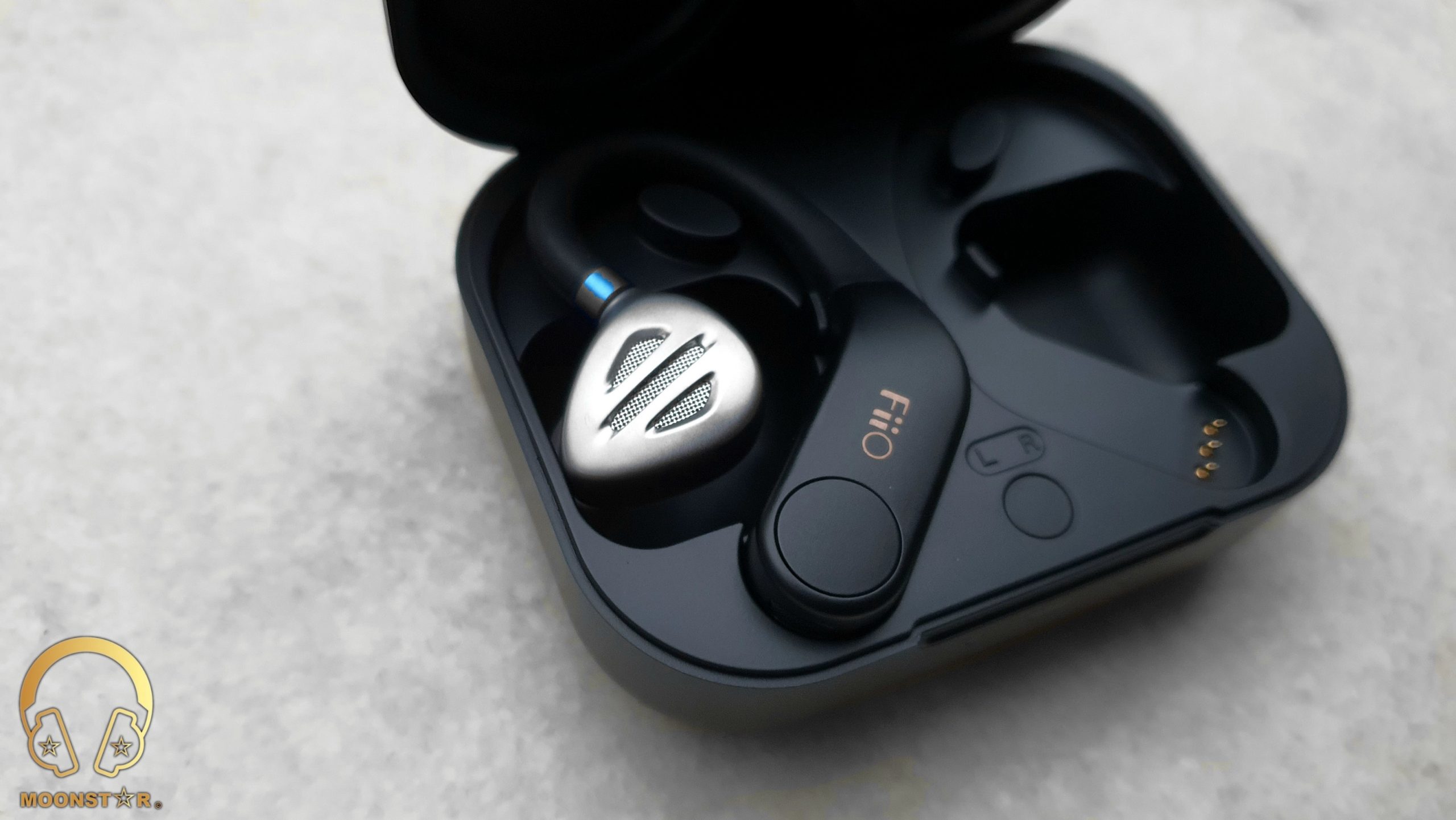
The UTWS5 offers a moderately expansive soundstage atmosphere that shows conditions for a fairly precise placement of instruments and vocals. The stage shows a good sense of wideness, while the depth is on an average level.
Comparison:
FiiO UTWS5 versus FiiO UTWS3:
Both the UTWS5 and the UTWS3 do look almost identical and there is no change in build quality. One of the most noticeable differences is the output power where the UTWS5 shows a big improvement. However, this doesn’t mean that the UTWS3 was not powerful, while it is a welcome improvement if you have an IEM that need lot of power like the TIN HiFi P2 or Final Audio E5000.
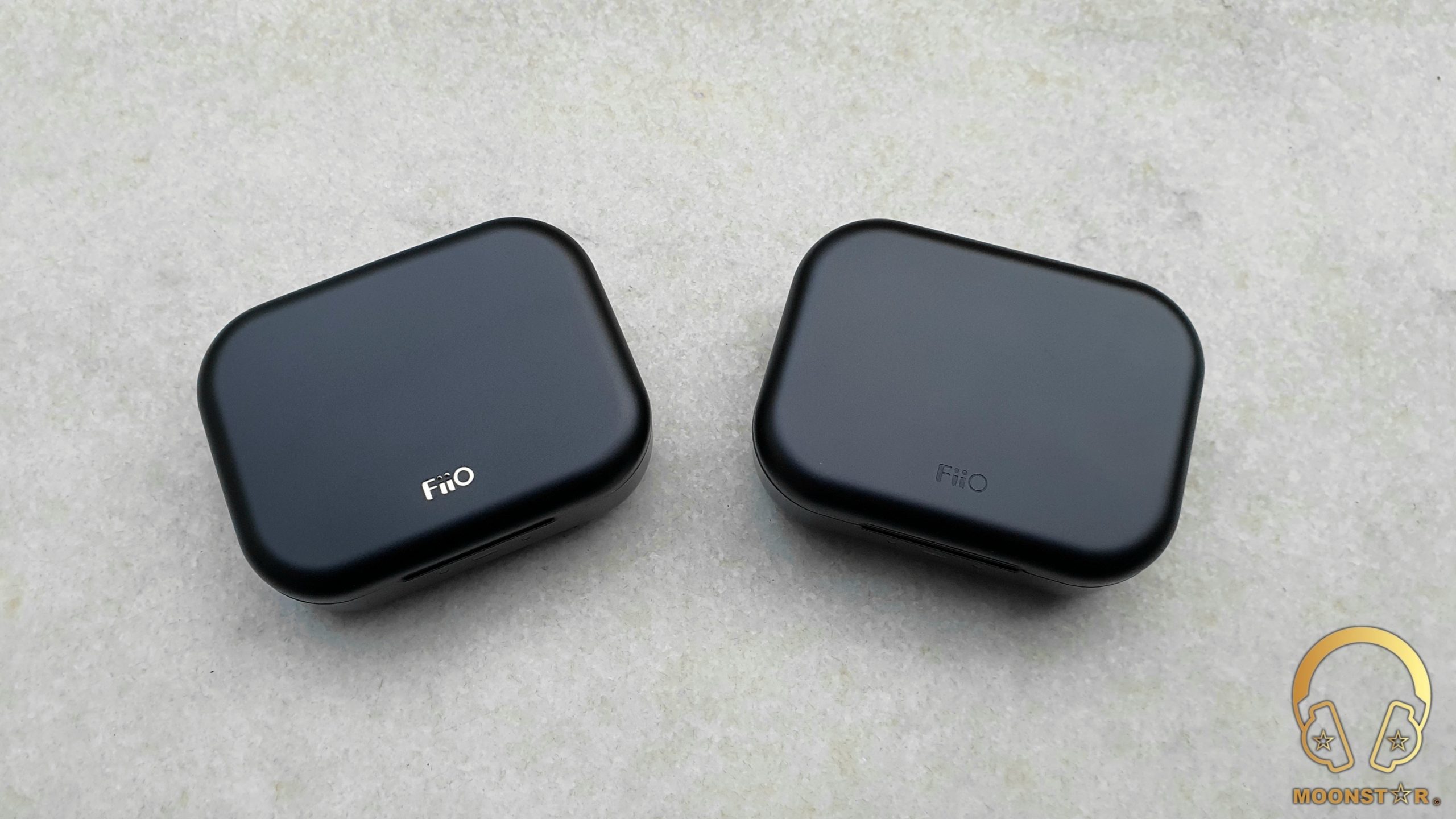
The UTWS5 shows a slightly warmer tonality and a darker/cleaner background, which makes it easier to located instruments in the background. The subbass region of the UTWS5 shows slightly more depth and rumble, while both a pretty equal in terms of control/authority in this area. The midbass region of the UTWS3 is slightly less highlighted and impactful compared to the UTWS5, which has the upper hand in terms of resolution in this area.
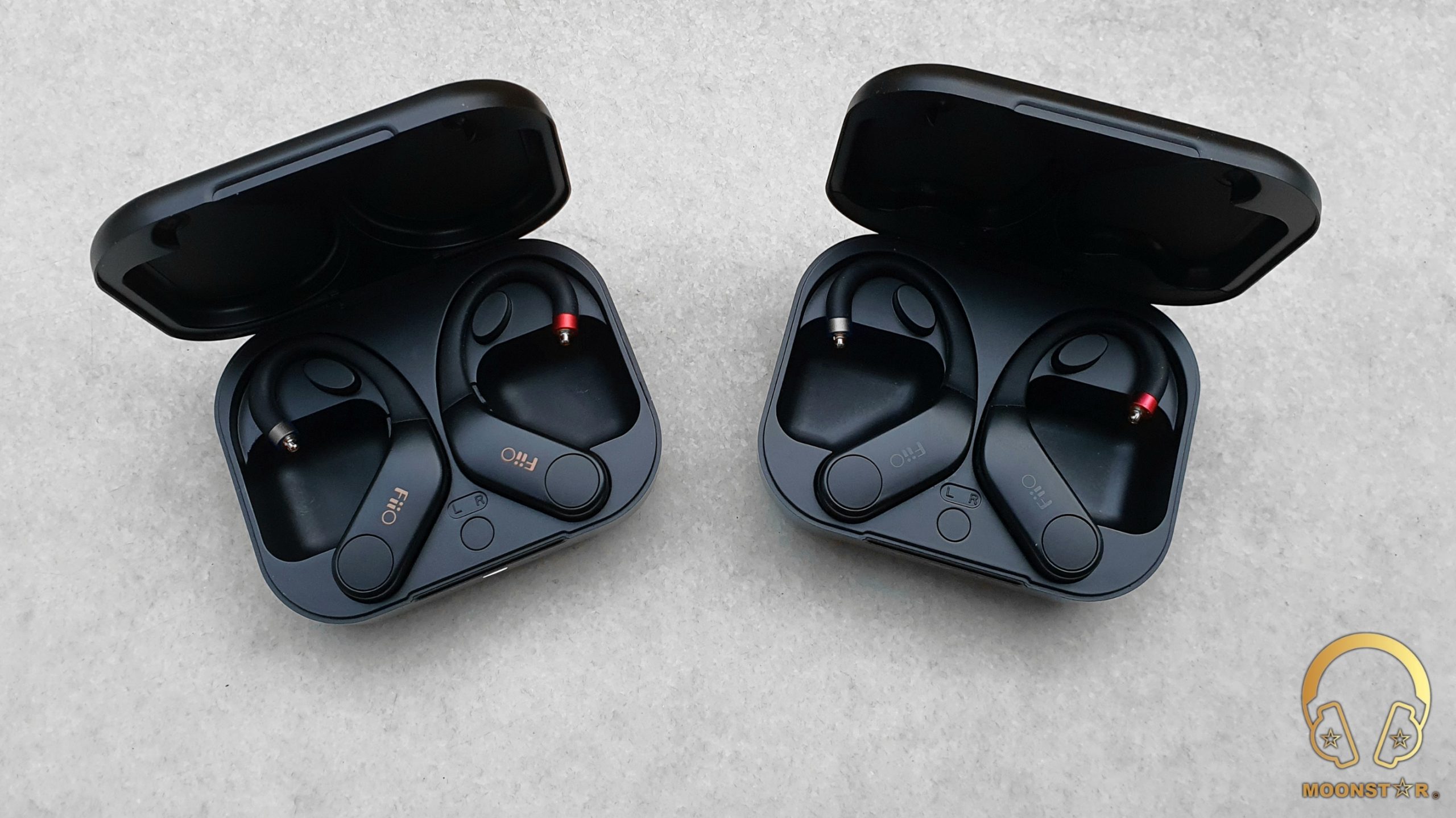
The midrange of the UTWS5 shows a bit more warmth and a better sense of musicality compared to the UTWS3 that sounds slightly more neutral I this area. The lower midrange of the UTWS5 shows more body/intensity when listen to vocals and instrument like violas and guitars.
The upper midrange of both devices is nicely emphasized, while the UTWS5 is the winner when it comes to the resolution in this area. The treble region of the UTWS5 shows a better level of clarity and definition, and offers also a better sense of airiness and sparkle.

The UTWS5 has the upper hand in terms of soundstage widens, while the depth of the stage is pretty similar on both devices.
Conclusion:
The FiiO UTWS5 is a decent product in this product category, which offers a great value for your money both in terms of features and when it comes to its general sound capabilities. The UTWS5 is more powerful, has a cleaner/darker background and shows an audible improvement when it comes to the overall sound performance over its predecessor the UTWS3, which was already a great product in this area. In short, highly recommended!
Pros & Cons:
- + Overall Sound Performance
- + Powerful and Clean Output (especially for a TWS adapter)
- + Ergonomics
- + Stabile Connection up to 10meters / Low Latency
- + Battery Life
- + IPX4 Water Resistance
- + APP Control/OTA Update
- + Decent Value for your Money
- - No LDAC support
- - Only available with MMCX interface (2-Pin variant may come soon)
Thank you for the Read!
alota
Thank you for review. I have 3 version. So you advice to buy the 5 or i stay with mine? My iem is a little hard tondrive, westone w30
Moonstar
You are welcome. The UTWS5 offers a pretty audible upgrade over the UTWS3 in terms of sound performance and output power. I think that it will be a good match with the Westone W30. Cheers
Moonstar
100+ Head-Fier
Pros: Overall Bass Performance (Power, Control, Resolution),
Highly Transparent & Detail Midrange Presentation (with Balanced Audio Filter),
Smooth, Airy and Controlled Treble Tuning (with Balanced Audio Filter),
Great Looking Ultra Robust Monitor made from Titanium Material,
Accessory Package (Pure Silver Cable, Interchangeable Audio Plugs & Audio Filters, etc.)
Highly Transparent & Detail Midrange Presentation (with Balanced Audio Filter),
Smooth, Airy and Controlled Treble Tuning (with Balanced Audio Filter),
Great Looking Ultra Robust Monitor made from Titanium Material,
Accessory Package (Pure Silver Cable, Interchangeable Audio Plugs & Audio Filters, etc.)
Cons: Sounds a bit unforgiving in the upper register with the Green Filter,
Solid Looking Titanium Shell is a bit heavy,
Average Passive Noise Isolation
Solid Looking Titanium Shell is a bit heavy,
Average Passive Noise Isolation
FiiO FH9 Hybrid IEM Review
Introduction:
2021 was a very productive year for FiiO, especially when it comes to In-Ear Monitors, whether Hybrids (FH5s/FH5s Pro), Single Dynamic Driver (FD3, FD5, FD7/FDX) and Pure Balanced Armature Driver (FA7s) In-Ear Monitors.
The FH9 is the brand new flagship Hybrid IEM of the company that features a 6BA+1DD driver configuration. The Hybrid Driver configuration is a combination of 6x Balanced Armature Drivers + 1x Dynamic Driver with a 13.6mm Diameter Self-Developed DLC (Diamond like Carbon) Diaphragm. The High frequencies are produced with the Knowles SWFK-31736 drivers.
Some other remarkable features are a Titanium Alloy Construction, Interchangeable Audio filters and a Semi Open Acoustic Design.

Disclaimer:
I would like to thank FiiO for providing the FiiO FH9 as review sample. I am not affiliated with FiiO beyond this review and all these words are reflecting my true and unaltered opinions about the product.
Price & Availability:
The actual price of the FiiO FH9 is 599.99 US$. More information’s can be found under the links below;
Package and Accessories:
The FH9 came inside a rectangular box that was wrapped with a fancy looking cardboard sleeve that features the product illustration and some product related brandings on the top.

After you remove the cardboard sleeve you will see the main box in black color that sport a sketch of the FH9 on the top and the motto of the company, which is “born for music”.

This box of the FiiO FH9 contains the following items;
- 1 pair x FiiO FH9 Hybrid In-Ear Monitors
- 1 piece x 8 Core detachable cable with MMCX connectors
- 1 piece x Interchangeable Headphone Plugs 4.4mm TRRRS, 2.5mm TRRS & 3.5mm TRS
- 3 pairs x Interchangeable Audio Filters (Green, Black, Red “Black came Pre-installed”)
- 3 pairs x Bass Ear tips (S/M/L)
- 3 pairs x Vocal Ear tips (S/M/L)
- 3 pairs x Balanced Ear tips (S/M/L)
- 3 pairs x SpinFit Ear Tips (S/M/L - 1 pair came preinstalled)
- 2 pairs x Double Flange Ear tips (M/M size)
- 2 pairs x Memory Foam Ear Tips (M/M size)
- 1 piece x HB5 Storage Case
- 1 piece x Cleaning Brush
- 1 piece x SK1 Magnetic Cable Organizer (can also be purchased here separately)
- 1 piece x MMCX Assist Tool
- 1 piece x Warranty Card and User Manual

The FH9 comes with a very rich ear tips collection same like other FiiO products that I have reviewed in the past, which has been placed in to a foam layer that is showing a short description about the sound effect and the size.
Here are 3 pairs of balanced ear tips (S/M/L size), 3 pairs of vocal ear tips (S/M/L size), 3 pairs of bass ear tips (S/M/L size), 2 pairs of SpinFit Ear Tips (S/M/L - 1 pair came preinstalled), 2 pairs of memory foam ear tips (M/M/ size), 2 pairs of Double Flange ear tips (M/M Size).

Inside the box are also 3 different Interchangeable Headphone Plugs (the 3.5mm SE, 2.5mm & 4.4mm Balanced plugs), which are part of the 8 core High Purity Monocrystalline Pure Silver upgrade cable.

The FH9 came also with some nice additions such like the SK1 Magnetic Cable Organizer, a cleaning tool and the FiiO MMCX Assist Tool.
Design & Build Quality:
The FH9 is an extremely stunning looking In-Ear Monitor that reflex FiiO’s next generation industrial design language. The FH9 features a Pure Titanium Alloy construction that is a very rigid material, which is also according to FiiO, able to greatly minimize unwanted harmonics and resonances to improve the overall sound performance.
The monitor shell of the FH9 is precisely made with five-axis CNC machining since titanium is a harder to process material compared to aluminum and stainless steel material.

Inside the heart of each monitor is a Hybrid Driver configuration, which is a combination of 6x Knowles Balanced Armature Drivers (SWFK-31736) + 1x Dynamic Driver with a 13.6mm Diameter Self-Developed DLC (Diamond like Carbon) Diaphragm.

The inner shell design is engineered to eliminate unwanted harmonic resonances generated and reduces negative conditions such as sibilance in combination with the new sound tube design.
On the front of the monitors that we also describe as faceplate is are two openings with a impressive looking design shape that features a fine woven mesh, which is part of the latest Semi-Open Back Cavity design.

At the rear side of the monitor housing are L (left) / R (Right) markings, a pressure relief vent and the slightly angled sound nozzle.

The FH9 features 3 pairs of Interchangeable Audio Filters, which are the Green (Treble), Black (Balanced) and Red (Bass) filters. You can install one of the 3 filters that do have a fine metal mesh on the top to prevent the insertion of strange particles such like dust and ear wax.

The top of monitor shell sports a new expanded female MMCX (Micro Miniature Coaxial) connector design with blue (left) / red (right) blue indicator circles. This new design offers a more stable connection.

The overall build quality of the monitors is top notch same like other FiiO products, without to show any imperfections such like gaps, burs, etc.
Detachable MMCX Cable:
The FiiO FH9 comes with a very good stock cable, which is made of High-Purity Monocrystalline Silver wires. It has 8 cores and 28 strands per core that makes 224 wires strands in total. Each wire is individually isolated and all are braided together in the Litz style.
The cable features special isolation made from environmentally friendly TPU material in grey color. This TPU material is also resistant against yellowing after long-term use and against stiffening when in low-temperature environments.

The MMCX connectors are made from stainless steel material and do have a curve shaped that is based on scientific research to make the FH9 more comfortably for longer listening periods and on the go.

The expanded angled MMCX connectors with left "blue" and right "red" indicators make it easy to connect and detach the FH9. Near the MMCX connectors are transparent heat-shrink ear hooks for a better over the era wearing experience.

The cable sports a chin slider and y splitter made of metal in silver color. The y splitter has the FiiO branding on the top.

The detachable cable of the FiiO FH9 has a unique Interchangeable Headphone Plug design and offers 3 (three) plug variants, which are the 3.5mm Single Ended (TRS) plug, 2.5mm Balanced (TRRS) plug and the 4.4mm Balanced (TRRRS) Pentaconn plug.

The housing of the headphone plug has a strait profile and is made of the same metal material in silver metal color.

Comfort & Isolation:
The FiiO FH9 is maybe not one of the smallest IEM’s on the market since it features 7 drivers per earpiece and a very complex acoustic design. However, the shape of the monitor shell fits perfectly in to my ears with an average ear concha, and doesn’t hurt them even after longer listening periods.
When it comes to the passive noise isolation, I can say that it is on an average level, since it has a semi-open back design and a monitor shape that doesn’t allow a very deep insertion of the nozzle. But don’t get me wrong, the isolation is efficient enough for the use it in fairly noise environments such as metro, bus or train, while it is not suitable for the use on the stage.

Efficiency & Pairing:
The FiiO FH9 is a relative efficient to drive In-Ear Monitor thanks to an impedance of 18Ω and a sensitivity of approx. 108dB/mW. This makes the FH9 to a pretty compatible IEM for most audio sources form Smartphone’s to Tablets or small Digital Audio Players/Mp3 players with a relative weak amplification.
Technical Specifications:
- Driver Configuration : 6x Knowles BA +1x DD Hybrid Driver
- Frequency Resp. : 10Hz ~ 40kHz
- Sensitivity : 108 dB/mW
- Impedance : 18 Ω
- MAX Input : 100mW
- Plug : Interchangeable Plugs (3.5mm SE, 2.5mm & 4.4mm Balanced)
- Connector Type : MMCX Connector
- Cord Length : 120cm
- Wearing Type : Over the Ear
- Weight : 12.8gram (Single Monitor)
Sources used for this review:
- IEM : FiiO FH9, Final Audio B1, Oriveti O400
- DAP/DAC/AMP : FiiO M11 Pro, FiiO Q5s
Albums & Tracks used for this review:
- Adele – My Little Love (Spotify)
- Randy Crawford – On Day I Will Fly Away (Flac 16bit/44.1kHz)
- Hayley Westenra – Odyssey Album (Dezzer HiFi)
- Dionne Warwick – Walk On By (Flac 16bit/44.1kHz)
- Sarah McLachlan – Angel (Flac 24bit/48kHz)
- Sertap Erener – Aşk (Flac 16bit/44.1kHz)
- Edith Piaf – Non Je Ne Regrette Rien (Flac 16bit/44.1kHz)
- Diana Krall – So Wonderful (DSF)
- Aretha Franklin – I Say A Little Payer (Flac 24bit/96kHz)
- David Bowie – Heroes (Flac 24bit/192kHz)
- Elton John – Rocket Man ((Flac 24bit/96kHz)
- Barry White – Just The Way You Are (Flac 24bit/48kHz)
- Isaac Hayes – Walk On By (Flac 16bit/44.1kHz)
- Sting – Englishman in New York – (Flac 24bit/48kHz)
- Eric Clapton – Wonderful Tonight (Flac 24bit/96kHz)
- B.B. King – Riding With The King (Tidal Hi-Fi)
- Dave Gahan – Kingdom (Tidal Hi-Fi)
- U2 – Sunday Bloody Sunday (Flac 16bit/44.1kHz)
- Bro Safari, UFO! – Drama (Deezer HiFi)
- Armin Van Buuren – Vini Vici (Flac 16bit/44.1kHz)
- Really Slow Motion – Deadwood (Deezer HiFi)
- Jo Blankenburg – Meraki (Spotify)
- Lorde – Royal (Flac 24bit/48kHz)
- Toutant – Rebirth (Deezer HiFi)
- Portishead – It Could Be Sweet (Spotify)
- Charly Antolini – Duwadjuwandadu (Flac 24bit/192kHz)
- Michael Jackson - Billie Jean (Flac 24bit/192kHz)
- Gogo Penguin – Raven (Flac 24bit/192kHz)
- 2Cellos – With or Without You (Spotify)
- Ferit Odman – Look, Stop & Listen (Flac 24bit/192kHz)
- Chopin – Nocturn No. 20 In C-Sharp Minor (Flac 16bit/44.1kHz)
- Fazıl Say – Nazım Oratoryosu (Live) (Flac 16bit/44.1kHz)
- Vivaldi – Le QuarttroStagioni “The Four Season” (Deezer HiFi)
- Otto Liebert& Luna Negra – The River (Flac 24bit/192kHz)
- Lunatic Soul – The Passage (Flac 16bit/44.1kHz)
- Deftones – My Own Summer (Shove it) (Flac 16bit/44.1kHz)
- Metallica – Sad but True (Flac 24bit/96kHz)
- Opeth – Windowpane (Flac 16bit/44.1kHz)
- Megadeth – Sweating Bullets (Tidal Hi-Fi)
- Rush’s – Leave That Thing Alone (Flac 16bit/44.1kHz)
- Slayer – Angel of Death (Spotify)s
- Liquid Tension Experiment 2 – Acid Rain (Spotify)
- Yosi Horikawa – Bubbles (Spotify)
The Sound:
The FiiO FH9 is a Hybrid In-Ear Monitor with a mildly warm tonality, which offers pretty dynamic, lively and entertaining sound profile from the lows up to the highs. The bass of the FH9 is powerful yet controlled; the midrange is nicely transparent and detailed from the lower midrange up to the upper midrange, while the treble area is shown with a decent sense of extension and clarity.
Tuning Filters Explained:
- Black Filter : Reference Tuning that shows the most balanced frequency response
- Red Filter : Increase of Bass intensity, slightly reduced Treble forwardness
- Green Filter : Treble Boost, mildly increase in treble intensity and overall brightness

Please note that my review below is mainly based on my sound impressions with the Balanced Silicone Ear Tip Black in combination with the Black Audio Filter, which is the default Reference Filter of the FH9. I have used the stock 8-core Pure Silver cable and have paired the FH9 with the FiiO M11 Pro and FiiO Q5s.
Bass:
The bass of the FH9 is produced by FiiO’s self developed second generation 13.6mm diameter DLC (Diamond like Carbon) diaphragm dynamic driver that is able to create an decent subbass performance, which shows great sense of power, depth and extension when needed. What I really like about the subbass character of the FH9 is that it shows a good level of rumble and intensity without to affect the clarity in this area, when I do listen to string instruments such like a contrabass and bass guitar or to percussion instruments like kick drums. The subbass depth and rumble of the 13.6 diameter DLC diaphragm dynamic diver in songs like Lorde’s “Royals”, Massive Attack’s “Angle” or Armin Van Buuren’s "Vini Vici" is very exiting.
The midbass area of the FiiO FH9 shows an above average intensity that is always in control, especially with the Back Balanced Audio Filter. It is punchy, shows a good level of resolution and the best part is that is offers a fast response and quick decay for such a large dynamic driver, which shows how further FiiO has come with its second generation DLC diaphragm Dynamic Driver. Percussion instruments such like cross drums or brass instruments like trumpets do sound pretty accented and are reproduced with a mildly warm and nicely soft tonality.
While the FH9 has not a reference oriented bass presentation, it offers a solid bass performance whatever you listen, from pop to electronic from rock to dub step.

Midrange:
The FiiO FH9 shows a highly transparent and spacious midrange presentation and offers a decent performance in this area in terms of resolution. The tonality of the midrange is slightly warmer than neutral while the sense of airiness is on an impressive level thanks to the well-adjusted Knowles Balanced Armature Drivers that are dedicated for the midrange as well as the new Semi-Open Back design.
The lower midrange has a moderate level of depth and intensity that is sufficient to show a good sense of depth and body when I do listen to romantic male voices such like Barry White and Isaac Hayes or Sting. The level of clarity and resolution of this area is impressive and can easily hold up with higher priced Top Tier IEM’s, while I maybe would wish a tad more body in this area.
Female vocals on the other hand are reproduced in a very lively, detailed and controlled manner, without to show any remarkable sibilance or harshness, even while listen to soprano voices such like Hayley Westenra or Sertap Erener, when I do use the Black (Balanced) and Red Audio Filters. The Green Filter on the other hand is a slightly more prone to sibilance, especially if I do listen to records with poor quality. The level of detailed retrieval and realism when I do listen to Adel, Aretha Franklin and Diana Krall was quite impressive.
The FiiO FH9 shows a fairly natural, lively and detailed instrument presentation with decent sense of airiness and separation. Instruments pianos and clarinets do sound pretty vivid, clear and are shown with an above average level of extension, while violas and trumpets do sound moderately bold, pretty natural and detailed.

Upper Midrange & Treble:
The both the upper midrange and the lower treble area of the FiiO FH9 are quite pronounced, while the transitions are in general pretty controlled, especially with the Black and Red Audio Filters. The FH9 offers a good sense of authority when instruments do play with high level of distortion, only the Green Audio Filter sounds a bit prone to sibilance and sharpness.
The lower treble area sounds fairly bright and is able to produce an above average level of clarity and definition. Instruments such as organs, pianos and soprano voices are shown with a good grade of presence.
The upper treble range of the FH9 sounds pretty natural and detailed, especially for an In-Ear Monitor at this price level. It is able to create a good sense of airiness and sparkle when I do listen to tenor saxophones, tenor and soprano voices.
Instrument such as hi-hats in metal music do come slightly from the background, while the hits still quite audible. Crash cymbals on the other hand do sound in general pretty realistic and detailed, while the extension is on an efficient level.
Overall, the general treble quantity and intensity will satisfy most users. I really liked the balance of the treble range when I do listen to the FiiO FH9, especially with the Black Audio Filter and Balanced Silicone Ear Tips.
Soundstage & Imaging:
The FiiO FH9 offers an impressive performance in terms of separation and placement of both instruments and vocals offers, thanks to the very spacious and airy soundstage atmosphere that is additionally supported by its Semi-Open Back design. Both the depth and the wideness of the soundstage are on an above average level.

Some Comparisons:
FiiO FH9 (599 US$) versus Final Audio B1 (699 US$):
Both the Final Audio B1 and the FiiO FH9 are hybrid driver IEM’s, while the FH9 has a 6BA+1DD and the B1 a 1BA+1DD diver configuration. The Final Audio B1 needs much more power do show its true potential, while the FiiO FH9 is much easier to driver. Both IEM’s do have a solid build quality and do shows a pretty good fit and isolation, while the B1 is slightly pricier.
The subbass region of both the FH9 and the B1 is quite pronounced, while the B1 shows slightly more rumble and intensity towards the midbass region. The FH9 has the upper hand when it comes to the clarity and resolution in this area, while the grade of decay and control is pretty similar. The midbass region of the B1 sounds more pronounced and shows a higher level of impact and intensity. The FH9 offers a better sense of clarity and resolution in this area.
The midrange of the Final Audio B1 is a touch warmer in tonality and shows slightly more body and depth in the lower midrange area, which makes it slightly more successful with male vocals and instruments like acoustic guitars and cellos. The FiiO FH5 on the other hand offer a more natural and neutral tonality with better sense of transparency and airiness. The upper midrange is more highlighted and detailed, which is audible when I do listen to female vocals and instruments such like violins and pianos.
The both the Final Audio B1 and the FiiO FH9 do offer a good treble performance in terms of resolution, brightness and extension without to sound overly sharp. However, the FiiO FH9 is superior when it comes to the lower treble presentation, which shows a better level of extension and detail retrieval. The Final Audio B1 on the other sounds more highlighted in the upper treble region, where it has the slightly edge in terms of airiness and resolution.
The FiiO FH9 is the better IEM if soundstage performance and the separation of instruments and vocals is important for you. It offers a better level of depth and wideness, thanks to its semi-open back design.
FiiO FH9 (599 US$) versus Oriveti OH500 (499 US$):
The Oriveti OH500 is also a hybrid driver IEM that offers a 4BA+1DD configuration, which are located inside a very comfortable resin housing. The FiiO FH9 on the other hand looks more robust and fancy in direct comparison while it is slightly more expensive.
The Oriveti OH500 has noticeably warmer tonality compared to the FiiO FH9, and shows a more V shaped sound signature with emphasized lows and highs.
The subbass region of the Oriveti OH500 sounds more highlighted and shows more depth and rumble in this area. However, the FiiO FH9 is superior when it comes to the resolution and control. The FH9 offers also a better level of layering, tightness and speed especially when I do listen to complex bass passages like Gogo Penguin’s “Raven”.
The midrange of the Oriveti OH500 is warm and soft, while the level of transparency and airiness are on an average level. The FiiO FH9 on the other hand offers a more natural, neutral and transparent midrange character with better sense of airiness and resolution. The lower midrange of the FiiO FH9 is slightly more emphasized then those of the Oriveti OH500, while the biggest difference is in clarity and resolution of this area when with male vocals and instruments such as cellos and violas.
The upper midrange and lower treble regions of the FiiO FH9 are reproduced with a higher grade of intensity and detail retrieval, while both IEM’s are pretty controlled in moments when instruments do play with high distortion. The upper treble range of the OH500 is more pronounced especially around the 8kHz region. However, the FH9 offers a better sense of authority and smoothness.
Both the FiiO FH9 and the Oriveti OH500 are successful in terms of soundstage performance. The main difference is that the FH9 has the upper hand for soundstage width, while the OH500 has the slightly edge when it comes to the depth of the stage.

Conclusion:
The FH9 is another solid product from FiiO that has an impressive sound performance with its highly transparent and detailed midrange, airy and well extending treble tuning, and a bass response that is powerful yet controlled. This sound is produced with a brand new 6BA+1DD hybrid driver configuration and semi open-back design, which are located inside a gorgeous looking monitor made from titanium material. All this features are crowned with a very rich accessory package that includes a high quality 8 core pure silver cable with Interchangeable Headphone Plugs, the HB5 leather case and many ear tips.
Thank you for your Read!
Attachments
CT007
"...a new expanded female MMCX". This MMCX connector looks just like every other one..?
Brohammer40K
The FH9 is my go-to these days. They liked to escape my ears until I switched to a lighter cable and Dunu S&S tips but are just correct in so many other ways. I listened to them side by side with the IE600 and my first thought was "....that's it?"
Moonstar
100+ Head-Fier
Pros: Powerful, Quick & Controlled Bass Response,
Rich Midrange Presentation with decent Level of Clarity and Resolution,
Liquid, Dynamic & Pretty/Silky Smooth Treble Tuning,
Solid Design,
Build like a Tank (Build Quality),
Competitive Pricing
Rich Midrange Presentation with decent Level of Clarity and Resolution,
Liquid, Dynamic & Pretty/Silky Smooth Treble Tuning,
Solid Design,
Build like a Tank (Build Quality),
Competitive Pricing
Cons: Not the Richest Accessory Package (Simple Zipper Case, Small Number of Silicone Tips),
Rock Solid Monitor Housing is a bit weighty,
A Balanced Cable or Modular Headphone Plug Design would be Welcome
Rock Solid Monitor Housing is a bit weighty,
A Balanced Cable or Modular Headphone Plug Design would be Welcome
Earsonics ONYX IEM Review
Introduction:
Earsonics is a famous French company that was founded in 2005 by Franck Lopez and is specialized in the design and production of Custom (CIEM) and Universal (UIEM) In-Ear Monitors and gained a high popularity in the Audiophile community with products such like SM3, S-EM6, SM64, SEM-9, Velvet, Grace, Spark/Blade/Corsa and many more.
The ONYX is a project created by Earsonics with the goal to offer a High-End Universal IEM for an affordable price. It was therefore necessary to reduce distribution and processing costs as much as possible.
The ONYX is a Universal In-Ear Monitor that utilizes 3 BA + 1 DD Hybrid Driver configuration, which is a combination of 2xBA’s desiccated for the Midrange, 1xBA for the Treble area and a custom Dynamic Driver that is responsible for the Low’s. The ONYX comes also with some interesting features such like True Wave, Hybrid and Acrylic Heart Technology, which are integrated in to a fantastic looking Hand Assembled Exclusive Black Metal Shell.
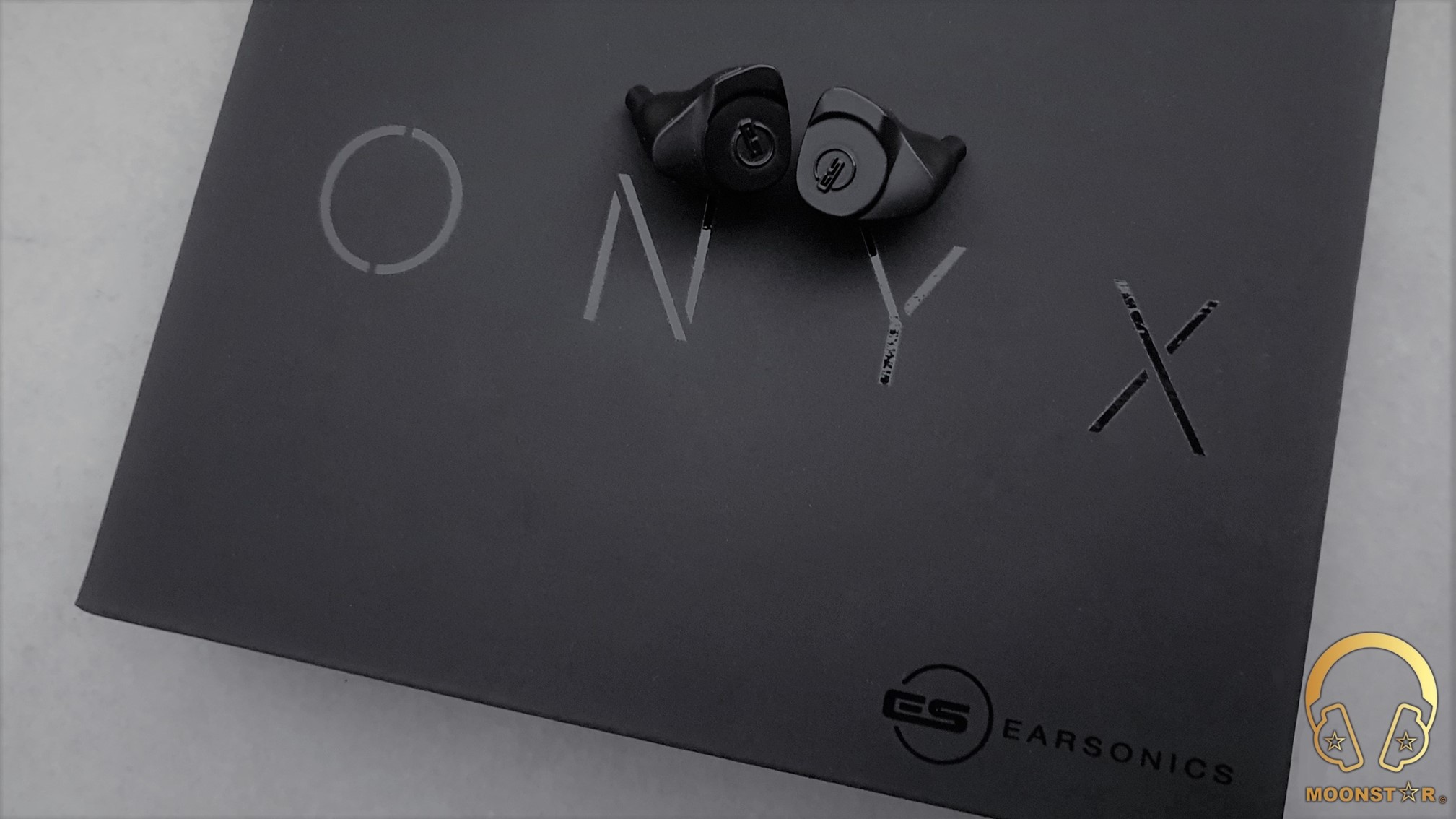
Disclaimer:
I would like to thank Earsonics for providing the ONYX Universal IEM as review sample. I am not affiliated with Earsonics or any third person beyond this review and all these words reflect my true, unaltered opinions about the product.
Price & Availability:
The ONYX is a special project created by Earsonics to introduce a High-End Universal IEM for an affordable price, which is now available for 490,00 EUR. In order to achieve this price, Earsonics has set up a direct sales website for the ONYX without any intermediary. More information’s can be found under the link below;
Package and Accessories:
The ONYX came in a minimalistic black cardboard box with velvet like surface coating in black color that sports the ONYX branding on the top.

When you open up the top cover you will the Monitors and a zipper case that are carefully placed in to a foam sheet. At the right side of the foam layer is a compartment where you can access the accessories.

Inside the box are the following items;
- 1 pair x Earsonics ONYX Universal In-Ear Monitors (UIEM)
- 1 piece x UnHR 4C Silver cable with 0.78mm diameter 2-Pin connectors
- 2 pairs x Bi-Flange Silicone Ear Tips
- 2 pairs x Double Flange Silicone Ear Tips
- 2 pairs x Foam Ear Tips
- 1 piece x Zipper Case
- 1 piece x Cleaning Tool
- 1 piece x Print Material (Warranty Card, User Manual)
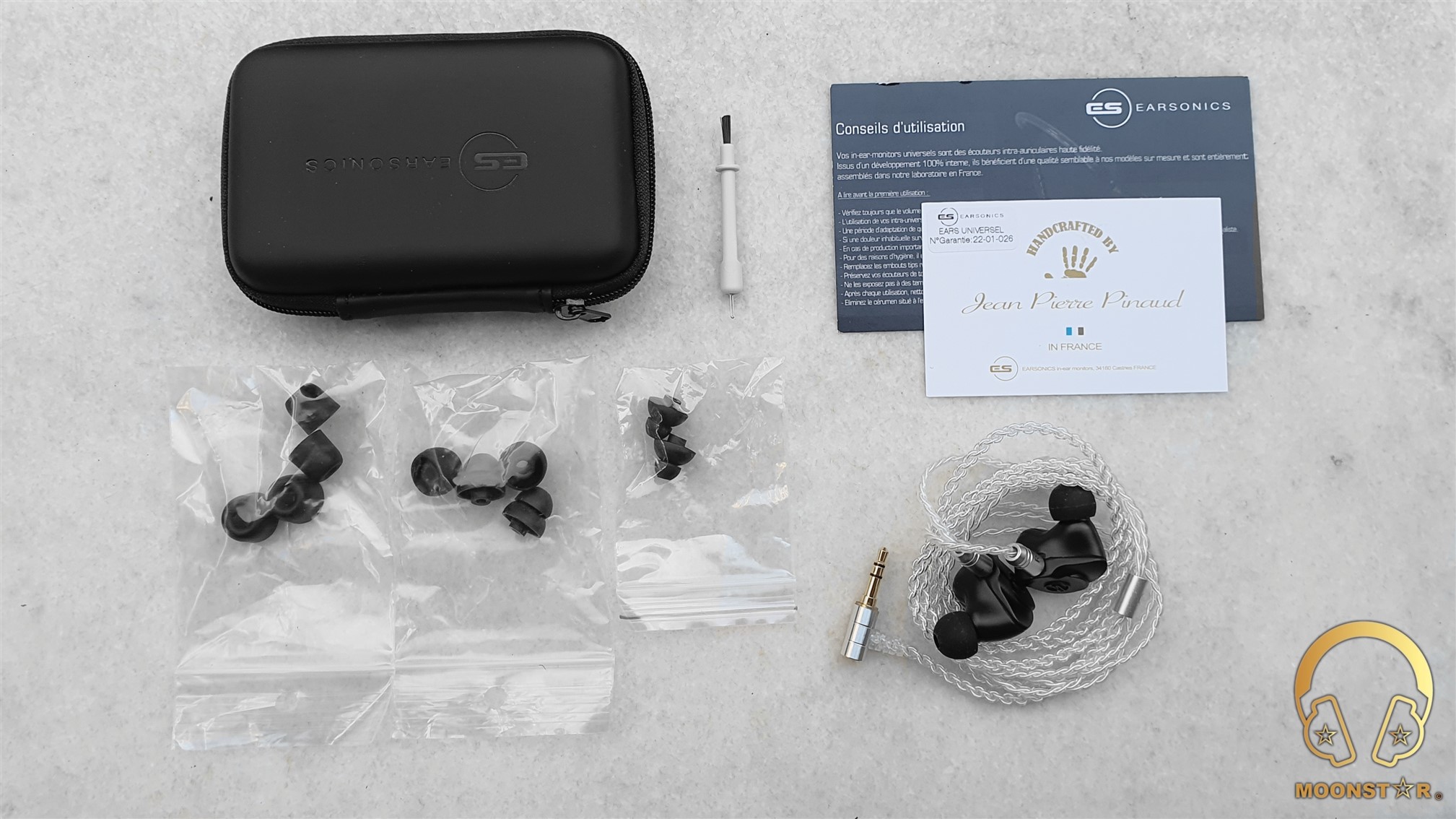
The Earsonics ONYX comes with three different types of ear tips. Included are 2 pairs of Bi-Flange Silicone Tips, Double Flange Silicone Tips and 2 pairs of Foam Ear Tips.

The zipper case is pretty small that ports the Earsonics (ES) branding on the top.

Features, Design and Build Quality:
The Earsonics ONYX is a solid looking Universal IEM that shares the same impressive design that we have seen on previous products the Spark, Blade and Corsa.

The ONYX features a Hand Assembled exclusive Mat Black metal shell “100% Made in France” that utilizes 3x Balanced Armature Drivers & 1x Custom Dynamic Driver that are carefully integrated in to the Acrylic Structure, which is the Heart of the ONYX, which is part of the Hybrid Driver Technology.
The heart made of acrylic is supported by a skeleton of the same material allowing it to beat at full speed while avoiding the problems associated with sound reverberation.

The faceplate of the ONYX sports the companies “ES” brand logo and looks wonderful.
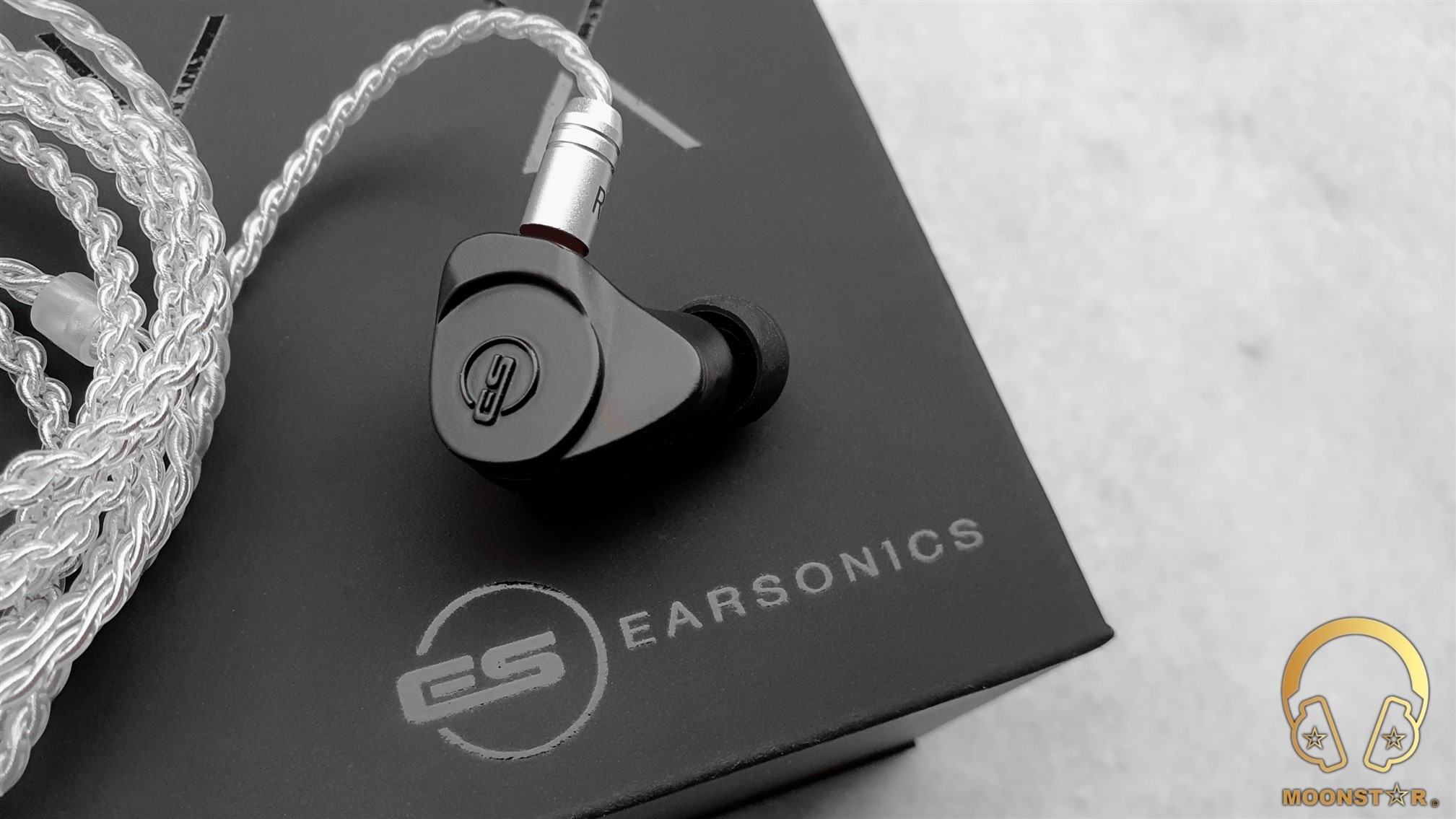
At the inner surface of the main body are some artistic notches in form of waves; the slightly angled sound nozzles and a pretty small screw to fix the faceplate to the main body.
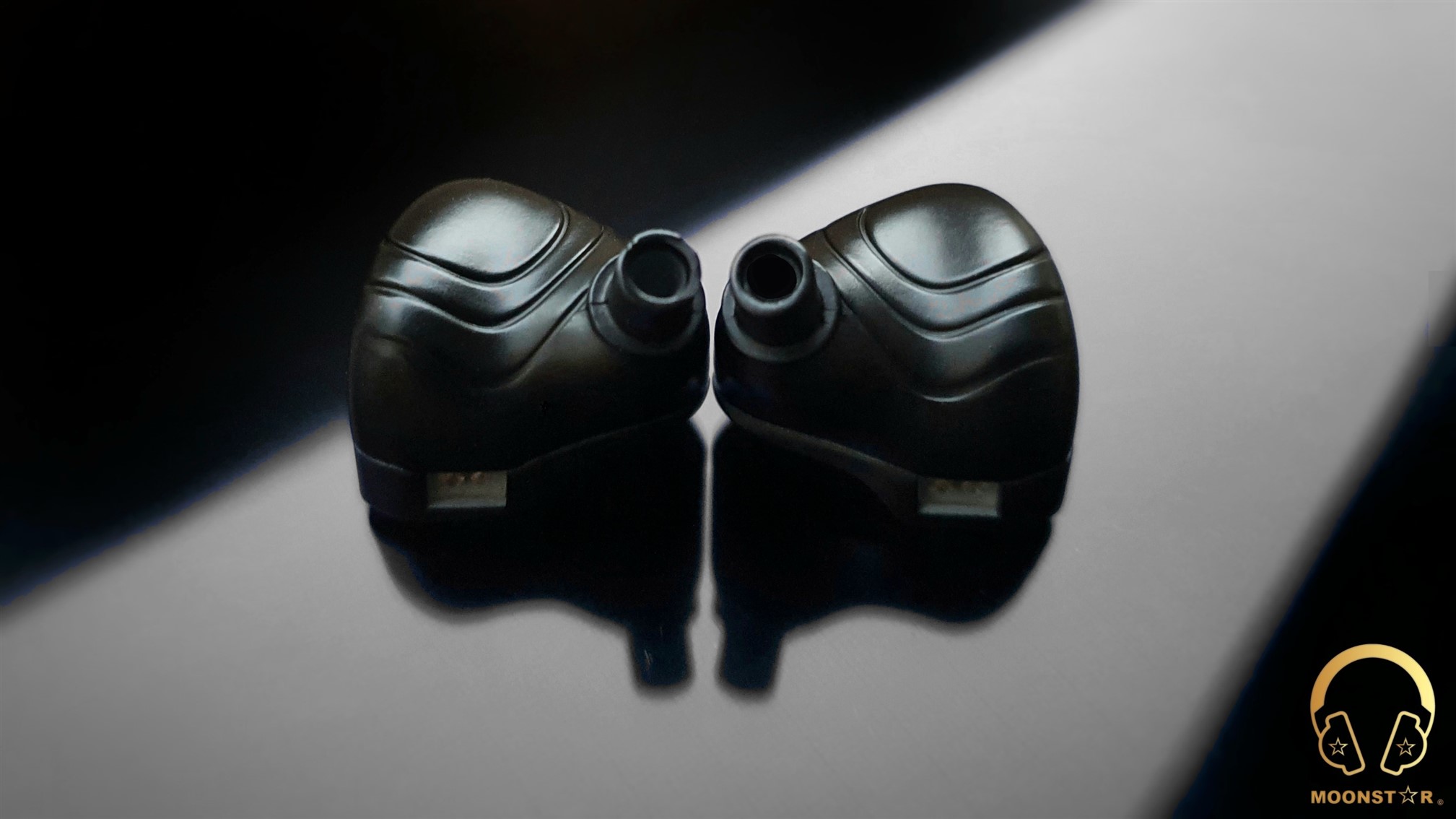
The sound nozzle has a smaller diameter compared to other products on the market.

The sound nozzle of the ONYX is equipped with Earsonics “True Wave Technology”, which is a special tube that allows an optimum work on phase control to archive a first-order “Magnitude” curve.
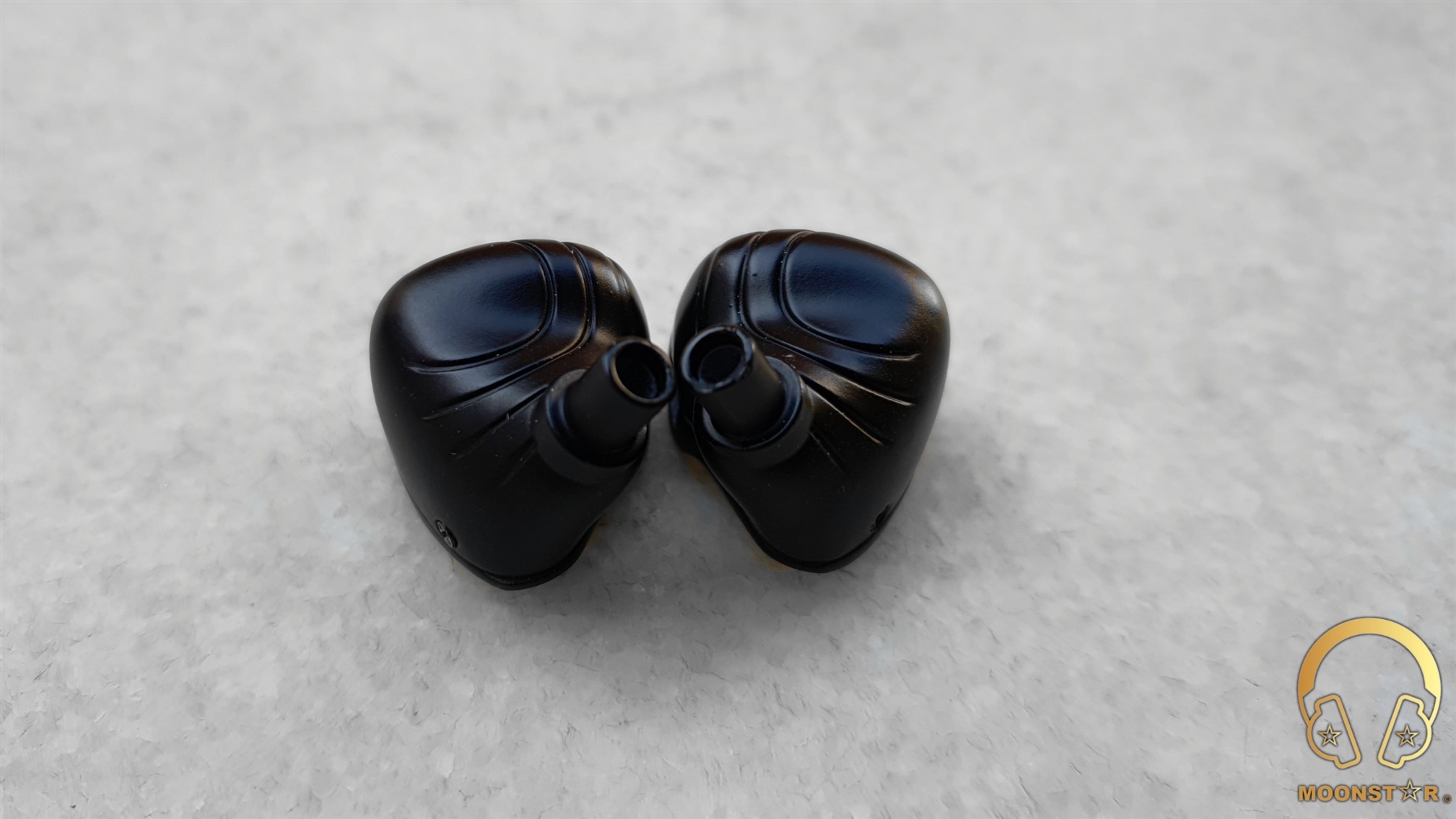
On the top of the monitors are the 0.78mm diameter 2-Pin female connectors that do offer a very tight and secure fit.

At the rear surface of each monitor are the second fixing screws and grid-shaped openings that give the ONYX the look of an expensive sports car, simply eye-catching!
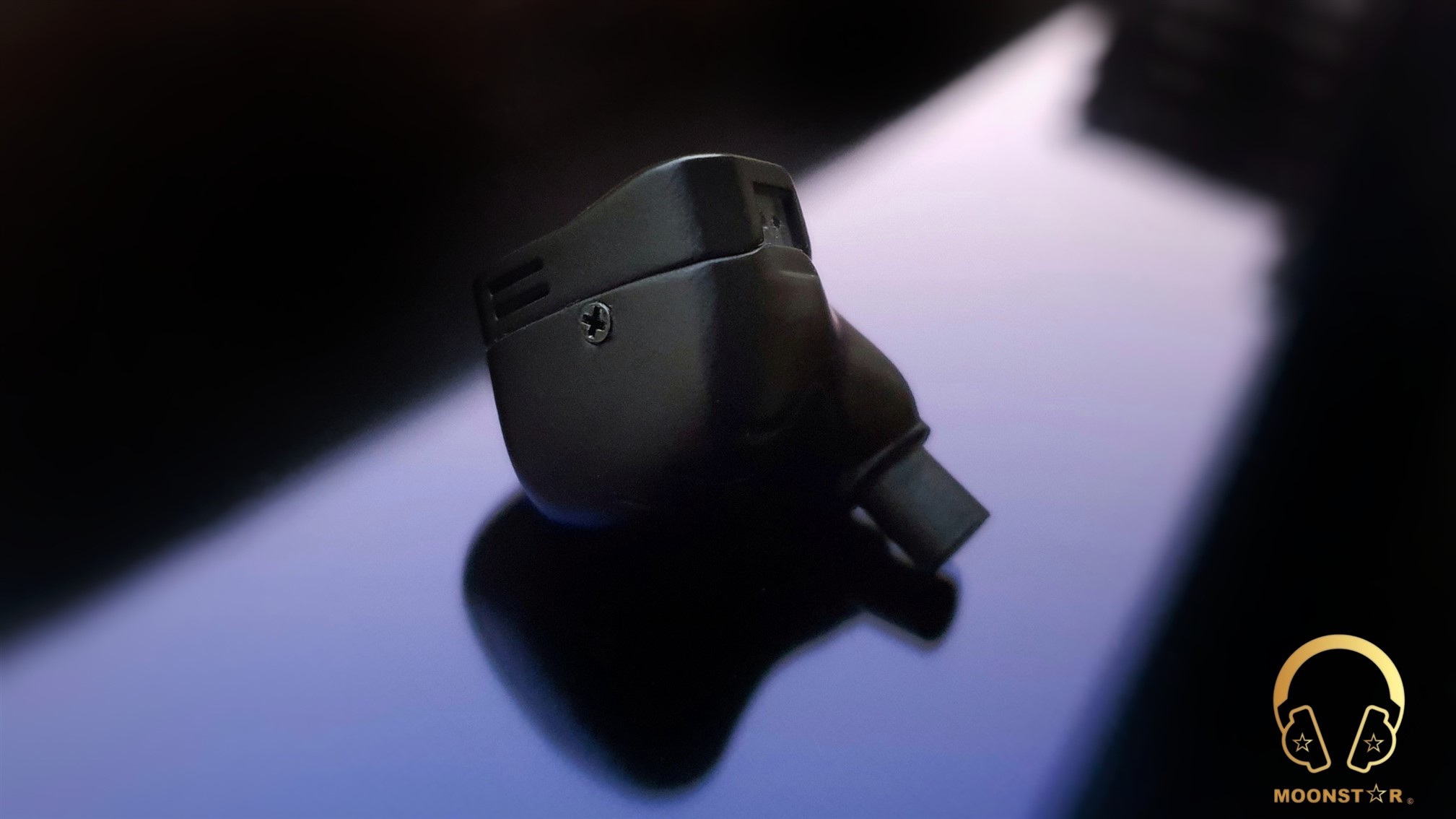
Earsonics UnHR 4C Silver Cable:
The Earsonics ONYX comes with a 2-Pin cable that is made of 4Core high purity Silver Wire cable with a transparent insulation, which has a braided design.
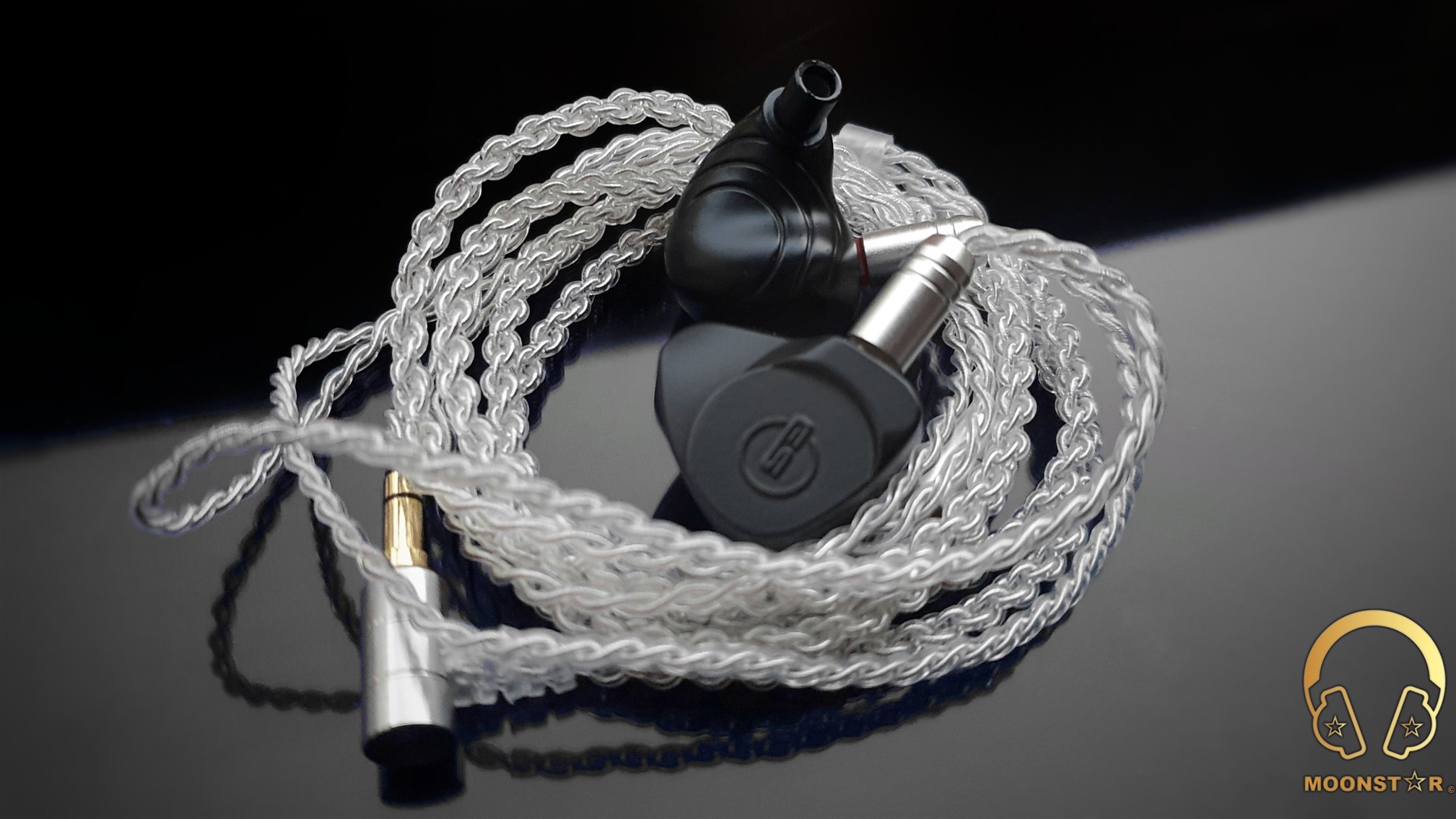
The 0.78mm diameter 2-Pin male connectors do have a metal housing in silver color that do post both left and right markings and color indicators (red for the right connector).
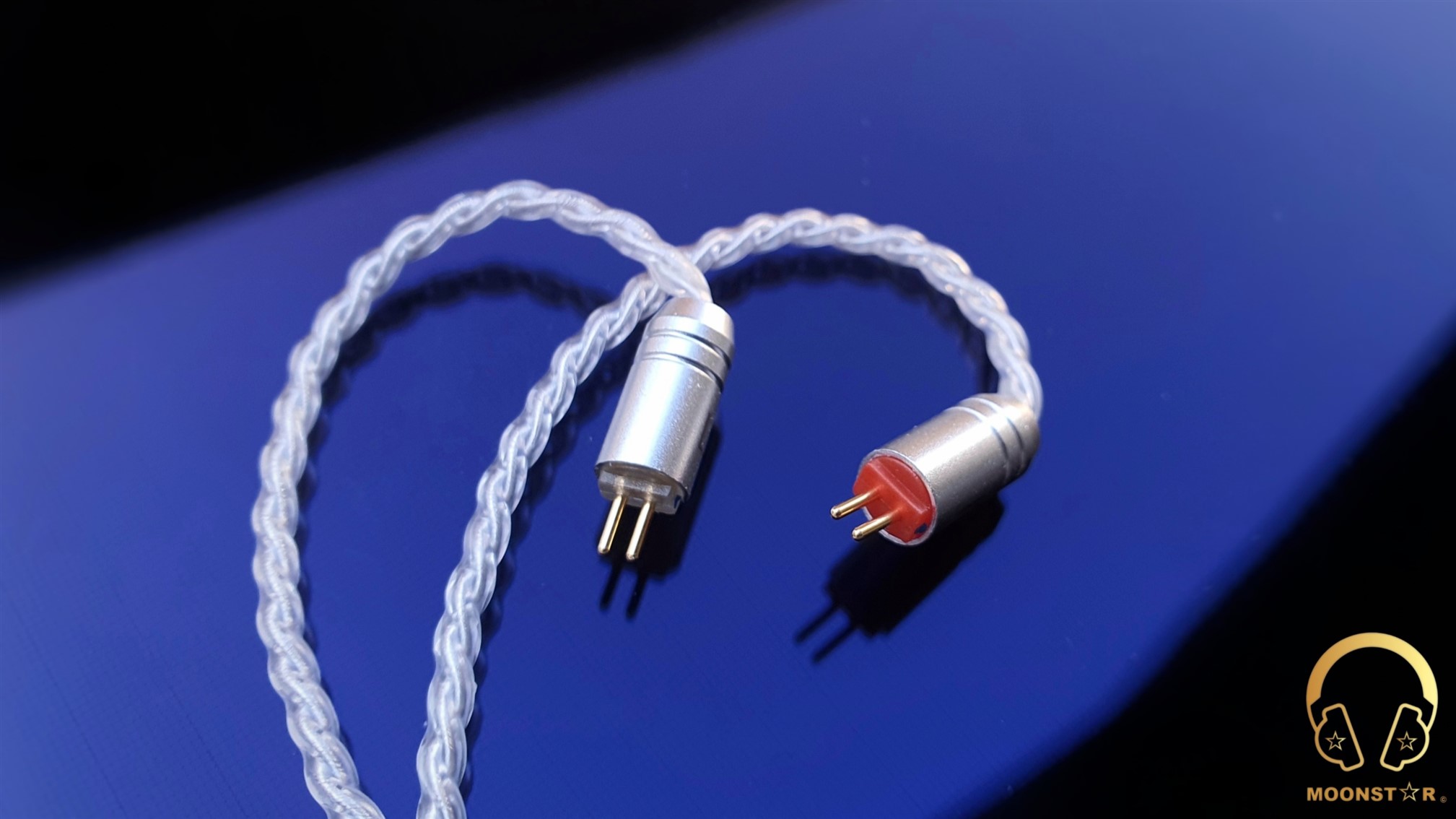
Near the connectors are transparent heat shrink ear guides for a more comfortable over the ear wearing experience, which works pretty well especially on the go.
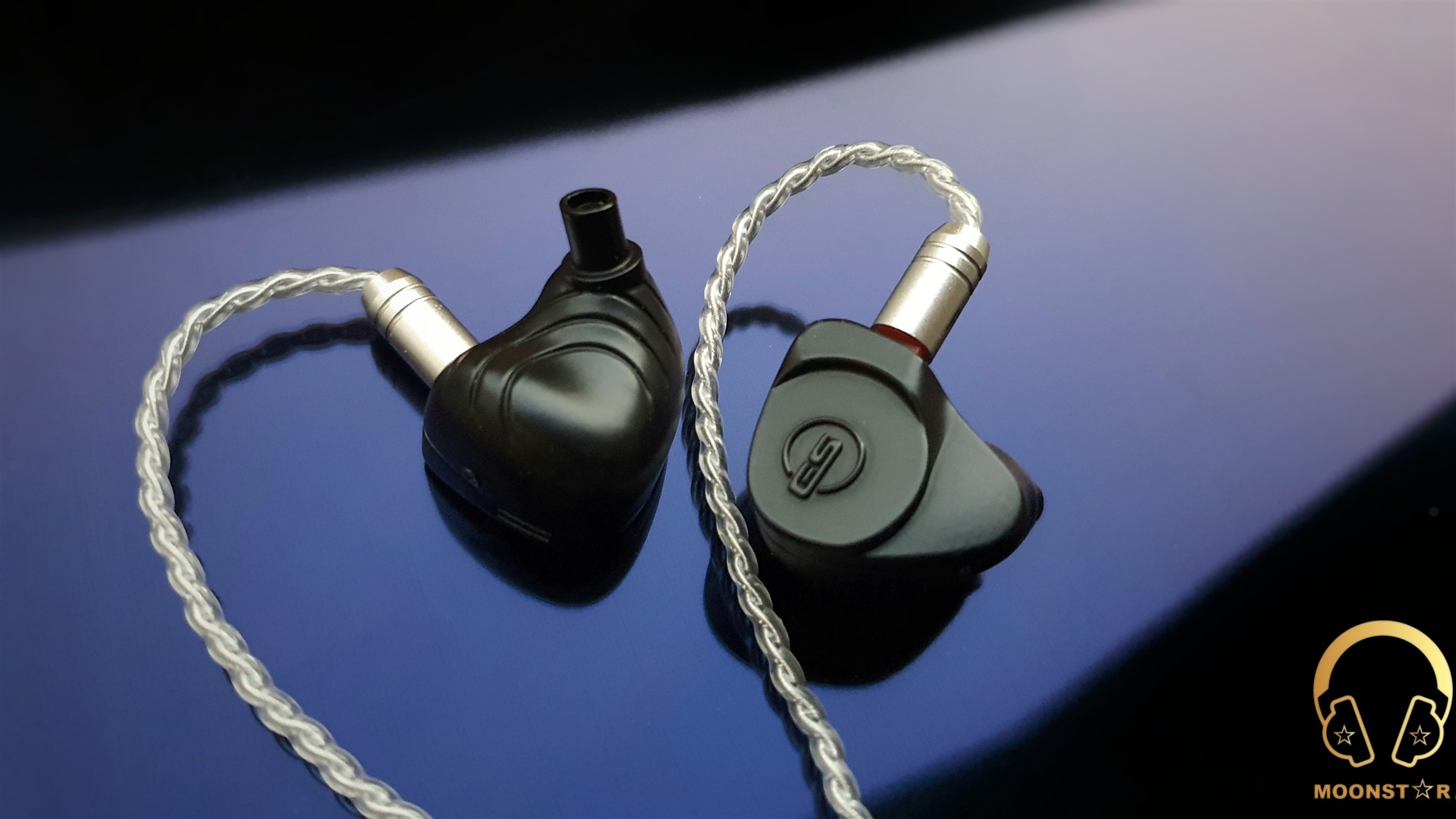
The cable features a transparent plastic chin slider and a metal Y-Splitter in the same silver color with the Earsonics branding on the top.
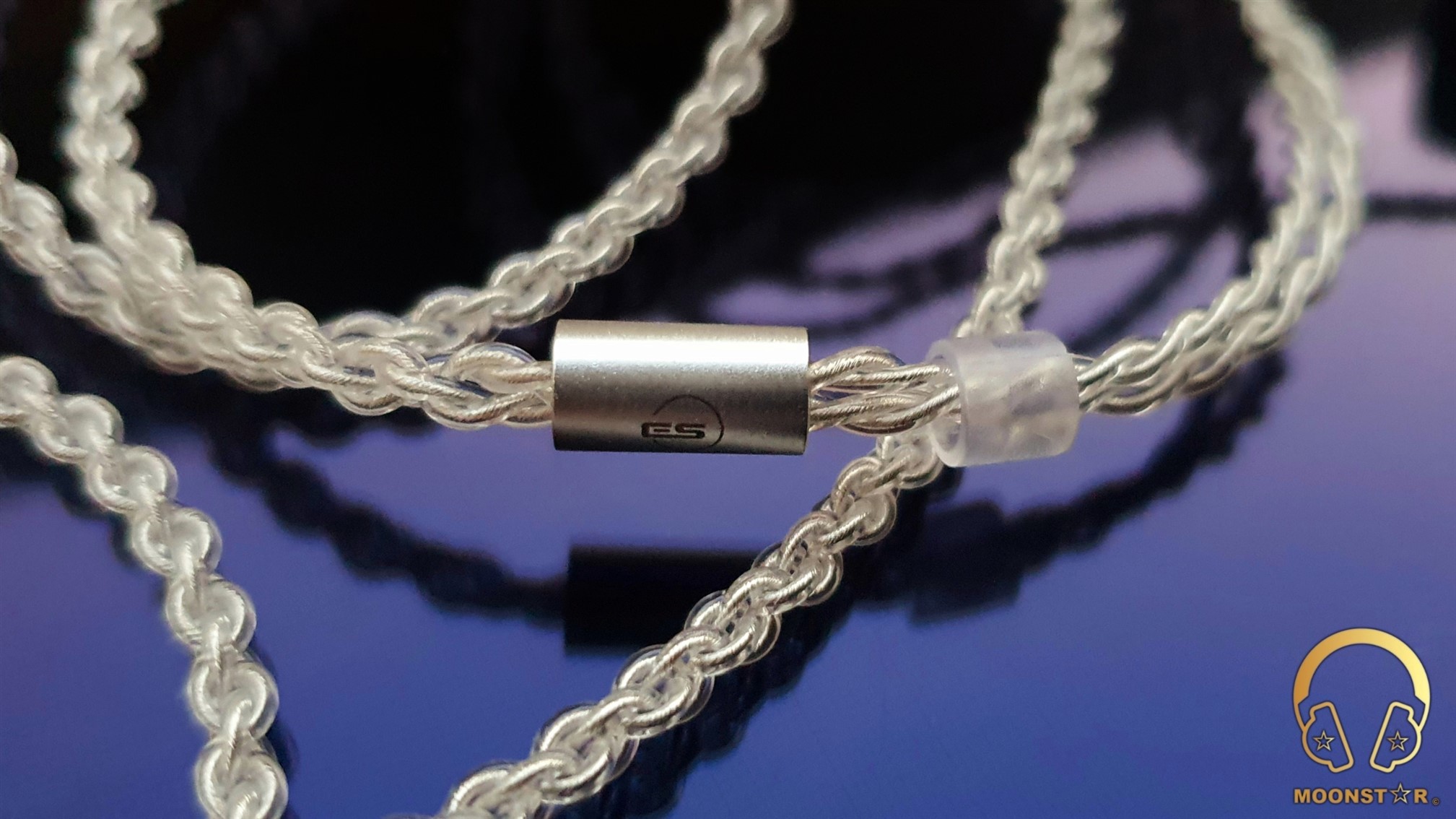
The 3.5mm Single Ended headphone jack has an L profiled metal housing with the same silver finish like the rest of the metal part and sports a transparent strain relief for extra durability.

Comfort and Isolation:
The Earsonics ONYX comes with the same Universal Monitor design like the Corsa (the Spark & Blade do share the same design), which all do have a fairly comfortable shape that fits perfectly in to my average sized ear concha’s. The passive noise isolation of the monitors is on an average level that is sufficient for the use in relative noisy environments like a metro, bus or train.

Drivability & Pairing:
The Earsonics ONYX is a very efficiently Universal In-Ear Monitor thanks to is pretty low impedance of 16.5 Ohms and a sensitivity of about 122dB, which makes it fairly ideal for the use with sources like Smartphone’s or Tablets that do have in general relative weak amplification capability.

Technical Specifications:
- Driver Technology : Hybrid Driver Technology
- Driver Configuration : 3 BA (2x Mid & 1x Treble) + 1 Dynamic Driver (Bass)
- Freq. Resp. : 10 Hz – 20 kHz
- Sensitivity : 122 dB/mW
- Impedance : 16.5 Ohms
- Connector : 0.78mm 2-Pin Connector

Equipment’s used for this review:
- In Ear Monitors : Earsonics ONYX, Oriveti OH500, Dunu DK-4001
- Sources (DAP/DAC) : HiBy RS6, iBasso DX300, Lotoo PAW S1

Albums & Tracks used for this review:
- Adele – My Little Love (Spotify)
- Randy Crawford – On Day I Will Fly Away (Flac 16bit/44.1kHz)
- Hayley Westenra – Odyssey Album (Dezzer HiFi)
- Dionne Warwick – Walk On By (Flac 16bit/44.1kHz)
- Sarah McLachlan – Angel (Flac 24bit/48kHz)
- Sertap Erener – Aşk (Flac 16bit/44.1kHz)
- Edith Piaf – Non Je Ne Regrette Rien (Flac 16bit/44.1kHz)
- Diana Krall – So Wonderful (DSF)
- Aretha Franklin – I Say A Little Payer (Flac 24bit/96kHz)
- David Bowie – Heroes (Flac 24bit/192kHz)
- Elton John – Rocket Man ((Flac 24bit/96kHz)
- Barry White – Just The Way You Are (Flac 24bit/48kHz)
- Isaac Hayes – Walk On By (Flac 16bit/44.1kHz)
- Sting – Englishman in New York – (Flac 24bit/48kHz)
- Eric Clapton – Wonderful Tonight (Flac 24bit/96kHz)
- B.B. King – Riding With The King (Tidal Hi-Fi)
- Dave Gahan – Kingdom (Tidal Hi-Fi)
- U2 – Sunday Bloody Sunday (Flac 16bit/44.1kHz)
- Bro Safari, UFO! – Drama (Deezer HiFi)
- Armin Van Buuren – Vini Vici (Flac 16bit/44.1kHz)
- Really Slow Motion – Deadwood (Deezer HiFi)
- Jo Blankenburg – Meraki (Spotify)
- Lorde – Royal (Flac 24bit/48kHz)
- Toutant – Rebirth (Deezer HiFi)
- Gogo Penguin – Raven (Flac 24bit/192kHz)
- Portishead – It Could Be Sweet (Spotify)
- Charly Antolini – Duwadjuwandadu (Flac 24bit/192kHz)
- Michael Jackson – Billie Jean (Flac 24bit/192kHz)
- Ferit Odman – Look, Stop & Listen (Flac 24bit/192kHz)
- Chopin – Nocturn No. 20 In C-Sharp Minor (Flac 16bit/44.1kHz)
- Fazıl Say – Nazım Oratoryosu (Live) (Flac 16bit/44.1kHz)
- Vivaldi – Le QuarttroStagioni “The Four Season” (Deezer HiFi)
- Otto Liebert& Luna Negra – The River (Flac 24bit/192kHz)
- Lunatic Soul – The Passage (Flac 16bit/44.1kHz)
- Deftones – My Own Summer (Shove it) (Flac 16bit/44.1kHz)
- Photek – The Hiden Camera (Spotify)
- Muse – Hysteria (Flac 24bit/48kHz)
- Metallica – Sad but True (Flac 24bit/96kHz)
- Opeth – Windowpane (Flac 16bit/44.1kHz)
- Megadeth – Sweating Bullets (Tidal Hi-Fi)
- Rush – YYZ (Flac 16bit/44.1kHz)
- Rush – Leave That Thing Alone (Flac 16bit/44.1kHz)
- Slayer – Angel of Death (Spotify)s
- Liquid Tension Experiment 2 – Acid Rain (Spotify)
- Yosi Horikawa – Bubbles (Spotify)
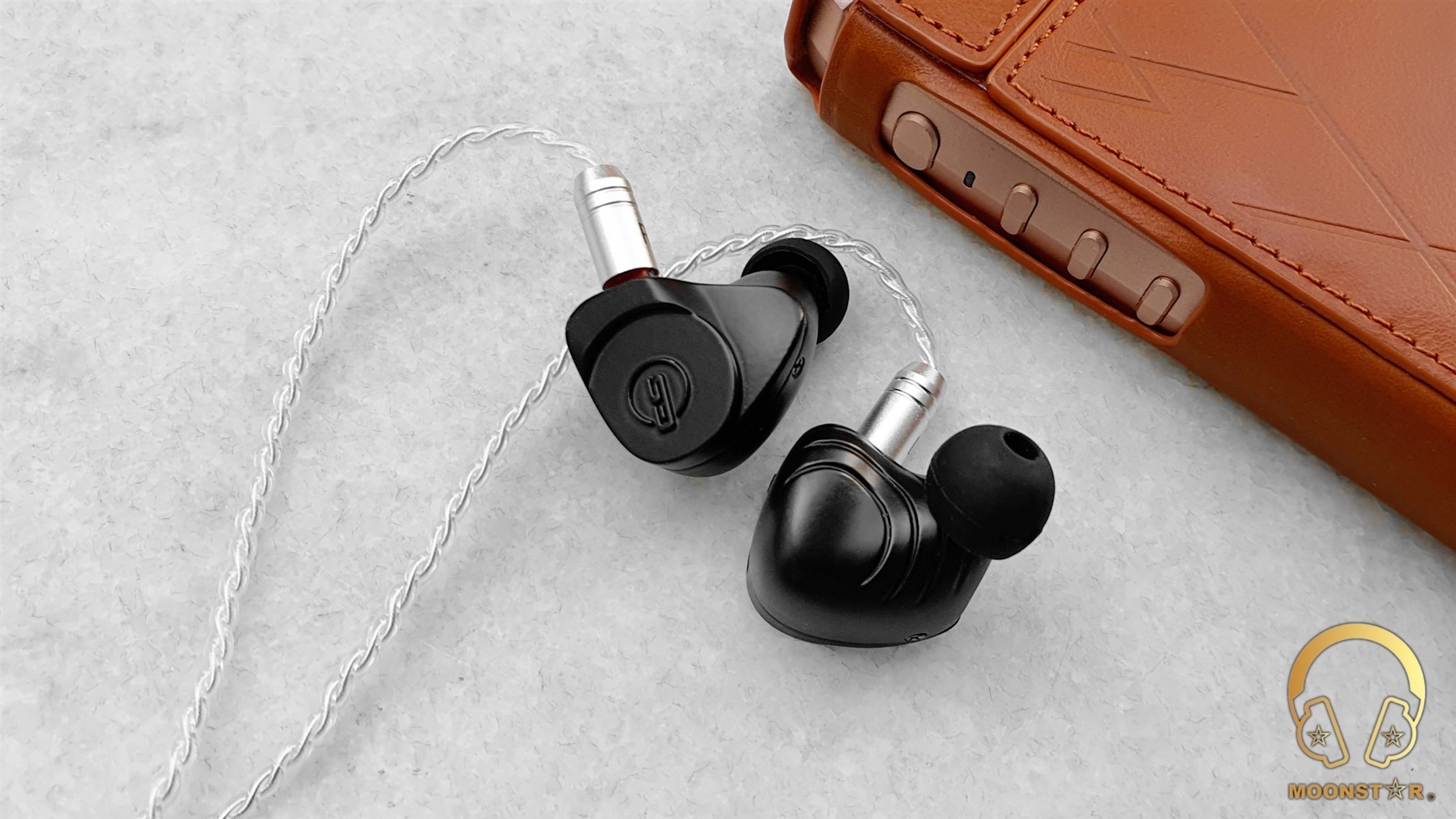
The Sound:
The ONYX shows Earsonics typical sound character that is mildly warm and lush in its tonality and highly rich and detailed in its presentation. The lower frequency region is punchy, fast and impressively controlled. The midrange on the other hand sounds quite lush, transparent and detailed, while the treble area are shown with a decent level of authority, sparkle and extension, especially for a non-ChiFi IEM at this price level.
The Earsonics ONYX review has been written after a burn-in period of approx. 70 hours. I have used the Stock Single Flange Silicone Ear tips and the UnHR 4C Silver cable that are included to the package.

Bass:
The lower frequency region (bass) of the ONYX is produce with Earsonics custom Dynamic Driver that is part of the Hybrid Driver Technology. What I have immediately recognized was how well the powerful bass is isolated from the rest of the sounds spectrum, which means that it doesn’t affect the midrange and treble are in a negative manner.
The ONYX offers a solid subbass performance with a powerful, deep and well extending presentation. The ONYX shows a great sense of subbass depth, rumble and intensity when I do listen to string instruments such like the contrabass and bass guitar or with percussion instruments like kick drums, without to have any negative conditions in terms of clarity and resolution. The subbass depth and rumble of the ONYX sounds impressive when I do listen to songs like Massive Attack’s “Angle”, Lorde’s “Royals” and Armin Van Buuren’s “Vini Vici”.
The midbass region of the Earsonics ONYX stands out with its pretty tight, controlled and impactful presentation, which doesn’t show any negative situations such like a midbass hump, muddiness and mixings even in very fast and complex bass passages.
Instruments like cross drums and trumpets are quite accented and do show a warmish and soft tonality. The midbass performance of the ONYX is impressive from rock to pop, from classical music to electronic music. Moreover, I highly enjoyed the bass character of the Earsonics ONYX, which is reproduced in a pretty smooth, rich and full-bodied manner thanks to the well adjusted Dynic Driver.
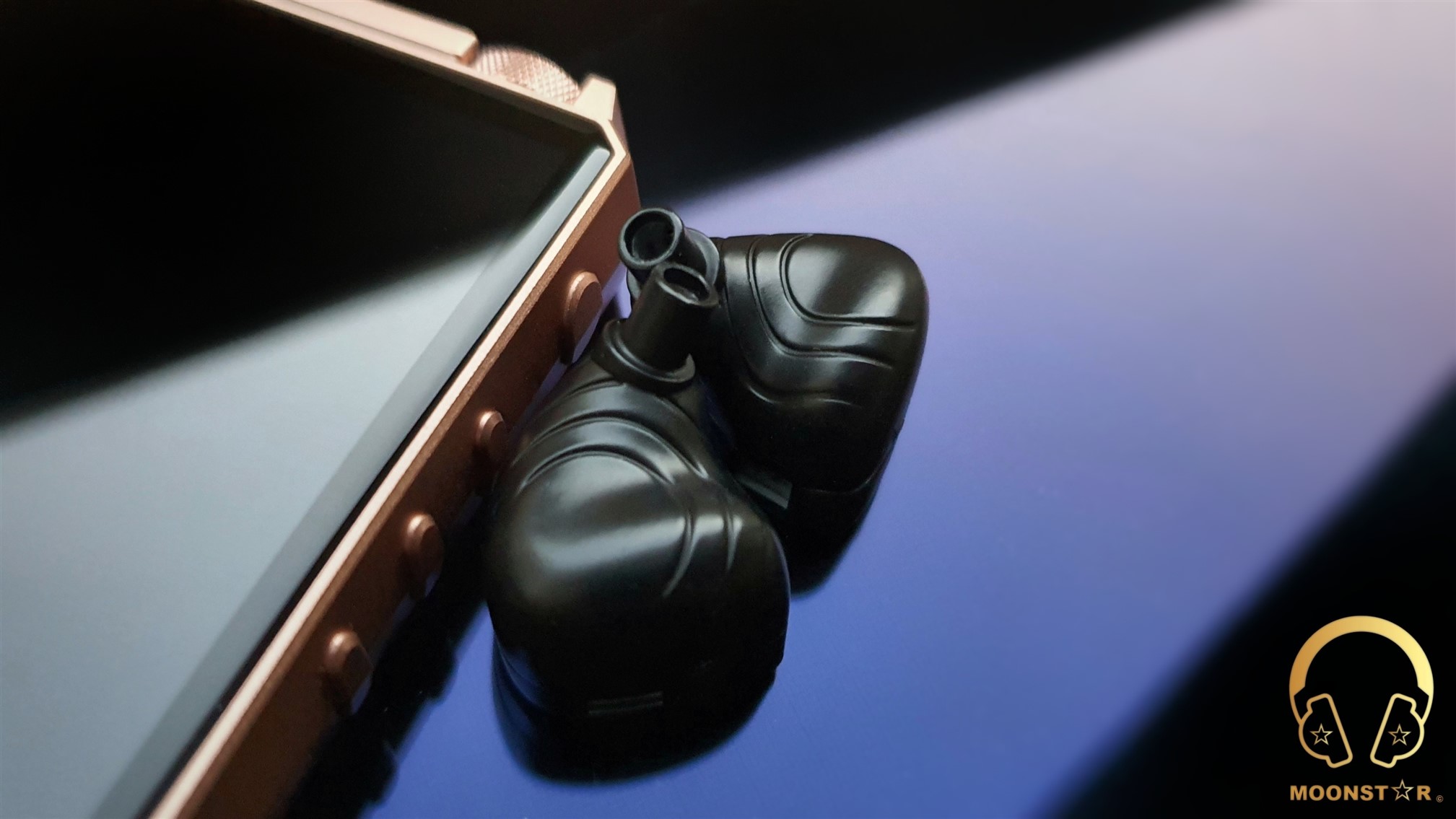
Midrange:
The Earsonics ONYX shows a mildly warm midrange tonality and offers a very liquid, pretty smooth and lively character, while the sense of transparency and airiness is on an adequate level. The general midrange character can be described a nicely smooth almost velvet like in its presentation but without to sound veiled or dull.
The lower midrange of the Earsonics ONYX shows nice sense of depth, warmth and body when I do listen to vocals like Barry White or Isaac Hayes, which are reproduced in a pretty emotional and full bodied manner, without to show negative conditions such like muddiness. Female vocals on the other hand do sound quite detailed, musical and intimate thanks to the fairly highlighted but highly controlled upper midrange character that offers efficient sense of extension and detail retrieval, while listen to female voices such like Adel, Edith Piaf or Aretha Franklin. The general vocal presentation is pretty upfront and intimate.
The Earsonics ONYX has a mildly warm and highly musical instrument tonality. Everything from guitars to violins, from trumpets to cellos are reproduced in a pretty lush and detailed manner. The ONYX is also a very successful Universal In-Ear Monitor in terms of separation and positioning of instruments and vocals.
For example, guitars do sound slightly warm, a bit bassy and very detailed, while violins do play in a moderately bright and mildly warm tonality, without to show any remarkable harshness and sibilance. Cellos on the other hand are soft, while the contrabass are lightly pronounced and fast.
The general midrange character of the Earsonics ONYX can be described as highly detailed, rich and pretty musical, with both male & female vocals and while listen to instruments from stings to brass instruments.
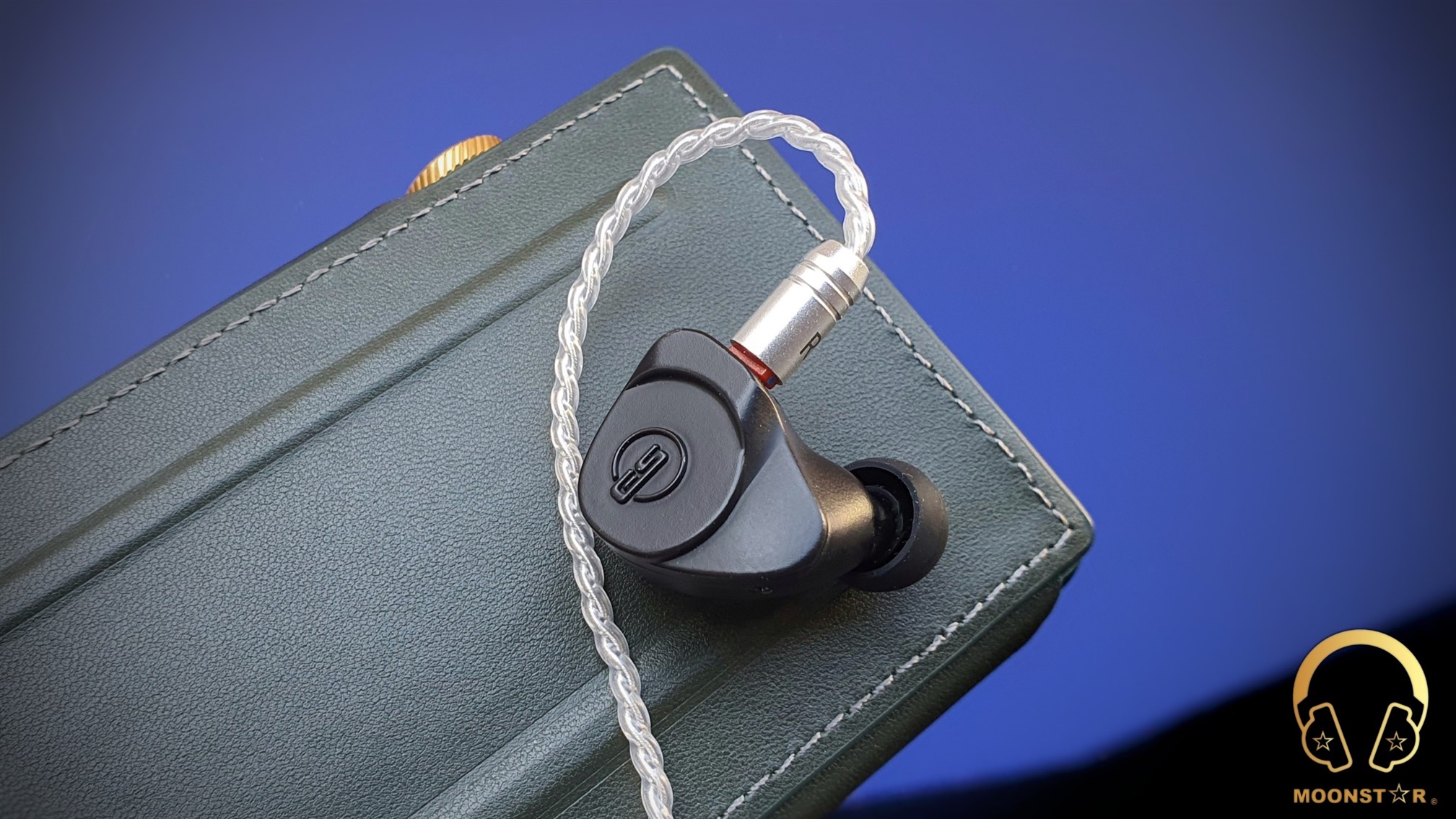
Treble:
The Earsonics shows a silky smooth yet pretty detailed treble tuning with a fairly bold and moderately bright treble character, which can be classified as true HiFi like treble presentation.
However, the ONYX offers also enough airiness and sparkle in the treble area to prevent any type of congestions and muddiness while listen to a wide variety of music genres, which makes it to a perfect all-rounder in this area for a wide variety of genres.
The transitions from the upper midrange towards the lower treble region are in general highly controlled in moments when instruments or soprano vocals are reproduced with high level of distortion.
Instruments such as hi-hats, ride or crash cymbals do sound nicely pronounced, while the sense of intensity and extension is on a decent level, which surprisingly good for a Universal IEM with an overall warm (typical Earsonics) tonality.
The treble region extends quite smoothly, especially towards the upper treble region. This area shows a pretty efficient grade of clarity and definition and the fact that the lower treble range is nicely bright and well extending adds the overall presentation a nice sense of dynamism and energy.
All in all, the general treble presentation of the Earsonics ONYX can be described as silky smooth and fatigue-free, while it offers a very easy to listen to treble experience, which makes it also very ideal for longer listening periods.

Soundstage & Imaging:
The Earsonics ONYX shows a pretty holographic soundstage presentation that offers a good sense of separation between the right and the left channels, which makes it to a Universal In-Ear Monitor with a decent performance in terms of imaging. The soundstage shows an above average performance in terms of wideness and airiness, while it has a fairly natural sense of depth.
Some Comparisons:
Earsonics ONYX versus Oriveti OH500:
The Oriveti OH500 features also a Hybrid Driver configuration, which are 4BA + 1DD combinations that are located in an acrylic shell. The Oriveti OH500 has a lightly V shaped sound signature with a nicely done warm tonality and entertaining presentation. The bass is deep, warm and full bodied; the midrange is soft and musical, while the upper midrange and treble region is mildly bright and with good extension.
The subbass depth of both IEM’s is pretty similar, while the Oriveti OH500 shows slightly more intensity and rumble. However, the Earsonics ONYX is superior in terms of subbass authority, clarity and resolution. The midbass region of the OH500 is more highlighted and but a bit muddy compared to the ONYX, which offers a better sense of transparency, control and tightness.
The midrange of both In-Ear Monitors is successful in terms of detail retrieval and do share a warm tonality, while the OH500 shows a slightly warmer character in this area compared to the ONYX. Both IEM’s do offer a full bodied and emotional male vocal presentation, while the ONYX does have a better level of clarity and resolution. Female vocals do sound pretty lively and detailed with both IEM’s, however the ONYX shows a tad better level of clarity and resolution.
The upper midrange and treble region of both the Oriveti OH500 and the Earsonics ONYX is nicely highlighted, crisp and controlled, while the ONYX sounds slightly more natural and detailed. The treble region of the ONYX shows a slightly better sense of extension compared to the OH500.
The soundstage of both the Earsonics ONYX and the Oriveti OH500 is pretty similar in terms of depth and wideness, while the ONYX has a slightly advantage when it comes to the level of airiness and transparency.
Earsonics ONYX versus Dunu DK-4001:
Both In-Ear Monitors do come with a Hybrid Driver configuration. The main difference is that the ONYX is equipped with a 3BA+1DD configuration, while the DK-4001 utilizes a 4BA +1DD driver setup.
The Earsonics ONYX has the upper hand in terms of subbass depth, intensity and extension, while both are successful in terms of control and clarity in this area. When it comes to the midbass area, I can say that the Dunu DK-4001 shows less impact and authority in this area, while the difference in terms of resolution is fairly minimal.
The midrange of the Earsonics ONYX has a more forward oriented, intimate and somewhat denser and warmer tonality, compared to the Dunu DK-4001, which shows a slightly more dry and thin character that sounds a bit unnatural, especially when I do listen to female vocals.
Both the Earsonics ONYX and Dunu DK-4001 do offer a pretty controlled and fatigue-free treble presentation. The lower treble range of ONYX is superior in terms of clarity and definition. It offers also a more natural sense of airiness and sparkle in the upper treble register. The ONYX has in general the upper hand in terms of resolution, brightness and extension in the treble area.
Both In-Ear Monitors are pretty successful in terms of separation a placement of instruments and vocals. The main difference is that the Earsonics ONYX has the slightly edge in terms of soundstage wideness, while the DUNU DK-4001 has the upper hand when it comes to the depth of the stage.
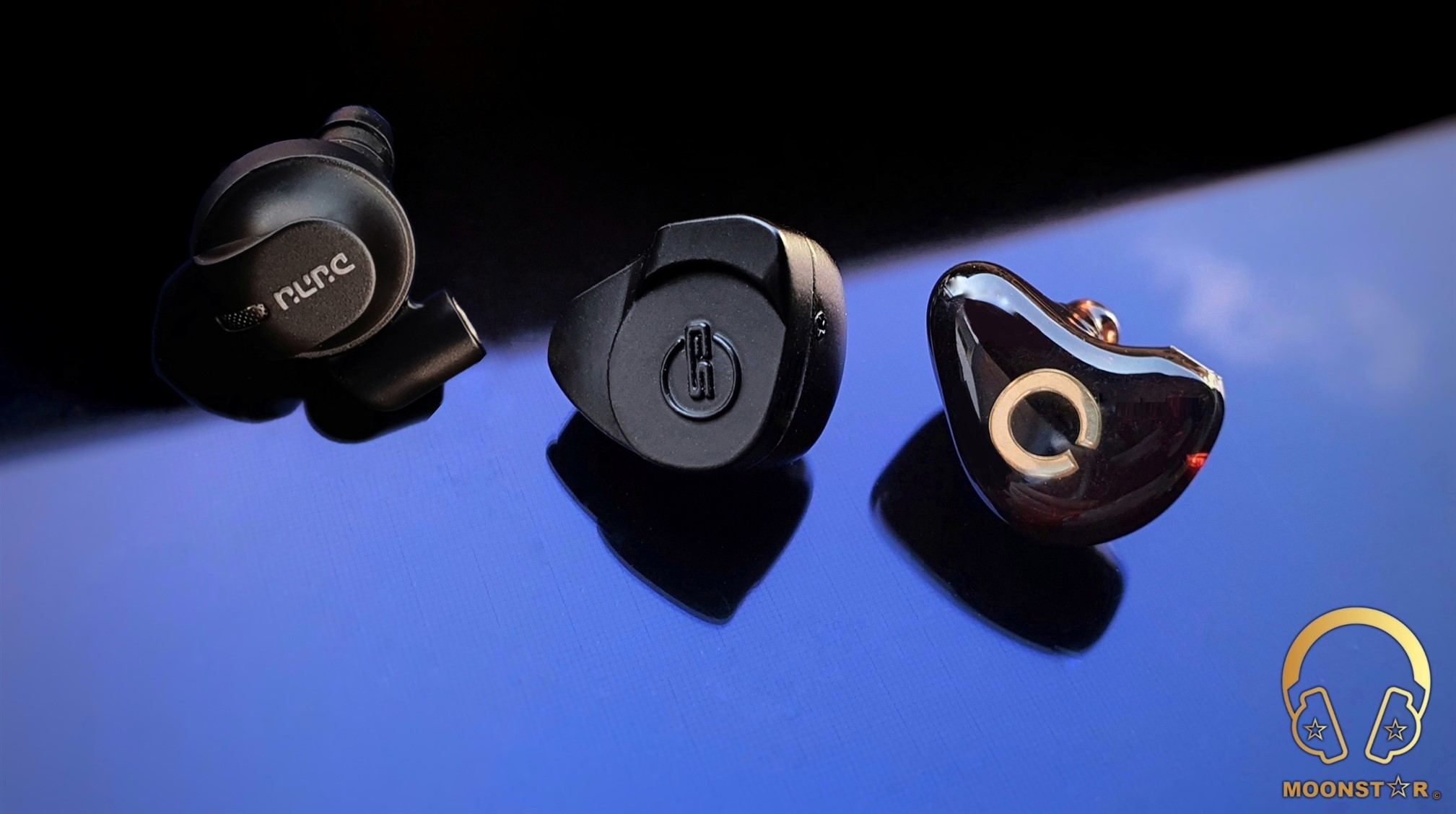
Conclusion:
The Earsonics ONYX is a solid Universal IEM, both in terms of construction and overall sound performance. The gorgeous looking Hand Assembled IEM with its Mat Metal Housing, which is 100% Made in France features a very well implemented and coherent sounding Hybrid Driver configuration that is able to produce a very rich, detailed and powerful sound presentation in High-End standards from the top to the bottom. All this features do come for a fairly affordable price, which makes the ONYX to a “Highly Recommended” product below the 500 EUR price range.
Thank you for the Read!
Last edited:
Moonstar
100+ Head-Fier
Pros: Very Natural & Balanced Presentation,
Highly Controlled & Fast Bass Response,
Transparent, Detailed & Somewhat Organic Midrange Character,
Airy, Lively and Fatigue free Treble Tuning with Good Sense of Resolution,
Holographic Soundstage,
Beautiful Design & Solid Build Quality,
Rich Accessory & Features Package (Interchangeable Audio Jacks & Sound Tubes)
Highly Controlled & Fast Bass Response,
Transparent, Detailed & Somewhat Organic Midrange Character,
Airy, Lively and Fatigue free Treble Tuning with Good Sense of Resolution,
Holographic Soundstage,
Beautiful Design & Solid Build Quality,
Rich Accessory & Features Package (Interchangeable Audio Jacks & Sound Tubes)
Cons: Needs a Source with good Amplification (DAP M11 Pro, DAC/AMP Q5s) to show its real potential,
Not ideal for Bass-Heads,
Average Passive Isolation,
Long Burn-In Period,
Carry case looks fancy but could be slightly bigger (Pelican Case Could be better)
Not ideal for Bass-Heads,
Average Passive Isolation,
Long Burn-In Period,
Carry case looks fancy but could be slightly bigger (Pelican Case Could be better)
FiiO FD7 Pure Beryllium Diaphragm Dynamic Driver IEM Review
Introduction:
FiiO announced last year in August their Brand New Dynamic Driver Flagship IEM the FD7 together with the FDX, which is their 14th Anniversary Limited (Collector’s) Edition In-Ear Monitor. The FD7 features a top tier Single Dynamic Driver with a 12mm Pure Beryllium Diaphragm and utilizes a front acoustic prism & semi-open acoustic design. Moreover, it comes with an anti-standing wave “volcanic field” system and offers 3 pairs of interchangeable sound tubes.
- Product Website: FiiO FD7 IEM

Disclaimer:
I would like to thank FiiO for providing the FiiO FD7 as review sample. I am not affiliated with FiiO beyond this review and all these words are reflecting my true and unaltered opinions about the product.
Price & Availability:
The actual price of the FiiO FD7 is 599,99 USD, which is pretty attractive compared to other IEM’s with Pure Beryllium Diaphragm Dynamic Driver, for example the Final Audio A8000 (1.999 USD) and the Dunu Luna (1.699 USD), especially if you are curious about a product with this type of driver technology.
More information’s can be found under the link below;
Package & Accessories:
The packaging of the FD7 looks pretty similar to those of the FD5 that came also inside a rectangular black box that shows the product illustration and the motto of the company, which is “Born for Music“ on the top.

This box has been wrapped with a fancy cardboard sleeve that features some product related brandings and the illustration of the FD7 on the top.
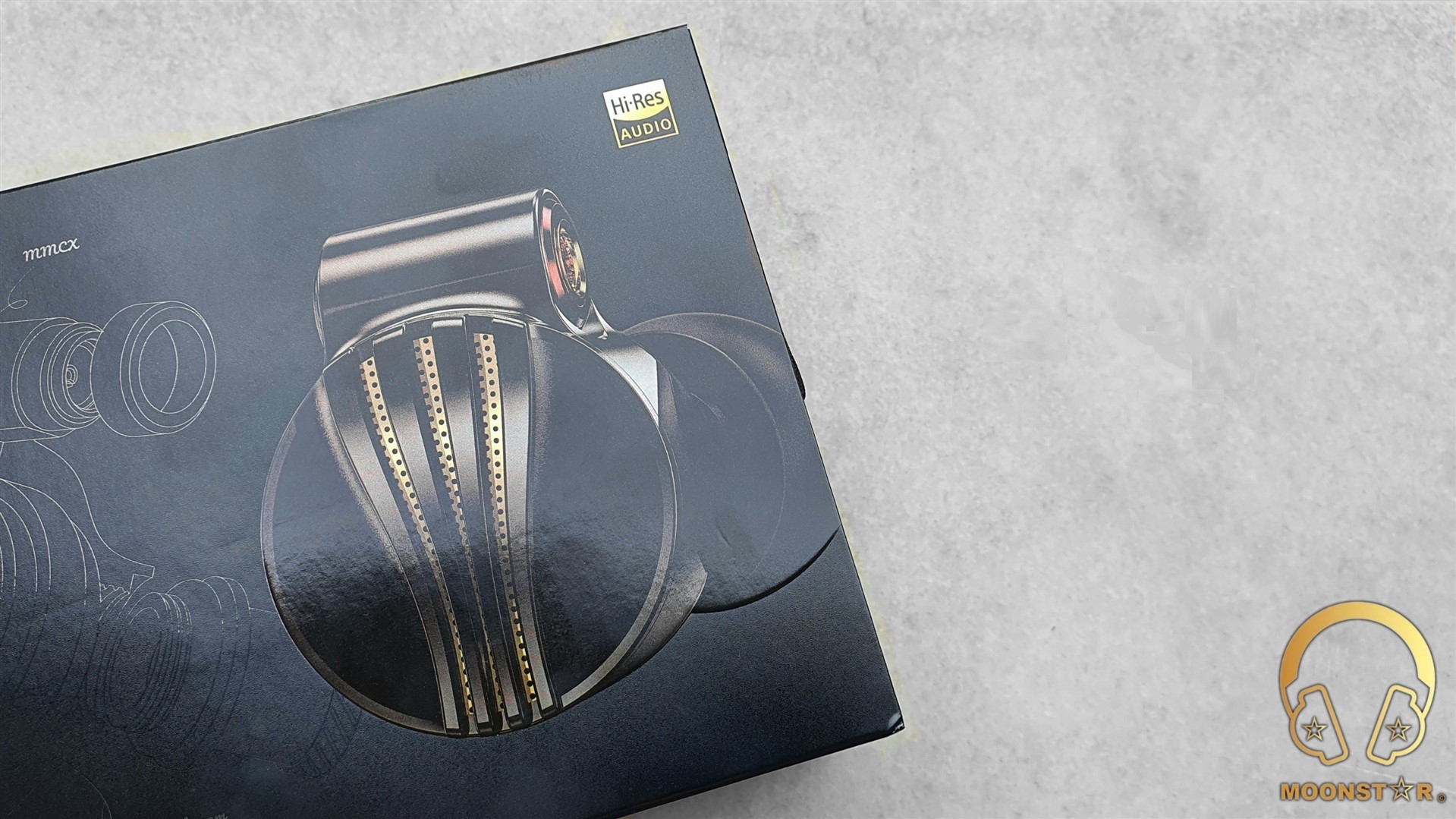
Inside the box are the following contents/accessories;
- 1 pair x FiiO FD7 In-Ear Monitors
- 1 pcs x Detachable cable with MMCX connectors
- 3 pcs x Interchangeable Headphone Jacks (3.5mm SE, 2.5mm Balanced, 4.4mm Balanced)
- 3 pcs x Interchangeable Sound Tubes (Bass, Balanced, Treble)
- 3 pairs x Bass Ear tips
- 3 pairs x Vocal Ear tips
- 3 pairs x Balanced Ear tips (1 pair came preinstalled)
- 2 pairs x SpinFit Silicone Ear tips
- 2 pairs x Triple Flange Silicone Ear tips
- 2 pairs x Memory Foam Ear Tips
- 1 piece x HB5 Storage Case
- 1 piece x Cleaning Brush
- 1 piece x SK1 Magnetic Cable Organizer (can also be purchased here separately)
- 1 piece x FiiO MMCX Assist Tool
- 1 piece x Warranty Card and User Manual

The FiiO FD7 offers a very rich ear tips collection that is placed in a foam layer that shows some short descriptions about the sound effects and the size of the tips. The collections includes 3 pairs of SpinFit silicone tips (S/M/L), 3 pairs of balanced ear tips (S/M/L size), 3 pairs of vocal ear tips (S/M/L size), 3 pairs of bass ear tips (S/M/L size), 2 pairs of memory foam ear tips (M/M/ size) and 2 pairs of Bi-Flange ear tips (M Size).
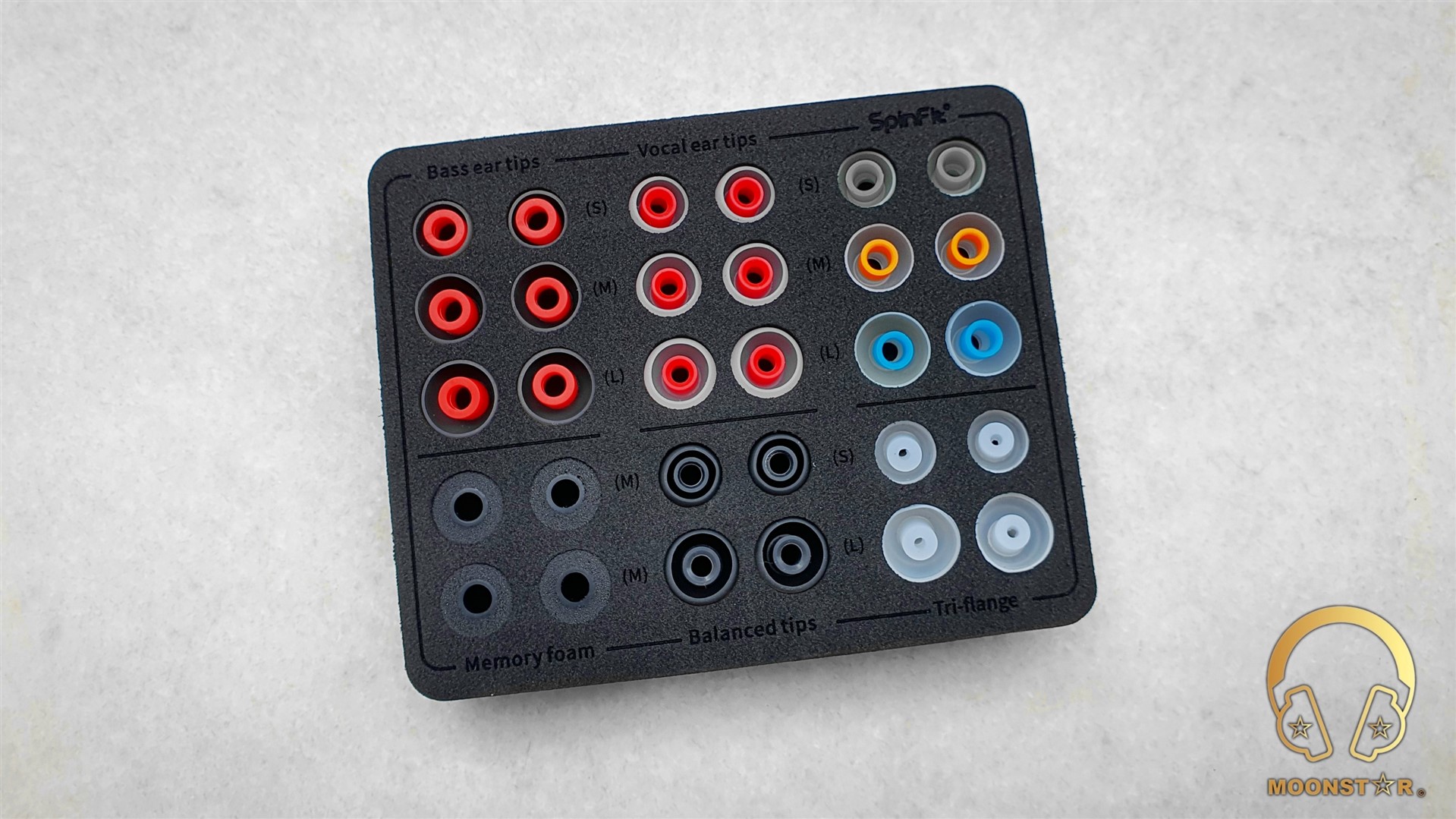
The HB5 storage case is another highlight of the FD7, which has a pretty luxurious appearance.


The accessories package includes also some useful additions such like the SK1 Magnetic Cable Organizer, a cleaning brush and FiiO’s new MMCX Assist Tool.
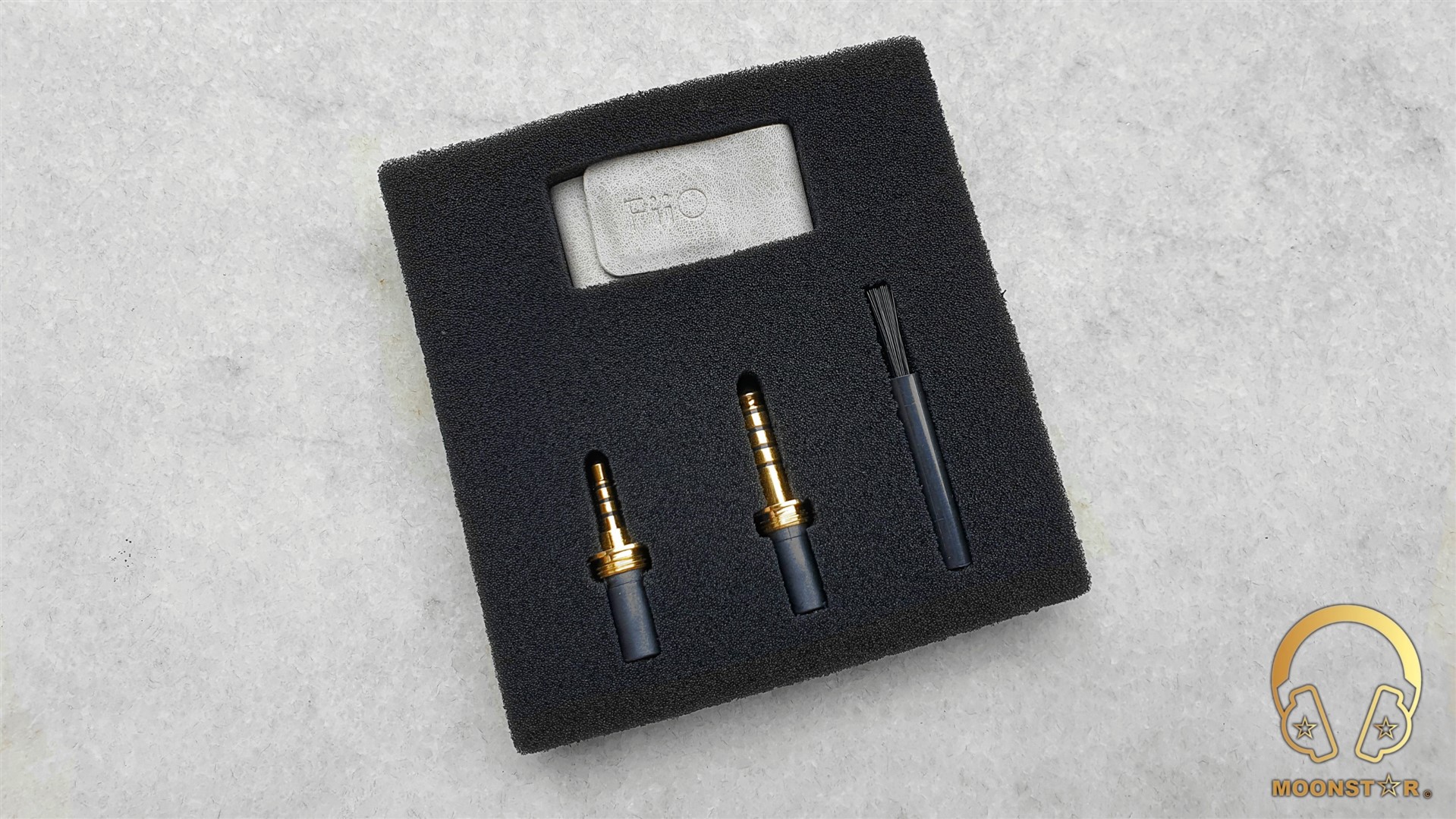
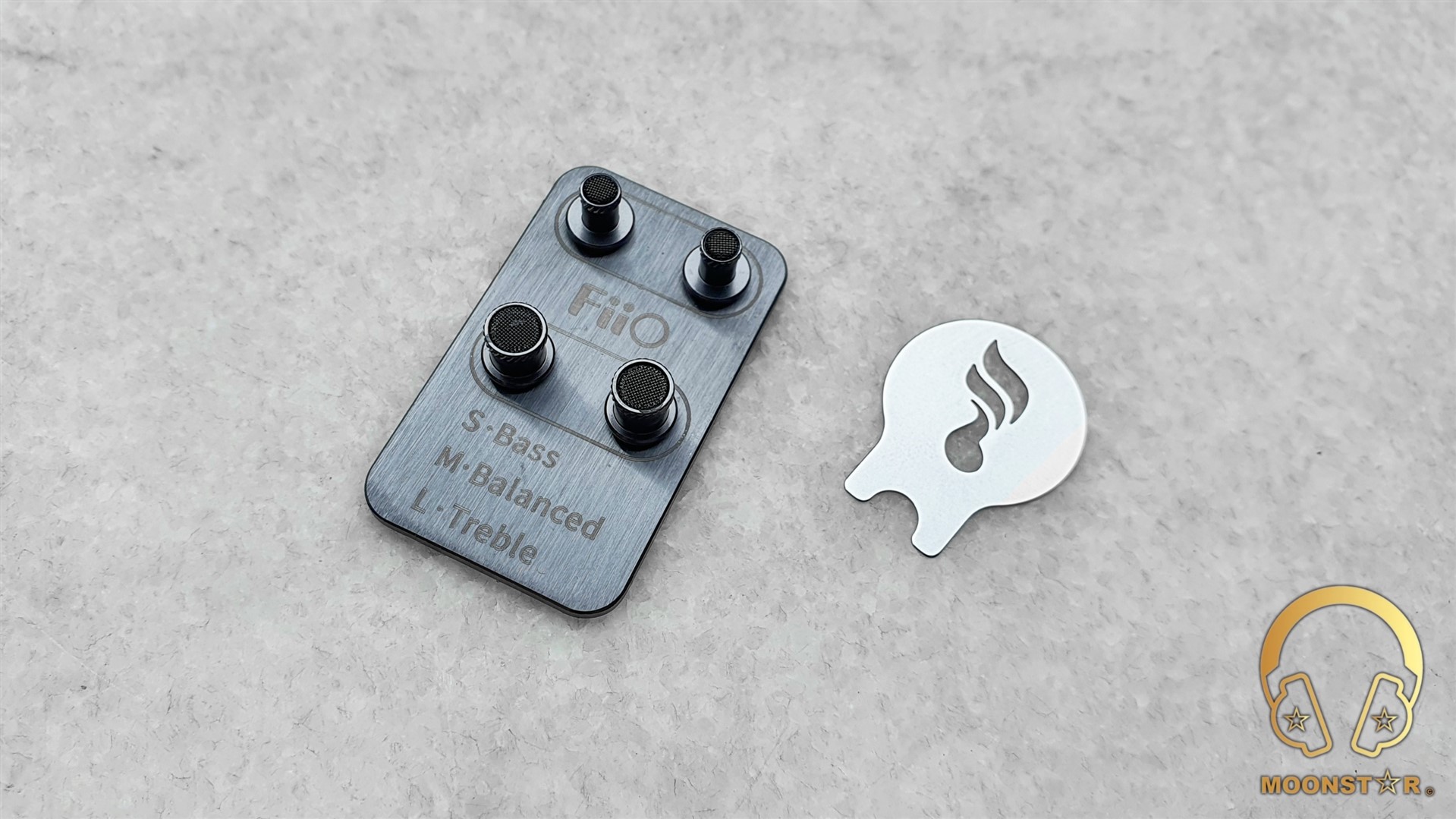
Design & Build Quality:
The FD7 is a solid looking In-Ear Monitor with its rigid monitor shell made of metal material in combination with a black finish. The appearance is pretty similar to those of the FD5, which was the first IEM of the company that had such a cylindrical shaped design. The FD7 does in fact implement many of the design elements we saw on the FD5 and takes them further, such like the semi-open & front acoustic prism design, volcanic field and many more.

The color scheme of the FD7 reflects the Chinese landscape paintings such like gold flake rivers and vast black mountains. On the front is the faceplate of the FiiO FD7 with its semi open back design and the so-called volcanic field system behind it.
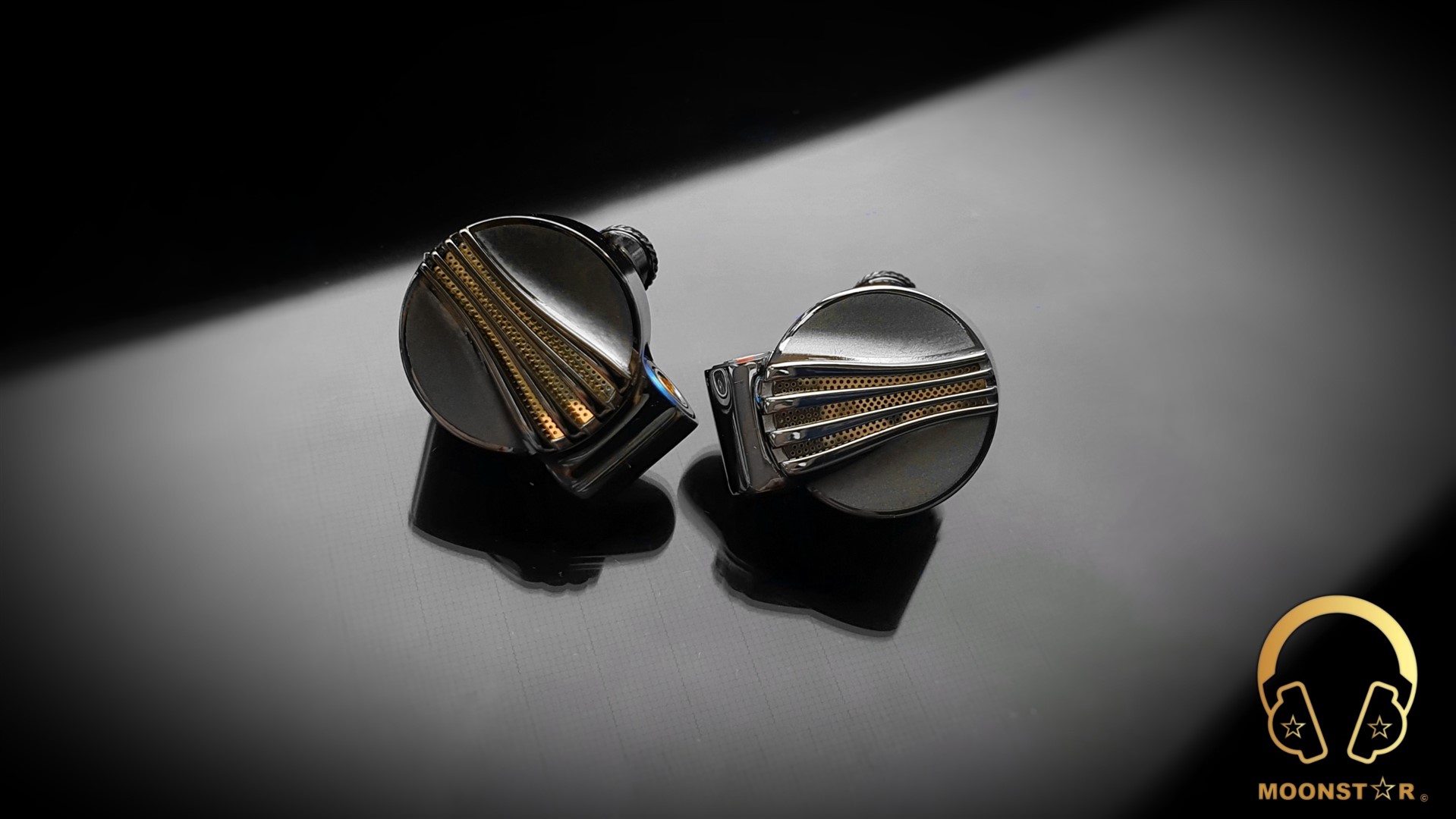
The rear part has a curved cylindrical shape same like the FD5, FD3/FD3 Pro and the FA7S.
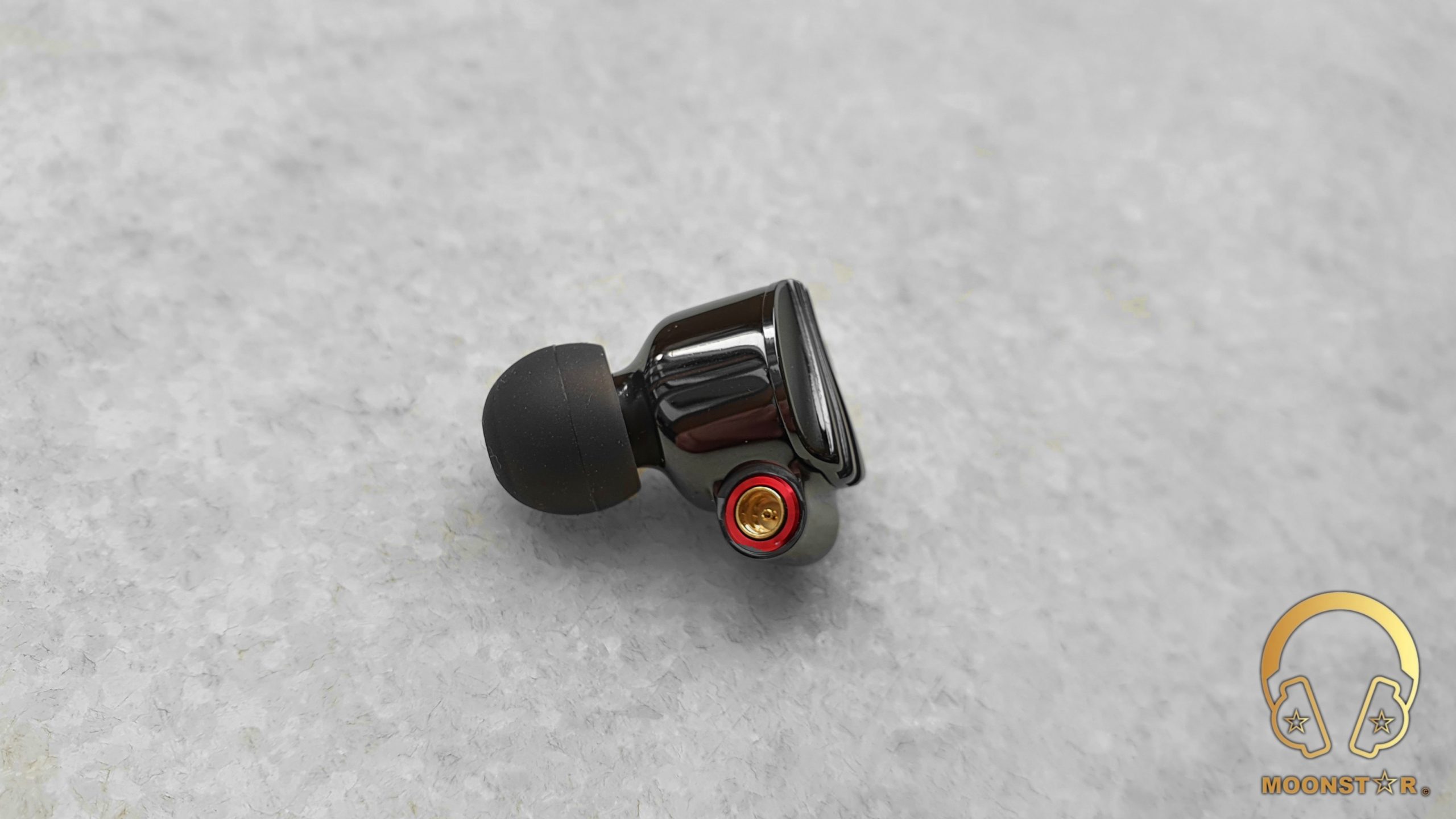
Here are the L (Left) & R (Right) markings and a small vent for the huge 12mm diameter Dynamic Driver that is located near the unscrewable sound nozzle area.
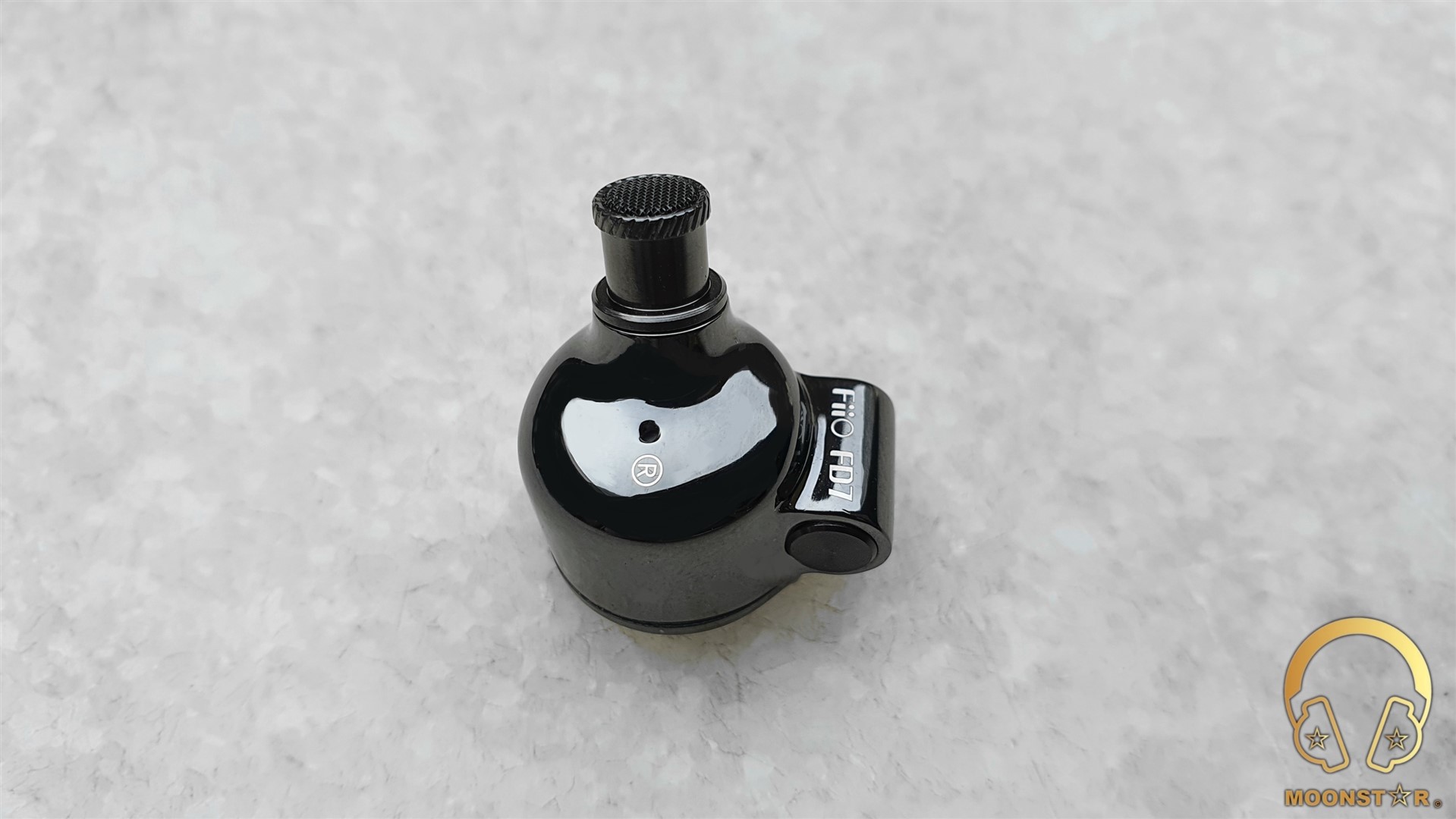
The monitor sports a protruding part with the MMCX (Micro Miniature Coaxial) female connectors on the top. The left MMCX female connector has a blue and the one on the right monitor has a red color indicator.
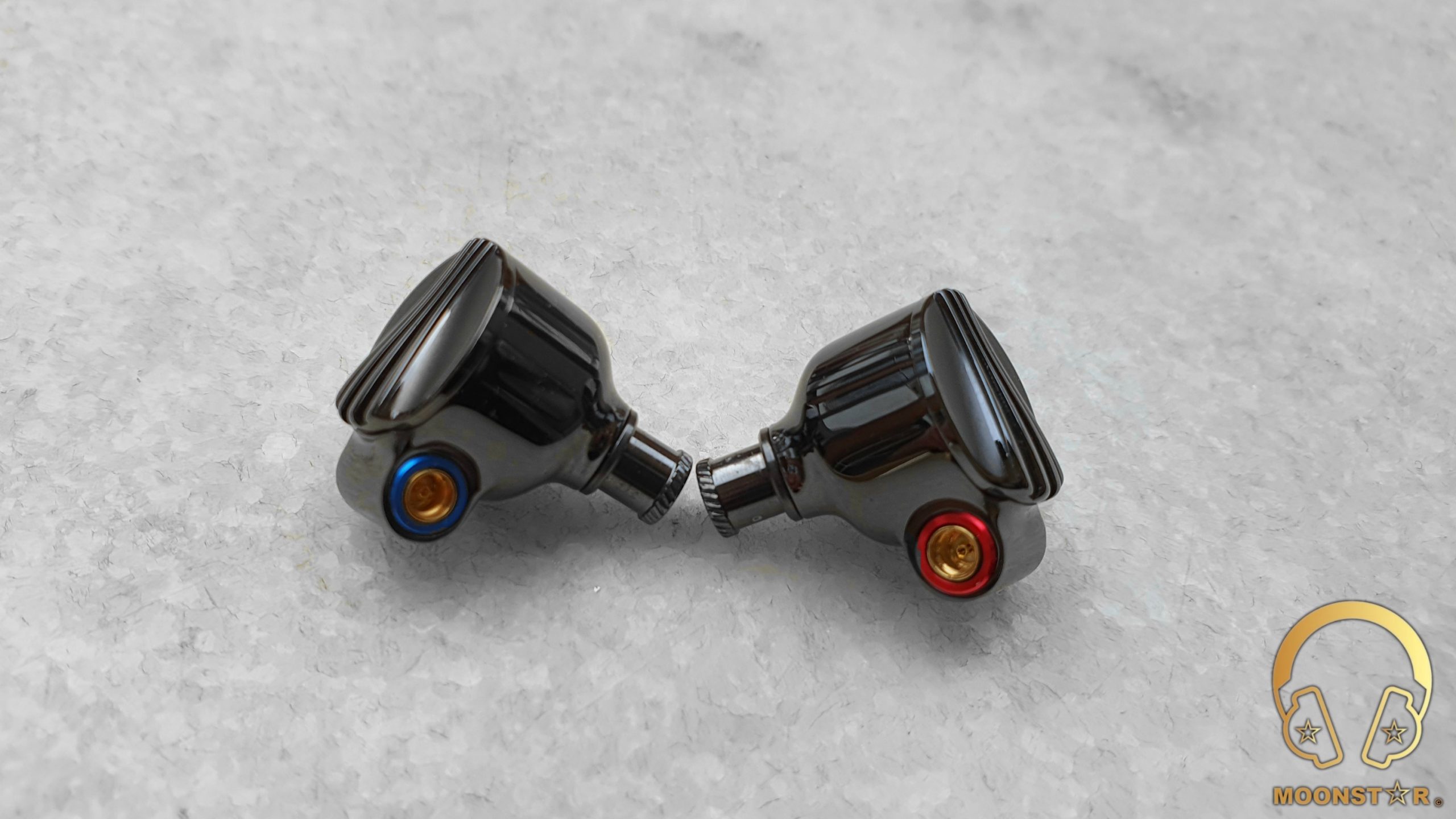
The sound nozzle has an “Interchangeable Sound Tube” design same as the one we have seen on the FD5.
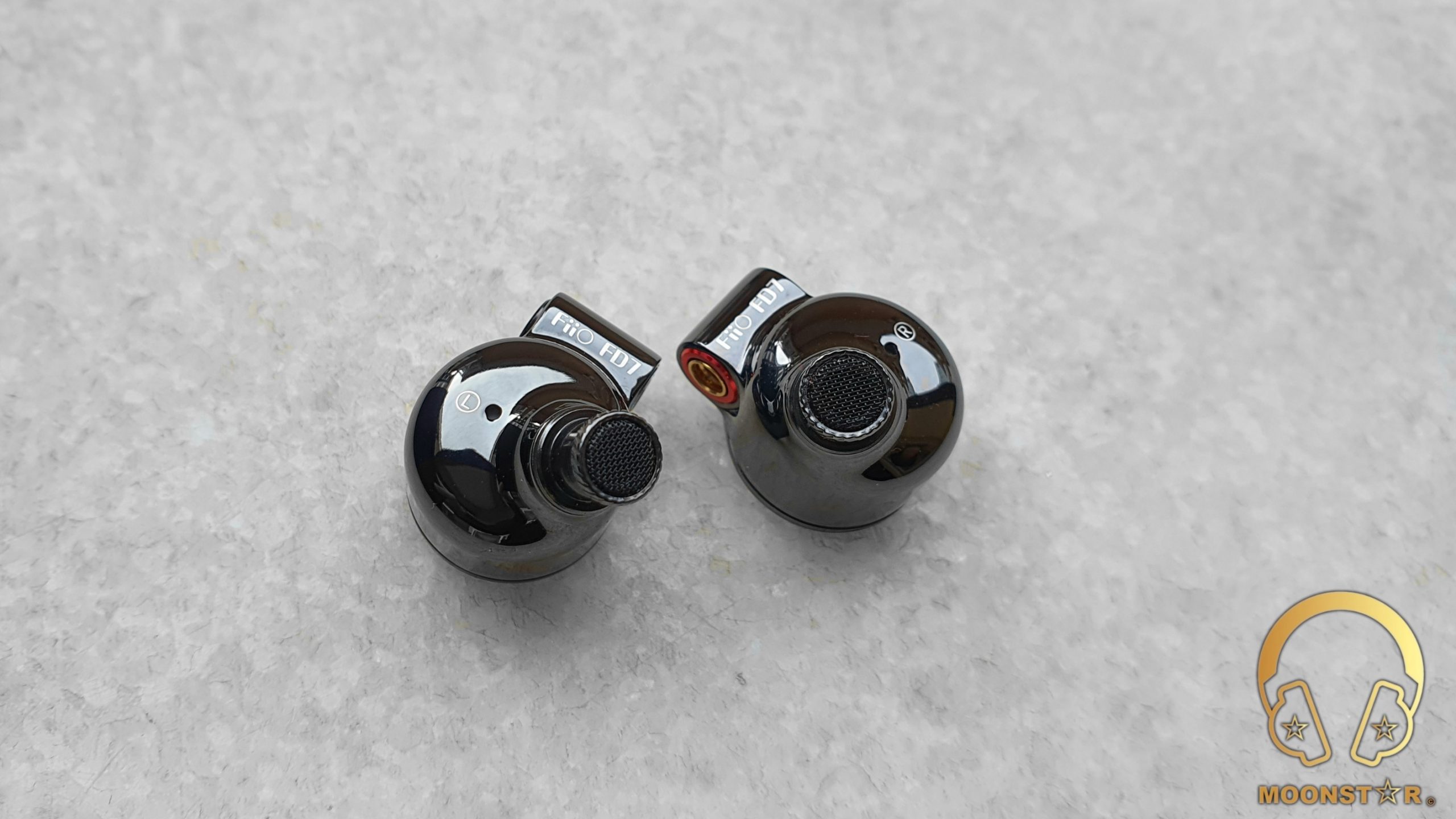
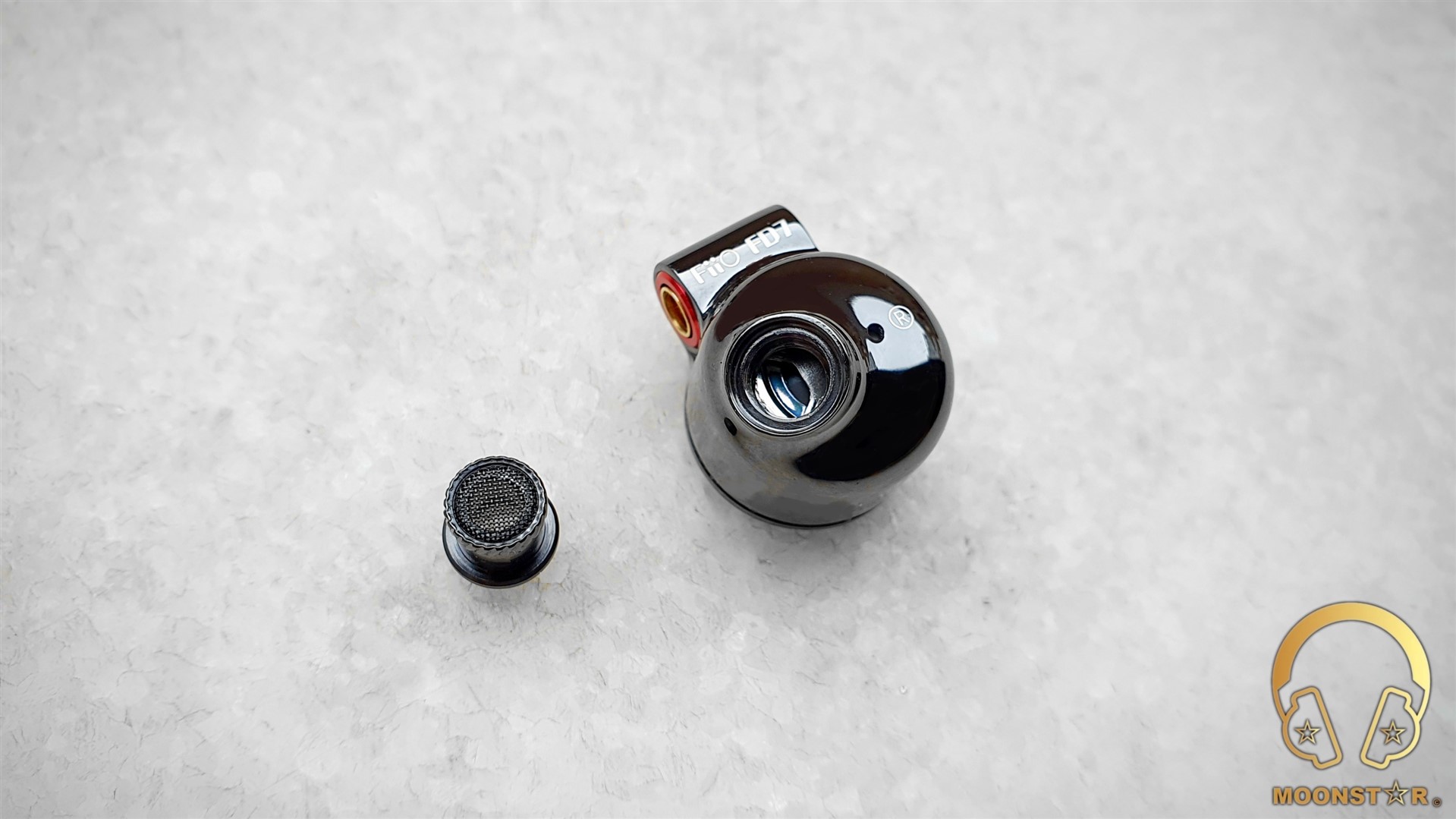
The FD7 comes this time with 3 different Interchangeable Sound Tubes, which are Bass, Balanced and Treble. The treble tube has the largest diameter, while the Bass tube has the smallest diameter.

Detachable Cable:
The FiiO FD7 comes with a high quality 4 core detachable cable made of 224 strands of high-purity Monocrystalline Silver wires.

The cable has a Litz braided design that features an environmental friendly medical grade TPU insulation with very low amount of microphonic effect.

The FD7 utilizes angled expanded MMCX connectors, which went through many ergonomic iterations and improvements, in order to achieve maximum comfort.
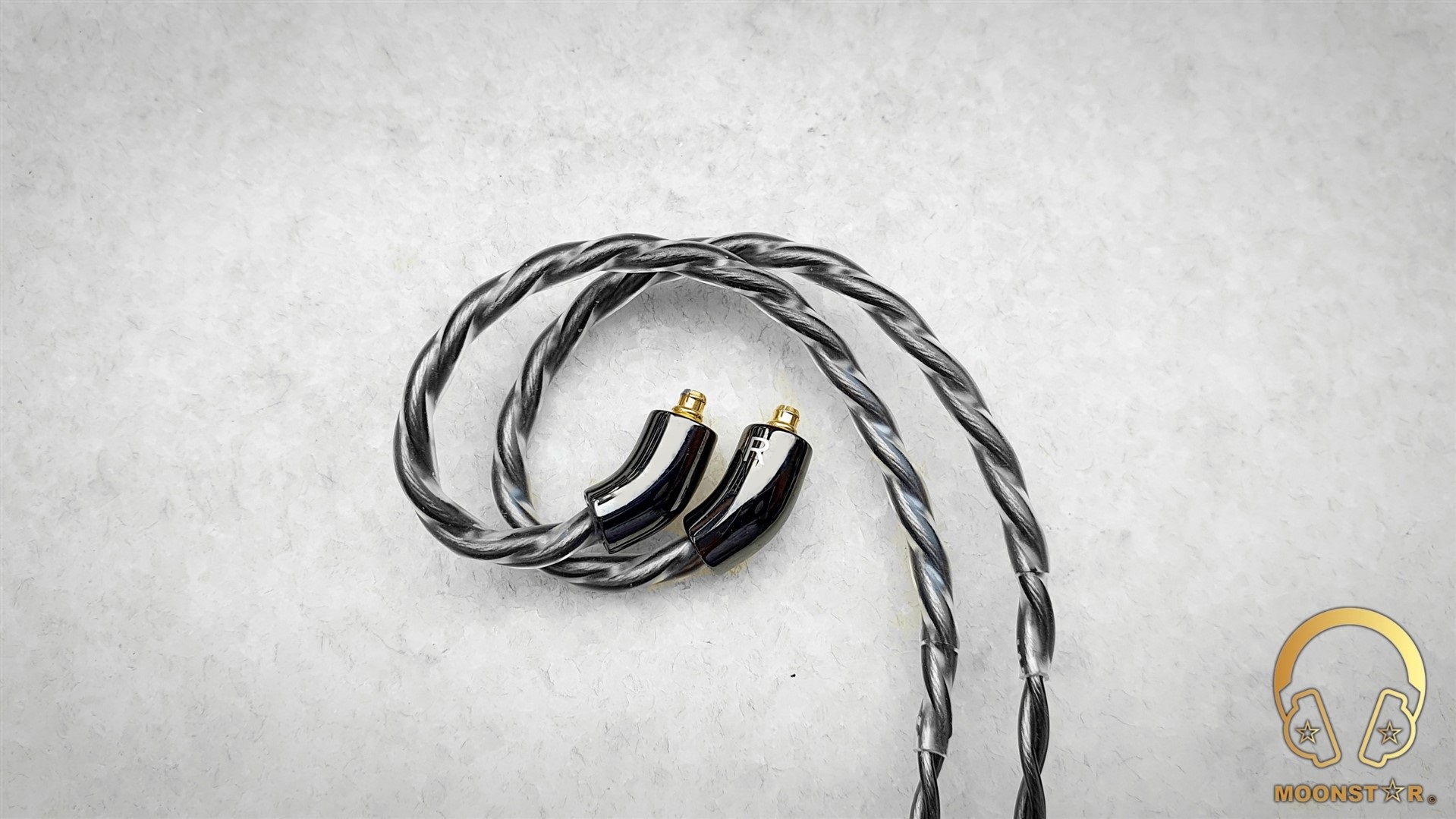
The cable features a metal Y splitter with the FiiO branding on the top and comes with a metal chin slider made of the same metal material in black (gunmetal) color.
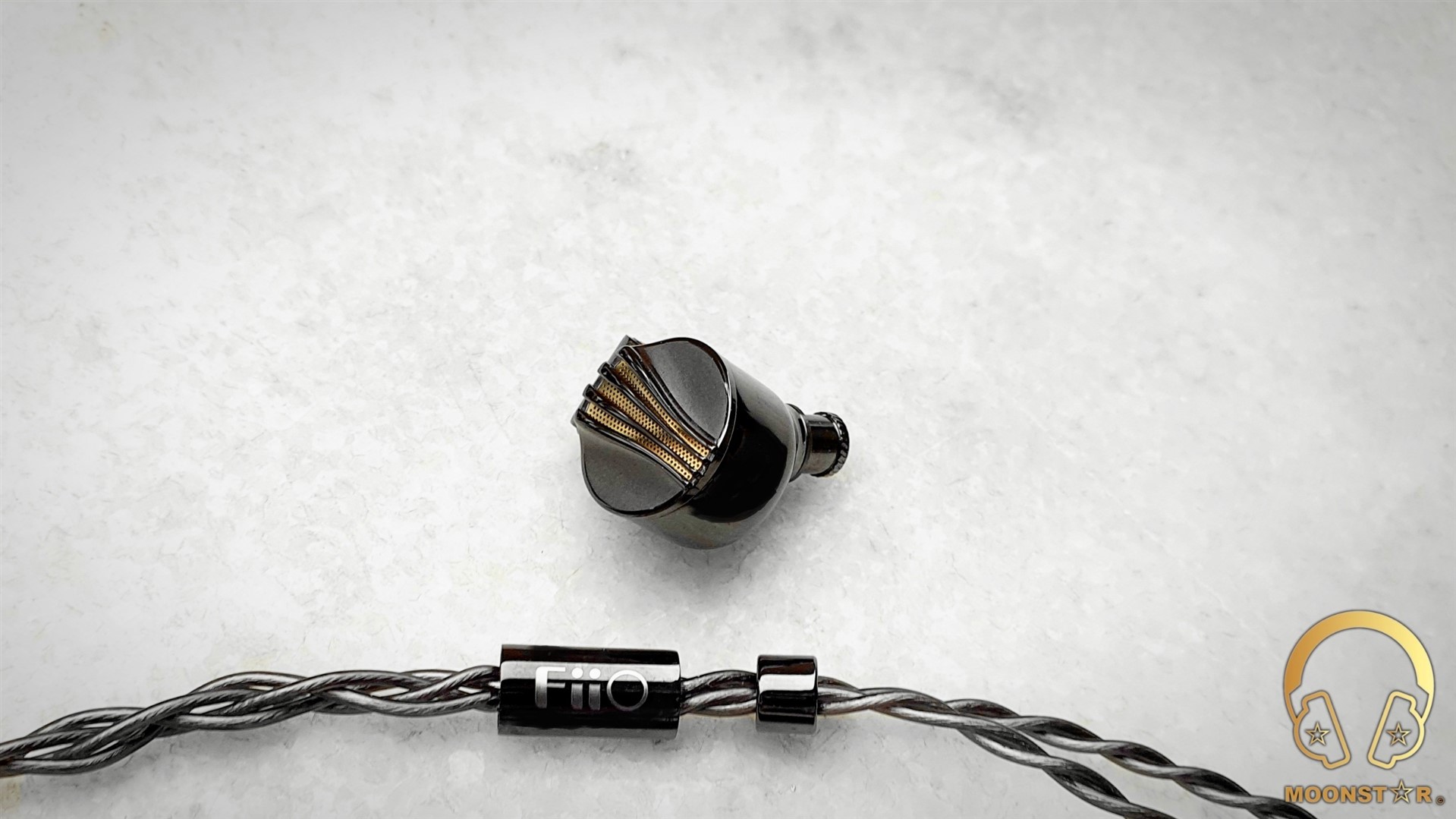
The detachable cable comes with an Interchangeable Headphone Plug that has a unique twist and lock mechanism same like the one we have seen on the FD5. It offers 3 (three) plug variants, which are the 3.5mm Single Ended (TRS) plug, 2.5mm Balanced (TRRS) plug and the 4.4mm Balanced (TRRRS) Pentaconn plug.
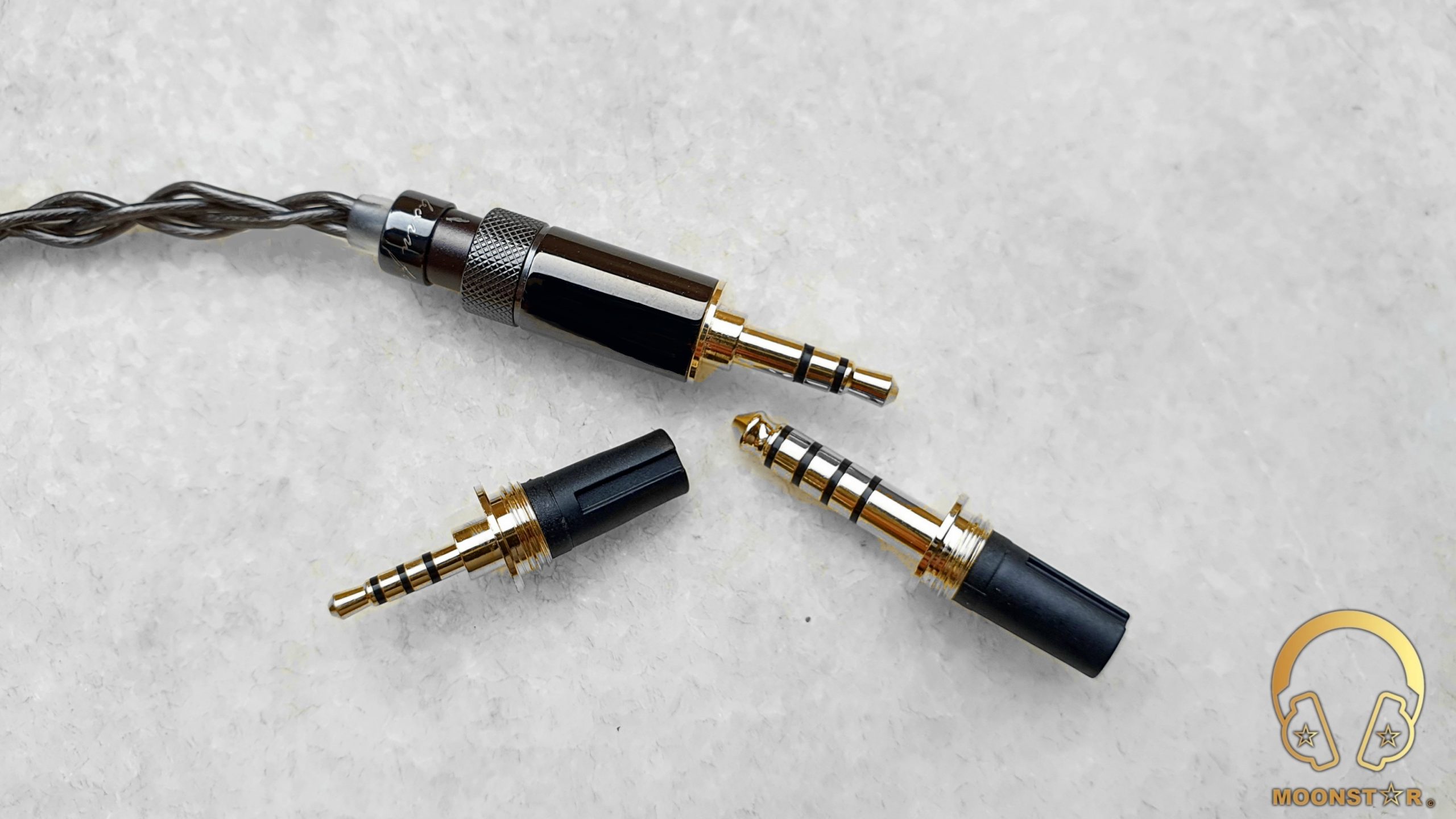
The housing of the headphone plug has a strait profile and is made of the same metal material in black color.
Isolation & Comfort:
The passive noise isolation of the FiiO FD7 is on an average level, since it features a unique semi-open-back design. However, the isolation is efficient enough for the use it in fairly noise environments such like a metro, bus or train.
The FiiO FD7 offers a quite ergonomic fit thanks to its curved cylindrical shape. This shape makes it pretty ideal for the use for longer listening periods without to hurt my ears with an average sized ear concha.
Drivability & Pairing:
The FiiO FD7 has an impedance of 50Ω (Ohm) and a sensitivity of about 111dB @ 1mW. It can be driven with relative weak sources such like Smartphone’s or Tablets. However, I do highly recommend to pair the FD7 with more powerful and detailed devices such like DAP’s (FiiO M11 Pro / M11 Plus) DAC/AMP’s (FiiO Q5s, BTR5), or DAC/Amplifier Dongles (FiiO KA3) to hear the true potential of this wonderful sounding In-Ear Monitor.

Remarkable Features:
A) 12mm Diameter Pure Beryllium Diaphragm [Edit]:
The FiiO FD7 utilizes a 12mm diameter pure beryllium diaphragm dynamic driver. Beryllium material is 4 times more rigid than steel while only weighing ¼ as much as titanium and has 3 times the transient performance compared to titanium drivers for a faster overall sound response.
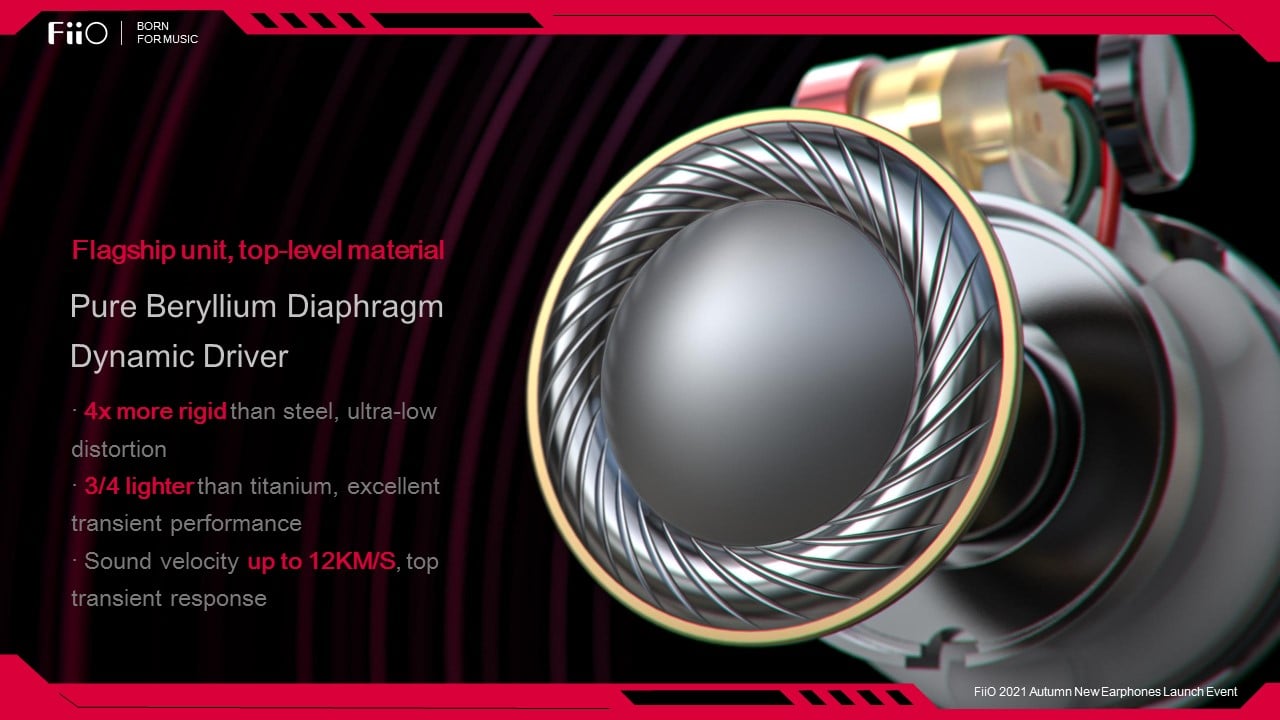
B) Volcanic Field & Semi-Open Design:
The “Volcanic Field” reduces standing waves and distortion, and overall improves the diffusion of bass waves in the FD7 wired earphones. In addition, the FD7’s semi-open design relieves pressure on the ear for more comfortable listening.
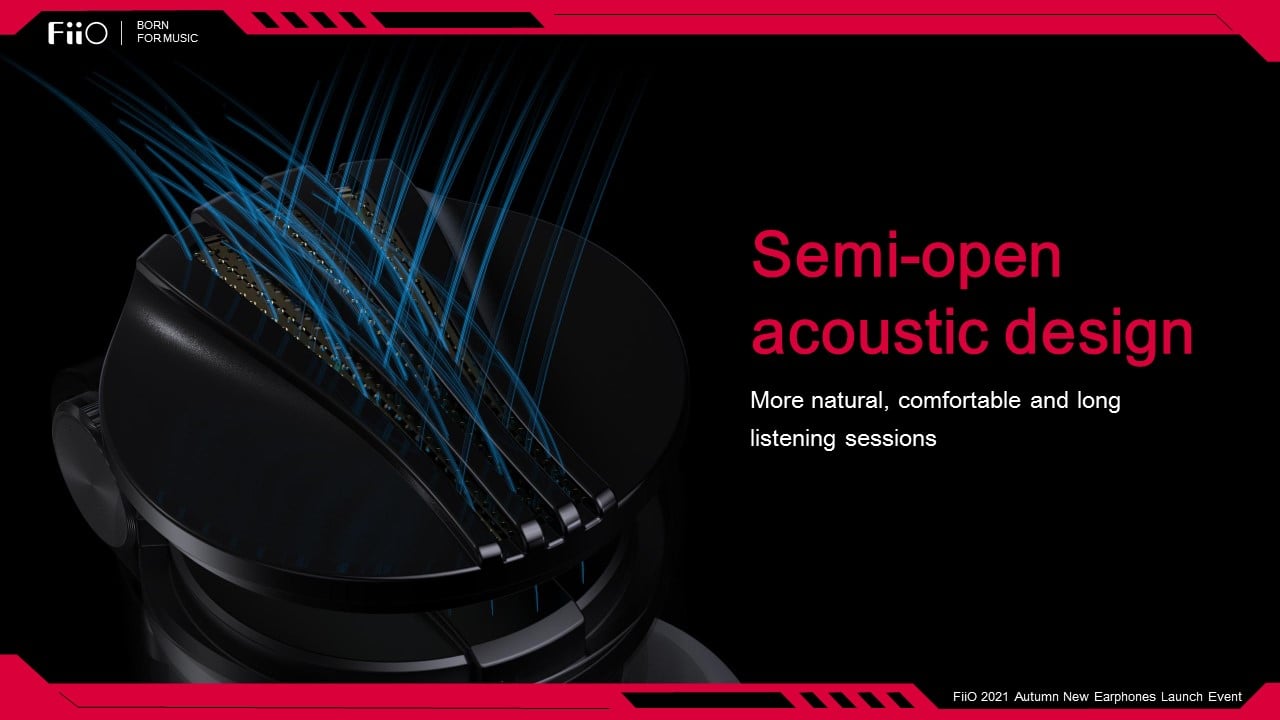
C) Acoustic Prism:
The FD7 features an acoustic prism system that effectively changes and precisely controls the way sound waves travel through the monitors to enhance how high frequency waves propagate and to ensure audio phases are correct.

Technical Specifications:
- Driver Type : 12mm Pure Beryllium Diaphragm Dynamic Driver
- Frequency response : 10Hz-40kHz
- Impedance : 50Ω@1kHz
- Sensitivity : 111dB@1mW
- Max input power : 100mW
- Cable : 4 Core High Purity Monocrystalline Silver Wire Cable
- Cable length : 120cm
- Weight : 11 grams (single unit)
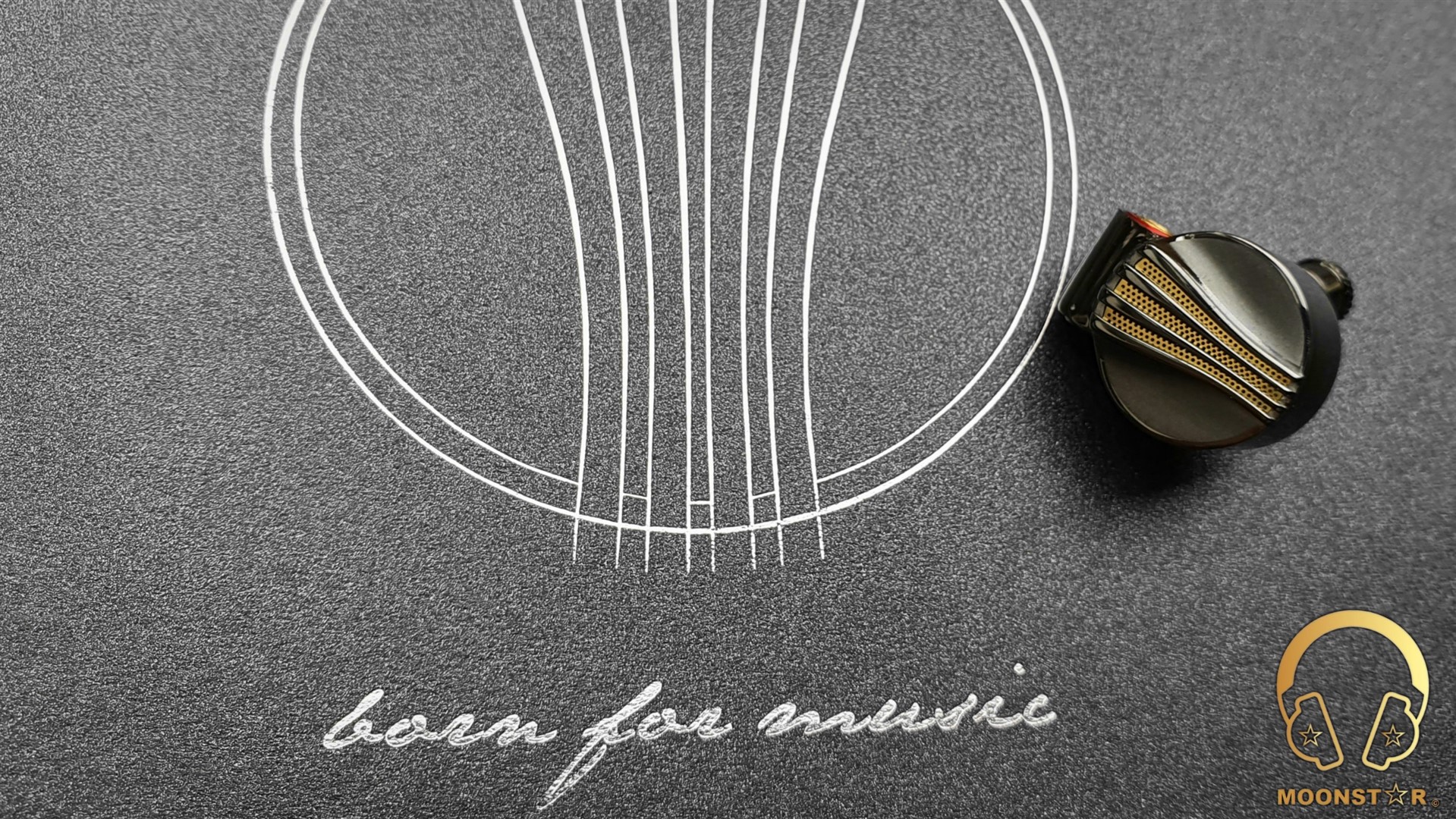
Sources used for this review:
- IEM : FiiO FD7, Final Audio B1, Metalure Wave
- DAP/DAC/AMP : FiiO M11 Pro, FiiO Q5s, FiiO BTR5, FiiO KA3
Albums & tracks used for this review:
- Adele – My Little Love (Spotify)
- Randy Crawford – On Day I Will Fly Away (Flac 16bit/44.1kHz)
- Mariah Carrey – Without You (Flac 16bit/44.1kHz)
- Hayley Westenra – Odyssey Album (Dezzer HiFi)
- Sarah McLachlan – Angel (Flac 24bit/48kHz)
- Sertap Erener – Aşk (Flac 16bit/44.1kHz)
- Edith Piaf – Non Je Ne Regrette Rien (Flac 16bit/44.1kHz)
- Diana Krall – So Wonderful (DSF)
- Aretha Franklin – I Say A Little Payer (Flac 24bit/96kHz)
- David Bowie – Heroes (Flac 24bit/192kHz)
- Elton John – Rocket Man ((Flac 24bit/96kHz)
- Barry White – Just The Way You Are (Flac 24bit/48kHz)
- Isaac Hayes – Walk On By (Flac 16bit/44.1kHz)
- Sting – Englishman in New York – (Flac 24bit/48kHz)
- Eric Clapton – Wonderful Tonight (Flac 24bit/96kHz)
- B.B. King – Riding With The King (Tidal Hi-Fi)
- Dave Gahan – Kingdom (Tidal Hi-Fi)
- U2 – Sunday Bloody Sunday (Flac 16bit/44.1kHz)
- Bro Safari, UFO! – Drama (Deezer HiFi)
- Armin Van Buuren – Vini Vici (Flac 16bit/44.1kHz)
- Really Slow Motion – Deadwood (Deezer HiFi)
- Jo Blankenburg – Meraki (Spotify)
- Lorde – Royal (Flac 24bit/48kHz)
- Toutant – Rebirth (Deezer HiFi)
- Gogo Penguin – Raven (Flac 24bit/192kHz)
- GoGo Penguin – Fanfares (Flac 24bit/192kHz)
- Portishead – It Could Be Sweet (Spotify)
- Charly Antolini – Duwadjuwandadu (Flac 24bit/192kHz)
- Michael Jackson – Billie Jean (Flac 24bit/192kHz)
- Ferit Odman – Look, Stop & Listen (Flac 24bit/192kHz)
- Chopin – Nocturn No. 20 In C-Sharp Minor (Flac 16bit/44.1kHz)
- Fazıl Say – Nazım Oratoryosu (Live) (Flac 16bit/44.1kHz)
- Vivaldi – Le QuarttroStagioni “The Four Season” (Deezer HiFi)
- Otto Liebert& Luna Negra – The River (Flac 24bit/192kHz)
- Lunatic Soul – The Passage (Flac 16bit/44.1kHz)
- Deftones – My Own Summer (Shove it) (Flac 16bit/44.1kHz)
- Photek – The Hiden Camera (Spotify)
- Muse – Hysteria (Flac 24bit/48kHz)
- Metallica – Sad but True (Flac 24bit/96kHz)
- Opeth – Windowpane (Flac 16bit/44.1kHz)
- Megadeth – Sweating Bullets (Tidal Hi-Fi)
- Rush – YYZ (Flac 16bit/44.1kHz)
- Rush – Leave That Thing Alone (Flac 16bit/44.1kHz)
- Slayer – Angel of Death (Spotify)s
- Liquid Tension Experiment 2 – Acid Rain (Spotify)
- Yosi Horikawa – Bubbles (Spotify)
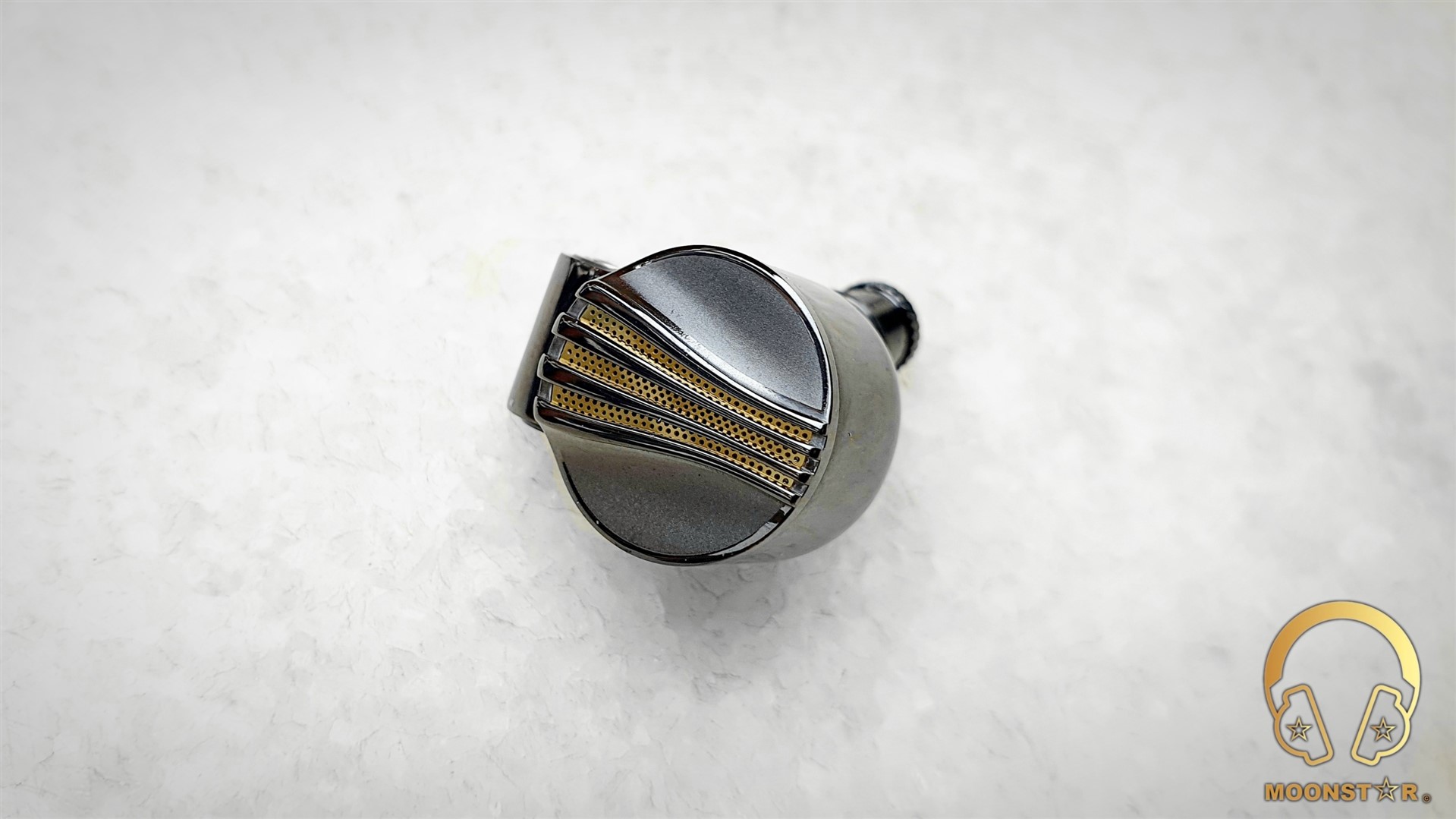
The Sound:
The FiiO FD7 is a very fluid, highly controlled and detailed sounding In-Ear Monitor, which shows a slightly warmer than neutral tonality and a pretty natural timbre that satisfied me immediately. The FD7 has a quite expansive and airy soundstage atmosphere that reminds me more to those of headphones rather than regular In-Ear Monitors. The bass shows a decent level of layering an impressive sense of speed and control. The midrange is highly transparent, organic and detailed, while the treble area is quite energetic but surprisingly controlled, and has a good grade of extension.

The FD7 comes with FiiO’s latest Interchangeable Sound Tube design. The package includes three (3) pairs of filters, which are the Bass, Balanced and Treble Tubes. The Balanced Tube offers the default tuning of the FD7, which is my favorite pair since it offers the most realistic, balanced and natural/uncolored presentation of this system.
Right below are my impressions and comparison of the Bass & Treble Tube, directly compared to the Balanced Sound Tuning Tube (Default/Reference).
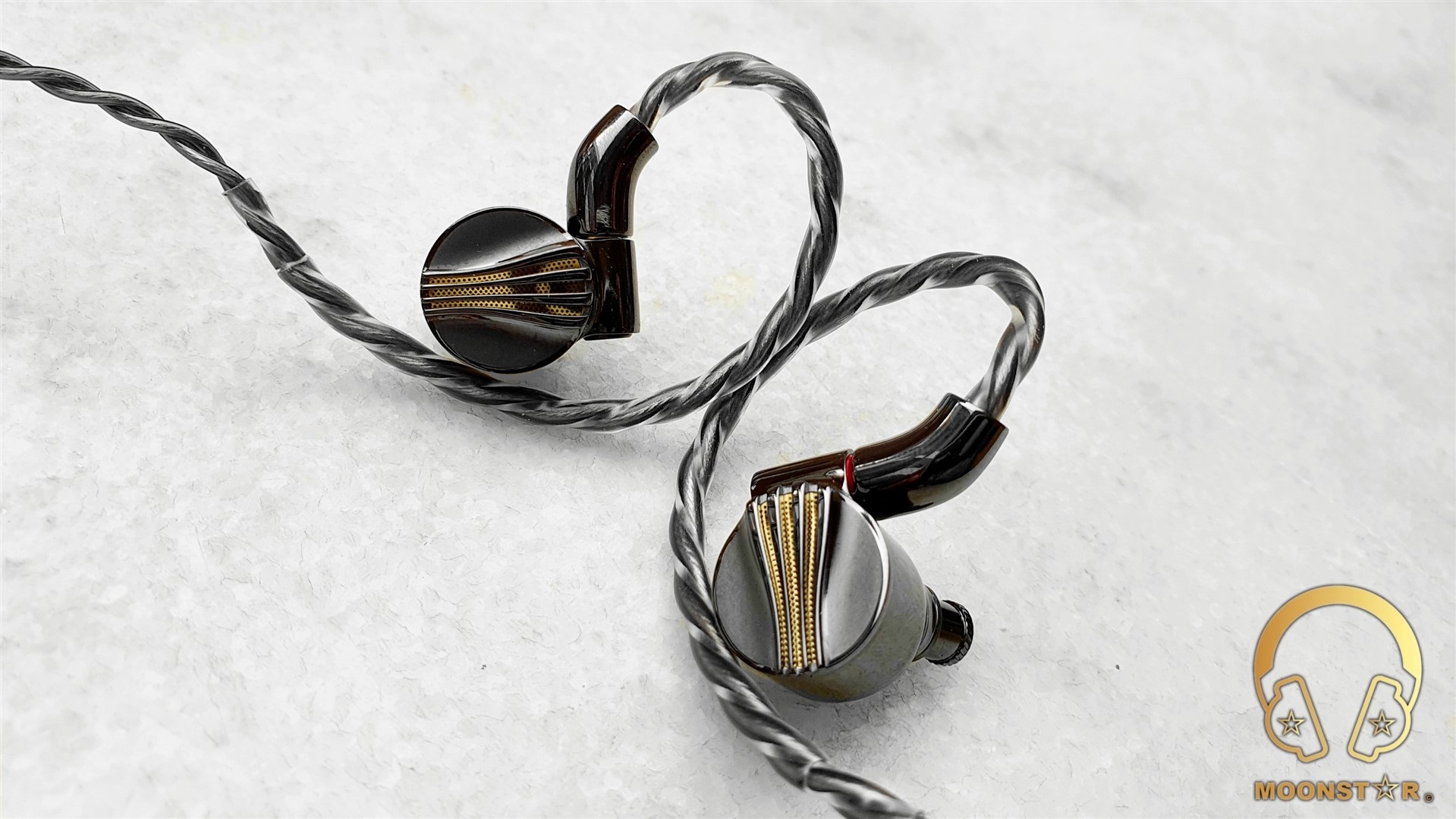
Bass Tube:
The Bass Tube is the one with the smallest diameter. It shows the warmest tonality and helps to increase the lower frequency response. It has the highest amount of coloration and shows the most entertaining sound signature of all tree Sound Tubes. The subbass region shows more depth and rumble, while the decay remains unchanged, which impressively fast for a dynamic driver IEM, thanks to the use of the Pure Beryllium Diaphragm. The midbass sounds slightly ore impactful compared to the Balanced and Treble filter, while the sense of speed and control in this are still unchanged. Moreover, the lower midrange shows more intensity compared to the balanced and treble filter, especially when I do listen to male vocals or strings like cellos and acoustic guitars.
Treble Tube:
The Treble Tube is the one with the brightest tonality. It is not a night and day difference but the still audible. The upper midrange and lower treble region sounds more highlighted compared to the Balanced Tube, especially the in direct comparison to the Bass Tube. The upper midrange shows a tad more transparency, while the lower midrange is losing some body and depth. The transitions from the upper midrange towards the treble region do still sound controlled. The lower treble region offers a bit more clarity, while the upper treble are gains some additional airiness and sparkle.

PS: This review has been written after a burn-in period of 160 hours since the Pure Beryllium Diaphragm needs some time to show its true potential. My impressions below are based to my impression with the Balanced Sound Tube that has been carefully installed to the FD7, which offers in my opinion the most realistic, versatile and pleasant to listen to sound profile. I have used the stock cable and the Balanced Silicone Ear Tips. My main sources are the FiiO M11 Pro and the FiiO Q5S. The list of tracks I have listen during this review are listed above for your information.
Analyzing the Frequency Response of the FiiO FD7:
Bass:
The FD7 utilizes a 12mm Pure Beryllium Diaphragm Dynamic Driver offers an impressive grade of bass speed and control. It is not as impactful like previous FD Series In-Ear Monitors such like the FD5, however the resolution, clarity and layering is on a TOTL level.
The subbass region of the FD7 has a moderate level of depth and extension, while the rumble is suitable for most genres especially when you use it with the Bass Tube. Bass heavy genres such like EDM, House music, Glitch hop, etc. are not the strength of the FD7, so if you prefer an IEM with thunderous subbass rumble instead of control and technicality in this area, the FD7 wouldn’t be the best choice.
The FiiO FD7 offers an outstanding performance in terms of authority when I do listen to songs with complex bass passages such like Gogo Penguin’s “Raven” and Photek’s “The Hidden Camera”.
The midbass region is a bit more pronounced compared to the subbass area. The tonality of this region is slightly warmer then neutral, while it shows an impressive sense of control, tightness and realism tanks to highly capable 12mm Pure Beryllium Diaphragm Dynamic Driver. Instruments from contrabass to drums, from def to bongo’s all have been reproduced in a pretty natural and realistic manner. The quality and intensity of the midbass is neither too low nor too much when you use the Bass Tube.

Midrange:
The FiiO FD7 shows a fluid, petty organic and natural midrange character and offers a nicely smooth and quite lively presentation in this area that got immediately my attention, especially when I have listen genres like jazz, blues and classical music. This area shows slightly warm tonality and a coloration that is there but not overdone. The midrange atmosphere is pretty transparent and airy, while the level of resolution is quite close to much more expensive Top Tier In-Ear Monitors.
Vocals & Instruments:
The general vocal presentation of the FiiO FD7 sounds quite realistic and detailed with both male and female. There is a slightly coloration in this area that helps to create a fluid and special timbre, which is quite exciting to listen to. The lower midrange has just the right amount of depth and body to create a pretty intimate and emotional male vocal presentation when I do listen to voices like Isaac Hayes, Sting or Barry White.
Female vocals do sound more detailed and lifelike compared to previous FiiO IEM’s including the FD5 and FH7. The tonality is a tad warmer than neutral, while the sense of clarity and resolution is top notch. What the FD7 makes so special in this area is that it is able to produce a decent level of vividness/brightness without to sound unnatural, to have negative conditions such as sibilance or sharpness, when I do listen to female voices like Edith Piaf, Sertap Erener or Mariah Carey.
The midrange of the FiiO FD7 shows an excellent sense of transparency and airiness, so that instruments are well separated from each other, which is an advantage when I do listen to songs with complex and instrument dense passages such like GoGo Penguin’s “Fanfares”. Instruments from pianos to cymbals, from flutes to cellos are reproduced in a pretty detailed and energetic yet nicely controlled manner, thanks to the well adjusted upper midrange that is produced by the Pure Beryllium Diaphragm Dynamic Driver.

Upper midrange & Treble:
The FiiO FD7 has offers a pretty rich and technically competitive upper midrange and treble performance for an In-Ear Monitor at this price category. It is more forgiving to poor recorded songs compared to the FD5, since it has a precise adjusted yet not overdone roll-off around the 3 kHz region that gives it a nice sense of smoothness in this area.
The upper midrange transitions are quite clear and highly controlled when I do listen to instruments such as cymbals, drums or to guitars. For example, the guitar solos played with high distortions such like those in Megadeth’s “Sweating Bullets”, Slayer’s “Angel of Deaths” and Rush’s “Leave That Thing Alone” are reproduced with a good level of authority and clarity.
The treble range of the FD7 sounds noticeably more controlled compared to the FD5, which sounded a bit sharp and also less forgiving to poor recorded songs. It still able to produce an excellent sense of clarity and resolution in the lower treble region, and is also able to create a decent grade of airiness and sparkle in the upper treble register.
Instruments such like cymbals or hi-hats in both jazz and metal music do sound nicely pronounced, detailed and are shown with a good level of extension. The FD7 is able to produce a decent sense of resolution and sparkle in this area, when I do listen to a wide variety of instruments from pianos to flutes, from violins to synthesizers.
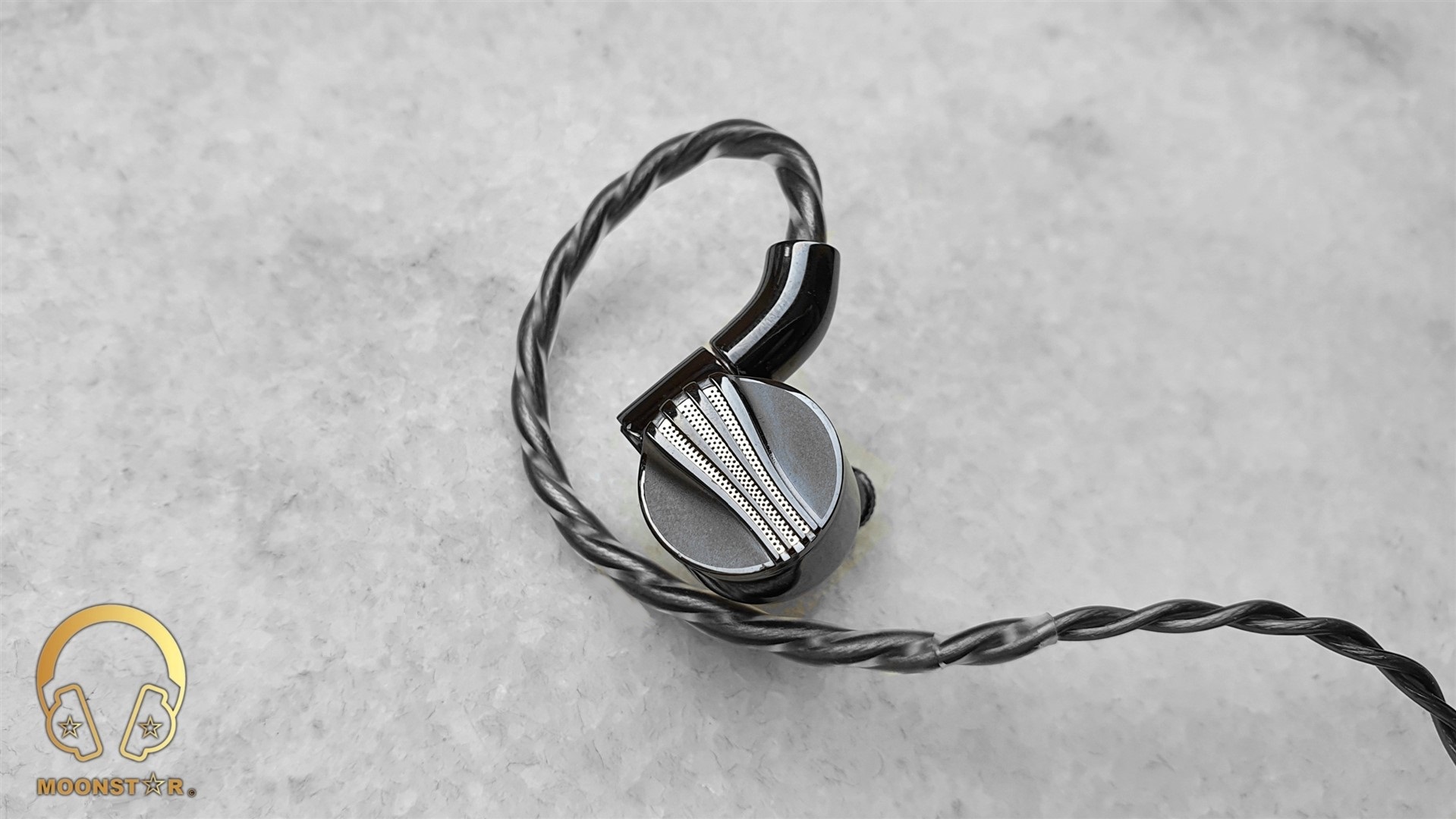
Soundstage & Imaging:
The FiiO FD7 shows a pretty realistic soundstage atmosphere with a decent sense of airiness and transparency thanks to the semi-open back design, which creates ideal conditions for a precise placement of instruments and vocals. The soundstage shows an above average wideness and pretty good level of depth and height.
Some Comparisons:
FiiO FD7 versus Final Audio B1:
The Final Audio B1 has a warmer tonality and shows a higher level of coloration compared to the FiiO FD7 that offers a more natural tonality and organic timbre.
The subbass region of the FD7 shows a slightly better level of depth and is superior in terms of authority and decay. The midbass area of the Final Audio B1 is more highlighted, warm, dens and impactful, however it can’t hold up with the FiiO FD7 when it comes to the clarity, resolution and overall layering in this area.
The midrange of the Final Audio B1 shows a warmer tonality and is also a bit more laid back in tits presentation, when compared to the FiiO FD7 that shows a more transparency and airiness in this area. The lower midrange of the B1 sounds pore pronounced and full-bodied, while the FD7 has the upper hand in terms of clarity and resolution. The upper midrange of the FiiO FD7 is more highlighted and detailed, while both IEMs do sound pretty controlled.
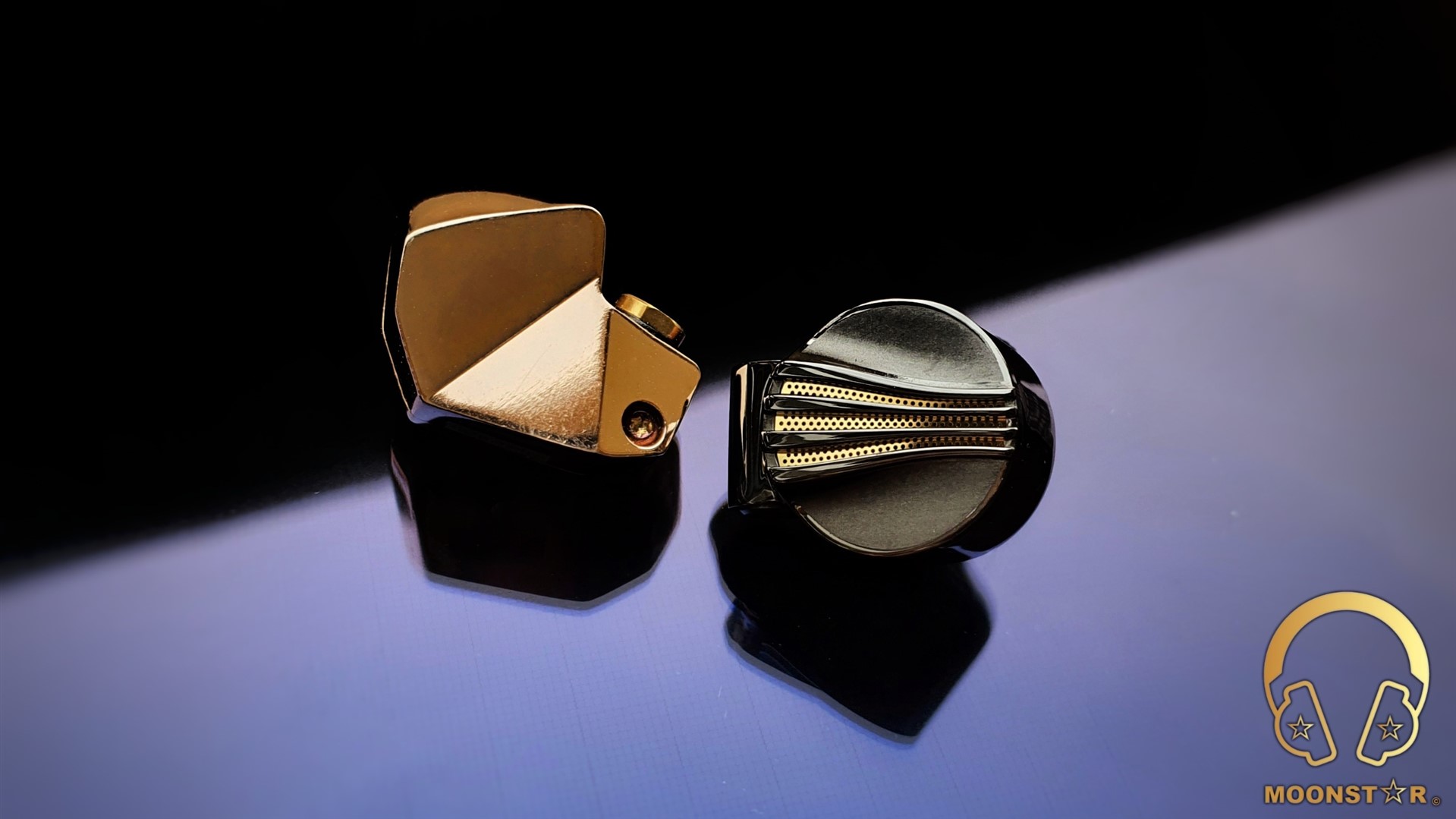
Both In-Ear Monitors are successful in the treble region in terms of technical performance.
The FiiO FD7 shows a more balanced, natural and controlled treble tuning, and offers also a better sense of clarity and definition in the lower treble region, while the Final Audio B1 has the slightly edge when it comes to the upper treble extension.
Both IEM’s are successful in terms of soundstage performance. However, the FiiO FD7 offers in general a better sense of airiness and spaces between instruments as well as vocals. The FD7 has the upper when it comes to the wideness of the stage, while the difference for the depth is quite minimal.
FiiO FD7 versus Metalure Wave:
The Metalure Wave is a pretty musical sounding In-Ear Monitor with a relative warm tonality that shows a mildly V shaped sound signature. The Wave is the IEM with a higher grade of coloration and shows a noticeably warmer tonality in direct comparison to the FD7.
Metalure Wave is slightly more successful in terms of subbass depth and quantity and shows more midbass intensity. The FiiO FD7 on the other hand is superior when it comes to the speed, control and layering in lower frequency region. The FD7 offers also better grade of clarity and has the slightly edge when it comes to the overall resolution.

The midrange of the Metalure Wave is warm and soft, while the level of transparency and airiness are on an average level. FiiO FD7 on the other hand, shows a more balanced, natural and transparent midrange presentation. The Wave has the upper hand in terms of lower midrange depth and male vocals, while the FD7 is superior when it comes to the general clarity and resolution of the midrange, especially in the upper midrange register.
The treble range of the FiiO FD7 offers a better sense of extension, clarity and definition while both IEM’s are controlled in this area. The upper treble region of the Metalure Wave sounds less airy and energetic compared to the FiiO FD7.
When it comes to the soundstage performance, I can say that the FiiO FD7 has the upper hand in terms of both wideness and depth.

Conclusion:
I am a lucky audiophile that has had the opportunity to review almost any FiiO IEM. Every new product of this company surprised me with its high value for its price, when it comes to the sound, esthetics and build quality. However, the FD7 is FiiO’s most natural, realistic and mature sounding IEM. It offers a very fluid, quite organic and detailed overall presentation from the lows up to the highs. This sound is packed in to a pretty comfortable and very esthetic looking monitor shell that comes with FiiO’s new interchangeable sound tube design, and a high purity silver cable with interchangeable plugs, which are part of the very rich accessory package.
Thank you for the Read!
Last edited:
Moonstar
100+ Head-Fier
Pros: Highly Entertaining Bass Tuning,
Clarity and Detail Retrieval of the Midrange & Treble area for a Product at this Price Range,
Design, Comfort & Build Quality,
Soundstage Atmosphere,
Very Rich Accessory Package (Sound Tuning Tubes, MMCX Assist, Storage Case, etc.)
Clarity and Detail Retrieval of the Midrange & Treble area for a Product at this Price Range,
Design, Comfort & Build Quality,
Soundstage Atmosphere,
Very Rich Accessory Package (Sound Tuning Tubes, MMCX Assist, Storage Case, etc.)
Cons: Treble sounds a bit sharp with the black sound tube if you listen to poor recorded tracks,
Average Passive Noise Isolation due to the Semi-Open Design
Average Passive Noise Isolation due to the Semi-Open Design
FiiO FD3 Dynamic Driver IEM Review
Introduction:
The FD3 is the latest member of the FD Series (FiiO Dynamic Driver Series) that features a pretty large 12mm Diameter Dynamic Driver with DLC (Diamond Like Carbon) Diaphragm Driver that is equipped with a robust magnet of 1.5 Tesla magnetic flux paired with an ultra-fine copper-clad aluminum Japanese Daikoku voice coil. Moreover, it comes with some interesting features such like an acoustic prism design, changeable sound tuning tubes and a semi acoustic open design.
FiiO Product Website: www.fiio.com/fd3

Disclaimer:
I would like to thank FiiO for providing the FiiO FD3 as review sample. I am not affiliated with FiiO beyond this review and all these words are reflecting my true and unaltered opinions about the product.
Price & Availability:
FiiO FD3 is available for about US $109.99, while there is also a FD3 Pro variant that comes with the 8 core High Purity Monocrystalline SPC upgrade cable, which is available for $149.99. More information’s can be found under the links below;
FiiO Offical AliExpress Store
Package and Accessories:
The FD3 came in a rectangular fancy looking black box with that features the product illustration in form of an iridescent (shimmering) drawing on the top along with some Hi-Res Audio brandings.

This box is contains the following items;
The FiiO FD3 comes with a very rich package of accessories that includes a wide variety of ear tips collection. This collection includes 9 pairs of silicone ear tips (Bass, Balanced and Vocal) and 2 pairs of memory foam ear tips. 1 pair of Interchangeable Sound Filter Tubes are placed on one of silicone ear tips holder sheets.

The pelican style storage case has is the one we know from previous FiiO products that I really like to use.
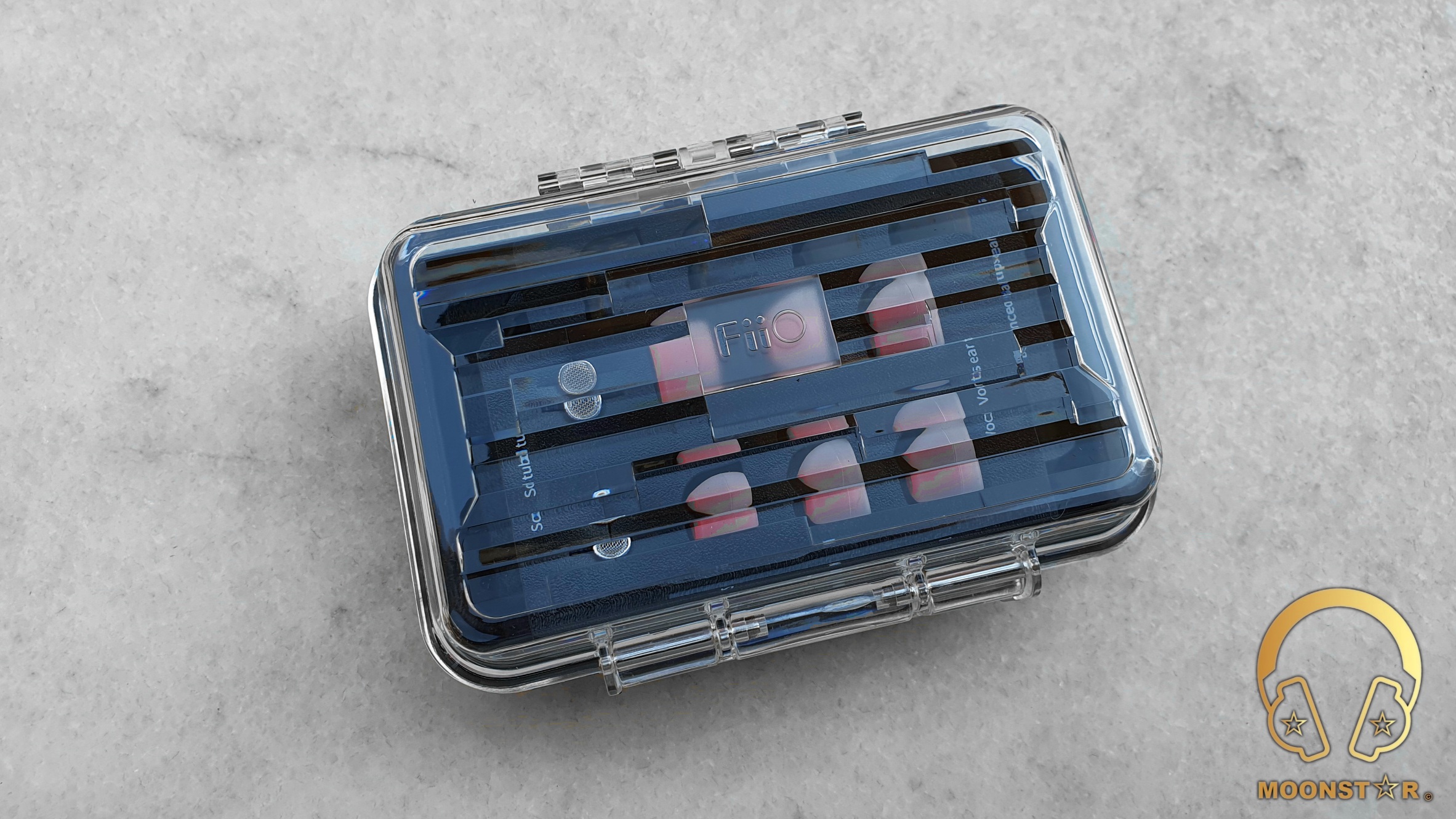
Tools like the Cleaning Brush and the FiiO MMCX Assist are some very useful additions.

Design & Build Quality:
The FiiO FD3 has a very robust monitor shell that is made of aluminum-magnesium alloy material, which has been processed with the latest five-axis CNC process that was finally hand polished. Each of the monitors weights about 7 grams that increases the premium feel of the monitors.
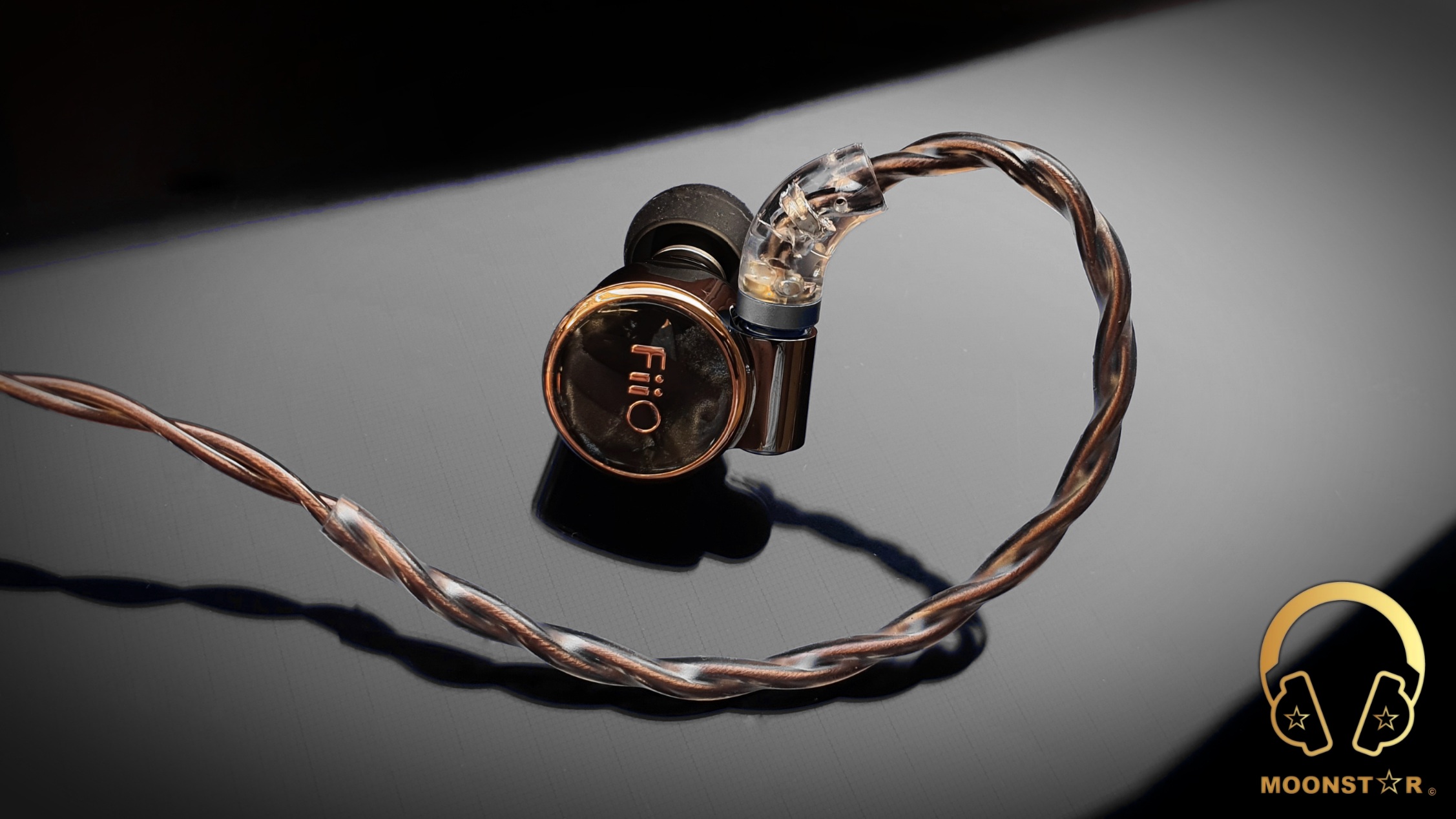
The faceplate of the monitor shell is one for sure one of the eye-catching highlights that the FiiO FD3 offers to the consumers. The faceplate design is based according to FiiO advertisings on the theme of “Curves”. It is made of a unique celluloid panel that has been covered with a special 2.5D film coating glass, which shows the FiiO brand logo on the top.

The monitor sports a protruding part with the MMCX (Micro Miniature Coaxial) female connectors on the top and the unique semi-open acoustic opening at the bottom. Both on the top and the bottom are left and right color indicators, from which the blue one is on the left and red on the right side of the monitor.

The semi-open design is based on FiiO’s patented technology for balanced air pressure. This design brings several advantages beside the improvements to the sound performance, such like hear protection by balancing the air pressure within the FD3 leading to less pressure on your eardrums.

The rear shell of the monitors has Left and Right markings and do feature a slightly angled sound nozzle with a fine metal mesh on the top to prevent the insertion of particles like dust or earwax.

The sound nozzle has an “Interchangeable Sound Tube” design that we have already seen on the bigger brother FD5. The FD3 offers also two different Interchangeable Sound Tubes like the FD5, one bass and one balanced sound tube. The large sound tube has a more balanced sound signature, while the bass tube offers a slightly more lively and bass-focused signature.

The Cable:
The FiiO FD3 comes with detachable cable that is made of 4 core High-Purity Monocrystalline Copper wire material. The cable has a nice braided design and features a fairly soft insulation that shows a very low amount of microphonic effect. This cable sports a nice looking chin slider and Y splitter with a FiiO branding on the top that are made of metal material.

These MMCX male connectors are sitting pretty tight on the monitor and should last for years without any problem. The MMCX connectors have a transparent housing and on each connector are right left indicators, which are a red ring on the right and a blue ring on the right connector.

The detachable cable comes with a 3.5mm Single Ended (TRS) headphone plug that has a L angled housing made of plastic material that features a strain relieve for extra durability.

The overall build quality of the cable is pretty good for a product at this price level.
Comfort & Isolation:
The FiiO FD3 offers a pretty ergonomic cylinder shaped monitor design, which makes it ideal for the use for longer listening periods without to hurt my ears that has an ear concha with an average size.
The passive noise isolation is on an average level, since it comes with a semi-open design. However, the isolation is efficient enough for the use it in fairly noise environments such as metro, bus or train, while it is not suitable for the use on the stage.
Drivability:
The FiiO FD3 is a quite efficient In-Ear Monitor thanks to an impedance of 32 Ω and a sensitivity of 111dB/mW. This makes the FD3 pretty compatible with most audio sources like Smartphone’s, Tablets or small Digital Audio Players/Mp3 players that do have in general a relative weak amplification.

Remarkable Features:
12mm Dynamic Driver with Diamond Like Carbon “DLC” Diaphragm Technology:
FiiO FD3 comes with the latest DLC (Diamond Like Carbon) Diaphragm technology. The newly designed 12mm Dynamic Driver for FD3 do feature a robust magnet of 1.5 Tesla magnetic flux paired with an ultra-fine copper-clad aluminum voice coil from the Japanese company Daikoku.
Acoustic Prism:
The engineers of FiiO have installed a conical device close to the front end of the drive diaphragm, so that it was possible to precisely control how the sound waves travel in the sound tube, which brings benefits such as eliminations of high frequency standing waves and enhancing the overall sound wave diffusion.
Semi-Open Design:
The semi-open design of the FD3 is based on FiiO’s patented technology for balanced air pressure within brings several advantages. Not only does such a design improve the sound performance, it also effectively protects your hearing by balancing the air pressure leading to less pressure on your eardrums.
Technical Specifications:
Sources used for this review:

Albums & tracks used for this review:
The Sound:
The FiiO FD3 comes with a nicely tuned V shaped sound signature that shows a slightly warmer than neutral tonality. The lower frequency region shows a great level of depth and body along with a nice breeze of warmth, the midrange on the other hand is slightly recessed due to the V shaped sound signature that sounds pretty crisp and transparent, while the treble area is fairly energetic, bright yet controller.
Please note that this review has been written after a burn-in period of 80 hours. I have mainly used the red interchangeable sound tubes along with the balanced stock silicone ear tips that shows a good balance between bass intensity and treble brightness. Main audio sources are the FiiO M11 Pro, ddHiFi TC35 Pro and the FiiO Q5s.

Bass:
The bass character of the FiiO FD3 is in general pretty soft, warmish, well-bodied and entertaining. It is able to produce a great sense of subbass depth, quantity with a fairly fast response and decay thanks to the well-adjusted 12mm diameter dynamic driver with a DLC Diaphragm. The tonality is nicely warm, bold and soft, while the level of control is pretty good when I do listen to songs like Bro Safari, UFO! “Drama”, Christian Reindl’s “Cernunnos” or Lorde’s “Royals”.
The midbass redion of the FiiO FD3 has a good sense of impact, depth and intensity, which hits nicely soft, without to sound dominant. This tuning avoids any unwanted muddiness or mixings, which is a pretty remarkable ability for a product at this price range. The midbass are fairly pronounced, from instruments like the cross drum, up to the trumpets, while the general presentation is musical and entertaining. This makes the midbass presentation of the FD3 very successful with genres like Pop, EDM or Rock music.
Instruments like bass guitars or the contrabasses are shown with a good amount of warmth, depth and thickness. The FD3 was also surprisingly successfully with deep and complex bass passages that are audible on tracks such like Gogo Penguin’s “Raven”.

Midrange:
The midrange of the FiiO FD3 has a mildly warmish tonality with a pretty transparent, airy and lively character. The sense of transparency and airiness in this area is quite impressive when I do listen to vocals or instruments. It is not a detail monster, however it offers a good level of resolution for an In-Ear Monitor at this price range that makes it to a real bargain.
There are no negative conditions such as sibilance or harshness, even with the black sound tuning tube that adds a slightly boost to the upper midrange region.
The lower midrange region of the FiiO FD3 shows a good sense of depth and warmth and body, which makes the male vocal presentation more musical and pleasant, when I do listen to voices like Elton John or Sting up to Barry White and Isaac Hayes.
The upper midrange of the FD3 shows a good level of intensity and airiness. Female vocals do sound in general a tad warm, pretty transparent and lively. It is possible to hear to emotion and details such as sadness, sharpness and softness in the voice of Edith Piaf or Aretha Franklin.
When it comes to instrument presentation in this area, I can say that the FiiO FD3 shows a warmer than neutral tonality, along with a pretty vibrant, musical and smooth character.
Instruments like pianos are slightly bright, pronounced and vibrant, while the brightness and intensity is increasing from the midrange towards the upper midrange. Acoustic guitars on the other hand do sound warm and musical, while violins are slightly bright and fatigue-free in most track I have listen to the FD3.

Treble:
The FiiO FD3 has a nicely airy, bright and detailed treble presentation with a good sense of control, even with the black sound tuning tube that gives a slightly boost to the lower and upper treble regions.
The lower treble area shows slightly more quantity and intensity compared to the upper treble region, while the emphasis drops in a nicely controlled manner, which helps to make the general treble presentation of the FD3 musical and pleasant to listen to with most genres. However, I have noticed that the FD3 tends to a slightly over-sharpness and sibilance when I do use it with the black sound tube analog with balanced silicone ear tips that do push this area more forward.
The lower treble region offers a good sense of clarity and definition when I do listen to instruments such like snare drums or violins that do also sounds crisp and lively, while the extension is on a moderate level.
The upper treble region of the FiiO FD3 is slightly less pronounced and detailed compared to the lower treble and upper midrange area. The level of airiness and sparkle is on a sufficient level when I do listen to songs with strings and pianos or to soprano vocals. Instruments such like crash and ride cymbals do come slightly from the background, while their extension is a bit longer compared to hi-hats.
The general treble extension, intensity and quantity of the FiiO FD3 is on a moderate level, which is fairly enough for a wide variety of genres.

Soundstage & Imaging:
The FiiO FD3 is a pretty successful In-Ear Monitor for its price that offers a pretty airy and spacious soundstage presentation that is suitable for a fairly precise placement of instruments and vocals thanks to its semi-open design. The soundstage is pretty wide for an IEM at this price range, while the depth and height is on an average level.
Comparisons:
FiiO FD3 versus Final Audio B2:
The FiiO FD3 shows a more dynamic overall sound presentation thanks to its V shaped sound signature, while the Final Audio B2 comes with a more relaxed and soft sound character.
The FiiO FD3 has the upper hand for both subbass and midbass response and is superior to the Final Audio B2 in terms of subbass depth, intensity and rumble. The midbass of the FD3 has more depth and impact, compared to the B2 that shows a more linear response in this area.
The midrange of the FiiO FD3 has a warmer tonality along with a more musical presentation. The Final Audio B2 shows a more neutral tonality with lower sense of transparency. Th lower midrange of the FD3 has more body and intensity when I do listen to instruments and male vocals, while it is also more successful in the upper midrange where it offers a higher level of airiness, transparency and resolution compared to the B2 that sounds a bit lifeless, dry and somewhat boring.
The treble range of the Final Audio B2 is more relaxed, smooth and shows a shorter sense of extension. The Fiio FD3 sounds more energetic and detailed in this area, especially when I do listen to soprano voices or instruments like cymbals.
The FiiO FD3 has the upper hand in terms of airiness and wideness of the stage, while the Final Audio B2 has a slightly advantage when it comes to the soundstage depth.

FiiO FD3 versus TinHiFi T5:
Both the FiiO FD3 and the TinHiFi T5 are successful IEM’s when it comes to the sound performance, especially for products at this price range.
The subbass region of the FiiO FD3 is slightly more pronounced than those of the TinHiFi T5. The FD3 has the slightly edge when it comes to the speed and control in this area. The midbass area of the FD3 shows a better sense of speed and authority, while it is also more impactful, which is especially audible in complex bass passages.
The midrange of both IEM’s offers a pretty good sense of clarity and resolution for products at this price range. The lower midrange of the FD3 has more body and depth which gives it an advantage while listen to male vocals or instruments such like an acoustic guitar or viola. The upper midrange of the TinHiFi T5 is slightly less pronounced and energetic compared to the FiiO FD3 that was audible with female vocals and instruments like pianos or flutes.
The treble range of the FiiO FD3 is more highlighted and detailed especially when you use the black sound tube that increases the treble response. The T5 shows a smoother character with a shorter level of extension.
The soundstage of both IEM’s has a pretty spacious and airy atmosphere. The FiiO FD3 shows slightly more wideness, while the TinHiFi T5 has the upper hand when it comes to the depth of the stage.

Conclusion:
The FiiO FD3 is definitely one of the best IEM options in this price range. It offers a very impressive price to performance ratio, with its attractive design and the highly entertaining sound presentation, which can be fine-tuned over the interchangeable sound tube design and with various ear tips that are included to the package. The useful and fancy looking storage case and MMCX ASIST tool are some great additions, which makes it again to a highly recommended product.
Pros and Cons:
+ Highly Entertaining Bass Tuning
+ Clarity and Detail Retrieval of the Midrange & Treble area for a Product at this Price Range
+ Design, Comfort & Build Quality
+ Soundstage Atmosphere
+ Very Rich Accessory Package (Sound Tuning Tubes, MMCX Assist, Storage Case, etc.)
– Treble sounds a bit sharp with the black sound tube if you listen to poor recorded tracks
– Average Passive Noise Isolation due to the Semi-Open Design
Thank you for the Read!
Introduction:
The FD3 is the latest member of the FD Series (FiiO Dynamic Driver Series) that features a pretty large 12mm Diameter Dynamic Driver with DLC (Diamond Like Carbon) Diaphragm Driver that is equipped with a robust magnet of 1.5 Tesla magnetic flux paired with an ultra-fine copper-clad aluminum Japanese Daikoku voice coil. Moreover, it comes with some interesting features such like an acoustic prism design, changeable sound tuning tubes and a semi acoustic open design.
FiiO Product Website: www.fiio.com/fd3

Disclaimer:
I would like to thank FiiO for providing the FiiO FD3 as review sample. I am not affiliated with FiiO beyond this review and all these words are reflecting my true and unaltered opinions about the product.
Price & Availability:
FiiO FD3 is available for about US $109.99, while there is also a FD3 Pro variant that comes with the 8 core High Purity Monocrystalline SPC upgrade cable, which is available for $149.99. More information’s can be found under the links below;
FiiO Offical AliExpress Store
Package and Accessories:
The FD3 came in a rectangular fancy looking black box with that features the product illustration in form of an iridescent (shimmering) drawing on the top along with some Hi-Res Audio brandings.

This box is contains the following items;
- 1 pair x FiiO FD3 In-Ear Monitors
- 1 piece x Detachable cable with MMCX connectors
- 1 pair x Interchangeable Sound Tubes
- 3 pairs x Bass Ear tips
- 3 pairs x Vocal Ear tips
- 3 pairs x Balanced Ear tips
- 2 pairs x Memory Foam Ear Tips
- 1 piece x Storage Case
- 1 piece x Cleaning Brush
- 1 piece x MMCX Assist Tool
- 1 piece x Warranty Card and User Manual
The FiiO FD3 comes with a very rich package of accessories that includes a wide variety of ear tips collection. This collection includes 9 pairs of silicone ear tips (Bass, Balanced and Vocal) and 2 pairs of memory foam ear tips. 1 pair of Interchangeable Sound Filter Tubes are placed on one of silicone ear tips holder sheets.

The pelican style storage case has is the one we know from previous FiiO products that I really like to use.

Tools like the Cleaning Brush and the FiiO MMCX Assist are some very useful additions.

Design & Build Quality:
The FiiO FD3 has a very robust monitor shell that is made of aluminum-magnesium alloy material, which has been processed with the latest five-axis CNC process that was finally hand polished. Each of the monitors weights about 7 grams that increases the premium feel of the monitors.

The faceplate of the monitor shell is one for sure one of the eye-catching highlights that the FiiO FD3 offers to the consumers. The faceplate design is based according to FiiO advertisings on the theme of “Curves”. It is made of a unique celluloid panel that has been covered with a special 2.5D film coating glass, which shows the FiiO brand logo on the top.

The monitor sports a protruding part with the MMCX (Micro Miniature Coaxial) female connectors on the top and the unique semi-open acoustic opening at the bottom. Both on the top and the bottom are left and right color indicators, from which the blue one is on the left and red on the right side of the monitor.

The semi-open design is based on FiiO’s patented technology for balanced air pressure. This design brings several advantages beside the improvements to the sound performance, such like hear protection by balancing the air pressure within the FD3 leading to less pressure on your eardrums.

The rear shell of the monitors has Left and Right markings and do feature a slightly angled sound nozzle with a fine metal mesh on the top to prevent the insertion of particles like dust or earwax.

The sound nozzle has an “Interchangeable Sound Tube” design that we have already seen on the bigger brother FD5. The FD3 offers also two different Interchangeable Sound Tubes like the FD5, one bass and one balanced sound tube. The large sound tube has a more balanced sound signature, while the bass tube offers a slightly more lively and bass-focused signature.

The Cable:
The FiiO FD3 comes with detachable cable that is made of 4 core High-Purity Monocrystalline Copper wire material. The cable has a nice braided design and features a fairly soft insulation that shows a very low amount of microphonic effect. This cable sports a nice looking chin slider and Y splitter with a FiiO branding on the top that are made of metal material.

These MMCX male connectors are sitting pretty tight on the monitor and should last for years without any problem. The MMCX connectors have a transparent housing and on each connector are right left indicators, which are a red ring on the right and a blue ring on the right connector.

The detachable cable comes with a 3.5mm Single Ended (TRS) headphone plug that has a L angled housing made of plastic material that features a strain relieve for extra durability.

The overall build quality of the cable is pretty good for a product at this price level.
Comfort & Isolation:
The FiiO FD3 offers a pretty ergonomic cylinder shaped monitor design, which makes it ideal for the use for longer listening periods without to hurt my ears that has an ear concha with an average size.
The passive noise isolation is on an average level, since it comes with a semi-open design. However, the isolation is efficient enough for the use it in fairly noise environments such as metro, bus or train, while it is not suitable for the use on the stage.
Drivability:
The FiiO FD3 is a quite efficient In-Ear Monitor thanks to an impedance of 32 Ω and a sensitivity of 111dB/mW. This makes the FD3 pretty compatible with most audio sources like Smartphone’s, Tablets or small Digital Audio Players/Mp3 players that do have in general a relative weak amplification.

Remarkable Features:
12mm Dynamic Driver with Diamond Like Carbon “DLC” Diaphragm Technology:
FiiO FD3 comes with the latest DLC (Diamond Like Carbon) Diaphragm technology. The newly designed 12mm Dynamic Driver for FD3 do feature a robust magnet of 1.5 Tesla magnetic flux paired with an ultra-fine copper-clad aluminum voice coil from the Japanese company Daikoku.
Acoustic Prism:
The engineers of FiiO have installed a conical device close to the front end of the drive diaphragm, so that it was possible to precisely control how the sound waves travel in the sound tube, which brings benefits such as eliminations of high frequency standing waves and enhancing the overall sound wave diffusion.
Semi-Open Design:
The semi-open design of the FD3 is based on FiiO’s patented technology for balanced air pressure within brings several advantages. Not only does such a design improve the sound performance, it also effectively protects your hearing by balancing the air pressure leading to less pressure on your eardrums.
Technical Specifications:
- Driver : 12mm Diameter Dynamic Driver with DLC Diaphragm
- Frequency response : 10Hz-40kHz
- Impedance : 32Ω@1kHz
- Sensitivity : 111dB@1mW
- Max input power : 100mW
- Cable Material : 4 core High Purity Monocrystalline Copper Wire
- Cable length : approx. 120cm
- Weight : approx. 7 grams (Single Unit)
Sources used for this review:
- IEM : FiiO FD3, TinHiFi T5, Final Audio B2
- DAP/DAC/AMP : FiiO M11 Pro, FiiO Q5s, xDuoo XA-10

Albums & tracks used for this review:
- Hayley Westenra – Odyssey Album (Dezzer HiFi)
- Dionne Warwick – Walk On By (Flac 16bit/44.1kHz)
- Sarah McLachlan – Angel (Flac 24bit/48kHz)
- Sertap Erener – Aşk (Flac 16bit/44.1kHz)
- Edith Piaf – Non Je Ne Regrette Rien (Flac 16bit/44.1kHz)
- Diana Krall – So Wonderful (DSF)
- Aretha Franklin – I Say A Little Payer (Flac 24bit/96kHz)
- David Bowie – Heroes (Flac 24bit/192kHz)
- Barry White – Just The Way You Are (Flac 24bit/48kHz)
- Isaac Hayes – Walk On By (Flac 16bit/44.1kHz)
- Sting – Englishman in New York – (Flac 24bit/48kHz)
- Eric Clapton – Wonderful Tonight (Flac 24bit/96kHz)
- U2 – Sunday Bloody Sunday (Flac 16bit/44.1kHz)
- Portishead – It Could Be Sweet (Spotify)
- Charly Antolini – Duwadjuwandadu (Flac 24bit/192kHz)
- Chopin – Nocturn No. 20 In C-Sharp Minor (Flac 16bit/44.1kHz)
- Fazıl Say – Nazım Oratoryosu (Live) (Flac 16bit/44.1kHz)
- Vivaldi – Le QuarttroStagioni “The Four Season” (Deezer HiFi)
- Otto Liebert& Luna Negra – The River (Flac 24bit/192kHz)
- Bro Safari, UFO! – Drama “Party Favor Remix” (Deezer HiFi)
- Christian Reindl (Lucie Paradise) – Cernunnos (Spotify)
- Armin Van Buuren – Vini Vici (Deezer HiFi)
- Really Slow Motion – Deadwood (Deezer HiFi)
- Jo Blankenburg – The Magelan Matrix (Spotify)
- Massive Attack – Angel (Flac 24bit/48kHz)
- Lorde – Royals (Flac 24bit/96kHz)
- Lunatic Soul – The Passage (Flac 16bit/44.1kHz)
- Deftones – My Own Summer (Shove it) (Flac 16bit/44.1kHz)
- Metallica – Sad but True (Flac 24bit/96kHz)
- Opeth – Windowpane (Flac 16bit/44.1kHz)
- Megadeth – Sweating Bullets (Tidal Hi-Fi)
- Rush’s – Leave That Thing Alone (Flac 16bit/44.1kHz)
- Slayer – Angel of Death (Spotify)s
- Liquid Tension Experiment 2 – Acid Rain (Spotify)
- Yosi Horikawa – Bubbles (Spotify)
The Sound:
The FiiO FD3 comes with a nicely tuned V shaped sound signature that shows a slightly warmer than neutral tonality. The lower frequency region shows a great level of depth and body along with a nice breeze of warmth, the midrange on the other hand is slightly recessed due to the V shaped sound signature that sounds pretty crisp and transparent, while the treble area is fairly energetic, bright yet controller.
Please note that this review has been written after a burn-in period of 80 hours. I have mainly used the red interchangeable sound tubes along with the balanced stock silicone ear tips that shows a good balance between bass intensity and treble brightness. Main audio sources are the FiiO M11 Pro, ddHiFi TC35 Pro and the FiiO Q5s.

Bass:
The bass character of the FiiO FD3 is in general pretty soft, warmish, well-bodied and entertaining. It is able to produce a great sense of subbass depth, quantity with a fairly fast response and decay thanks to the well-adjusted 12mm diameter dynamic driver with a DLC Diaphragm. The tonality is nicely warm, bold and soft, while the level of control is pretty good when I do listen to songs like Bro Safari, UFO! “Drama”, Christian Reindl’s “Cernunnos” or Lorde’s “Royals”.
The midbass redion of the FiiO FD3 has a good sense of impact, depth and intensity, which hits nicely soft, without to sound dominant. This tuning avoids any unwanted muddiness or mixings, which is a pretty remarkable ability for a product at this price range. The midbass are fairly pronounced, from instruments like the cross drum, up to the trumpets, while the general presentation is musical and entertaining. This makes the midbass presentation of the FD3 very successful with genres like Pop, EDM or Rock music.
Instruments like bass guitars or the contrabasses are shown with a good amount of warmth, depth and thickness. The FD3 was also surprisingly successfully with deep and complex bass passages that are audible on tracks such like Gogo Penguin’s “Raven”.

Midrange:
The midrange of the FiiO FD3 has a mildly warmish tonality with a pretty transparent, airy and lively character. The sense of transparency and airiness in this area is quite impressive when I do listen to vocals or instruments. It is not a detail monster, however it offers a good level of resolution for an In-Ear Monitor at this price range that makes it to a real bargain.
There are no negative conditions such as sibilance or harshness, even with the black sound tuning tube that adds a slightly boost to the upper midrange region.
The lower midrange region of the FiiO FD3 shows a good sense of depth and warmth and body, which makes the male vocal presentation more musical and pleasant, when I do listen to voices like Elton John or Sting up to Barry White and Isaac Hayes.
The upper midrange of the FD3 shows a good level of intensity and airiness. Female vocals do sound in general a tad warm, pretty transparent and lively. It is possible to hear to emotion and details such as sadness, sharpness and softness in the voice of Edith Piaf or Aretha Franklin.
When it comes to instrument presentation in this area, I can say that the FiiO FD3 shows a warmer than neutral tonality, along with a pretty vibrant, musical and smooth character.
Instruments like pianos are slightly bright, pronounced and vibrant, while the brightness and intensity is increasing from the midrange towards the upper midrange. Acoustic guitars on the other hand do sound warm and musical, while violins are slightly bright and fatigue-free in most track I have listen to the FD3.

Treble:
The FiiO FD3 has a nicely airy, bright and detailed treble presentation with a good sense of control, even with the black sound tuning tube that gives a slightly boost to the lower and upper treble regions.
The lower treble area shows slightly more quantity and intensity compared to the upper treble region, while the emphasis drops in a nicely controlled manner, which helps to make the general treble presentation of the FD3 musical and pleasant to listen to with most genres. However, I have noticed that the FD3 tends to a slightly over-sharpness and sibilance when I do use it with the black sound tube analog with balanced silicone ear tips that do push this area more forward.
The lower treble region offers a good sense of clarity and definition when I do listen to instruments such like snare drums or violins that do also sounds crisp and lively, while the extension is on a moderate level.
The upper treble region of the FiiO FD3 is slightly less pronounced and detailed compared to the lower treble and upper midrange area. The level of airiness and sparkle is on a sufficient level when I do listen to songs with strings and pianos or to soprano vocals. Instruments such like crash and ride cymbals do come slightly from the background, while their extension is a bit longer compared to hi-hats.
The general treble extension, intensity and quantity of the FiiO FD3 is on a moderate level, which is fairly enough for a wide variety of genres.

Soundstage & Imaging:
The FiiO FD3 is a pretty successful In-Ear Monitor for its price that offers a pretty airy and spacious soundstage presentation that is suitable for a fairly precise placement of instruments and vocals thanks to its semi-open design. The soundstage is pretty wide for an IEM at this price range, while the depth and height is on an average level.
Comparisons:
FiiO FD3 versus Final Audio B2:
The FiiO FD3 shows a more dynamic overall sound presentation thanks to its V shaped sound signature, while the Final Audio B2 comes with a more relaxed and soft sound character.
The FiiO FD3 has the upper hand for both subbass and midbass response and is superior to the Final Audio B2 in terms of subbass depth, intensity and rumble. The midbass of the FD3 has more depth and impact, compared to the B2 that shows a more linear response in this area.
The midrange of the FiiO FD3 has a warmer tonality along with a more musical presentation. The Final Audio B2 shows a more neutral tonality with lower sense of transparency. Th lower midrange of the FD3 has more body and intensity when I do listen to instruments and male vocals, while it is also more successful in the upper midrange where it offers a higher level of airiness, transparency and resolution compared to the B2 that sounds a bit lifeless, dry and somewhat boring.
The treble range of the Final Audio B2 is more relaxed, smooth and shows a shorter sense of extension. The Fiio FD3 sounds more energetic and detailed in this area, especially when I do listen to soprano voices or instruments like cymbals.
The FiiO FD3 has the upper hand in terms of airiness and wideness of the stage, while the Final Audio B2 has a slightly advantage when it comes to the soundstage depth.

FiiO FD3 versus TinHiFi T5:
Both the FiiO FD3 and the TinHiFi T5 are successful IEM’s when it comes to the sound performance, especially for products at this price range.
The subbass region of the FiiO FD3 is slightly more pronounced than those of the TinHiFi T5. The FD3 has the slightly edge when it comes to the speed and control in this area. The midbass area of the FD3 shows a better sense of speed and authority, while it is also more impactful, which is especially audible in complex bass passages.
The midrange of both IEM’s offers a pretty good sense of clarity and resolution for products at this price range. The lower midrange of the FD3 has more body and depth which gives it an advantage while listen to male vocals or instruments such like an acoustic guitar or viola. The upper midrange of the TinHiFi T5 is slightly less pronounced and energetic compared to the FiiO FD3 that was audible with female vocals and instruments like pianos or flutes.
The treble range of the FiiO FD3 is more highlighted and detailed especially when you use the black sound tube that increases the treble response. The T5 shows a smoother character with a shorter level of extension.
The soundstage of both IEM’s has a pretty spacious and airy atmosphere. The FiiO FD3 shows slightly more wideness, while the TinHiFi T5 has the upper hand when it comes to the depth of the stage.

Conclusion:
The FiiO FD3 is definitely one of the best IEM options in this price range. It offers a very impressive price to performance ratio, with its attractive design and the highly entertaining sound presentation, which can be fine-tuned over the interchangeable sound tube design and with various ear tips that are included to the package. The useful and fancy looking storage case and MMCX ASIST tool are some great additions, which makes it again to a highly recommended product.
Pros and Cons:
+ Highly Entertaining Bass Tuning
+ Clarity and Detail Retrieval of the Midrange & Treble area for a Product at this Price Range
+ Design, Comfort & Build Quality
+ Soundstage Atmosphere
+ Very Rich Accessory Package (Sound Tuning Tubes, MMCX Assist, Storage Case, etc.)
– Treble sounds a bit sharp with the black sound tube if you listen to poor recorded tracks
– Average Passive Noise Isolation due to the Semi-Open Design
Thank you for the Read!
Attachments
Last edited:
Moonstar
100+ Head-Fier
Pros: Fast & Accurate Bass Response,
Transparent & Lively Midrange Tuning,
Energetic & Pretty Well Extending Treble Presentation,
Quite Open/Spacious Atmosphere with good sense of Air for a Closed Back Headphone,
Build Quality & Build Quality,
Comfort
Transparent & Lively Midrange Tuning,
Energetic & Pretty Well Extending Treble Presentation,
Quite Open/Spacious Atmosphere with good sense of Air for a Closed Back Headphone,
Build Quality & Build Quality,
Comfort
Cons: Upper Midrange & Treble may sound a bit too energetic,
No Protective Hard Storage Case,
Cable is a bit too long (160mm) / Not a big fan of cables with fabric insulation (Subjective)
No Protective Hard Storage Case,
Cable is a bit too long (160mm) / Not a big fan of cables with fabric insulation (Subjective)
SIVGA SV021 (Robin) Headphone Review
Introduction:
SIVGA Electronic Technology Co., Ltd, is a Chinese brand located in Dongguan city of China, focuses on designing and producing high-end audio products include wooden earphones, In-Ear Monitors with multiple drivers and planar magnet headphones. All products of the company are designed and produced internally.
The SIVGA SV021 (also called Robin) is the latest member of the Headphone Series with Dynamic Driver. The SV021 features a 50mm diameter Dynamic Driver with an in-house developed Special Polycarbonate Film Diaphragm, which is integrated in to CNC machined and hand polished ear cups made of solid wood material.
- SIVGA Web Page: http://www.sivgaaudio.com/
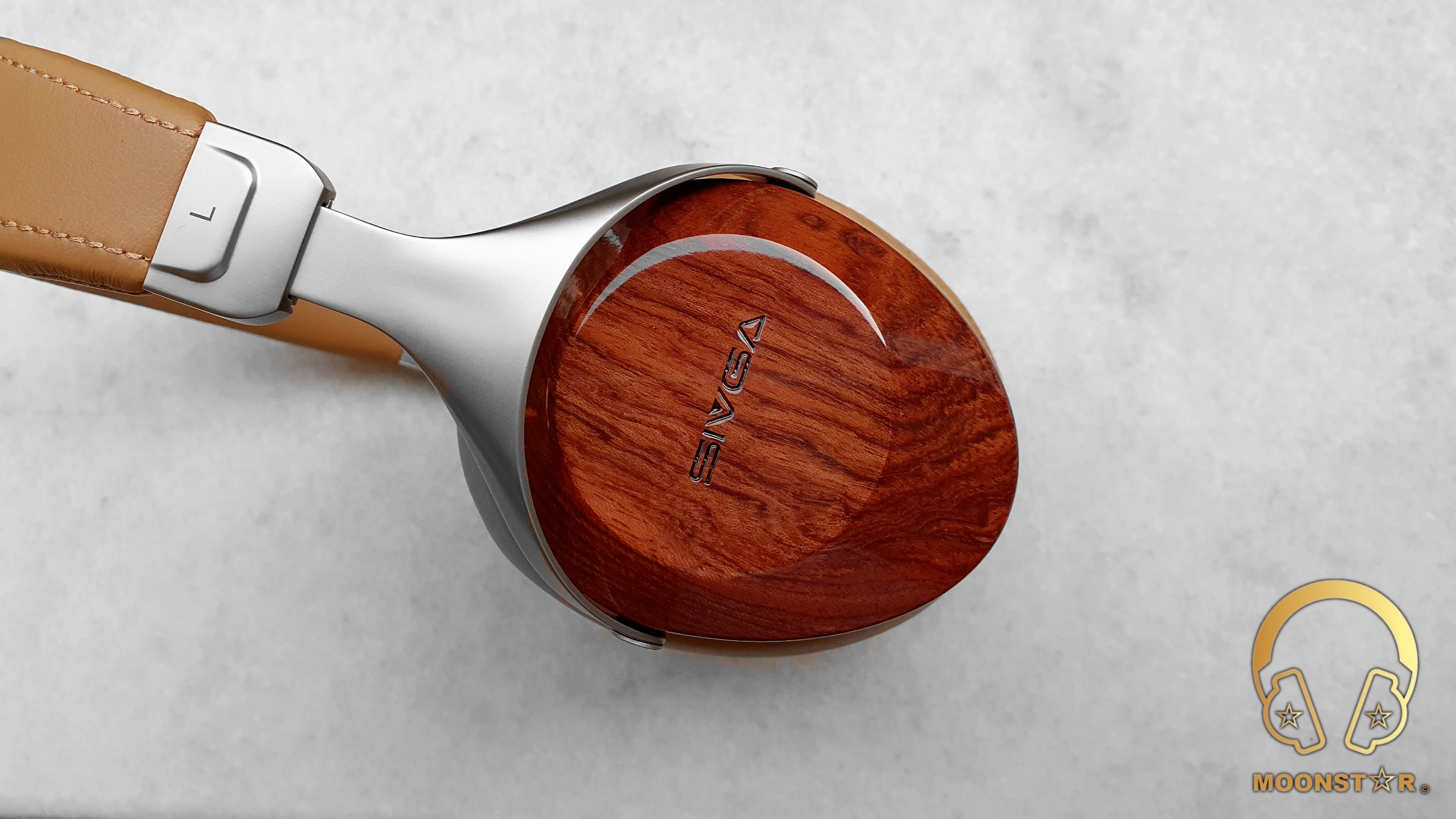
Disclaimer:
I would like to thank SIVGA for providing me the SV021/Robin Headphone for review purposes. I am not affiliated with SIVGA beyond this review and these words reflect my true and unaltered opinions about the product.
Price & Availability:
The MSRP price for the SIVGA SV021 Headphone is about 179,00 USD. More information’s can be found under the links below;
Package and Accessories:
The SIVGA SV021 came in a pretty big cardboard box with some product brandings and an illustration of the Headphone on the top.
This box contains the following items;
- 1 x SIVGA SV021 Closed Back Headphone
- 1 x Detachable Cable with Dual 2.5mm to 3.5mm Single Ended (TRS) Headphone Plug
- 1 x 3.5mm to 6.35mm Male Adaptor
- 1 x Carry Bag

Design, Build Quality, Comfort:
The SIVGA SV021 is beautiful looking closed back headphone with solid wood ear cups that is pretty lightweight with only 275 grams. The SV021 is available in two color options, which are in Black and Rosewood like my review unit.
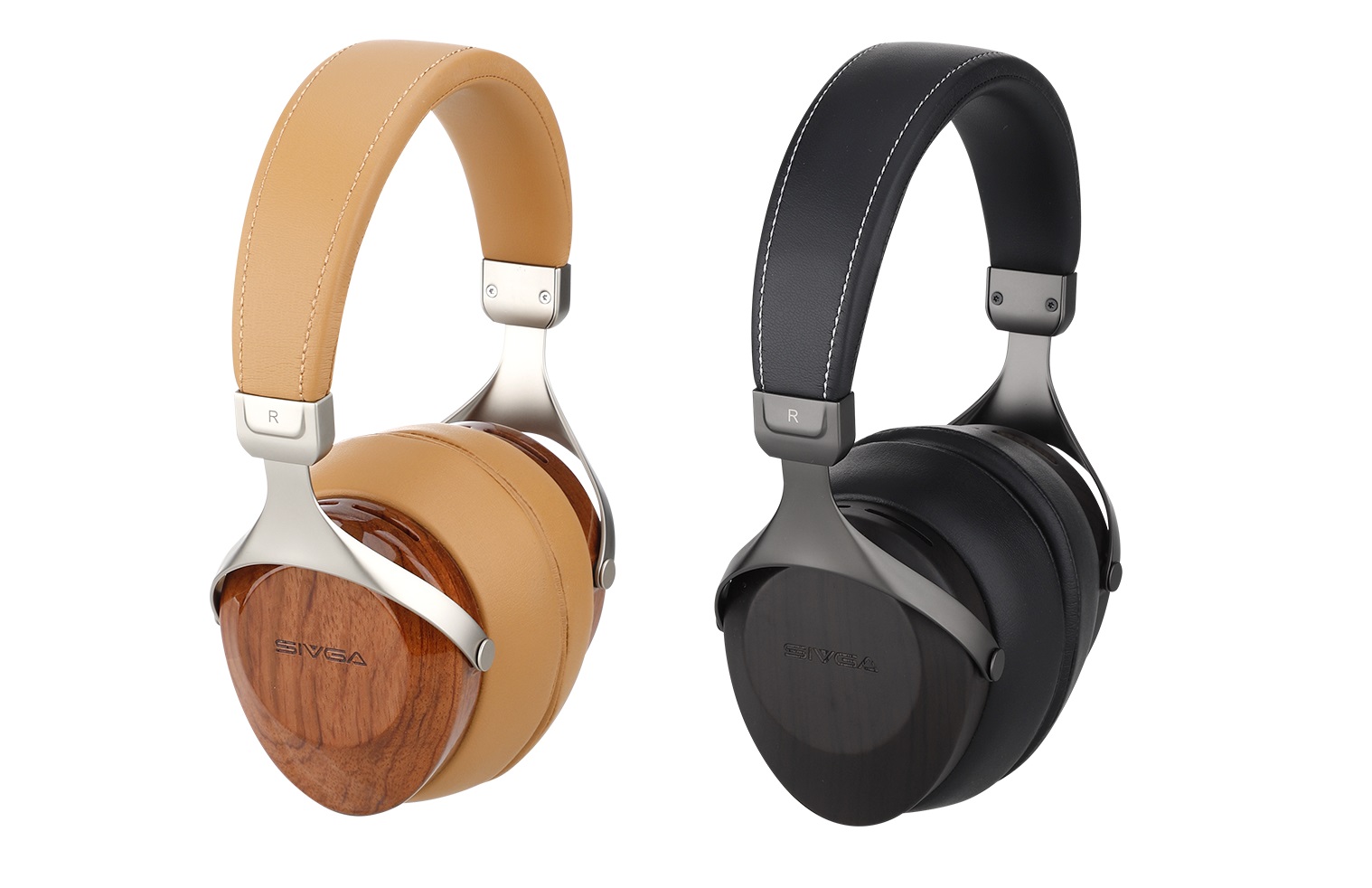
The build quality of the SV021 is top notch and the combination of lightweight aluminum, solid wood, pleather (protein leather) and fabric material gives it a nice look and feel. It doesn’t show any remarkable imperfections like gaps and annoying cracks when you bend the headband.
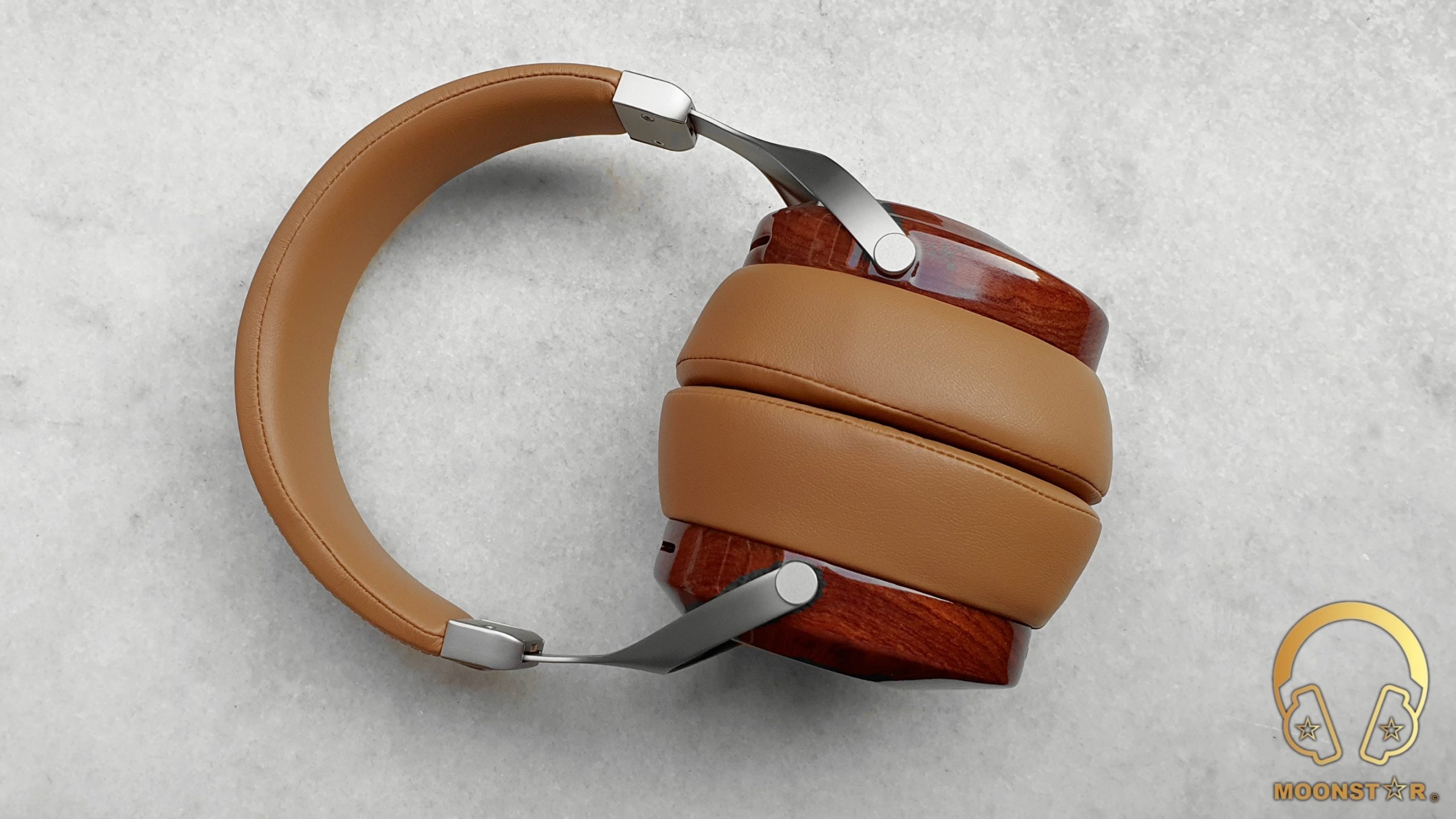
The ear cup holders (hangers) are made of aluminum material with a nice silver finish.
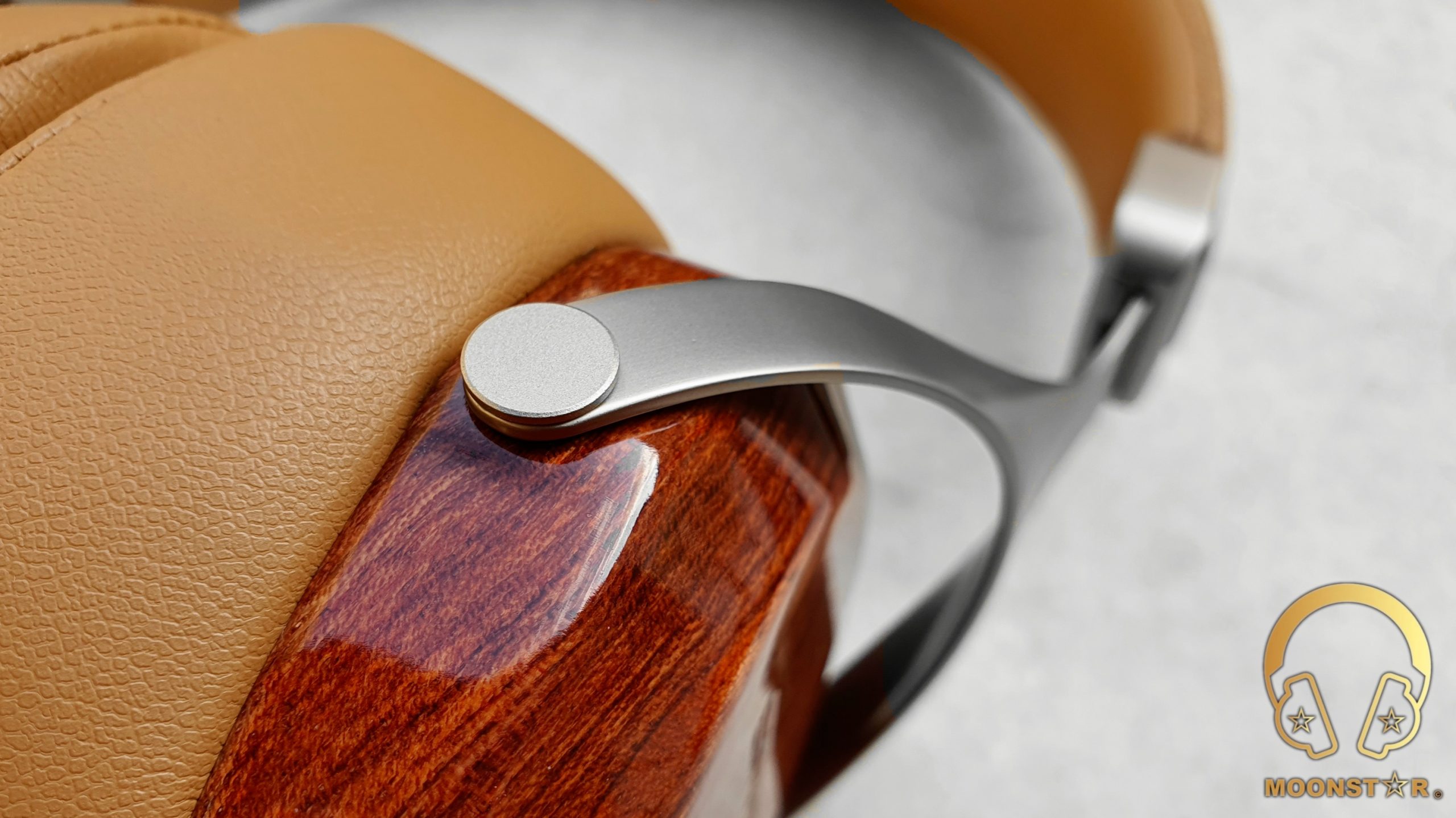
The headband and outer surface of the earpads are made of pleather (protein leather) and do have a pretty nice light brown color. Even the small stitches on the headband surface do have a very good craftsmanship.
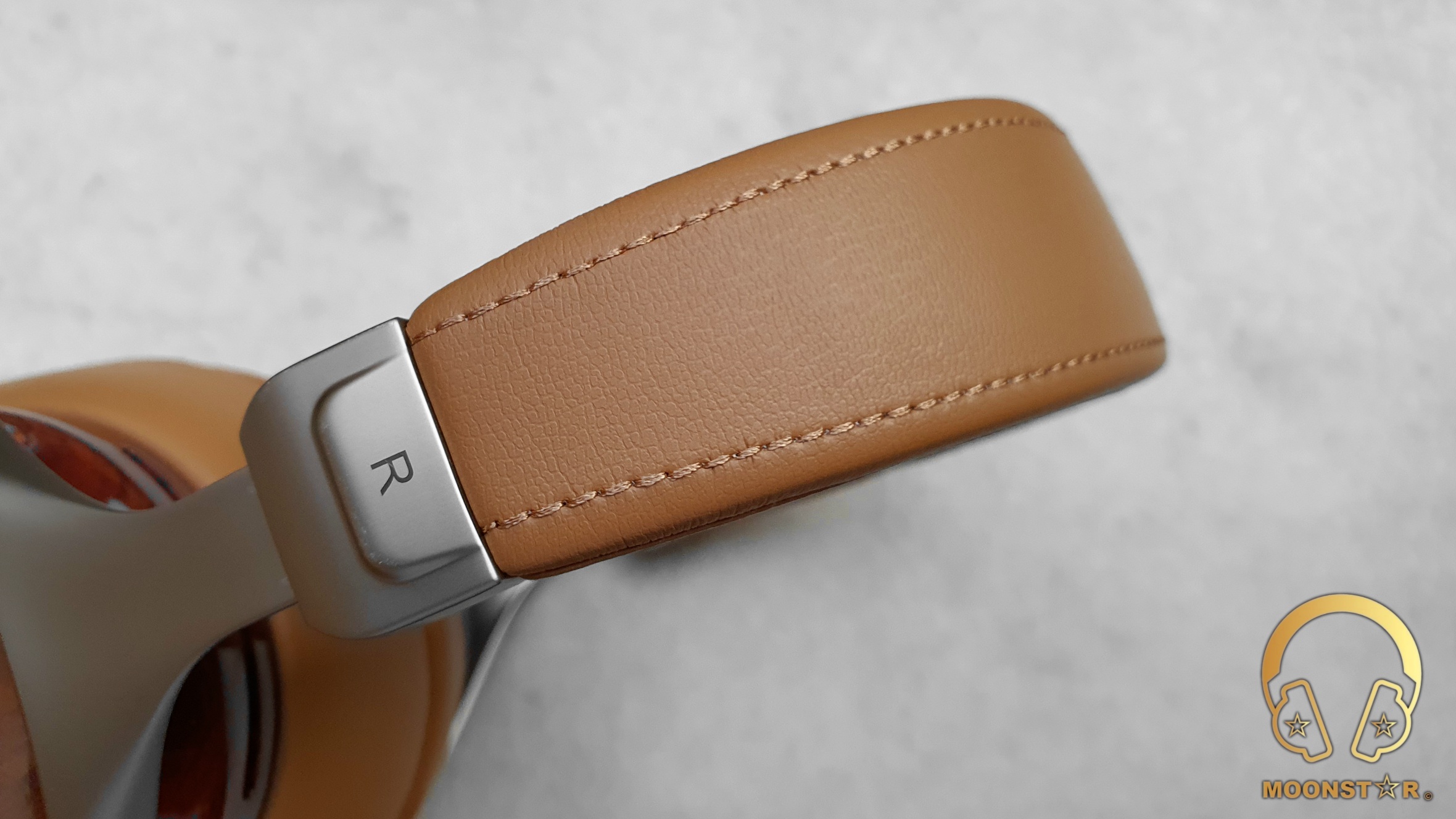
The top of the headband has a pretty soft padding and offers a pretty comfortable wearing experience even after some long listening periods, thanks to the relative low clamping force.
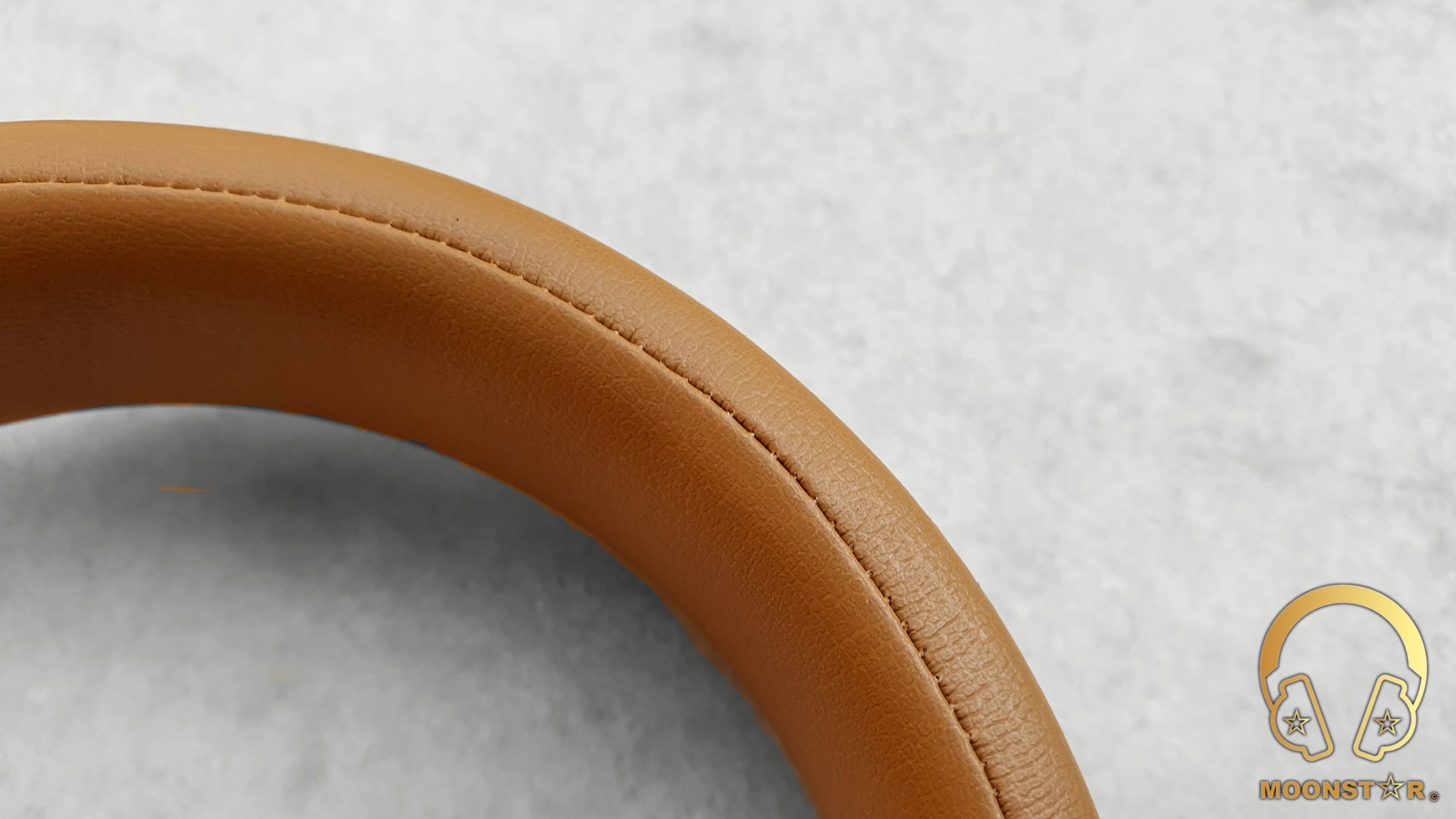
The headband adjusting mechanism is showing the size of the headband with small notches.
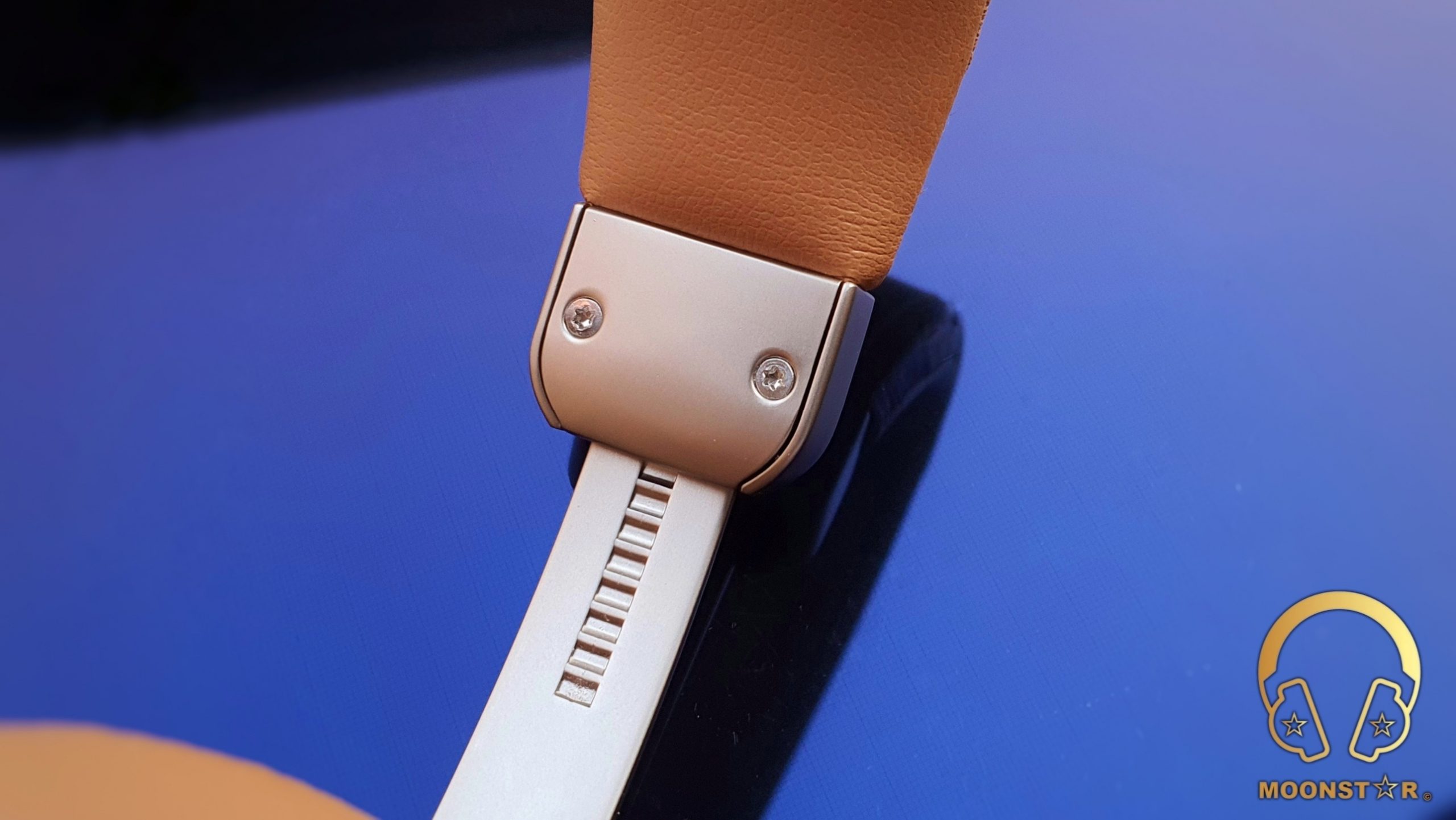
Both ends of the headband have metal parts in the same silver color and do sport Left and Right markings on the outer surface, while you can see two fixing screws per side at the inner surface of each part.

The ear cups are the main attraction of the SV021 that are made of natural rosewood material that have been processed with a 5 axis CNC carving. The ear cups do have a nice glossy piano paint finish and do sport laser engraved SIVGA brand logos on each surface.
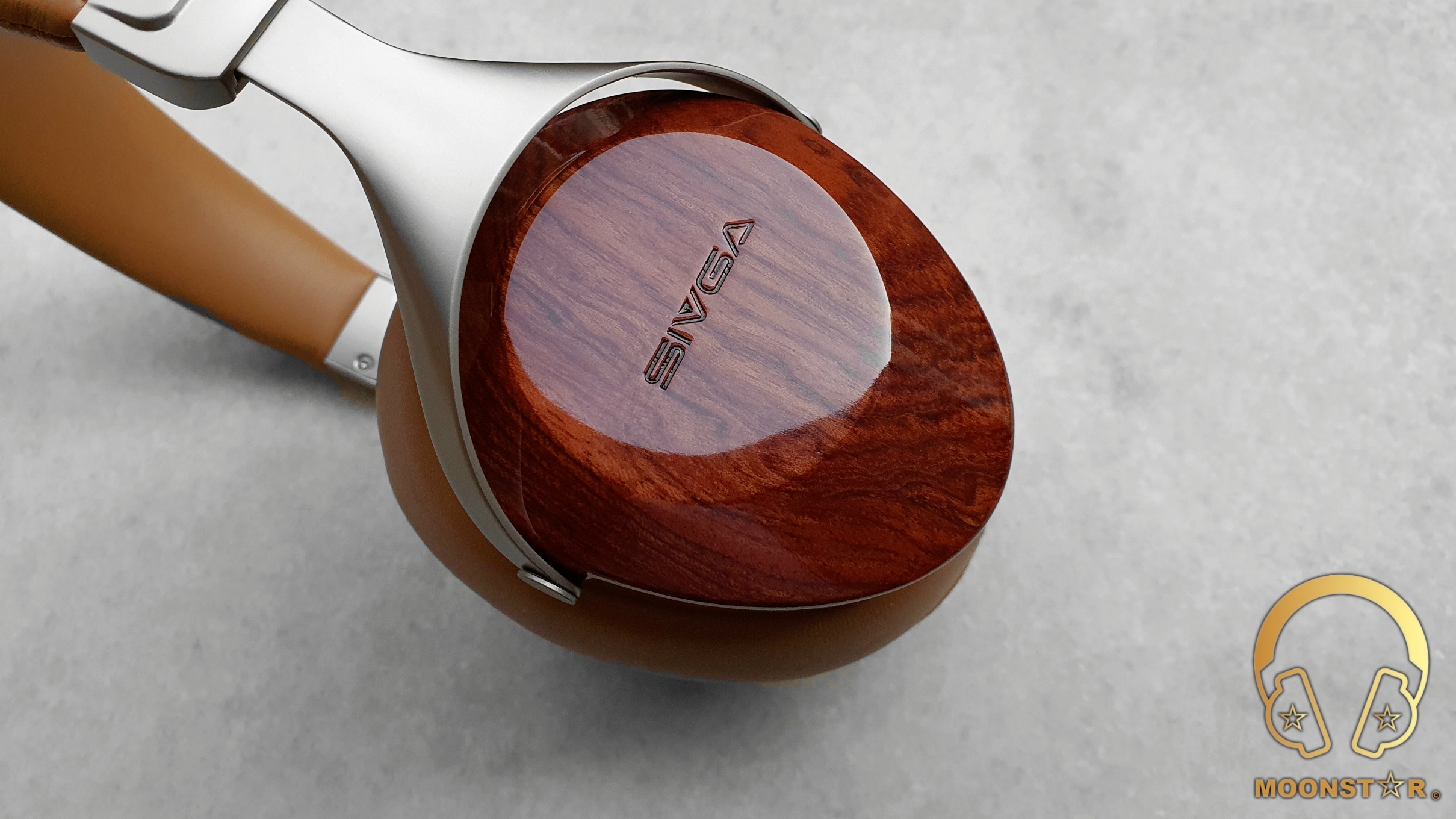
On the top of each ear cup are opening for the dynamic driver.
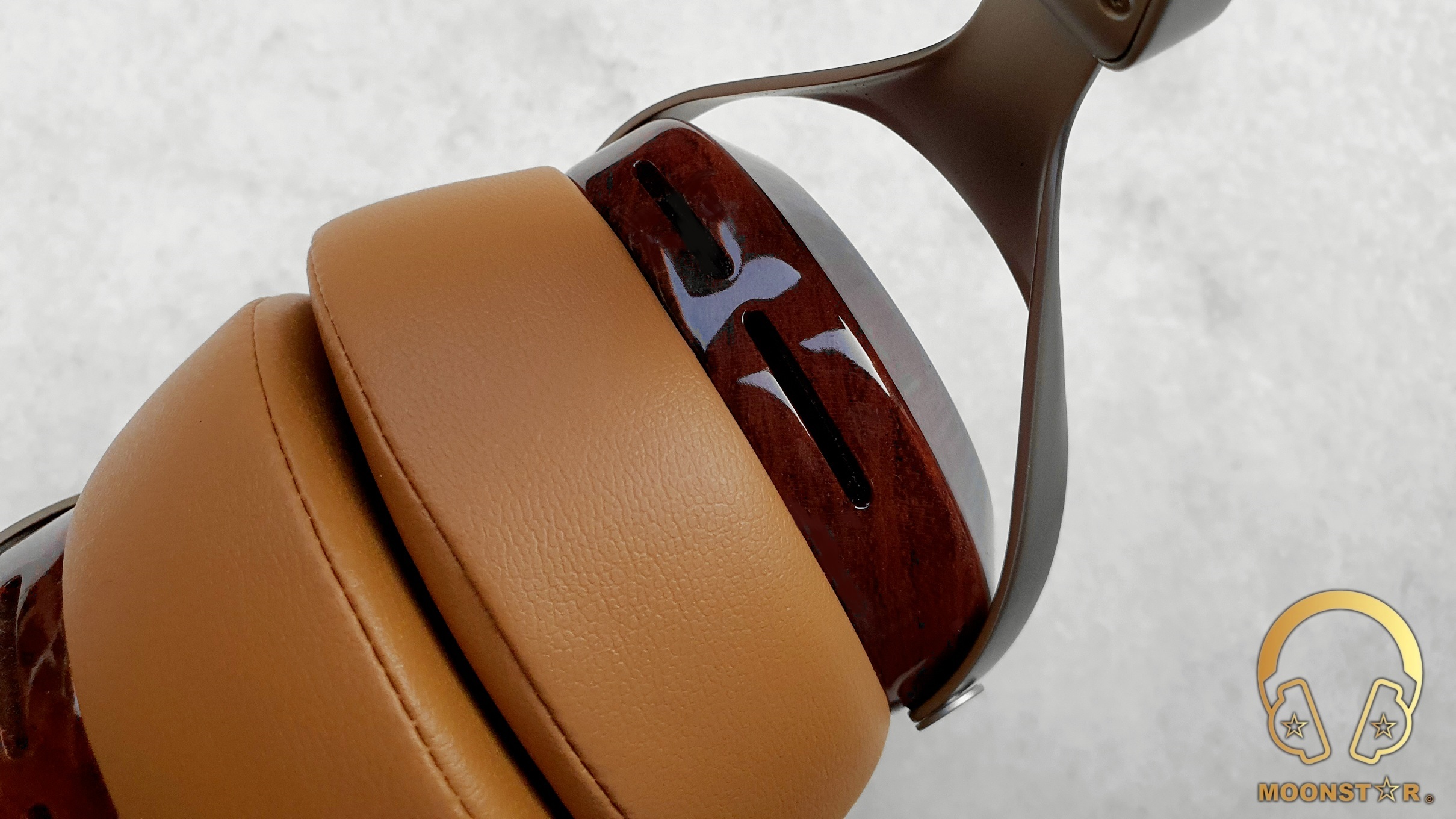
Both the left and the right ear-cups do sport 2.5mm female headphone inputs.

The replaceable earpads are pretty thick and are ultra soft. This makes the SV021 to a very comfortable headphone, even for longer listening periods.

The pressure of the headband and is not very high, while sweat rate of the earpads is at fairly acceptable levels.
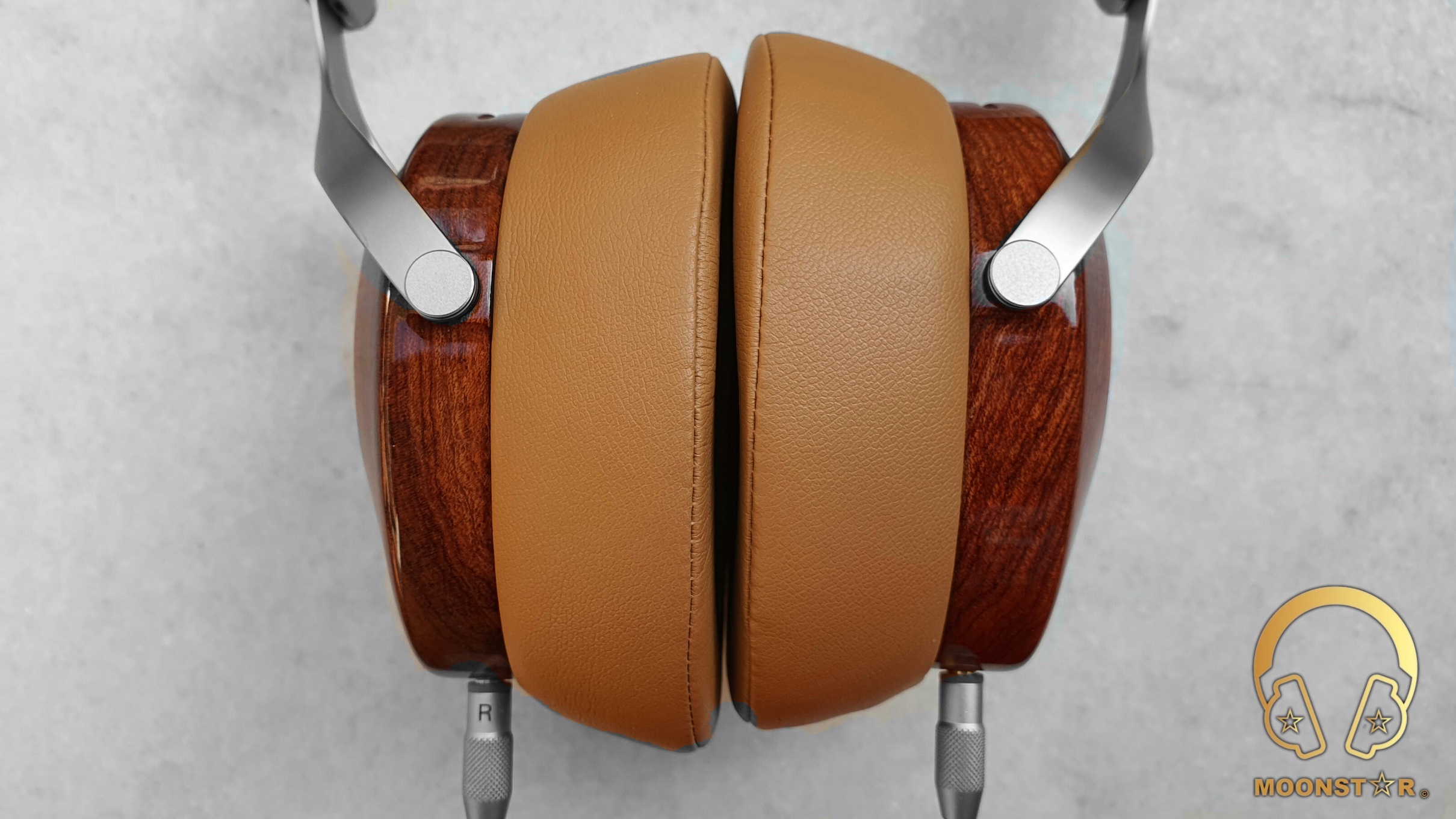
The SV021 comes with a detachable that has fabric isolation in brown color that has a length of about 160mm. To be honest I am not a big fan of cables with a fabric insulation.
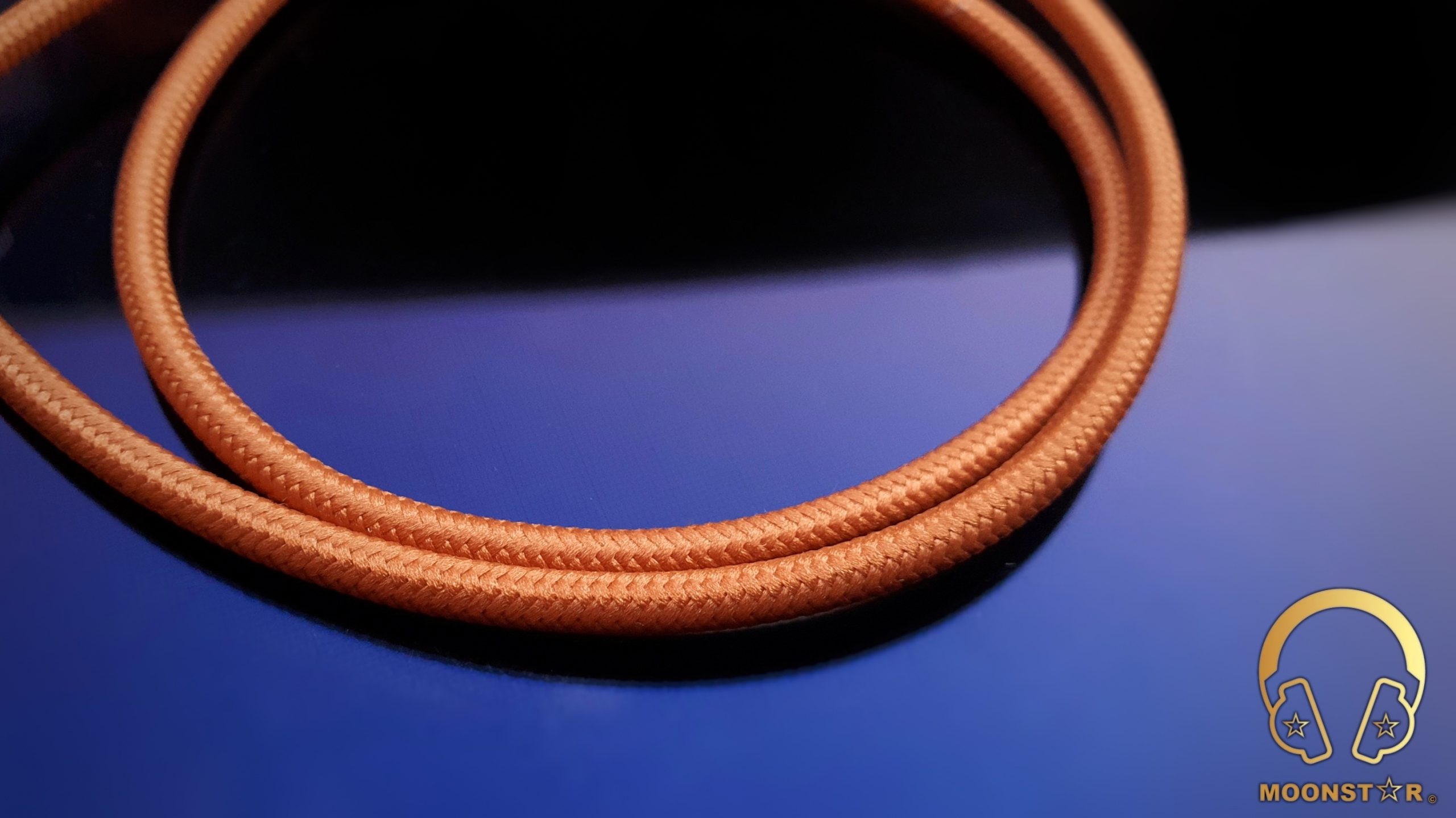
The cable has two 2.5mm male connectors, one for the left and one for the right ear-cup.
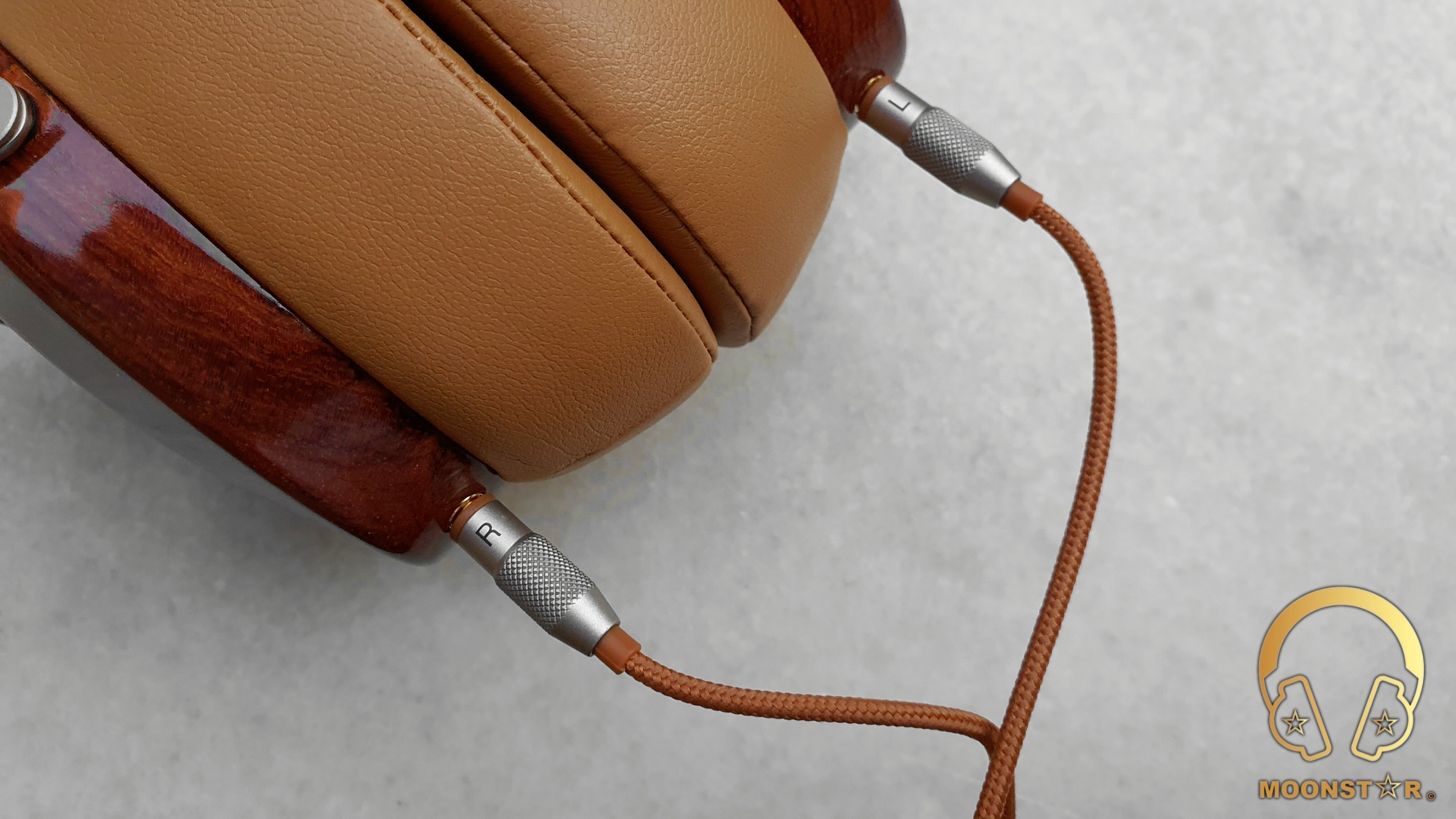
Each of the connectors features a metal housing with left and right marking, while the plugs do have extra ring indicators (red for the right and green for the left channel).
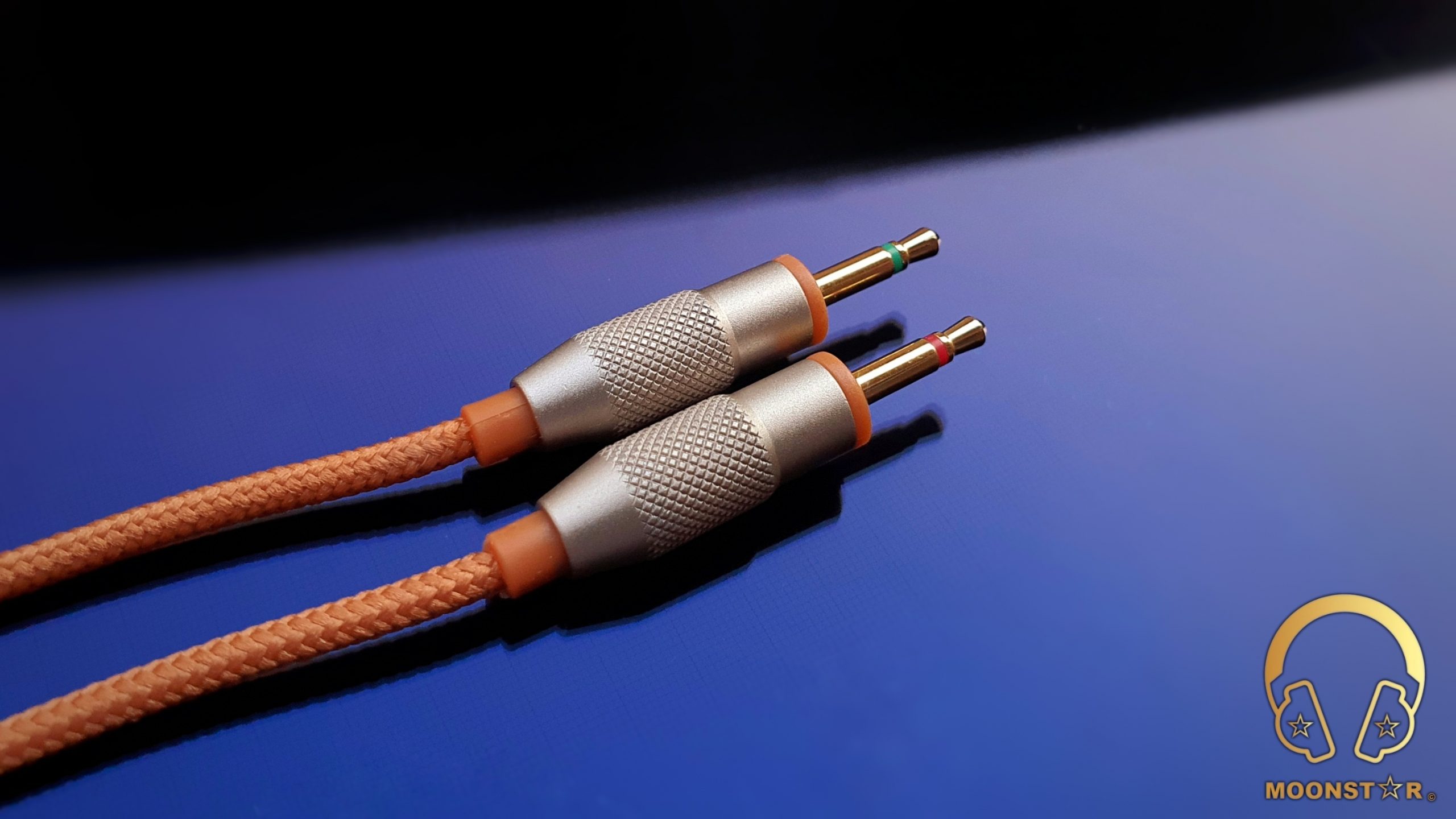
This cable has a metal Y splitter in the same silver color like the headphone and ear cup pugs.
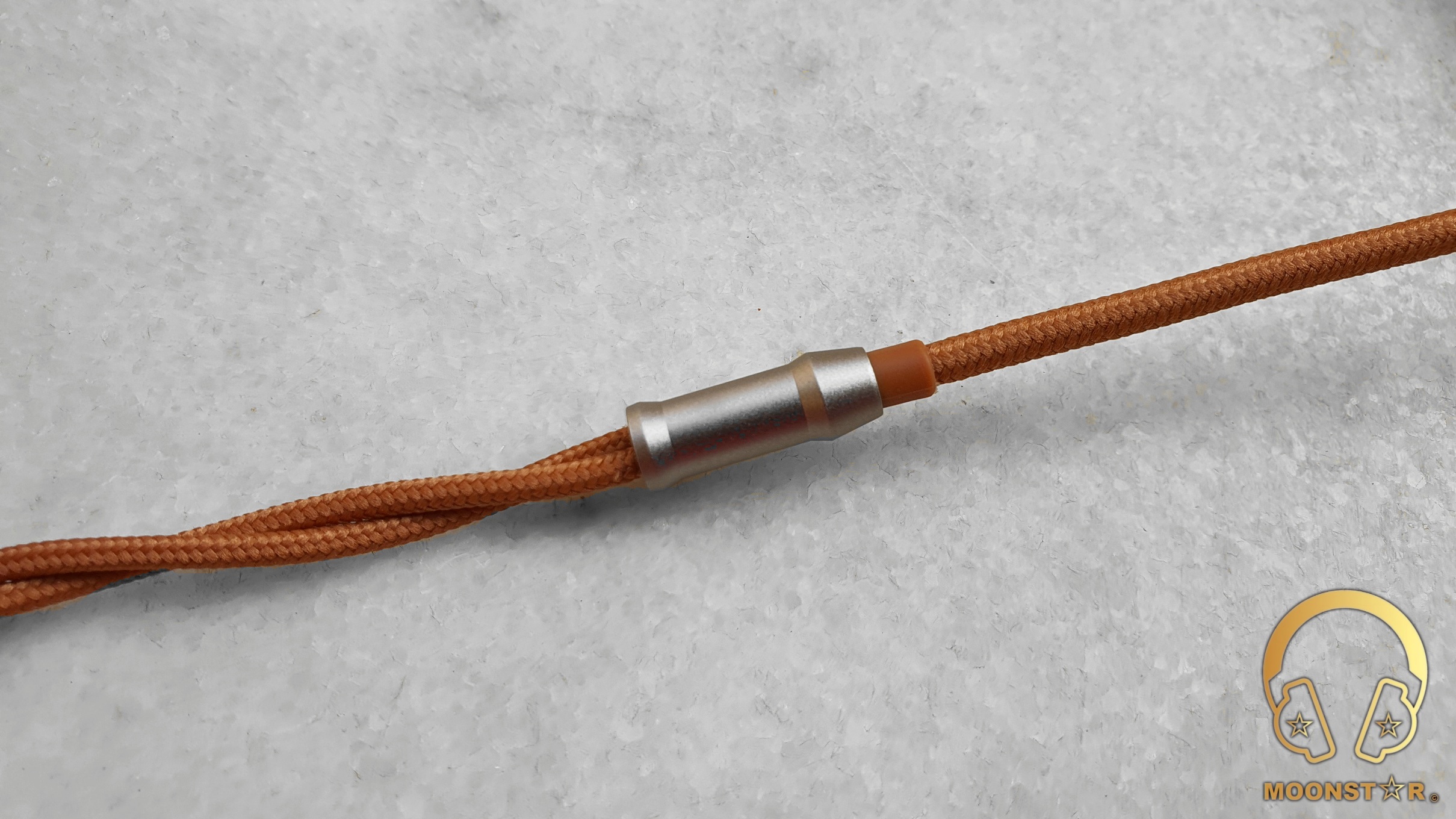
The 3.5mm headphone jack has a straight profiled metal housing that sport the SIVGA logo in black color. The headphone plug has also a flexible strain relief in form of a spring that offers extra durability.
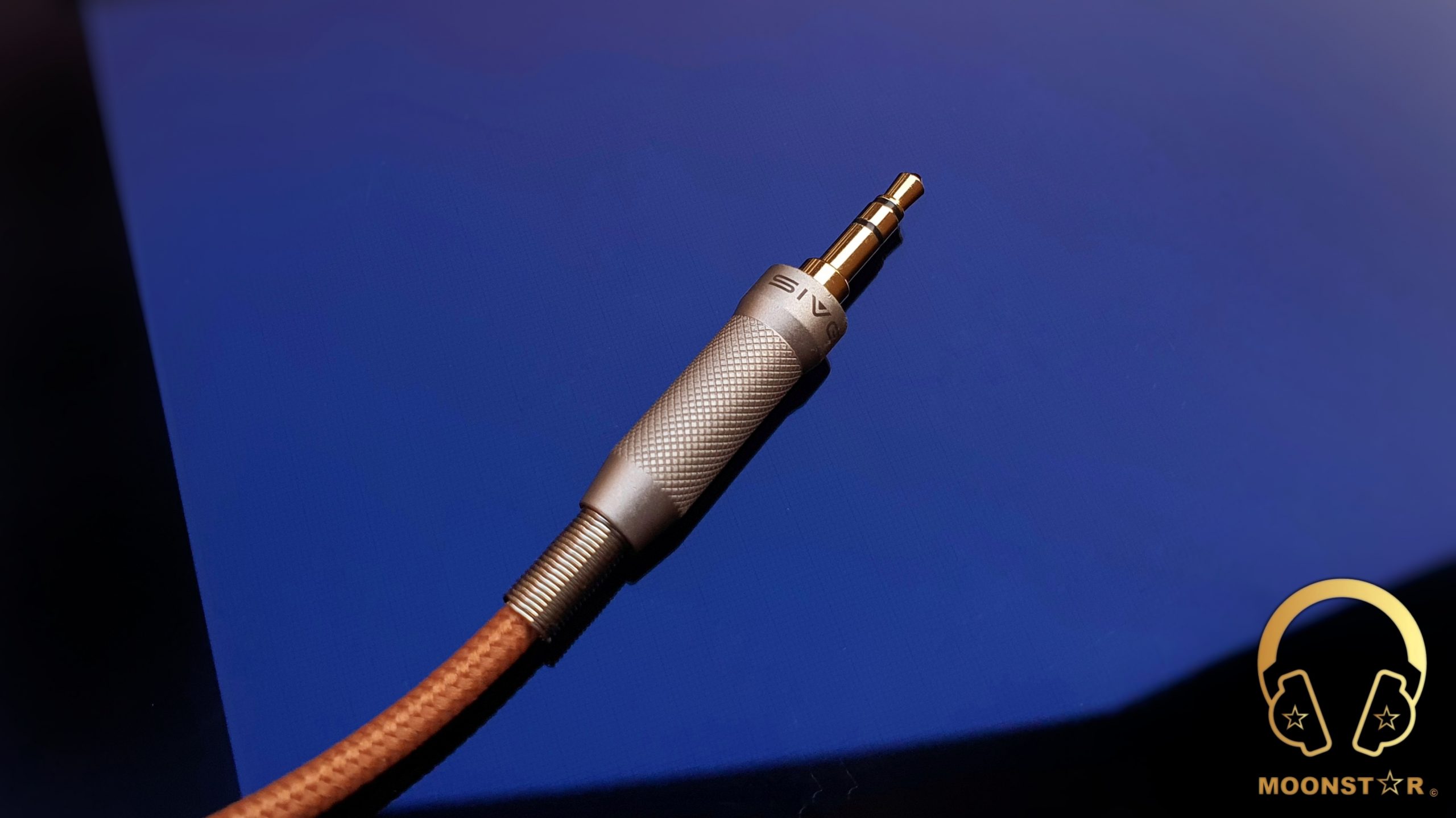
Technical Specifications:
- Model : Robin / SV021
- Headphone Design : Open Back
- Driver Type : 50mm Diameter Dynamic Driver with Polycarbonate Diaphragm
- Frequency Response : 20-20kHz
- Impedance : 32Ω / ±3dB
- Sensitivity : 105dB / ±3dB
- Cable Length : 160mm
- Headphone Plug : 3.5mm Single Ended
- Ear Cup Plugs : 2.5mm TRS
- Weight : 275grams
Drivability & Pairing/Synergy:
The SIVGA SV021has an impedance of 32 Ohms and sensitivity of about 105dB, which looks pretty efficient on paper. However, I suggest you to pair it with sources that do have better levels of amplification, such like portable or desktop amplifiers (xDuuo XA10, FiiO Q5s, PALAB M1-Mini) or powerful DAP’s (iBasso DX220 MAX, iBasso DX300) that do offer a much better synergy and overall sound performance. The positive effect of such sources was especially audible in the lower frequency register.
Equipment’s used for this review:
- Headphones : SIVGA SV021, FiiO EH3 NC
- Sources : iBasso DX220 MAX, FiiO M11 Pro, xDuoo XA-10, PALAB M1-Mini, iPad Air2
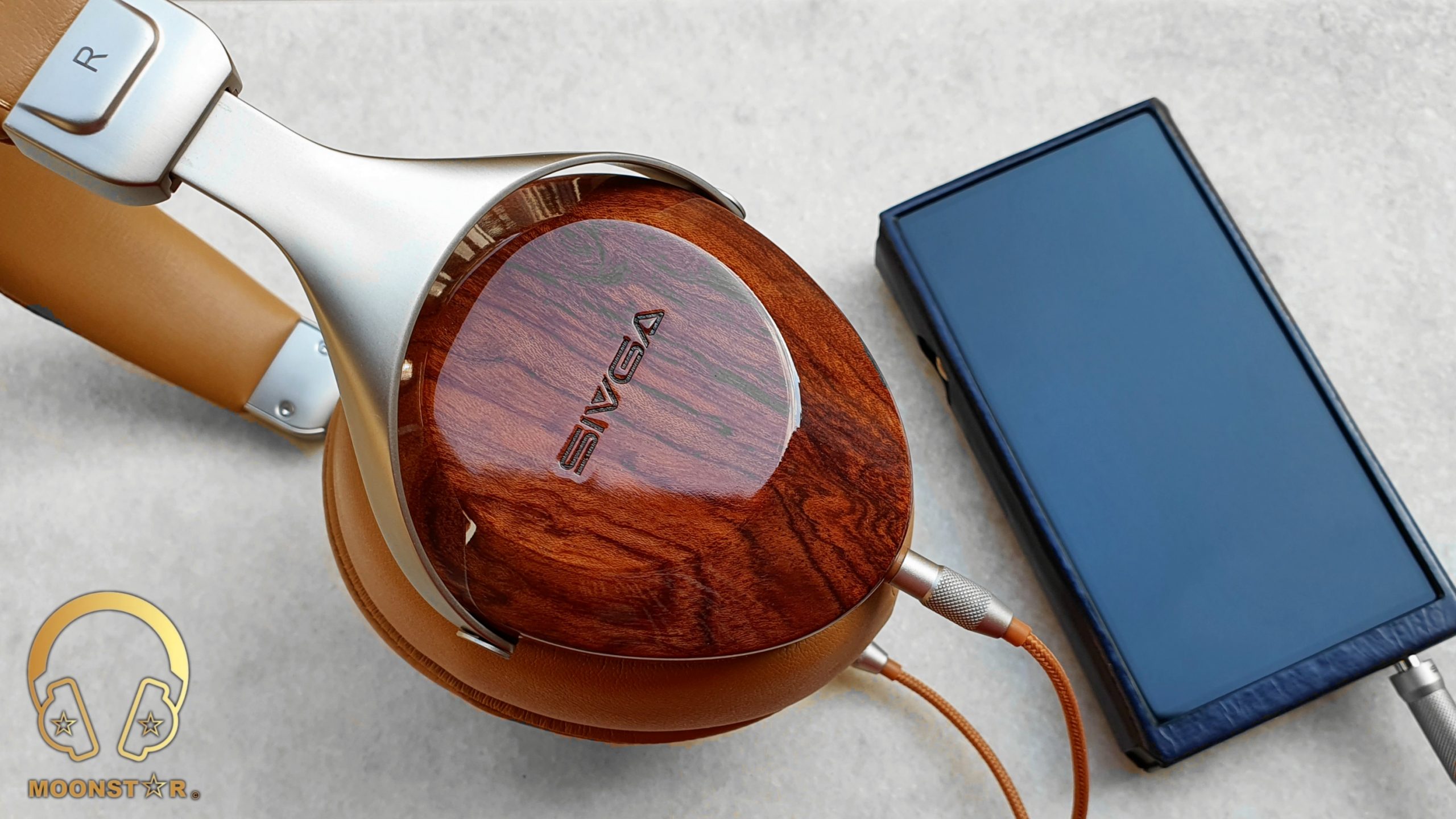
Albums & tracks used for this review:
- Hayley Westenra – Odyssey Album (Dezzer HiFi)
- Dionne Warwick – Walk On By (Flac 16bit/44.1kHz)
- Sarah McLachlan – Angel (Flac 24bit/48kHz)
- Sertap Erener – Aşk (Flac 16bit/44.1kHz)
- Edith Piaf – Non Je Ne Regrette Rien (Flac 16bit/44.1kHz)
- Diana Krall – So Wonderful (DSF)
- Aretha Franklin – I Say A Little Payer (Flac 24bit/96kHz)
- David Bowie – Heroes (Flac 24bit/192kHz)
- Barry White – Just The Way You Are (Flac 24bit/48kHz)
- Isaac Hayes – Walk On By (Flac 16bit/44.1kHz)
- Sting – Englishman in New York – (Flac 24bit/48kHz)
- Eric Clapton – Wonderful Tonight (Flac 24bit/96kHz)
- U2 – Sunday Bloody Sunday (Flac 16bit/44.1kHz)
- Portishead – It Could Be Sweet (Spotify)
- Charly Antolini – Duwadjuwandadu (Flac 24bit/192kHz)
- Chopin – Nocturn No. 20 In C-Sharp Minor (Flac 16bit/44.1kHz)
- Fazıl Say – Nazım Oratoryosu (Live) (Flac 16bit/44.1kHz)
- Vivaldi – Le QuarttroStagioni “The Four Season” (Deezer HiFi)
- Otto Liebert& Luna Negra – The River (Flac 24bit/192kHz)
- Bro Safari, UFO! – Drama “Party Favor Remix” (Deezer HiFi)
- Toutant – Rebirth (Deezer HiFi)
- Armin Van Buuren – Vini Vici (Deezer HiFi)
- Really Slow Motion – Deadwood (Deezer HiFi)
- Jo Blankenburg – The Magelan Matrix (Spotify)
- Massive Attack – Angel (Flac 24bit/48kHz)
- Lorde – Royals (Flac 24bit/96kHz)
- Lunatic Soul – The Passage (Flac 16bit/44.1kHz)
- Deftones – My Own Summer (Shove it) (Flac 16bit/44.1kHz)
- Metallica – Sad but True (Flac 24bit/96kHz)
- Opeth – Windowpane (Flac 16bit/44.1kHz)
- Megadeth – Sweating Bullets (Tidal Hi-Fi)
- Rush’s – Leave That Thing Alone (Flac 16bit/44.1kHz)
- Slayer – Angel of Death (Spotify)s
- Liquid Tension Experiment 2 – Acid Rain (Spotify)
- Yosi Horikawa – Bubbles (Spotify)
The Sound:
The SIVGA SV021 has a slightly warmer than neutral tonality and offers a great sense of headroom and airiness for a headphone with a closed back design. The bass response has a moderate sense of depth and intensity, while the speed and control is on a pretty good level. The midrange on the other hand sounds nicely transparent, mildly recessed but fairly detailed with both vocals and instruments especially when I paired it with good sources like the iBasso DX220 MAX or PALAB M1-Mini. The treble range is bright and energetic and shows a good level of resolution for a headphone at this price range.
Please note that this review was written after a burn-in period of 75 -80 hours. I have used the stock ear pads, the stock cable and have pair it mainly with the iBasso DX220 MAX, FiiO M11 Pro, xDuoo XA-10 and PALAB M1-Mini.

Bass / Midrange / Treble / Soundstage:
The subbass region of the SIVGA SV021 shows a fairly good sense of depth, intensity and rumble, while it is produced in a quite controlled way, when I do listen to songs like Bro Safari, Ufo! “Drama”. Massive Attack’s “Angel” or Lorde’s “Royals”. The subbass decay is on a good level and gets better after some burn-in (about 50 hours) and with a good powerful source.
The midbass region of the SV021 on the other hand sounds more pronounced and detailed compared to the subbass area. For example; instruments such like kick drums, electro guitars or violas are reproduced with an efficient sense of depth and intensity, while the resolution is top notch especially with good sources like a PALAB M1-Mini or the iBasso DX220MAX.
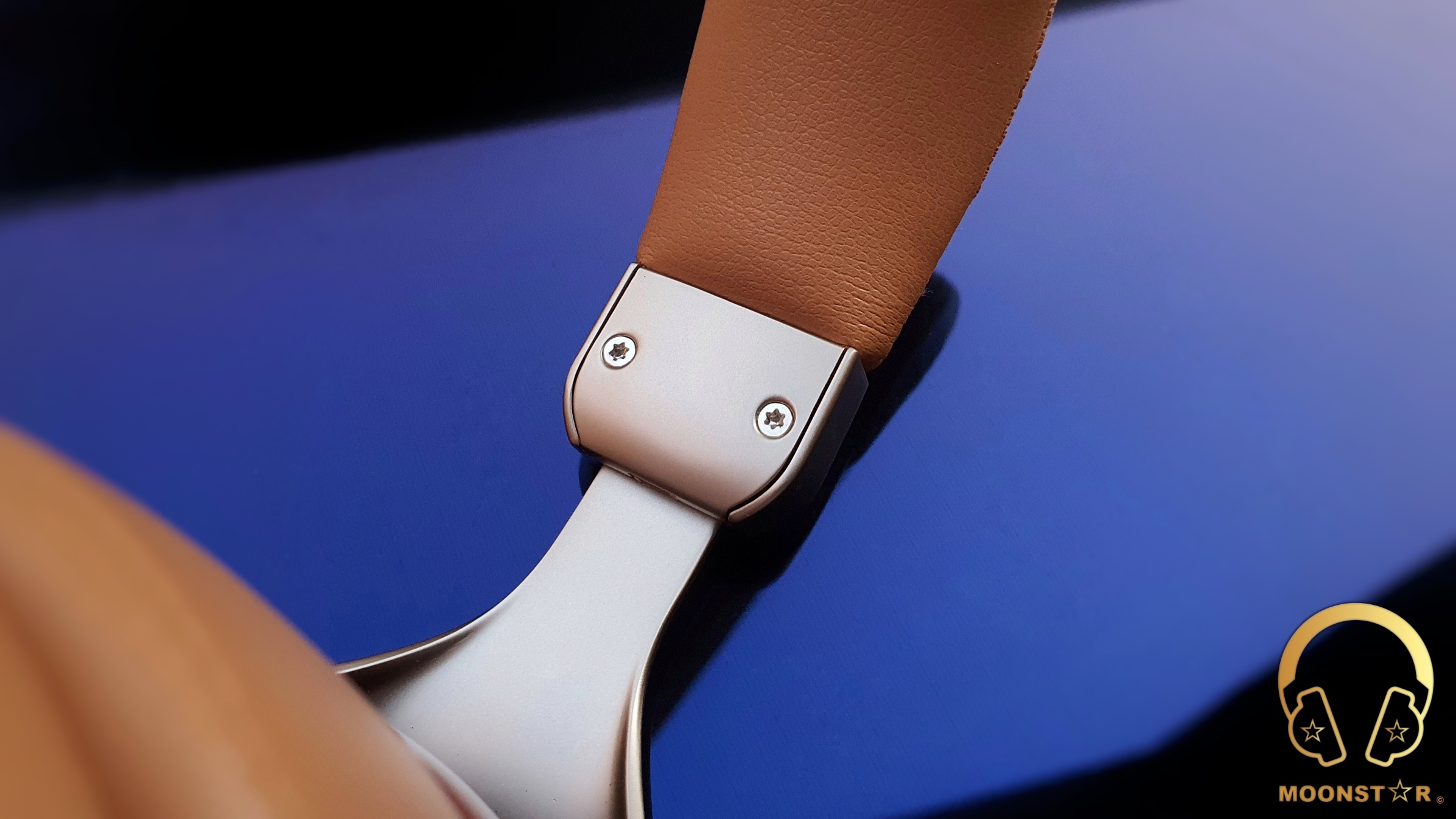
The SIVGA SV021 shows a slightly warmer than neutral midrange tonality with good level of headroom, clarity and airiness. The midrange sounds slightly recessed while the general resolution in this area is pretty high due to the pronounced upper midrange tuning.
The lower midrange shows a moderate level of depth, intensity and extension, which adds instruments such like acoustic guitars, trumpets or violas and to male vocals male vocals like Barry White, Sting or Isaac Hayes a sufficient sense of fullness and musicality, while I would wish a tad more depth and body.
The upper midrange region on the other hand is more highlighted and shows a better level of resolution/micro details compared to the lower midrange area. It sounds energetic and detailed, while it is not very forgiving to poor recorded tracks. Instruments such like violins, flutes or pianos are pronounced and are shown with a good level of extension. Female vocals such like Hayley Westenra, Aretha Franklin or Diana Krall are reproduced with a good sense of transparency and vividness, while they are close to sibilance at higher volume level.
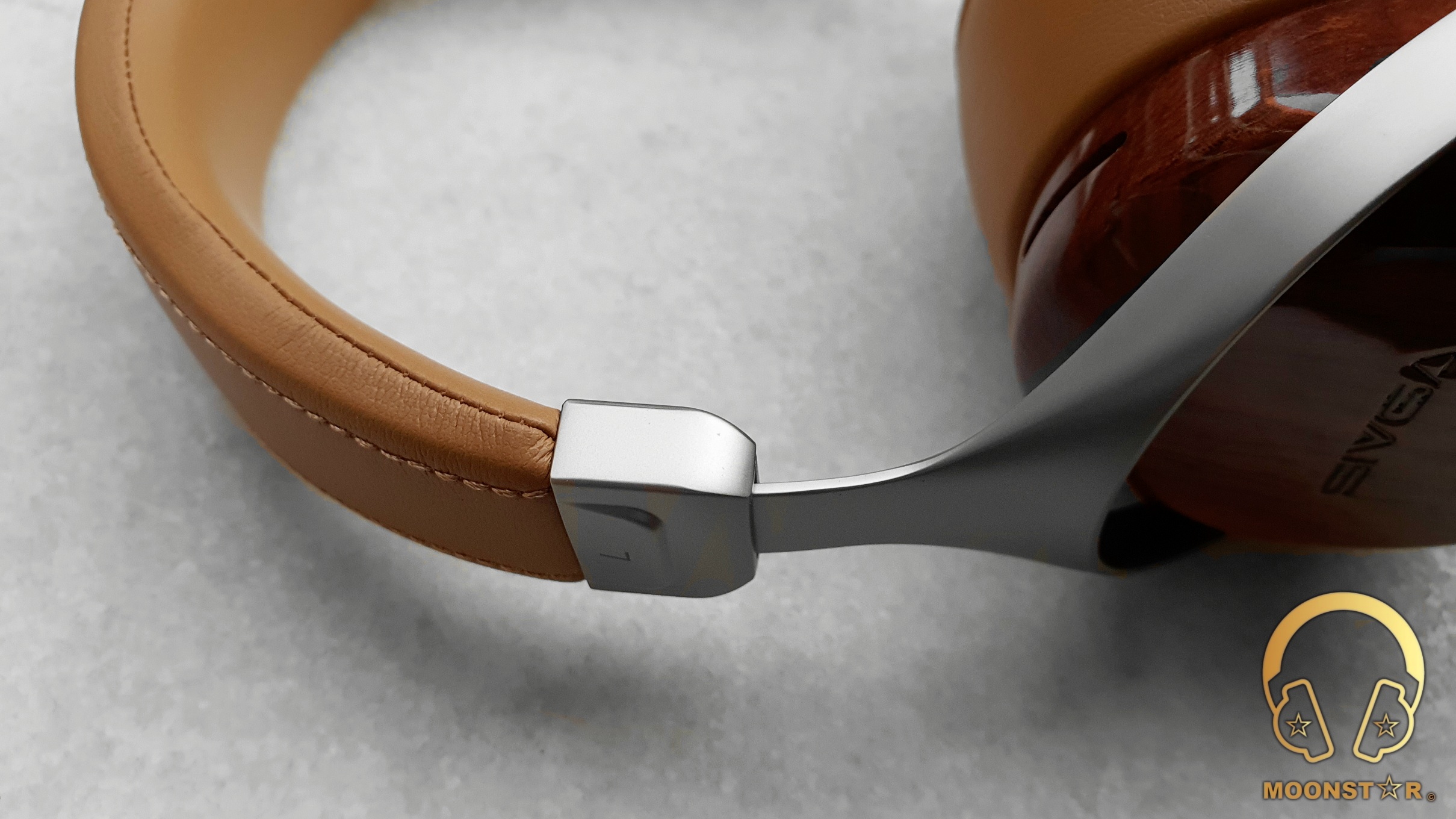
The SIVGA AV021 shows a pretty strong treble emphasis with good level of extension and detail retrieval for a product at his price range, while it is unforgiving if you listen to songs with poor record quality. This tuning makes the general presentation of this area energetic and highly dynamic.
Instruments such as pianos or crash cymbals can do sound a bit harsh in fast and complex passages, depending of the quality of the recorded track, while the SV021 offers in general an above average treble performance for its price tag in terms of quantity and sharpness, which will for sure satisfy many treble-heads.

The SIVGA SV021 offers a pretty airy and spacious soundstage presentation for a headphone with a closed back design, especially for this price range. The soundstage shows a pretty good sense of depth and wideness with adequate amount of air and space between vocals and instruments for a fairly natural and precise separation.
Comparison:
SIVGA SV021 versus FiiO EH3 NC (wired):
The FiiO EH3 NC shows in general a warmer tonality and slightly fuller presentation with lower sense of clarity and definition, while the SIVGA SV021 sounds a tad more neutral, transparent and airy with better sense of headroom.
The subbass region of the SIVGA SV021 shows a better level of depth and is also superior in terms of decay and control when I do listen to them to songs like Massive Attack’s “Angel” or Lorde’s “Royals”. The midbass region of the FiiO EH3 NC shows slightly more quantity, depth and intensity. The SIVGA SV021 on the other hand offers a better level of resolution and sense of authority/control in this area.
The midrange of the FiiO EH3 NC has a warmer tonality with a smoothed out character. The SIVGA SV021 is slightly more neutral, bright and energetic in direct comparison. The lower midrange of the EH3 NC shows a bit more body and depth when I do listen to male vocals or to instruments such like acoustic guitars or violas. When it comes to the upper midrange, I can say that the SV021 is more highlighted and detailed in this area, which adds it a slightly better sense of transparency and airiness. The SV021 is also more suitable for female vocals or instruments such like violins, flutes or pianos that do need more energy in the upper midrange area.
The treble range of the SIVGA SV021 is in general more pronounced, detailed and shows a better sense of extension. The FiiO EH3 NC is less detailed and energetic in this area and offers a smoother and more relaxed presentation.
The soundstage of the SIVGA SV021 is more spacious/expansive and airy compared to the FiiO EH3 NC. The SV021 has the upper hand in terms of both soundstage depth and wideness.

Conclusion:
The SV021 is a highly comfortable and premium looking closed back headphone from SIVGA that has a pretty energetic, transparent and lively presentation with great sense of airiness and headroom for a headphone with a closed back design, which shows its true potential if you pair it with more powerful sources.
Pros & Cons:
- + Fast & Accurate Bass Response
- + Transparent & Lively Midrange Tuning
- + Energetic & Pretty Well Extending Treble Presentation
- + Quite Open/Spacious Atmosphere with good sense of Air for a Closed Back Headphone
- + Build Quality & Build Quality
- + Comfort
- – Upper Midrange & Treble may sound a bit too energetic
- – No Protective Hard Storage Case
- – Cable is a bit too long (160mm) / Not a big fan of cables with fabric insulation (Subjective)
Thank you for the Read!
Moonstar
100+ Head-Fier
Pros: Fast & Tight Bass Response,
Warm & Rich Sounding Midrange with good level of Clarity and Resolution,
Dynamic & Controlled Treble Presentation,
Good Soundsatge Depth & Wideness,
Impressive Build Quality, Look & Feel
Warm & Rich Sounding Midrange with good level of Clarity and Resolution,
Dynamic & Controlled Treble Presentation,
Good Soundsatge Depth & Wideness,
Impressive Build Quality, Look & Feel
Cons: Slightly more Subbass Depth & Lower Midrange Body would be welcome,
Monitors are a bit Heavy due to the Rock Solid Metal Housing,
You will wish that every IEM is build like the CORSA
Monitors are a bit Heavy due to the Rock Solid Metal Housing,
You will wish that every IEM is build like the CORSA
Earsonics CORSA Universal IEM Review
Introduction:
Earsonics is a famous French company that was founded in 2005 by Franck Lopez and is specialized in the design and production of Custom (CIEM) and Universal (UIEM) In-Ear Monitors and gained a high popularity in the Audiophile community with products such like SM3, S-EM6, SM64, SEM-9, Velvet and many more.
The Earsonics CORSA that I will now review for you is the latest Universal IEM of the company that features a 3BA Tripe Driver (3x Balanced Armature Drivers per side) configuration that are located inside a very robust Metal Shell with a 3D full Acrylic Structure that was originally designed for their new Hybrid range.
The CORSA features also some unique technologies developed by Earsonics such like an Impedance Corrector Crossover, EVS (Ergonomic Versatile Shell) and FUSION Technology and a so called TRUEWAVE system.
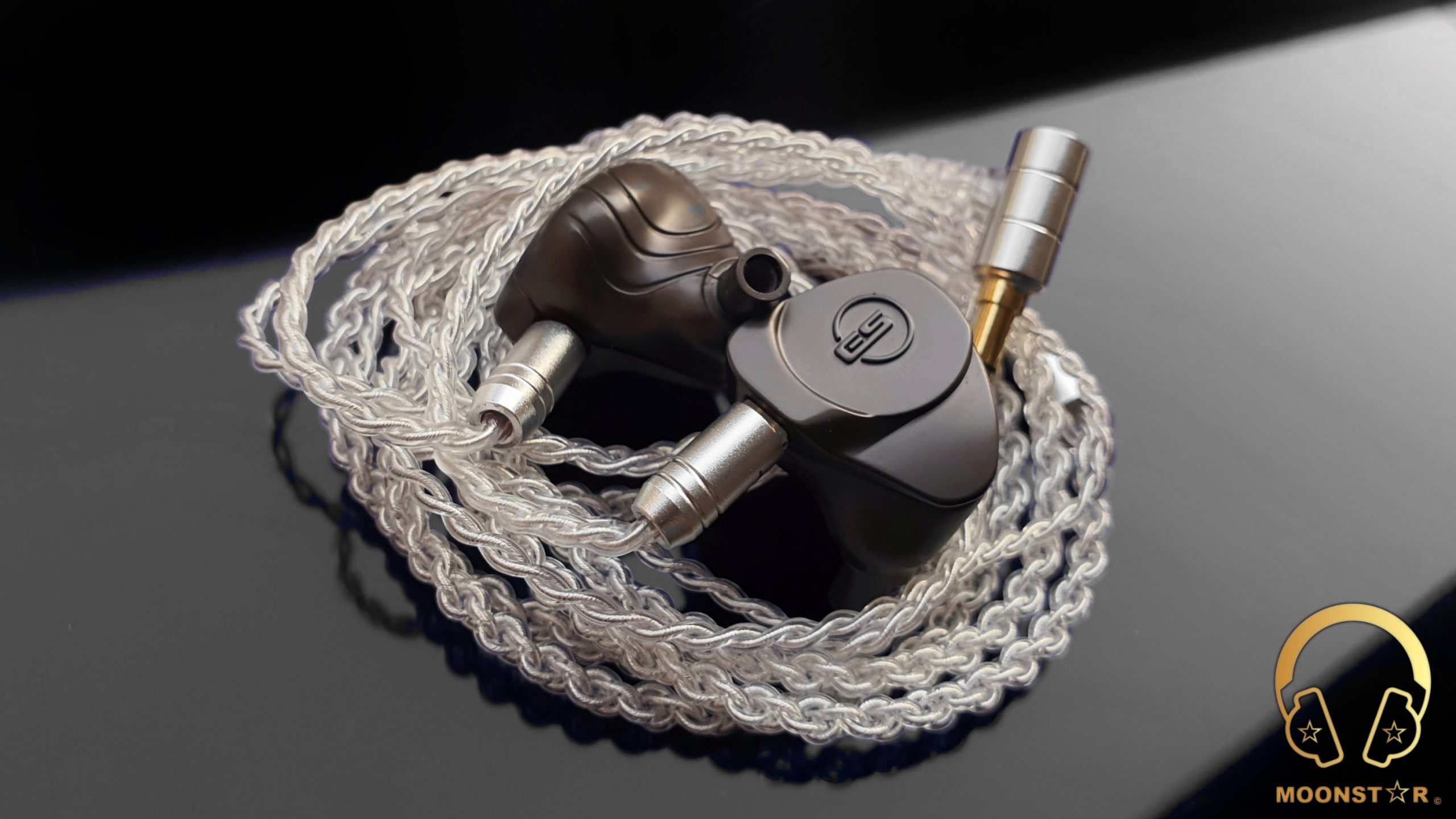
Disclaimer:
I would like to thank Earsonics for providing the CORSA Universal IEM as review sample. I am not affiliated with Earsonics or any third person beyond this review and all these words reflect my true, unaltered opinions about the product.
Price & Availability:
The actual price for the Earsonics CORSA is 399,00 EUR. More information’s can be found under the link below;
Package and Accessories:
The Earsonics CORSA came in a relative minimalistic black cardboard box in black color that has the Earsonic brand logo on the top.

When you open up the top cover you will see the Monitors that are located behind two transparent windows and a “Thank You” writing in French language fro the founder & CEO of the company, Franck Lopez that was printed right below.
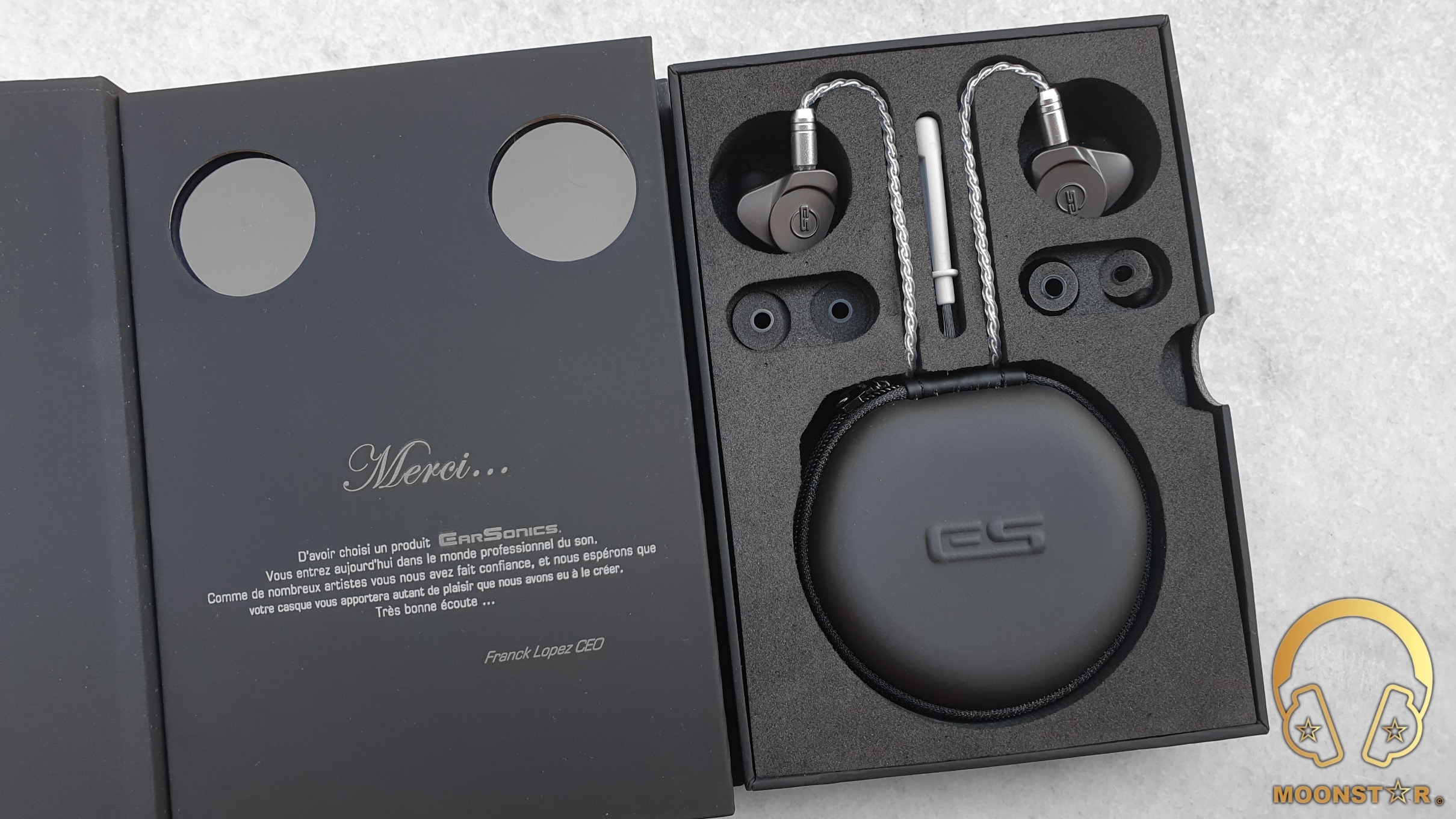
The Monitors and accessories are placed in to a Foam sheet that you can reach over the drawer you have to pull out from the side of the box.

Inside the box are the following items;
- 1 pair x Earsonics CORSA Universal In-Ear Monitors
- 1 piece x 4C HI-RES cable with 0.78mm diameter 2-Pin connectors
- 2 pairs x Bi-Flange Silicone Ear Tips
- 2 pairs x Double Flange Silicone Ear Tips
- 2 pairs x Foam Ear Tips
- 3 pieces x Zipper Case
- 1 piece x Cleaning Tool
- 1 piece x Print Material (Warranty Card, User Manual)

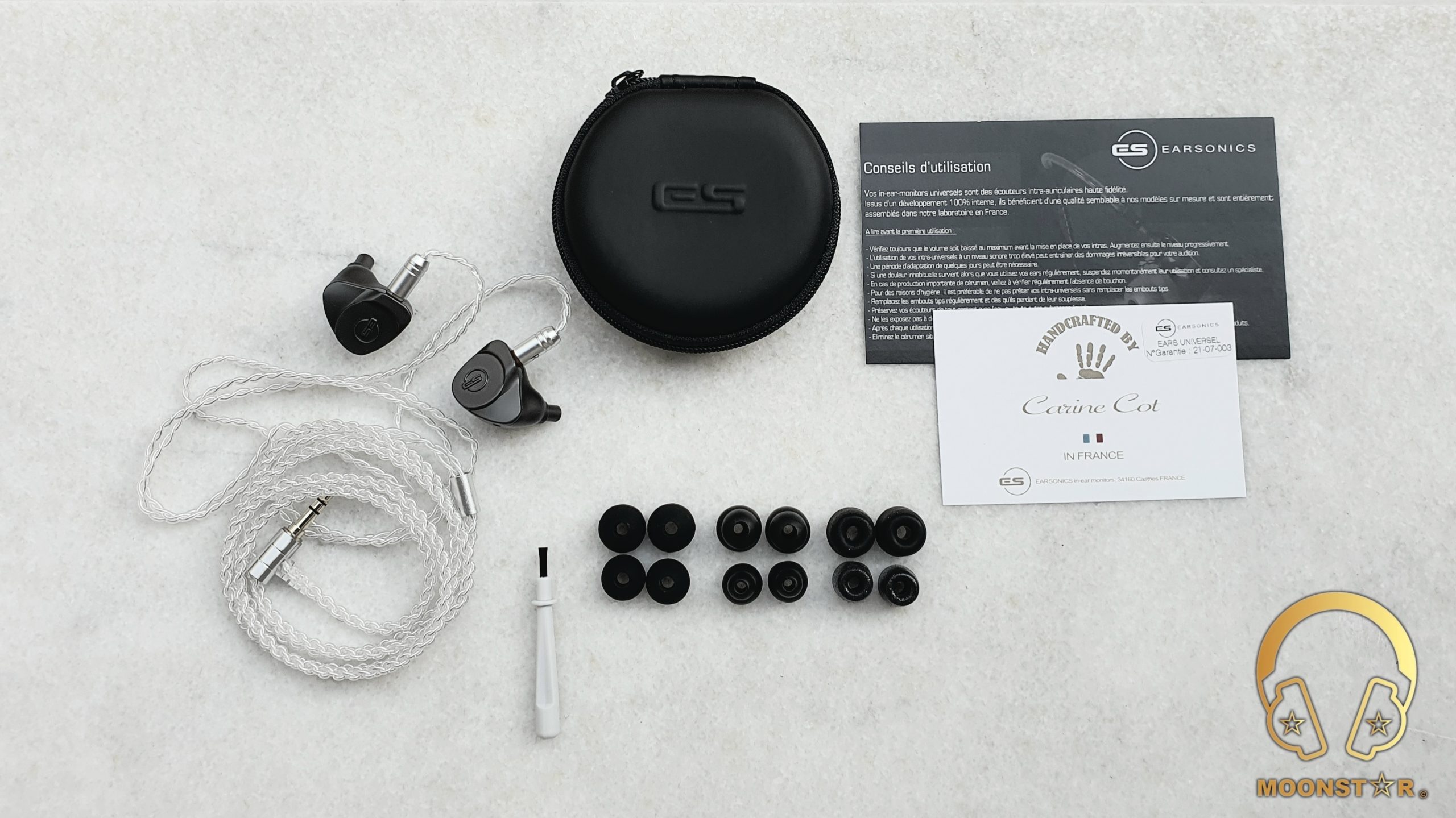
The Earsonics CORSA comes with three different types of ear tips. Included are 2 pairs of Bi-Flange Silicone Tips, Double Flange Silicone Tips and 2 pairs of Foam Ear Tips.
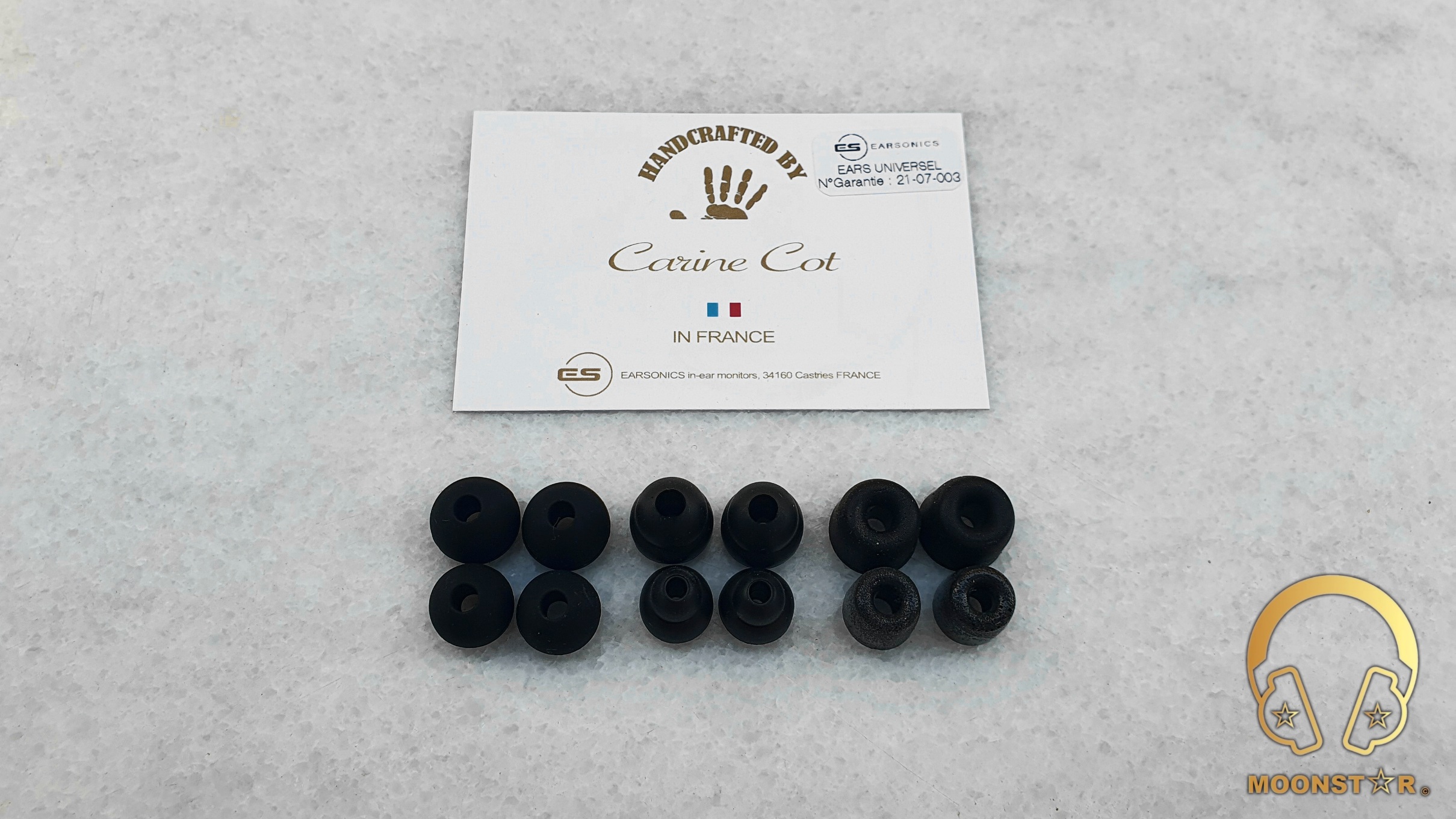
The zipper case is pretty small that ports the Earsonics (ES) branding on the top.
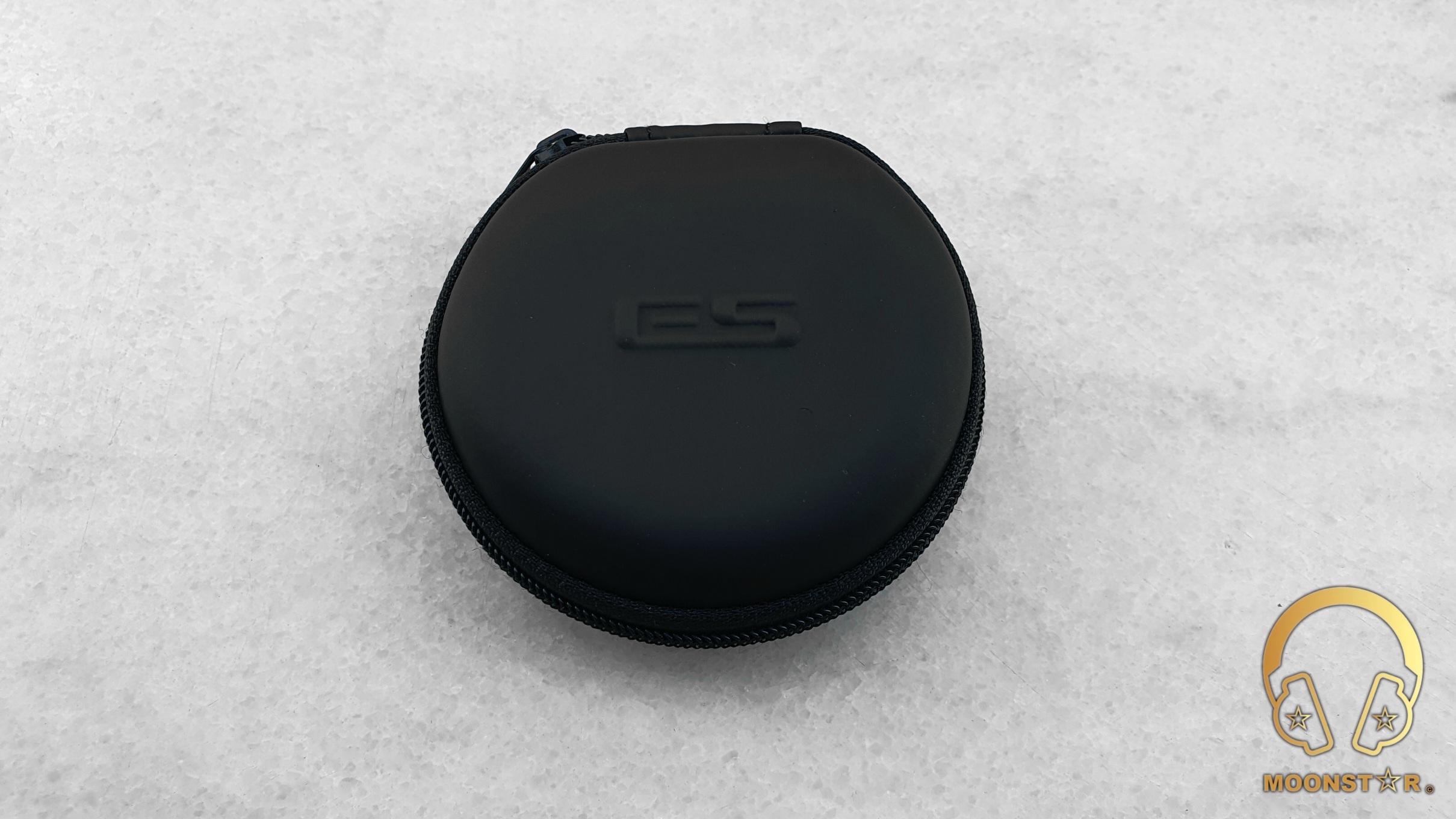
Features, Design and Build Quality:
The first thing that came to my mind when I did look to the Earsonics CORSA was, WOW those are some solid looking & feeling Monitors. I am familiar to Earsonics products and have had owned the SM64, Velvet (first GEN) and S-EM9 all those models did sound very good in their own way, but the common complaint of my and the community was the use of plastic material.
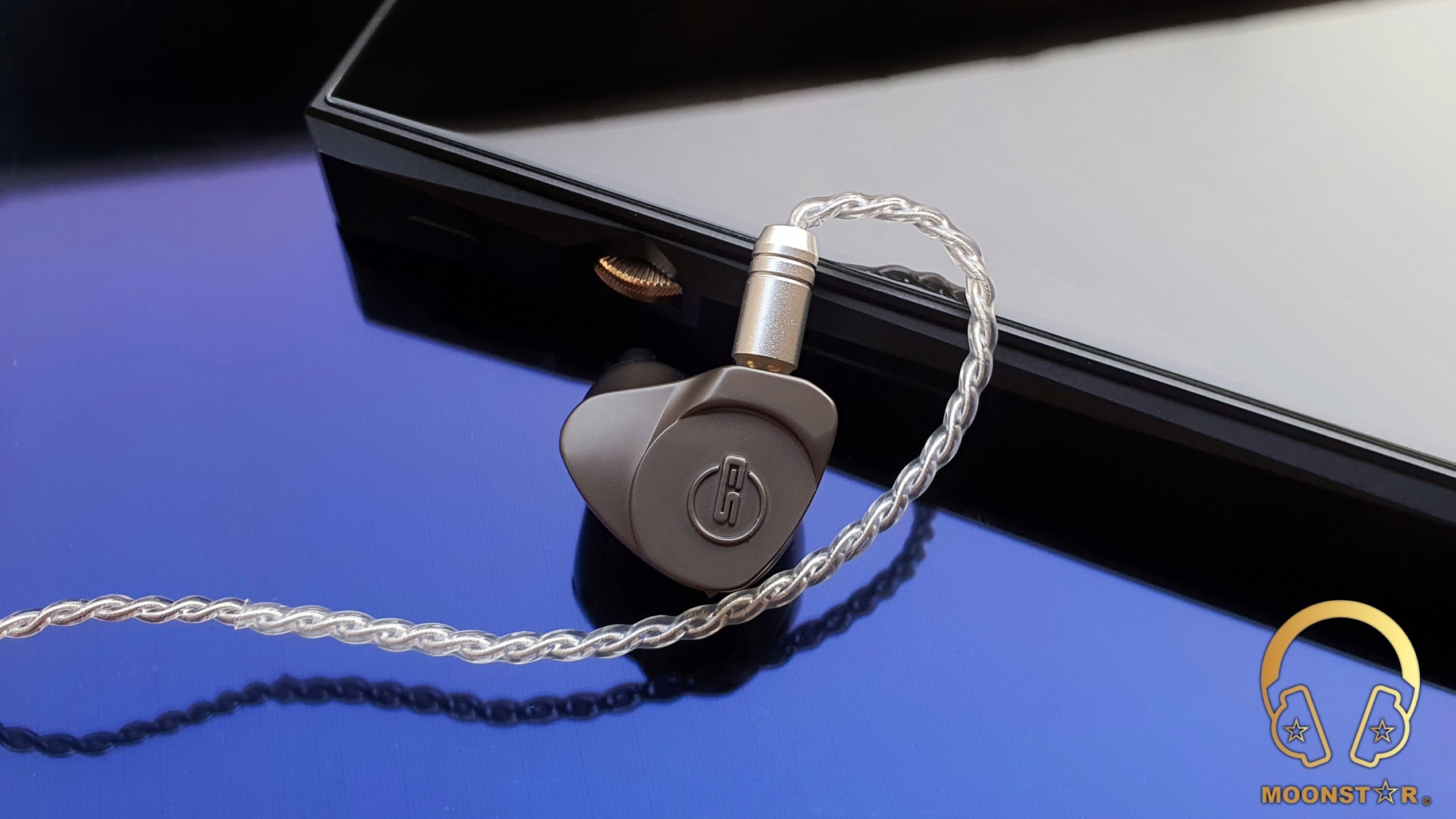
The monitor housing is made of Metal material of very High Quality that looks and feels very robust, almost like a tank. Each monitor features 3x Balanced Armature Drivers that are located inside the “3D full Acrylic Structure” the Heart of the CORSA, which was originally designed for their new Hybrid range. The CORSA features also some unique technologies developed by Earsonics such like an impedance corrector crossover, EVS and FUSION Technology and a so called TRUEWAVE system.
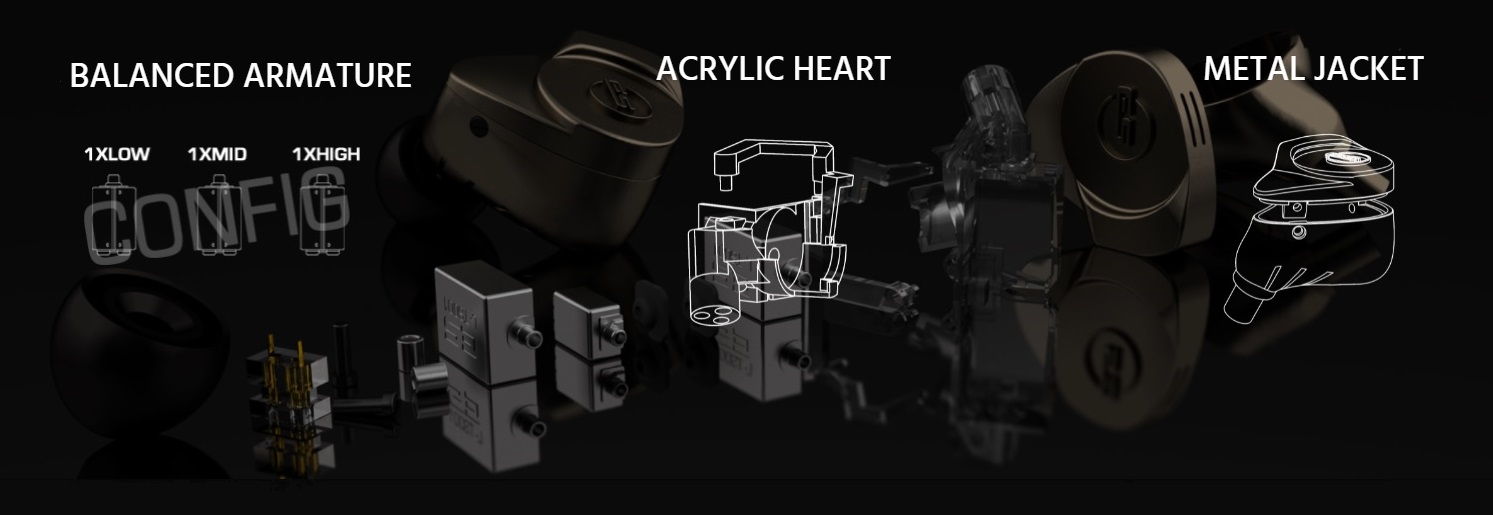
On the front of each Monitor shell, the so called “Faceplate” are the Earsonics “ES” brand logos that gives the CORSA a nice looking appearance.
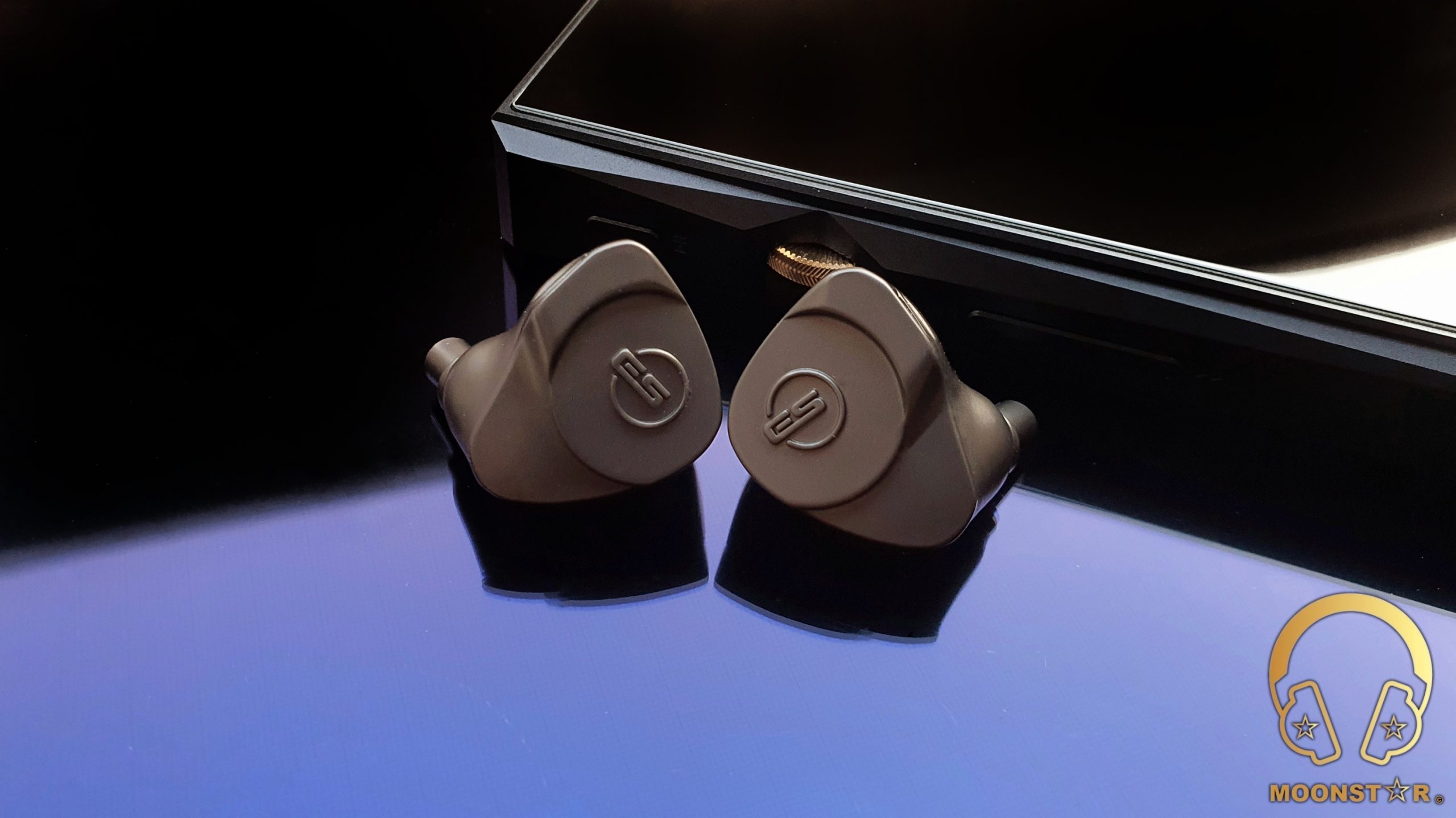
At the inner surface of the main body are some artistic notches in form of waves; the slightly angled sound nozzles and a pretty small screw to fix the faceplate to the main body.

Each sound nozzle has a filter inside the bore to prevent the insertion of particules such like dust, ear-wa, etc.

On the top of the monitors are the 0.78mm diameter 2-Pin female connectors that do offer a very tight and secure fit.
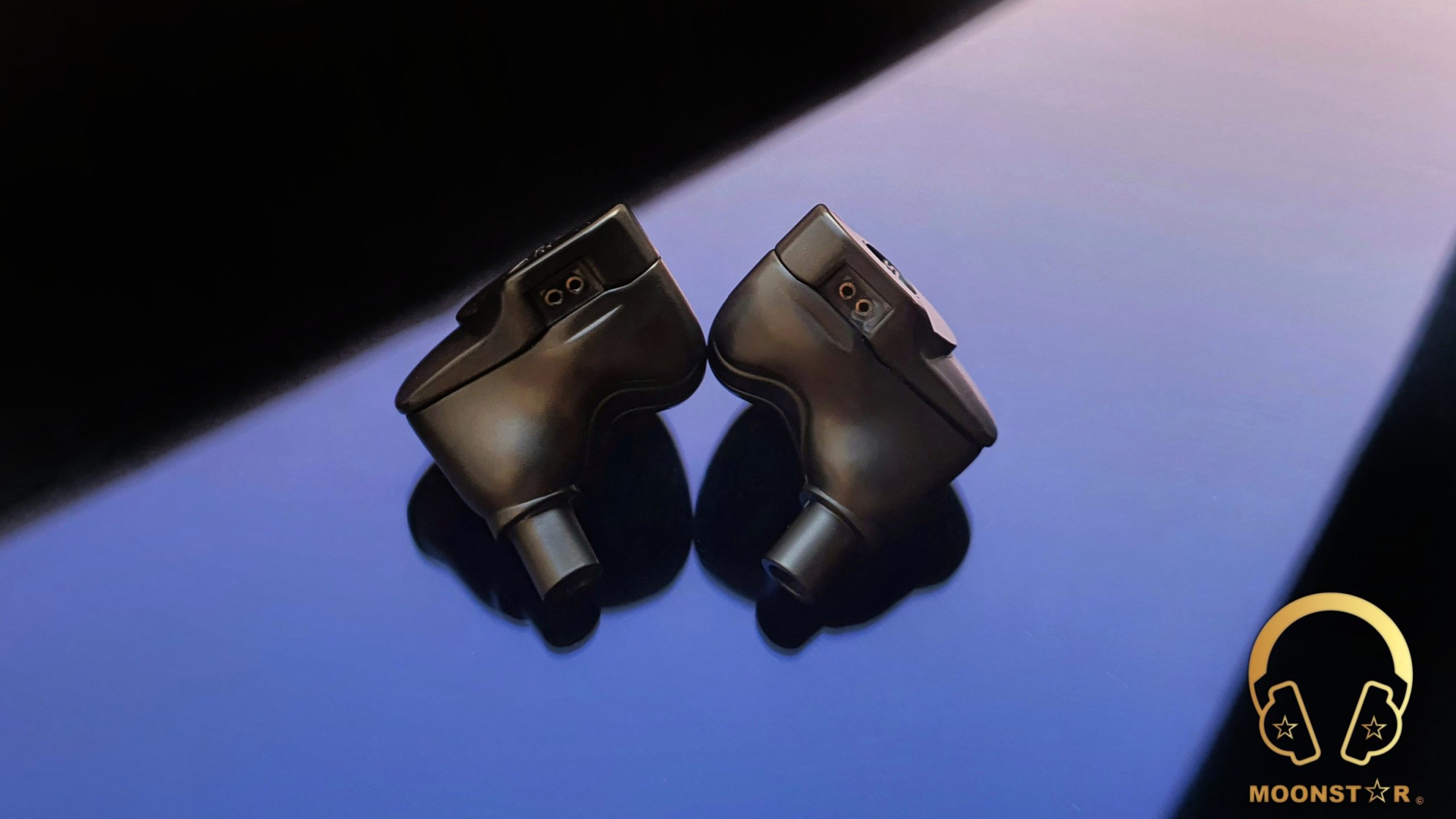
At the rear surface of each monitor are the second fixing screws and grid-shaped openings that give the CORSA the look of an expensive sports car, simply eye-catching!

The Earsonics CORSA comes with a braided 4 core Silver Plated Cooper wire cable that has a soft transparent insulation. This cable shows a very low amount of microphonic effect and is also not prone to annoying mixings.
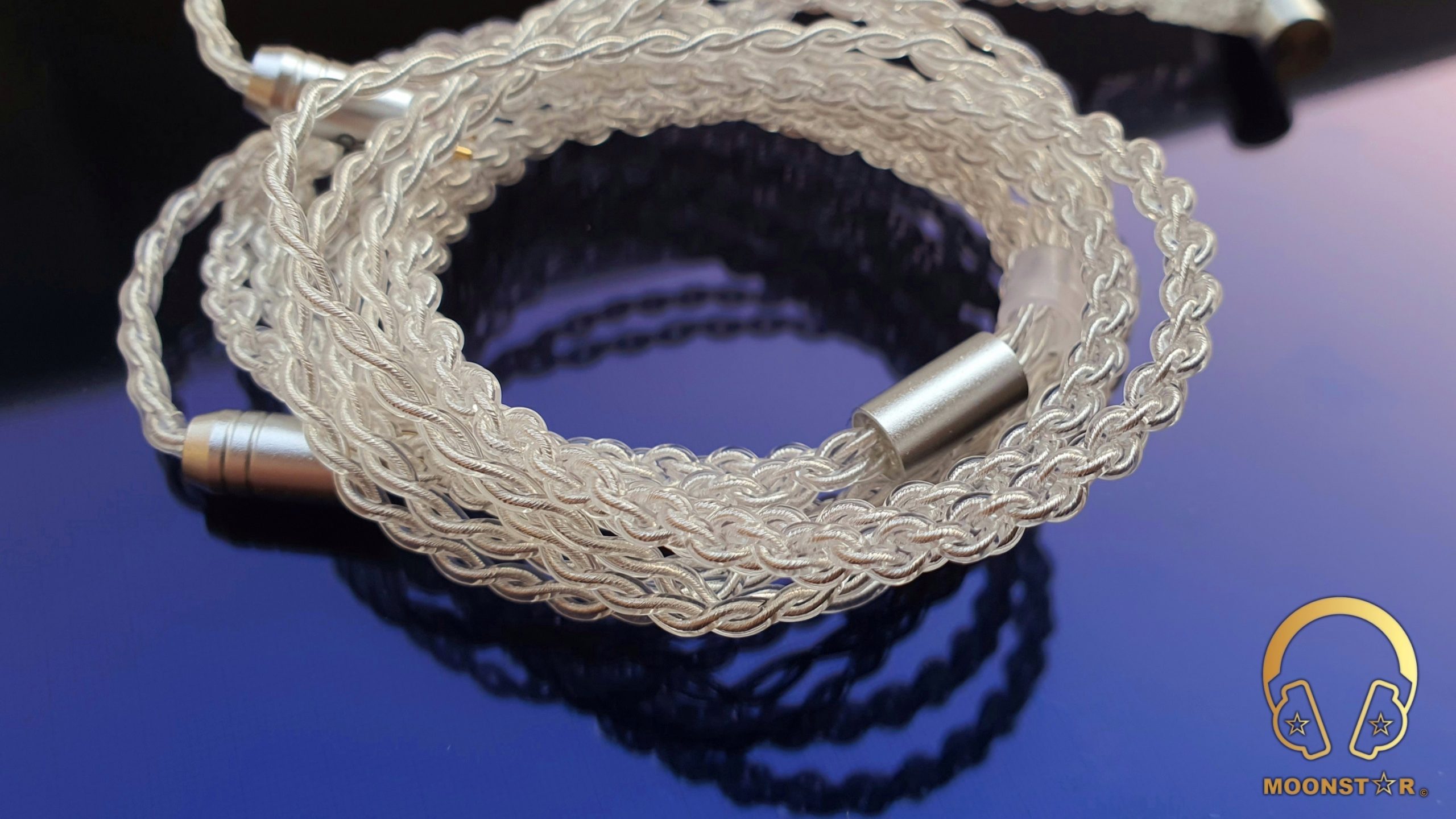
The 0.78mm diameter 2-Pin male connectors do have a metal housing in silver color that do post both left and right markings and color indicators (red for the right connector).

Near the connectors are transparent heat shrink ear guides for a more comfortable over the ear wearing experience, which works pretty well especially on the go.

The cable features a transparent plastic chin slider and a metal Y-Splitter in the same silver color with the Earsonics branding on the top.

The 3.5mm Single Ended headphone jack has a L profiled metal housing in silver that sports a transparent strain relief for extra durability.

Comfort and Isolation:
The Earsonics CORSA is a Universal IEM with a shell that has a fairly comfortable shape and fits perfectly in to my average sized ear concha’s. The passive noise isolation of the monitors is on an average level that is sufficient enough for the use in relative noisy environments like a metro, bus or train.
Drivability & Pairing:
The Earsonics CORSA is a relative efficiently In-Ear Monitor with an impedance of 31 Ohms and sensitivity of about 119dB, which makes it fairly ideal for the use with sources like Smartphone’s or Tablets that do have in general relative weak amplification capability.
However, If you want to hear the full potential of those IEM I highly recommend you to use a sources with better amplification that has a neutral or closer to neutral presentation especially towards the lower frequency region.
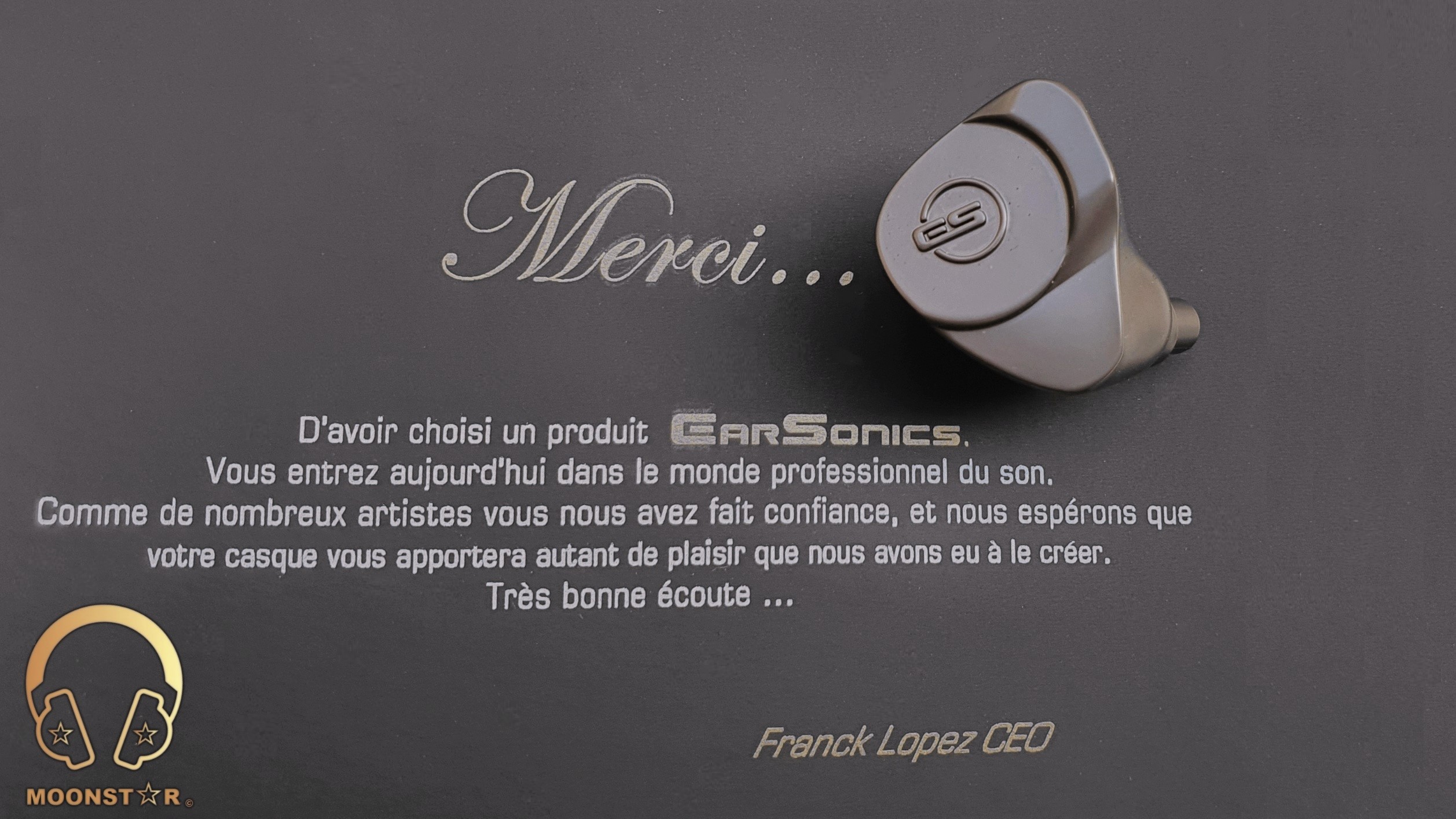
Technical Specifications:
- Driver Configuration : 3x Balanced Armature Driver per Earpiece
- Freq. Resp. : 10 Hz – 20 kHz
- Sensitivity : 119 dB/mW
- Impedance : 31 Ohms
- Connector : 0.78mm 2-Pin Connector

Equipment’s used for this review:
- In Ear Monitors : Earsonics CORSA, HiBy Crystal6, Dunu DK-3001 Pro
- Sources (DAP/DAC) : iBasso DX300, iBasso DX160, FiiO M11 Pro

Albums & Tracks used for this review:
- Hayley Westenra – Odyssey Album (Dezzer HiFi)
- Dionne Warwick – Walk On By (Flac 16bit/44.1kHz)
- Sarah McLachlan – Angel (Flac 24bit/48kHz)
- Sertap Erener – Aşk (Flac 16bit/44.1kHz)
- Edith Piaf – Non Je Ne Regrette Rien (Flac 16bit/44.1kHz)
- Diana Krall – So Wonderful (DSF)
- Aretha Franklin – I Say A Little Payer (Flac 24bit/96kHz)
- Serge Gainsbourg, Jane Birkin - Je t'aime moi non plus (Flac 24bit/96kHz)
- David Bowie – Heroes (Flac 24bit/192kHz)
- Barry White – Just The Way You Are (Flac 24bit/48kHz)
- Isaac Hayes – Walk On By (Flac 16bit/44.1kHz)
- Sting – Englishman in New York – (Flac 24bit/48kHz)
- Eric Clapton – Wonderful Tonight (Flac 24bit/96kHz)
- U2 – Sunday Bloody Sunday (Flac 16bit/44.1kHz)
- Portishead – It Could Be Sweet (Spotify)
- Charly Antolini – Duwadjuwandadu (Flac 24bit/192kHz)
- Chopin – Nocturn No. 20 In C-Sharp Minor (Flac 16bit/44.1kHz)
- Fazıl Say – Nazım Oratoryosu (Live) (Flac 16bit/44.1kHz)
- Vivaldi – Le QuarttroStagioni “The Four Season” (Deezer HiFi)
- Otto Liebert& Luna Negra – The River (Flac 24bit/192kHz)
- Christian Reindl – Freya (Spotify)
- Bro Safari, UFO! – Drama “Party Favor Remix” (Deezer HiFi)
- Toutant – Rebirth (Deezer HiFi)
- Armin Van Buuren – Vini Vici (Deezer HiFi)
- Really Slow Motion – Deadwood (Deezer HiFi)
- Jo Blankenburg – Meraki (Spotify)
- Massive Attack – Angel (Flac 24bit/48kHz)
- Lorde – Royals (Flac 24bit/96kHz)
- Lunatic Soul – The Passage (Flac 16bit/44.1kHz)
- Deftones – My Own Summer (Shove it) (Flac 16bit/44.1kHz)
- Metallica – Sad but True (Flac 24bit/96kHz)
- Opeth – Windowpane (Flac 16bit/44.1kHz)
- Megadeth – Sweating Bullets (Tidal Hi-Fi)
- Rush’s – Leave That Thing Alone (Flac 16bit/44.1kHz)
- Slayer – Angel of Death (Spotify)s
- Liquid Tension Experiment 2 – Acid Rain (Spotify)
- Yosi Horikawa – Bubbles (Spotify)
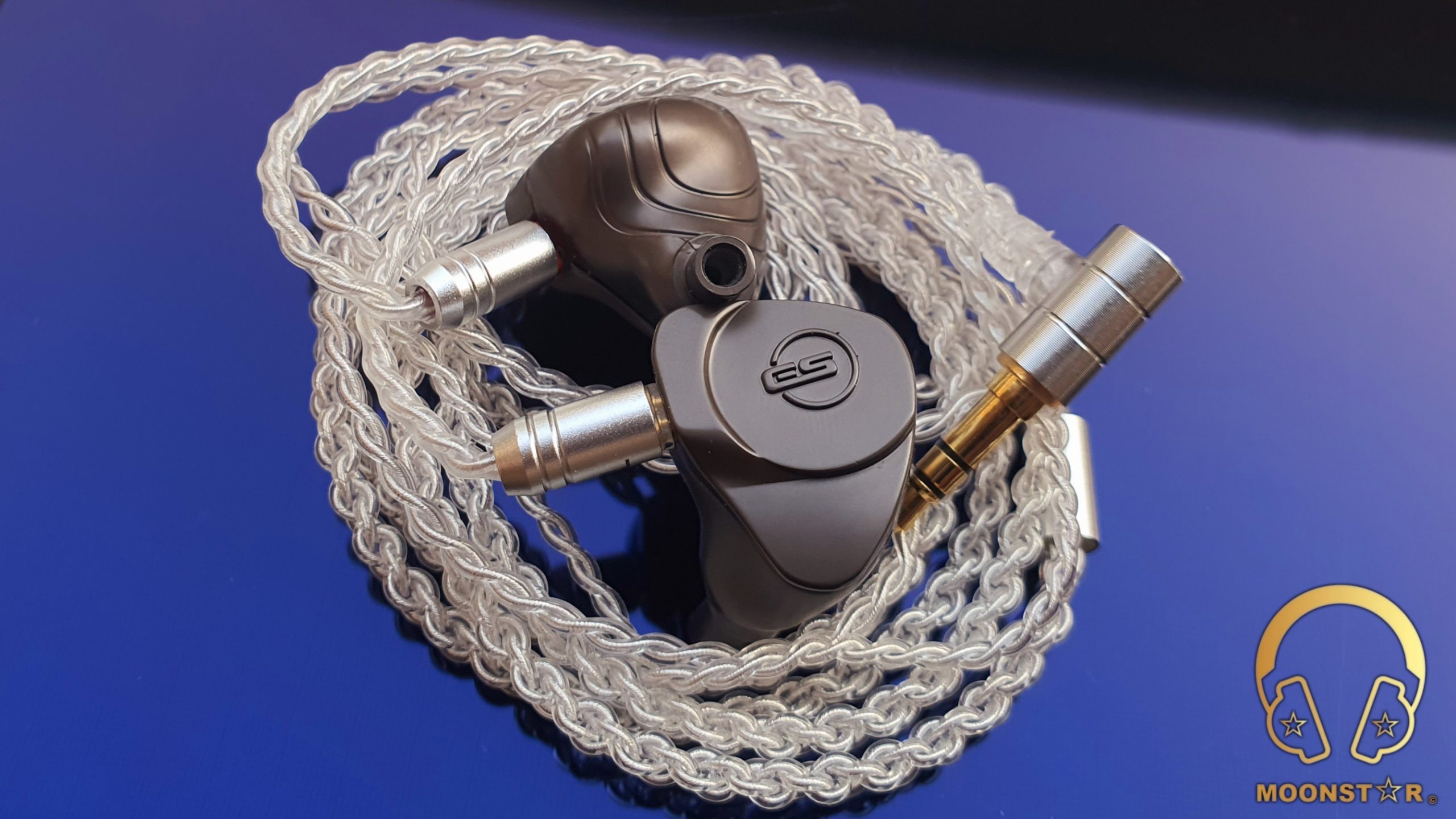
The Sound:
The Easronics CORSA offers a very controlled overall sound presentation with a pretty dark background and a warmish tonality. The bass is pretty fast and controlled that shows in general a moderate sense of in intensity with focal point in the midbass region. The midrange is fairly upfront, transparent and detailed, while the treble range is the most highlighted part of the CORSA, which offer a good level of extension, airiness and sparkle without to sound sharp or shouty.
Bass:
The Earsonics CORSA shows a pretty linear bass response with focal point in the midbass region. It offers a great sense of speed, control and layering thanks to its well tuned Balanced Armature driver.
The subbass region shows in general a moderate level of depth and rumble when I do listen to songs like Christian Reindl’s “Freya”, Massive Attack’s “Angel” or Lorde’s “Royals”, while the performance in terms of subbass decay is pretty good. Instruments such like bass guitars, electronic synthesizers or drums are reproduced with a sufficient level of subbass depth and intensity.
The midbass region of the Earsonics CORSA is more pronounced compared to the subbass area and still maintain the linear and fairly accurate character. The hallmark of the midbass area is the speed, tightness and above average resolution that I have pretty enjoyed during this review.
For example, string instruments like acoustic guitars and cellos are shown with an moderate amount of fullness and weight, while drums like snare and kick drums do are fairly impactful without to sound veiled if you feed the CORSA with good recorder tracks.
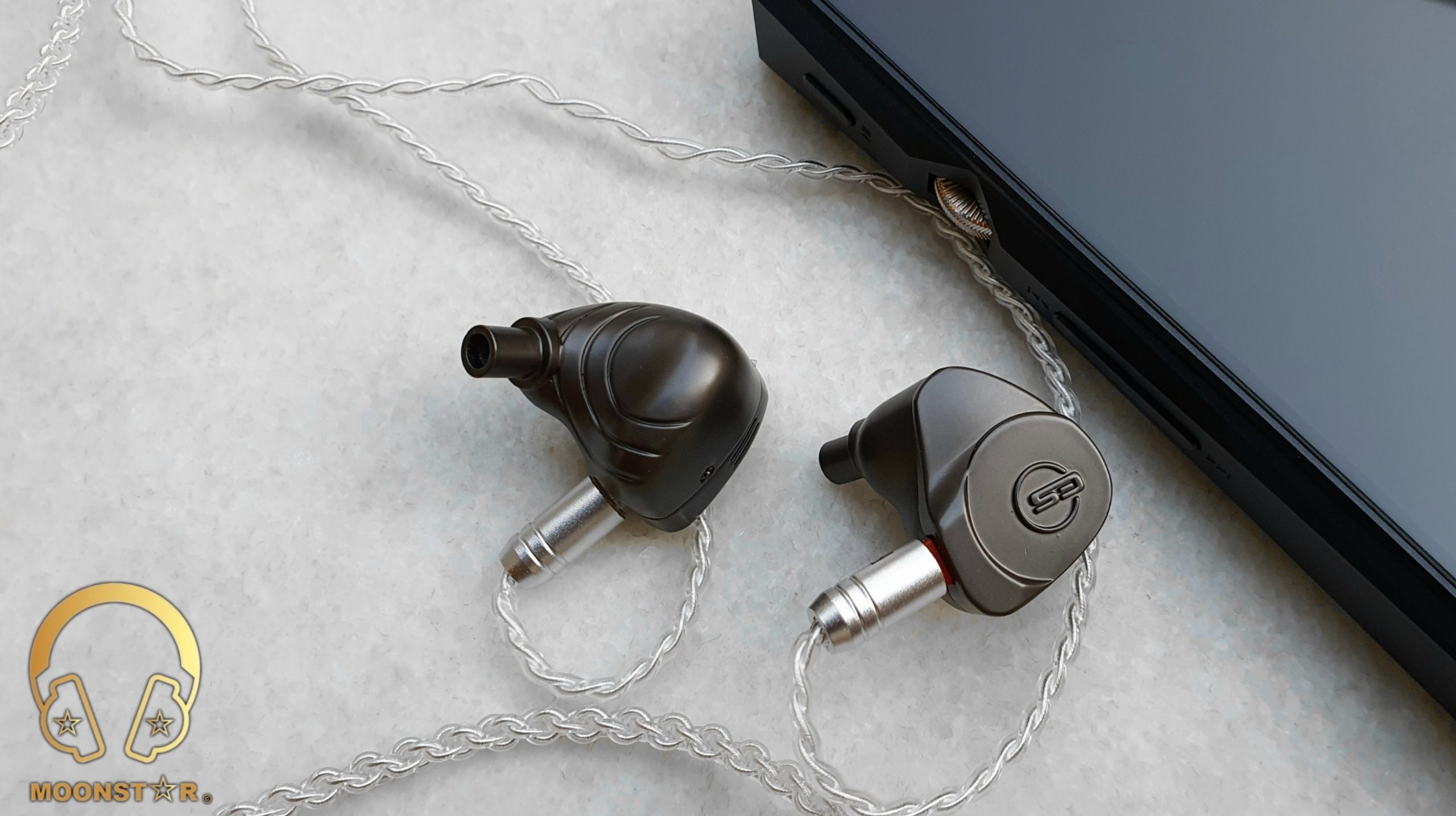
Midrange:
The Erasonics CORSA shows a pretty forward midrange presentation with a mildly warm and quite musical tonality that I have had experienced also with other Earsonics IEM’s in the past. The level of transparency and airiness is on a good level, while the vocal presentation is fairly intimate and emotional.
The midrange of the CORSA shows in general a good level of clarity and resolution thanks to the nicely adjusted Balanced Armature driver that was dedicated for this area. The lower midrange is less accented compared to the upper midrange region and shows average sense of depth and body. The upper midrange on the other hand is able to produce a great level of airiness, dynamism and resolution without to shows sibilance or sharpness that I highly enjoyed.
I really like the general tonality of the midrange when I do listen to both male vocals like Serge Gainsbourg, Barry White and Elton John or to female vocals like Edith Piaf, Aretha Franklin and Sertap Erener that where reflected by the CORSA with a nice sense of intimacy and emotion.
Instruments o the other hand do have a nice natural and organic timbre. Instruments from pianos, clarinets and flutes up to acoustic guitars or violins are reproduced with an efficient level of transparency and extension thanks to the nicely tuned midrange & upper midrange character.

Treble:
The treble range of the Earsonics CORSA is pronounced, while the tonality is mildly warmish and forgiving. The transitions form the upper midrange towards the lower treble area sounds in general controlled especially when instruments do play at high level of distortion.
The clarity and definition in the lower treble region of the CORSA is on an adequate level when I do listen to soprano vocals or to instruments like violins and clarinets in classical music or saxophones or trumpets in jazz music. The general resolution and extension in this area is on a moderate level.
The upper treble region is able to produce a sufficient sense of airiness and sparkle, while the extension is slightly short when I do listen to instruments such like snare drums, hi-hats and cymbals.
What I like about the presentation of the Earsonics CORSA in this area are the rounded edges of the treble that do avoid any over-sharpness and irritation, which makes it ideal for longer listening periods without to loose the sense of brightness and airiness.
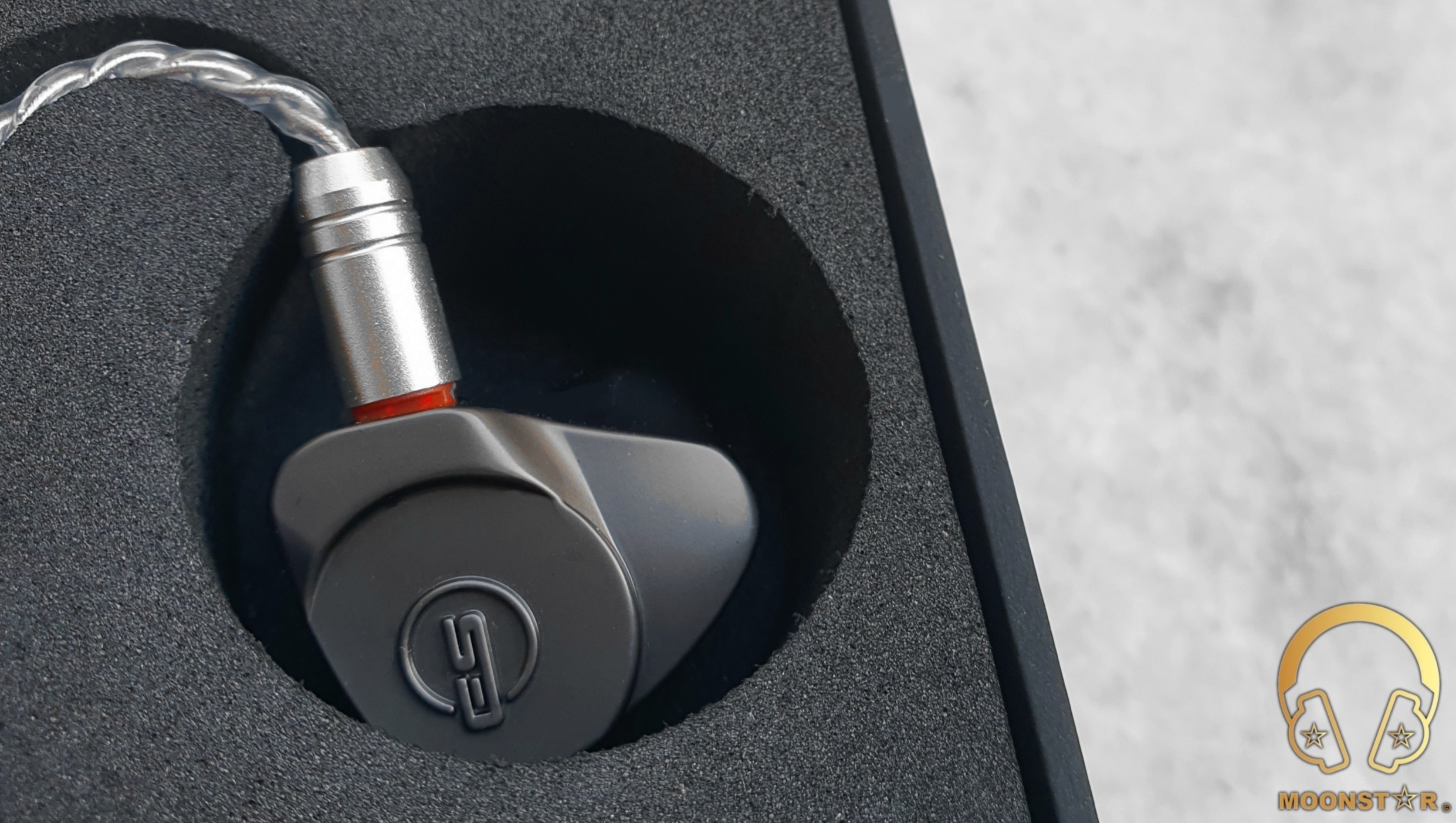
Soundstage & Imaging:
The Earsonics CORSA shows a pretty airy and spacious soundstage presentation with good sense of depth and wideness. There is enough space and air rendered between vocals and instruments and the positioning, layering and separation is in general on a pretty good level for an In-Ear Monitor at this price range.
Comparisons:
Earsonics CORSA versus HiBy Crystal6:
The Earsonics CORSA shows a warmer tonality and a more natural timbre compared to the HiBy Crystal6 that has a brighter tonality.
The subbass region of the Crystal6 has slightly more depth and intensity, while the CORSA has the upper hand in terms of decay and control in this area. The Earsonics CORSA offers a better sense of midbass depth and body, while both IEM’s are pretty equal when it comes to the speed and resolution in this area.
The Earsonics CORSA is the IEM with the warmer tonality and richer midrange character, which has shows a slightly more upfront and intimate vocal presentation. The HiBy Crystal6 on the other hand shows a brighter tonality with higher sense of clarity and airiness. The upper midrange of the Crystal6 is sharper and more prone to sibilance/harshness compared to the CORSA, which has a more controlled and forgiving tuning in this area.
The treble range of the HiBy Crystal6 is more highlighted and detailed, however it sounds too bright and sharp in some situation which makes it a less forgiving IEM, when you listen to it with poor recorded tracks. The Earsonics CORSA on the other hand offers a more careful adjusted treble character, which makes it to the more ideal choice for longer listening periods.
The soundstage of the HiBy Crystal6 shows a better sense of depth, while the Earsonics CORSA is more successful when it comes to the wideness of the stage.
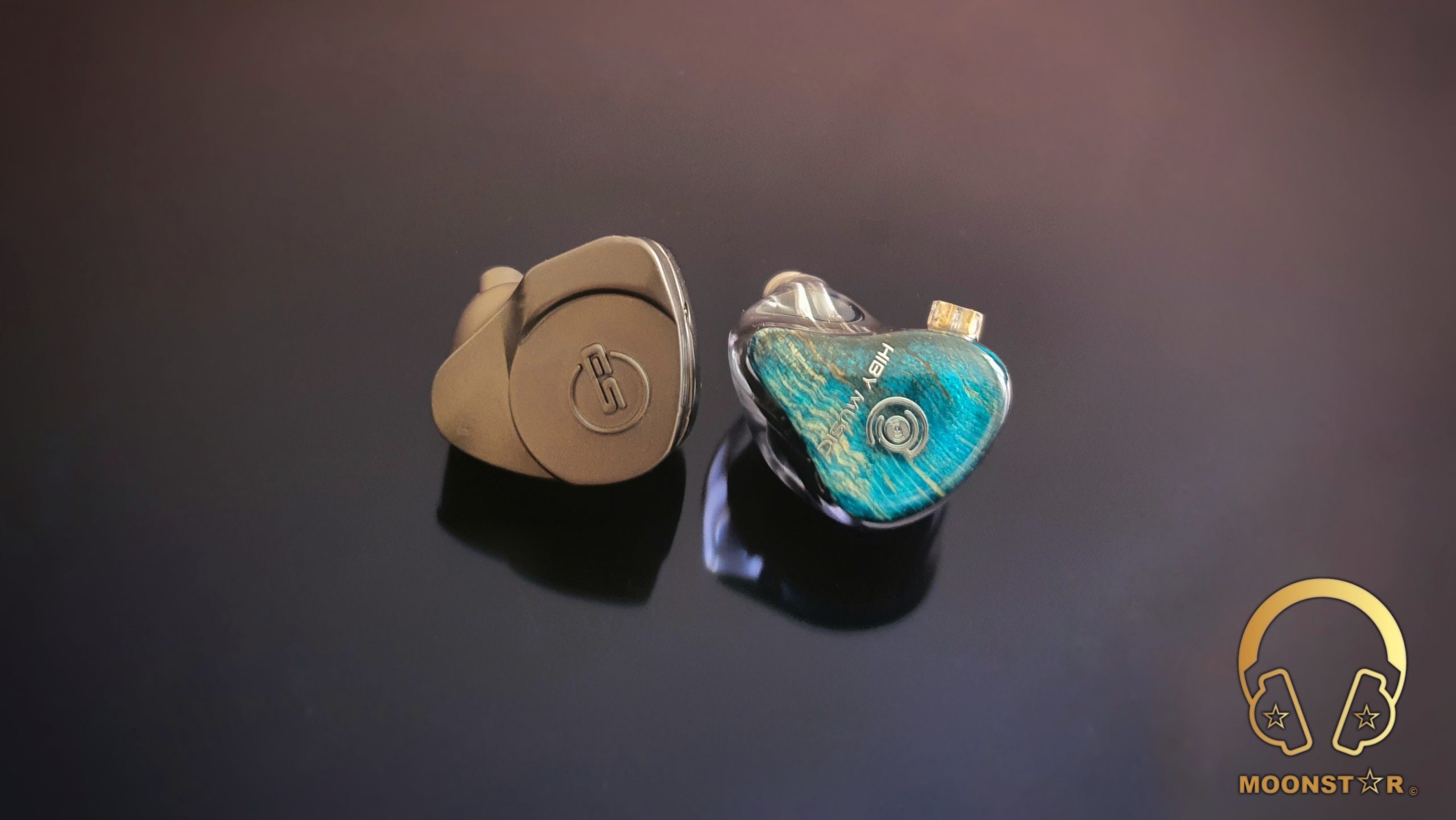
Earsonics CORSA versus Dunu DK-3001 Pro:
The Earsonics CORSA has a warmer tonality compared to the Dunu DK-3001 Pro that is slightly more neutral in this regarding. The subbass region of the DK-3001 Pro shows more depth and rumble, while the CORSA is more successful in terms of decay and control in this area. The midbass of the DK-3001 Pro has more impact and intensity, while the CORSA has the edge when it comes to the speed, tightness and resolution in this area.
The midrange of the Earsonics CORSA has a more upfront presentation, and shows a warmer and musical overall tonality. The lower midrange of the Dunu DK-3001 Pro has slightly more depth and body, while both IEM’s do offers a pretty pronounced upper midrange tuning. However the Earsonics CORSA offers a more organic & rich midrange character.
The treble range of both the Dunu DK-3001 Pro and the Earsonics CORSA is pretty energetic & pronounced, without to get out of control. The DK-3001 Pro has the slightly edge when it comes to the treble extension, while both are successful in terms of resolution.
The soundstage of the Earsonics CORSA shows a better sense of wideness, while the depth of the stage is fairly similar.

Conclusion:
The Earsonics CORSA shows immediately with its impressive looking Metal Housing that you have got a solid piece of audio gear, which has a sound that combines Earsonics warm and rich house-sound with dynamism and clarity. Both the great appearance and the sound performance do fulfill the expectations from a product in this price range that was “Made in France” with Love.
Pros and Cons:
- + Fast & Tight Bass Response
- + Warm & Rich Sounding Midrange with good level of Clarity and Resolution
- + Dynamic & Controlled Treble Presentation
- + Good Soundsatge Depth & Wideness
- + Impressive Build Quality, Look & Feel
- - Slightly more Subbass Depth & Lower Midrange Body would be welcome
- - Monitors are a bit Heavy due to the Rock Solid Metal Housing
- - You will wish that every IEM is build like the CORSA
Thank you for the Read!
Moonstar
100+ Head-Fier
Pros: Highly Dynamic Sound Character,
Powerful and Controlled Bass Response,
Midrange Timbre & Musicality,
Silky Smooth Treble Tuning,
Rock Solid Build Quality
Powerful and Controlled Bass Response,
Midrange Timbre & Musicality,
Silky Smooth Treble Tuning,
Rock Solid Build Quality
Cons: Upper Treble Roll-Off,
The Beautiful Glossy Finish is a Dust & Fingerprint Magnet,
The Monitors are a bit Heavy
The Beautiful Glossy Finish is a Dust & Fingerprint Magnet,
The Monitors are a bit Heavy
METALURE WAVE IEM Review
Introduction:
METALURE originated in New York and the team is formed by the audio design team from NuForce with the mission to achieve diversified fashion craftsmanship with continuous development to bring products on the market with a natural luxury.The WAVE is an In-Ear Monitor that features a solid Brass Housing and special Dynamic Driver with a polymer coated Liquid Silicone Rubber (L.S.R.) diaphragm, which is called the NOMAX diaphragm.
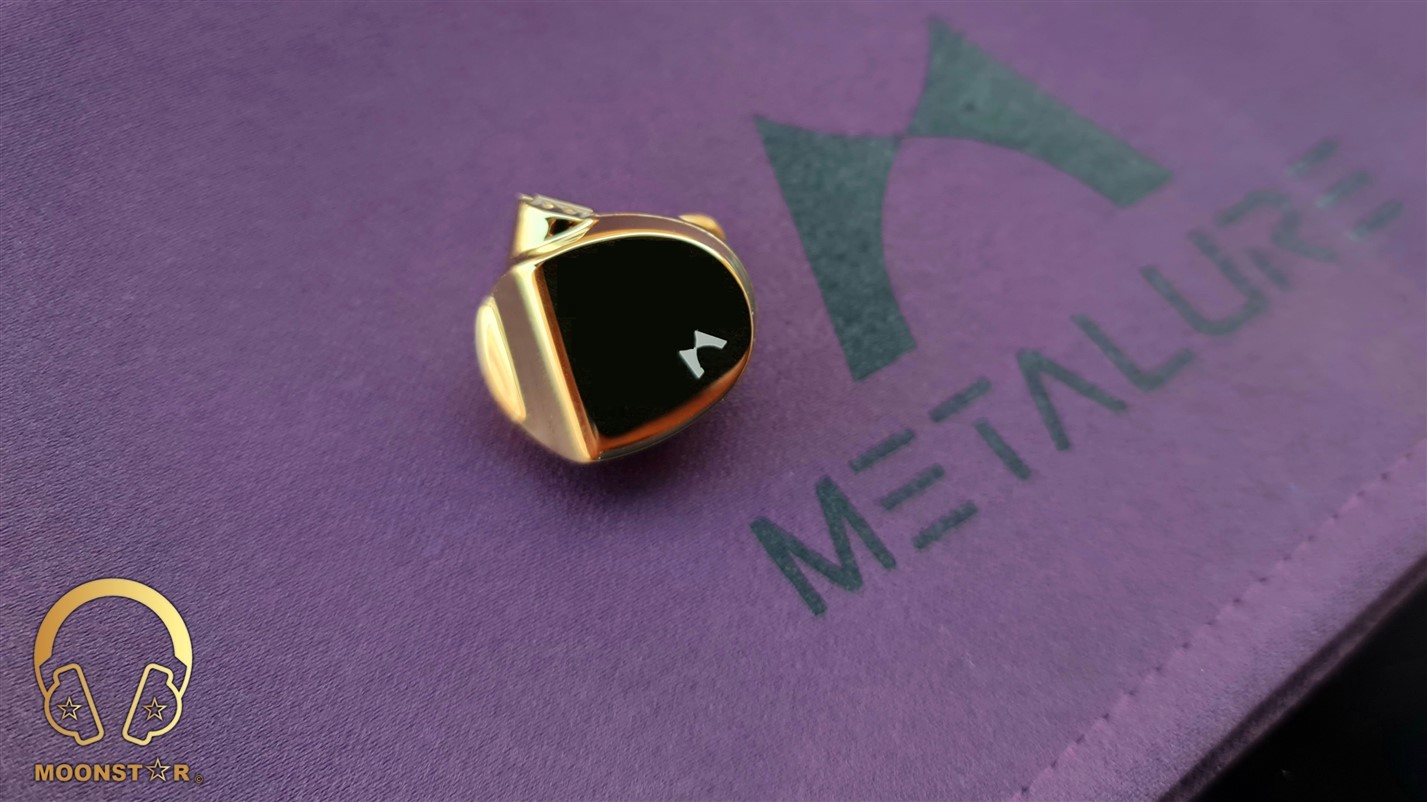
Disclaimer:
I would like to thank METALURE for providing me the WAVE as review sample. I am not affiliated with METALURE beyond this review and all these words are reflecting my true and unaltered opinions about the product.PS: The original post of my METALURE WAVE review can be found on my Blog with the link below;
Price & Availability:
The actual price of the METALURE WAVE is $599.00 USD. More information’s can be found under the link below;Package and Accessories:
The METALURE WAVE came in a stylish cardboard box in white color that that the brand logo in Gold color on the top and some prodcut details at the bottom. There is a small compartment where you can find the accessories of the WAVE.
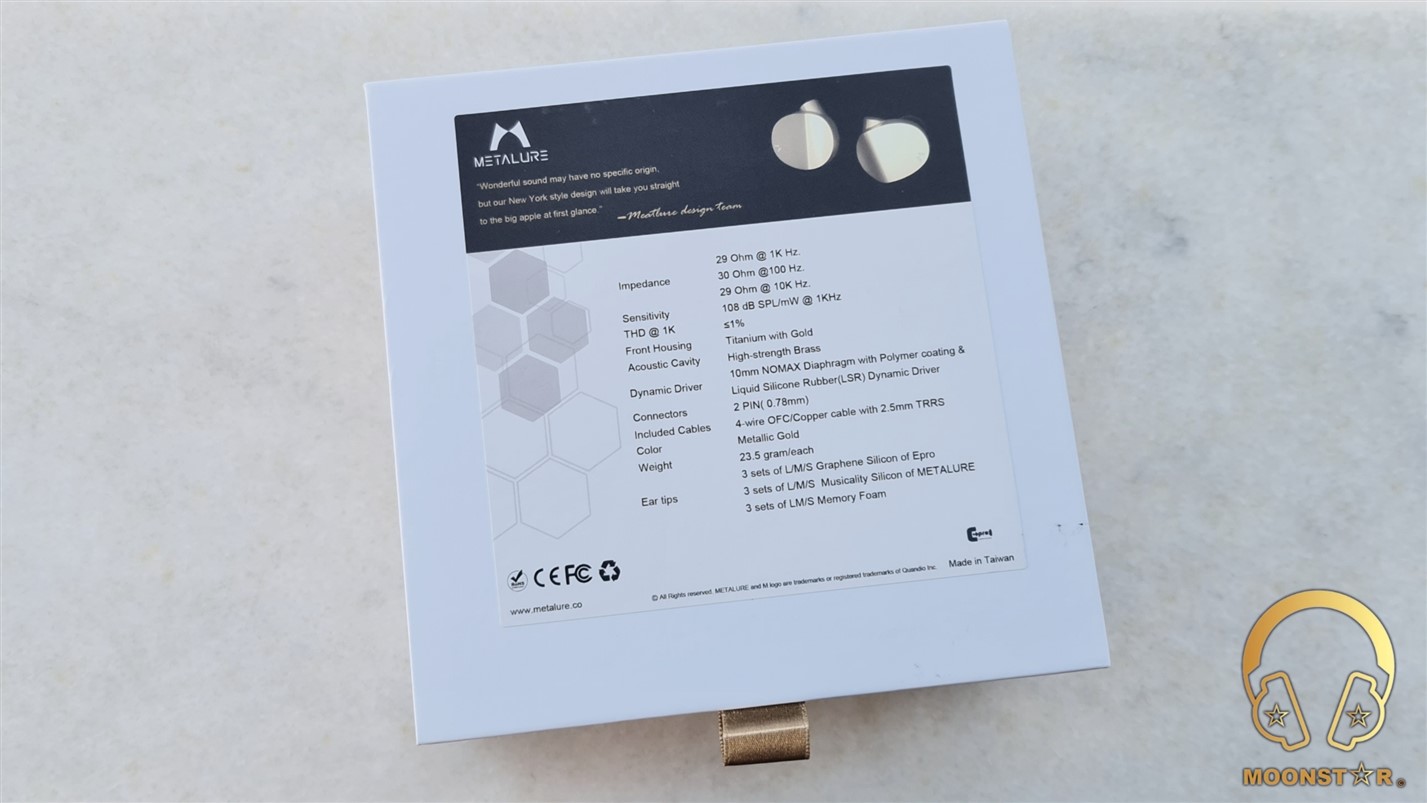
The box of the WAVE contains the following items;
- 1 pair x METALURE WAVE In-Ear Monitors
- 1 piece x Detachable Cable with 0.78mm Diameter 2-Pin connectors
- 3 sets x Graphene Silicone Ear Tips (Epro) L, M, S sizes
- 3 sets x Musicality Silicone Ear Tips (by METALURE) L, M, S sizes
- 3 sets x Foam Ear Tips L, M, S sizes
- 1 piece x Leather Case
- 1 piece x Print Material
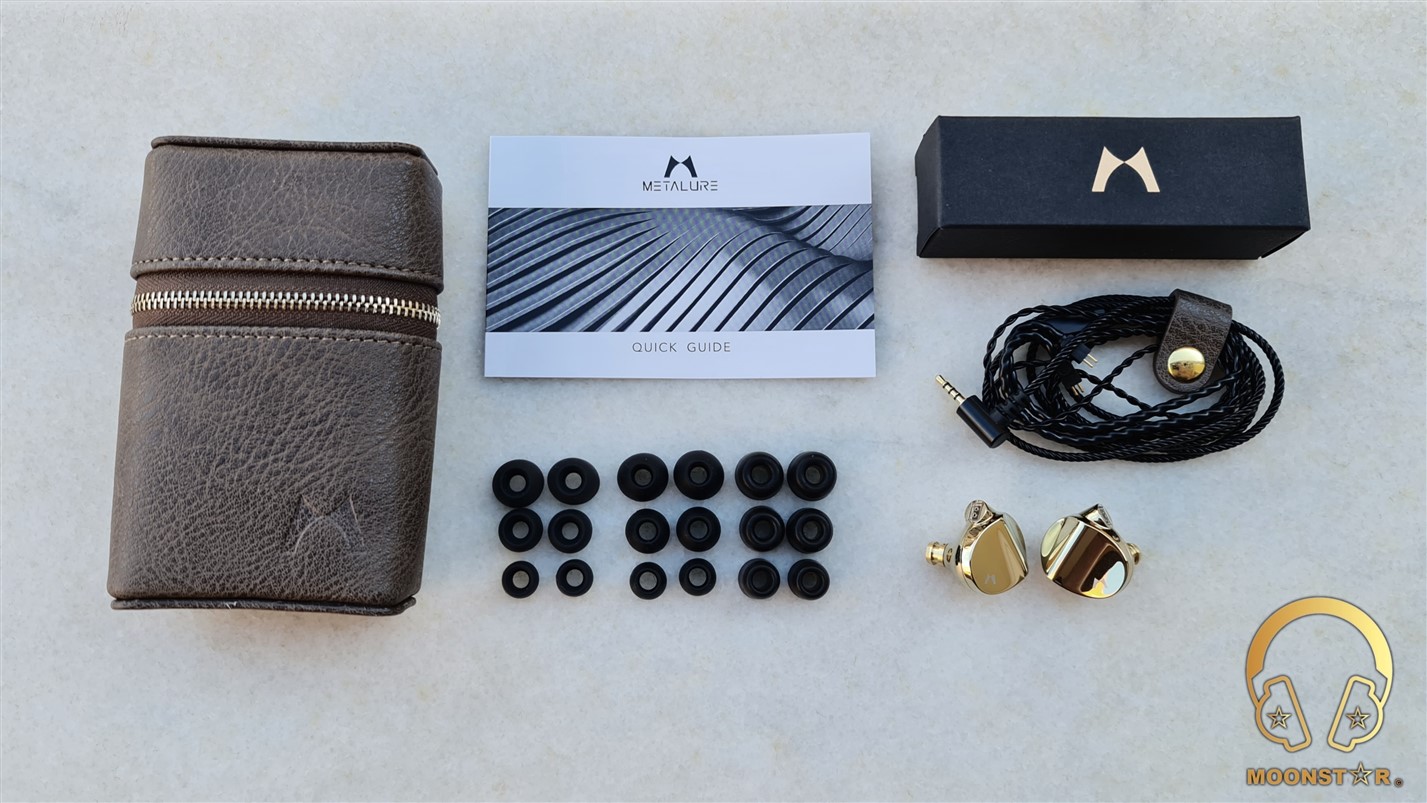
The METALURE WAVE comes with a wide variety of ear tips that includes 6 pairs of silicone and 3 pairs of foam ear tips.

The leather carry case with zipper looks very stylish and is of high quality.
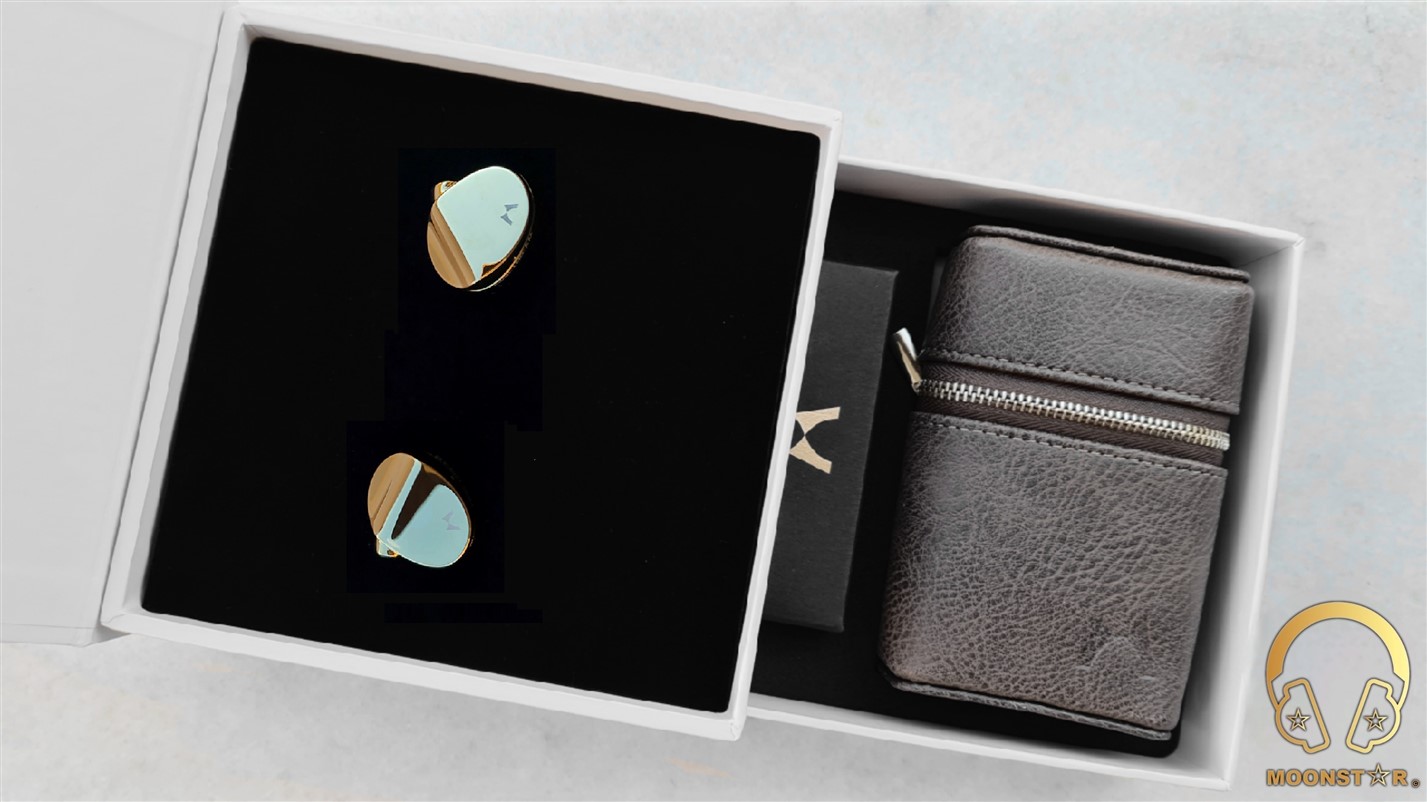
Design and Build Quality:
The METALURE WAVE is a very robust In-Ear Monitor with metal housing that has a glossy finish in gold color. The acoustic cavity is made of high-strength CNC machined Brass Material, which explains the pretty hefty weight of each monitor that is about 23.5grams.
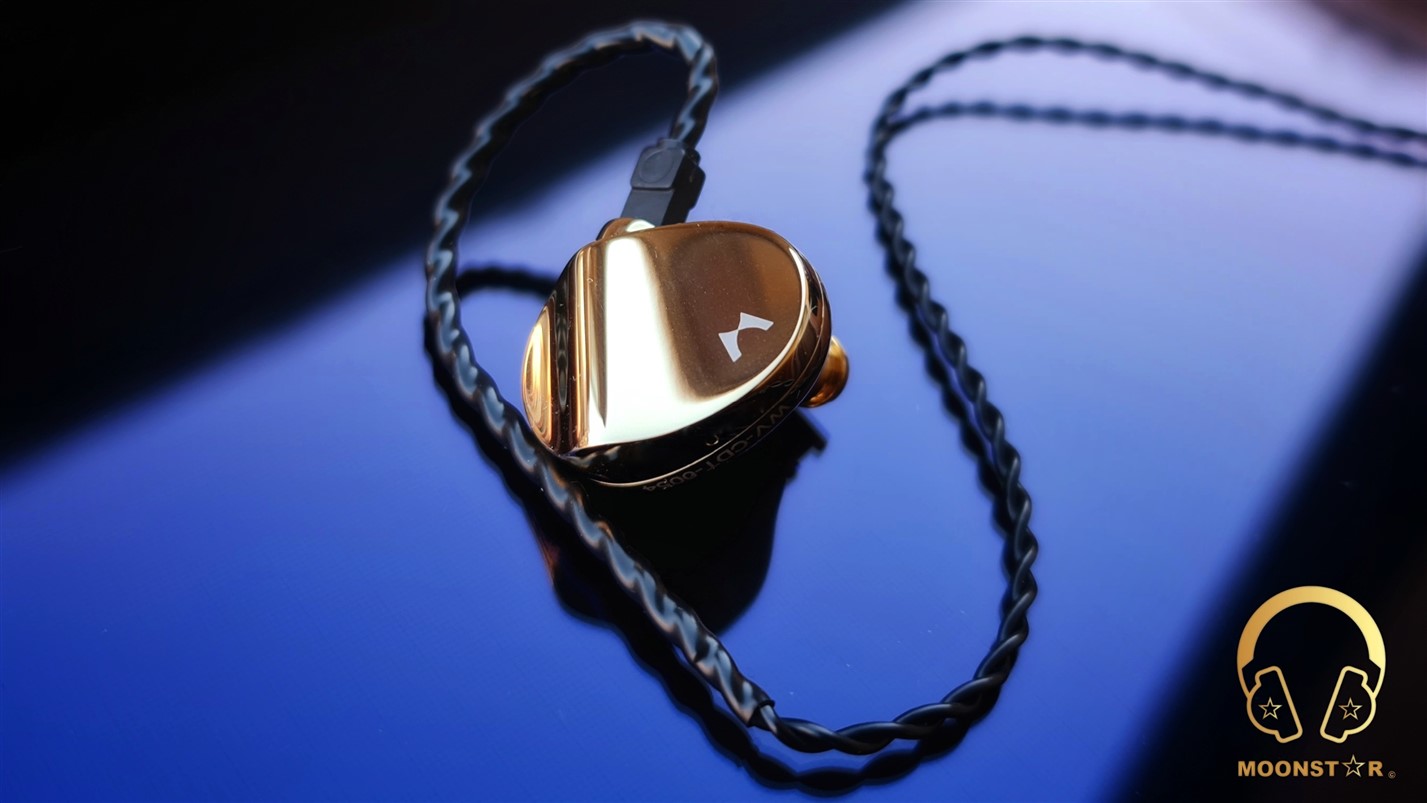
The monitors of the WAVE do have an egg-shaped design that fits perfect to my moderate sized ear concha.
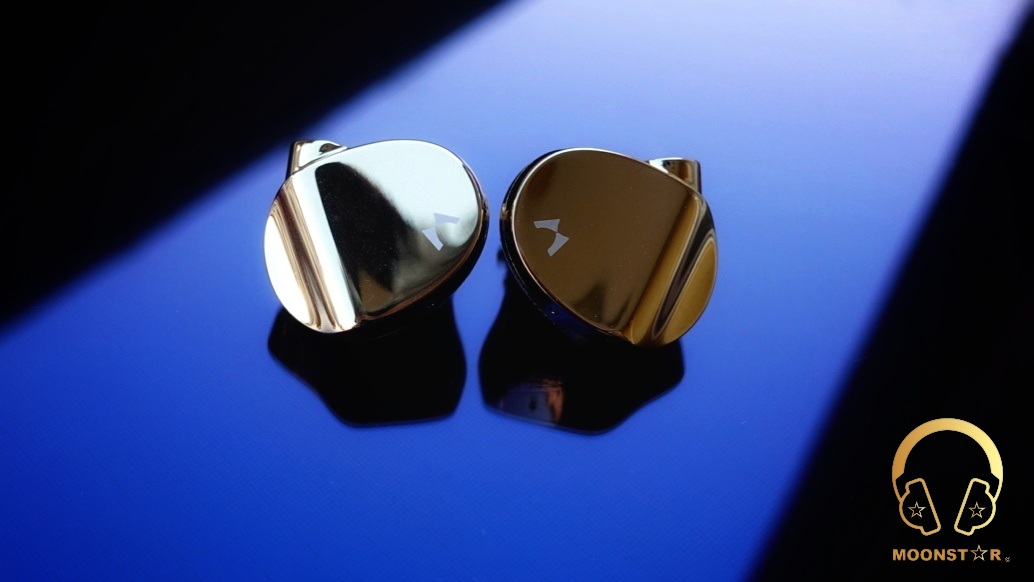
The Monitor has a combination of 3 main parts, which is the front part (faceplate), the rear body and the sound nozzle.
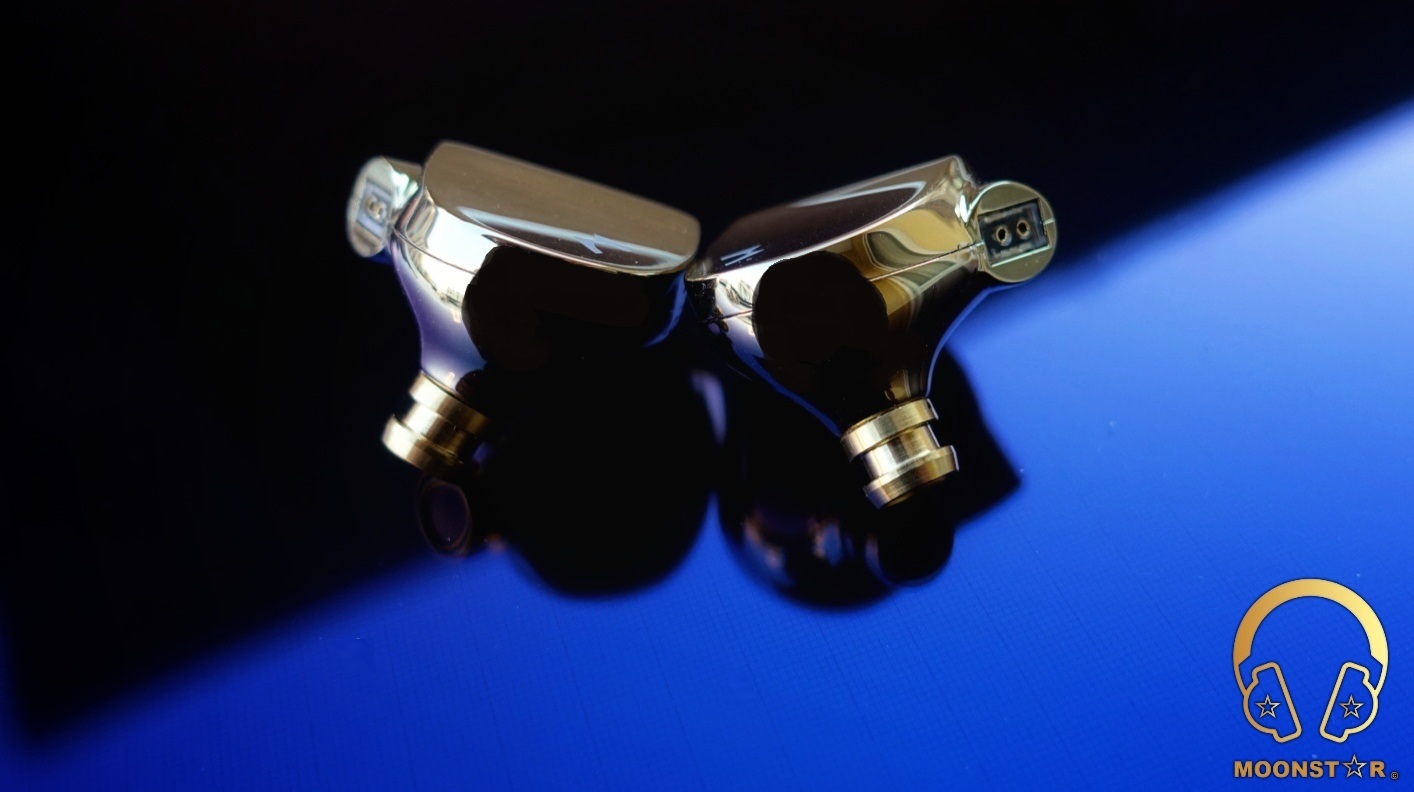
On the front (faceplate) of each monitor is the METALURE logo, which is an M letter which a stylish design. Here is also an elevation in form of a wave, which is a referrer to the WAVE model naming.
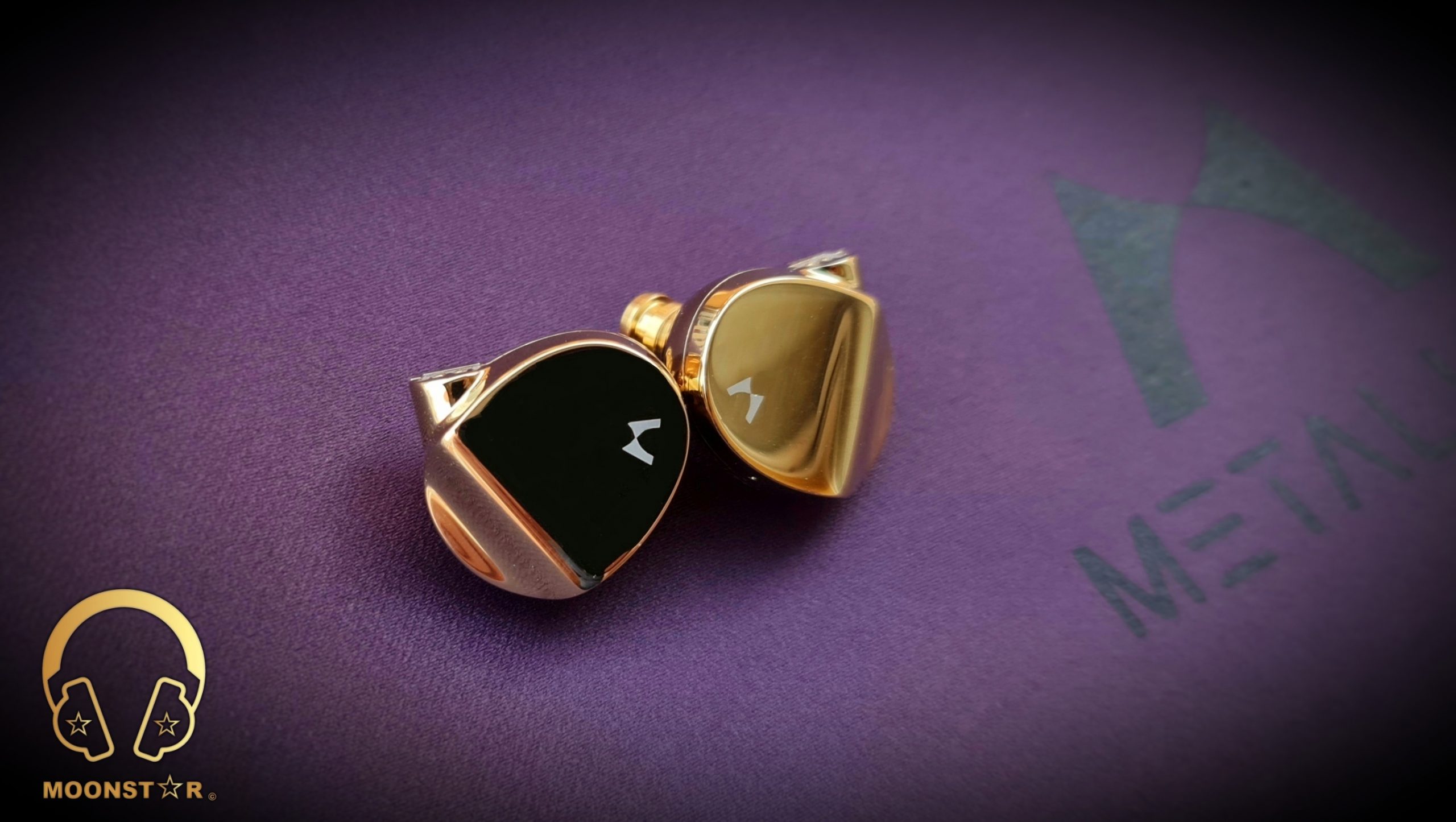
The rear body sports L (Left) and R (Right) markings and the sound nozzle.
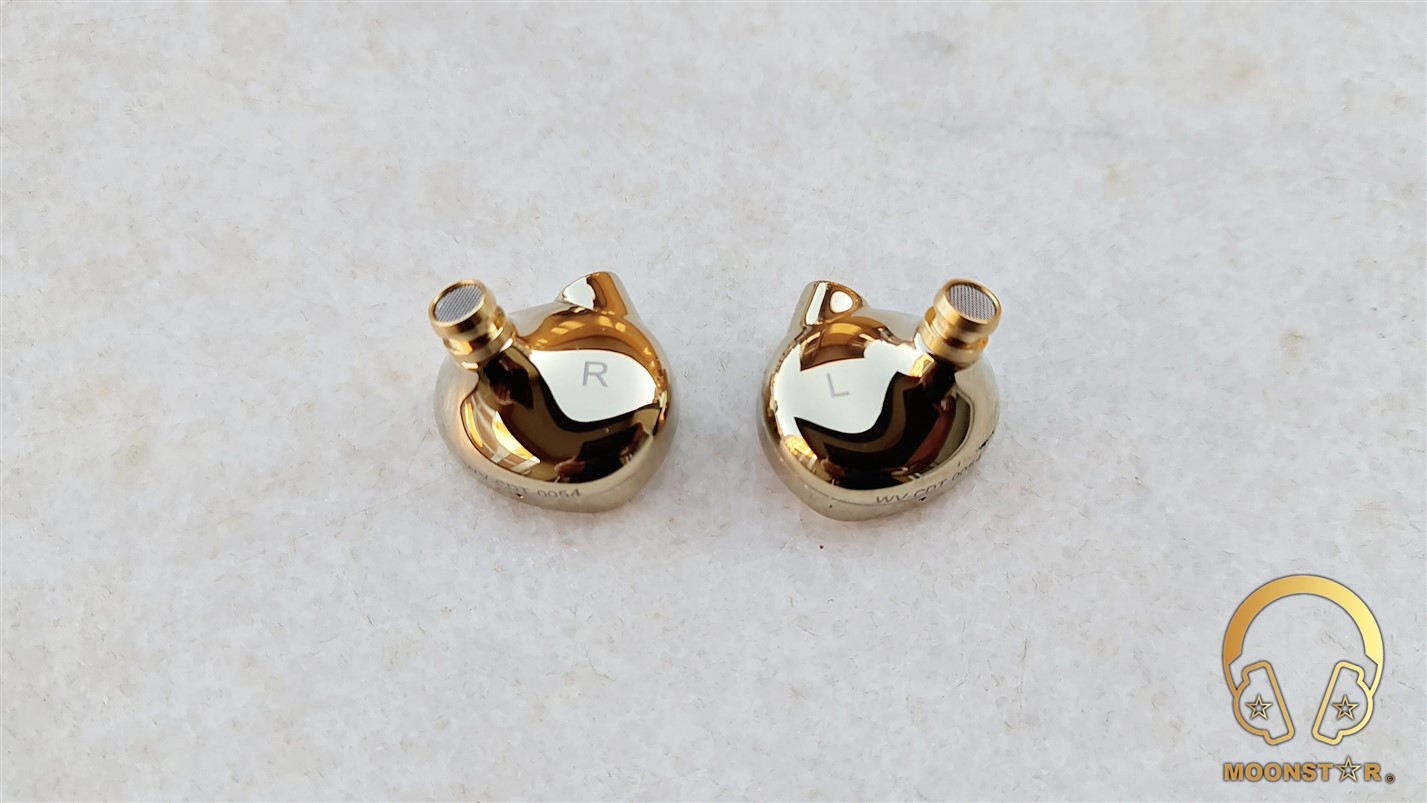
At the bottom of each monitor housing is a small vent for the Dynamic Driver and the serial number of the unit.

The sound nozzle is made of gold plated titanium material and has a slightly angled profile. On the top of the nozzle is a fine metal mesh that will prevent the insertion for strange particles like dust, ear-wax, etc.
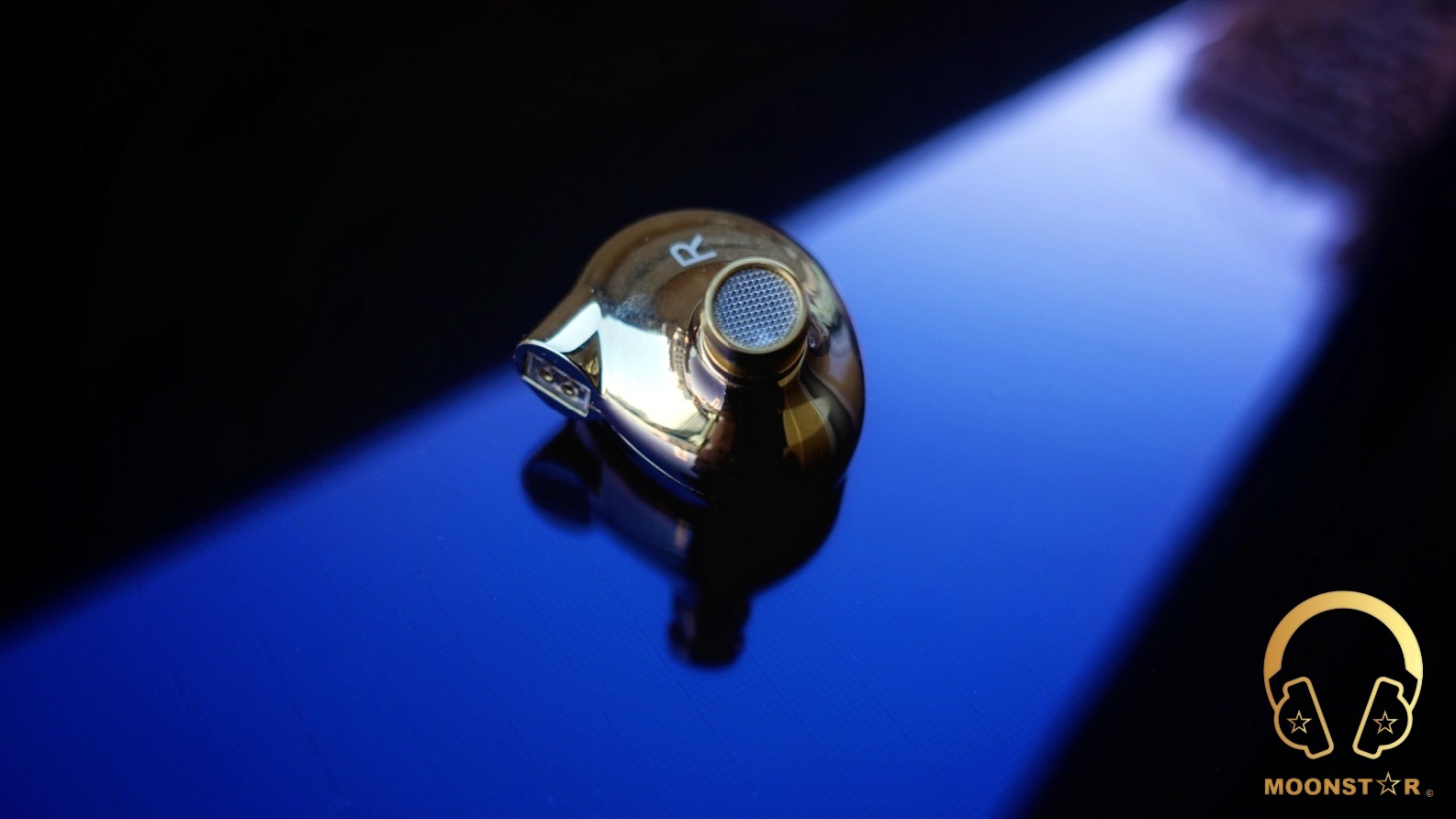
On the top of the each monitor shells are the 0.78mm diameter 2-Pin female connectors. The connectors are quite robust and offer a tight and save connection.
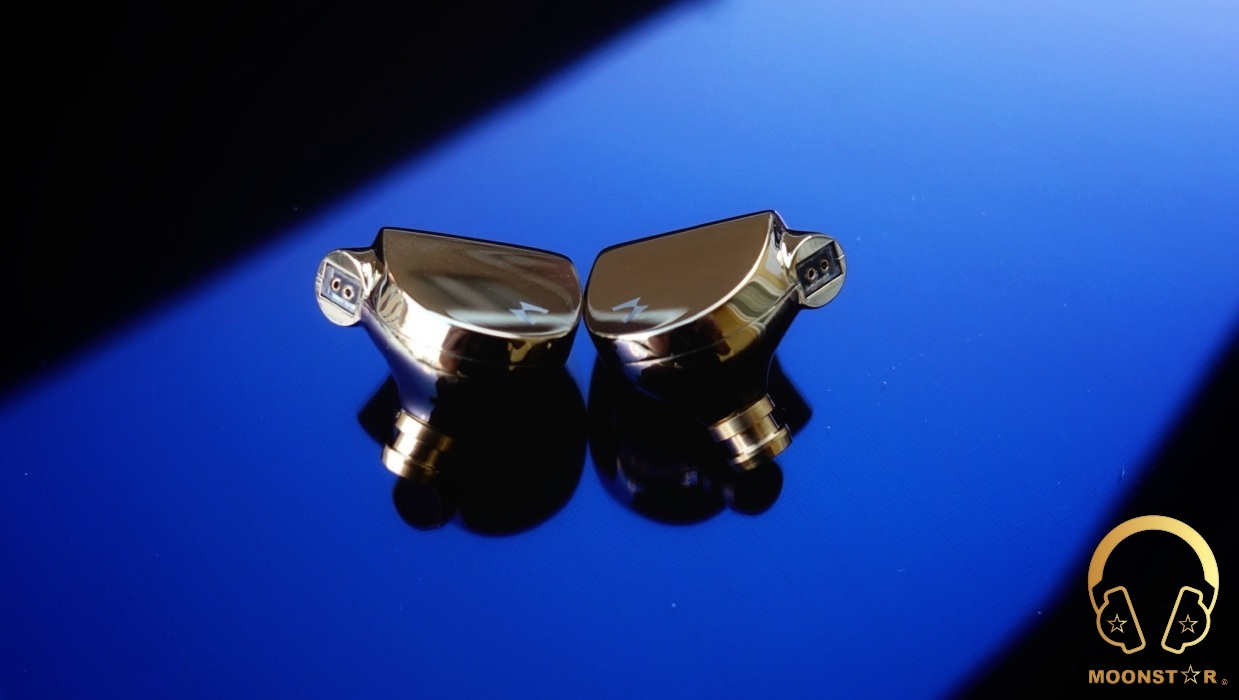
The Cable:
The detachable cable of the METALURE WAVE features 0.78mm diameter 2-Pin male connectors. The 4 core cable is made of high purity OFC (Oxygen Free Copper) Copper Wire material, which has a twisted profile. The outer is made of a soft plastic material in black color that is not prone to mixings.

The connectors do have a plastic housing that do have Left (blue) and Right (red) color indicators at the rear side.

The cable has heat shrink ear guides on both sides for extra comfort, especially for on the go.

The detachable cable features a metal Y-splitter a plastic chin slider in black color. The Y splitter has the METALURE brand logo on the top.
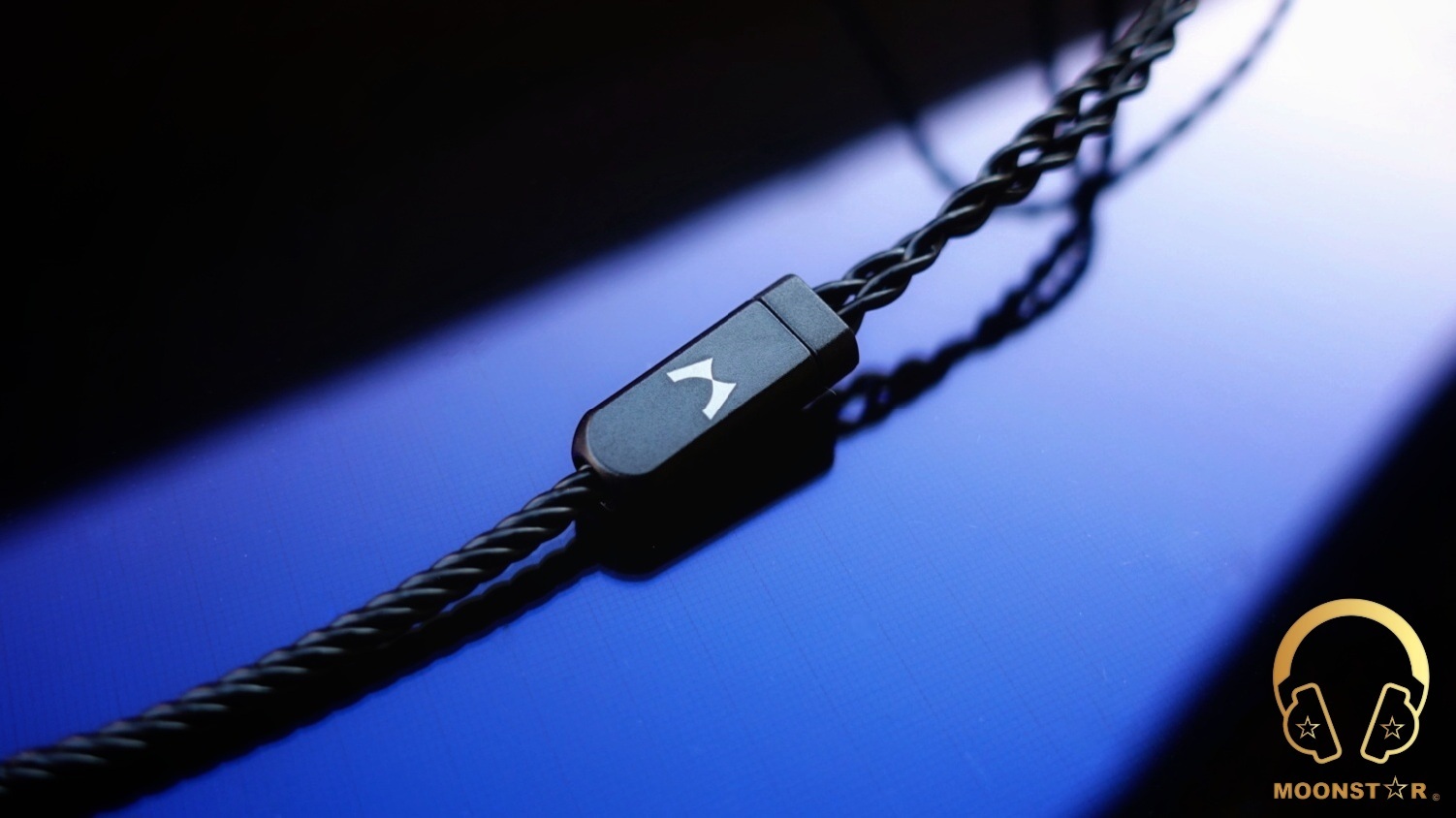
The 2.5mm Balanced (TRRS) headphone jack has an L profiled hosing with the METALURE branding.

Comfort and Isolation:
The monitor shape of the WAVE fits perfect to my average sized ear concha, which has no sharp edges. It offer a good sense of comfort, while it is not a very lightweight monitor compared to the ones with a resin or aluminum housing.The noise isolation of the METALURE WAVE is on an average level, while it is quite acceptable for the use in relative noisy environments like metro, bus or train.

Drivability / Pairing:
The METALURE WAVE is a relative efficient IEM with an impedance of 29Ohm @1kHz and a sensitivity of 108db @ 1kHz, which makes it compatible with sources like Smartphones, Tablets or USB Dongles with low amplification capabilities, while it shows its true potential if you pair it with more powerful sources like a DAP or DAC/Amplifier.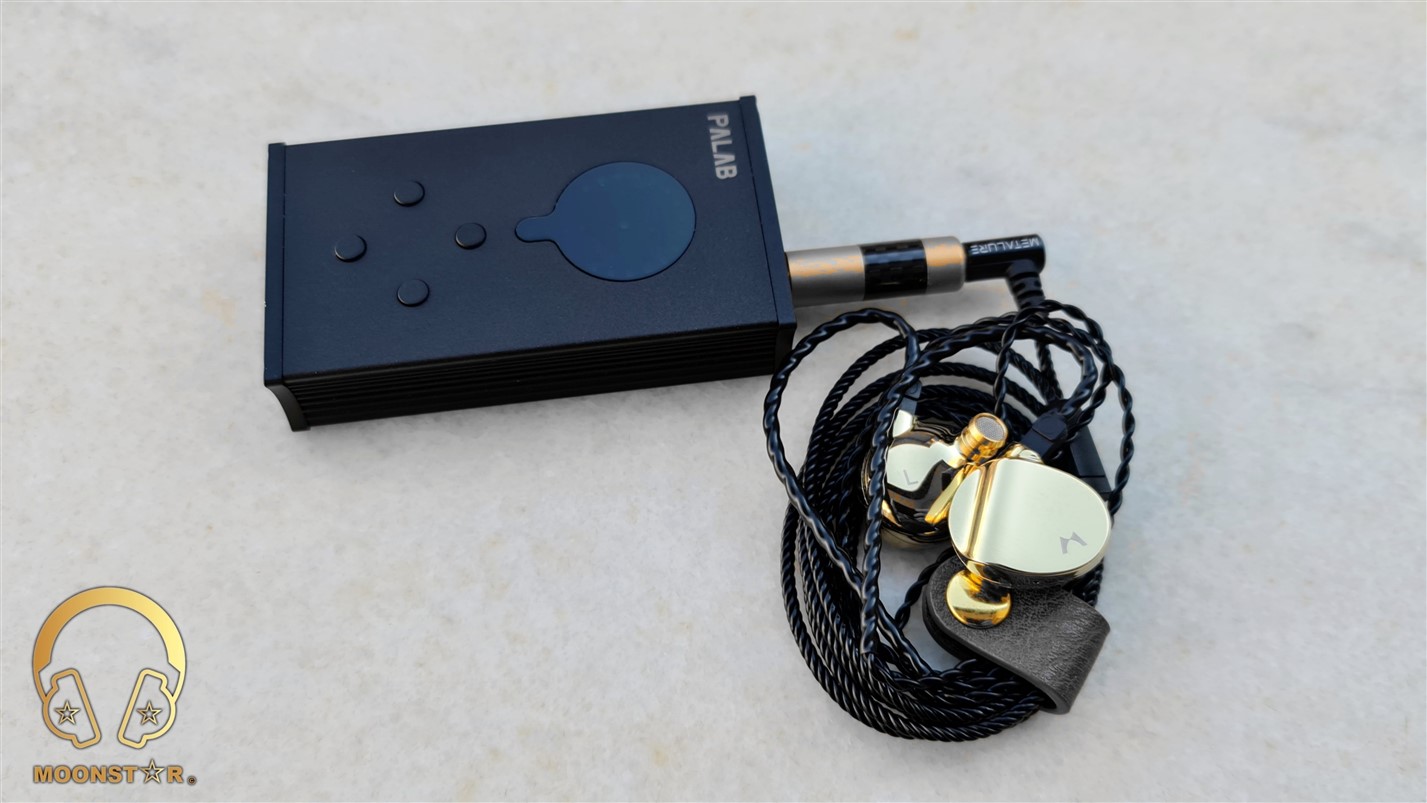
Technical Specifications:
- Driver : Dynamic Driver with NOMAX Polymer Coated Diaphragm
- Sensitivity : 108 dB SPL/1mW @ 1KHZ
- THD @ 1kHz : ≤ 1%
- Impedance : 29Ohm @ 1K Hz, 30Ohm @100 Hz, 29Ohm @ 10K Hz
- Connector : 0.78mm Diameter 2-Pin
- Cable : 4Core OFC Cooper Wire Cable
- Cord length : 1.2m
- Weight : 23.5g each monitor
Sources:
- A) In-Ear Monitors : METALURE WAVE & FINAL AUDIO B1
- B) DAP/DAC/AMP : IBASSO DX220 MAX, FIIO M11 PRO, PALAB M1-Mini

Albums & Tracks used for this review:
- Bro Safari, UFO! – Drama (Deezer HiFi)
- Really Slow Motion – Deadwood (Deezer HiFi)
- Lorde – Royal (Flac 24bit/48kHz)
- Toutant – Rebirth (Deezer HiFi)
- Tom Player – Resonace Theory “Album” (Deezer HiFi)
- Photek – The Hidden Camera (Spotify)
- Sarah McLachlan – Angel (Flac 24bit/48kHz)
- Edith Piaf – Non Je Ne Regrette Rien (Flac 16bit/44.1kHz)
- Aretha Franklin – I Say a Little Prayer (Flac 24bit/96kHz)
- Diana Krall – So Wonderful (DSF)
- First Aid Kit – My Silver Lining (Flac 16bit/44.1kHz)
- Sertap Erener – Aşk (Flac 16bit/44.1kHz)
- Laura Pergolizzi – Lost On You “Live at Harvard and Stone” (Deezer HiFi)
- Barry White – Just The Way You Are (Flac 24bit/48kHz)
- Isaac Hayes – Walk On By (Flac 16bit/44.1kHz)
- Sting – Englishman in New York – (Flac 24bit/48kHz)
- Eric Clapton – Wonderful Tonight (Flac 24bit/96kHz)
- Elton John – Rocket Man (Deezer HiFi)
- B.B. King – Riding With The King (Flac 24bit/96kHz)
- U2 – Sunday Bloody Sunday (Flac 16bit/44.1kHz)
- Charly Antolini – Duwadjuwandadu (Flac 24bit/192kHz)
- Chopin – Nocturn No. 20 In C-Sharp Minor (Flac 16bit/44.1kHz)
- Fazıl Say – Nazım Oratoryosu (Live) (Flac 16bit/44.1kHz)
- Vivaldi – Le QuarttroStagioni “The Four Season” (Deezer HiFi)
- Otto Liebert& Luna Negra – The River (Flac 24bit/192kHz)
- Armin Van Buuren – Vini Vici (Flac 16bit/44.1kHz)
- No Doubt – Hella Gut (Flac 16bit/44.1kHz)
- Lunatic Soul – The Passage (Flac 16bit/44.1kHz)
- Metallica – Sad but True (Flac 24bit/96kHz)
- Opeth – Windowpane (Flac 16bit/44.1kHz)
- Megadeth – Sweating Bullets (Tidal Hi-Fi)
- Rush’s – Leave That Thing Alone (Flac 16bit/44.1kHz)
- Slayer – Angel of Death (Spotify)s
- Liquid Tension Experiment 2 – Acid Rain (Spotify)
- Yosi Horikawa – Bubbles (Spotify)
The Sound:
The WAVE is a highly musical sounding In-Ear Monitor with a relative warm tonality that shows a mildly V shaped sound signature. The bass is powerful and controlled, while the midrange is pretty lush and musical. The treble range on the other hand is concentrated in the lower treble region that shows more intensity and extension compared to the upper treble area.
Bass:
The METALURE WAVE offers a powerful lower frequency response from the subbass to the midbass region that adds a nice sense of dynamism and warmth to the overall presentation without to sound overdone.
The subbass region of the WAVE shows a great sense of depth, intensity and extension, which has in general a fairly warm and bold tonality. It doesn’t sound too boomy or muddy and shows a good sense of speed and control.
The subbass depth and rumble sounds impressive while listen to Bro Safari UFO! “Drama”, Toutant’s “Rebirth” and to Really Slow Motion! “Deadwood”.
The midbass region of the METALURE WAVE shows a great sense of body and fullness, without to sound overdone. The speed, control and impact is suitable for almost any type of music genre, from pop and electronic music up to faster genres jazz or metal music.
Instruments like drums do sound pretty fast, pronounced, detailed and full bodied in intros of Michael Jackson’s “Billie Jean”, Opeth’s “Windowpane” or U2’s “Sunday Bloody Sunday”.
The lower frequency region is one of the Highlights of the WAVE that shows in general an impressive performance in terms of technicality, resolution and musicality.

Midrange:
The METALURE WAVE shows a nicely warm midrange tonality and sound in general smooth and fairly transparent, while the level of airiness and clarity is above average.
Vocals & Instruments:
The WAVE has a good lower midrange depth and intensity, with an average thickness and smoothness. This is an advantage for male vocals with a thick and deep tonality. The clarity and detail level is also pretty good, without to show negative situations like muddiness or mixings. The WAVE sounds quite successful and enjoyable with male vocals from Dave Gahan to Eric Clapton or Sting.
When it comes to female vocals, the WAVE shows a pretty efficient level of transparency and clarity thanks to nicely pronounced upper midrange character. The tonality of female vocals is in general fairly warm, silky smooth and emotional, without to shows some negative situations like sibilance or sharpness, when I do listen to voices like Edith Piaf, Sarah MacLauchlan or Diana Krall.
The WAVE shows in general a noticeably warmer than neutral and full bodied instrument tonality. The timbre of instruments is lush and sweet while the resolution is above average.
For example; pianos are mildly bright, soft and pronounced, while the guitar in Lunatic Soul’s “The Passage” sounds musical, full bodied and emotional. Violins on the other hand are slightly bright and fatigue-free while the trumpets are pretty lively and bright in Edith Piaf’s “Non Je Ne Regrette Rien”.
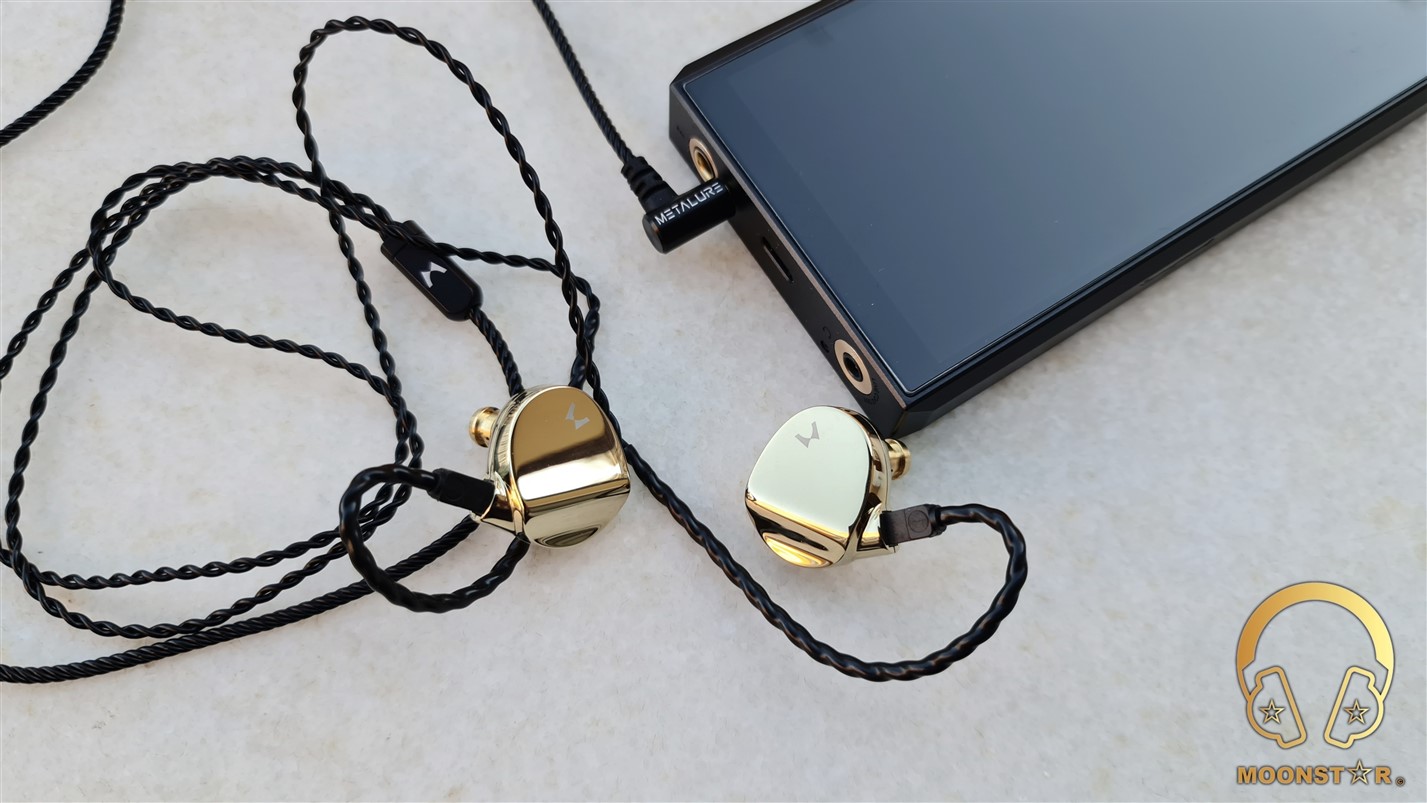
Upper Midrange & Treble:
The upper midrange of the METALURE WAVE is quite pronounced thanks to a peak around the 3 kHz region. The WAVE offers a good sense of detailed and controlled in this area when I do listen to instruments like guitars or cymbals in songs like Lunatic Soul’s “The Passage”, Megadeth’s “Sweating Bullets” or Rush’s “Leave That Thing Alone”. Instruments like violins or side flutes are reproduced with a moderate level of emphasis and extension that do sound smooth and lush in tonality.
The METALURE WAVE offers a mildly bright, smooth and fatigue-free treble presentation. The lower treble region of the WAVE is more highlighted a detailed compared to the upper treble area that shows a controlled yet noticeable roll-off.
The lower treble range shows a nice sense of clarity and definition, while the extension is on a pretty good level. The upper treble region on the other hand has a moderate performance in terms of extension and sharpness.
Instruments like cymbals in jazz or metal music are nicely pronounced, while the hits are countable. Crash cymbals do sound pretty fast and do shows a controlled extension. There are no remarkable interferences in moments when instrument like a piano accelerates.
The general treble presentation of the WAVE can be described as silky smooth and highly fatigue free, while the detailed retrieval and sense of airiness and sparkle is on a moderate level.
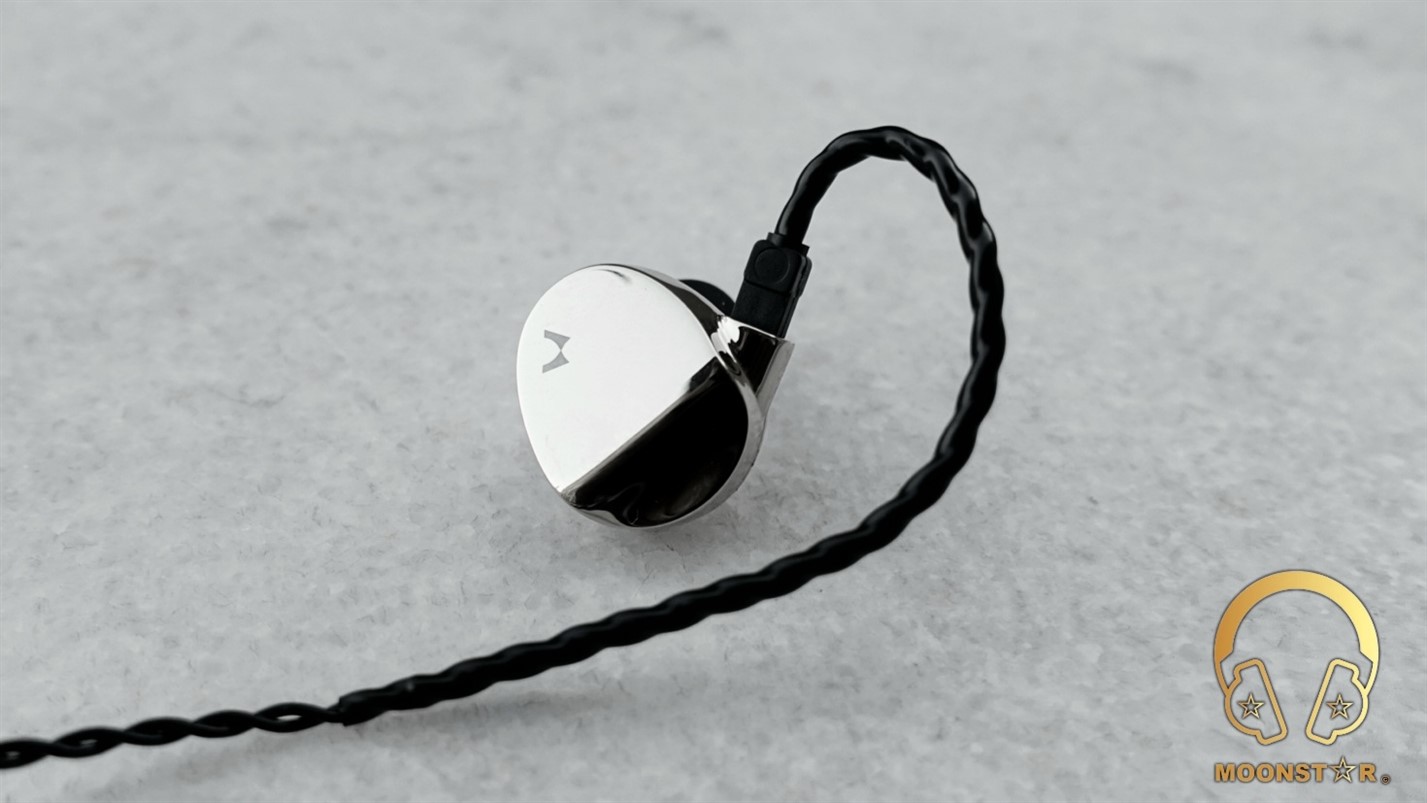
Soundstage & Imaging:
The METALURE WAVE shows a pretty good performance in terms of separation and placement of instrument and the vocals. The soundstage shows a nice sense of space with an above average wideness and moderate level of depth.
Comparison:
METALURE WAVE vs FINAL AUDIO B1:Both the FINAL AUDIO B1 and METALURE WAVE do feature a shiny metal housing in gold (WAVE) or rose gold (B1) color and are available, while the sound is not that similar that I will analyze for you bellow.
The WAVE has a slightly warmer tonality and sounds more musical in direct comparison to the B1. The subbass region of the WAVE is superior in terms of depth and extension that offers also a better sense of rumble. The midbass region of both IEM’s is controlled, detailed and fast, while the WAVE has the upper hand in terms of depth and intensity.

The midrange of FINAL AUDIO B1 shows a slightly more neutral and bright tonality, compared to the METALURE WAVE that has a warmer and more musical character. The lower midrange of both the B1 and the WAVE has good depth and body that’s makes them suitable for male vocals. The upper midrange of the WAVE sounds slightly fuller and smother than those of the B1 that has les body and but a higher sense of clarity and airlines in this area. Female voices do sound detailed with both In-Ear Monitors, while the WAVE offers a more emotional/intimate vocal presentation.
Both In-Ear Monitors are successful in the treble region in terms of technical performance. The WAVE has a more balanced, controlled, soft and musical treble tuning, while the B1 shows a thinner, brighter a higher extending treble tuning. The lower treble region of the WAVE is more pronounced and detailed, while the B1 has the upper hand in when it comes to the upper treble region that shows a peak around the 8 kHz region.
Both IEM’s are successful in terms of soundstage performance, while the FINAL AUDIO B1 has the slightly edge for both depth and wideness.
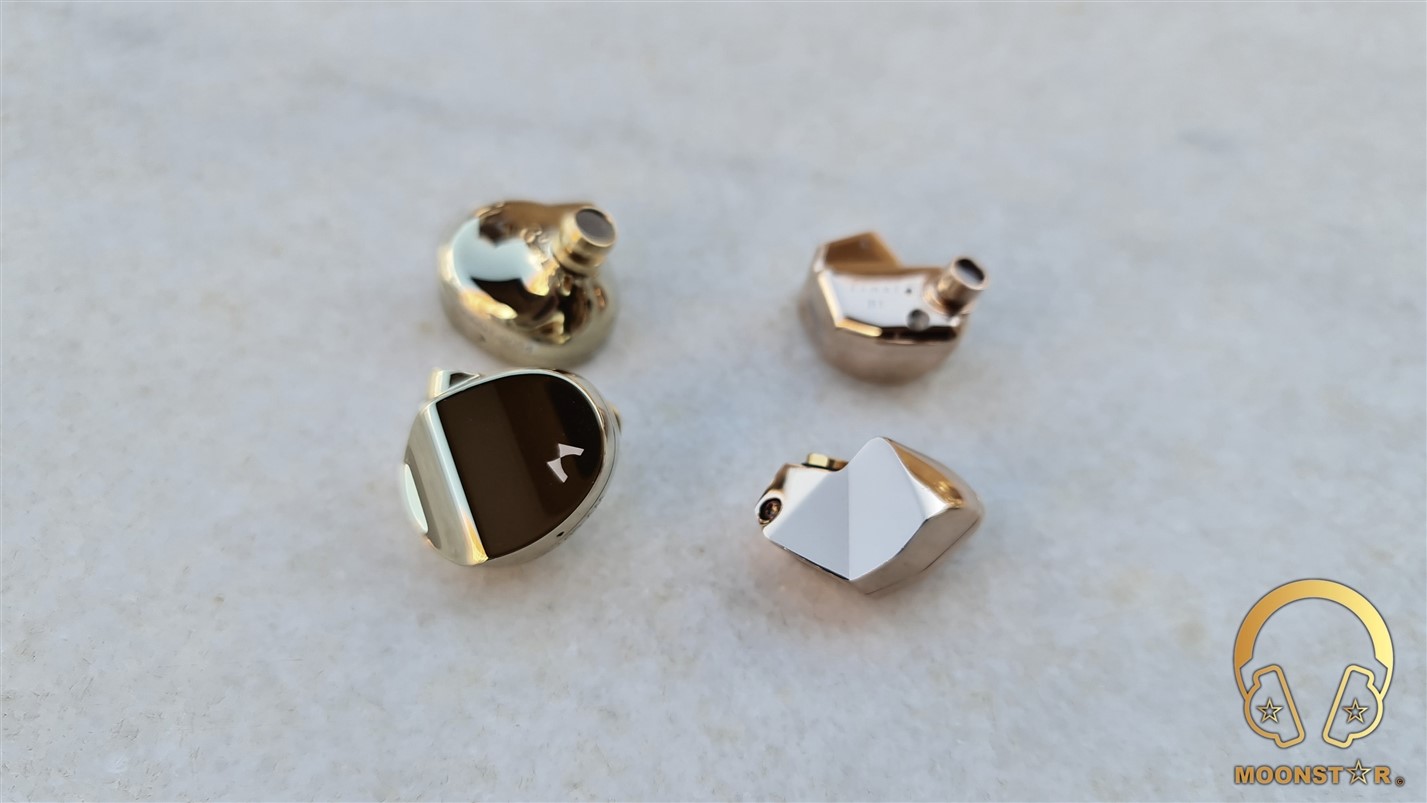
Conclusion:
The METALURE WAVE is rock solid In-Ear Monitor with nicely tuned warmish tonality that offers a great sense of dynamism and musicality thanks to its powerful and controlled bass response, full bodied and lush midrange, and a treble tuning that is silky smooth yet detailed presentation.Pros and Cons:
- + Highly Dynamic Sound Character
- + Powerful and Controlled Bass Response
- + Midrange Timbre & Musicality
- + Silky Smooth Treble Tuning
- + Rock Solid Build Quality
- – Upper Treble Roll-Off
- – The Beautiful Glossy Finish is a Dust & Fingerprint Magnet
- – The Monitors are a bit Heavy
Thank you for the Read!
Last edited:
F
fusionramjet
Thank you for the review!
I’m looking for a high quality, bass head IEM for under $1,000 and these caught my attention.
Has anyone compared the Wave to the EE Bravado MkII or the Thor Mjolnir MkII?
Also, any other IEM recommendations?
Thank you!
I’m looking for a high quality, bass head IEM for under $1,000 and these caught my attention.
Has anyone compared the Wave to the EE Bravado MkII or the Thor Mjolnir MkII?
Also, any other IEM recommendations?
Thank you!
Moonstar
100+ Head-Fier
Pros: Very audible improvements in terms of bass depth, intensity & extension,
Adds fullness/body to the midrange without to downscale the overall clarity and airiness,
Beautiful Look & Very Good Build Quality,
Available with a wide variety of plugs and connectors
Adds fullness/body to the midrange without to downscale the overall clarity and airiness,
Beautiful Look & Very Good Build Quality,
Available with a wide variety of plugs and connectors
Cons: Looking forward for a more appealing packaging
ISN Audio CU4 Upgrade Cable Review
Introduction:
ISN Audio is a relative new Chinese brand that is producing portable audio gears like Earbuds, In-Ear Monitors and Cables.
The ISN Audio CU4 is a 4 core High Purity Single Crystal Copper upgrade cable with 115 strands and 460 wire (4×115) conductors in total.

Disclaimer:
I would like to thank ISN Audio for providing me the CU4 Upgrade Cable sample via Penon Audio for review purposes. I am not affiliated with ISN Audio and Penon Audio beyond this review and these words reflect my true and unaltered opinions about the product.
Original Post (Moonstar Reviews):
https://moonstarreviews.net/isn-audio-cu4-cable-review/
The Price:
The ISN Audio CU4 upgrade is available for 149,00 USD with MMCX and 2-Pin connectors. You have also the option to choose one of the 3.5mm unbalanced, 2.5mm balanced and 4.4mm Balanced (+10,00 USD) headphone plug.
Package and Accessories:
The ISN Audio CU4 upgrade cable came in a pretty small rectangular cardboard box that features some product brandings on the top.

The box is containing the following items:



Technical Specifications:
Design and Build Quality:
The ISN Audio CU4 is one of the higher level upgrade cables of the company that is made of Single Crystal Copper wire material. The cable has 4 cores and each core has 115 strands which makes 460 conductor wires in total. The total length of the cable is about 1.2 meter and looks very good in terms of craftsmanship.

The cable has a soft transparent PVC plastic insulation with a very low amount of microphonic effect.

The MMCX connectors have a metal housing in black color with L & R markings and two rings on each connector in gold color which gives the CU4 a nice stylish look.

The CU4 is available in two connector options, which are the MMCX (Micro Miniature Coaxial) and the 2-Pin (0.78mm) variant with male connectors. The joints are made of silver containing tin material.

Both connectors do features transparent plastic strain relieves to protect the connectors from damages.

The Y-splitter sports the ISN Brand logo and two gold rings/circles while the chin slider shows the CU4 branding and has one gold ring.


The ISN Audio CU4 features a Rhodium plated headphone plug that has a straight profiled headphone jack and is available in 3.5mm TRS unbalanced and 2.5mm TTRS or 4.4mm TRRRS (Pentaconn) balanced variants.
The headphone housing has a very stylish look and is made of metal in black color and features the same gold colored rings that we have seen on the other metal part of the CU4.

The ISN Audio CU4 is one of the best looking and very well made Upgrade Cables I have used to date.

Equipments used for this review:

Albums & tracks used for this review:
The Sound:
I have tested the ISN Audio CU4 upgrade cable with my ISN Audio H40, Campfire Audio ARA, Campfire Audio ATLAS and Final Audio E4000 In-Ear Monitors to hear the changes and improvements compared to their stock cables.

Bass / Midrange / Treble / Soundstage:
The ISN Audio CU4 is made of Single Crystal Copper material which means that the most audible difference will be occur in the lower frequency region like with most pure cooper cables.
When I connected the CU4 to the Final Audio E4000 and Campfire Audio ARA I have immediately noticed that the subbass region has shown a better level of depth, intensity and extension compared to their stock cable.

The ISN Audio CU4 gives also the midbass region additional body and fullness without to make the overall presentation muddy or veiled, which is a big plus point of the CU4. The CU4 added the ISN Audio H40 additional texture and control compared to its stock cable, which was otherwise pretty good.

Instruments like snare drums and guitars have gained more weight and fullness especially paired with the Final Audio E4000 and Campfire Audio ARA. The difference in terms of when paired with the Campfire Audio ATLAS was less audible.
The ISN Audio CU4 shows a pretty audible difference in the lower midrange region and gives the overall presentation in the midrange region slightly more body and musicality. The Final Audio E4000 and ISN Audio H40 gained more body while listen to instruments like electric guitars, pianos and hi-hats. Also soprano voices do sound more musical, have more depth and are more emotional especially with the Campfire Audio ARA compared to its stock cable.

The upper midrange smoothed out and the transition are more controlled with all IEM’s I have tested with the ISN Audio CU4. The treble extension and brightness remained pretty unchanged while some minor but pretty noticeable changes happened to treble intensive instruments like cymbals, kick drums or soprano voices that have been smoothed out in a noticeable manner, especially with the Final Audio E4000 and ISN Audio H40.
The treble notes do sound slightly thicker and while the rendered air remains almost the same.

The soundstage of all IEM’s I have tested with the ISN Audio CU4 showed minor differences with focal point to the wideness, while the most audible difference was with the Campfire Audio ARA.
Conclusion:
The ISN Audio CU4 is beautiful looking and very well made upgrade cable that offers pretty audible sound improvements especially in terms of subbass depth and midbass control & intensity. It adds also a nice amount of fullness and musicality to the midrange without to affect the overall clarity, while the treble region will be smoothed out without to scale down the overall sparkle and airiness of this area.
Original Post (Moonstar Reviews):
https://moonstarreviews.net/isn-audio-cu4-cable-review/
Introduction:
ISN Audio is a relative new Chinese brand that is producing portable audio gears like Earbuds, In-Ear Monitors and Cables.
The ISN Audio CU4 is a 4 core High Purity Single Crystal Copper upgrade cable with 115 strands and 460 wire (4×115) conductors in total.
- ISN Audio Official Website: https://isnaudio.com/
Disclaimer:
I would like to thank ISN Audio for providing me the CU4 Upgrade Cable sample via Penon Audio for review purposes. I am not affiliated with ISN Audio and Penon Audio beyond this review and these words reflect my true and unaltered opinions about the product.
Original Post (Moonstar Reviews):
https://moonstarreviews.net/isn-audio-cu4-cable-review/
The Price:
The ISN Audio CU4 upgrade is available for 149,00 USD with MMCX and 2-Pin connectors. You have also the option to choose one of the 3.5mm unbalanced, 2.5mm balanced and 4.4mm Balanced (+10,00 USD) headphone plug.
- Purchase Link: https://penonaudio.com/isn-audio-cu4.html
Package and Accessories:
The ISN Audio CU4 upgrade cable came in a pretty small rectangular cardboard box that features some product brandings on the top.
The box is containing the following items:
- 1 pcs x ISN Audio CU4 upgrade cable
- 1 pcs x Zipper Case
- 1 pcs x Cleaning Tool
- 1 pcs x Carabineer
Technical Specifications:
- Material : High Purity Single Crystal Copper Wire Material
- Cores : 4 Cores
- Strands : 115 Strands
- Conductors : 460 Conductor Wires (4×115)
- Interface : MMCX or 2PIN 0.78mm
- Plug Options : 3.5mm Unbalanced, 2.5mm Balanced and 4.4mm Balanced (Rhodium Plated)
- Cable Length : 1.2m
Design and Build Quality:
The ISN Audio CU4 is one of the higher level upgrade cables of the company that is made of Single Crystal Copper wire material. The cable has 4 cores and each core has 115 strands which makes 460 conductor wires in total. The total length of the cable is about 1.2 meter and looks very good in terms of craftsmanship.
The cable has a soft transparent PVC plastic insulation with a very low amount of microphonic effect.
The MMCX connectors have a metal housing in black color with L & R markings and two rings on each connector in gold color which gives the CU4 a nice stylish look.
The CU4 is available in two connector options, which are the MMCX (Micro Miniature Coaxial) and the 2-Pin (0.78mm) variant with male connectors. The joints are made of silver containing tin material.
Both connectors do features transparent plastic strain relieves to protect the connectors from damages.
The Y-splitter sports the ISN Brand logo and two gold rings/circles while the chin slider shows the CU4 branding and has one gold ring.
The ISN Audio CU4 features a Rhodium plated headphone plug that has a straight profiled headphone jack and is available in 3.5mm TRS unbalanced and 2.5mm TTRS or 4.4mm TRRRS (Pentaconn) balanced variants.
The headphone housing has a very stylish look and is made of metal in black color and features the same gold colored rings that we have seen on the other metal part of the CU4.
The ISN Audio CU4 is one of the best looking and very well made Upgrade Cables I have used to date.
Equipments used for this review:
- Cables : ISN Audio CU4 Upgrade Cable
- IEM’s : ISN Audio H40, Campfire Audio ARA & ATLAS, Final Audio E4000
- Sources : FiiO M11 Pro, iBasso DX220 MAX
Albums & tracks used for this review:
- Sting – Englishman in New York – (Flac 24bit/48kHz)
- Eric Clapton – Wonderful Tonight (Flac 24bit/96kHz)
- Dave Gahan – Kingdom (Tidal Hi-Fi)
- B.B. King – Riding With The King (Flac 24bit/96kHz)
- Chopin – Nocturn No. 20 In C-Sharp Minor (Flac 16bit/44.1kHz)
- Edith Piaf – Non Je Ne Regrette Rien (Flac 24bit/48kHz)
- Diana Krall – So Wonderful (DSF)
- First Aid Kit – My Silver Lining (Flac 16bit/44.1kHz)
- Sertap Erener – Aşk (Flac 16bit/44.1kHz)
- London Grammar – Interlud (Live) (Flac 24bit/44kHz)
- Laura Pergolizzi – Lost On You “Live at Harvard and Stone” (Tidal Hi-Fi)
- Fazıl Say – Nazım Oratoryosu (Live) (Flac 16bit/44.1kHz)
- Vivaldi – Le QuarttroStagioni “The Four Season” (Tidal Hi-Fi)
- Otto Liebert& Luna Negra – The River (Spotify)
- Armin Van Buuren – Vini Vici (Flac 16bit/44.1kHz)
- No Doubt – Hella Gut (Flac 16bit/44.1kHz)
- Lorde – Royal (Flac 24bit/48kHz)
- Massive Attack – Angel (Flac 24bit/192kHz)
- Twerl – Lishu (Spotify)
- U2 – Sunday Bloody Sunday (Flac 16bit/44.1kHz)
- Portishead – The Hidden Camera (MP3 320kpbs)
- Metallica – Sad but True (Flac 24bit/96kHz)
- Opeth – Windowpane (Flac 16bit/44.1kHz)
- Megadeth – Sweating Bullets (Tidal Hi-Fi)
- Rush’s – Leave That Thing Alone (Flac 16bit/44.1kHz)
- Slayer – Angel of Death (Spotify)
- Tom Player – Resonace Theory “Album” (Tidal Hi-Fi)
- Liquid Tension Experiment 2 – Acid Rain (Spotify)
The Sound:
I have tested the ISN Audio CU4 upgrade cable with my ISN Audio H40, Campfire Audio ARA, Campfire Audio ATLAS and Final Audio E4000 In-Ear Monitors to hear the changes and improvements compared to their stock cables.
Bass / Midrange / Treble / Soundstage:
The ISN Audio CU4 is made of Single Crystal Copper material which means that the most audible difference will be occur in the lower frequency region like with most pure cooper cables.
When I connected the CU4 to the Final Audio E4000 and Campfire Audio ARA I have immediately noticed that the subbass region has shown a better level of depth, intensity and extension compared to their stock cable.
The ISN Audio CU4 gives also the midbass region additional body and fullness without to make the overall presentation muddy or veiled, which is a big plus point of the CU4. The CU4 added the ISN Audio H40 additional texture and control compared to its stock cable, which was otherwise pretty good.
Instruments like snare drums and guitars have gained more weight and fullness especially paired with the Final Audio E4000 and Campfire Audio ARA. The difference in terms of when paired with the Campfire Audio ATLAS was less audible.
The ISN Audio CU4 shows a pretty audible difference in the lower midrange region and gives the overall presentation in the midrange region slightly more body and musicality. The Final Audio E4000 and ISN Audio H40 gained more body while listen to instruments like electric guitars, pianos and hi-hats. Also soprano voices do sound more musical, have more depth and are more emotional especially with the Campfire Audio ARA compared to its stock cable.
The upper midrange smoothed out and the transition are more controlled with all IEM’s I have tested with the ISN Audio CU4. The treble extension and brightness remained pretty unchanged while some minor but pretty noticeable changes happened to treble intensive instruments like cymbals, kick drums or soprano voices that have been smoothed out in a noticeable manner, especially with the Final Audio E4000 and ISN Audio H40.
The treble notes do sound slightly thicker and while the rendered air remains almost the same.
The soundstage of all IEM’s I have tested with the ISN Audio CU4 showed minor differences with focal point to the wideness, while the most audible difference was with the Campfire Audio ARA.
Conclusion:
The ISN Audio CU4 is beautiful looking and very well made upgrade cable that offers pretty audible sound improvements especially in terms of subbass depth and midbass control & intensity. It adds also a nice amount of fullness and musicality to the midrange without to affect the overall clarity, while the treble region will be smoothed out without to scale down the overall sparkle and airiness of this area.
Original Post (Moonstar Reviews):
https://moonstarreviews.net/isn-audio-cu4-cable-review/
Moonstar
100+ Head-Fier
Pros: Overall Bass Performance,
Midrange Tonality and Detail Retrieval,
Musical Instrument and Intimate Vocal Presentation,
Build Quality and Esthetics,
High Value for your Money
Midrange Tonality and Detail Retrieval,
Musical Instrument and Intimate Vocal Presentation,
Build Quality and Esthetics,
High Value for your Money
Cons: Headband is maybe a bit small for bigheads,
None for a Headphone at this price tag
None for a Headphone at this price tag
SIVGA Phoenix Headphone Review
Introduction:
SIVGA Electronic Technology Co., Ltd, is a Chinese brand located in Dongguan city of China, focuses on designing and producing high-end audio products include wooden earphones, In-Ear Monitors with multiple drivers and planar magnet headphones. All products of the company are designed and produced internally.
The SIVGA Phoenix is the latest member of the Over-Ear Headphone product series with an open back design that features a 50mm diameter dynamic driver. This dynamic driver has a uniquely developed polycarbonate film diaphragm with 3mm thick Ne-Fe-B magnet and a coil that is made of special copper clad aluminum wire material.

Disclaimer:
The Phoenix headphone was provided to me by the SIVGA for review purposes. I am not affiliated with SIVGA beyond this review and these words reflect my true and unaltered opinions about the product.
PS: The original post was shared on Moonstar Reviews website under the following link: https://moonstarreviews.net/sivga-phoenix-headphone-review/
Price:
The MSRP price for the SIVGA Phoenix is 299,99 USD and can be purchased from the links below;
Package and Accessories:
The SIVGA Phoenix came in a pretty big box with brandings and an illustration of the Phoenix on the top and some technical detail at the back side.

The box is in black color with exceptions of the sides that do have a wooden effect.

This box contains the following items;

The Headphone Carrying Case with zipper mechanism is made of leather and sports the SIVGA branding on the top. The case has a lanyard and zipper mechanism is of very high quality.

The inner surface of the hard carry case has a fabric coating to avoid the Phoenix from any possible scratches.
The detachable cable is approx. 160cm long and features a nice fabric coating. The cable wire is made of high purity single crystalline copper material.

The cable has two 2.5mm male connectors, one for the left ear-cup and one for the right ear-cup.

Each of the connectors features a metal housing with left and right marking, while the plugs do have extra ring indicators (red for the right and green for the left channel).

The cable of the Phoenix sports also a metal Y splitter in black color.

The cable features a 3.5mm headphone jack with a straight profiled metal housing in black color that sport the SIVGA logo in white color. The headphone plug has also a flexible strain relief in form of a spring that offer extra protection.

The Design, Build Quality, Comfort:
The SIVGA Phoenix is an Over-Ear Headphone with an open back design that features a wooden ear-cups which gives it a very nice look and premium feel.

The overall build quality of the SIVGA Phoenix is of very high quality and doesn’t show any imperfections like such like gaps and annoying cracks when you bend the headband.

The housing of the ear-cups is a combinations of zebra wood and stainless steel grille with a black backing varnish. The zebra wood housing is made by CNC carving, together with multiple processes such as grinding, polishing and painting, etc.

The main part of the headband is made of stainless steel material with a matte black painting. The clamping force of the headband is not too much for my average sized head which makes the Phoenix ideal for long listening periods.

The connection parts are on the other hand are also in black color and ae made of aviation grade aluminum material with CNC machining that should offer a higher durability.

The headband holders/hangers do have the SIVGA logo on both sides and do have Left (L) and Right (R) indictors in white color.

Each ear cup has a 2.5mm female connector that offers a tight and secure connection.

The headband has an up & down adjustment and a rotation adjustment mechanism. The headband is not very large so if you have an above average head the size of the Phoenix could maybe tad small for you.

The headband padding is made of suede leather with a bulged design to avoid pressure and to offer extra comfort for longer listening periods.

The ear pads of the SIVGA Phoenix do have a soft and very comfortable padding with low pressure to my ears.

This ear pads do have a protein leather (pleather) surface on the outside and a very skin friendly fabric surface that is ideal for skin contact, especially in warm summer periods. The fabric surface offers better anti-sweating compared to ear pads with a pleather/leather surface.

The SIVGA Phoenix has an average weight of approx. 296gr which is quite ok for a full sized over-ear headphone.
Isolation:
The SIVGA Phoenix is a headphone with an open back design. It has not the same open back design such like a Sennheiser HD600/HD650 or the HiFiMAN DEVA and can be described as semi open because of a damping material under the grille that .

This semi open design reminds me to those of the Philips Fidelio X2 is more effective against noise/sound leakage from the outside to the inside and from the inside to the outside.

Technical Specifications:

Drivability:
The SIVGA Phoenix is a pretty easy to drive full sized headphone thanks to a low impedance of 32Ω and a sensitivity of 103dB which makes it highly compatible with relative weak sources like Smartphone’s, Tablet’s and DAP’s with low amplification.
Equipment’s used for this review:

Albums & tracks used for this review:

The Sound:
The SIVGA Phoenix has a mildly V shaped sound signature with a nicely done warm tonality and entertaining presentation. The bass is deep, textured and full bodied; the midrange is emotional and detailed, while the upper midrange and treble region offers a surprisingly good level of extension, airiness and sparkle.

Bass:
The SIVGA Phoenix shows a surprisingly good performance in terms of subbass depth and extension for an open back headphone, which I believe is because of the large driver and semi open back design. The depth and quantity is maybe not on par with a bass-head headphones but should be in general quite enough for most listeners.
The general tonality of the subbass is pretty warm, soft and full bodied with good level of rumble which offers also good controlled at the same time with no remarkable distortion.
The subbass quantity and speed is great with bass intensive genres such like Hip-Hop, EDM, Trance or Pop, etc. and has shown a quite exiting performance with some of my reference songs like Massive Attack’s “Angel”, Daft Punk’s – Doin’ it Right ” or while listen to more complex tracks such like Gogo Penguin’s “Raven.
The midbass region of the SIVGA Phoenix is tight and impactful in its presentation, along with a good level of speed and control for a full sized headphone at this price range. Instruments like bass guitars or cross drums are fairly accented, soft and warmish in its tonality with good amount of impact and intensity.
The general bass response of the SIVGA Phoenix is pretty fast and controlled with good level of layering and resolution. What I do really like about the Phoenix is the softness and general timbre of the bass tonality, which is not overwhelming or too boomy in its presentation.

Midrange:
SIVGA offers with its Phoenix headphone a pretty lush, full bodied and musical midrange presentation that shows also a nice amount of clarity, airiness and resolution. The midrange of the SIVGA Phoenix shows a performance that is above its price range.
Vocals:
The SIVGA Phoenix is a pretty successful open pack headphone in terms of definition and separation of instruments and the vocals, while the vocals are slightly more upfront compared to the instruments.
Male vocals do sound fairly detailed and emotional, with a good level of depth and fullness thanks to the well-tuned lower midrange character. Male vocals such like David Bowie, Eric Clapton or Elton John do sound pretty emotional and are very pleasant to listen to.
Female vocals on the other hand do sound quite intimate, detailed and pretty lively with moderate level of extension. The timbre while listen to female vocals such like Tina Turner, Edith Piaf or Diana Krall is outstanding for a Headphone at this price range. The general presentation of female vocals is warmish, emotional and pretty rich in terms of detail and doesn’t shows any unwanted like sibilance.
Instruments:
The general instrument tonality of the SIVGA Phoenix is warm smooth and musical. Instruments like pianos are mildly bright, pronounced and vivid. Instruments like acoustic guitars are slightly warm, bassy and musical, while pianos are soft in the lower midrange.
Other instruments like violins are fatigue-free and do have a moderate level of brightness.
Instruments like saxophones and the tuba are very successful in terms of thickness and depth due thanks to the pretty successful subbass depth.

Upper Midrange & Treble:
The SIVGA Phoenix shows a pretty balanced upper midrange character which is neither too low nor too high in terms of intensity. It offers enough detail and clarity for female vocals and instruments like the trumpet or clarinet. Here are no remarkable issues like over sharpness or sibilance. The upper midrange transitions are in general fairly controlled and do show a sufficient level of extension that is pretty enough for a headphone at this price region.
The treble range of the SIVGA Phoenix is bright, slightly warm and very controlled. The general emphasis and airiness is on a moderate level with good amount of sparkle. The hits of instruments like does of the Hi-hats do come a bit from the background and the extension in on an average level.
Other instruments like the ride and crash cymbal are more highlighted and do have a better extension. If you want a good amount of clarity and sparkle but at the same time a fatigue-free presentation with sufficient extension, the SIVGA Phoenix is a good option for you.

Soundstage & Imaging:
The SIVGA Phoenix is an open-back headphone that means you could high expectations in terms of soundstage performance. Yes, the Phoenix is pretty successful and shows an above average performance in this area, especially for a headphone at this price range, but due to a slightly damping of the drivers behind the grilles the Phoenix sounds a bit more narrow compared to other open-back headphones like my HiFiMAN DEVA or the Sennheiser HD650 that I have listened many times before.
The SIVGA Phoenix is also successful headphone in terms of imaging with its fairly precise placement of the instruments and vocals.

Comparison:
SIVGA Phoenix versus HiFiMAN Deva (wired):
Both the SIVGA Phoenix and the HiFiMAN Deva are full sized open-back headphones, while the main difference is the driver technology. The Phoenix features a dynamic driver while the Deva is a headphone with a planar magnetic driver. The driver technology has a pretty noticeable effect on the sound character and overall performance that I will explain below.
The SIVGA Phoenix has a warmer, fuller and more musical tonality compared to the HiFiMAN Deva that shows also a fairly warm, slightly brighter and more neutral tonality.
The SIVGA Phoenix has the upper hand in terms of subbass depth, quantity and extension with its pretty powerful 50mm diameter dynamic driver. The Phoenix offer more subbass rumble while the HiFiMAN Deva has the upper hand in terms of speed. The Deva offers slightly better subbass layering and control and shows a faster decay, while both are pretty equal in terms of detail retrieval.
The midbass region of the SIVGA Phoenix shows more impact, better extension and weight compared to the HiFiMAN Deva which is a bit shy in this area. The Deva has a slightly advantage in terms of speed while the control is pretty similar.

The midrange of the SIVGA Phoenix is slightly more forward and shows also a warmer overall tonality and fuller character. The HiFiMAN Deva offers a more neutral slightly more recessed and brighter tonality that has less weight in this area compared to the SIVGA Phoenix. The Phoenix has the upper hand in terms of lower midrange depth and extension which makes it more successful with male vocals and with instruments such like violas, trumpets and acoustic guitars. The HiFiMAN Deva shows slightly more upper midrange intensity and extension which makes it slightly more ideal for female vocals or instruments such like violins or flutes.
The midrange of the HiFiMAN Deva sounds more airy and spacious, while the SIVGA Phoenix shows a more intimate and musical presentation.
The treble range of both headphones is quite successful in terms of control and detail retrieval. The HiFiMAN Deva shows slightly more sparkle and higher amount of airiness, while the SIVGA Phoenix offers a smoother presentation which makes it more ideal for longer listening periods.
Both Headphones are successful in terms of soundstage performance and separation of instruments and vocals. The HiFiMAN Deva has the upper hand in terms of soundstage width and airiness. The SIVGA Phoenix on the other hand is slightly more successful when it comes to the soundstage depth.

Conclusion:
The SIVGA Phoenix is a full-sized headphone which offers an amazing value for your money in terms of sound performance, esthetics, comfort and overall build quality. It has one of the best bass performances I have heard form an open back headphone and shows also a detailed and musical midrange, along with a treble range that has a good level of extension and control. The wooden ear-cups ae very attractive and the ear pads are very comfortable, while the hard case which is made of leather is also a nice addition.
Pros & Cons:
Thank you for reading!
PS: The original post was shared on Moonstar Reviews website under the following link: https://moonstarreviews.net/sivga-phoenix-headphone-review/
Introduction:
SIVGA Electronic Technology Co., Ltd, is a Chinese brand located in Dongguan city of China, focuses on designing and producing high-end audio products include wooden earphones, In-Ear Monitors with multiple drivers and planar magnet headphones. All products of the company are designed and produced internally.
The SIVGA Phoenix is the latest member of the Over-Ear Headphone product series with an open back design that features a 50mm diameter dynamic driver. This dynamic driver has a uniquely developed polycarbonate film diaphragm with 3mm thick Ne-Fe-B magnet and a coil that is made of special copper clad aluminum wire material.
- SIVGA Web Page: http://www.sivgaaudio.com/
Disclaimer:
The Phoenix headphone was provided to me by the SIVGA for review purposes. I am not affiliated with SIVGA beyond this review and these words reflect my true and unaltered opinions about the product.
PS: The original post was shared on Moonstar Reviews website under the following link: https://moonstarreviews.net/sivga-phoenix-headphone-review/
Price:
The MSRP price for the SIVGA Phoenix is 299,99 USD and can be purchased from the links below;
Package and Accessories:
The SIVGA Phoenix came in a pretty big box with brandings and an illustration of the Phoenix on the top and some technical detail at the back side.
The box is in black color with exceptions of the sides that do have a wooden effect.
This box contains the following items;
- 1 piece x SIVGA Phoenix Over-Ear Headphone
- 1 pair x Headphone Cable
- 1 piece x Headphone Carrying Case
- 1 piece x Cable Bag
The Headphone Carrying Case with zipper mechanism is made of leather and sports the SIVGA branding on the top. The case has a lanyard and zipper mechanism is of very high quality.
The inner surface of the hard carry case has a fabric coating to avoid the Phoenix from any possible scratches.
The detachable cable is approx. 160cm long and features a nice fabric coating. The cable wire is made of high purity single crystalline copper material.
The cable has two 2.5mm male connectors, one for the left ear-cup and one for the right ear-cup.
Each of the connectors features a metal housing with left and right marking, while the plugs do have extra ring indicators (red for the right and green for the left channel).
The cable of the Phoenix sports also a metal Y splitter in black color.
The cable features a 3.5mm headphone jack with a straight profiled metal housing in black color that sport the SIVGA logo in white color. The headphone plug has also a flexible strain relief in form of a spring that offer extra protection.
The Design, Build Quality, Comfort:
The SIVGA Phoenix is an Over-Ear Headphone with an open back design that features a wooden ear-cups which gives it a very nice look and premium feel.
The overall build quality of the SIVGA Phoenix is of very high quality and doesn’t show any imperfections like such like gaps and annoying cracks when you bend the headband.
The housing of the ear-cups is a combinations of zebra wood and stainless steel grille with a black backing varnish. The zebra wood housing is made by CNC carving, together with multiple processes such as grinding, polishing and painting, etc.
The main part of the headband is made of stainless steel material with a matte black painting. The clamping force of the headband is not too much for my average sized head which makes the Phoenix ideal for long listening periods.
The connection parts are on the other hand are also in black color and ae made of aviation grade aluminum material with CNC machining that should offer a higher durability.
The headband holders/hangers do have the SIVGA logo on both sides and do have Left (L) and Right (R) indictors in white color.
Each ear cup has a 2.5mm female connector that offers a tight and secure connection.
The headband has an up & down adjustment and a rotation adjustment mechanism. The headband is not very large so if you have an above average head the size of the Phoenix could maybe tad small for you.
The headband padding is made of suede leather with a bulged design to avoid pressure and to offer extra comfort for longer listening periods.
The ear pads of the SIVGA Phoenix do have a soft and very comfortable padding with low pressure to my ears.
This ear pads do have a protein leather (pleather) surface on the outside and a very skin friendly fabric surface that is ideal for skin contact, especially in warm summer periods. The fabric surface offers better anti-sweating compared to ear pads with a pleather/leather surface.
The SIVGA Phoenix has an average weight of approx. 296gr which is quite ok for a full sized over-ear headphone.
Isolation:
The SIVGA Phoenix is a headphone with an open back design. It has not the same open back design such like a Sennheiser HD600/HD650 or the HiFiMAN DEVA and can be described as semi open because of a damping material under the grille that .
This semi open design reminds me to those of the Philips Fidelio X2 is more effective against noise/sound leakage from the outside to the inside and from the inside to the outside.
Technical Specifications:
- Driver : 50mm diameter dynamic driver with polycarbonate film diaphragm
- Frequency Response : 20Hz – 20 KHz
- Sensitivity : 103 dB +/-3dB
- Impedance : 32 Ohm
- Cable Length : approx. 160cm
- Headphone Plug : 3.5mm TRS
- Weight : 296gr
Drivability:
The SIVGA Phoenix is a pretty easy to drive full sized headphone thanks to a low impedance of 32Ω and a sensitivity of 103dB which makes it highly compatible with relative weak sources like Smartphone’s, Tablet’s and DAP’s with low amplification.
Equipment’s used for this review:
- Headphones : SIVGA Phoenix, HiFiMAN DEVA
- Paired Sources : iBasso DX220 MAX, FiiO M3 Pro, Samsung Galaxy S9+, IPad Air2
Albums & tracks used for this review:
- Dave Brubeck – Take Five (DSD 2.8Mhz)
- Gogo Penguin – Raven (Flac 24bit/192kHz)
- Otto Liebert& Luna Negra – The River (DSD) – Binaural Recording
- Vivaldi – Le QuarttroStagioni “The Four Season” (Wav 24bit/88kHz)
- Tina Turner – Let’s Stay Together (Flac 24bit/88kHz)
- Edith Piaf – Non, je ne regrette rien (Flac 24bit/96kHz)
- Aretha Franklin – I Say a Little Prayer (Wav 16bit/44.1kHz)
- Diana Krall – So Wonderful (DSF)
- No Doubt – Hella Gut (Spotify)
- Elton John – Your Song (Flac 24bit/192kHz)
- David Bowie – Black Star (Flac 24bit/96kHz)
- Dave Gahan – Kingdom (Flac 16bit/44.1kHz)
- Eric Clapton – Layla (Flac 24bit/96kHz)
- B.B. King – Riding With The King (Flac 24bit/96kHz)
- Audiomachine – Blood and Stone (Spotify)
- Daft Punk – Doin’ it Right (Flac 24bit/96kHz)
- Armin Van Buuren – Vini Vici (Spotify)
- Lorde – Royal (Flac 24bit/48kHz)
- Photek – The Hidden Camera (Spotify)
- Massive Attack – Angel (Flac 24bit/192kHz)
- Portishead – The Hidden Camera (MP3 320kpbs)
- Michael Jackson – Billie Jean (Flac 24bit/96kHz)
- Liquid Tension Experiment 2 – Acid Rain (Flac 16bit/44.1kHz)
- Twerl – Lishu (Spotify)
- U2 – Sunday Bloody Sunday (Flac 16bit/44.1kHz)
- Opeth – Windowpane (Wav 16bit/44kHz)
- Metallica – Sad but True (Flac 24bit/96kHz)
- Megadeth – Sweating Bullets (Flac 24bit/96kHz)
- Slayer – Angel of Death (Flac 24bit/96kHz)
The Sound:
The SIVGA Phoenix has a mildly V shaped sound signature with a nicely done warm tonality and entertaining presentation. The bass is deep, textured and full bodied; the midrange is emotional and detailed, while the upper midrange and treble region offers a surprisingly good level of extension, airiness and sparkle.
Bass:
The SIVGA Phoenix shows a surprisingly good performance in terms of subbass depth and extension for an open back headphone, which I believe is because of the large driver and semi open back design. The depth and quantity is maybe not on par with a bass-head headphones but should be in general quite enough for most listeners.
The general tonality of the subbass is pretty warm, soft and full bodied with good level of rumble which offers also good controlled at the same time with no remarkable distortion.
The subbass quantity and speed is great with bass intensive genres such like Hip-Hop, EDM, Trance or Pop, etc. and has shown a quite exiting performance with some of my reference songs like Massive Attack’s “Angel”, Daft Punk’s – Doin’ it Right ” or while listen to more complex tracks such like Gogo Penguin’s “Raven.
The midbass region of the SIVGA Phoenix is tight and impactful in its presentation, along with a good level of speed and control for a full sized headphone at this price range. Instruments like bass guitars or cross drums are fairly accented, soft and warmish in its tonality with good amount of impact and intensity.
The general bass response of the SIVGA Phoenix is pretty fast and controlled with good level of layering and resolution. What I do really like about the Phoenix is the softness and general timbre of the bass tonality, which is not overwhelming or too boomy in its presentation.
Midrange:
SIVGA offers with its Phoenix headphone a pretty lush, full bodied and musical midrange presentation that shows also a nice amount of clarity, airiness and resolution. The midrange of the SIVGA Phoenix shows a performance that is above its price range.
Vocals:
The SIVGA Phoenix is a pretty successful open pack headphone in terms of definition and separation of instruments and the vocals, while the vocals are slightly more upfront compared to the instruments.
Male vocals do sound fairly detailed and emotional, with a good level of depth and fullness thanks to the well-tuned lower midrange character. Male vocals such like David Bowie, Eric Clapton or Elton John do sound pretty emotional and are very pleasant to listen to.
Female vocals on the other hand do sound quite intimate, detailed and pretty lively with moderate level of extension. The timbre while listen to female vocals such like Tina Turner, Edith Piaf or Diana Krall is outstanding for a Headphone at this price range. The general presentation of female vocals is warmish, emotional and pretty rich in terms of detail and doesn’t shows any unwanted like sibilance.
Instruments:
The general instrument tonality of the SIVGA Phoenix is warm smooth and musical. Instruments like pianos are mildly bright, pronounced and vivid. Instruments like acoustic guitars are slightly warm, bassy and musical, while pianos are soft in the lower midrange.
Other instruments like violins are fatigue-free and do have a moderate level of brightness.
Instruments like saxophones and the tuba are very successful in terms of thickness and depth due thanks to the pretty successful subbass depth.
Upper Midrange & Treble:
The SIVGA Phoenix shows a pretty balanced upper midrange character which is neither too low nor too high in terms of intensity. It offers enough detail and clarity for female vocals and instruments like the trumpet or clarinet. Here are no remarkable issues like over sharpness or sibilance. The upper midrange transitions are in general fairly controlled and do show a sufficient level of extension that is pretty enough for a headphone at this price region.
The treble range of the SIVGA Phoenix is bright, slightly warm and very controlled. The general emphasis and airiness is on a moderate level with good amount of sparkle. The hits of instruments like does of the Hi-hats do come a bit from the background and the extension in on an average level.
Other instruments like the ride and crash cymbal are more highlighted and do have a better extension. If you want a good amount of clarity and sparkle but at the same time a fatigue-free presentation with sufficient extension, the SIVGA Phoenix is a good option for you.
Soundstage & Imaging:
The SIVGA Phoenix is an open-back headphone that means you could high expectations in terms of soundstage performance. Yes, the Phoenix is pretty successful and shows an above average performance in this area, especially for a headphone at this price range, but due to a slightly damping of the drivers behind the grilles the Phoenix sounds a bit more narrow compared to other open-back headphones like my HiFiMAN DEVA or the Sennheiser HD650 that I have listened many times before.
The SIVGA Phoenix is also successful headphone in terms of imaging with its fairly precise placement of the instruments and vocals.
Comparison:
SIVGA Phoenix versus HiFiMAN Deva (wired):
Both the SIVGA Phoenix and the HiFiMAN Deva are full sized open-back headphones, while the main difference is the driver technology. The Phoenix features a dynamic driver while the Deva is a headphone with a planar magnetic driver. The driver technology has a pretty noticeable effect on the sound character and overall performance that I will explain below.
The SIVGA Phoenix has a warmer, fuller and more musical tonality compared to the HiFiMAN Deva that shows also a fairly warm, slightly brighter and more neutral tonality.
The SIVGA Phoenix has the upper hand in terms of subbass depth, quantity and extension with its pretty powerful 50mm diameter dynamic driver. The Phoenix offer more subbass rumble while the HiFiMAN Deva has the upper hand in terms of speed. The Deva offers slightly better subbass layering and control and shows a faster decay, while both are pretty equal in terms of detail retrieval.
The midbass region of the SIVGA Phoenix shows more impact, better extension and weight compared to the HiFiMAN Deva which is a bit shy in this area. The Deva has a slightly advantage in terms of speed while the control is pretty similar.
The midrange of the SIVGA Phoenix is slightly more forward and shows also a warmer overall tonality and fuller character. The HiFiMAN Deva offers a more neutral slightly more recessed and brighter tonality that has less weight in this area compared to the SIVGA Phoenix. The Phoenix has the upper hand in terms of lower midrange depth and extension which makes it more successful with male vocals and with instruments such like violas, trumpets and acoustic guitars. The HiFiMAN Deva shows slightly more upper midrange intensity and extension which makes it slightly more ideal for female vocals or instruments such like violins or flutes.
The midrange of the HiFiMAN Deva sounds more airy and spacious, while the SIVGA Phoenix shows a more intimate and musical presentation.
The treble range of both headphones is quite successful in terms of control and detail retrieval. The HiFiMAN Deva shows slightly more sparkle and higher amount of airiness, while the SIVGA Phoenix offers a smoother presentation which makes it more ideal for longer listening periods.
Both Headphones are successful in terms of soundstage performance and separation of instruments and vocals. The HiFiMAN Deva has the upper hand in terms of soundstage width and airiness. The SIVGA Phoenix on the other hand is slightly more successful when it comes to the soundstage depth.
Conclusion:
The SIVGA Phoenix is a full-sized headphone which offers an amazing value for your money in terms of sound performance, esthetics, comfort and overall build quality. It has one of the best bass performances I have heard form an open back headphone and shows also a detailed and musical midrange, along with a treble range that has a good level of extension and control. The wooden ear-cups ae very attractive and the ear pads are very comfortable, while the hard case which is made of leather is also a nice addition.
Pros & Cons:
- + Overall Bass Performance
- + Midrange Tonality and Detail Retrieval
- + Musical Instrument and Intimate Vocal Presentation
- + Build Quality and Esthetics
- + High Value for your Money
- – Headband is maybe a bit small for bigheads
- – None for a Headphone at this price tag
Thank you for reading!
PS: The original post was shared on Moonstar Reviews website under the following link: https://moonstarreviews.net/sivga-phoenix-headphone-review/
Last edited:
harry501501
Can't make my mind up between these and the Sundara. It's been a while since I bought headphones as I mostly stick to IEMs, but I'm wanting to create a new desktop setup. I've currently got the SMSL Sanskrit 10th M2, with a decent powered SMSL AMP or SMSL Valve AMP coming from it. I'm thinking of spending some dosh tho on the iFi Audio ZEN CAN and iFi Audio ZEN DAC with decent open-back headphones. Originally I was going to go with the AKG K71 or K712 PRO, but then I saw the Phoenix... which led me to Sundara comparisons coming up.
harry501501
BTW, great review, I enjoyed reading it
Moonstar
Thank you for your kindness!































